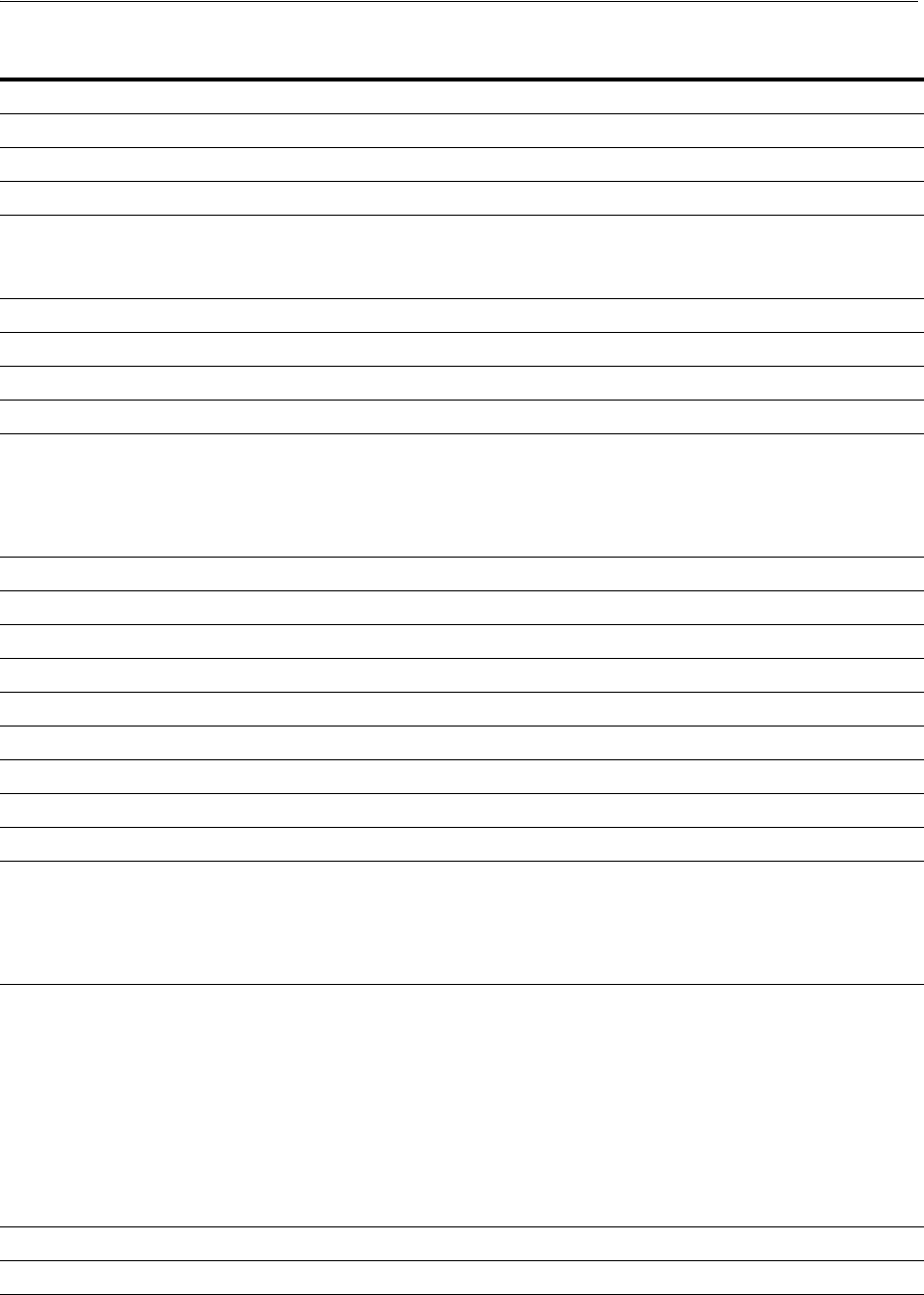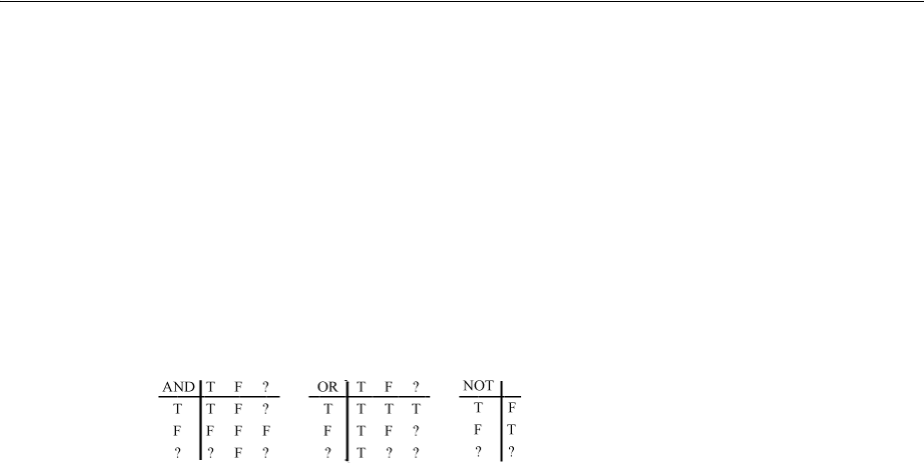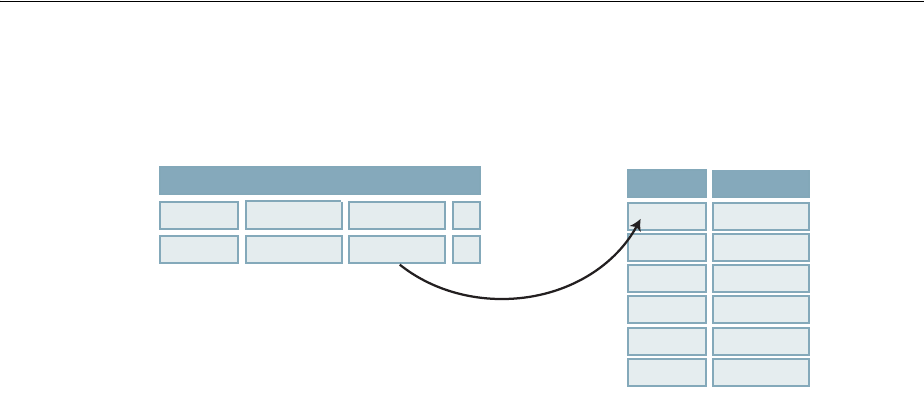
[1]
Oracle® TimesTen In-Memory Database
SQL Reference
Release 18.1
E61203-09
November 2020
Oracle TimesTen In-Memory Database SQL Reference, Release 18.1
E61203-09
Copyright © 2011, 2020, Oracle and/or its affiliates.
This software and related documentation are provided under a license agreement containing restrictions on
use and disclosure and are protected by intellectual property laws. Except as expressly permitted in your
license agreement or allowed by law, you may not use, copy, reproduce, translate, broadcast, modify, license,
transmit, distribute, exhibit, perform, publish, or display any part, in any form, or by any means. Reverse
engineering, disassembly, or decompilation of this software, unless required by law for interoperability, is
prohibited.
The information contained herein is subject to change without notice and is not warranted to be error-free. If
you find any errors, please report them to us in writing.
If this is software or related documentation that is delivered to the U.S. Government or anyone licensing it
on behalf of the U.S. Government, then the following notice is applicable:
U.S. GOVERNMENT END USERS: Oracle programs (including any operating system, integrated software,
any programs embedded, installed or activated on delivered hardware, and modifications of such
programs) and Oracle computer documentation or other Oracle data delivered to or accessed by U.S.
Government end users are "commercial computer software" or "commercial computer software
documentation" pursuant to the applicable Federal Acquisition Regulation and agency-specific
supplemental regulations. As such, the use, reproduction, duplication, release, display, disclosure,
modification, preparation of derivative works, and/or adaptation of i) Oracle programs (including any
operating system, integrated software, any programs embedded, installed or activated on delivered
hardware, and modifications of such programs), ii) Oracle computer documentation and/or iii) other Oracle
data, is subject to the rights and limitations specified in the license contained in the applicable contract. The
terms governing the U.S. Government's use of Oracle cloud services are defined by the applicable contract
for such services. No other rights are granted to the U.S. Government.
This software or hardware is developed for general use in a variety of information management
applications. It is not developed or intended for use in any inherently dangerous applications, including
applications that may create a risk of personal injury. If you use this software or hardware in dangerous
applications, then you shall be responsible to take all appropriate fail-safe, backup, redundancy, and other
measures to ensure its safe use. Oracle Corporation and its affiliates disclaim any liability for any damages
caused by use of this software or hardware in dangerous applications.
Oracle and Java are registered trademarks of Oracle and/or its affiliates. Other names may be trademarks of
their respective owners.
Intel and Intel Inside are trademarks or registered trademarks of Intel Corporation. All SPARC trademarks
are used under license and are trademarks or registered trademarks of SPARC International, Inc. AMD,
Epyc, and the AMD logo are trademarks or registered trademarks of Advanced Micro Devices. UNIX is a
registered trademark of The Open Group.
This software or hardware and documentation may provide access to or information about content,
products, and services from third parties. Oracle Corporation and its affiliates are not responsible for and
expressly disclaim all warranties of any kind with respect to third-party content, products, and services
unless otherwise set forth in an applicable agreement between you and Oracle. Oracle Corporation and its
affiliates will not be responsible for any loss, costs, or damages incurred due to your access to or use of
third-party content, products, or services, except as set forth in an applicable agreement between you and
Oracle.

iii
Contents
Preface ................................................................................................................................................................. xi
Audience....................................................................................................................................................... xi
Related documents...................................................................................................................................... xi
Conventions ................................................................................................................................................ xii
Documentation Accessibility................................................................................................................... xiii
What's New .................................................................................................................................................... xv
New features in Release 18.1.4.4.0 .......................................................................................................... xv
New features in Release 18.1.4.1.0 .......................................................................................................... xv
New features in Release 18.1.3.1.0 .......................................................................................................... xvi
New features in Release 18.1.2.1.0 .......................................................................................................... xvi
New features in Release 18.1.1.2.0 .......................................................................................................... xvi
New features in Release 18.1.1.1.0 .......................................................................................................... xvi
1 Data Types
Type specifications .................................................................................................................................. 1-2
ANSI SQL data types............................................................................................................................... 1-6
Types supported for backward compatibility ................................................................................... 1-7
Character data types................................................................................................................................. 1-8
CHAR................................................................................................................................................... 1-9
NCHAR ............................................................................................................................................ 1-10
VARCHAR2 ..................................................................................................................................... 1-10
NVARCHAR2.................................................................................................................................. 1-12
Numeric data types ............................................................................................................................... 1-12
NUMBER.......................................................................................................................................... 1-13
TT_BIGINT....................................................................................................................................... 1-15
TT_INTEGER ................................................................................................................................... 1-15
TT_SMALLINT................................................................................................................................ 1-16
TT_TINYINT.................................................................................................................................... 1-17
Floating-point numbers.................................................................................................................. 1-17
BINARY_DOUBLE .................................................................................................................. 1-17
BINARY_FLOAT...................................................................................................................... 1-18
FLOAT and FLOAT(n) ............................................................................................................ 1-18
BINARY and VARBINARY data types............................................................................................. 1-18
Numeric precedence ............................................................................................................................. 1-19
iv
LOB data types....................................................................................................................................... 1-19
BLOB ................................................................................................................................................. 1-20
CLOB................................................................................................................................................. 1-20
NCLOB ............................................................................................................................................. 1-21
Difference between NULL and empty LOBs .............................................................................. 1-21
Initializing LOBs.............................................................................................................................. 1-21
ROWID data type.................................................................................................................................. 1-22
Datetime data types .............................................................................................................................. 1-24
DATE................................................................................................................................................. 1-24
TIME.................................................................................................................................................. 1-24
TIMESTAMP.................................................................................................................................... 1-24
TT_DATE.......................................................................................................................................... 1-25
TT_TIMESTAMP............................................................................................................................. 1-25
TimesTen intervals ............................................................................................................................... 1-25
Using interval data types ............................................................................................................... 1-25
Using DATE and TIME data types............................................................................................... 1-25
Handling time zone conversions .................................................................................................. 1-26
Datetime and interval data types in arithmetic operations ...................................................... 1-26
Restrictions on datetime and interval arithmetic operations ................................................... 1-28
Storage requirements............................................................................................................................ 1-28
Data type comparison rules................................................................................................................. 1-30
Numeric values................................................................................................................................ 1-30
Date values....................................................................................................................................... 1-30
Character values.............................................................................................................................. 1-30
Binary and linguistic sorting .................................................................................................. 1-30
Blank-padded and nonpadded comparison semantics...................................................... 1-30
Data type conversion ............................................................................................................................ 1-31
Implicit data type conversion........................................................................................................ 1-31
Null values.............................................................................................................................................. 1-33
INF and NAN ......................................................................................................................................... 1-34
Constant values ............................................................................................................................... 1-34
Primary key values ......................................................................................................................... 1-34
Selecting Inf and NaN (floating-point conditions).....................................................................
1-35
Expressions involving Inf and NaN ............................................................................................. 1-35
Overflow and truncation...................................................................................................................... 1-36
Underflow............................................................................................................................................... 1-36
2 Names, Namespace and Parameters
Basic names................................................................................................................................................ 2-1
Owner names ............................................................................................................................................ 2-2
Compound identifiers ............................................................................................................................. 2-2
Namespace ................................................................................................................................................. 2-2
Dynamic parameters................................................................................................................................ 2-3
Duplicate parameter names.................................................................................................................... 2-3
Inferring data type from parameters .................................................................................................... 2-4
v
3 Expressions
Expression specification.......................................................................................................................... 3-2
Subqueries................................................................................................................................................. 3-6
Constants.................................................................................................................................................... 3-8
Format models........................................................................................................................................ 3-13
Number format models.................................................................................................................. 3-14
Datetime format models................................................................................................................. 3-17
Datetime format elements....................................................................................................... 3-17
Format model for ROUND and TRUNC date functions........................................................... 3-20
Format model for TO_CHAR of TimesTen datetime data types ............................................. 3-21
CASE expressions.................................................................................................................................. 3-23
ROWID pseudocolumn........................................................................................................................ 3-25
ROWNUM pseudocolumn .................................................................................................................. 3-26
Pseudocolumns in TimesTen Scaleout ............................................................................................ 3-27
4 Functions
Numeric functions.................................................................................................................................... 4-1
Bitwise functions...................................................................................................................................... 4-2
Character functions returning character values ................................................................................. 4-2
Character functions returning number values ................................................................................... 4-3
String functions ........................................................................................................................................ 4-3
LOB functions ........................................................................................................................................... 4-3
NLS character set functions.................................................................................................................... 4-3
General comparison functions............................................................................................................... 4-3
Null-related comparison functions....................................................................................................... 4-4
Conversion functions .............................................................................................................................. 4-4
Datetime functions................................................................................................................................... 4-4
Aggregate functions................................................................................................................................. 4-5
Analytic functions.................................................................................................................................... 4-5
SQL syntax .......................................................................................................................................... 4-6
Parameters........................................................................................................................................... 4-7
Encoding and decoding functions ........................................................................................................ 4-9
User and session functions..................................................................................................................... 4-9
Function in TimesTen Scaleout.......................................................................................................... 4-10
ABS........................................................................................................................................................... 4-11
ACOS ....................................................................................................................................................... 4-12
ADD_MONTHS .................................................................................................................................... 4-13
ASCIISTR ............................................................................................................................................... 4-15
ASIN ........................................................................................................................................................ 4-16
ATAN....................................................................................................................................................... 4-17
ATAN2..................................................................................................................................................... 4-18
AVG ......................................................................................................................................................... 4-19
BITAND .................................................................................................................................................. 4-20
BITNOT...................................................................................................................................................
4-21
BITOR...................................................................................................................................................... 4-22
BITXOR ................................................................................................................................................... 4-23
vi
CAST........................................................................................................................................................ 4-24
CHR.......................................................................................................................................................... 4-25
CEIL.......................................................................................................................................................... 4-26
COALESCE............................................................................................................................................. 4-27
CONCAT................................................................................................................................................. 4-28
COS .......................................................................................................................................................... 4-30
COSH....................................................................................................................................................... 4-31
COUNT.................................................................................................................................................... 4-32
CURRENT_USER.................................................................................................................................. 4-34
DECODE ................................................................................................................................................. 4-35
DENSE_RANK ...................................................................................................................................... 4-36
ELEMENTIDCOMPUTE .................................................................................................................... 4-37
EMPTY_BLOB........................................................................................................................................ 4-40
EMPTY_CLOB ....................................................................................................................................... 4-41
EXP ........................................................................................................................................................... 4-42
EXTRACT................................................................................................................................................ 4-43
FIRST_VALUE....................................................................................................................................... 4-44
FLOOR..................................................................................................................................................... 4-45
GREATEST............................................................................................................................................. 4-46
GROUP_ID............................................................................................................................................. 4-48
GROUPING............................................................................................................................................ 4-49
GROUPING_ID..................................................................................................................................... 4-51
INSTR, INSTRB, INSTR4.................................................................................................................... 4-53
LAST_VALUE........................................................................................................................................ 4-54
LEAST...................................................................................................................................................... 4-55
LENGTH, LENGTHB, LENGTH4...................................................................................................... 4-57
LN ............................................................................................................................................................. 4-58
LOG.......................................................................................................................................................... 4-59
LOWER and UPPER.............................................................................................................................. 4-60
LPAD........................................................................................................................................................ 4-61
LTRIM ..................................................................................................................................................... 4-63
MAX ......................................................................................................................................................... 4-65
MIN .......................................................................................................................................................... 4-66
MOD ........................................................................................................................................................ 4-68
MONTHS_BETWEEN.......................................................................................................................... 4-69
NCHR ...................................................................................................................................................... 4-71
NLS_CHARSET_ID.............................................................................................................................. 4-72
NLS_CHARSET_NAME...................................................................................................................... 4-73
NLSSORT ............................................................................................................................................... 4-74
NULLIF.................................................................................................................................................... 4-76
NUMTODSINTERVAL ....................................................................................................................... 4-78
NUMTOYMINTERVAL ...................................................................................................................... 4-79
NVL.......................................................................................................................................................... 4-80
POWER.................................................................................................................................................... 4-82
RANK ...................................................................................................................................................... 4-83
REPLACE ................................................................................................................................................ 4-84
ROUND (date) ....................................................................................................................................... 4-85
vii
ROUND (expression)............................................................................................................................ 4-86
ROW_NUMBER .................................................................................................................................... 4-87
RPAD ....................................................................................................................................................... 4-88
RTRIM..................................................................................................................................................... 4-90
SESSION_USER.................................................................................................................................... 4-92
SIGN ........................................................................................................................................................ 4-93
SIN............................................................................................................................................................ 4-95
SINH ........................................................................................................................................................ 4-96
SOUNDEX .............................................................................................................................................. 4-97
SQRT ....................................................................................................................................................... 4-99
SUBSTR, SUBSTRB, SUBSTR4........................................................................................................ 4-100
SUM ....................................................................................................................................................... 4-101
SYS_CONTEXT ................................................................................................................................... 4-103
SYSDATE and GETDATE................................................................................................................. 4-106
SYSTEM_USER ................................................................................................................................... 4-108
TAN........................................................................................................................................................ 4-109
TANH .................................................................................................................................................... 4-110
TIMESTAMPADD.............................................................................................................................. 4-111
TIMESTAMPDIFF .............................................................................................................................. 4-113
TO_BLOB.............................................................................................................................................. 4-116
TO_CHAR............................................................................................................................................. 4-117
TO_CLOB.............................................................................................................................................. 4-119
TO_DATE ............................................................................................................................................. 4-120
TO_TIMESTAMP................................................................................................................................ 4-121
TO_LOB ................................................................................................................................................ 4-125
TO_NCLOB .......................................................................................................................................... 4-126
TO_NUMBER ...................................................................................................................................... 4-127
TRIM...................................................................................................................................................... 4-128
TRUNC (date)....................................................................................................................................... 4-130
TRUNC (expression)........................................................................................................................... 4-131
TT_HASH ............................................................................................................................................. 4-132
UID......................................................................................................................................................... 4-133
UNISTR................................................................................................................................................. 4-134
USER ...................................................................................................................................................... 4-135
VSIZE..................................................................................................................................................... 4-136
5 Search Conditions
Search condition general syntax............................................................................................................ 5-2
ALL / NOT IN predicate (subquery)..................................................................................................... 5-4
ALL / NOT IN predicate (value list) ..................................................................................................... 5-6
ANY / IN predicate (subquery).............................................................................................................. 5-8
ANY / IN predicate (value list) ........................................................................................................... 5-10
BETWEEN predicate............................................................................................................................. 5-14
Comparison predicate........................................................................................................................... 5-15
EXISTS predicate................................................................................................................................... 5-17
IS INFINITE predicate ......................................................................................................................... 5-19
IS NAN predicate .................................................................................................................................. 5-20
viii
IS NULL predicate................................................................................................................................. 5-21
LIKE predicate ....................................................................................................................................... 5-22
Pattern matching for strings of NCHAR, NVARCHAR2, and NCLOB data types .............. 5-26
6 SQL Statements
Summary of SQL statements supported in TimesTen...................................................................... 6-2
Comments within SQL statements ....................................................................................................... 6-5
Optimizer hints......................................................................................................................................... 6-6
Statement level optimizer hints ............................................................................................................ 6-8
Optimizer hints supported in TimesTen Scaleout only ................................................................ 6-26
TT_GridQueryExec optimizer hint............................................................................................... 6-27
TT_PartialResult optimizer hint.................................................................................................... 6-28
TT_CommitDMLOnSuccess optimizer hint................................................................................ 6-29
ALTER ACTIVE STANDBY PAIR .................................................................................................... 6-37
ALTER CACHE GROUP...................................................................................................................... 6-41
ALTER FUNCTION.............................................................................................................................. 6-44
ALTER PACKAGE................................................................................................................................ 6-46
ALTER PROCEDURE........................................................................................................................... 6-48
ALTER PROFILE................................................................................................................................... 6-50
ALTER REPLICATION........................................................................................................................ 6-55
ALTER SEQUENCE.............................................................................................................................. 6-65
ALTER SESSION .................................................................................................................................. 6-66
ALTER TABLE....................................................................................................................................... 6-74
ALTER USER ....................................................................................................................................... 6-101
CALL ...................................................................................................................................................... 6-105
COMMIT .............................................................................................................................................. 6-107
CREATE ACTIVE STANDBY PAIR ............................................................................................... 6-109
CREATE CACHE GROUP................................................................................................................. 6-115
CREATE FUNCTION ......................................................................................................................... 6-127
CREATE INDEX .................................................................................................................................. 6-132
CREATE MATERIALIZED VIEW ................................................................................................... 6-138
CREATE PACKAGE........................................................................................................................... 6-144
CREATE PACKAGE BODY.............................................................................................................. 6-150
CREATE PROCEDURE...................................................................................................................... 6-151
CREATE PROFILE
.............................................................................................................................. 6-158
CREATE REPLICATION................................................................................................................... 6-167
CHECK CONFLICTS.................................................................................................................... 6-174
CREATE SEQUENCE ......................................................................................................................... 6-181
CREATE SYNONYM.......................................................................................................................... 6-186
CREATE TABLE .................................................................................................................................. 6-190
CREATE USER..................................................................................................................................... 6-225
CREATE VIEW .................................................................................................................................... 6-229
DELETE ................................................................................................................................................. 6-231
DROP ACTIVE STANDBY PAIR.................................................................................................... 6-234
DROP CACHE GROUP ..................................................................................................................... 6-235
DROP FUNCTION ............................................................................................................................. 6-237
DROP INDEX....................................................................................................................................... 6-238
ix
DROP MATERIALIZED VIEW........................................................................................................ 6-240
DROP PACKAGE [BODY]................................................................................................................ 6-241
DROP PROCEDURE .......................................................................................................................... 6-243
DROP PROFILE................................................................................................................................... 6-244
DROP REPLICATION ....................................................................................................................... 6-246
DROP SEQUENCE ............................................................................................................................. 6-247
DROP SYNONYM .............................................................................................................................. 6-248
DROP TABLE....................................................................................................................................... 6-250
DROP USER......................................................................................................................................... 6-252
DROP VIEW......................................................................................................................................... 6-253
FLUSH CACHE GROUP.................................................................................................................... 6-254
GRANT.................................................................................................................................................. 6-256
INSERT.................................................................................................................................................. 6-258
INSERT...SELECT ............................................................................................................................... 6-261
LOAD CACHE GROUP..................................................................................................................... 6-263
MERGE.................................................................................................................................................. 6-267
REFRESH CACHE GROUP .............................................................................................................. 6-271
REVOKE................................................................................................................................................ 6-275
ROLLBACK .......................................................................................................................................... 6-277
SELECT.................................................................................................................................................. 6-278
WithClause..................................................................................................................................... 6-288
SelectList......................................................................................................................................... 6-290
TableSpec........................................................................................................................................ 6-293
JoinedTable..................................................................................................................................... 6-294
DerivedTable.................................................................................................................................. 6-297
GROUP BY clause ......................................................................................................................... 6-298
SQL syntax .............................................................................................................................. 6-298
Parameters............................................................................................................................... 6-298
Examples ................................................................................................................................. 6-299
ROLLUP, CUBE and GROUPING SETS clauses...............................................................
6-300
GROUPING SETS ........................................................................................................... 6-300
ROLLUP ........................................................................................................................... 6-301
CUBE ................................................................................................................................ 6-303
TRUNCATE TABLE ........................................................................................................................... 6-305
UNLOAD CACHE GROUP .............................................................................................................. 6-307
UPDATE................................................................................................................................................ 6-310
Join update ..................................................................................................................................... 6-315
7 Privileges
System privileges ..................................................................................................................................... 7-1
Object privileges ...................................................................................................................................... 7-3
Privilege hierarchy ................................................................................................................................... 7-4
The PUBLIC role....................................................................................................................................... 7-5
8 Reserved Words
Index
x

xi
Preface
Oracle TimesTen In-Memory Database (TimesTen) is a relational database that is
memory-optimized for fast response and throughput. The database resides entirely in
memory at runtime and is persisted to the file system.
■ Oracle TimesTen In-Memory Database in classic mode, or TimesTen Classic, refers
to single-instance and replicated databases (as in previous releases).
■ Oracle TimesTen In-Memory Database in grid mode, or TimesTen Scaleout, refers
to a multiple-instance distributed database. TimesTen Scaleout is a grid of
interconnected hosts running instances that work together to provide fast access,
fault tolerance, and high availability for in-memory data.
■ TimesTen alone refers to both classic and grid modes (such as in references to
TimesTen utilities, releases, distributions, installations, actions taken by the
database, and functionality within the database).
■ TimesTen Application-Tier Database Cache, or TimesTen Cache, is an Oracle
Database Enterprise Edition option. TimesTen Cache is ideal for caching
performance-critical subsets of an Oracle database into cache tables within a
TimesTen database for improved response time in the application tier. Cache tables
can be read-only or updatable. Applications read and update the cache tables
using standard Structured Query Language (SQL) while data synchronization
between the TimesTen database and the Oracle database is performed
automatically. TimesTen Cache offers all of the functionality and performance of
TimesTen Classic, plus the additional functionality for caching Oracle Database
tables.
■ TimesTen Replication features, available with TimesTen Classic or TimesTen
Cache, enable high availability.
TimesTen supports standard application interfaces JDBC, ODBC, and ODP.NET;
Oracle interfaces PL/SQL, OCI, and Pro*C/C++; and the TimesTen TTClasses library
for C++.
Audience
This document provides a reference for TimesTen SQL data types, statements,
expressions, functions, including TimesTen SQL extensions.
To work with this guide, you should understand how database systems work. You
should also have knowledge of SQL (Structured Query Language).
Related documents
TimesTen documentation is available at:

xii
https://docs.oracle.com/database/timesten-18.1
Oracle Database documentation is also available on the Oracle documentation website.
This may be especially useful for Oracle Database features that TimesTen supports but
does not attempt to fully document.
Conventions
TimesTen supports multiple platforms. Unless otherwise indicated, the information in
this guide applies to all supported platforms. The term Windows refers to all
supported Windows platforms. The term UNIX applies to all supported UNIX
platforms. The term Linux is used separately. Refer to "Platforms and compilers" in
Oracle TimesTen In-Memory Database Release Notes (
README.html
) in your installation
directory for specific platform versions supported by TimesTen.
This document uses the following text conventions:
TimesTen documentation uses these variables to identify path, file and user names:
Note: In TimesTen documentation, the terms "data store" and
"database" are equivalent. Both terms refer to the TimesTen database.
Convention Meaning
boldface Boldface type indicates graphical user interface elements associated
with an action, or terms defined in text or the glossary.
italic Italic type indicates book titles, emphasis, or placeholder variables for
which you supply particular values.
monospace
Monospace type indicates commands within a paragraph, URLs, code
in examples, text that appears on the screen, or text that you enter.
italic monospace
Italic monospace type indicates a placeholder or a variable in a code
example for which you specify or use a particular value. For example:
LIBS = -Ltimesten_home/install/lib -ltten
Replace
timesten_home
with the path to the TimesTen instance home
directory.
[ ] Square brackets indicate that an item in a command line is optional.
{ } Curly braces indicated that you must choose one of the items separated
by a vertical bar ( | ) in a command line.
| A vertical bar (or pipe) separates alternative arguments.
. . . An ellipsis (. . .) after an argument indicates that you may use more
than one argument on a single command line.
% or $ The percent sign or dollar sign indicates the UNIX shell prompt,
depending on the shell that is used.
# The number (or pound) sign indicates the UNIX root prompt.
Convention Meaning
installation_dir
The path that represents the directory where the current release of
TimesTen is installed.
timesten_home
The path that represents the home directory of a TimesTen instance.

xiii
Documentation Accessibility
For information about Oracle's commitment to accessibility, visit the Oracle
Accessibility Program website at
http://www.oracle.com/pls/topic/lookup?ctx=acc&id=docacc
.
Access to Oracle Support
Oracle customers that have purchased support have access to electronic support
through My Oracle Support. For information, visit
http://www.oracle.com/pls/topic/lookup?ctx=acc&id=info
or visit
http://www.oracle.com/pls/topic/lookup?ctx=acc&id=trs
if you are hearing
impaired.
release
or
rr
The first two parts in a release number, with or without dots. The first
two parts of a release number represent a major TimesTen release. For
example, 181 or 18.1 represents TimesTen Release 18.1.
DSN
The data source name.
Convention Meaning
xiv

xv
What's New
This section summarizes the new features of Oracle TimesTen In-Memory Database
Release 18.1 that are documented in this guide. It provides links to more information.
New features in Release 18.1.4.4.0
■ The
CREATE
PROFILE
statement creates a profile, which is a set of limits on database
resources. See "CREATE PROFILE" on page 6-158 for details.
■ The
ALTER
PROFILE
statement adds, modifies, or removes a password parameter in
a profile. See "ALTER PROFILE" on page 6-50 for details.
■ The
DROP
PROFILE
statement drops a profile. See "DROP PROFILE" on page 6-244
for information.
■ These clauses have been added to the
CREATE
USER
and the
ALTER
USER
statements:
–
PROFILE
–
ACCOUNT
LOCK
and
ACCOUNT
UNLOCK
–
PASSWORD
EXPIRE
See "CREATE USER" on page 6-225 and "ALTER USER" on page 6-101 for
information on these clauses.
New features in Release 18.1.4.1.0
■ The
VSIZE
function is a scalar function that returns the number of bytes in the
internal representation of an expression. See "VSIZE" on page 4-136 for
information.
■ The
CURRENT_SCHEMA
parameter has been added to the
SYS_CONTEXT
function. See
"SYS_CONTEXT" on page 4-103 for more information.
■ The
TO_TIMESTAMP
is a datetime function that converts a
CHAR
or
VARCHAR2
data
type to a value of
TIMESTAMP
data type. See "TO_TIMESTAMP" on page 4-121 for
details.
■ The accessibility clause has been added to the
CREATE
FUNCTION
,
CREATE
PROCEDURE
,
and
CREATE
PACKAGE
statements. See "CREATE FUNCTION" on page 6-127 or
"CREATE PROCEDURE" on page 6-151 or "CREATE PACKAGE" on page 6-144 for
details.
xvi
New features in Release 18.1.3.1.0
■ The
ACTION
,
CLIENT_INFO
, and
MODULE
parameters have been added to the
SYS_
CONTEXT
function. See "SYS_CONTEXT" on page 4-103 for more information.
■ These scalar functions are supported:
–
ACOS
: See "ACOS" on page 4-12 for information.
–
ASIN
: See "ASIN" on page 4-16 for information.
–
ATAN
: See "ATAN" on page 4-17 for information.
–
ATAN2
: See "ATAN2" on page 4-18 for information.
–
COS
: See "COS" on page 4-30 for information.
–
COSH
: See "COSH" on page 4-31 for information.
–
EXP
: See "EXP" on page 4-42 for information.
–
LN
: See "LN" on page 4-58 for information.
–
LOG
: See "LOG" on page 4-59 for information.
–
SIN
: See "SIN" on page 4-95 for information.
–
SINH
: See "SINH" on page 4-96 for information.
–
TAN
: See "TAN" on page 4-109 for information.
–
TANH
: See "TANH" on page 4-110 for information.
■ The syntax for table name in the
SELECT
statement allows optional parenthesis.
This is also true for the
SELECT
clause of the
INSERT...SELECT
and
CREATE
TABLE
AS
SELECT
statements. See "TableSpec" on page 6-293 for details.
New features in Release 18.1.2.1.0
You can use the
PLSQL_SESSION_CACHED_CURSORS
clause in the
ALTER
SESSION
statement to specify the number of session cursors to cache. See "ALTER SESSION" on
page 6-66 for details.
New features in Release 18.1.1.2.0
In TimesTen Scaleout, you can specify the
TT_DMLCommitOnSuccess
hint to enable or
disable a commit operation as part of DML execution. See "TT_
CommitDMLOnSuccess optimizer hint" on page 6-29 for more information. Also see
"Using the TT_CommitDMLOnSuccess hint" in the Oracle TimesTen In-Memory Database
Scaleout User's Guide.
New features in Release 18.1.1.1.0
■ TimesTen Scaleout enables you to distribute data across instances in the grid in a
highly available manner. There are three distribution schemes used for tables to
distribute data:
–
DISTRIBUTE
BY
HASH
–
DISTRIBUTE
BY
REFERENCE
–
DUPLICATE
See "CREATE TABLE" on page 6-190 for more information.
xvii
■ There are considerations when you
ALTER
a table in TimesTen Scaleout. See
"ALTER TABLE" on page 6-74 for more information.
■ The
DISTRIBUTE
BY
HASH
clause is supported in the
CREATE
MATERIALIZED
VIEW
statement in TimesTen Scaleout. See "CREATE MATERIALIZED VIEW" on
page 6-138 for more information.
■ The
ALTER
SEQUENCE
statement and the
BATCH
clause of the
CREATE
SEQUENCE
statement are supported in TimesTen Scaleout. See "CREATE SEQUENCE" on
page 6-181 and "ALTER SEQUENCE" on page 6-65 for more information.
■ The
TT_GridQueryExecute
and
TT_PartialResult
optimizer hints are supported
in TimesTen Scaleout. See "TT_GridQueryExec optimizer hint" on page 6-27 and
"TT_PartialResult optimizer hint" on page 6-28 for more information.
■ There are
ROWID
changes for TimesTen Scaleout. See "ROWID pseudocolumn" on
page 3-25 for more information.
■ The
elementId#
,
replicaSetId#
, and
dataspaceId#
pseudocolumns are
supported in TimesTen Scaleout. See "Pseudocolumns in TimesTen Scaleout" on
page 3-27.
■ The
elementIdCompute
function is supported in TimesTen Scaleout. See
"ELEMENTIDCOMPUTE" on page 4-37 for more information.
■ The SQL statements that are supported in TimesTen are summarized in table
format. See "Summary of SQL statements supported in TimesTen" on page 6-2 for
more information.
■ Bitwise functions are supported. See "Bitwise functions" on page 4-2 for more
information.
■ The return result type for the
COUNT
and
SUM
(integer data types) aggregate
functions have been changed from
TT_INTEGER
to
TT_BIGINT
. See "COUNT" on
page 4-32 and "SUM" on page 4-101 for more information.
■
COLUMNAR
and
DISTRIBUTE
are reserved words. See Chapter 8, "Reserved Words"
for more information.
xviii

1
Data Types 1-1
1
Data Types
A data type defines a set of values. A reference to a data type specifies the set of values
that can occur in a given context. A data type is associated with each value retrieved
from a table or computed in an expression and each constant.
TimesTen follows the ODBC standard for type conversion. For more information, refer
to ODBC API reference documentation, which is available from Microsoft or a variety
of third parties. The following site contains Microsoft's ODBC API reference
documentation:
https://msdn.microsoft.com/en-us/library/ms714562(VS.85).aspx
If you are using TimesTen Cache, see "Mappings between Oracle Database and
TimesTen data types" in Oracle TimesTen Application-Tier Database Cache User's Guide.
This section compares valid data types for creating cache group columns and type
conversions for passthrough queries.
The following subjects describe data types in TimesTen:
■ Type specifications
■ ANSI SQL data types
■ Types supported for backward compatibility
■ Character data types
■ Numeric data types
■ BINARY and VARBINARY data types
■ Numeric precedence
■ LOB data types
■ ROWID data type
■ Datetime data types
■ TimesTen intervals
■ Storage requirements
■ Data type comparison rules
■ Data type conversion
■ Null values
■ INF and NAN
■ Overflow and truncation
■ Underflow

Type specifications
1-2 Oracle TimesTen In-Memory Database SQL Reference
Type specifications
Table 1–1, " Supported data types" shows the supported data types in TimesTen.
Table 1–1 Supported data types
Data type Description
BINARY(n)
Fixed-length binary value of
n
bytes
Legal values for
n
range from 1 to 8300.
BINARY
data is padded to
the maximum column size with trailing zeroes. Alternatively,
specify
TT_BINARY(n)
.
See "BINARY and VARBINARY data types" on page 1-18 for
details.
BINARY_DOUBLE
A 64-bit floating-point number
BINARY_DOUBLE
is a double-precision native floating point number
that supports
+Inf
,
-Inf
, and
NaN
values.
BINARY_DOUBLE
is an
approximate numeric value consisting of an exponent and
mantissa. You can use exponential or E-notation.
BINARY_DOUBLE
has binary precision 53.
Minimum positive finite value: 2.22507485850720E-308
Maximum positive finite value: 1.79769313486231E+308
See "BINARY_DOUBLE" on page 1-17 for details.
BINARY_FLOAT
A 32-bit floating-point number
BINARY_FLOAT
is a single-precision native floating-point type that
supports
+Inf
,
-Inf
, and
NaN
values.
BINARY_FLOAT
is an
approximate numeric value consisting of an exponent and
mantissa. You can use exponential or E-notation.
BINARY_FLOAT
has binary precision 24.
Minimum positive finite value: 1.17549E-38F
Maximum positive finite value: 3.40282E+38F
See "BINARY_FLOAT" on page 1-18 for details.
BLOB
A variable-length binary large object.
The valid range is from 1 to 16,777,216 bytes.
See "BLOB" on page 1-20 for details.
CHAR[ACTER][(n[BYTE|CHAR])]
Fixed-length character string of length
n
bytes or
n
characters.
BYTE
indicates that the column has byte-length semantics. The
valid values for
n
range from a minimum of one byte to a
maximum of 8300 bytes.
CHAR
indicates that the column has character-length semantics. The
minimum
CHAR
length is one character. The maximum
CHAR
length
depends on how many characters fit in 8300 bytes. This is
determined by the database character set in use. For character set
AL32UTF8
, up to four bytes per character may be needed, so the
CHAR
length limit ranges from 2075 to 8300 depending on the
character set.
If you do not specify
BYTE
or
CHAR
, the default is
BYTE
. If you do
not specify
n
, the default is 1.
A zero-length string is interpreted as
NULL
.
CHAR
data is padded to the maximum column size with trailing
blanks. Blank-padded comparison semantics are used.
See "CHAR" on page 1-9 for details.

Type specifications
Data Types 1-3
CLOB
A variable-length character large object containing single-byte or
multibyte characters.
The valid range is from 1 to 4,194,304 bytes of data depending on
the database character set. Specifically, the maximum size of a
CLOB
is stated in bytes (4,194,304 bytes), but the
CLOB
data type stores
characters. Depending on the database character set and the actual
characters being stored, the
CLOB
data type can store between
1,048,576 characters and 4,194,304 characters.
See "CLOB" on page 1-20 for details.
DATE
Date and time information: century, year, month, day, hour,
minute, and second
Format is:
YYYY-MM-DD HHMISS
.
Valid date range is from January 1, 4712 BC to December 31, 9999
AD.
There are no fractional seconds.
See "DATE" on page 1-24 for details.
INTERVAL [+/-] IntervalQualifier
Interval type
TimesTen partially supports interval types, expressed with the
type
INTERVAL
and an
IntervalQualifier
. An
IntervalQualifier
can only specify a single field type with no precision. The default
leading precision is eight digits for all interval types. The single
field type can be: year, month, day, hour, minute, or second.
Currently, interval types can be specified only with a constant.
Note: You cannot specify a column of an interval type. These are
non-persistent types used in SQL expressions at runtime. In
addition, for those comparisons where an interval data type is
returned, the interval data type cannot be the final result of a
complete expression. The
EXTRACT
function must be used to extract
the desired component of this interval result.
See "TimesTen intervals" on page 1-25 for details.
NCHAR[(n)]
Fixed-length string of
n
two-byte Unicode characters
The number of bytes required is 2*
n
where
n
is the specified
number of characters.
NCHAR
character limits are half the byte
limits so the maximum size is 4150.
A zero-length string is interpreted as
NULL
.
NCHAR
data is padded to the maximum column size with
U+0020
SPACE
. Blank-padded comparison semantics are used.
See "NCHAR" on page 1-10 for details.
NCLOB
A national variable-length character large object containing
Unicode characters.
The valid range is from 1 to 2,097,152 characters.
See "NCLOB" on page 1-21 for details.
Table 1–1 (Cont.) Supported data types
Data type Description

Type specifications
1-4 Oracle TimesTen In-Memory Database SQL Reference
NUMBER[(p
[,s])]
Number having precision and scale.
The precision ranges from 1 to 38 decimal. The scale ranges from
-84 to 127. Both precision and scale are optional.
If you do not specify a precision or a scale, TimesTen assumes the
maximum precision of 38 and flexible scale.
NUMBER
supports negative scale and scale greater than precision.
NUMBER
stores both zero and positive and negative fixed numbers
with absolute values from 1.0 x 10
-130
to (but not including) 1.0 x
10
126
. If you specify an arithmetic expression whose value has an
absolute value greater than or equal to 1.0 x 10
126
, then TimesTen
returns an error.
See "NUMBER" on page 1-13 for details.
NVARCHAR2(n)
Variable-length string of
n
two-byte Unicode characters.
The number of bytes required is 2*
n
where
n
is the specified
number of characters.
NVARCHAR2
character limits are half the byte
limits.
The valid range is from 1 to 2,097,152 characters.
You must specify
n
.
A zero-length string is interpreted as
NULL
.
Nonpadded comparison semantics are used.
See "NVARCHAR2" on page 1-12 for details.
ROWID
An 18-byte character string that represents the address of a table
row or materialized view row in TimesTen Classic.
Specify a literal
ROWID
value as a
CHAR
constant enclosed in single
quotes.
See "ROWID data type" on page 1-22 for details.
TIME
A time of day between 00:00:00 (midnight) and 23:59:59 (11:59:59
pm), inclusive
The format is:
HH:MI:SS
.
Alternatively, specify
TT_TIME
.
See "TIME" on page 1-24 for details.
TIMESTAMP
[(fractional_seconds_precision)]
Year, month, and day values of the date plus hour, minute, and
second values of the time
The
fractional_seconds_precision
is the number of digits in the
fractional part of the seconds field. Valid date range is from
January 1, 4712 BC to December 31, 9999 AD.
TT_TIMESTAMP
has a smaller storage size than
TIMESTAMP
.
TT_
TIMESTAMP
is faster than
TIMESTAMP
because
TT_TIMESTAMP
is an
eight-byte integer containing the number of microseconds since
January 1, 1753. Comparisons are very fast.
TIMESTAMP
has a larger
range than
TT_TIMESTAMP
in that
TIMESTAMP
can store date and
time data as far back as 4712 BC.
TIMESTAMP
also supports up to
nine digits of fractional second precision whereas
TT_TIMESTAMP
supports six digits of fractional second precision.
The fractional seconds precision range is 0 to 9. The default is 6.
Format is:
YYYY-MM-DD HH:MI:SS [.FFFFFFFFF]
See "TIMESTAMP" on page 1-24 for details.
Table 1–1 (Cont.) Supported data types
Data type Description

Type specifications
Data Types 1-5
TT_BIGINT
A signed eight-byte integer in the range -9,223,372,036,854,775,808
to 9,223,372,036,854,775,807.
Use
TT_BIGINT
rather than the
NUMBER
data type.
TT_BIGINT
is
more compact and offers faster performance than the
NUMBER
type.
If you need to store greater than 19-digit integers, use
NUMBER(p)
where
p
> 19.
See "TT_BIGINT" on page 1-15 for details.
TT_DATE
Date information: century, year, month, and day
The format is
YYYY-MM-DD
, where
MM
is expressed as an integer such
as 2006-10-28.
Valid dates are between 1753-01-01 (January 1, 1753) and
9999-12-31 (December 31, 9999).
See "TT_DATE" on page 1-25 for details.
TT_INTEGER
A signed integer in the range -2,147,483,648 to 2,147,483,647.
TT_INTEGER
is a native signed integer data type. Use
TT_INTEGER
rather than
INTEGER
.
INTEGER
maps to the
NUMBER
data type.
TT_
INTEGER
is more compact and offers faster performance than the
NUMBER
type. If you need to store greater than 19-digit integers, use
NUMBER(p)
where
p
> 19.
See "TT_INTEGER" on page 1-15 for details.
TT_SMALLINT
A native signed 16-bit integer in the range -32,768 to 32,767.
Use
TT_SMALLINT
rather than
SMALLINT
.
SMALLINT
maps to the
NUMBER
data type.
TT_SMALLINT
is more compact and offers faster performance than
the
NUMBER
type. If you need to store greater than 19-digit integers,
use
NUMBER(p)
where
p
> 19.
See "TT_SMALLINT" on page 1-16 for details.
TT_TIMESTAMP
A date and time between 1753-01-01 00:00:00 (midnight on January
1, 1753) and 9999-12-31 23:59:59 pm (11:59:59 pm on December 31,
9999), inclusive
Any values for the fraction not specified in full microseconds
result in a "
Data Truncated
" error. The format is
YYYY-MM-DD
HH:MI:SS [.FFFFFFFFF]
.
TT_TIMESTAMP
has a smaller storage size than
TIMESTAMP
and is
faster than
TIMESTAMP
because
TT_TIMESTAMP
is an eight-byte
integer containing the number of microseconds since January 1,
1753. Comparisons are very fast.
TIMESTAMP
has a larger range than
TT_TIMESTAMP
in that
TIMESTAMP
can store date and time data as far
back as 4712 BC.
TIMESTAMP
also supports up to nine digits of
fractional second precision whereas
TT_TIMESTAMP
supports six
digits of fractional second precision.
You can specify
TT_TIMESTAMP(6)
.
See "TT_TIMESTAMP" on page 1-25 for details.
Table 1–1 (Cont.) Supported data types
Data type Description

ANSI SQL data types
1-6 Oracle TimesTen In-Memory Database SQL Reference
ANSI SQL data types
TimesTen supports ANSI SQL data types. These data types are converted to TimesTen
data types with data stored as TimesTen data types. Table 1–2 shows how the ANSI
SQL data types are mapped to TimesTen data types.
TT_TINYINT
Unsigned integer ranging from 0 to 255.
Use
TT_TINYINT
rather than the
NUMBER
data type.
TT_TINYINT
is
more compact and offers faster performance than the
NUMBER
type.
If you need to store greater than 19-digit integers, use
NUMBER(p)
where
p
> 19.
Since
TT_TINYINT
is unsigned, the negation of a
TT_TINYINT
is a
TT_SMALLINT
.
See "TT_TINYINT" on page 1-17 for details.
VARBINARY(n)
Variable-length binary value with length
n
bytes.
The valid range is from 1 to 4,194,304 bytes.
Alternatively, specify
TT_VARBINARY(n)
.
See "BINARY and VARBINARY data types" on page 1-18 for
details.
VARCHAR[2](n[BYTE|CHAR])
Variable-length character string with a length of
n
bytes or
n
characters.
BYTE
indicates that the column has byte-length semantics.
CHAR
indicates that the column has character-length semantics.
For byte-length semantics, the valid range is from 1 to 4,194,304
bytes.
For character-length semantics, the valid range is from 1 to
1,048,576 characters.
If you do not specify
BYTE
or
CHAR
, the default is
BYTE
. You must
specify a value for
n
.
A zero-length string is interpreted as
NULL
.
Nonpadded comparison semantics are used.
Do not use the
VARCHAR
type. Although it is currently synonymous
with
VARCHAR2
, the
VARCHAR
type is scheduled to be redefined.
See "VARCHAR2" on page 1-10 for details.
Table 1–1 (Cont.) Supported data types
Data type Description

Types supported for backward compatibility
Data Types 1-7
Types supported for backward compatibility
TimesTen supports the data types shown in Table 1–3.
Table 1–2 Data type mapping: ANSI SQL to TImesTen
ANSI SQL data type TimesTen data type
CHARACTER VARYING(n[BYTE|CHAR])
or
CHAR VARYING(n[BYTE|CHAR])
VARCHAR2(n[BYTE|CHAR])
Character semantics is supported.
DOUBLE [PRECISION] NUMBER
Floating-point number with a binary precision of 126.
Alternatively, specify
FLOAT(126)
.
FLOAT[(b)] NUMBER
Floating-point number with binary precision
b
.
Acceptable values for
b
are between 1 and 126 (binary
digits).
FLOAT
is an exact numeric type. Use
FLOAT
to define a
column with a floated scale and a specified precision. A
floated scale is supported with the
NUMBER
type, but you
cannot specify the precision. A lower precision requires
less space, so because you can specify a precision with
FLOAT
, it may be more desirable than
NUMBER
. If you do
not specify
b
, then the default precision is 126 binary (38
decimal).
BINARY_FLOAT
and
BINARY_DOUBLE
are inexact numeric
types and are therefore different floating types than
FLOAT
. In addition, the semantics are different between
FLOAT
and
BINARY_FLOAT
/
BINARY_DOUBLE
because
BINARY_FLOAT
and
BINARY_DOUBLE
conform to the IEEE
standard.
Internally,
FLOAT
is implemented as type
NUMBER
.
INT[EGER]
NUMBER(38,0)
TT_INTEGER
is a native 32-bit integer type. Use
TT_
INTEGER
, as this data type is more compact and offers
faster performance than the
NUMBER
type.
NATIONAL CHARACTER(n)
or
NATIONAL CHAR(n)
NCHAR(n)
NATIONAL CHARACTER VARYING(n)
or
NATIONAL CHAR VARYING(n)
or
NCHAR VARYING(n)
NVARCHAR2(n)
NUMERIC[(p[,s])]
or
DEC[IMAL][(p[,s])]
NUMBER(p,s)
Specifies a fixed-point number with precision
p
and
scale
s.
This can only be used for fixed-point numbers.
If no scale is specified,
s
defaults to 0.
REAL NUMBER
Floating-point number with a binary precision of 63.
Alternatively, specify
FLOAT(63)
.
SMALLINT NUMBER(38,0)
TT_SMALLINT
is a native signed integer data type. Using
TT_SMALLINT
is more compact and offers faster
performance than the
NUMBER
type.

Character data types
1-8 Oracle TimesTen In-Memory Database SQL Reference
Character data types
Character data types store character (alphanumeric) data either in the database
character set or the UTF-16 format. Character data is stored in strings with byte values.
Table 1–3 Data types supported for backward compatibility
Data type Description
TT_CHAR[(n[BYTE|CHAR])]
Fixed-length character string of length
n
bytes or
characters
Default is one byte.
BYTE
indicates that the column has byte-length
semantics. Legal values for
n
range from a minimum of
one byte to a maximum 8300 bytes.
CHAR
indicates that the column has character-length
semantics. The minimum
CHAR
length is one character.
The maximum
CHAR
length depends on how many
characters fit in 8300 bytes. This is determined by the
database character set in use. For character set
AL32UTF8
,
up to four bytes per character may be needed, so the
CHAR
length limit ranges from 2075 to 8300 depending
on the character set.
If you insert a zero-length (empty) string into a column,
the SQL
NULL
value is inserted.
TT_CHAR
data is padded to the maximum column size
with trailing blanks. Blank-padded comparison
semantics are used.
TT_NCHAR[(n)]
Fixed-length string of
n
two-byte Unicode characters
The number of bytes required is 2*
n
where
n
is the
specified number of characters.
NCHAR
character limits
are half the byte limits so the maximum size is 4150.
If you insert a zero-length (empty) string into a column,
the SQL
NULL
value is inserted.
TT_NCHAR
data is padded to the maximum column size
with
U+0020 SPACE
. Blank-padded comparison
semantics are used.
TT_NVARCHAR(n)
Variable-length string of
n
two-byte Unicode characters
The number of bytes required is 2*
n
where n is the
specified number of characters.
TT_NVARCHAR
character
limits are half the byte limits so the maximum size is
2,097,152 (2
21
). You must specify
n
.
If you insert a zero-length (empty) string into a column,
the SQL
NULL
value is inserted.
Blank-padded comparison semantics are used.
TT_VARCHAR(n[BYTE|CHAR])
Variable-length character string having maximum
length
n
bytes or characters
You must specify
n
.
BYTE
indicates that the column has
byte-length semantics. Legal values for
n
range from a
minimum of 1 byte to a maximum 4194304 (2
22
) bytes.
CHAR
indicates that the column has character-length
semantics.
If you insert a zero-length (empty) string into a column,
the SQL
NULL
value is inserted.
Blank-padded comparison semantics are used.

Character data types
Data Types 1-9
The byte values correspond to one of the database character sets defined when the
database is created. TimesTen supports both single and multibyte character sets.
The character types are as follows:
■ CHAR
■ NCHAR
■ VARCHAR2
■ NVARCHAR2
CHAR
The
CHAR
type specifies a fixed length character string. If you insert a value into a
CHAR
column and the value is shorter than the defined column length, then TimesTen
blank-pads the value to the column length. If you insert a value into a
CHAR
column
and the value is longer than the defined length, TimesTen returns an error.
By default, the column length is defined in bytes. Use the
CHAR
qualifier to define the
column length in characters. The size of a character ranges from one byte to four bytes
depending on the database character set. The
BYTE
and
CHAR
qualifiers override the
NLS_LENGTH_SEMANTICS
parameter setting. For more information about
NLS_LENGTH_
SEMANTICS
, see "ALTER SESSION" on page 6-66. Also see "Setting globalization
support attributes" in Oracle TimesTen In-Memory Database Operations Guide.
The following example creates a table. Columns are defined with type
CHAR
and
TT_
CHAR
. Blank padded comparison semantics are used for these types.
Command> CREATE TABLE typedemo (name CHAR (20), nnme2 TT_CHAR (20));
Command> INSERT INTO typedemo VALUES ('SMITH ','SMITH ');
1 row inserted.
Command> DESCRIBE typedemo;
Table USER.TYPEDEMO:
Columns:
NAME CHAR (20)
NAME2 TT_CHAR (20)
1 table found.
(primary key columns are indicated with *)
Command> SELECT * FROM typedemo;
< SMITH , SMITH >
1 row found.
Command> -- Expect 1 row found; blank-padded comparison semantics
Command> SELECT * FROM typedemo WHERE name = 'SMITH';
< SMITH , SMITH >
1 row found.
Command> SELECT * FROM typedemo WHERE name2 = 'SMITH';
< SMITH , SMITH >
1 row found.
Command> -- Expect 0 rows; blank padded comparison semantics.
Command> SELECT * FROM typedemo WHERE name > 'SMITH';
0 rows found.
Command> SELECT * FROM typedemo WHERE name2 > 'SMITH';
0 rows found.
Note: With the
CHAR
type, a zero-length string is interpreted as
NULL
.
With the
TT_CHAR
type, a zero-length string is a valid non-
NULL
value.
Both
CHAR
and
TT_CHAR
use blank padded comparison semantics. The
TT_CHAR
type is supported for backward compatibility.

Character data types
1-10 Oracle TimesTen In-Memory Database SQL Reference
The following example alters table
typedemo
adding column
name3
. The column
name3
is defined with character semantics.
Command> ALTER TABLE typedemo ADD COLUMN name3 CHAR (10 CHAR);
Command> DESCRIBE typedemo;
Table USER.TYPEDEMO:
Columns:
NAME CHAR (20)
NAME2 TT_CHAR (20)
NAME3 CHAR (10 CHAR)
1 table found.
NCHAR
The
NCHAR
data type is a fixed length string of two-byte Unicode characters.
NCHAR
data
types are padded to the specified length with the Unicode space character
U+0020
SPACE
. Blank-padded comparison semantics are used.
The following example alters table
typedemo
to add column
Name4
. Data type is
NCHAR
.
Command> ALTER TABLE typedemo ADD COLUMN Name4 NCHAR (10);
Command> DESCRIBE typedemo;
Table USER.TYPEDEMO:
Columns:
NAME CHAR (20)
NAME2 TT_CHAR (20)
NAME3 CHAR (10 CHAR)
NAME4 NCHAR (10)
1 table found.
VARCHAR2
The
VARCHAR2
data type specifies a variable length character string. When you define a
VARCHAR2
column, you define the maximum number of bytes or characters. Each value
is stored exactly as you specify it. The value cannot exceed the maximum length of the
column.
You must specify the maximum length. The minimum must be at least one byte. Use
the
CHAR
qualifier to specify the maximum length in characters. For example,
VARCHAR2(10 CHAR)
.
The size of a character ranges from one byte to four bytes depending on the database
character set. The
BYTE
and
CHAR
qualifiers override the
NLS_LENGTH_SEMANTICS
parameter setting. For more information on
NLS_LENGTH_SEMANTICS
, see "ALTER
SESSION" on page 6-66. Also see "Setting globalization support attributes" in Oracle
TimesTen In-Memory Database Operations Guide.
The
NULL
value is stored as a single bit for each nullable field within the row. An
INLINE VARCHAR2(n)
whose value is
NULL
takes (null bit) + four bytes +
n
bytes of
Note: With the
NCHAR
type, a zero-length string is interpreted as
NULL
. With the
TT_NCHAR
type, a zero-length string is a valid non-null
value. Both
NCHAR
and
TT_NCHAR
use blank padded comparison
semantics. The
TT_NCHAR
type is supported for backward
compatibility.
The
NCHAR
data type is encoded as UTF-16.

Character data types
Data Types 1-11
storage, or
n
more bytes of storage than a
NOT INLINE VARCHAR2(n)
whose value is
NULL
. This storage principal holds for all variable length data types:
TT_VARCHAR
,
TT_
NVARCHAR
,
VARCHAR2
,
NVARCHAR2
,
VARBINARY
.
The following example alters table
typedemo
, adding columns
name5
and
name6
. The
name5
column is defined with type
VARCHAR2
. The
name6
column is defined with
TT_
VARCHAR
. The example illustrates the use of nonpadded comparison semantics with
column
name5
and blank-padded comparison semantics with column
name6
:
Command> ALTER TABLE typedemo ADD COLUMN name5 VARCHAR2 (20);
Command> ALTER TABLE typedemo ADD COLUMN name6 TT_VARCHAR (20);
Command> DESCRIBE typedemo;
Table USER.TYPEDEMO:
Columns:
NAME CHAR (20)
NAME2 TT_CHAR (20)
NAME3 CHAR (10 CHAR)
NAME4 NCHAR (10)
NAME5 VARCHAR2 (20) INLINE
NAME6 TT_VARCHAR (20) INLINE
1 table found.
(primary key columns are indicated with *)
Command> -- Insert SMITH followed by 5 spaces into all columns
Command> INSERT INTO typedemo
VALUES ('SMITH ',
'SMITH ',
'SMITH ',
'SMITH ',
'SMITH ',
'SMITH');
1 row inserted.
Command> -- Expect 0; Nonpadded comparison semantics
Command> SELECT COUNT (*) FROM typedemo WHERE name5 = 'SMITH';
< 0 >
1 row found.
Command> -- Expect 1; Blank-padded comparison semantics
Command> SELECT COUNT (*) FROM typedemo WHERE name6 = 'SMITH';
< 1 >
1 row found.
Command> -- Expect 1; Nonpadded comparison semantics
Command> SELECT COUNT (*) FROM typedemo WHERE name5 > 'SMITH';
< 1 >
1 row found.
Command> -- Expect 0; Blank-padded comparison semantics
Command> SELECT COUNT (*) FROM typedemo WHERE name6 > 'SMITH';
< 0 >
1 row found.
Notes:
■ Do not use the
VARCHAR
data type. Use
VARCHAR2
. Even though
both data types are currently synonymous, the
VARCHAR
data type
may be redefined as a different data type with different semantics.
■ With the
VARCHAR2
type, a zero-length string is interpreted as
NULL
.
With the
TT_VARCHAR
type, a zero-length string is a valid
non-NULL value.
VARCHAR2
uses nonpadded comparison
semantics.
TT_VARCHAR
uses blank-padded comparison semantics.
The
TT_VARCHAR
type is supported for backward compatibility.

Numeric data types
1-12 Oracle TimesTen In-Memory Database SQL Reference
NVARCHAR2
The
NVARCHAR2
data type is a variable length string of two-byte Unicode characters.
When you define an
NVARCHAR2
column, you define the maximum number of
characters. Each value is stored exactly as you specify it. The value cannot exceed the
maximum length of the column.
The following example alters table
typedemo
to add column
name7
. Data type is
NVARCHAR2
.
Command> ALTER TABLE typedemo ADD COLUMN Nnme7 NVARCHAR2 (20);
Command> DESCRIBE typedemo;
Table USER1.TYPEDEMO:
Columns:
NAME CHAR (20)
NAME2 TT_CHAR (20)
NAME3 CHAR (10 CHAR)
NAME4 NCHAR (10)
NAME5 VARCHAR2 (20) INLINE
NAME6 TT_VARCHAR (20) INLINE
NAME7 NVARCHAR2 (20) INLINE
1 table found.
Numeric data types
Numeric types store positive and negative fixed and floating-point numbers, zero,
infinity, and values that are the undefined result of an operation (
NaN
, meaning not a
number).
TimesTen supports both exact and approximate numeric data types. Arithmetic
operations can be performed on numeric types only. Similarly,
SUM
and
AVG
aggregates
require numeric types.
Following are the exact numeric types.
■ NUMBER
■ TT_BIGINT
■ TT_INTEGER
■ TT_SMALLINT
■ TT_TINYINT
The approximate types are:
■ BINARY_DOUBLE
■ BINARY_FLOAT
■ FLOAT and FLOAT(n)
Note: With the
NVARCHAR2
type, a zero-length string is interpreted as
NULL
. With the
TT_NVARCHAR
type, a zero-length string is a valid
non-NULL value.
NVARCHAR2
uses nonpadded comparison semantics.
TT_NVARCHAR
uses blank-padded comparison semantics. The
TT_
NVARCHAR
type is supported for backward compatibility.
The
NVARCHAR2
data type is encoded as UTF-16.

Numeric data types
Data Types 1-13
NUMBER
The
NUMBER
data type stores both zero and positive and negative fixed numbers with
absolute values from 1.0 x 10
-130
up to but not including 1.0 x 10
126
. Each
NUMBER
value
requires from five to 22 bytes.
Specify a fixed-point number as
NUMBER(p,s)
, where the following holds:
■ The argument
p
is the precision or the total number of significant decimal digits,
where the most significant digit is the left-most nonzero digit and the least
significant digit is the right-most known digit.
■ The argument
s
is the scale, or the number of digits from the decimal point to the
least significant digit. The scale ranges from -84 to 127.
– Positive scale is the number of significant digits to the right of the decimal
point up to and including the least significant digit.
– Negative scale is the number of significant digits to the left of the decimal
point up to but not including the least significant digit. For negative scale, the
least significant digit is on the left side of the decimal point, because the
number is rounded to the specified number of places to the left of the decimal
point.
Scale can be greater than precision. For example, in the case of E-notation. When scale
is greater than precision, the precision specifies the maximum number of significant
digits to the right of the decimal point. For example, if you define the column as type
NUMBER(4,5)
and you insert .000127 into the column, the value is stored as .00013. A
zero is required for the first digit after the decimal point. TimesTen rounds values after
the fifth digit to the right of the decimal point.
If a value exceeds the precision, then TimesTen returns an error. If a value exceeds the
scale, then TimesTen rounds the value.
NUMBER(p)
represents a fixed-point number with precision
p
and scale 0 and is
equivalent to
NUMBER(p,0)
.
Specify a floating-point number as
NUMBER
. If you do not specify precision and scale,
TimesTen uses the maximum precision and scale.
The following example alters table
numerics
by adding columns
col6
,
col7
,
col8
, and
col9
defined with the
NUMBER
data type and specified with different precisions and
scales.
Command> ALTER TABLE numerics ADD col6 NUMBER;
Command> ALTER TABLE numerics ADD col7 NUMBER (4,2);
Command> ALTER TABLE numerics ADD col8 NUMBER (4,-2);
Command> ALTER TABLE numerics ADD col8 NUMBER (2,4);
Command> ALTER TABLE numerics ADD col9 NUMBER (2,4);
Command> DESCRIBE numerics;
Table USER1.NUMERICS:
Columns:
COL1 TT_TINYINT
COL2 TT_SMALLINT
COL3 TT_INTEGER
COL4 TT_INTEGER
COL5 TT_BIGINT
COL6 NUMBER
COL7 NUMBER (4,2)
COL8 NUMBER (4,-2)
COL9 NUMBER (2,4)
1 table found.
(primary key columns are indicated with *)

Numeric data types
1-14 Oracle TimesTen In-Memory Database SQL Reference
The next example creates table
numbercombo
and defines columns with the
NUMBER
data
type using different precisions and scales. The value 123.89 is inserted into the
columns.
Command> CREATE TABLE numbercombo (col1 NUMBER, col2 NUMBER (3),
col3 NUMBER (6,2),
col4 NUMBER (6,1),
col5 NUMBER (6,-2));
Command> DESCRIBE numbercombo;
Table USER1.NUMBERCOMBO:
Columns:
COL1 NUMBER
COL2 NUMBER (3)
COL3 NUMBER (6,2)
COL4 NUMBER (6,1)
COL5 NUMBER (6,-2)
1 table found.
(primary key columns are indicated with *)
Command> INSERT INTO numbercombo VALUES (123.89,123.89,123.89,123.89,123.89);
1 row inserted.
Command> VERTICAL ON;
Command> SELECT * FROM numbercombo;
COL1: 123.89
COL2: 124
COL3: 123.89
COL4: 123.9
COL5: 100
1 row found.
The next example creates a table and defines a column with data type
NUMBER(4,2)
.
An attempt to insert a value of 123.89 results in an overflow error.
Command> CREATE TABLE invnumbervalue (col6 NUMBER (4,2));
Command> INSERT INTO invnumbervalue VALUES (123.89);
2923: Number type value overflow
The command failed.
The next example creates a table and defines columns with the
NUMBER
data type using
a scale that is greater than the precision. Values are inserted into the columns.
Command> CREATE TABLE numbercombo2 (col1 NUMBER (4,5), col2 NUMBER (4,5),
col3 NUMBER (4,5), col4 NUMBER (2,7),
col5 NUMBER (2,7), col6 NUMBER (2,5),
col7 NUMBER (2,5));
Command> INSERT INTO numbercombo2
VALUES (.01234, .00012, .000127, .0000012, .00000123, 1.2e-4, 1.2e-5);
1 row inserted.
Command> DESCRIBE numbercombo2;
Table USER1.NUMBERCOMBO2:
Columns:
COL1 NUMBER (4,5)
COL2 NUMBER (4,5)
COL3 NUMBER (4,5)
COL4 NUMBER (2,7)
COL5 NUMBER (2,7)
COL6 NUMBER (2,5)
COL7 NUMBER (2,5)
1 table found.
(primary key columns are indicated with *)

Numeric data types
Data Types 1-15
Command> SELECT * FROM numbercombo2;
COL1: .01234
COL2: .00012
COL3: .00013
COL4: .0000012
COL5: .0000012
COL6: .00012
COL7: .00001
1 row found.
TT_BIGINT
The
TT_BIGINT
data type is a signed integer that ranges from -9,223,372,036,854,775,808
(-2
63
) to 9,223,372,036,854,775,807 (2
63
-1). It requires eight bytes of storage and thus is
more compact than the
NUMBER
data type. It also has better performance than the
NUMBER
data type. You cannot specify
BIGINT
.
This example alters table
numerics
and attempts to add
col5
with a data type of
BIGINT
. TimesTen generates an error. A second
ALTER TABLE
successfully adds
col5
with the data type
TT_BIGINT
.
Command> ALTER TABLE numerics ADD COLUMN col5 BIGINT;
3300: BIGINT is not a valid type name; use TT_BIGINT instead
The command failed.
Command> ALTER TABLE numerics ADD COLUMN col5 TT_BIGINT;
Command> DESCRIBE numerics;
Table USER1.NUMERICS:
Columns:
COL1 TT_TINYINT
COL2 TT_SMALLINT
COL3 TT_INTEGER
COL4 TT_INTEGER
COL5 TT_BIGINT
1 table found.
(primary key columns are indicated with *)
TT_INTEGER
The
TT_INTEGER
data type is a signed integer that ranges from -2,147,483,648 (-2
31
) to
2,147,483,647 (2
31
-1). It requires four bytes of storage and thus is more compact than
the
NUMBER
data type. It also has better performance than the
NUMBER
data
type. You
can specify
TT_INT
for
TT_INTEGER
. If you specify either
INTEGER
or
INT
, these types are
mapped to
NUMBER(38)
.
The following example alters the table
numerics
and adds
col3
with the data type
INT
.
Describing the table shows that the data type is
NUMBER(38)
. The column
col3
is
dropped. A second
ALTER TABLE
adds
col2
with the data type
INTEGER
. Describing the
table shows that the data type is
NUMBER(38)
. The column
col3
is dropped. Columns
col3
and
col4
are then added with the data types
TT_INTEGER
and
TT_INT
. Describing
the table shows both data types as
TT_INTEGER
.
Command> ALTER TABLE numerics ADD col3 INT;
Command> DESCRIBE numerics;
Table USER1.NUMERICS:
Columns:
COL1 TT_TINYINT
COL2 TT_SMALLINT
COL3 NUMBER (38)
1 table found.
(primary key columns are indicated with *)

Numeric data types
1-16 Oracle TimesTen In-Memory Database SQL Reference
Command> ALTER TABLE numerics col3;
Command> ALTER TABLE numerics ADD col3 INTEGER;
Command> DESCRIBE numerics;
Table USER1.NUMERICS:
Columns:
COL1 TT_TINYINT
COL2 TT_SMALLINT
COL3 NUMBER (38)
1 table found.
(primary key columns are indicated with *)
Command> ALTER TABLE numerics col3;
Command> ALTER TABLE numerics ADD COLUMN col3 TT_INTEGER;
Command> DESCRIBE numerics;
Table USER1.NUMERICS:
Columns:
COL1 TT_TINYINT
COL2 TT_SMALLINT
COL3 TT_INTEGER
1 table found.
(primary key columns are indicated with *)
Command> ALTER TABLE numerics ADD col4 TT_INT;
Command> DESCRIBE numerics;
Table USER1.NUMERICS:
Columns:
COL1 TT_TINYINT
COL2 TT_SMALLINT
COL3 TT_INTEGER
COL4 TT_INTEGER
1 table found.
(primary key columns are indicated with *)
TT_SMALLINT
The
TT_SMALLINT
data type is a signed integer that ranges from -32,768 (-2
15
) to 32,767
(2
15
-1). It requires two bytes of storage and thus is more compact than the
NUMBER
data
type. It also has better performance than the
NUMBER
data type. You can specify the data
type
SMALLINT
, but it maps to
NUMBER(38)
.
The following example alters the table
numerics
and adds
col2
with the data type
SMALLINT
. Describing the table shows that the data type is
NUMBER(38)
. The column
col2
is dropped. A second
ALTER TABLE
adds
col2
with the data type
TT_SMALLINT
.
Command> ALTER TABLE numerics ADD COLUMN col2 SMALLINT;
Command> DESCRIBE Numerics;
Table USER1.NUMERICS:
Columns:
COL1 TT_TINYINT
COL2 NUMBER (38)
1 table found.
(primary key columns are indicated with *)
Command> ALTER TABLE numerics COLUMN col2;
Command> ALTER TABLE numerics ADD COLUMN col2 TT_SMALLINT;
Command> DESCRIBE numerics;
Table USER1.NUMERICS:
Columns:
COL1 TT_TINYINT
COL2 TT_SMALLINT
1 table found.
(primary key columns are indicated with *)

Numeric data types
Data Types 1-17
TT_TINYINT
The
TT_TINYINT
data type is an unsigned integer that ranges from 0 to 255 (2
8
-1). It
requires one byte of storage and thus is more compact than the
NUMBER
data type. It
also has better performance than the
NUMBER
data type. The data type of a negative
TT_
TINYINT
is
TT_SMALLINT
. You cannot specify
TINYINT
.
The following example first attempts to create a table named
numerics
that defines a
column named
col1
with data type
TINYINT
. TimesTen returns an error. The example
then redefines the column with data type
TT_TINYINT
.
Command> CREATE TABLE numerics (col1 TINYINT);
3300: TINYINT is not a valid type name; use TT_TINYINT instead
The command failed.
Command> CREATE TABLE numerics (col1 TT_TINYINT);
Command> DESCRIBE numerics;
Table USER1.NUMERICS:
Columns:
COL1 TT_TINYINT
1 table found.
(primary key columns are indicated with *)
Floating-point numbers
Floating-point numbers can be with or without a decimal point. An exponent may be
used to increase the range (for example, 1.2E-20).
Floating-point numbers do not have a scale because the number of digits that can
appear after the decimal point is not restricted.
Binary floating-point numbers are stored using binary precision (the digits 0 and 1).
For the
NUMBER
data type, values are stored using decimal precision (the digits 0
through 9).
Literal values that are within the range and precision supported by
NUMBER
are stored
as
NUMBER
because literals are expressed using decimal precision.
Use one of the following data types for floating-point numbers:
■ BINARY_DOUBLE
■ BINARY_FLOAT
■ FLOAT and FLOAT(n)
BINARY_DOUBLE
BINARY_DOUBLE
is a 64-bit, double-precision, floating-point number.
Both
BINARY_FLOAT
and
BINARY_DOUBLE
support the special values
Inf
,
-Inf
, and
NaN
(not a number) and conform to the IEEE standard.
Floating-point number limits:
■
BINARY_FLOAT
– Minimum positive finite value: 1.17549E-38F
– Maximum positive finite value: 3.40282E+38F
■
BINARY_DOUBLE
– Minimum positive finite value: 2.22507485850720E-308
– Maximum positive finite value: 1.79769313486231E+308

BINARY and VARBINARY data types
1-18 Oracle TimesTen In-Memory Database SQL Reference
The following example creates a table and defines two columns with the
BINARY_FLOAT
and
BINARY_DOUBLE
data types.
Command> CREATE TABLE BfBd (Col1 BINARY_FLOAT, Col2 BINARY_DOUBLE);
Command> DESCRIBE BfBd;
Table UISER1.BFBD:
Columns:
COL1 BINARY_FLOAT
COL2 BINARY_DOUBLE
1 table found.
(primary key columns are indicated with *)
BINARY_FLOAT
BINARY_FLOAT
is a 32-bit, single-precision, floating-point number.
FLOAT and FLOAT(n)
TimesTen also supports the ANSI type
FLOAT
.
FLOAT
is an exact numeric type and is
implemented as the
NUMBER
type. The value of
n
indicates the number of bits of
precision that can be stored, from 1 to 126. To convert from binary precision to decimal
precision, multiply
n
by 0.30103. To convert from decimal precision to binary precision,
multiply the decimal precision by 3.32193. The maximum 126 digits of binary precision
is equivalent to approximately 38 digits of decimal precision.
BINARY and VARBINARY data types
The
BINARY
data type is a fixed-length binary value with a length of
n
bytes, where the
value of
n
ranges from 1 to 8300 bytes. The
BINARY
data type requires
n
bytes of
storage. Data is padded to the maximum column size with trailing zeros. Zero padded
comparison semantics are used.
The
VARBINARY
data type is a variable-length binary value having a maximum length
of
n
bytes, where the value of
n
ranges from 1 to 4,194,304 (2
22
) bytes.
The following example creates a table and defines two columns:
col1
is defined with
data type
BINARY
and
col2
with data type
VARBINARY
. Then, binary data is inserted
into each column. Note that the
BINARY
value is padded to the right with zeros.
Command> CREATE TABLE bvar (col1 BINARY (10), col2 VARBINARY (10));
Command> DESCRIBE bvar;
Table USER1.BVAR:
Columns:
COL1 BINARY (10)
COL2 VARBINARY (10) INLINE
1 table found.
(primary key columns are indicated with *)
Command> INSERT INTO bvar (col1, col2) VALUES (0x4D7953514C, 0x39274D);
1 row inserted.
Command> SELECT * FROM bvar;
< 4D7953514C0000000000, 39274D >
1 row found.
Note: For details on assigning hexadecimal literals as binary data in
TimesTen, see the description for the
HexadecimalLiteral
in
"Constants" on page 3-8.

LOB data types
Data Types 1-19
Numeric precedence
The result type of an expression is determined by the operand with the highest type
precedence. The numeric precedence order is as follows (highest to lowest):
■
BINARY_DOUBLE
■
BINARY_FLOAT
■
NUMBER
■
TT_BIGINT
■
TT_INTEGER
■
TT_SMALLINT
■
TT_TINYINT
For example, the sum of
TT_INTEGER
and
BINARY_FLOAT
values is type
BINARY_FLOAT
because
BINARY_FLOAT
has higher numeric precedence. Similarly, the product of
NUMBER
and
BINARY_DOUBLE
values is type
BINARY_DOUBLE
.
LOB data types
LOB data types are not supported in TimesTen Scaleout.
The large object (LOB) data types can store large and unstructured data such as text,
image, video, and spatial data. LOBs include the
BLOB
,
CLOB
and
NCLOB
data types.
You can insert or update data in a column that is of a LOB data type. For update
operations, you can set the LOB value to
NULL
, an empty value through
EMPTY_CLOB
or
EMPTY_BLOB
, or replace the entire LOB with new data. You can update a LOB value
with another LOB value. If you delete a row containing a LOB column, you also delete
the LOB value.
LOB data type semantics are similar to the following SQL semantics:
■
BLOB
data types use SQL
VARBINARY
semantics.
■
CLOB
data types use SQL
VARCHAR2
semantics.
■
NCLOB
data types use SQL
NVARCHAR2
semantics.
The following SQL statements, operators, and functions accept one or more of the LOB
data types as arguments.
■ SQL statements:
CREATE TABLE
,
SELECT
,
INSERT
, and
UPDATE
■ Operators:
LIKE
and
IS [NOT] NULL
■ Functions:
ASCIISTR
,
CONCAT
,
INSTR
,
INSTRB
,
INSTR4
,
LENGTH
,
LENGTHB
,
LOWER
,
LPAD
,
NLSSORT
,
NVL
,
TRIM
,
LTRIM
,
RTRIM
,
SUBSTR
,
SUBSTRB
,
SUBSTR4
,
REPLACE
,
RPAD
,
SOUNDEX
,
TO_DATE
,
TO_NUMBER
,
TO_CHAR
, and
UPPER
Description
Note: Support for LOB data types is detailed in documentation for
the above statements, operators, and functions. Refer to Chapter 6,
"SQL Statements", Chapter 5, "Search Conditions", and Chapter 4,
"Functions", respectively.

LOB data types
1-20 Oracle TimesTen In-Memory Database SQL Reference
■ LOB conversion SQL functions (TO_BLOB, TO_CLOB, and TO_LOB) convert to
the desired LOB data type.
■ LOB columns are always stored out of line, so you cannot use the
INLINE
attribute
when declaring LOB columns.
■ You can define multiple columns of the LOB data type within a single table.
■ You cannot create a primary key on a LOB column. You cannot define an index on
a LOB column.
■ You cannot create a materialized view if the detail table contains a LOB column.
■ In addition to SQL, you can use LOB specific APIs in PL/SQL, ODBC, JDBC, OCI,
and PRO*C/C++ for creating and updating LOBs. See the appropriate TimesTen
developer's guide for more information on these APIs.
The following sections describe each LOB data type in more detail:
■ BLOB
■ CLOB
■ NCLOB
In addition, the following sections provide more details on LOBs in general:
■ Difference between NULL and empty LOBs
■ Initializing LOBs
BLOB
The Binary LOB (
BLOB
) data type stores unstructured binary large objects. The
maximum size for
BLOB
data is 16 MB.
When you define a
BLOB
in a column, you do not define the maximum number of
characters as you would with
VARBINARY
and other variable length data types. Instead,
the definition for the column would be as follows:
Command> CREATE TABLE blob_content (id NUMBER PRIMARY KEY,
blob_column BLOB );
To manipulate a
BLOB
, the following functions are provided:
■ There are two methods to initialize a
BLOB
, including the
EMPTY_BLOB
function to
initialize an empty
BLOB
. For details on initializing a
BLOB
, see "Initializing LOBs"
on page 1-21. For details on how an empty LOB is different from a
NULL
LOB, see
"Difference between NULL and empty LOBs" on page 1-21.
■ To convert a binary value to a
BLOB
, use the
TO_LOB
or
TO_BLOB
functions. See "TO_
BLOB" on page 4-116 and "TO_LOB" on page 4-125 for more details.
CLOB
The Character LOB (
CLOB
) data type stores single-byte and multibyte character data.
The maximum size for
CLOB
data is 4 MB. The maximum number of characters that can
Note: For details on assigning hexadecimal literals as binary data in
TimesTen, see the description for the
HexadecimalLiteral
in
"Constants" on page 3-8.

LOB data types
Data Types 1-21
be stored in the
CLOB
depends on whether you are using a single or multibyte character
set.
When you define a
CLOB
in a column, you do not define the maximum number of
characters as you would with
VARCHAR
and other variable length data types. Instead,
the definition for the column would be as follows:
Command> CREATE TABLE clob_content (id NUMBER PRIMARY KEY,
clob_column CLOB );
To manipulate a
CLOB
, the following functions are provided:
■ There are two methods to initialize a
CLOB
, including the
EMPTY_CLOB
function to
initialize an empty
CLOB
. For details on initializing a
CLOB
, see "Initializing LOBs"
on page 1-21. For details on how an empty LOB is different from a
NULL
LOB, see
"Difference between NULL and empty LOBs" below.
■ To convert a character string to a
CLOB
, use the
TO_LOB
or
TO_CLOB
functions. See
"TO_CLOB" on page 4-119 and "TO_LOB" on page 4-125 for more details.
NCLOB
The National Character LOB (
NCLOB
) data type stores Unicode data. The maximum
size for an
NCLOB
data is 4 MB.
When you define a
NCLOB
in a column, you do not define the maximum number of
characters as you would with
VARCHAR
and other variable length data types. Instead,
the definition for the column would be as follows:
Command> CREATE TABLE nclob_content (id NUMBER PRIMARY KEY,
nclob_column NCLOB );
The following functions support the
NCLOB
data type:
■ There are two methods to initialize an
NCLOB
, including the
EMPTY_CLOB
function to
initialize an empty
NCLOB
. For details on initializing a
NCLOB
, see "Initializing
LOBs" on page 1-21. For details on how an empty LOB is different from a
NULL
LOB, see "Difference between NULL and empty LOBs", immediately below.
■ To convert a character string to an
NCLOB
, use the
TO_LOB
or
TO_CLOB
functions. See
"TO_CLOB" on page 4-119 and "TO_LOB" on page 4-125 for more details.
Difference between NULL and empty LOBs
A
NULL
LOB has a different meaning than an empty LOB.
■ A
NULL
LOB has the value of
NULL
, so
NULL
is returned if you request a
NULL
LOB.
■ An empty LOB is initialized with either the
EMPTY_CLOB
or
EMPTY_BLOB
functions.
These functions initialize the LOB to be a zero-length, non-
NULL
value. You can
also use the
EMPTY_CLOB
or
EMPTY_BLOB
functions to initialize a LOB in a
non-nullable column.
Initializing LOBs
You can initialize a LOB in one of two ways:
■ You can insert an empty LOB into a
BLOB
,
CLOB
or
NCLOB
column by using the
EMPTY_BLOB
or
EMPTY_CLOB
functions. This is useful when you do not have any
data, but want to create the LOB in preparation for data. It is also useful for
initializing non-nullable LOB columns.

ROWID data type
1-22 Oracle TimesTen In-Memory Database SQL Reference
■ Initialize the LOB by inserting data directly. There is no need to initialize a LOB
using the
EMPTY_BLOB
or
EMPTY_CLOB
functions, you can simply insert the data
directly.
The following demonstrates examples of each type of initialization:
You can initialize a LOB with the
EMPTY_CLOB
function, as shown with the following
example:
Command> INSERT INTO clob_content (id, clob_column)
VALUES (1, EMPTY_CLOB( ) );
1 row inserted.
You can initialize a LOB by inserting data directly, as shown with the following
example:
Command> INSERT INTO clob_content(id, clob_column)
VALUES (4, 'Demonstration of the LOB initialization.');
1 row inserted.
You can initialize or update an existing LOB value with the
UPDATE
statement, as
shown with the following examples:
Command> UPDATE blob_content
SET blob_column = 0x000AF4511
WHERE id = 1;
1 row updated.
Command> SELECT * FROM blob_content;
< 1, 0000AF4511 >
1 rows found.
Command> UPDATE clob_content
SET clob_column = 'Demonstration of the CLOB data type '
WHERE id = 1;
1 row updated.
Command> SELECT * FROM clob_content;
< 1, Demonstration of the CLOB data type >
ROWID data type
The
ROWID
data type is not supported in TimesTen Scaleout. The address of a row in a
table or materialized view is called a rowid. The rowid data type is
ROWID
. You can
examine a rowid by querying the
ROWID
pseudocolumn. See "ROWID pseudocolumn"
on page 3-25 for details on the
ROWID
pseudocolumn.
Specify literal
ROWID
values in SQL statements as constants enclosed in single quotes,
as follows:
Command> SELECT ROWID, last_name FROM employees
WHERE department_id = 20;
< BMUFVUAAACOAAAALhM, Hartstein >
< BMUFVUAAACOAAAAMhM, Fay >
2 rows found.
Command> SELECT ROWID, last_name FROM employees
WHERE ROWID='BMUFVUAAACOAAAALhM';
< BMUFVUAAACOAAAALhM, Hartstein >
1 row found.

ROWID data type
Data Types 1-23
Use the
ROWID
data type as follows:
■ As the data type for a table column or materialized view column
■ In these types of expressions:
– Literals
– Comparisons:
<
,
<=
,
>
,
>=
,
BETWEEN
– CASE expressions
– CAST
– COALESCE
– COUNT
– DECODE
– GREATEST
– IN
– IS NULL
– LEAST
– MAX
– MIN
– NVL
– TO_CHAR
– TT_HASH
■ In
ORDER BY
and
GROUP BY
clauses
■ In
INSERT...SELECT
statements. Column
col1
has been defined with the
ROWID
data type for these examples:
Command> DESCRIBE master;
Table MYUSER.MASTER:
Columns:
*ID ROWID NOT NULL
NAME CHAR (30)
1 table found.
(primary key columns are indicated with *)
Command> INSERT INTO master(id, name) SELECT ROWID, last_name
FROM employees;
107 rows inserted.
Command> SELECT * FROM master;
< BMUFVUAAACOAAAAGhG, King >
< BMUFVUAAACOAAAAHhG, Kochhar >
< BMUFVUAAACOAAAAIhG, De Haan >
...
107 rows found.
You can use the
TO_CHAR
function with the
ROWID
pseudocolumn as shown below:
Command> INSERT INTO master(id, name)
SELECT TO_CHAR(ROWID), last_name

Datetime data types
1-24 Oracle TimesTen In-Memory Database SQL Reference
FROM employees;
107 rows inserted.
Command> SELECT * FROM master;
< BMUFVUAAACOAAAAGhG, King >
< BMUFVUAAACOAAAAHhG, Kochhar >
...
107 rows found.
You can use the
CAST
function with the
ROWID
pseudocolumn as shown below:
Command> CREATE TABLE master (id CHAR(20) NOT NULL PRIMARY KEY,
name CHAR(30));
Command> INSERT INTO master(id, name)
SELECT CAST(ROWID AS CHAR(20)), last_name
FROM employees;
107 rows inserted.
Implicit type conversions are supported for assigning values and comparison
operations between
ROWID
and
CHAR
or between
ROWID
and
VARCHAR2
data.
When
CHAR
,
VARCHAR2
, and
ROWID
operands are combined in
COALESCE
,
DECODE
,
NVL
, or
CASE
expressions (see "CASE expressions" on page 3-23), the result data type is
ROWID
.
Expressions with
CHAR
and
VARCHAR2
values are converted to
ROWID
values to evaluate
the expression.
To use
ROWID
values with string functions such as
CONCAT
, the application must convert
ROWID
values explicitly to
CHAR
values using the SQL
TO_CHAR
function.
Datetime data types
The datetime data types are as follows:
■ DATE
■ TIME
■ TIMESTAMP
■ TT_DATE
■ TT_TIMESTAMP
DATE
The format of a
DATE
value is
YYYY-MM-DD HH:MI:SS
and ranges from -4712-01-01
(January 1, 4712 BC) to 9999-12-31 (December 31, 9999 AD). There are no fractional
seconds. The
DATE
type requires seven bytes of storage.
TimesTen does not support user-specified
NLS_DATE_FORMAT
settings. You can use the
SQL
TO_CHAR
and
TO_DATE
functions to specify other formats.
TIME
The format of a
TIME
value is
HH:MI:SS
and ranges from 00:00:00 (midnight) to 23:59:59
(11:59:59 pm). The
TIME
data type requires eight bytes of storage.
TIMESTAMP
The format of a
TIMESTAMP
value is
YYYY-MM-DD HH:MI:SS [.FFFFFFFFF]
. The
fractional seconds precision range is 0 to 9. The default is 6. The date range is from
-4712-01-01 (January 1, 4712 BC) to 9999-12-31 (December 31, 9999 AD). The
TIMESTAMP

TimesTen intervals
Data Types 1-25
type requires 12 bytes of storage. The
TIMESTAMP
type has a larger date range and
supports more precision than
TT_TIMESTAMP
.
TimesTen does not support user-specified
NLS_TIMESTAMP_FORMAT
settings. The SQL
TO_CHAR
and
TO_DATE
functions can be used to specify other formats.
TT_DATE
The format of a
TT_DATE
value is
YYYY-MM-DD
and ranges from 1753-01-01 (January 1,
1753 AD) to 9999-12-31 (December 31, 9999 AD). The
TT_DATE
data type requires four
bytes of storage.
TT_TIMESTAMP
The format of a
TT_TIMESTAMP
value is
YYYY-MM-DD HH:MI:SS [.FFFFFFFFF]
. The
fractional seconds precision is 6. The range is from 1753-01-01 00:00:00 (January 1,
1753, midnight) to 9999-12-31 23:59:59 (December 31, 9999, 11:59:59 PM). The
TT_
TIMESTAMP
type requires eight bytes of storage.
TT_TIMESTAMP
is faster than the
TIMESTAMP
data type and has a smaller storage size.
TimesTen intervals
This section includes the following topics:
■ Using interval data types
■ Using DATE and TIME data types
■ Handling time zone conversions
■ Datetime and interval data types in arithmetic operations
Using interval data types
TimesTen supports interval types only in a constant specification or intermediate
expression result. Interval types cannot be the final result. Columns cannot be defined
with an interval type. See "Type specifications" on page 1-2.
You can specify a single-field literal that is an interval in an expression, but you cannot
specify a complete expression that returns an interval data type. Instead, the
EXTRACT
function must be used to extract the desired component of the interval result.
TimesTen supports interval literals of the following form:
INTERVAL [+/-] CharString
IntervalQualifier
Using DATE and TIME data types
This section shows some
DATE
,
TIME
, and
TIMESTAMP
data type examples:
To create a table named
sample
that contains a column
dcol
of type
DATE
and a column
tcol
of type
TIME
, use the following:
CREATE TABLE sample (tcol TIME, dcol DATE);
To insert
DATE
and
TIME
values into the
sample
table, use this:
INSERT INTO sample VALUES (TIME '12:00:00', DATE '1998-10-28');
To select all rows in the
sample
table that are between noon and 4:00 p.m. on October
29, 1998, use the following:

TimesTen intervals
1-26 Oracle TimesTen In-Memory Database SQL Reference
SELECT * FROM sample WHERE dcol = DATE '1998-10-29'
AND tcol BETWEEN TIME '12:00:00' AND TIME '16:00:00';
To create a table named
sample2
that contains a column
tscol
of type
TIMESTAMP
and
then select all rows in the table that are between noon and 4:00 p.m. on October 29,
1998, use these statements:
CREATE TABLE sample2 (tscol TIMESTAMP);
INSERT INTO sample2 VALUES (TIMESTAMP '1998-10-28 12:00:00');
SELECT * FROM sample2 WHERE tscol
BETWEEN TIMESTAMP '1998-10-29 12:00:00' AND '1998-10-29 16:00:00';
Handling time zone conversions
TimesTen does not support
TIMEZONE
.
TIME
and
TIMESTAMP
data type values are stored
without making any adjustment for time difference. Applications must assume one
time zone and convert
TIME
and
TIMESTAMP
to that time zone before sending values to
the database. For example, an application can assume its time zone to be Pacific
Standard Time. If the application is using
TIME
and
TIMESTAMP
values from Pacific
Daylight Time or Eastern Standard Time, for example, the application must convert
TIME
and
TIMESTAMP
to Pacific Standard Time.
Datetime and interval data types in arithmetic operations
You can perform numeric operations on date, timestamp and interval data. TimesTen
calculates the results based on the rules:
■ You can add or subtract a numeric value to or from a
DATE
or
TIMESTAMP
value.
TimesTen internally converts
TIMESTAMP
values to
DATE
values.
■ You can add or subtract a numeric value to or from a
TT_DATE
or
TT_TIMESTAMP
value and the resulting value is
TT_DATE
or
TT_TIMESTAMP
respectively.
■ Numeric values are treated as number of days. For example,
SYSDATE
+ 1 is
tomorrow.
SYSDATE
- 7 is one week ago.
■ Subtracting two date columns results in the number of days between the two
dates. The return type is numeric.
■ You cannot add date values. You cannot multiple or divide date or timestamp
values.
Table 1–4 is a matrix of datetime arithmetic operations.
Note: TimesTen enables both literal and string formats of the
TIME
,
DATE
, and
TIMESTAMP
types. For example,
timestring ('12:00:00')
and
timeliteral (TIME '16:00:00')
are both valid ways to specify a
TIME
value. TimesTen reads the first value as
CHAR
type and later
converts it to
TIME
type as needed. TimesTen reads the second value as
TIME
. The examples above use the literal format. Any values for the
fraction not specified in full microseconds result in a "
Data
truncated
" error.

TimesTen intervals
Data Types 1-27
SELECT tt_date1 - tt_date2 FROM t1;
SELECT EXTRACT(DAY FROM timestamp1-timestamp2) FROM t1;
SELECT * FROM t1 WHERE timestamp1 - timestamp2 = NUMTODSINTERVAL(10, 'DAY');
SELECT SYSDATE + NUMTODSINTERVAL(20,'SECOND') FROM dual;
SELECT EXTRACT (SECOND FROM timestamp1-timestamp2) FROM dual;
/* select the microsecond difference between two timestamp values d1 and d2 */
SELECT 1000000*(EXTRACT(DAY FROM d1-d2)*24*3600+
Table 1–4 DateTime arithmetic operations
DATE TT_DATE TIMESTAMP TT_TIMESTAMP NUMERIC INTERVAL
DATE n/an/an/an/a n/a n/a
+ (plus) unsupported unsupported unsupported unsupported DATE DATE
- (minus) NUMBER NUMBER INTERVAL INTERVAL DATE DATE
* (multiply) unsupported unsupported unsupported unsupported unsupported unsupported
/ (divide) unsupported unsupported unsupported unsupported unsupported unsupported
TT_DATE n/an/an/an/a n/a n/a
+ (plus) unsupported unsupported unsupported unsupported TT_DATE TT_DATE
- (minus) NUMBER TT_BIGINT INTERVAL INTERVAL TT_DATE TT_DATE
* (multiply) unsupported unsupported unsupported unsupported unsupported unsupported
/ (divide) unsupported unsupported unsupported unsupported unsupported unsupported
TIMESTAMP n/an/an/an/a n/a n/a
+ (plus) unsupported unsupported unsupported unsupported DATE TIMESTAMP
- (minus) INTERVAL INTERVAL INTERVAL INTERVAL DATE TIMESTAMP
* (multiply) unsupported unsupported unsupported unsupported unsupported unsupported
/ (divide) unsupported unsupported unsupported unsupported unsupported unsupported
TT_TIMESTAMP n/an/an/an/a n/a n/a
+ (plus) unsupported unsupported unsupported unsupported TT_
TIMESTAMP
TT_
TIMESTAMP
- (minus) INTERVAL INTERVAL INTERVAL INTERVAL TT_
TIMESTAMP
TT_
TIMESTAMP
* (multiply) unsupported unsupported unsupported unsupported unsupported unsupported
/ (divide) unsupported unsupported unsupported unsupported unsupported unsupported
NUMERIC n/an/an/an/a n/a n/a
+ (plus) DATE TT_DATE DATE TT_TIMESTAMP Not applicable unsupported
- (minus) unsupported unsupported unsupported unsupported Not applicable unsupported
* (multiply) unsupported unsupported unsupported unsupported Not applicable INTERVAL
/ (divide) unsupported unsupported unsupported unsupported Not applicable unsupported
INTERVAL n/an/an/an/a n/a n/a
+ (plus) DATE TT_DATE TIMESTAMP TT_TIMESTAMP unsupported INTERVAL
- (minus) unsupported unsupported unsupported unsupported unsupported INTERVAL
* (multiply) unsupported unsupported unsupported unsupported INTERVAL unsupported
/ (divide) unsupported unsupported unsupported unsupported INTERVAL unsupported
Note: An interval data type cannot be the final result of a complete
expression. The
EXTRACT
function must be used to extract the desired
component of this interval result.

Storage requirements
1-28 Oracle TimesTen In-Memory Database SQL Reference
EXTRACT(HOUR FROM d1-d2)*3600+
EXTRACT(MINUTE FROM d1-d2)*60+EXTRACT(SECOND FROM d1-d2) FROM d1;
This example inserts
TIMESTAMP
values into two columns and then subtracts the two
values using the
EXTRACT
function:
Command> CREATE TABLE ts (id TIMESTAMP, id2 TIMESTAMP);
Command> INSERT INTO ts VALUES (TIMESTAMP '2007-01-20 12:45:23',
TIMESTAMP '2006-12-25 17:34:22');
1 row inserted.
Command> SELECT EXTRACT (DAY FROM id - id2) FROM ts;
< 25 >
1 row found.
The following queries return errors. You cannot select an interval result:
SELECT timestamp1 - timestamp2 FROM t1;
You cannot compare an
INTERVAL YEAR TO MONTH
with an
INTERVAL DAY TO SECOND
:
SELECT * FROM t1 WHERE timestamp1 - timestamp2 = NUMTOYMINTERVAL(10, 'YEAR');
You cannot compare an
INTERVAL DAY TO SECOND
with an
INTERVAL DAY
:
SELECT * FROM t1 WHERE timestamp1 - timestamp2 = INTERVAL '10' DAY;
You cannot extract
YEAR
from an
INTERVAL DAY TO SECOND
:
SELECT EXTRACT (YEAR FROM timestamp1 - timestamp2) FROM dual;
Restrictions on datetime and interval arithmetic operations
Consider these restrictions when performing datetime and interval arithmetic:
■ The results for addition and subtraction with
DATE
and
TIMESTAMP
types for
INTERVAL YEAR
and
INTERVAL MONTH
are not closed. For example, adding one year
to the
DATE
or
TIMESTAMP
of '2004-02-29' results in a date arithmetic error (TimesTen
error 2787) because February 29, 2005 does not exist (2005 is not a leap year).
Adding
INTERVAL '1'
month to
DATE '2005-01-30'
also results in the same error
because February never has 30 days.
■ The results are closed for
INTERVAL DAY
.
■ An interval data type cannot be the final result of a complete expression. The
EXTRACT
function must be used to extract the desired component of the interval
result.
Storage requirements
Variable-length columns whose declared column length is greater than 128 bytes are
stored out of line. Variable-length columns whose declared column length is less than
or equal to 128 bytes are stored inline. All LOB data types are stored out of line.
For character semantics, the number of bytes stored out of line depends on the
character set. For example, for a character set with four bytes per character,
variable-length columns whose declared column length is greater than 32 (128/4) are
stored out of line.
Table 1–5 shows the storage requirements of the various data types.

Storage requirements
Data Types 1-29
Table 1–5 Data type storage requirements
Type Storage required
BINARY(n) n
bytes
BINARY_DOUBLE
Eight bytes
BINARY_FLOAT
Four bytes
CHAR(n[BYTE|CHAR]) n
bytes or, if character semantics,
n
characters
If character semantics, the length of the column (
n
) is based on length semantics
and character set.
DATE
Seven bytes
Interval An interval type cannot be stored in TimesTen
NCHAR(n)
Bytes required is 2*
n
where
n
is the number of characters
NUMBER
Five to 22 bytes
NVARCHAR2(n)
For
NOT INLINE
columns:
2*(length of value) + 24 bytes (minimum of 40 bytes).
For
INLINE
columns:
2*(length of column) + 8 bytes.
ROWID
Twelve bytes
TIMESTAMP
Twelve bytes
TT_BIGINT
Eight bytes
TT_DATE
Four bytes
TT_INT[EGER]
Four bytes
TT_SMALLINT
Two bytes
TT_TIME
Eight bytes
TT_TIMESTAMP
Eight bytes
TT_TINYINT
One byte
VARBINARY(n)
For
NOT INLINE
columns:
Length of value + 24 bytes (minimum of 40 bytes).
For
INLINE
columns:
Length of column + 8 bytes.
VARCHAR2(n[BYTE|CHAR])
For
NOT INLINE
columns:
Length of value + 24 bytes (minimum of 40 bytes).
NULL
value is stored as (null
bit) + 8 bytes, or 8.125 bytes.
This storage principal holds for all variable length
NOT INLINE
data types:
TT_
VARCHAR
,
TT_NVARCHAR
,
VARCHAR2
,
NVARCHAR2
, and
VARBINARY
.
For
INLINE
columns:
n + 8 bytes.
NULL
value is stored as (null bit) +
n
+ 8 bytes.
If character semantics, the length of the column (
n
) is based on length semantics
and character set.
BLOB
and
CLOB
Length of value + 48 bytes (minimum of 56 bytes)
NCLOB
2 * (length of value) + 48 bytes (minimum of 56 bytes)

Data type comparison rules
1-30 Oracle TimesTen In-Memory Database SQL Reference
Data type comparison rules
This section describes how values of each data type are compared in TimesTen.
Numeric values
A larger value is greater than a smaller value: -1 is less than 10, and -10 is less than -1.
The floating-point value
NaN
is greater than any other numeric value and is equal to
itself.
Date values
A later date is considered greater than an earlier one. For example, the date equivalent
of '10-AUG-2005' is less than that of '30-AUG-2006', and '30-AUG-2006 1:15 pm' is
greater than '30-AUG-2006 10:10 am'.
Character values
Character values are compared in the following ways:
■ Binary and linguistic sorting
■ Blank-padded and nonpadded comparison semantics
Binary and linguistic sorting
In binary sorting, TimesTen compares character strings according to the concatenated
value of the numeric codes of the characters in the database character set. One
character is greater than the other if it has a greater numeric values than the other in
the character set. Blanks are less than any character.
Linguistic sorting is useful if the binary sequence of numeric codes does not match the
linguistic sequence of the characters you are comparing. In linguistic sorting, SQL
sorting and comparison are based on the linguistic rule set by
NLS_SORT
. For more
information on linguistic sorts, see "Linguistic sorts" in Oracle TimesTen In-Memory
Database Operations Guide.
The default is binary sorting.
Blank-padded and nonpadded comparison semantics
With blank-padded semantics, if two values have different lengths, TimesTen adds
blanks to the shorter value until both lengths are equal. Values are then compared
character by character up to the first character that differs. The value with the greater
character in the first differing position is considered greater. If two values have no
differing characters, then they are considered equal. Thus, two values are considered
equal if they differ only in the number of trailing blanks.
Blank-padded semantics are used when both values in the comparison are expressions
of type
CHAR
or
NCHAR
or text literals.
With nonpadded semantics, two values are compared, character by character, up to the
first character that differs. The value with the greater character in that position is
considered greater. If two values that have differing lengths are identical up to the end
of the shorter one, then the longer one is considered greater. If two values of equal
length have no differing characters, they are considered equal.
Nonpadded semantics are used when both values in the comparison have the type
VARCHAR2
or
NVARCHAR2
.

Data type conversion
Data Types 1-31
An example with blank-padded semantics:
'a ' = 'a'
An example with nonpadded semantics:
'a ' > 'a'
Data type conversion
Generally an expression cannot contain values of different data types. However,
TimesTen supports both implicit and explicit conversion from one data type to
another. Because algorithms for implicit conversion are subject to change across
software releases and the behavior of explicit conversions is more predictable,
TimesTen recommends explicit conversion.
Implicit data type conversion
TimesTen converts a value from one data type to another when such a conversion is
sensible.
Table 1–6 and Table 1–7 use a matrix to illustrate TimesTen implicit data type
conversions.
YES
in the cell indicates the conversion is supported.
NO
in the cell
indicates the conversion is not supported. The rules for implicit conversion follow the
table.
Table 1–6 Implicit data type conversion
CHAR VARCHAR2 NCHAR NVARCHAR2 DATE TT_DATE TIMESTAMP
TT_
TIMESTAMP
CHAR n/a YES YES YES YES YES YES YES
VARCHAR2 YES n/a YES YES YES YES YES YES
NCHAR YES YES n/a YES YES YES YES YES
NVARCHAR2 YES YES YES n/a YES YES YES YES
DATE YES YES YES YES n/a YES YES YES
TT_DATE YES YES YES YES YES n/a YES YES
TIMESTAMP YES YES YES YES YES YES n/a YES
TT_
TIMESTAMP
YES YES YES YES YES YES YES n/a
NUMERIC YES YES YES YES NO NO NO NO
BLOB NO NO NO NO NO NO NO NO
CLOB YES YES YES YES NO NO NO NO
NCLOB YES YES YES YES NO NO NO NO
BINARY/
VA R B I N A R Y
YES YES YES YES NO NO NO NO
ROWID YES YES YES YES NO NO NO NO
Table 1–7 Implicit data type conversion (continuation of preceding table)
NUMERIC BLOB CLOB NCLOB
BINARY/
VARBINARY ROWID
CHAR YES YES YES YES YES YES
VARCHAR2 YES YES YES YES YES YES
NCHAR YES YES YES YES YES YES

Data type conversion
1-32 Oracle TimesTen In-Memory Database SQL Reference
The following rules apply:
■ During arithmetic operations on and comparisons between character and
non-character data types, TimesTen converts from any character data type to a
numeric or datetime data type as appropriate. In arithmetic operations between
CHAR
/
VARCHAR2
and
NCHAR
/
NVARCHAR2
, TimesTen converts to a
NUMBER
.
■ During arithmetic operations, floating point values
INF
and
NAN
are not supported
when converting character values to numeric values.
■ During concatenation operations, TimesTen converts non-character data types to
CHAR
,
NCHAR
,
VARCHAR2
, or
NVARCHAR2
depending on the other operand.
■ When comparing a character value with a numeric value, TimesTen converts the
character data to a numeric value.
■ When comparing a character value with a datetime value, TimesTen converts the
character data to a datetime value.
■ During conversion from a timestamp value to a
DATE
value, the fractional seconds
portion of the timestamp value is truncated.
■ Conversions from
BINARY_FLOAT
to
BINARY_DOUBLE
are exact.
■ Conversions from
BINARY_DOUBLE
to
BINARY_FLOAT
are inexact if the
BINARY_
DOUBLE
value uses more bits of precision that supported by the
BINARY_FLOAT
.
■ Conversions between either character values or exact numeric values (
TT_TINYINT
,
TT_SMALLINT
,
TT_INTEGER
,
TT_BIGINT
,
NUMBER
) and floating-point values (
BINARY_
FLOAT
,
BINARY_DOUBLE
) can be inexact because the character values and the exact
numeric values use decimal precision whereas the floating-point numbers use
binary precision.
■ When manipulating numeric values, TimesTen usually adjusts precision and scale
to allow for maximum capacity. In such cases, the numeric data type resulting
from such operations can differ from the numeric data type found in the
underlying tables.
■ When making assignments, TimesTen converts the value on the right side of the
equal sign (=) to the data type of the target of the assignment on the left side.
NVARCHAR2 YES YES YES YES YES YES
DATE NO NO NO NO NO NO
TT_DATE NO NO NO NO NO NO
TIMESTAMP NO NO NO NO NO NO
TT_TIMESTAMP NO NO NO NO NO NO
NUMERIC n/aNONONONO NO
BLOB NO n/a NO NO YES NO
CLOB NO NO n/a YES NO NO
NCLOB NO NO YES n/a NO NO
BINARY/
VA R B I N A R Y
NO YES YES YES n/a NO
ROWID NO NO NO NO NO n/a
Table 1–7 (Cont.) Implicit data type conversion (continuation of preceding table)
NUMERIC BLOB CLOB NCLOB
BINARY/
VARBINARY ROWID

Null values
Data Types 1-33
■ When you use a SQL function or operator with an argument of a data type other
than the one it accepts, TimesTen converts the argument to the accepted data type
as long as TimesTen supports the implicit conversion.
■ During
INSERT
,
INSERT... SELECT
, and
UPDATE
operations, TimesTen converts the
value to the data type of the affected column.
■ Implicit and explicit
CHAR
/
VARCHAR2
<->
NCHAR
/
NVARCHAR
2 conversions are
supported. An example of implicit conversion:
Command> CREATE TABLE convdemo (c1 CHAR (10), x1 TT_INTEGER);
Command> CREATE TABLE convdemo2 (c1 NCHAR (10), x2 TT_INTEGER);
Command> INSERT INTO convdemo VALUES ('ABC', 10);
1 row inserted.
Command> INSERT INTO convdemo VALUES ('def', 100);
1 row inserted.
Command> INSERT INTO convdemo2 SELECT * FROM convdemo;
2 rows inserted.
Command> SELECT x1,x2,convdemo.c1, convdemo2.c1
FROM convdemo, convdemo2
WHERE Convdemo.c1 = convdemo2.c1;
X1, X2, C1, C1
< 10, 10, ABC , ABC >
< 100, 100, def , def >
2 rows found.
Null values
The value
NULL
indicates the absence of a value. It is a placeholder for a value that is
missing. Use a
NULL
when the actual value is not known or when a value would not be
meaningful. Do not use
NULL
to represent a numeric value of zero, because they are not
equivalent. Any parameter in an expression can contain
NULL
regardless of its data
type. In addition, any column in a table can contain
NULL
, regardless of its data type,
unless you specify
NOT NULL
or
PRIMARY KEY
integrity constraints for the column when
you create the table.
The following properties of
NULL
affect operations on rows, parameters, or local
variables:
■ By default,
NULL
is sorted as the highest value in a sequence of values. However,
you can modify the sort order value for
NULL
with
NULLS FIRST
or
NULLS LAST
in
the
ORDER BY
clause.
■ Two
NULL
values are not equal to each other except in a
GROUP BY
or
SELECT
DISTINCT
operation.
■ An arithmetic expression containing a
NULL
evaluates to
NULL
. In fact, all operators
(except concatenation) return
NULL
when given a
NULL
operand. For example,
(5-col)
, where
col
is
NULL
, evaluates to
NULL
.
■ To test for
NULL
, use the comparison conditions
IS NULL
or
IS NOT NULL
. Because
NULL
represents a lack of data, a
NULL
cannot be equal or unequal to any value or to
another
NULL
. Thus, the statement
select * from employees where mgr_id =
NULL
evaluates to 0, since you cannot use this comparison to
NULL
. However, the
statement
select * from employees where mgr_id is NULL
provides the CEO of
the company, since that is the only employee without a manager. For details, see
"IS NULL predicate" on page 5-21.
■ You can use the
NULL
value itself directly as an operand of an operator or
predicate. For example, the
(1 = NULL)
comparison is supported. This is the same

INF and NAN
1-34 Oracle TimesTen In-Memory Database SQL Reference
as if you cast
NULL
to the appropriate data type, as follows:
(1 = CAST(NULL AS
INT))
. Both methods are supported and return the same results.
Because of these properties, TimesTen ignores columns, rows, or parameters
containing
NULL
when:
■ Joining tables if the join is on a column containing
NULL
.
■ Executing aggregate functions.
In several SQL predicates, you can explicitly test for
NULL
. APIs supported by
TimesTen offer ways to handle null values. For example, in an ODBC application, use
the functions
SQLBindCol
,
SQLBindParameter
,
SQLGetData
, and
SQLParamData
to
handle input and output of
NULL
values.
INF and NAN
TimesTen supports the IEEE floating-point values
Inf
(positive infinity),
-Inf
(negative infinity), and
NaN
(not a number).
Constant values
You can use constant values in places where a floating-point constant is allowed. The
following constants are supported:
■
BINARY_FLOAT_INFINITY
■
-BINARY_FLOAT_INFINITY
■
BINARY_DOUBLE_INFINITY
■
-BINARY_DOUBLE_INFINITY
■
BINARY_FLOAT_NAN
■
BINARY_DOUBLE_NAN
In the following example, a table is created with a column of type
BINARY_FLOAT
and a
column of type
TT_INTEGER
.
BINARY_FLOAT_INFINITY
and
BINARY_FLOAT_NAN
are
inserted into the column of type
BINARY_FLOAT
.
Command> CREATE TABLE bfdemo (id BINARY_FLOAT, Ii2 TT_INTEGER);
Command> INSERT INTO bfdemo VALUES (BINARY_FLOAT_INFINITY, 50);
1 row inserted.
Command> INSERT INTO bfdemo VALUES (BINARY_FLOAT_NAN, 100);
1 row inserted.
Command> SELECT * FROM bfdemo;
< INF, 50 >
< NAN, 100 >
2 rows found.
Primary key values
Inf
,
-Inf
, and
NaN
are acceptable values in columns defined with a primary key. This
is different from
NULL
, which is not allowed in columns defined with a primary key.
You can only insert
Inf
,
-Inf
, and
NaN
values into
BINARY_FLOAT
and
BINARY_DOUBLE
columns.

INF and NAN
Data Types 1-35
Selecting Inf and NaN (floating-point conditions)
Floating-point conditions determine whether an expression is infinite or is the
undefined result of an operation (
NaN
, meaning not a number).
Consider the following syntax:
Expression IS [NOT] {NAN|INFINITE}
Expression
must either resolve to a numeric data type or to a data type that can be
implicitly converted to a numeric data type.
The following table describes the floating-point conditions.
The following rules apply to comparisons with
Inf
and
NaN
:
■ Comparison between
Inf
(or
-Inf
) and a finite value are as expected. For example,
5 >
-Inf
.
■
(Inf = Inf)
and
(Inf > -Inf)
both evaluate to
TRUE
.
■
(NaN = NaN)
evaluates to
TRUE
.
In reference to collating sequences:
■
-Inf
sorts lower than any other value.
■
Inf
sorts lower than
NaN
and
NULL
and higher than any other value.
■
NaN
sorts higher than
Inf
.
■
NULL
sorts higher than
NaN
.
NULL
is always the largest value in any collating
sequence.
Expressions involving Inf and NaN
■ Expressions containing floating-point values may generate
Inf
,
-Inf
, or
NaN
. This
can occur either because the expression generated overflow or exceptional
conditions or because one or more of the values in the expression was
Inf
,
-Inf
, or
NaN
.
Inf
and
NaN
are generated in overflow or division-by-zero conditions.
Condition Operation Example
IS [NOT] NAN
Returns
TRUE
if
Expression
is
the value
NaN
when
NOT
is not
specified. Returns
TRUE
if
Expression
is not the value
NaN
when
NOT
is specified.
SELECT * FROM bfdemo WHERE id IS
NOT NAN;
ID, ID2
< INF, 50 >
1 row found.
IS [NOT] INFINITE
Returns
TRUE
if
Expression
is
the value
+Inf
or
-Inf
when
NOT
is not specified. Returns
TRUE
if
Expression
is neither
+Inf
nor
-Inf
when
NOT
is
specified.
SELECT * FROM bfdemo WHERE id IS
NOT INFINITE;
ID, ID2
< NAN, 100 >
1 row found.
Note: The constant keywords represent specific
BINARY_FLOAT
and
BINARY_DOUBLE
values. The comparison keywords correspond to
properties of a value and are not specific to any type, although they
can only evaluate to
TRUE
for
BINARY_FLOAT
or
BINARY_DOUBLE
types or
types that can be converted to
BINARY_FLOAT
or
BINARY_DOUBLE
.

Overflow and truncation
1-36 Oracle TimesTen In-Memory Database SQL Reference
■
Inf
,
-Inf
, and
NaN
values are not ignored in aggregate functions.
NULL
values are.
If you want to exclude
Inf
and
NaN
from aggregates, or from any
SELECT
result,
use both the
IS NOT NAN
and
IS NOT INFINITE
predicates.
Overflow and truncation
Some operations can result in data overflow or truncation. Overflow results in an error
and can generate
Inf
. Truncation results in loss of least significant data.
Exact values are truncated only when they are stored in the database by an
INSERT
or
UPDATE
statement, and if the target column has smaller scale than the value. TimesTen
returns a warning when such truncation occurs. If the value does not fit because of
overflow, TimesTen returns the special value
Inf
and does not insert the specified
value.
TimesTen may truncate approximate values during computations, when values are
inserted into the database, or when database values are updated. TimesTen returns an
error only upon
INSERT
or
UPDATE
. When overflow with approximate values occurs,
TimesTen returns the special value
Inf
.
There are several circumstances that can cause overflow:
■ During arithmetic operations, overflow can occur when multiplication results in a
number larger than the maximum value allowed in its type. See Chapter 3,
"Expressions" for more information.
■ When aggregate functions are used, overflow can occur when the sum of several
numbers exceeds the maximum allowable value of the result type.
■ During type conversion, overflow can also occur when, for example, a
TT_INTEGER
value is converted to a
TT_SMALLINT
value.
Truncation can cause an error or warning for alphanumeric or numeric data types, as
follows.
■ For character data, an error occurs if a string is truncated because it is too long for
its target type. For
NCHAR
and
NVARCHAR2
types, truncation always occurs on
Unicode character boundaries. In the
NCHAR
data types, a single-byte value (half a
Unicode character) has no meaning and is not possible.
■ For numeric data, a warning occurs when any trailing nonzero digit is dropped
from the fractional part of a numeric value.
Underflow
When an approximate numeric value is too close to zero to be represented by the
hardware, TimesTen underflows to zero and returns a truncation warning.

2
Names, Namespace and Parameters 2-1
2
Names, Namespace and Parameters
This chapter presents general rules for names and parameters used in TimesTen SQL
statements. It includes the following topics:
■ Basic names
■ Owner names
■ Compound identifiers
■ Namespace
■ Dynamic parameters
■ Duplicate parameter names
■ Inferring data type from parameters
Basic names
Basic names, or simple names, identify columns, tables, views and indexes. Basic names
must follow these rules:
■ The maximum length of a basic name is 30 characters.
■ A name can consist of any combination of letters (A to Z a to z), decimal digits (0
to 9), $, #, @, or underscore (_). For identifiers, the first character must be a letter
(A-Z a-z) and not a digit or special character. However, for parameter names, the
first character can be a letter (A-Z a-z), a decimal digit (0 to 9), or special characters
$, #, @, or underscore (_).
If a column name contains the # special character, enclose the column name in
quotation marks. If an object name contains the $ special character, enclose the
object name in quotation marks.
■ TimesTen changes lowercase letters (a to z) to the corresponding uppercase letters
(A to Z). Thus names are not case-sensitive.
■ If you enclose a name in quotation marks, you can use any combination of
characters even if they are not in the set of legal characters. When the name is
enclosed in quotes, the first character in the name can be any character, including
one or more spaces.
If a column, table, or index is initially defined with a name enclosed in quotation
marks and the name does not conform to the rule noted in the second bullet, then
that name must always be enclosed in quotation marks whenever it is
subsequently referenced.
■ Unicode characters are not allowed in names.

Owner names
2-2 Oracle TimesTen In-Memory Database SQL Reference
Owner names
The owner name is the user name of the account that created the table. Tables and
indexes defined by TimesTen itself have the owner
SYS
or
TTREP
. User objects cannot
be created with owner names
SYS
or
TTREP
. TimesTen converts all owner and table
names to upper case.
Owners of tables in TimesTen are determined by the user ID settings or login names.
For cache groups, Oracle database table owner names must always match TimesTen
table owner names.
Owner names may be specified by the user during table creation, in addition to being
automatically determined if they are left unspecified. See "CREATE TABLE" on
page 6-190. When creating owner names, follow the same rules as those for creating
basic names. See "Basic names" on page 2-1.
Compound identifiers
Basic names and user names are simple names. In some cases, simple names are
combined and form a compound identifier, which consists of an owner name combined
with one or more basic names, with periods (
.
) between them.
In most cases, you can abbreviate a compound identifier by omitting one of its parts. If
you do not use a fully qualified name, a default value is automatically for the missing
part. For example, if you omit the owner name (and the period) when you refer to
tables you own, TimesTen generates the owner name by using your login name.
A complete compound identifier, including all of its parts, is called a fully qualified
name. Different owners can have tables and indexes with the same name. The fully
qualified name of these objects must be unique.
The following are compound identifiers:
■
Column identifier: [[Owner.]TableName
.
]ColumnName
■
[Owner.]IndexName
■
Table identifier: [Owner.]TableName
■
Row identifier: [[Owner.]TableName.]rowid
Namespace
In SQL syntax, object names that share the same namespace must each be unique. This
is so that when a name is referenced in any SQL syntax, the exact object can be found.
If the object name provided is not qualified with the name (namespace) of the user that
owns it, then the search order for the object is as follows:
1. Search for any match from all object names within the current user namespace. If
there is a match, the object name is resolved.
2. If no match is found in the user namespace, search for any match from the
PUBLIC
namespace, which contains objects such as public synonyms. Public synonyms are
pre-defined for
SYS
and
TTREP
objects. If there is a match, the object name is
resolved. Otherwise, the object does not exist.
Any tables, views, materialized views, sequences, private synonyms, PL/SQL
packages, functions, procedures, and cache groups owned by the same user share one
namespace and so the names for each of these objects must be unique within that
namespace. Indexes are created in their own namespace.

Duplicate parameter names
Names, Namespace and Parameters 2-3
For example, because tables and views are in the same namespace, a table and a view
owned by the same user cannot have the same name. However, tables and indexes are
in different namespaces, so a table and an index owned by the same user can have the
same name.
Tables that are owned by separate users can have the same name, since they exist in
separate user namespaces.
Dynamic parameters
Dynamic parameters pass information between an application program and TimesTen.
TimesTen uses dynamic parameters as placeholders in SQL commands and at runtime
replaces the parameters with actual values.
A dynamic parameter name must be preceded by a colon (
:
) when used in a SQL
command and must conform to the TimesTen rules for basic names. However, unlike
identifiers, parameter names can start with any of the following characters:
■ Uppercase letters: A to Z
■ Lowercase letters: a to z
■ Digits: 0 to 9
■ Special characters: # $ @ _
Enhanced ":" style parameter markers have this form:
:parameter [INDICATOR] :indicator
The
:indicator
is considered to be a component of the
:parameter
. It is not counted
as a distinct parameter. Do not specify '?' for this style of parameter marker.
Duplicate parameter names
Consider this SQL statement:
SELECT * FROM t1 WHERE c1=:a AND c2=:a AND c3=:b AND c4=:a;
Traditionally in TimesTen, multiple instances of the same parameter name in a SQL
statement are considered to be multiple occurrences of the same parameter. When
assigning parameter numbers to parameters, TimesTen assigns parameter numbers
only to the first occurrence of each parameter name. The second and subsequent
occurrences of a given name do not get their own parameter numbers. In this case, a
TimesTen application binds a value for every unique parameter in a SQL statement. It
cannot bind different values for different occurrences of the same parameter name nor
can it leave any parameters or parameter occurrences unbound.
In Oracle Database, multiple instances of the same parameter name in a SQL statement
are considered to be different parameters. When assigning parameter numbers, Oracle
Database assigns a number to each parameter occurrence without regard to name
duplication. An Oracle database application, at a minimum, binds a value for the first
occurrence of each parameter name. For the subsequent occurrences of a given
parameter, the application can either leave the parameter occurrence unbound or it can
bind a different value for the occurrence.
Note: Instead of using a
:DynamicParameter
sequence, the
application can use a
?
for each dynamic parameter.

Inferring data type from parameters
2-4 Oracle TimesTen In-Memory Database SQL Reference
The following table shows a query with the parameter numbers that TimesTen and
Oracle Database assign to each parameter.
The total number of parameter numbers for TimesTen in this example is 2. The total
number of parameters for Oracle Database in this example is 4. The parameter
bindings provided by an application produce different results for the traditional
TimesTen behavior and the Oracle Database behavior.
You can use the
DuplicateBindMode
general connection attribute to determine whether
applications use traditional TimesTen parameter binding for duplicate occurrences of a
parameter in a SQL statement or Oracle-style parameter binding. Oracle-style
parameter binding is the default.
Inferring data type from parameters
Consider this statement:
SELECT :a FROM dual;
TimesTen cannot infer the data type of parameter
a
from the query. TimesTen returns
this error:
2778: Cannot infer type of parameter from its use
The command failed.
Use the
CAST
function to declare the data type for parameters:
SELECT CAST (:a AS NUMBER) FROM dual;
Query
TimesTen
parameter number
Oracle Database
parameter number
SELECT *
n/a n/a
FROM t1
n/a n/a
WHERE c1=:a
11
AND c2=:a
12
AND c3=:b
23
AND c4=:a;
14

3
Expressions 3-1
3
Expressions
Expressions are used for the following purposes:
■ The select list of the
INSERT...SELECT
statement
■ A condition of the
WHERE
clause and the
HAVING
clause
■ The
GROUP BY
and
ORDER BY
clauses
■ The
VALUES
clause of the
INSERT
and
MERGE
statements
■ The
SET
clause of the
UPDATE
and
MERGE
statements
The following sections describe expressions in TimesTen:
■ Expression specification
■ Subqueries
■ Constants
■ Format models
■ CASE expressions
■ ROWID pseudocolumn
■ ROWNUM pseudocolumn
■ Pseudocolumns in TimesTen Scaleout

Expression specification
3-2 Oracle TimesTen In-Memory Database SQL Reference
Expression specification
An expression specifies a value to be used in a SQL operation.
An expression can consist of a primary or several primaries connected by arithmetic
operators, comparison operators, string or binary operators, bit operators or any of the
functions described in Chapter 4, "Functions". A primary is a signed or unsigned value
derived from one of the items listed in the SQL syntax.
3
SQL syntax
{ColumnName | ROWID | {? | :DynamicParameter} |
Function | Constant | (Expression)}
Or:
[[+ |-] {ColumnName | SYSDATE | TT_SYSDATE|GETDATE() |
{? | :DynamicParameter} | Function |
Constant | {~ | + | -} Expression}]
[...]
Or:
Expression1 [& | | | ^ | + | / | * | - ] Expression2
Or:
Expression1 | | Expression2
Or:
Expression
Component Description
+, –
Unary plus and unary minus
Unary minus changes the sign of the primary. The default is to leave
the sign unchanged.
ColumnName
Name of a column from which a value is to be taken
See Chapter 2, "Names, Namespace and Parameters" for more
information.
ROWID
Unique ID for each row stored in a table
The rowid value can be retrieved through the
ROWID
pseudocolumn.
?
:DynamicParameter
A placeholder for a dynamic parameter
The value of the dynamic parameter is supplied at runtime.
Function
A computed value
See Chapter 4, "Functions" for more information.
Constant
A specific value
See "Constants" on page 3-8.
(Expression)
Any expression enclosed in parentheses

Expression specification
Expressions 3-3
3
Description
■ Arithmetic operators can be used between numeric values. See "Numeric data
types" on page 1-12.
■ Arithmetic operators can also be used between datetime values and interval types.
The result of a datetime expression is either a datetime data type or an interval
data type.
■ Arithmetic operators cannot be applied to string values.
■ Elements in an expression are evaluated in the following order:
– Functions and expressions in parentheses
– Unary pluses and minuses
– The
*
and
/
operations
– The
+
and
–
operations
– Elements of equal precedence are evaluated in left-to-right order
■ You can enclose expressions in parentheses to control the order of their evaluation.
An example follows.
Expression1
Expression2
The specified expressions
Expression1
and
Expression2,
when used with the bitwise
operators, can be of integer or binary types. The data types of the
expressions must be compatible. See Chapter 1, "Data Types" for more
information.
*
Multiplies two primaries
/
Divides two primaries
+
Adds two primaries
–
Subtracts two primaries
&
Bitwise
AND
of the two operands
Sets a bit to 1 if and only if both of the corresponding bits in
Expression1
and
Expression2
are 1. Sets a bit to 0 if the bits differ or
both are 0.
|
Bitwise
OR
of the two operands
Sets a bit to 1 if one or both of the corresponding bits in
Expression1
and
Expression2
are 1. Sets a bit to 0 if both of the corresponding bits
are 0.
~
Bitwise
NOT
of the operand
Takes only one
Expression
and inverts each bit in the operand,
changing all the ones to zeros and zeros to ones.
^
Exclusive
OR
of the two operands
Sets the bit to 1 where the corresponding bits in its
Expression1
and
Expression2
are different and to 0 if they are the same. If one bit is 0
and the other bit is 1, the corresponding result bit is set to 1.
Otherwise, the corresponding result bit is set to 0.
||
Concatenate operator
Concatenates
Expression1
and
Expression2
, where both expressions
are character strings. Forms a new string value that contains the
values of both expressions. See also "CONCAT" on page 4-28.
Component Description

Expression specification
3-4 Oracle TimesTen In-Memory Database SQL Reference
10 * 2 – 1 = 19 but 10 * (2 – 1) = 10
■ Type conversion, truncation, underflow, or overflow can occur when some
expressions are evaluated. See Chapter 1, "Data Types" for more information.
■ If either operand in a numeric expression is
NULL
, the result is
NULL
.
■ Since
NVL
takes two parameters, both designated as an "expression", TimesTen
does not permit
NULL
in either position. If there is a
NULL
value in an expression,
comparison operators and other predicates evaluate to
NULL
. See Chapter 5,
"Search Conditions" for more information on evaluation of comparison operators
and predicates containing
NULL
values. TimesTen permits inserting
NULL
, but in
general
INSERT
takes only specific values, and not general expressions.
■ The query optimizer and execution engine permit multiple rowid lookups when a
predicate specifies a disjunct of rowid equalities or uses
IN
. For example, multiple
fast rowid lookups are executed for:
WHERE ROWID = :v1 OR ROWID = :v2
Or equivalently:
WHERE ROWID IN (:v1, :v2)
■ The
?
or
:DynamicParameter
can be used as a dynamic parameter in an expression.
3
Examples
This example shows a dynamic parameter in the
WHERE
clause of any
SELECT
statement:
SELECT * FROM purchasing.orders
WHERE partnumber = ? AND ordernumber > ?
ORDER BY ordernumber;
This example shows a dynamic parameter in the
WHERE
and
SET
clauses of an
UPDATE
statement:
UPDATE purchasing.parts
SET salesprice = :dynamicparameter1
WHERE partnumber = :dynamicparameter2;
This example shows a dynamic parameter in the
WHERE
clause of a
DELETE
statement:
DELETE FROM purchasing.orderitems
WHERE itemnumber BETWEEN ? AND ?;
This example shows a dynamic parameter in the
VALUES
clause of an
INSERT
statement.
In this example, both
?
and
:dynamicparameter
are used where
:dynamicparameter1
corresponds to both the second and fourth columns of the
purchasing.orderitems
table. Therefore, only four distinct dynamic parameters need to be passed to this
expression with the second parameter used for both the second and fourth columns.
INSERT INTO purchasing.orderitems VALUES
(?,:dynamicparameter1,
:dynamicparameter2,
:dynamicparameter1,?);
This example demonstrates that both
?
and :
dynamicparameter
can be used in the
same SQL statement and shows the semantic difference between repeating both types
of dynamic parameters.
Following are examples of bitwise operators.

Expression specification
Expressions 3-5
Command> SELECT 0x183D & 0x00FF FROM dual;
< 003D >
1 row found.
Command> SELECT ~255 FROM dual;
< -256 >
1 row found.
Command> SELECT 0x08 | 0x0F FROM dual;
< 0F >
1 row found.

Subqueries
3-6 Oracle TimesTen In-Memory Database SQL Reference
Subqueries
TimesTen supports subqueries in
INSERT...SELECT
,
CREATE VIEW
or
UPDATE
statements
and in the
SET
clause of an
UPDATE
statement, in a search condition and as a derived
table. TimesTen supports table subqueries and scalar subqueries. TimesTen does not
support row subqueries. A subquery can specify an aggregate with a
HAVING
clause or
joined table. It can also be correlated.
3
SQL syntax
[NOT] EXISTS | [NOT] IN (Subquery)
Expression {= | <> | > | >= | < | <= } [ANY | ALL] (Subquery)
Expression [NOT] IN (ValueList | Subquery)
Where
ValueList
is a list of constant expressions. Each constant expression specifies a
constant value or an expression that evaluates to a constant value (such as a number,
character string, or date). This includes support for bound values (
?
or
:
DynamicParameter
),
NULL
, and calls to functions that return constant values.
3
Description
TimesTen supports queries with the characteristics listed in each section.
Table subqueries
■ A subquery can appear in the
WHERE
clause or
HAVING
clause of any statement
except one that creates a materialized view. Only one table subquery can be
specified in a predicate. These predicates can be specified in a
WHERE
or
HAVING
clause, an
OR
expression within a
WHERE
or
HAVING
clause, or an
ON
clause of a
joined table. They cannot be specified in a
CASE
expression, a materialized view, or
a
HAVING
clause that uses the
+
operator for outer joins.
■ A subquery can be specified in an
EXISTS
or
NOT EXISTS
predicate, a quantified
predicate with
ANY
or
ALL
, or a comparison predicate. The allowed operators for
both comparison and quantified predicates are:
=
,
<
,
>
,
<=
,
>=
,
<>
. The subquery
cannot be connected to the outer query through a
UNIQUE
or
NOT UNIQUE
operator.
■ Only one subquery can be specified in a quantified or comparison predicate.
Specify the subquery as either the right operand or the left operand of the
predicate, but not both.
■ The subquery should not have an
ORDER BY
clause.
■
FIRST
NumRows
is not supported in subquery statements.
■ In a query specified in a quantified or comparison predicate, the underlying
SELECT
must have a single expression in the select list. In a query specified in a
comparison predicate, if the underlying select returns a single row, the return
value is the select result. If the underlying select returns no row, the return value is
NULL
. It is an error if the subquery returns multiple rows.
Scalar subqueries
A scalar subquery returns a single value.
■ A nonverifiable scalar subquery has a predicate such that the optimizer cannot
detect at compile time that the subquery returns at most one row for each row of
the outer query. The subquery cannot be specified in an
OR
expression.

Subqueries
Expressions 3-7
3
Examples
Examples of supported subqueries for a list of customers having at least one
unshipped order:
SELECT customers.name FROM customers
WHERE EXISTS (SELECT 1 FROM orders
WHERE customers.id = orders.custid
AND orders.status = 'unshipped');
SELECT customers.name FROM customers
WHERE customers.id = ANY
(SELECT orders.custid FROM orders
WHERE orders.status = 'unshipped');
SELECT customers.name FROM customers
WHERE customers.id IN
(SELECT orders.custid FROM orders
WHERE orders.status = 'unshipped');
In this example, list items are shipped on the same date as when they are ordered:
SELECT line_items.id FROM line_items
WHERE line_items.ship_date =
(SELECT orders.order_date FROM orders
WHERE orders.id = line_items.order_id);

Constants
3-8 Oracle TimesTen In-Memory Database SQL Reference
Constants
A constant is a literal value.
3
SQL syntax
{IntegerValue | FloatValue |FloatingPointLiteral|
FixedPointValue | 'CharacterString'|
'NationalCharacterString' | HexadecimalLiteral |
'DateString' | DateLiteral |'TimeString' |
TimeLiteral | 'TimestampString' | TimestampLiteral |
IntervalLiteral | BINARY_FLOAT_INFINITY |
BINARY_DOUBLE_INFINITY | -BINARY_FLOAT_INFINITY |
-BINARY_DOUBLE_INFINITY | BINARY_FLOAT_NAN |
BINARY_DOUBLE_NAN
}
Constant Description
IntegerValue
A whole number compatible with
TT_INTEGER
,
TT_BIGINT
or
TT_SMALLINT
data types or an unsigned whole number
compatible with the
TT_TINYINT
data type
For example:
155, 5, -17
FloatValue
A floating-point number compatible with the
BINARY_FLOAT
or
BINARY_DOUBLE
data types
Examples:
.2E-4, 1.23e -4, 27.03, -13.1
FloatingPointLiteral
Floating point literals
These are compatible with the
BINARY_FLOAT
and
BINARY_
DOUBLE
data types.
f
or
F
indicates that the number is a 32-bit
floating point number (of type
BINARY_FLOAT
).
d
or
D
indicates that the number is a 64-bit floating point number (of
type
BINARY_DOUBLE
). For example:
123.23F, 0.5d
FixedPointValue
A fixed-point number compatible with the
BINARY_FLOAT
,
BINARY_DOUBLE
or
NUMBER
data types
For example:
27.03
CharacterString
A character string compatible with
CHAR
or
VARCHAR2
data
types
String constants are delimited by single quotation marks. For
example:
'DON''T JUMP!'
Two single quotation marks in a row are interpreted as a
single quotation mark, not as string delimiters or the empty
string.

Constants
Expressions 3-9
NationalCharacterString
A character string compatible with
NCHAR
or
NVARCHAR2
data
types
National string constants are preceded by an indicator
consisting of either
N
or
n
, and delimited by single quotation
marks. For example:
N'Here''s how!'
Two single quotation marks in a row are interpreted as a
single quotation mark.
The contents of a national string constant may consist of any
combination of:
■ ASCII characters
■ UTF-8 encoded Unicode characters
■ Escaped Unicode characters
ASCII characters and UTF-8 encoded characters are
converted internally to their corresponding UTF-16 format
Unicode equivalents.
Escaped Unicode characters are of the form
\uxxxx
, where
xxxx
is the four hexadecimal-digit representation of the
Unicode character. For example:
N'This is an \u0061'
Is equivalent to:
N'This is an a'
The
\u
itself can be escaped with another
\
. The sequence
\\u
is always converted to
\u
. No other escapes are
recognized.
Constant Description

Constants
3-10 Oracle TimesTen In-Memory Database SQL Reference
HexadecimalLiteral
Hexadecimal literals
Hexadecimal literals containing digits 0 - 9 and A - F (or a - f)
are compatible with the
BINARY
,
VARBINARY
,
CHAR
,
VARCHAR2
and
BLOB
data types. A
HexadecimalLiteral
constant should
be prefixed with the characters "
0x
." For example:
0xFFFAB0880088343330FFAA7
Or:
0x000A001231
Hexadecimal digits provided with an odd length are
pre-fixed with a zero to make it even. For example, the value
0x123
is converted to
0x0123
.
If you provide a character literal, the binary values of the
characters are used. For example, the following demonstrates
what is stored when inserting a hexadecimal literal and a
character literal in a
VARBINARY
column
colbin
in table
tabvb
:
Command> INSERT INTO tabvb VALUES (0x1234);
1 row inserted.
Command> INSERT INTO tabvb VALUES ('1234');
1 row inserted.
Command> SELECT colbin FROM tabvb;
< 1234 >
< 31323334 >
2 rows found.
However, Oracle Database differs in that it only accepts
character literals, such as '1234', and translates the character
literal as a binary literal of 0x1234. As a result,
insert into
tabvb values ('1234');
behaves differently between Oracle
Database and TimesTen. Oracle Database does not accept
0x1234 as a hexadecimal literal.
s
DateString
A string of the format
YYYY-MM-DD
HH:MI:SS
enclosed in
single quotation marks (
'
)
For example:
'2007-01-27 12:00:00'
The
YYYY
field must have a four-digit value. The
MM
and
DD
fields must have two-digit values. The only spaces allowed
are trailing spaces (after the day field). The range is from
'-4713-01-01'
(January 1, 4712 BC) to
'9999-12-31'
,
(December 31, 9999). The time component is not required. For
example:
'2007-01-27'
For
TT_DATE
data types, the string is of format
YYYY-MM-DD
and ranges from
'1753-01-01'
to
'9999-12-31'
.
Constant Description

Constants
Expressions 3-11
DateLiteral
Format:
DATE
DateString
For example:
DATE '2007-01-27' or DATE '2007-01-27 12:00:00'
For
TT_DATE
data types, use the literal
TT_DATE
. For example:
TT_DATE '2007-01-27'.
Do not specify a time portion with the
TT_DATE
literal.
The
DATE
keyword is case-insensitive.
TimesTen also supports ODBC date-literal syntax. For
example:
{d '2007-01-27'}.
See ODBC documentation for details.
TimeString
A string of the format
HH:MI:SS
enclosed in single quotation
marks (
'
)
For example:
'20:25:30'
The range is
'00:00:00'
to
'23:59:59'
, inclusive. Every
component must be two digits. The only spaces allowed are
trailing spaces (after the seconds field).
TimeLiteral
Format:
TIME
TimeString
For example:
TIME '20:25:30'
The
TIME
keyword is case-insensitive.
Usage examples:
INSERT INTO timetable VALUES (TIME '10:00:00');
SELECT * FROM timetable WHERE col1 < TIME
'10:00:00';
TimesTen also supports ODBC time literal syntax. For
example:
{t '12:00:00'}
Constant Description

Constants
3-12 Oracle TimesTen In-Memory Database SQL Reference
TimestampString
A string of the format
YYYY-MM-DD HH:MI:SS [.FFFFFFFFF]
-enclosed in single quotation marks (')
The range is from
'-4713-01-01'
(January 1, 4712 BC) to
'9999-12-31'
(December 31, 9999). The year field must be a
four-digit value. All other fields except for the fractional part
must be two-digit values. The fractional field can consist of
zero to nine digits. For
TT_TIMESTAMP
data types, a string of
format
YYYY-MM-DD HH:MI:SS[.FFFFFF]
enclosed in single
quotation marks('). The range is from '
1753-01-01
00:00:00.000000'
to
'9999-12-31 23:59:59.999999'
. The
fractional field can consist of zero to six digits.
If you have a
CHAR
column called
C1
, and want to enforce the
TIME
comparison, you can do the following:
SELECT * FROM testable WHERE C1 = TIME '12:00:00'
In this example, each
CHAR
value from
C1
is converted into a
TIME
value before comparison, provided that values in
C1
conform to the proper
TIME
syntax.
TimestampLiteral
Format:
TIMESTAMP
TimestampString
For example:
TIMESTAMP '2007-01-27 11:00:00.000000'
For
TIMESTAMP
data types, the fraction field supports from
zero to nine digits of fractional seconds. For
TT_TIMESTAMP
data types, the fraction field supports from zero to six digits
of fractional seconds.
The
TIMESTAMP
keyword is case-insensitive.
Use literal syntax to enforce
DATE/TIME/TIMESTAMP
comparisons for
CHAR
and
VARCHAR2
data types.
TimesTen also supports ODBC timestamp literal syntax. For
example:
{ts '9999-12-31 12:00:00'}
IntervalLiteral
Format:
INTERVAL [+\-]
CharacterString
IntervalQualifier
For example:
INTERVAL '8' DAY
BINARY_FLOAT_INFINITY |
BINARY_DOUBLE_INFINITY
Positive infinity
INF
(positive infinity) is an IEEE floating-point value that is
compatible with the
BINARY_FLOAT
and
BINARY_DOUBLE
data
types. Use the constant values
BINARY_FLOAT_INFINITY
or
BINARY_DOUBLE_INFINITY
to represent positive infinity.
-BINARY_FLOAT_INFINITY |
-BINARY_DOUBLE_INFINITY
Negative infinity
-INF
(negative infinity) is an IEEE floating-point value that is
compatible with the
BINARY_FLOAT
and
BINARY_DOUBLE
data
types. Use the constant values -
BINARY_FLOAT_INFINITY
and
-
BINARY_DOUBLE_INFINITY
to represent negative infinity.
BINARY_FLOAT_NAN
|
BINARY_DOUBLE_NAN
Non-numbers
NaN
("not a number") is an IEEE floating-point value that is
compatible with the
BINARY_FLOAT
and
BINARY_DOUBLE
data
types. Use the constant values
BINARY_FLOAT_NAN
or
BINARY_
DOUBLE_NAN
to represent
NaN
.
Constant Description

Format models
Expressions 3-13
Format models
A format model is a character literal that describes the format of datetime and numeric
data stored in a character string. When you convert a character string into a date or
number, a format model determines how TimesTen interprets the string.
This section covers the following format models:
■ Number format models
■ Datetime format models
■ Format model for ROUND and TRUNC date functions
■ Format model for TO_CHAR of TimesTen datetime data types

Number format models
3-14 Oracle TimesTen In-Memory Database SQL Reference
Number format models
Use number format models in the following functions:
■ In the
TO_CHAR
function to translate a value of
NUMBER
,
BINARY_FLOAT
, or
BINARY_
DOUBLE
data type to
VARCHAR2
data type.
■ In the
TO_NUMBER
function to translate a value of
CHAR
or
VARCHAR2
data type to
NUMBER
data type.
The default
american_america
NLS language and territory setting is used.
A number format model is composed of one or more number format elements. The
table lists the elements of a number format model. Negative return values
automatically contain a leading negative sign and positive values automatically
contain a leading space unless the format model contains the
MI
,
S
, or
PR
format
element.
Table 3–1 Number format elements
Element Example Description
,
(comma)
9,999
Returns a comma in the specified position. You can specify
multiple commas in a number format model.
Restrictions:
■ A comma element cannot begin a number format model.
■ A comma cannot appear to the right of the decimal
character or period in a number format model.
.
(period)
99.99
Returns a decimal point, which is a period (.) in the specified
position.
Restriction:
You can specify only one period in a format model.
$
$9999
Returns value with leading dollar sign.
0 0999
9990
Returns leading zeros.
Returns trailing zeros.
9 9999
Returns value with the specified number of digits with a leading
space if positive or with a leading minus if negative.
Leading zeros are blank, except for a zero value, which returns a
zero for the integer part of the fixed-point number.
B B9999
Returns blanks for the integer part of a fixed-point number
when the integer part is zero (regardless of zeros in the format
model).
C C999
Returns in the specified position the ISO currency symbol.
D 99D99
Returns the decimal character in the specified position. The
default is a period (
.
).
Restriction:
You can specify only one decimal character in a number format
model.
EEEE 9.9EEEE
Returns a value in scientific notation.

Format models
Expressions 3-15
G 9G999
Returns the group separator in the specified position. You can
specify multiple group separators in a number format model.
Restriction:
A group separator cannot appear to the right of a decimal
character or period in a number format model.
L L999
Returns the local currency symbol in the specified position.
MI 999MI
Returns negative value with a trailing minus sign (
-
).
Returns positive value with a trailing blank.
Restriction:
The
MI
format element can appear only in the last position of a
number format model.
PR 999PR
Returns negative value in angle brackets (
< >
).
Returns positive value with a leading and trailing blank.
Restriction:
The
PR
format element can appear only in the last position of a
number format model.
RN RN
Returns a value as Roman numerals in uppercase.
rn rn
Returns a value as Roman numerals in lowercase.
Value can be an integer between 1 and 3999.
S S9999
Returns negative value with a leading minus sign (
-
).
Returns positive value with a leading plus sign (
+
).
S 9999S
Returns negative value with a trailing minus sign (
-
).
Returns positive value with a trailing plus sign (
+
).
Restriction:
The
S
format element can appear only in the first or last position
of a number format model.
TM TM
The text minimum number format model returns (in decimal
output) the smallest number of characters possible. This element
is case insensitive.
The default is
TM9
, which returns the number in fixed notation
unless the output exceeds 64 characters. If the output exceeds 64
characters, then TimesTen automatically returns the number in
scientific notation.
Restrictions:
■ You cannot precede this element with any other element.
■ You can follow this element only with one 9 or one
E
or (
e
),
but not with any combination of these. The following
statement returns an error:
SELECT TO_NUMBER (1234, 'TM9e') FROM dual;
U U9999
Returns the euro or other dual currency symbol in the specified
position.
V 999V99
Returns a value multiplied by 10
n
(and if necessary, rounds it
up), where
n
is the number of 9s after the
V
.
Table 3–1 (Cont.) Number format elements
Element Example Description

Number format models
3-16 Oracle TimesTen In-Memory Database SQL Reference
X XXXX
Returns the hexadecimal value of the specified number of digits.
If the specified number is not an integer, then TimesTen rounds
it to an integer.
Restrictions:
■ This element accepts only positive values or 0. Negative
values return an error.
■ You can precede this element only with 0 (which returns
leading zeros) or
FM
. Any other elements return an error. If
you specify neither 0 nor
FM
with
X
, then the return always
has a leading blank.
Table 3–1 (Cont.) Number format elements
Element Example Description

Format models
Expressions 3-17
Datetime format models
Use datetime format models in the following functions:
■ In the
TO_CHAR
,
TO_DATE
, and
TO_TIMESTAMP
functions to translate a character value
that is in a format other than the default format for a datetime value.
■ In the
TO_CHAR
function to translate a datetime value that is in a format other than
the default format into a string.
The total length of a datetime format model cannot exceed 22 characters.
The default
american_america
NLS language and territory setting are used.
Datetime format elements
A datetime format model is composed of one or more datetime format elements.
Table 3–2, " Datetime format elements" shows the datatime format elements. In
addition:
■ For input format models, the format elements cannot appear more than once, and
format elements that represent similar information cannot be combined. For
example, you cannot use the
SYYYY
and the
BC
format elements in the same format
string.
■ For
DATE
format elements, capitalization in a spelled-out word, abbreviation or
Roman numeral, follows the capitalization in the corresponding format element.
For example, the date format model
DAY
produces capitalized words, like
MONDAY
,
whereas
Day
produces
Monday
, and
day
produces
monday
.
Table 3–2 Datetime format elements
Element Description
-/,.;:"text"
Punctuation and quoted text are reproduced in the result.
AD
A.D.
AD indicator with or without periods.
AM
A.M.
Meridian indicator with or without periods.
BC
B.C.
BC indicator with or without periods.
CC
SCC
Valid in
TO_CHAR
.
Century:
■ If the last two digits of a 4-digit year are between 01 and 99
(inclusive), the century is one greater than the first two digits of the
year.
■ If the last two digits of a 4-digit year are 00, the century is the same
as the first two digits of that year.
For example, 2002 returns 21 and 2000 returns 20.
D
Day of week (1-7).
DAY
Name of day, padded with blanks to display width of widest name of
day.
DD
Day of month (1-31).
DDD
Day of year.

Datetime format models
3-18 Oracle TimesTen In-Memory Database SQL Reference
DL
Long date format.
In the default
AMERICAN_AMERICA
locale, this is equivalent to specifying
the format '
fmDay, Month dd, yyyy
'.
Restriction:
Specify this format only with the
TS
element, separated by white space.
DS
Short date format
In the default
AMERICAN_AMERICA
locale, this is equivalent to specifying
the format
'MM/DD/RRRR'
.
Restriction:
Specify this format only with the
TS
element, separated by white space.
DY
Abbreviated name of day.
FF[1-9]
Valid in
TO_TIMESTAMP
.
Fractional seconds. No radix character is printed. Use the
X
format
element to add the radix character. Use the 1 to 9 numbers after FF to
specify the number of digits in the fractional second part of the
datatime value returned. If you do not specify a digit, the value is
determined by the precision specified for the datetime data type, or by
the data type's default precision.
FM
Returns a value with no leading or no trailing blanks.
FX
Returns exact matching between the character data and the format
model.
HH
HH12
Hour of day (1-12).
HH24
Hour of day (0-23).
IW
Valid in
TO_CHAR
.
Calendar week of year (1-52 or 1-53), as defined by the ISO 8601
standard.
■ A calendar week starts on Monday.
■ The first calendar week of the year includes January 4.
■ The first calendar week of the year may include December 29, 30,
and 31.
■ The last calendar week of the year may include January 1, 2, and 3.
IYYY
Valid in
TO_CHAR
.
4-digit year of the year containing the calendar week, as defined by the
ISO 8601 standard.
IYY
IY
I
Valid in
TO_CHAR
.
Last 3, 2, or 1 digit(s) of the year containing the calendar week, as
defined by the ISO 8601 standard.
J
Julian day.
This is the number of days since January 1, 4712 BC. Numbers specified
with
J
must be integers.
MI
Minute (0-59).
MM
Month (01-12, where January = 01).
MON
Abbreviated name of month.
Table 3–2 (Cont.) Datetime format elements
Element Description

Format models
Expressions 3-19
MONTH
Name of month padded with blanks to display width of the widest
name of month.
PM
P.M.
Meridian indicator with or without periods.
Q
Valid in
TO_CHAR
.
Quarter of the year (1, 2, 3, 4). January = 1.
RM
Roman numeral month (I-XII. January = I).
RR
For 20th century dates in the 21st century using only two digits.
RRRR
Rounded year.
Accepts either 4-digit or 2-digit input. If 2-digit, provides the same
return as
RR
. If you do not want this functionality, then enter the 4-digit
year.
SS
Second (0-59).
SSSSS
Seconds past midnight (0-86399).
TS
Returns a value in the short time format.
Restriction:
Specify this format only with the
DL
or
DS
element, separated by white
space.
WW
Valid in
TO_CHAR
.
Week of year (1-53) where week one starts on the first day of the year
and continues to the seventh day of the year.
W
Valid in
TO_CHAR
.
Week of month (1-5) where week one starts on the first day of the
month and ends on the seventh.
X
Local radix character
For example:
'HH:MI:SSXFF'
Y,YYY
Year with comma in this position
YEAR
SYEAR
Valid in
TO_CHAR
.
Year, spelled out.
S
prefixes BC dates with a minus sign (
-
).
YYYY
SYYYY
4-digit year.
S
prefixes BC dates with a minus sign.
YYY
YY
Y
Last 3, 2, or 1 digit(s) of year.
Table 3–2 (Cont.) Datetime format elements
Element Description

Format model for ROUND and TRUNC date functions
3-20 Oracle TimesTen In-Memory Database SQL Reference
Format model for ROUND and TRUNC date functions
The table lists the format models you can use with the
ROUND
and
TRUNC
date functions
and the units to which they round and truncate dates. The default model
DD
returns
the date rounded or truncated to the day with a time of midnight.
Format model Rounding or truncating unit
CC
SCC
Century
If the last two digits of a four-digit year are between 01 and 99 (inclusive), then
the century is one greater than the first two digits of that year.
If the last two digits of a four-digit year are 00, then the century is the same as
the first two digits of that year. For example, 2002 returns 21; 2000 returns 20.
SYYYY
YYYY
YEAR
SYEAR
YYY
YY
Y
Year (rounds up on July 1)
IYYY
IYY
IY
I
ISO year
Q
Quarter (rounds up on the sixteenth day of the second month of the quarter)
MONTH
MON
MM
RM
Name of month (rounds up on the sixteenth day)
WW
Same day of the week as the first day of the year
IW
Same day of the week as the first day of the ISO week, which is Monday
W
Same day of the week as the first day of the month
DDD
DD
J
Day of year
DAY
DY
D
Starting day of the week
HH
HH12
HH24
Hour
MI
Minute

Format models
Expressions 3-21
Format model for TO_CHAR of TimesTen datetime data types
Use this format model when invoking the
TO_CHAR
function to convert a datetime
value of
TT_TIMESTAMP
or
TT_DATE
. In addition, use this format model when invoking
the
TO_CHAR
function to convert any numeric value other than
NUMBER
or
ORA_FLOAT
.
■ If a numeric value does not fit in the specified format, TimesTen truncates the
value.
■ The format string cannot exceed 50 characters.
■
D
always results in a decimal point. Its value cannot be changed with an NLS
parameter.
■ If a float with an absolute value less than
1e-126
or greater than
1e126
is specified
as input to the
TO_CHAR
function, TimesTen returns an error.
Format Description
DD
Day of month (1-31)
MM
Month (1-12)
MON
Month (three character prefix)
MONTH
Month (full name blank-padded to 9 characters)
YYYY
Year (four digits)
Y,YYY
Year (with comma as shown)
YYY
Year (last three digits)
YY
Year (last two digits)
Y
Year (last digit)
Q
Quarter
HH
Hour (1-12)
HH12
Hour (1-12)
HH24
Hour (0-23)
MI
Minute (0-59)
SS
Second (0-59)
FF
Fractions of a second to a precision of six digits
FFn
Fractions of a second to the precision specified by
n
AM
Meridian indicator
A.M.
Meridian indicator
PM
Meridian indicator
P.M.
Meridian indicator
- / , . ; :
Punctuation to be output
"text" Text to be output
9
Digit
0
Leading or trailing zero
.
Decimal point
,Comma

Format model for TO_CHAR of TimesTen datetime data types
3-22 Oracle TimesTen In-Memory Database SQL Reference
EEEE
Scientific notation
S
Sign mode
B
Blank mode
If there are no digits, the string is filled with blanks.
FM
No-blank mode (fill mode)
If this element is used, trailing and leading spaces are suppressed.
$
Leading dollar sign
Format Description

CASE expressions
Expressions 3-23
CASE expressions
Specifies a conditional value. Both simple and searched case expressions are
supported. The
CASE
expression can be specified anywhere an expression can be
specified and can be used as often as needed.
Instead of using a series of IF statements, the
CASE
expression enables you to use a
series of conditions that return the appropriate values when the conditions are met.
With
CASE
, you can simplify queries and write more efficient code.
3
SQL syntax
The syntax for a searched
CASE
expression is:
CASE
{WHEN SearchCondition THEN Expression1}[…]
[ELSE Expression2]
END
The syntax for a simple
CASE
expression is:
CASE Expression
{WHEN CompExpression THEN Expression1}[…]
[ELSE Expression2]
END
3
Parameters
CASE
has the parameters:
3
Description
You cannot specify the
CASE
expression in the value clause of an
INSERT
statement.
3
Examples
To specify a searched
CASE
statement that specifies the value of a color, use:
SELECT CASE
WHEN color=1 THEN 'red'
WHEN color=2 THEN 'blue'
ELSE 'yellow'
END FROM cars;
To specify a simple
CASE
statement that specifies the value of a color, use the following.
Parameter Description
WHEN
SearchCondition
Specifies the search criteria. This clause cannot specify a
subquery.
WHEN
CompExpression
Specifies the operand to be compared.
Expression Specifies the first operand to be compared with each
CompExpression
.
THEN
Expression1
Specifies the resulting expression.
ELSE
Expression2
If condition is not met, specifies the resulting expression. If
no
ELSE
clause is specified, TimesTen adds an
ELSE
NULL
clause to the expression.

CASE expressions
3-24 Oracle TimesTen In-Memory Database SQL Reference
SELECT CASE color
WHEN 1 THEN 'red'
WHEN 2 THEN 'blue'
ELSE 'yellow'
END FROM cars;

ROWID pseudocolumn
Expressions 3-25
ROWID pseudocolumn
TimesTen assigns a unique id called a rowid to each row stored in a table. This rowid
(called a
ROWID
pseudocolumn) has data type
ROWID
.
In TimesTen Scaleout, the
ROWID
pseudocolumn has a different meaning than in
TimesTen Classic.
In TimesTen Scaleout:
■ TimesTen Scaleout uses
ROWID
to ensure uniqueness across all elements.
■
ROWID
is the identifier of a specific copy of a row. If that copy is not available
because the element that has the copy is not available, then you cannot access the
row by
ROWID
. In this case, you should access the row by primary key.
■ Each copy of a row has different
ROWID
values. This is true for a duplicate
distribution scheme where K-safety is set to 1 and for all tables (no matter what
the distribution scheme is) where K-safety is set to 2. In these cases, when using
ROWID
based access, TimesTen Scaleout returns the value of the
ROWID
in the first
data space.
■ Applications should not store
ROWID
values and try to use these values later.
■
ROWID
values may change if the location of the data changes (through data
redistribution).
For information on the
ttGridAdmin dbDistribute
command, see "Set or modify
the distribution scheme of a database (dbDistribute)" in the Oracle TimesTen
In-Memory Database Reference.
■ TimesTen Scaleout does not support the
ROWID
data type.
In TimesTen Classic:
■ You can examine a rowid by querying the
ROWID
pseudocolumn.
■ The
ROWID
is a pseudocolumn (not an actual column) and thus does not require
database space. You cannot update, index, or drop
ROWID
.
■ The
ROWID
value persists throughout the life of the table row.
■
ROWID
values persist through recovery, backup and restore operations. However
copies of rows that are created as a result of replication or as a result of running
ttMigrate
to migrate rows out of the database and then back into the database or
running
ttBulkCp
to copy rows out of the database and then back into the
database have different
ROWID
values than the original rows.
For TimesTen Scaleout, see "Understanding ROWID in data distribution" in Oracle
TimesTen In-Memory Database Scaleout User's Guide.
For TimesTen Classic, see "Expression specification" on page 3-2 for more information
on rowids. See "ROWID data type" on page 1-22 for more information about the
ROWID
data type.

ROWNUM pseudocolumn
3-26 Oracle TimesTen In-Memory Database SQL Reference
ROWNUM pseudocolumn
For each row returned by a query, the
ROWNUM
pseudocolumn returns a number
indicating the order in which the row was selected. The first row selected has a
ROWNUM
of 1, the second a
ROWNUM
of 2, and so on.
Use
ROWNUM
to limit the number of rows returned by a query as in this example:
SELECT * FROM employees WHERE ROWNUM < 10;
The order in which rows are selected depends on the index used and the join order. If
you specify an
ORDER BY
clause,
ROWNUM
is assigned before sorting. However, the
presence of the
ORDER BY
clause may change the index used and the join order. If the
order of selected rows changes, the
ROWNUM
value associated with each selected row
could also change.
For example, the following query may return a different set of employees than the
preceding query if a different index is used:
SELECT * FROM employees WHERE ROWNUM < 10 ORDER BY last_name;
Conditions testing for
ROWNUM
values greater than a positive integer are always false.
For example, the following query returns no rows:
SELECT * FROM employees WHERE ROWNUM > 1;
Use
ROWNUM
to assign unique values to each row of a table. For example:
UPDATE my_table SET column1 = ROWNUM;
If your query contains either
FIRST
NumRows
or
ROWS
m
TO
n
, do not use
ROWNUM
to
restrict the number of rows returned. For example, the following query results in an
error message:
SELECT FIRST 2 * FROM employees WHERE ROWNUM <1 ORDER BY employee_id;
2974: Using rownum to restrict number of rows returned cannot be combined with
first N or rows M to N

Pseudocolumns in TimesTen Scaleout
Expressions 3-27
Pseudocolumns in TimesTen Scaleout
Pseudocolumns are not actual columns in a table but behave like columns. A
pseudocolumn is an assigned value used in the same context as a column, but is not
stored.
You can perform select operations, but you cannot perform insert or update operations
on a pseudocolumn.
Pseudocolumns in TimesTen Scaleout:
■
elementId#
: An element stores a portion of the database. Use the
elementId#
pseudocolumn to determine the element from which you accessed the row. This
pseudocolumn returns a
NOT
NULL
TT_INTEGER
data type.
■
replicaSetId#
: Use this pseudocolumn to determine the replica set in which the
row is stored. This pseudocolumn returns a
NOT
NULL
TT_INTEGER
data type.
■
dataspaceId#
: Use this pseudocolumn to determine the data space in which the
copy of the row resides. This pseudocolumn returns a
NOT
NULL
TT_INTEGER
data
type.
Examples include:
■ Example 3–1, "Use pseudocolumns to locate data"
■ Example 3–2, "Working with pseudocolumns and duplicate tables"
■ Example 3–3, "Use pseudocolumns to locate the local element"
■ Example 3–4, "Display the element id associated with an instance"
Example 3–1 Use pseudocolumns to locate data
This example first determines the element to which the application is connected. It
then issues a query on the
customers
table and returns the
elementId#
,
replicaSetId#
, and
dataspaceId#
where the data is located.
Command> SELECT elementid# FROM dual;
< 1 >
1 row found.
Command> SELECT elementId#,replicasetid#,dataspaceId#,cust_id,last_name,first_name
FROM customers WHERE cust_id BETWEEN 910 AND 920
ORDER BY cust_id, last_name, first_name;
< 3, 2, 1, 910, Riley, Tessa >
< 1, 1, 1, 911, Riley, Rashad >
< 1, 1, 1, 912, Riley, Emma >
< 1, 1, 1, 913, Rivera, Erin >
Notes:
■ For DML operations, use
replicaSetId#
instead of
elementId#
.
This is also true for
SELECT...FOR UPDATE
.
■ For
SELECT
operations, use
replicaSetId#
unless you want to
select rows from a specific element. In this case, use the
TT_
GridQueryExec (GLOBAL)
optimizer hint with your
SELECT
statement. See "TT_GridQueryExec optimizer hint" on page 6-27
for more information.

Pseudocolumns in TimesTen Scaleout
3-28 Oracle TimesTen In-Memory Database SQL Reference
< 1, 1, 1, 914, Roberts, Ava >
< 1, 1, 1, 915, Roberts, Lee >
< 3, 2, 1, 916, Roberts, Clint >
< 5, 3, 1, 917, Robertson, Faith >
< 3, 2, 1, 918, Robinson, Miguel >
< 3, 2, 1, 919, Robinson, Mozell >
< 5, 3, 1, 920, Rodgers, Darryl >
11 rows found.
Example 3–2 Working with pseudocolumns and duplicate tables
This example first uses the
ttIsql
describe
command on the
account_status
table to
validate the table has a duplicate distribution scheme. The example then issues a query
from a connection that has been connected to element 1. The example returns the
elementId#
,
replicasetId#
, and
dataspaceId#
so the location of the data can be
determined. The example repeats the same query from a connection that has been
connected to element 2. The example illustrates the data is located on the element to
which the application is connected and thus is present in every element of the
database (duplicate distribution scheme).
Command> describe account_status;
Table SAMPLEUSER.ACCOUNT_STATUS:
Columns:
*STATUS NUMBER (2) NOT NULL
DESCRIPTION VARCHAR2 (100) INLINE NOT NULL
DUPLICATE
1 table found.
(primary key columns are indicated with *)
Command> SELECT elementId# FROM dual;
< 1 >
1 row found.
Command> SELECT elementId#,replicaSetId#,dataspaceId#, *
FROM account_status;
< 1, 1, 1, 10, Active - Account is in good standing >
< 1, 1, 1, 20, Pending - Payment is being processed >
< 1, 1, 1, 30, Grace - Automatic payment did not process successfully >
< 1, 1, 1, 40, Suspend - Account is in process of being disconnected >
< 1, 1, 1, 50, Disconnected - You can no longer make calls or receive calls >
5 rows found.
Issue the same query from a connection to element 2.
Command> SELECT elementid# from dual;
< 2 >
1 row found.
Command> SELECT elementId#,replicaSetId#,dataspaceId#, *
FROM account_status;
< 2, 1, 2, 10, Active - Account is in good standing >
< 2, 1, 2, 20, Pending - Payment is being processed >
< 2, 1, 2, 30, Grace - Automatic payment did not process successfully >
< 2, 1, 2, 40, Suspend - Account is in process of being disconnected >
< 2, 1, 2, 50, Disconnected - You can no longer make calls or receive calls >
5 rows found.

Pseudocolumns in TimesTen Scaleout
Expressions 3-29
Example 3–3 Use pseudocolumns to locate the local element
This example assumes you have created a grid with six data instances and K-safety set
to 2. The purpose of this example is to show you how to identify the element id,
replica set, and data space group for the element to which the application is connected.
This example assumes your connection is connected to element 1. Selecting from the
dual
table returns the element id, replica set id, and data space id of the current local
connection. In this example, element 1 is in replica set 1 and data space 1.
Command> SELECT elementId#,replicaSetId#,dataspaceId# FROM dual;
< 1, 1, 1 >
1 row found.
This example assumes your connection is connected to element 3. Element 3 is in
replica set 2 and in data space 1.
Command> SELECT elementId#,replicaSetId#,dataspaceId# FROM dual;
< 3, 2, 1 >
1 row found.
Example 3–4 Display the element id associated with an instance
You can also use the
ttGridAdmin
dbStatus
-element
command to display the element
id associated with each instance. This command also gives the status of each element.
(You must issue this command from the active management instance and must issue it
as the instance administrator.)
See "Monitor the status of a database (dbStatus)" in the Oracle TimesTen In-Memory
Database Reference for more information.
$ ttGridAdmin dbStatus -element
Database database1 element level status as of Thu Apr 5 12:57:44 PDT 2018
Host Instance Elem Status Date/Time of Event Message
--------------- -------- ---- ------ ------------------- -------
host1 instance1 1 opened 2018-04-05 11:15:33
host2 instance2 2 opened 2018-04-05 11:15:33
host3 instance3 3 opened 2018-04-05 11:15:33
host4 instance4 4 opened 2018-04-05 11:15:33
host5 instance5 5 opened 2018-04-05 11:15:33
host6 instance6 6 opened 2018-04-05 11:15:33

Pseudocolumns in TimesTen Scaleout
3-30 Oracle TimesTen In-Memory Database SQL Reference

4
Functions 4-1
4
Functions
Functions manipulate data and return a result. In addition to an alphabetical listing of
all functions, this chapter contains an overview of functions including:
■ Numeric functions
■ Bitwise functions
■ Character functions returning character values
■ Character functions returning number values
■ String functions
■ LOB functions
■ NLS character set functions
■ General comparison functions
■ Null-related comparison functions
■ Conversion functions
■ Datetime functions
■ Aggregate functions
■ Analytic functions
■ Encoding and decoding functions
■ User and session functions
■ Function in TimesTen Scaleout
Numeric functions
Numeric functions accept numeric input and return numeric values. The numeric
functions are:
■ ABS
■ ACOS
■ ASIN
■ ATAN
■ ATAN2
■ COS
■ COSH

Bitwise functions
4-2 Oracle TimesTen In-Memory Database SQL Reference
■ CEIL
■ EXP
■ FLOOR
■ LN
■ LOG
■ MOD
■ POWER
■ ROUND (expression)
■ SIGN
■ SIN
■ SINH
■ SQRT
■ TAN
■ TANH
■ TRUNC (expression)
Bitwise functions
Bitwise functions include:
■ BITAND
■ BITNOT
■ BITOR
■ BITXOR
Character functions returning character values
The character functions that return character values are:
■ CHR
■ CONCAT
■ LOWER and UPPER
■ LPAD
■ LTRIM
■ NCHR
■ NLSSORT
■ REPLACE
■ RPAD
■ RTRIM
■ SOUNDEX
■ SUBSTR, SUBSTRB, SUBSTR4

General comparison functions
Functions 4-3
■ TRIM
Character functions returning number values
Character functions that return number values are:
■ ASCIISTR
■ INSTR, INSTRB, INSTR4
■ LENGTH, LENGTHB, LENGTH4
String functions
TimesTen supports these string functions in
SELECT
statements:
■ INSTR, INSTRB, INSTR4
■ LENGTH, LENGTHB, LENGTH4
■ SUBSTR, SUBSTRB, SUBSTR4
A selected value that specifies a string function causes the
SELECT
result to be
materialized. This causes overhead in both time and space.
LOB functions
LOB functions are not supported in TimesTen Scaleout.
The following
EMPTY_*
functions initialize LOBs to a non-null value:
■ EMPTY_BLOB
■ EMPTY_CLOB
The following
TO_*
functions convert specific data types into the desired LOB data
type.
■ TO_BLOB
■ TO_CLOB
■ TO_LOB
■ TO_NCLOB
NLS character set functions
The NLS character set functions return information about the specified character set.
■ NLS_CHARSET_ID
■ NLS_CHARSET_NAME
General comparison functions
The general comparison functions perform comparisons between input expressions.
The general comparison functions are:
■ GREATEST
■ LEAST

Null-related comparison functions
4-4 Oracle TimesTen In-Memory Database SQL Reference
Null-related comparison functions
The null-related comparison functions compare expressions against
NULL
or return
NULL
based on comparison of expressions. The null-related comparison functions are:
■ COALESCE
■ NULLIF
■ NVL
Conversion functions
Conversion functions convert a value from one data type to another. Some of the
conversion function names follow the convention of
TO_datatype
.
The SQL conversion functions are:
■ ASCIISTR
■ CAST
■ NUMTODSINTERVAL
■ NUMTOYMINTERVAL
■ TO_CHAR
■ TO_DATE
■ TO_NUMBER
■ UNISTR
Datetime functions
For a full description of the datetime data types, see "Datetime data types" on
page 1-24.
The datetime functions are:
■ ADD_MONTHS
■ EXTRACT
■ MONTHS_BETWEEN
■ NUMTODSINTERVAL
■ NUMTOYMINTERVAL
■ ROUND (date)
■ SYSDATE and GETDATE
■ TIMESTAMPADD
■ TIMESTAMPDIFF
■ TO_DATE
■ TO_TIMESTAMP
■ TRUNC (date)

Analytic functions
Functions 4-5
Aggregate functions
Aggregate functions perform a specific operation over all rows in a group. Aggregate
functions return a single result row based on groups of rows, rather than on single
rows. They are commonly used with the
GROUP BY
clause in a
SELECT
statement, where
the returned rows are divided into groups. If you omit the
GROUP BY
clause, the
aggregate functions in the select list are applied to all the rows in the queried table or
view.
Aggregate functions can be specified in the select list or the
HAVING
clause. See
"SELECT" on page 6-278 for more information. The value of the expression is
computed using each row that satisfies the
WHERE
clause.
Many aggregate functions that take a single argument can use the
ALL
or
DISTINCT
keywords. The default is
ALL
. See each aggregate function syntax to see if
ALL
or
DISTINCT
can be used.
■ Specify
DISTINCT
in an aggregate function to consider only distinct values of the
argument expression.
■ Specify
ALL
in an aggregate function to consider all values, including duplicates.
For example, the
DISTINCT
average of 1, 1, 1, and 3 is 2. The
ALL
average for these
results is 1.5.
The
ROLLUP
and
CUBE
clauses within a
GROUP BY
clause produce superaggregate rows
where the column values are represented by null values. Because the superaggregate
rows are denoted by
NULL
, it can be a challenge to differentiate between query results
that include a null value and the superaggregate result. In addition, within the
returned subtotals, how do you find the exact level of aggregation for a given subtotal?
Use the GROUP_ID, GROUPING and GROUPING_ID functions to resolve these
issues.
See Chapter 1, "Data Types" for information about the following.
■ Truncation and type conversion that may occur during the evaluation of aggregate
functions.
■ Precision and scale of aggregate functions involving numeric arguments.
■ Control of the result type of an aggregate function.
The following is a list of aggregate functions:
■ AVG
■ COUNT
■ GROUP_ID
■ GROUPING
■ GROUPING_ID
■ MAX
■ MIN
■ SUM
Analytic functions
Analytic functions compute an aggregate value based on a group of rows. They differ
from aggregate functions in that they return multiple rows for each group. The group
of rows is called a window and is defined by the
analytic_clause
.

Analytic functions
4-6 Oracle TimesTen In-Memory Database SQL Reference
Analytic functions are the last set of operations performed in a query except for the
final
ORDER BY
clause. All joins,
WHERE
,
GROUP BY
, and
HAVING
clauses are completed
before the analytic functions are processed. The final
ORDER BY
clause is used to order
the result of analytic functions. Analytic functions can appear in the select list of a
query or subquery and in the
ORDER
BY
clause.
Analytic functions allow you to divide query result sets into groups of rows called
partitions. You can define partitions on columns or expressions. You can partition a
query result set into just one partition holding all rows, a few large partitions or many
small partitions holding just a few rows each.
You can define a sliding window for each row in the partition. This window
determines the range of rows used to perform the calculations for the current row.
Window sizes are based on a physical number of rows. The window has a starting row
and an ending row and the window may move at one or both ends. For example, a
window defined for a cumulative sum function would have its starting row fixed at
the first row of the partition and the ending rows would slide from the start point to
the last row of the partition. In contrast, a window defined for a moving average
would have both the start point and end point slide.
You can set the window as large as all the rows in the partition or as small as one row
within a partition.
You can specify multiple ordering expressions within each function. This is useful
when using functions that rank values because the second expression can resolve ties
between identical values for the first expression.
Analytic functions are commonly used to compute cumulative, moving, centered, and
reporting aggregates.
Restrictions:
■ Analytic functions are not supported in materialized views.
The list of analytic functions follows. Functions followed by an asterisk (*) support the
WindowingClause
.
■ AVG *
■ COUNT *
■ DENSE_RANK
■ FIRST_VALUE *
■ LAST_VALUE *
■ MAX *
■ MIN *
■ RANK
■ ROW_NUMBER
■ SUM *
SQL syntax
Analytic function syntax:
AnalyticFunctionName ([arguments]) OVER ([AnalyticClause])
AnalyticClause::= QueryPartitionClause [ORDER BY OrderByClause [,...]
[WindowingClause]] |

Analytic functions
Functions 4-7
ORDER BY OrderByClause [,...] [WindowingClause]
QueryPartitionClause::= PARTITION BY { Expression[,Expression]... |
(Expression [,Expression]...)
}
OrderByClause::= Expression [ASC|DESC] [NULLS {FIRST|LAST}]
WindowingClause::= ROWS { BETWEEN StartPoint AND EndPoint |
StartPoint
}
StartPoint::= UNBOUNDED PRECEDING | CURRENT ROW | PosNumConstantExpr
{ PRECEDING | FOLLOWING }
EndPoint::= UNBOUNDED FOLLOWING | CURRENT ROW | PosNumConstantExpr
{ PRECEDING | FOLLOWING }
Parameters
Parameter Description
AnalyticFunctionName
Name of analytic function.
arguments
Arguments for the analytic function. Number of
arguments depends on the analytic function.
Refer to the particular function for specific
information on the arguments to the function.
OVER ( [ AnalyticClause
] )
Indicates that the function is an analytic function.
This clause is computed after the
FROM
,
WHERE
,
GROUP BY
, and
HAVING
clauses.
If you do not specify the
AnalyticClause
, then
the analytic function is evaluated over the entire
result set without partitioning, ordering, or using
a window.
QueryPartitionClause
Optional clause used in
AnalyticClause
.
Denoted by the
PARTITION
BY
clause. If specified,
the query result set is partitioned into groups
based on the
Expression
list. If you omit this
clause, then the function treats all rows of the
query result set as a single group.
You can specify multiple analytic functions in the
same query using either the same or different
PARTITION
keys.
Valid values for
Expression
are constants,
columns, non-analytic functions or function
expressions.

Analytic functions
4-8 Oracle TimesTen In-Memory Database SQL Reference
ORDER BY
OrderByClause
Optional clause used in
AnalyticClause
. Use this
clause to specify how data is ordered within the
partition.
Expression
cannot be a column alias or
position.
You can order the values in a partition on
multiple keys each defined by
Expression
and
each qualified by an ordering sequence.
Analytic functions operate in the order specified
in this clause. However this clause does not
guarantee the order of the result. Use the
ORDER
BY
clause of the query to guarantee the final
result ordering.
If you specify the
ORDER BY
OrderByClause
and
you do not specify either a
QueryPartitionClause
or a
WindowingClause
,
then the default window is
ROWS
BETWEEN
UNBOUNDED
PRECEDING
AND
CURRENT
ROW
.
If you do not specify the
ORDER BY
OrderByClause
, then the order is indeterminate.
ASC | DESC
Specifies the ordering sequence (ascending or
descending).
ASC
is the default.
Clause is optional.
NULLS FIRST | NULLS LAST
Specifies whether rows that contain
NULL
values
are specified first or last in the ordering sequence.
NULLS LAST
is the default for ascending order.
NULLS
FIRST
is the default for descending order.
Clause is optional.
WindowingClause
Clause is denoted by the
ROWS
keyword. Specifies
for each row a window expressed in physical
units (rows). The window is used for calculating
the function result. The function is applied to all
the rows in the window. The window moves
through the query result set or partition from top
to bottom.
You cannot specify the
WindowingClause
if you
have not specified the
ORDER
BY OrderByClause
.
The value returned by the analytic function may
produce nondeterministic results unless the
ordering sequence results in unique ordering. In
this case, specify multiple columns in the
OrderByClause
to achieve unique ordering.
For the list of functions that allow the
WindowingClause
, see "Analytic functions" on
page 4-5.
BETWEEN...AND
Use the
BETWEEN
...
AND
clause to specify a start
point (
StartPoint
) and end point (
EndPoint
) for
the window.
If you omit the
BETWEEN
...
AND
clause and attempt
to specify one end point, then TimesTen considers
this end point the start point and the end point
defaults to the current row.
Parameter Description

User and session functions
Functions 4-9
Encoding and decoding functions
The encoding and decoding functions let you inspect and decode data.
■ DECODE
■ TT_HASH
■ VSIZE
User and session functions
TimesTen supports these user and session functions:
■ CURRENT_USER
StartPoint
Valid values are
UNBOUNDED PRECEDING
,
CURRENT
ROW
,
PosNumConstantExpr
PRECEDING
or
PosNumConstantExpr
FOLLOWING
.
PosNumConstantExpr
must be either a constant
positive numeric value or an expression that
evaluates to a constant positive numeric value.
EndPoint
Valid values are
UNBOUNDED FOLLOWING
,
CURRENT
ROW
,
PosNumConstantExpr PRECEDING
or
PosNumConstantExpr
FOLLOWING
.
PosNumConstantExpr
must be either a constant
positive numeric value or an expression that
evaluates to a constant positive numeric value.
UNBOUNDED
PRECEDING
Use
UNBOUNDED
PRECEDING
to indicate that the
window starts at the first row of the partition.
Cannot be used as the end point.
UNBOUNDED
FOLLOWING
Use
UNBOUNDED
FOLLOWING
to indicate that the
window ends at the last row of the partition.
Cannot be used as the start point.
CURRENT
ROW
As a start point,
CURRENT ROW
specifies that the
window begins at the current row. In this case,
the end point cannot be
PosNumConstantExpr
PRECEDING
.
As an end point,
CURRENT ROW
specifies that the
window ends at the current row. In this case, the
start point cannot be
PosNumConstantExpr
FOLLOWING
.
PosNumConstantExpr
{PRECEDING |
FOLLOWING }
If
PosNumConstantExpr FOLLOWING
is the start
point, then the end point must be
PosNumConstantExpr
FOLLOWING
or
UNBOUNDED
FOLLOWING
. If
PosNumConstantExpr PRECEDING
is
the end point, then the start point must be
PosNumConstantExpr PRECEDING
or
UNBOUNDED
PRECEDING
.
The end point
PosNumConstantExpr
must be
greater or equal to the start point
PosNumConstantExpr
.
PosNumConstantExpr
must be either a constant
positive numeric value or an expression that
evaluates to a constant positive numeric value.
Parameter Description

ABS
Functions 4-11
ABS
The
ABS
function returns the absolute value of
Expression.
4
SQL syntax
ABS(Expression)
4
Parameters
ABS
has the parameter:
4
Description
■ If
Expression
is of type
NUMBER
, the data type returned is
NUMBER
with maximum
precision and scale. Otherwise,
ABS
returns the same data type as the numeric data
type of
Expression
.
■ If the value of
Expression
is
NULL
,
NULL
is returned. If the value of the
Expression
is
-INF
,
INF
is returned.
4
Examples
Create table
abstest
and define columns with type
BINARY_FLOAT
and
TT_INTEGER
.
Insert values
-BINARY_FLOAT_INFINITY
and -10. Call
ABS
to return the absolute value.
You see
INF
and 10 are the returned values:
Command> CREATE TABLE abstest (col1 BINARY_FLOAT, col2 TT_INTEGER);
Command> INSERT INTO abstest
VALUES (-BINARY_FLOAT_INFINITY, -10);
1 row inserted.
Command> SELECT ABS (col1) FROM abstest;
< INF >
1 row found.
Command> SELECT ABS (col2) FROM abstest;
< 10 >
1 row found.
Parameter Description
Expression
Operand or column can be any numeric data type. Absolute value of
Expression
is returned.

ACOS
4-12 Oracle TimesTen In-Memory Database SQL Reference
ACOS
The
ACOS
function returns the arc cosine of
Expression
.
4
SQL syntax
ACOS(Expression)
4
Parameters
ACOS
has the parameter:
4
Description
■
Expression
must be in the range of
-1
to
1
.
ACOS
returns a value in the range of
0
to
pi
, expressed in radians.
■ If
Expression
is of type
NUMBER
, the data type returned is
NUMBER
. For all other
numeric data types, the data type returned is
BINARY_DOUBLE
.
■ If the value of
Expression
is
NULL
,
NULL
is returned.
4
Example
Use the
ACOS
function to return the arc cosine of
.3
.
Command> SELECT ACOS(.3) "Arc cosine of .3" FROM dual;
< 1.2661036727794991112593187304122222822 >
1 row found.
Parameter Description
Expression
Operand or column can be any numeric data type or any non-numeric
data type that can be implicitly converted to a numeric data type.

ADD_MONTHS
Functions 4-13
ADD_MONTHS
The
ADD_MONTHS
function returns the date resulting from
date
plus
integer
months.
4
SQL syntax
ADD_MONTHS(Date,Integer)
4
Parameters
ADD_MONTHS
has the parameters:
4
Description
■ The return type is always
DATE
regardless of the data type of
date.
Supported data
types are
DATE
,
TIMESTAMP
,
ORA_TIMESTAMP
and
ORA_DATE
.
■ Data types
TIME
,
TT_TIME
,
TT_DATE
and
TT_TIMESTAMP
are not supported.
■ If
date
is the last day of the month or if the resulting month has fewer days than
the day component of
date
, then the result is the last day of the resulting month.
Otherwise, the result has the same day component as
date
.
4
Examples
Call the
ADD_MONTHS
function to add 1 month to date January 31, 2007. The last day of
February is returned.
Command> SELECT ADD_MONTHS (DATE '2007-01-31', 1) FROM dual;
< 2007-02-28 00:00:00 >
1 row found.
ADD_MONTHS
returns data type
DATE
if
date
is of type
TIMESTAMP
:
Command> DESCRIBE SELECT ADD_MONTHS (TIMESTAMP '2007-01-31 10:00:00', 1)
FROM dual;
Prepared Statement:
Columns:
EXP DATE NOT NULL
Use the
HR
schema to select the first 5 rows of the
employees
table, showing
employee_
id
,
last_name
and
hire_date
. Create new table
temp_hire_date
using the
CREATE
TABLE ... AS SELECT
statement. Call
ADD_MONTHS
to add 23 months to the original
hire_date
.
Command> SELECT FIRST 5 employee_id, last_name, hire_date FROM employees;
< 100, King, 1987-06-17 00:00:00 >
< 101, Kochhar, 1989-09-21 00:00:00 >
< 102, De Haan, 1993-01-13 00:00:00 >
< 103, Hunold, 1990-01-03 00:00:00 >
< 104, Ernst, 1991-05-21 00:00:00 >
5 rows found.
Command> CREATE TABLE temp_hire_date (employee_id, last_name,
hire_date) AS SELECT FIRST 5 employee_id, last_name,
Parameter Description
Date
A datetime value or any value that can be converted to a datetime value.
Integer
An integer or any value that can be converted to an integer.

ADD_MONTHS
4-14 Oracle TimesTen In-Memory Database SQL Reference
ADD_MONTHS (hire_date, 23) FROM employees;
5 rows inserted.
Command> SELECT * FROM temp_hire_date;
< 100, King, 1989-05-17 00:00:00 >
< 101, Kochhar, 1991-08-21 00:00:00 >
< 102, De Haan, 1994-12-13 00:00:00 >
< 103, Hunold, 1991-12-03 00:00:00 >
< 104, Ernst, 1993-04-21 00:00:00 >
5 rows found.

ASCIISTR
Functions 4-15
ASCIISTR
The
ASCIISTR
function takes as its argument, either a string or any expression that
resolves to a string, in any character set, and returns the ASCII version of the string in
the database character set. Non-ASCII characters are converted to Unicode escapes.
4
SQL syntax
ASCIISTR ([N]'String')
4
Parameters
ASCIISTR
has the parameter:
4
Description
The
ASCIISTR
function enables you to see the representation of a string value that is
not in the database character set.
4
Examples
The following example invokes the
ASCIISTR
function passing as an argument the
string
'Aäa'
in UTF-16 format. The ASCII version is returned in the
WE8ISO8859P1
character set. The non-ASCII character
ä
is converted to Unicode encoding value:
Command> connect "dsn=test; ConnectionCharacterSet= WE8ISO8859P1";
Connection successful: DSN=test;UID=user1;DataStore=/datastore/user1/test;
DatabaseCharacterSet=WE8ISO8859P1;
ConnectionCharacterSet=WE8ISO8859P1;PermSize=32;
(Default setting AutoCommit=1)
Command> SELECT ASCIISTR (n'Aäa') FROM dual;
< A\00E4a >
1 row found.
Parameter Description
[N]'String'
The string or expression that evaluates to a string that is passed to the
ASCIISTR
function. The string can be in any character set. Value can be of any
supported character data types including
CHAR
,
VARCHAR
,
VARCHAR2
,
NCHAR
,
NVARCHAR
,
NVARCHAR2
,
CLOB
, or
NCLOB
data types. Both TimesTen and Oracle
Database data types are supported. The ASCII version of the string in the
database character set is returned. Specify
N
if you want to pass the string in
UTF-16 format.

ASIN
4-16 Oracle TimesTen In-Memory Database SQL Reference
ASIN
The
ASIN
function returns the arc sine of
Expression
.
4
SQL syntax
ASIN(Expression)
4
Parameters
ASIN
has the parameter:
4
Description
■
Expression
must be in the range of
-1
to
1
.
ASIN
returns a value in the range of
-pi/2
to
pi/2
, expressed in radians.
■ If
Expression
is of type
NUMBER
, the data type returned is
NUMBER
. For all other
numeric data types, the data type returned is
BINARY_DOUBLE
.
■ If the value of
Expression
is
NULL
,
NULL
is returned.
4
Example
Use the
ASIN
function to return the arc sine of
.3
.
Command> SELECT ASIN(.3) "Arc sine of .3" FROM dual;
< .3046926540153975079720029612275291599 >
1 row found.
Parameter Description
Expression
Operand or column can be any numeric data type or any non-numeric
data type that can be implicitly converted to a numeric data type.

ATAN
Functions 4-17
ATAN
The
ATAN
function returns the arc tangent of
Expression
.
4
SQL syntax
ATAN(Expression)
4
Parameters
ATAN
has the parameter:
4
Description
■
Expression
can be in an unbounded range.
ATAN
returns a value in the range of
-pi/2
to
pi/2
, expressed in radians.
■ If
Expression
is of type
NUMBER
, the data type returned is
NUMBER
. For all other
numeric data types, the data type returned is
BINARY_DOUBLE
.
■ If the value of
Expression
is
NULL
,
NULL
is returned.
4
Example
Use the
ATAN
function to return the arc tangent of
.3
.
Command> SELECT ATAN(.3) "Arc tangent of .3" FROM dual;
< .2914567944778670919956046214328911935013 >
1 row found.
Parameter Description
Expression
Operand or column can be any numeric data type or any non-numeric
data type that can be implicitly converted to a numeric data type.

ATAN2
4-18 Oracle TimesTen In-Memory Database SQL Reference
ATAN2
The
ATAN2
function returns the arc tangent of
Expression1
and
Expression2
.
4
SQL syntax
ATAN2(Expression1,Expression2)
4
Parameters
ATAN2
has the parameters:
4
Description
■
Expression1
can be in an unbounded range.
ATAN2
returns a value in the range of
-pi
to
pi
depending on the signs of
Expression1
and
Expression2
, expressed in
radians.
■ If
Expression
is of type
NUMBER
, the data type returned is
NUMBER
. For all other
numeric data types, the data type returned is
BINARY_DOUBLE
.
■ If the value of
Expression1
or
Expression2
is
NULL
, or the value of both
Expression1
and
Expression2
are
NULL
,
NULL
is returned.
4
Example
Use the
ATAN2
function to return the arc tangent of
.3
and
.2
.
Command> SELECT ATAN2(.3,.2) "Arc tangent of .3 and .2" FROM dual;
< .9827937232473290679857106110146660144997 >
1 row found.
Parameter Description
Expression1
Operand or column can be any numeric data type or any non-numeric
data type that can be implicitly converted to a numeric data type.
Expression2
Operand or column can be any numeric data type or any non-numeric
data type that can be implicitly converted to a numeric data type.

AVG
Functions 4-19
AVG
Computes the arithmetic mean of the values in the argument. Null values are ignored.
4
SQL syntax
AVG ([ALL | DISTINCT] Expression) [OVER ([AnalyticClause])]
4
Parameters
AVG
has the following parameters:
4
Description
■ If
AVG
is computed over an empty table in which
GROUP BY
is not used, then
AVG
returns
NULL
.
■ If
AVG
is computed over an empty group or an empty grouped table (
GROUP BY
is
used),
AVG
returns nothing.
■
AVG
is evaluated as
SUM
/
COUNT
. The result data type is derived using the rule that is
applied for the
DIV
operator.
■ If you do not specify the
AnalyticClause
in your query, then
AVG
acts as an
aggregate function.
■ If you specify
DISTINCT
and the
AnalyticClause
, then you can only specify the
QueryPartitionClause
. The
OrderByClause
and
WindowingClause
are not
allowed.
4
Examples
Calculate the average salary for employees in the
HR
schema. Use
CAST
to cast the
average as the data type of the column:
Command> SELECT CAST(AVG (salary) AS NUMBER (8,2)) FROM employees;
< 6461.68 >
Parameter Description
Expression
Can be any numeric data type or any nonnumeric data type that can
be implicitly converted to a numeric data type.
ALL
Includes duplicate rows in the argument of an aggregate function. If
neither
ALL
nor
DISTINCT
is specified,
ALL
is assumed.
DISTINCT
Eliminates duplicate column values from the argument of an
aggregate function.
OVER
([AnalyticClause])
If specified, indicates aggregate analytic function. For more
information on analytic functions, see "Analytic functions" on
page 4-5.

BITAND
4-20 Oracle TimesTen In-Memory Database SQL Reference
BITAND
Computes an
AND
operation on the bits of
expression1
and
expression2
.
4
SQL syntax
BITAND (Expression1, Expression2)
4
Parameters
BITAND
has the following parameters:
4
Description
■ This function returns
TT_INTEGER
NOT
NULL
.
■ The
BITAND
function is rewritten into (
expression1
& expression2
). See the
bitwise
AND
operator for more information.
■ The
AND
operation compares two bit values. If the values are the same, the operator
returns 1. If the values are different, the operator returns 0.
4
Examples
Use the
BITAND
function to return the result of the bitwise
AND
(
&
) operation on two
expressions.
Command> SELECT BITAND (1,2) FROM dual;
< 0 >
1 row found.
Parameter Description
Expression1
Expression2
AND
operation computed on the bits of
Expression1
and
Expression2
.

BITNOT
Functions 4-21
BITNOT
Computes a
NOT
operation on the bits of
expression
.
4
SQL syntax
BITNOT (Expression)
4
Parameters
BITNOT
has the following parameters:
4
Description
■ This function returns
TT_INTEGER
NOT
NULL
.
■ The
BITNOT
function is rewritten into (
~expression)
. See the bitwise
NOT
operator
for more information.
Parameter Description
Expression NOT
operation computed on the bits of
Expression
.

BITOR
4-22 Oracle TimesTen In-Memory Database SQL Reference
BITOR
Computes an
OR
operation on the bits of
expression1
and
expression2
.
4
SQL syntax
BITOR (Expression1, Expression2)
4
Parameters
BITOR
has the following parameters:
4
Description
■ This function returns
TT_INTEGER
NOT
NULL
.
■ The
BITOR
function is rewritten into (
expression1
|
expression2
). See the bitwise
OR
operator for more information.
Parameter Description
Expression1
Expression2
OR
operation computed on the bits of
Expression1
,
Expression2
.

BITXOR
Functions 4-23
BITXOR
Computes an exclusive
OR
operation on the bits of
expression1
and
expression2
.
4
SQL syntax
BITXOR (Expression1, Expression2)
4
Parameters
BITXOR
has the following parameters:
4
Description
■ This function returns
TT_INTEGER
NOT
NULL
.
■ The
BITXOR
function is rewritten into (
expression1
^expression2
). See the bitwise
exclusive
OR
operator for more information.
Parameter Description
Expression1
Expression2
Exclusive
OR
operation computed on the bits of
Expression1
and
Expression2
.

CAST
4-24 Oracle TimesTen In-Memory Database SQL Reference
CAST
Enables you to convert data of one type to another type.
CAST
can be used wherever a
constant can be used.
CAST
is useful in specifying the exact data type for an argument.
This is especially true for unary operators like '
-
' or functions with one operand like
TO_CHAR
or
TO_DATE
.
A value can only be
CAST
to a compatible data type, with the exception of
NULL
.
NULL
can be cast to any data type.
CAST
is not needed to convert a
NULL
literal to the desired
target type.
The following conversions are supported:
■ Numeric value to numeric or BCD (Binary Coded Decimal)
■
NCHAR
to
NCHAR
■
CHAR
string to
BINARY
string or
DATE
,
TIME
or
TIMESTAMP
■
BINARY
string to
BINARY
or
CHAR
string
■
DATE
,
TIME
or
TIMESTAMP
to
CHAR
4
SQL syntax
CAST
( {Expression | NULL} AS DataType )
4
Parameters
CAST
has the parameters:
4
Description
■
CAST
to a domain name is not supported.
■ Casting a selected value may cause the
SELECT
statement to take more time and
memory than a
SELECT
statement without a
CAST
expression.
4
Examples
INSERT INTO t1 VALUES(TO_CHAR(CAST(? AS REAL)));
SELECT CONCAT(x1, CAST (? AS CHAR(10))) FROM t1;
SELECT * FROM t1 WHERE CAST (? AS INT)=CAST(? AS INT);
Parameter Description
Expression
Specifies the value to be converted.
AS
DataType
Specifies the resulting data type.

CHR
Functions 4-25
CHR
The
CHR
function returns the character having the specified binary value in the
database character set.
4
SQL syntax
CHR(n)
4
Parameters
CHR
has the parameter:
4
Description
■ For single-byte character sets, if
n
>256, then TimesTen returns the binary value of
n
mod 256.
■ For multibyte character sets,
n
must resolve to one code point. Invalid code points
are not validated. If you specify an invalid code point, the result is indeterminate.
4
Examples
The following example is run on an ASCII-based system with the
WE8ISO8859P1
character set.
Command> SELECT CHR(67)||CHR(65)||CHR(84) FROM dual;
< CAT >
1 row found.
Parameter Description
n
The binary value in the database character set. The character having this
binary value is returned. The result is of type
VARCHAR2
.

CEIL
4-26 Oracle TimesTen In-Memory Database SQL Reference
CEIL
The
CEIL
function returns the smallest integer greater than or equal to
Expression
.
4
SQL syntax
CEIL(Expression)
4
Parameters
CEIL
has the parameter:
4
Description
■ If
Expression
is of type
NUMBER
, the data type returned is
NUMBER
with maximum
precision and scale. Otherwise,
CEIL
returns the same data type as the numeric
data type of
Expression
.
■ If the value of
Expression
is
NULL
,
NULL
is returned. If the value of
Expression
is
-INF
,
INF
, or
NaN
, the value returned is
-INF
,
INF
, or
NaN
respectively.
4
Examples
Sum the
commission_pct
for employees in the
employees
table, and then call
CEIL
to
return the smallest integer greater than or equal to the value returned by
SUM
. You see
the value returned by the
SUM
function is 7.8 and the value returned by the
CEIL
function is 8.
Command> SELECT SUM (commission_pct) FROM employees;
< 7.8 >
1 row found.
Command> SELECT CEIL (SUM (commission_pct)) FROM employees;
< 8 >
1 row found.
Parameter Description
Expression
Operand or column can be any numeric data type.

COALESCE
Functions 4-27
COALESCE
The
COALESCE
function returns the first non-null
expression
in the expression list. If all
occurrences of
expression
evaluate to
NULL
, then the function returns
NULL
.
4
SQL syntax
COALESCE(Expression1, Expression2 [,...])
4
Parameters
COALESCE
has the parameters:
4
Description
■ This function is a generalization of the
NVL
function.
■ Use
COALESCE
as a variation of the
CASE expressions
. For example:
COALESCE (Expression1, Expression2)
is equivalent to:
CASE WHEN Expression1 IS NOT NULL THEN Expression1
ELSE Expression2
END
4
Examples
The example illustrates the use of the
COALESCE
expression. The
COALESCE
expression is
used to return the
commission_pct
for the first 10 employees with
manager_id
= 100
.
If the
commission_pct
is
NOT NULL
, then the original value for
commission_pct
is
returned. If
commission_pct
is
NULL
, then
0
is returned.
Command> SELECT FIRST 10 employee_id, COALESCE (commission_pct, 0) FROM
employees WHERE manager_id = 100;
< 101, 0 >
< 102, 0 >
< 114, 0 >
< 120, 0 >
< 121, 0 >
< 122, 0 >
< 123, 0 >
< 124, 0 >
< 145, .4 >
< 146, .3 >
10 rows found.
Parameter Description
Expression1,
Expression2
[,...]
The expressions in the expression list. The first non-null expression in the
expression list is returned.
Each expression is evaluated in order and there must be at least two
expressions.

CONCAT
4-28 Oracle TimesTen In-Memory Database SQL Reference
CONCAT
The
CONCAT
function concatenates one character string with another to form a new
character string.
4
SQL syntax
CONCAT(Expression1, Expression2)
4
Parameters
CONCAT
has the parameters:
4
Description
■
CONCAT
returns
Expression1
concatenated with
Expression2
.
■ The type of
Expression1
and
Expression2
must be compatible.
■ If
Expression2
is
NULL
,
CONCAT
returns
Expression1
. If
Expression1
is
NULL
,
CONCAT
returns
Expression2
.
■ If both
Expression1
and
Expression2
are
NULL
,
CONCAT
returns
NULL
.
■ The treatment of
NCHAR
and
NVARCHAR2
is similar. If one of the operands is of
varying length, the result is of varying length. Otherwise the result is of a fixed
length.
■ The return data type of
CONCAT
depends on the types of
Expression1
and
Expression2
. In concatenations of two different data types, the database returns
the data type that can contain the result. Therefore, if one of the arguments is a
national character data type, the returned value is a national character data type. If
one of the arguments is a LOB, the returned value is a LOB.
The following table provides examples of how the return type is determined.
4
Examples
The following example concatenates first names and last names.
Parameter Description
Expression1
A
CHAR
,
VARCHAR2
,
NCHAR
,
NVARCHAR2
,
CLOB
, or
NCLOB
expression.
Expression2
A
CHAR
,
VARCHAR2
,
NCHAR
,
NVARCHAR2
,
CLOB
, or
NCLOB
expression.
Expression1 Expression2 CONCAT
CHAR(m) CHAR(n) CHAR(m+n)
CHAR(m) VARCHAR2(n) VARCHAR2(m+n)
VARCHAR2(m) CHAR(n) VARCHAR2(m+n)
VARCHAR2(m) VARCHAR2(n) VARCHAR2(m+n)
CLOB NCLOB NCLOB
NCLOB NCHAR NCLOB
NCLOB CHAR(n) NCLOB
NCHAR(n) CLOB NCLOB

CONCAT
Functions 4-29
Command> SELECT CONCAT(CONCAT(first_name, ' '), last_name), salary
FROM employees;
< Steven King, 24000 >
< Neena Kochhar, 17000 >
< Lex De Haan, 17000 >
< Alexander Hunold, 9000 >
...
107 rows found.
The following example concatenates column
id
with column
id2
. In this example, the
result type is
NCHAR(40)
.
Command> CREATE TABLE cat (id CHAR (20), id2 NCHAR (20));
Command> INSERT INTO cat VALUES ('abc', 'def');
1 row inserted.
Command> SELECT CONCAT (id,id2) FROM cat;
< abc def >
1 row found.
The description of the
||
operator is in "Expression specification" on page 3-2.

COS
4-30 Oracle TimesTen In-Memory Database SQL Reference
COS
The
COS
function returns the cosine of
Expression
(an angle expressed in radians).
4
SQL syntax
COS(Expression)
4
Parameters
COS
has the parameter:
4
Description
■ If
Expression
is of type
NUMBER
, the data type returned is
NUMBER
. For all other
numeric data types, the data type returned is
BINARY_DOUBLE
.
■ If the value of
Expression
is
NULL
,
NULL
is returned.
4
Example
Use the
COS
function to return the cosine of
180
degrees.
Command> SELECT COS(180 * 3.14159265359/180) "Cosine of 180 degrees" FROM dual;
< -.99999999999999999999999997862483333497 >
1 row found.
Parameter Description
Expression
Operand or column can be any numeric data type or any non-numeric
data type that can be implicitly converted to a numeric data type.

COSH
Functions 4-31
COSH
The
COSH
function returns the hyperbolic cosine of
Expression
.
4
SQL syntax
COSH(Expression)
4
Parameters
COSH
has the parameter:
4
Description
■ If
Expression
is of type
NUMBER
, the data type returned is
NUMBER
. For all other
numeric data types, the data type returned is
BINARY_DOUBLE
.
■ If the value of
Expression
is
NULL
,
NULL
is returned.
4
Example
Use the
COSH
function to return the hyperbolic cosine of
0
.
Command> SELECT COSH(0) "Hyperbolic cosine of 0" FROM dual;
< 1 >
1 row found.
Parameter Description
Expression
Operand or column can be any numeric data type or any non-numeric
data type that can be implicitly converted to a numeric data type.

COUNT
4-32 Oracle TimesTen In-Memory Database SQL Reference
COUNT
Counts all rows that satisfy the
WHERE
clause, including rows containing null values.
The data type of the result is
TT_BIGINT
.
COUNT
is an aggregate function and can also be an aggregate analytic function. For
more details on aggregate functions, see "Aggregate functions" on page 4-5. For
information on analytic functions, see "Analytic functions" on page 4-5. For more
information on the number of rows in a table, see the description for the
NUMTUPS
field
in "SYS.TABLES" in Oracle TimesTen In-Memory Database System Tables and Views
Reference.
4
SQL syntax
COUNT ({* | [ALL | DISTINCT]{Expression|ROWID}})
[OVER ([AnalyticClause])]
4
Parameters
COUNT
has the parameters:
4
Description
■ If an aggregate function is computed over an empty table in which
GROUP BY
is not
used,
COUNT
returns 0.
■ If an aggregate function is computed over an empty group or an empty grouped
table (
GROUP BY
is used),
COUNT
returns nothing.
■ If you do not use the
AnalyticClause
in your query, then
COUNT
acts as an
aggregate function.
Parameter Description
Expression
Can be any numeric data type or any nonnumeric type that can be
implicitly converted to a numeric type.
Counts all rows. Rows containing null values are not counted. The
data type of the result is
TT_BIGINT
. For more information on the
number of rows in a table, see the description for the
NUMTUPS
field in
"SYS.TABLES" in Oracle TimesTen In-Memory Database System Tables and
Views Reference.
*
Counts all rows that satisfy the
WHERE
clause, including duplicates and
null values.
COUNT
never returns
NULL
.The data type of the result is
TT_
BIGINT
. For more information on the number of rows in a table, see the
description for the
NUMTUPS
field in "SYS.TABLES" in Oracle TimesTen
In-Memory Database System Tables and Views Reference.
ALL
Includes duplicate rows in the argument of an aggregate function. If
neither
ALL
nor
DISTINCT
is specified,
ALL
is assumed.
DISTINCT
Eliminates duplicate column values from the argument of an
aggregate function.
ROWID
TimesTen assigns a unique ID called a rowid to each row stored in a
table. The rowid value can be retrieved through the
ROWID
pseudocolumn. See "ROWID pseudocolumn" on page 3-25 for more
details.
OVER
([AnalyticClause])
If specified, indicates aggregate analytic function. For more
information on analytic functions, see "Analytic functions" on
page 4-5.

COUNT
Functions 4-33
■ If you specify
DISTINCT
and the
AnalyticClause
, then you can only specify the
QueryPartitionClause
. The
OrderByClause
and
WindowingClause
are not
allowed.
4
Examples
Count the number of employees.
Command> SELECT COUNT(*) "TOTAL EMP" FROM employees;
TOTAL EMP
< 107 >
1 row found.
Count the number of managers by selecting out each individual manager ID without
duplication.
Command> SELECT COUNT(DISTINCT manager_id) "Managers" FROM employees;
MANAGERS
< 18 >
1 row found.

CURRENT_USER
4-34 Oracle TimesTen In-Memory Database SQL Reference
CURRENT_USER
Returns the name of the TimesTen user currently connected to the database.
4
SQL syntax
CURRENT_USER
4
Parameters
CURRENT_USER
has no parameters.
4
Examples
To return the name of the user who is currently connected to the database:
SELECT CURRENT_USER FROM dual;

DECODE
Functions 4-35
DECODE
The
DECODE
function compares an expression to each search value one by one. If the
expression is equal to the search value, the result value is returned. If no match is
found, then the default value (if specified) is returned. Otherwise
NULL
is returned.
4
SQL syntax
DECODE(Expression, {SearchValue, Result [,...])} [,Default])
4
Parameters
DECODE
has the parameters:
4
Description
If an expression is
NULL
, then the null expression equals a null search value.
4
Examples
The following example invokes the
DECODE
function. In the
locations
table, if the
column
country_id
is equal to
'IT'
, the function returns
'Italy'
. If the
country_id
is
equal to
'JP'
, the function returns
'Japan'
. If the
country_id
is equal to
'US'
,
'United
States'
is returned. If the
country_id
is not equal to
'IT'
or
'JP'
or
'US'
, the
function returns
'Other'
.
Command> SELECT location_id,
DECODE (country_id, 'IT', 'Italy',
'JP', 'Japan', 'US', 'United States', 'Other')
FROM locations WHERE location_id < 2000;
LOCATION_ID, EXP
< 1000, Italy >
< 1100, Italy >
< 1200, Japan >
< 1300, Japan >
< 1400, United States >
< 1500, United States >
< 1600, United States >
< 1700, United States >
< 1800, Other >
< 1900, Other >
10 rows found.
Parameter Description
Expression
The expression that is compared to the search value.
Expression
can be
CHAR
,
VARCHAR2
,
NCHAR
, or
NVARCHAR2
data types. Both TimesTen and Oracle
Database data types are supported.
SearchValue
An expression is compared to one or more search values.
Result
If the expression is equal to a
SearchValue
, the specified
Result
value is
returned.
Default
If no match is found, the default value is returned.
Default
is optional. If
Default
is not specified and no match is found, then
NULL
is returned.

DENSE_RANK
4-36 Oracle TimesTen In-Memory Database SQL Reference
DENSE_RANK
The
DENSE_RANK
function is an analytic function that computes the rank of rows in an
ordered group of rows and returns the ranks as type
NUMBER
.
4
SQL syntax
DENSE_RANK () OVER ( [QueryPartitionClause] OrderByClause )
4
Parameters
DENSE_RANK
has the parameters:
4
Description
■ The ranks are consecutive integers beginning with 1. The largest rank value is the
number of unique values returned by the query. Rank values are not skipped in
the event of ties. Rows with equal values for the ranking criteria receive the same
rank.
■
DENSE_RANK
computes the rank of each row returned from a query with respect to
the other rows, based on the values of the
Expressions
in the
OrderByClause
.
4
Example
Select the department name, employee name, and salary of all employees who work in
the human resources or purchasing department. Compute a rank for each unique
salary in each of the two departments. The salaries that are equal receive the same
rank.
Command> SELECT d.department_name, e.last_name, e.salary, DENSE_RANK()
OVER (PARTITION BY e.department_id ORDER BY e.salary) AS dense
FROM employees e, departments d
WHERE e.department_id = d.department_id
AND d.department_id IN ('30', '40')
ORDER BY e.last_name, e.salary, d.department_name, dense;
< Purchasing, Baida, 2900, 4 >
< Purchasing, Colmenares, 2500, 1 >
< Purchasing, Himuro, 2600, 2 >
< Purchasing, Khoo, 3100, 5 >
< Human Resources, Mavris, 6500, 1 >
< Purchasing, Raphaely, 11000, 6 >
< Purchasing, Tobias, 2800, 3 >
7 rows found.
Parameter Description
QueryPartitionClause
For information on syntax, semantics, and restrictions, see "Analytic
functions" on page 4-5.
OrderByClause
For information on syntax, semantics, and restrictions, see "Analytic
functions" on page 4-5.

ELEMENTIDCOMPUTE
Functions 4-37
ELEMENTIDCOMPUTE
The
ELEMENTIDCOMPUTE
function is only supported in TimesTen Scaleout. This function
returns the id of the element to which the distribution key belongs.
4
SQL syntax
ELEMENTIDCOMPUTE (Expression [,...])
4
Parameters
ELEMENTIDCOMPUTE
has the parameters:
4
Description
The
ELEMENTIDCOMPUTE
SQL function accepts one or more expressions. This list of
expressions represents a hash distribution key. The element id returned by this
function is stable within the transaction. If the TimesTen Scaleout topology changes,
the element id of the particular row may change since the row may be mapped to a
different element.
You can use this function to predict into which element a particular distribution key is
inserted. See Example 4–3, "Predict the element for a distribution key" for more
information.
ELEMENTIDCOMPUTE
returns a
TT_INTEGER
data type.
4
Examples
These examples illustrate the use of the
ELEMENTIDCOMPUTE
function.
■ Example 4–1, "Invoke
ELEMENTIDCOMPUTE
to return the element id of the
distribution key"
■ Example 4–2, "Return one of the elements of the replica set"
■ Example 4–3, "Predict the element for a distribution key"
Example 4–1 Invoke
ELEMENTIDCOMPUTE
to return the element id of the distribution key
This example invokes the
ELEMENTIDCOMPUTE
function to return the element id of one
element in the replica set to which the
cust_id
distribution key belongs. The query
also returns the
cust_id
,
last_name
, and
first_name
columns from the
customers
table where the
cust_id
is between
910
and
920
.
Command> SELECT ELEMENTIDCOMPUTE (cust_id), cust_id,last_name,first_name
FROM customers WHERE cust_id BETWEEN 910 AND 920
ORDER BY cust_id, last_name, first_name;
< 3, 910, Riley, Tessa >
Parameter Description
Expression
One or more expressions.
Note: If you have set K-safety to 2,
ELEMENTIDCOMPUTE
returns the id
of one of the elements of the replica set. The value returned may not
be the element id to which you are connected even though the data
row maps to the local element id.

ELEMENTIDCOMPUTE
4-38 Oracle TimesTen In-Memory Database SQL Reference
< 1, 911, Riley, Rashad >
< 1, 912, Riley, Emma >
< 1, 913, Rivera, Erin >
< 1, 914, Roberts, Ava >
< 1, 915, Roberts, Lee >
< 3, 916, Roberts, Clint >
< 5, 917, Robertson, Faith >
< 3, 918, Robinson, Miguel >
< 3, 919, Robinson, Mozell >
< 5, 920, Rodgers, Darryl >
11 rows found.
Example 4–2 Return one of the elements of the replica set
In this example, elements 1 and 2 are in the same replica set. This example shows a
connection to element 1 and a second connection to the replica (element 2). When
connected to element 2, the value returned from
ELEMENTIDCOMPUTE
is not element 2,
even though the data row maps to element 2. This example illustrates that the value
returned may not be the element id to which the application is connected.
Command> SELECT elementId# FROM dual;
< 1 >
1 row found.
Command> SELECT FIRST 5 ELEMENTIDCOMPUTE (cust_id), elementid# FROM customers;
< 1, 1 >
< 1, 1 >
< 1, 1 >
< 1, 1 >
< 1, 1 >
5 rows found.
Command> SELECT elementId# FROM dual;
< 2 >
1 row found.
Command> SELECT FIRST 5 ELEMENTIDCOMPUTE (cust_id), elementid# FROM customers;
< 1, 2 >
< 1, 2 >
< 1, 2 >
< 1, 2 >
< 1, 2 >
5 rows found.
Example 4–3 Predict the element for a distribution key
This example illustrates how to use the
ELEMENTIDCOMPUTE
function to predict into
which element a particular row of data gets inserted. In the
customers
table, there are
1
to
1000
cust_id
values. Predict into which element
cust_id
1003
,
2000
or
2400
is
inserted.
For example, a
cust_id
value of
1003
, if inserted into the
customers
table, is predicted
to reside in the replica set containing element
5
.
Command> SELECT FIRST 1 ELEMENTIDCOMPUTE (CAST (? AS NUMBER)) FROM customers;
Type '?' for help on entering parameter values.
Type '*' to end prompting and abort the command.
Type '-' to leave the parameter unbound.

ELEMENTIDCOMPUTE
Functions 4-39
Type '/;' to leave the remaining parameters unbound and execute the command.
Enter Parameter 1 '_QMARK_1' (NUMBER) > 1003
< 5 >
1 row found.
A
cust_id
value of
2000
if inserted into the
customers
table is predicted to reside in
the replica set containing element
3
.
Command> SELECT FIRST 1 ELEMENTIDCOMPUTE (CAST (? AS NUMBER)) FROM customers;
Type '?' for help on entering parameter values.
Type '*' to end prompting and abort the command.
Type '-' to leave the parameter unbound.
Type '/;' to leave the remaining parameters unbound and execute the command.
Enter Parameter 1 '_QMARK_1' (NUMBER) > 2000
< 3 >
1 row found.
A
cust_id
value of
2400
if inserted into the
customers
table is predicted to reside in
the replica set containing element
1
.
Command> SELECT FIRST 1 ELEMENTIDCOMPUTE (CAST (? AS NUMBER)) FROM customers;
Type '?' for help on entering parameter values.
Type '*' to end prompting and abort the command.
Type '-' to leave the parameter unbound.
Type '/;' to leave the remaining parameters unbound and execute the command.
Enter Parameter 1 '_QMARK_1' (NUMBER) > 2400
< 1 >
1 row found.

EMPTY_BLOB
4-40 Oracle TimesTen In-Memory Database SQL Reference
EMPTY_BLOB
A
BLOB
column can be initialized to a zero-length, empty
BLOB
using the
EMPTY_BLOB
function. This function initializes the LOB to a non-null value, so can be used for
initializing any
BLOB
that has been declared as
NOT NULL
.
This function is not supported in TimesTen Scaleout.
4
SQL syntax
EMPTY_BLOB ()
4
Parameters
EMPTY_BLOB
has no parameters.
4
Description
You can only use
EMPTY_BLOB
in the
VALUES
clause of an
INSERT
statement or the
SET
clause of an
UPDATE
statement.
4
Examples
The following example uses the
EMPTY_BLOB
function to initialize a non-null
BLOB
column to a zero-length value.
Command> CREATE TABLE blob_content (id NUMBER PRIMARY KEY,
blob_column BLOB NOT NULL); -- Does not allow a NULL value
Command> INSERT INTO blob_content (id, blob_column)
VALUES (1, EMPTY_BLOB( ) );
1 row inserted.

EMPTY_CLOB
Functions 4-41
EMPTY_CLOB
A
CLOB
or
NCLOB
column can be initialized to a zero-length, empty
CLOB
or
NCLOB
using
the
EMPTY_CLOB
function. Both
CLOB
and
NCLOB
data types are initialized with the
EMPTY_CLOB
function. This function initializes the LOB to a non-null value, so can be
used for initializing any
CLOB
or
NCLOB
that has been declared as
NOT NULL
.
This function is not supported in TimesTen Scaleout.
4
SQL syntax
EMPTY_CLOB ()
4
Parameters
EMPTY_CLOB
has no parameters.
4
Description
You can only use
EMPTY_CLOB
in the
VALUES
clause of an
INSERT
statement or the
SET
clause of an
UPDATE
statement.
4
Examples
The following example uses the
EMPTY_CLOB
function to initialize a non-null
CLOB
column to a zero-length value.
Command> CREATE TABLE clob_content (id NUMBER PRIMARY KEY,
clob_column CLOB NOT NULL ); -- Does not allow a NULL value
Command> INSERT INTO clob_content (id, clob_column)
VALUES (1, EMPTY_CLOB( ) );
1 row inserted.

EXP
4-42 Oracle TimesTen In-Memory Database SQL Reference
EXP
The
EXP
function returns
e
raised to the
n
th power (where
e
=
2.71828183...
).
4
SQL syntax
EXP(Expression)
4
Parameter
EXP
has the parameter:
4
Description
■
EXP
returns a value of the same type as
Expression
.
■ If
Expression
is of type
NUMBER
, the data type returned is
NUMBER
. For all other
numeric data types, the data type returned is
BINARY_DOUBLE
.
■ If the value of
Expression
is
NULL
,
NULL
is returned.
4
Example
Use the
EXP
function to return
e
to the fourth power.
Command> SELECT EXP(4) "e to the 4th power" FROM dual;
< 54.59815003314423907811026120286087840308 >
1 row found.
Parameter Description
Expression
Operand or column can be any numeric data type or any non-numeric
data type that can be implicitly converted to a numeric data type.

EXTRACT
Functions 4-43
EXTRACT
The
EXTRACT
function extracts and returns the value of a specified datetime field from
a datetime or interval value expression as a
NUMBER
data type. This function can be
useful for manipulating datetime field values in very large tables.
4
SQL syntax
EXTRACT (DateTimeField FROM IntervalExpression | DateTimeExpression)
4
Parameters
EXTRACT
has the following parameters:
4
Description
■ Some combinations of
DateTimeField
and
DateTimExpression
or
IntervalExpression
result in ambiguity. In these cases, TimesTen returns
UNKNOWN
.
■ The field you are extracting must be a field of the
IntervalExpression
or
DateTimeExpression
. For example, you can extract only
YEAR
,
MONTH
, and
DAY
from
a
DATE
value. Likewise, you can extract
HOUR
,
MINUTE
or
SECOND
only from the
TIME
,
DATE
, or
TIMESTAMP
data type.
■ The fields are extracted into a
NUMBER
value.
4
Examples
The following example extracts the second field out of the interval result
sysdate-t1.createtime
.
SELECT EXTRACT(SECOND FROM sysdate-t1.createtime) FROM t1;
The following example extracts the second field out of
sysdate
from the
dual
system
table.
Command> SELECT EXTRACT (SECOND FROM sysdate) FROM dual;
< 20 >
1 row found.
Parameter Description
DateTimeField
The field to be extracted from
IntervalExpression
or
DateTimeExpression
. Accepted fields are
YEAR
,
MONTH
,
DAY
,
HOUR
,
MINUTE
or
SECOND
.
IntervalExpression
An interval result.
DateTimeExpression
A datetime expression. For example,
TIME
,
DATE
,
TIMESTAMP
.

FIRST_VALUE
4-44 Oracle TimesTen In-Memory Database SQL Reference
FIRST_VALUE
The
FIRST_VALUE
function is an analytic function that returns the first value in an
ordered set of values.
4
SQL syntax
FIRST_VALUE (Expression [IGNORE NULLS]) OVER (AnalyticClause)
4
Parameters
FIRST_VALUE
has the parameters:
4
Description
■ If the first value in the set is
NULL
, then
FIRST_VALUE
returns
NULL
unless you
specify
IGNORE NULLS
. Specify
IGNORE NULLS
if you want the function to return the
first non-null value in the set or
NULL
if all values in the set are
NULL
.
4
Example
Use the
FIRST_VALUE
function to select for each employee in department 90, the last
name of the employee with the lowest salary.
Command> SELECT department_id, last_name, salary, FIRST_VALUE (last_name) OVER
(ORDER BY salary ASC ROWS UNBOUNDED PRECEDING) AS lowest_sal
FROM
(SELECT * FROM employees WHERE department_id = 90 ORDER BY employee_id)
ORDER BY department_id, last_name, salary, lowest_sal;
< 90, De Haan, 17000, Kochhar >
< 90, King, 24000, Kochhar >
< 90, Kochhar, 17000, Kochhar >
3 rows found.
Parameter Description
Expression
For information on supported
Expressions
, see "Analytic functions"
on page 4-5.
IGNORE NULLS
Specify
IGNORE
NULLS
if you want
FIRST_VALUE
to return the first
non-null value in the set or
NULL
if all values in the set are
NULL
.
Clause is optional.
OVER (AnalyticClause)
For information on syntax, semantics, and restrictions, see "Analytic
functions" on page 4-5.

FLOOR
Functions 4-45
FLOOR
The
FLOOR
function returns the largest integer equal to or less than
Expression
.
4
SQL syntax
FLOOR (Expression)
4
Parameters
FLOOR
has the parameter:
4
Description
■ If
Expression
is of type
NUMBER
, the data type returned is
NUMBER
with maximum
precision and scale. Otherwise,
FLOOR
returns the same data type as the numeric
data type of
Expression
.
■ If the value of
Expression
is
NULL
,
NULL
is returned. If the value of
Expression
is
-INF
,
INF
, or
NaN
, the value returned is
-INF
,
INF
, or
NaN
respectively.
4
Examples
Sum the
commission_pct
for employees in the
employees
table. Then call
FLOOR
to
return the largest integer equal to or less than the value returned by
SUM
. You see the
value returned by the
SUM
function is
7.8
and the value returned by the
FLOOR
function is 7:
Command> SELECT SUM (commission_pct) FROM employees;
< 7.8 >
1 row found.
Command> SELECT FLOOR (SUM (commission_pct)) FROM employees;
< 7 >
1 row found.
Parameter Description
Expression
Operand or column can be any numeric data type.

GREATEST
4-46 Oracle TimesTen In-Memory Database SQL Reference
GREATEST
The
GREATEST
function returns the greatest of the list of one or more expressions.
4
SQL syntax
GREATEST (Expression [,...])
4
Parameters
GREATEST
has the parameter:
4
Description
■ Each expression in the list must be from the same data type family or date
subfamily. Data type families include numeric, character and date. The date family
includes four subfamilies: date family,
TIME
family,
TT_DATE
family, and
TT_
TIMESTAMP
family. As an example, do not specify a numeric expression and a
character expression in the list of expressions. Similarly, do not specify a date
expression and a
TT_TIMESTAMP
expression in the list of expressions.
■ If the first
Expression
is numeric, then TimesTen determines the argument with
the highest numeric precedence, implicitly converts the remaining arguments to
that data type before the comparison, and returns that data type.
■ If the first
Expression
is in the character family, and the operand or column is of
type
CHAR
or
VARCHAR2
, the data type returned is
VARCHAR2
. If the operand or
column is of type
NCHAR
or
NVARCHAR2
, the data type returned is
NVARCHAR2
. The
returned data type length is equal to the length of the largest expression. If one
operand or column is of type
CHAR
or
VARCHAR2
and the second operand or column
is of type
NCHAR
or
NVARCHAR2
, the data type returned is
NVARCHAR2
.
■ TimesTen uses nonpadded comparison semantics for data types from the character
family.
■ If the first expression is in the date family, the data type returned is the same data
type as the first expression.
■ If any of the expressions is
NULL
, the result is
NULL
.
■ If the first
Expression
is in the character family, and the operand or column is of
type
TT_CHAR
or
TT_VARCHAR
, the data type returned is
TT_VARCHAR
. If the operand
or column is of type
TT_NCHAR
or
TT_NVARCHAR
, the data type returned is
TT_
NVARCHAR
. The returned data type length is equal to the largest of the expressions.
■ You can specify a maximum of 256 expressions.
Use the
GREATEST
function to return the string with the greatest value:
Command> SELECT GREATEST ('GREAT', 'GREATER', 'GREATEST') FROM dual;
< GREATEST >
1 row found.
Parameter Description
Expression
[,...]
List of one or more expressions that is evaluated to determine the greatest
expression value. Operand or column can be numeric, character or date.
Each expression in the list must be from the same data type family.

GREATEST
Functions 4-47
Use the
GREATEST
function to return the numeric expression with the greatest value. In
this example,
BINARY_DOUBLE
is the data type with the highest numeric precedence, so
arguments are implicitly converted to
BINARY_DOUBLE
before the comparison and the
data type
BINARY_DOUBLE
is returned:
Command> SELECT GREATEST (10, 10.55, 10.1D) FROM dual;
< 10.5500000000000 >
1 row found.
Use the
DESCRIBE
command to confirm the data type returned is
BINARY_DOUBLE
:
Command> DESCRIBE SELECT GREATEST (10, 10.55, 10.1D) FROM dual;
Prepared Statement:
Columns:
EXP BINARY_DOUBLE NOT NULL
Use the
GREATEST
function to return the
DATE
expression with the greatest value.
DATE
and
TIMESTAMP
are in the same date family.
Command> SELECT GREATEST (DATE '2007-09-30',TIMESTAMP '2007-09-30:10:00:00')
FROM dual;
< 2007-09-30 10:00:00 >
1 row found.
Attempt to use the
GREATEST
function to return the greatest value in the list of
TT_DATE
and
TT_TIMESTAMP
expressions. You see an error because
TT_DATE
and
TT_TIMESTAMP
are in different date subfamilies and cannot be used in the same list of expressions.
Command> SELECT GREATEST (TT_DATE '2007-09-30',
TT_TIMESTAMP '2007-09-30:10:00:00')
FROM dual;
2817: Invalid data type TT_TIMESTAMP for argument 2 for function GREATEST
The command failed.
Use the
GREATEST
function to return the
TT_DATE
expression with the greatest value.
Command> SELECT GREATEST (TT_DATE '2007-09-30',
TT_DATE '2007-09-29',
TT_DATE '2007-09-28')
FROM dual;
< 2007-09-30 >
1 row found.

GROUP_ID
4-48 Oracle TimesTen In-Memory Database SQL Reference
GROUP_ID
The
GROUP_ID
function identifies duplicate groups in a
SELECT
query resulting from a
GROUP
BY
clause. This function returns the number 0 for a unique group; any
subsequent duplicate grouping row receives a higher number, starting with 1. The
GROUP_ID
function filters out duplicate groupings from the query result. If you have
complicated queries that may generate duplicate values, you can eliminate those rows
by including the
HAVING GROUP_ID() = 0
condition.
4
Syntax
The
GROUP_ID
function is applicable only in a
SELECT
statement that contains a
GROUP
BY
clause; it can be used in the select list and
HAVING
clause of the
SELECT
query.
GROUP_ID()
4
Parameters
GROUP_ID
has no parameters.
4
Example
The following example shows how
GROUP_ID
returns 0 for a unique group and a
number > 0 to identify duplicate groups. The following example prints out the
department number, manager id and the sum of the salary within the manager. The
resulting output is grouped using the
ROLLUP
clause on the manager and department
providing superaggregate results.
Command> SELECT department_id as DEPT, manager_id AS MGR,
GROUP_ID(), SUM(salary) as SALARY
FROM employees
WHERE manager_id > 146
GROUP BY manager_id, ROLLUP(manager_id, department_id)
ORDER BY manager_id, department_id;
DEPT, MGR, EXP, SALARY
< 80, 147, 0, 46600 >
< <NULL>, 147, 1, 46600 >
< <NULL>, 147, 0, 46600 >
< 80, 148, 0, 51900 >
< <NULL>, 148, 0, 51900 >
< <NULL>, 148, 1, 51900 >
< 80, 149, 0, 43000 >
< <NULL>, 149, 0, 7000 >
< <NULL>, 149, 0, 50000 >
< <NULL>, 149, 1, 50000 >
< 20, 201, 0, 6000 >
< <NULL>, 201, 0, 6000 >
< <NULL>, 201, 1, 6000 >
< 110, 205, 0, 8300 >
< <NULL>, 205, 0, 8300 >
< <NULL>, 205, 1, 8300 >
16 rows found.
Note: For full details on the
GROUP BY
clause, see "GROUP BY clause"
on page 6-298. For details on the
HAVING
clause, see "SELECT" on
page 6-278.

GROUPING
Functions 4-49
GROUPING
The
GROUPING
function enables you to determine whether a
NULL
is a stored
NULL
or an
indication of a subtotal or grand total. Using a single column as its argument,
GROUPING
returns a 1 when it encounters a null value created by a
ROLLUP
or
CUBE
operation, indicating a subtotal or grand total. Any other type of value, including a
stored
NULL
, returns a 0.
4
Syntax
The
GROUPING
function is applicable only in a
SELECT
statement that contains a
GROUP
BY
clause. It can be used in the select list and
HAVING
clause of the
SELECT
query that
includes the
GROUP BY
clause. The expression indicated in the
GROUPING
function
syntax must match one of the expressions contained in the
GROUP BY
clause.
The following syntax uses
GROUPING
to identify the results from the expression listed as
an aggregate or not:
SELECT ... [GROUPING(Expression) ... ] ...
GROUP BY ... { RollupCubeClause | GroupingSetsClause } ...
The following syntax uses
GROUPING
within a
HAVING
clause to identify the results from
the expression listed as an aggregate or not:
SELECT ...
GROUP BY ... { RollupCubeClause | GroupingSetsClause } ...
HAVING GROUPING(Expression) = 1
4
Parameters
4
Examples
The following example shows how the grouping function returns a '1' when it
encounters the grand total for the department.
Command> columnlabels on;
Command> SELECT department_id AS DEPT,
GROUPING(department_id) AS DEPT_GRP, SUM(salary) AS SALARY
FROM emp_details_view
GROUP BY ROLLUP(department_id)
ORDER BY department_id;
DEPT, DEPT_GRP, SALARY
Note: For full details on
ROLLUP
and
CUBE
clauses, see "GROUP BY
clause" on page 6-298.
Parameter Description
Expression
Valid expression syntax. See Chapter 3, "Expressions".
RollupCubeClause
The
GROUP BY
clause may include one or more
ROLLUP
or
CUBE
clauses. See "GROUP BY clause" on page 6-298 for full details.
GroupingSetsClause
The
GROUP BY
clause may include one or more
GROUPING SETS
clauses. The
GROUPING SETS
clause enables you to explicitly
specify which groupings of data that the database returns. For
more information, see "GROUPING SETS" on page 6-300.

GROUPING
4-50 Oracle TimesTen In-Memory Database SQL Reference
< 10, 0, 4400 >
< 20, 0, 19000 >
< 30, 0, 24900 >
< 40, 0, 6500 >
< 50, 0, 156400 >
< 60, 0, 28800 >
< 70, 0, 10000 >
< 80, 0, 304500 >
< 90, 0, 58000 >
< 100, 0, 51600 >
< 110, 0, 20300 >
< <NULL>, 1, 684400 >
12 rows found.
The following example shows that you can use the
GROUPING
function for each column
to determine which null values are for the totals.
Command> SELECT department_id AS DEPT, job_id AS JOB,
GROUPING(department_id) AS DEPT_GRP, GROUPING(job_id) AS JOB_GRP,
GROUPING_ID(department_id, job_id) AS GRP_ID, SUM(salary) AS SALARY
FROM emp_details_view
GROUP BY CUBE(department_id, job_id)
ORDER BY department_id, job_id, grp_id ASC;
DEPT, JOB, DEPT_GRP, JOB_GRP, GRP_ID, SALARY
< 10, AD_ASST, 0, 0, 0, 4400 >
< 10, <NULL>, 0, 1, 1, 4400 >
< 20, MK_MAN, 0, 0, 0, 13000 >
< 20, MK_REP, 0, 0, 0, 6000 >
< 20, <NULL>, 0, 1, 1, 19000 >
< 30, PU_CLERK, 0, 0, 0, 13900 >
< 30, PU_MAN, 0, 0, 0, 11000 >
< 30, <NULL>, 0, 1, 1, 24900 >
...
< 110, AC_ACCOUNT, 0, 0, 0, 8300 >
< 110, AC_MGR, 0, 0, 0, 12000 >
< 110, <NULL>, 0, 1, 1, 20300 >
< <NULL>, AC_ACCOUNT, 1, 0, 2, 8300 >
< <NULL>, AC_MGR, 1, 0, 2, 12000 >
< <NULL>, AD_ASST, 1, 0, 2, 4400 >
< <NULL>, AD_PRES, 1, 0, 2, 24000 >
< <NULL>, AD_VP, 1, 0, 2, 34000 >
< <NULL>, FI_ACCOUNT, 1, 0, 2, 39600 >
< <NULL>, FI_MGR, 1, 0, 2, 12000 >
< <NULL>, HR_REP, 1, 0, 2, 6500 >
< <NULL>, IT_PROG, 1, 0, 2, 28800 >
< <NULL>, MK_MAN, 1, 0, 2, 13000 >
< <NULL>, MK_REP, 1, 0, 2, 6000 >
< <NULL>, PR_REP, 1, 0, 2, 10000 >
< <NULL>, PU_CLERK, 1, 0, 2, 13900 >
< <NULL>, PU_MAN, 1, 0, 2, 11000 >
< <NULL>, SA_MAN, 1, 0, 2, 61000 >
< <NULL>, SA_REP, 1, 0, 2, 243500 >
< <NULL>, SH_CLERK, 1, 0, 2, 64300 >
< <NULL>, ST_CLERK, 1, 0, 2, 55700 >
< <NULL>, ST_MAN, 1, 0, 2, 36400 >
< <NULL>, <NULL>, 1, 1, 3, 684400 >
50 rows found.

GROUPING_ID
Functions 4-51
GROUPING_ID
The
GROUPING_ID
function returns a number that shows the exact
GROUP BY
level of
aggregation resulting from a
ROLLUP
or
CUBE
clause.
The
GROUPING_ID
function takes the ordered list of grouping columns from the
ROLLUP
or
CUBE
as input and computes the grouping ID as follows:
1. Applies the
GROUPING
function to each of the individual columns in the list. The
result is a set of ones and zeros, where 1 represents a superaggregate generated by
the
ROLLUP
or
CUBE
.
2. Puts these ones and zeros in the same order as the order of the columns in its
argument list to produce a bit vector.
3. Converts this bit vector from a binary number into a decimal (base 10) number,
which is returned as the grouping ID.
For instance, if you group with
CUBE(department_id, job_id)
, the returned values
are as shown in Table 4–1.
The
GROUPING_ID
function can be used in a query to filter rows so that only the
summary rows are displayed. You can use the
GROUPING_ID
function in the
HAVING
clause to restrict output to only those rows that contain totals and subtotals. This can
be accomplished when adding a comparison of the
GROUPING_ID
function results as
greater than zero in the
HAVING
clause.
4
Syntax
The
GROUPING_ID
function is applicable only in a
SELECT
statement that contains the
GROUP BY
clause, a
GROUPING
function, and one of the following clauses:
ROLLUP
,
CUBE
or
GROUPING SETS
clauses. It can be used in the select list and
HAVING
clause of the
SELECT
query.
GROUPING_ID(Expression [, Expression ]...)
Note: For details on
ROLLUP
and
CUBE
clauses, see "GROUP BY
clause" on page 6-298.
Table 4–1 GROUPING_ID Example for CUBE(department_id, job_id)
Aggregation Level Bit Vector GROUPING_ID
Normal grouping rows for
department and job
0 0 0
Subtotal for
department_id
,
aggregated at
job_id
0 1 1
Subtotal for
job_id
, aggregated
at
department_id
1 0 2
Grand total 1 1 3

GROUPING_ID
4-52 Oracle TimesTen In-Memory Database SQL Reference
4
Parameters
4
Examples
The following example has the
HAVING
clause filter on the
GROUPING_ID
function,
where the returned value is greater than zero. This excludes rows that do not contain
either a subtotal or grand total. The following example shows the subtotals for the
departments are identified with a group ID of 1, subtotals for the job ID with a group
ID of 2 and the grand total with a group ID of 3:
Command> SELECT department_id AS DEPT, job_id AS JOB,
GROUPING_ID(department_id, job_id) AS GRP_ID,
SUM(salary) AS SALARY
FROM emp_details_view
GROUP BY CUBE(department_id, job_id)
HAVING GROUPING_ID(department_id, job_id) > 0
ORDER BY department_id, job_id, grp_id ASC;
DEPT, JOB, GRP_ID, SALARY
< 10, <NULL>, 1, 4400 >
< 20, <NULL>, 1, 19000 >
< 30, <NULL>, 1, 24900 >
< 40, <NULL>, 1, 6500 >
< 50, <NULL>, 1, 156400 >
< 60, <NULL>, 1, 28800 >
< 70, <NULL>, 1, 10000 >
< 80, <NULL>, 1, 304500 >
< 90, <NULL>, 1, 58000 >
< 100, <NULL>, 1, 51600 >
< 110, <NULL>, 1, 20300 >
< <NULL>, AC_ACCOUNT, 2, 8300 >
< <NULL>, AC_MGR, 2, 12000 >
< <NULL>, AD_ASST, 2, 4400 >
< <NULL>, AD_PRES, 2, 24000 >
< <NULL>, AD_VP, 2, 34000 >
< <NULL>, FI_ACCOUNT, 2, 39600 >
< <NULL>, FI_MGR, 2, 12000 >
< <NULL>, HR_REP, 2, 6500 >
< <NULL>, IT_PROG, 2, 28800 >
< <NULL>, MK_MAN, 2, 13000 >
< <NULL>, MK_REP, 2, 6000 >
< <NULL>, PR_REP, 2, 10000 >
< <NULL>, PU_CLERK, 2, 13900 >
< <NULL>, PU_MAN, 2, 11000 >
< <NULL>, SA_MAN, 2, 61000 >
< <NULL>, SA_REP, 2, 243500 >
< <NULL>, SH_CLERK, 2, 64300 >
< <NULL>, ST_CLERK, 2, 55700 >
< <NULL>, ST_MAN, 2, 36400 >
< <NULL>, <NULL>, 3, 684400 >
31 rows found.
Parameter Description
Expression
Valid expression syntax. See Chapter 3, "Expressions".

INSTR, INSTRB, INSTR4
Functions 4-53
INSTR, INSTRB, INSTR4
Determines the first position, if any, at which one string occurs within another. If the
substring does not occur in the string,
0
is returned. The position returned is always
relative to the beginning of
SourceExpr
.
INSTR
returns type
NUMBER
.
4
SQL syntax
{INSTR | INSTRB | INSTR4} ( SourceExpr, SearchExpr [,m[,n]])
4
Parameters
INSTR
has the parameters:
4
Description
INSTR
calculates strings using characters as defined by character set.
INSTRB
uses bytes
instead of characters.
INSTR4
uses UCS4 code points.
4
Examples
The following example uses
INSTR
to determine the position at which the substring
'ing'
occurs in the string
'Washington'
:
Command> SELECT INSTR ('Washington', 'ing') FROM dual;
< 5 >
1 row found.
The following example uses
INSTR
to provide the number of employees with a '650'
area code as input to the
COUNT
function:
Command> SELECT COUNT(INSTR(phone_number, '650')) FROM employees;
< 107 >
1 row found.
Parameter Description
SourceExpr
The string to be searched to find the position of
SearchExpr.
Value can be
any supported character data types including
CHAR
,
VARCHAR2
,
NCHAR
,
NVARCHAR2
,
CLOB
, or
NCLOB
data types. Both TimesTen and Oracle Database
data types are supported.
SearchExpr
The substring to be found in string
SourceExpr.
If
SearchExpr
does not
occur in
SourceExpr
, zero is returned. If either string is of length zero,
NULL
is
returned.
m
The optional position at which to begin the search. If
m
is specified as zero,
the result is zero. If
m
is positive, the search begins at the
CharExpr2
+
m
. If
m
is
negative, the search begins m characters from the end of
CharExpr2
.
n
If
n
is specified it must be a positive value and the search returns the position
of the
n
th occurrence of
CharExpr1
.

LAST_VALUE
4-54 Oracle TimesTen In-Memory Database SQL Reference
LAST_VALUE
The
LAST_VALUE
function is an analytic function that returns the last value in an
ordered set of values.
4
SQL syntax
LAST_VALUE (Expression [IGNORE NULLS]) OVER (AnalyticClause)
4
Parameters
LAST_VALUE
has the parameters:
4
Description
■ If the last value in the set is
NULL
, then
LAST_VALUE
returns
NULL
unless you specify
IGNORE NULLS
. Specify
IGNORE NULLS
if you want the function to return the last
non-null value in the set or
NULL
if all values in the set are
NULL
.
4
Example
Use the
LAST_VALUE
function to return for each row the hire date of the employee with
the highest salary.
Command> SELECT last_name, salary, hire_date,
LAST_VALUE (hire_date) OVER (ORDER BY salary
ROWS BETWEEN UNBOUNDED PRECEDING AND UNBOUNDED FOLLOWING) AS lv
FROM
(SELECT * FROM employees WHERE department_id = 90 ORDER BY hire_date)
ORDER BY last_name, salary, hire_date, lv;
< De Haan, 17000, 1993-01-13 00:00:00, 1987-06-17 00:00:00 >
< King, 24000, 1987-06-17 00:00:00, 1987-06-17 00:00:00 >
< Kochhar, 17000, 1989-09-21 00:00:00, 1987-06-17 00:00:00 >
3 rows found.
Parameter Description
Expression
For information on supported
Expressions
, see "Analytic functions"
on page 4-5.
IGNORE
NULLS
Specify
IGNORE NULLS
if you want
LAST_VALUE
to return the last
non-NULL value in the set or
NULL
if all values in the set are NULL.
Clause is optional.
OVER
(AnalyticClause)
For information on syntax, semantics, and restrictions, see "Analytic
functions" on page 4-5.

LEAST
Functions 4-55
LEAST
The
LEAST
function returns the smallest of the list of one or more expressions.
4
SQL syntax
LEAST (Expression [,...])
4
Parameters
LEAST
has the parameter:
4
Description
■ Each expression in the list must be from the same data type family or date
subfamily. Data type families include numeric, character and date. The date family
includes four subfamilies: date family,
TIME
family,
TT_DATE
family, and
TT_
TIMESTAMP
family. As an example, do not specify a numeric expression and a
character expression in the list of expressions. Similarly, do not specify a date
expression and a
TT_TIMESTAMP
expression in the list of expressions.
■ If the first
Expression
is numeric, then TimesTen determines the argument with
the highest numeric precedence, implicitly converts the remaining arguments to
that data type before the comparison, and returns that data type.
■ If the first
Expression
is in the character family, and the operand or column is of
type
CHAR
or
VARCHAR2
, the data type returned is
VARCHAR2
. If the operand or
column is of type
NCHAR
or
NVARCHAR2
, the data type returned is
NVARCHAR2
. The
returned data type length is equal to the length of the largest expression. If one
operand or column is of type
CHAR
or
VARCHAR2
and the second operand or column
is of type
NCHAR
or
NVARCHAR2
, the data type returned is
NVARCHAR2
.
■ TimesTen uses nonpadded comparison semantics for data types from the character
family.
■ If the first expression is in the date family, the data type returned is the same data
type as the first expression.
■ If any of the expressions is
NULL
, the result is
NULL
.
■ If the first
Expression
is in the character family, and the operand or column is of
type
TT_CHAR
or
TT_VARCHAR
, the data type returned is
TT_VARCHAR
. If the operand
or column is of type
TT_NCHAR
or
TT_NVARCHAR
, the data type returned is
TT_
NVARCHAR
. The returned data type length is equal to the largest of the expressions.
■ You can specify a maximum of 256 expressions.
Use the
LEAST
function to return the string with the smallest value:
Command> SELECT LEAST ('SMALL','SMALLER','SMALLEST') FROM dual;
< SMALL >
1 row found.
Parameter Description
Expression
[,...]
List of one or more expressions that is evaluated to determine the smallest
expression value. Operand or column can be numeric, character, or date.
Each expression in the list must be from the same data type family.

LEAST
4-56 Oracle TimesTen In-Memory Database SQL Reference
Use the
LEAST
function to return the numeric expression with the smallest value. In
this example,
NUMBER
is the data type with the highest numeric precedence, so
arguments are implicitly converted to
NUMBER
before the comparison and the data type
NUMBER
is returned. First describe the table
leastex
to see the data types defined for
columns
col1
and
col2
. Then
SELECT *
from
leastex
to see the data. Then invoke the
LEAST
function.
Command> DESCRIBE leastex;
Table SAMPLEUSER.LEASTEX:
Columns:
COL1 NUMBER (2,1)
COL2 TT_BIGINT
1 table found.
(primary key columns are indicated with *)
Command> SELECT * FROM leastex;
< 1.1, 1 >
1 row found.
Command> SELECT LEAST (Col2,Col1) from leastex;
< 1 >
1 row found.
Use the
DESCRIBE
command to confirm that the data type returned is
NUMBER
:
Command> DESCRIBE SELECT LEAST (Col2,Col1) FROM leastex;
Prepared Statement:
Columns:
EXP NUMBER
Use the
LEAST
function to return the
DATE
expression with the smallest value.
DATE
and
TIMESTAMP
are in the same date family.
Command> SELECT LEAST (DATE '2007-09-17',
TIMESTAMP '2007-09-17:10:00:00') FROM dual;
< 2007-09-17 00:00:00 >
1 row found.
Attempt to use the
LEAST
function to return the smallest value in the list of
TT_DATE
and
TT_TIMESTAMP
expressions. You see an error because
TT_DATE
and
TT_TIMESTAMP
are in different date subfamilies and cannot be used in the same list of expressions.
Command> SELECT LEAST (TT_DATE '2007-09-17',
TT_TIMESTAMP '2007-09-17:01:00:00') FROM dual;
2817: Invalid data type TT_TIMESTAMP for argument 2 for function LEAST
The command failed.
Use the
LEAST
function to return the
TIME
expression with the smallest value.
Command> SELECT LEAST (TIME '13:59:59', TIME '13:59:58',
TIME '14:00:00') FROM dual;
< 13:59:58 >
1 row found.

LENGTH, LENGTHB, LENGTH4
Functions 4-57
LENGTH, LENGTHB, LENGTH4
Returns the length of a given character string in an expression.
LENGTH
returns type
NUMBER
.
4
SQL syntax
{LENGTH|LENGTHB|LENGTH4} (CharExpr)
4
Parameters
LENGTH
has the parameter:
4
Description
The
LENGTH
functions return the length of
CharExpr
.
LENGTH
calculates the length using
characters as defined by the character set.
LENGTHB
uses bytes rather than characters.
LENGTH4
uses UCS4 code points.
4
Examples
Determine the length of the string
'William'
:
Command> SELECT LENGTH('William') FROM dual;
< 7 >
1 row found.
The following determines the length of the
NCLOB
data:
Command> SELECT nclob_column FROM nclob_content;
< Demonstration of the NCLOB data type >
1 row found.
Command> SELECT LENGTH(nclob_column) FROM nclob_content;
< 36 >
1 row found.
Parameter Description
CharExpr
The string for which to return the length. Supported data types for
CharExpr
for are
CHAR
,
VARCHAR2
,
NCHAR
, or
NVARCHAR2
.
LENGTH
and
LENGTHB
also
support
CLOB
,
NCLOB
, and
BLOB
data types.

LN
4-58 Oracle TimesTen In-Memory Database SQL Reference
LN
The
LN
function returns the natural logarithm of
Expression
, where the value of
Expression
is greater than
0
.
4
SQL syntax
LN(Expression)
4
Parameters
LN
has the parameter:
4
Description
■ If
Expression
is of type
NUMBER
, the data type returned is
NUMBER
. For all other
numeric data types, the data type returned is
BINARY_DOUBLE
.
■ If the value of
Expression
is
NULL
,
NULL
is returned.
4
Example
Use the
LN
function to return the natural logarithm of
95
.
Command> SELECT LN(95) "Natural logarithm of 95" FROM dual;
< 4.55387689160054083460978676511404117675 >
1 row found.
Parameter Description
Expression
Operand or column can be any numeric data type or any non-numeric
data type that can be implicitly converted to a numeric data type.

LOG
Functions 4-59
LOG
The
LOG
function returns the logarithm, base
Expression2
, of
Expression1
. The base
Expression2
can be any positive value other than
0
or
1
and
Expression1
can be any
positive value.
4
SQL syntax
LOG(Expression1,Expression2)
4
Parameters
LN
has the parameter:
4
Description
■ If
Expression1
or
Expression2
is of type
NUMBER
, the data type returned is
NUMBER
.
For all other numeric data types, the data type returned is
BINARY_DOUBLE
.
■ If the value of
Expression1
or
Expression2
is
NULL
, or if both
Expression1
and
Expression2
are
NULL
,
NULL
is returned.
4
Example
Use the
LOG
function to return the natural logarithm of
100
.
Command> SELECT LOG(10,100) "Log base 10 of 100" FROM dual;
< 2 >
1 row found.
Parameter Description
Expression1
Operand or column can be any numeric data type or any non-numeric
data type that can be implicitly converted to a numeric data type.
Expression2
Operand or column can be any numeric data type or any non-numeric
data type that can be implicitly converted to a numeric data type.

LOWER and UPPER
4-60 Oracle TimesTen In-Memory Database SQL Reference
LOWER and UPPER
The
LOWER
function converts expressions of type
CHAR
,
NCHAR
,
VARCHAR2
,
NVARCHAR2
,
CLOB
, or
NCLOB
to lowercase. The
UPPER
function converts expressions of type
CHAR
,
NCHAR
,
VARCHAR2
,
NVARCHAR2
,
CLOB
, or
NCLOB
to uppercase. Character semantics are
supported for
CHAR
and
VARCHAR2
types. The data type of the result is the same as the
data type of the expression.
4
SQL syntax
{UPPER | LOWER} (Expression1)
4
Parameters
LOWER
and
UPPER
have the following parameter:
4
Description
LOWER(?)
and
UPPER(?)
are not supported, but you can combine it with the
CAST
operator. For example:
LOWER(CAST(? AS CHAR(30)))
Command> SELECT LOWER (last_name) FROM employees WHERE employee_id = 100;
< king >
1 row found.
Parameter Description
Expression1
An expression which is converted to lowercase (using
LOWER
) or uppercase
(using
UPPER
).

LPAD
Functions 4-61
LPAD
The
LPAD
function returns
Expression1
, left-padded to length n characters with the
sequence of characters in
Expression2
. This function is useful for formatting the
output of a query.
4
SQL syntax
LPAD (Expression1, n [,Expression2])
4
Parameters
LPAD
has the parameters:
4
Description
■ If
Expression1
is of type
CHAR
or
VARCHAR2
, the data type returned is
VARCHAR2
. If
Expression1
is of type
NCHAR
or
NVARCHAR2
, the data type returned is
NVARCHAR2
. If
Expression1
is a LOB, the data type returned is the same as the LOB data type
provided.
■ The returned data type length is equal to
n
if
n
is a constant. Otherwise, the
maximum result length of 8300 is returned.
■ You can specify
TT_CHAR
,
TT_VARCHAR
,
TT_NCHAR
, and
TT_NVARCHAR
for
Expression1
and
Expression2
. If
Expression1
is of type
TT_CHAR
or
TT_VARCHAR
, the data type
returned is
TT_VARCHAR
. If
Expression1
is of type
TT_NCHAR
or
TT_NVARCHAR
, the
data type returned is
TT_NVARCHAR
.
■ For
CHAR
,
VARCHAR2
,
NCHAR
,
NVARCHAR2
,
CLOB
or
NCLOB
data types:
– If either
Expression1
or
Expression2
is
NULL
, the result is
NULL
. If
n
is less than
or equal to
0
, the result is
NULL
.
■ For
TT_CHAR
,
TT_VARCHAR
,
TT_NCHAR
and
TT_NVARCHAR
types:
– If either
Expression1
or
Expression2
is not
NULL
and if
n
is less than or equal
to 0, the result is the empty string.
4
Examples
The following prints out the last names of the first 5 employees, left-padded with
periods out to 20 characters.
Command> SELECT FIRST 5 LPAD (last_name, 20, '.')
FROM employees
ORDER BY last_name;
< ................Abel >
Parameter Description
Expression1 CHAR
,
VARCHAR2
,
NCHAR
,
NVARCHAR2
,
CLOB
or
NCLOB
operand or column to
be left-padded. If
Expression1
is longer than
n
, then
LPAD
returns the
portion of
Expression1
that fits in
n
.
n
Length of characters returned by the
LPAD
function. Must be a
NUMBER
integer or a value that can be implicitly converted to a
NUMBER
integer.
Expression2
Sequence of characters to be left-padded in
Expression1
. If you do not
specify
Expression2
, the default is a single blank. Operand or column
can be of type
CHAR
,
VARCHAR2
,
NCHAR
,
NVARCHAR2
,
CLOB
or
NCLOB
.

LPAD
4-62 Oracle TimesTen In-Memory Database SQL Reference
< ................Ande >
< ............Atkinson >
< ..............Austin >
< ................Baer >
5 rows found.
Use
LPAD
function to left-pad the string
'LPAD Function'
with string
'DEMO-ONLY'
plus 2 spaces. The
DEMO-ONLY
string is replicated as much as it can as defined by the
total characters output by the function, which is replicated three times.
Command> SELECT LPAD ('LPAD Function', 46, 'DEMO-ONLY ') FROM dual;
< DEMO-ONLY DEMO-ONLY DEMO-ONLY LPAD Function >
1 row found.
Call
LPAD
function with length of -1.
NULL
is returned.
Command> SELECT LPAD ('abc', -1, 'a') FROM dual;
< <NULL> >
1 row found.

LTRIM
Functions 4-63
LTRIM
The
LTRIM
function removes from the left end of
Expression1
all of the characters
contained in
Expression2
. TimesTen begins scanning
Expression1
from its first
character and removes all characters that appear in
Expression2
until reaching a
character not in
Expression2
and returns the result.
4
SQL syntax
LTRIM (Expression1 [,Expression2])
4
Parameters
LTRIM
has the parameters:
4
Description
■ If
Expression1
is of type
CHAR
or
VARCHAR2
, the data type returned is
VARCHAR2
. If
Expression1
is of type
NCHAR
or
NVARCHAR2
, the data type returned is
NVARCHAR2
. If
Expression1
is a
CLOB
or
NCLOB
, the data type returned is the same as the LOB data
type provided. The returned data type length is equal to the data type length of
Expression1
.
■ If
Expression1
is a data type defined with
CHAR
length semantics, the returned
length is expressed in
CHAR
length semantics.
■ If either
Expression1
or
Expression2
is
NULL
, the result is
NULL
.
■ You can specify
TT_CHAR
,
TT_VARCHAR
,
TT_NCHAR
, and
TT_NVARCHAR
for
Expression1
and
Expression2
. If
Expression1
is of type
TT_CHAR
or
TT_VARCHAR
, the data type
returned is
TT_VARCHAR
. If
Expression1
is of type
TT_NCHAR
or
TT_NVARCHAR
, the
data type returned is
TT_NVARCHAR
.
■ If
Expression1
is of type
CHAR
or
VARCHAR2
and
Expression2
is of type
NCHAR
or
NVARCHAR2
, then
Expression2
is demoted to
CHAR
or
VARCHAR2
before
LTRIM
is
invoked. The conversion of
Expression2
could be lost. If the trim character of
Expression2
is not in the database character set, then the query may produce
unexpected results.
■ For
CHAR
,
VARCHAR2
,
NCHAR
,
NVARCHAR2
,
CLOB
or
NCLOB
types:
– If all the characters in
Expression1
are removed by the
LTRIM
function, the
result is
NULL
.
■ For
TT_CHAR
,
TT_VARCHAR
,
TT_NCHAR
and
TT_NVARCHAR
types:
– If all the characters in
Expression1
are removed by the
LTRIM
function, the
result is the empty string.
Parameter Description
Expression1
The
CHAR
,
VARCHAR2
,
NCHAR
,
NVARCHAR2
,
CLOB
or
NCLOB
operand or column to
be trimmed. If
Expression1
is a character literal, then enclose it in single
quotes.
Expression2
Optional expression used for trimming
Expression1
. If
Expression2
is a
character literal, enclose it in single quotes. If you do not specify
Expression2
, it defaults to a single blank. Operand or column can be of type
CHAR
,
VARCHAR2
,
NCHAR
,
NVARCHAR2
,
CLOB
or
NCLOB
.

LTRIM
4-64 Oracle TimesTen In-Memory Database SQL Reference
4
Examples
Call the
LTRIM
function to remove left-most
'x'
and
'y'
from string.
LTRIM
removes
individual occurrences of
'x'
and
'y'
, not pattern
'xy'
.
Command> SELECT LTRIM ('xxxyyyxyxyLTRIM Example', 'xy') FROM dual;
< LTRIM Example >
1 row found.
Call the
LTRIM
function to remove
YYYY-MM-DD
from
SYSDATE
. Call
TO_CHAR
to convert
SYSDATE
to
VARCHAR2
.
Command> SELECT LTRIM (TO_CHAR(SYSDATE), '2007-08-21') FROM dual;
< 22:54:39 >
1 row found.
Call
LTRIM
to remove all characters from
Expression1
. In the first example, the data
type is
CHAR
, so
NULL
is returned. In the second example, the data type is
TT_CHAR
, so
the empty string is returned.
Command> CREATE TABLE ltrimtest (col1 CHAR (4), col2 TT_CHAR (4));
Command> INSERT INTO ltrimtest VALUES ('ABBB','ABBB');
1 row inserted.
Command> SELECT LTRIM (col1, 'AB') FROM ltrimtest;
< <NULL> >
1 row found.
Command> SELECT LTRIM (col2, 'AB') FROM ltrimtest;
< >
1 row found.

MAX
Functions 4-65
MAX
Finds the largest of the values in the argument (ASCII comparison for alphabetic
types). Null values are ignored.
MAX
can be applied to numeric, character, and
BINARY
data types.
MAX
is an aggregate function and can also be an aggregate analytic function.
For more details on aggregate functions, see "Aggregate functions" on page 4-5. For
more information on analytic functions, see "Analytic functions" on page 4-5.
4
SQL syntax
MAX ([ALL | DISTINCT]{Expression | ROWID}) [OVER ([AnalyticClause])]
4
Parameters
MAX
has the parameters:
4
Description
■ If
MAX
is computed over an empty table in which
GROUP BY
is not used,
MAX
returns
NULL
.
■ If
MAX
is computed over an empty group or an empty grouped table (
GROUP BY
is
used),
MAX
returns nothing.
■ The result data type is the same as the source.
■ If you do not use the
AnalyticClause
in your query, then
MAX
acts as an aggregate
function.
4
Examples
Find the largest salary:
Command> SELECT MAX(salary) "Max Salary" FROM employees;
MAX SALARY
< 24000 >
1 row found.
Parameter Description
Expression
Can be any numeric data type or any nonnumeric data type that can
be implicitly converted to a numeric data type.
ALL
Includes any duplicate rows in the argument of an aggregate
function. If neither
ALL
nor
DISTINCT
is specified,
ALL
is assumed.
DISTINCT
Eliminates duplicate column values from the argument of an
aggregate function.
ROWID
TimesTen assigns a unique ID called a rowid to each row stored in a
table. The rowid value can be retrieved through the
ROWID
pseudocolumn. See "ROWID pseudocolumn" on page 3-25 for more
details.
OVER
([AnalyticClause])
If specified, indicates aggregate analytic function. For more
information on analytic functions, see "Analytic functions" on
page 4-5.

MIN
4-66 Oracle TimesTen In-Memory Database SQL Reference
MIN
Finds the smallest of the values in the argument (ASCII comparison for alphabetic
types). Null values are ignored.
MIN
can be applied to numeric, character, and
BINARY
data types. For more details on aggregate functions, see "Aggregate functions" on
page 4-5.
MIN
can also be an aggregate analytic function. For information on analytic
functions, see "Analytic functions" on page 4-5.
4
SQL syntax
MIN ([ALL | DISTINCT]{Expression|ROWID}) [OVER (AnalyticClause)]
4
Parameters
MIN
has the parameters:
4
Description
■ If the
MIN
function is computed over an empty table in which
GROUP BY
is not used,
MIN
returns
NULL
.
■ If the
MIN
function is computed over an empty group or an empty grouped table
(
GROUP BY
is used),
MIN
returns nothing.
■ The result data type is the same as the source.
■ If you do not use the
AnalyticClause
in your query, then
MIN
acts as an aggregate
function.
4
Examples
Show the smallest salary:
Command> SELECT MIN(salary) "Min Salary" FROM employees;
MIN SALARY
< 2100 >
Show the earliest hire date:
Command> SELECT MIN(hire_date) "Earliest Hire Date" FROM employees;
EARLIEST HIRE DATE
Parameter Description
Expression
Can be any numeric data type or any nonnumeric data type that can be
implicitly converted to a numeric data type.
ALL
Includes any duplicate rows in the argument of an aggregate function. If
neither
ALL
nor
DISTINCT
is specified,
ALL
is assumed.
DISTINCT
Eliminates duplicate column values from the argument of an aggregate
function.
ROWID
TimesTen assigns a unique ID called a rowid to each row stored in a table.
The rowid value can be retrieved through the
ROWID
pseudocolumn. See
"ROWID pseudocolumn" on page 3-25 for more details.
OVER
(AnalyticClause)
If specified, indicates aggregate analytic function. For more information
on analytic functions, see "Analytic functions" on page 4-5.

MIN
Functions 4-67
< 1987-06-17 00:00:00 >
1 row found.

MOD
4-68 Oracle TimesTen In-Memory Database SQL Reference
MOD
Returns the remainder of an
INTEGER
expression divided by a second
INTEGER
expression.
4
SQL syntax
MOD(Expression1, Expression2)
4
Parameters
MOD
has the following parameters:
4
Description
■
MOD
returns the remainder of
Expression1
divided by
Expression2
.
■ If
Expression2
is
0
, then
MOD
returns
Expression1
.
■ If either
Expression1
or
Expression2
is
NULL
,
MOD
returns
NULL
.
■
MOD
is treated as a binary arithmetic operation, so the return type is determined
according to the rules specified in Chapter 1, "Data Types".
■ The
MOD
function behaves differently from the classic mathematical modulus
function when one of the operands is negative. The following table illustrates this
difference:
The following example tests whether the value of the expression
m
is divisible by the
value of expression
n
.
SELECT m, n FROM test WHERE MOD(m, n) = 0;
Parameter Description
Expression1
An
INTEGER
expression.
Expression2
An
INTEGER
expression.
M N Classic Modulus MOD(M,N)
11 3 2 2
11
-
3-1 2
-11 3 1 -2
-11 -3 -2 -2

MONTHS_BETWEEN
Functions 4-69
MONTHS_BETWEEN
The
MONTHS_BETWEEN
function returns number of months between dates
date1
and
date2
.
4
SQL syntax
MONTHS_BETWEEN(date1, date2)
4
Parameters
MONTHS_BETWEEN
has the parameters:
4
Description
Input parameters can be any combination of all supported datetime data types,
excluding the
TIME
or
TT_TIME
data types. The supported datetime data types include
DATE
,
TIMESTAMP
,
TT_DATE
,
TT_TIMESTAMP
,
ORA_DATE
, and
ORA_TIMESTAMP
. For details on
all datetime data types, see Chapter 1, "Data Types".
The return data type is a
NUMBER
.
MONTHS_BETWEEN
returns number of months between dates
date1
and
date2
.
■ If
date1
is later than
date2
, the returned result is positive.
■ If
date1
is earlier than
date2
, the returned result is negative.
■ If
date1
and
date2
are both either the same day of the month or the last day of the
month, the returned result is an integer. For all other cases, the returned result is a
fraction based on a 31-day month that considers the difference in time components
for
date1
and
date2
parameters.
4
Examples
The following examples calculate months between two given dates.
Command> SELECT MONTHS_BETWEEN(DATE '1995-02-02', DATE '1995-01-01')
AS Months FROM dual;
MONTHS
< 1.03225806451613 >
1 row found.
Command> SELECT MONTHS_BETWEEN(DATE '2010-02-02', DATE '2010-10-01') "Months"
FROM dual;
MONTHS
< -7.96774193548387 >
1 row found.
The following command uses
CAST
to explicitly convert
CHAR
strings into timestamps.
The first result is rounded to an integer.
Parameter Description
date1
A datetime value or any value that can be converted to a datetime value.
date2
A datetime value or any value that can be converted to a datetime value.

MONTHS_BETWEEN
4-70 Oracle TimesTen In-Memory Database SQL Reference
Command> SELECT ROUND ( MONTHS_BETWEEN (CAST ('2010-04-15 14:13:52'
AS TIMESTAMP), CAST ('2000-12-31 00:00:00' AS TIMESTAMP))),
MONTHS_BETWEEN (CAST ('2010-04-15 14:13:52' AS TIMESTAMP),
CAST ('2000-12-31 00:00:00' AS TIMESTAMP))
FROM dual;
< 112, 111.502998805257 >
1 row found.

NCHR
Functions 4-71
NCHR
The
NCHR
function returns the character having the specified Unicode value.
4
SQL syntax
NCHR(n)
4
Parameters
NCHR
has the parameter:
4
Example
The following example returns the
NCHAR
character
187
:
Command> SELECT NCHR(187) FROM dual;
< > >
1 row found.
Parameter Description
n
The specified Unicode value. The character having this Unicode value is
returned. The result is of type
NVARCHAR2
.

NLS_CHARSET_ID
4-72 Oracle TimesTen In-Memory Database SQL Reference
NLS_CHARSET_ID
NLS_CHARSET_ID
returns the character set ID number corresponding to the character
set name.
4
SQL syntax
NLS_CHARSET_ID(String)
4
Parameters
NLS_CHARSET_ID
has the parameter:
4
Examples
The following example returns the character set ID number of character set
US7ASCII
:
Command> SELECT nls_charset_id('US7ASCII') FROM dual;
< 1 >
1 row found.
Also see the example in the next section, "NLS_CHARSET_NAME", that uses the
NLS_
CHARSET_ID
result as input to
NLS_CHARSET_NAME
.
Note: For a complete list of supported character sets, see "Supported
character sets" in the Oracle TimesTen In-Memory Database Reference.
Parameter Description
String
The input string argument is a run-time
VARCHAR2
value that represents the
character set. This string is case-insensitive.
If the input string corresponds to a legal TimesTen character set, the
associated character set ID number is returned; otherwise,
NULL
is returned.
Providing
CHAR_CS
returns the database character set ID number. Providing
NCHAR_CS
returns the national character set ID number. Other input string
values are interpreted as Oracle Database NLS character set names, such as
AL32UTF8
.

NLS_CHARSET_NAME
Functions 4-73
NLS_CHARSET_NAME
NLS_CHARSET_NAME
returns the name of the character set corresponding to the character
set ID number.
4
SQL syntax
NLS_CHARSET_NAME(Number)
4
Parameters
NLS_CHARSET_NAME
has the parameter:
4
Description
The character set name is returned as a
VARCHAR2
value in the database character set.
4
Examples
The following example returns the database character set corresponding to character
set ID number 1:
Command> SELECT nls_charset_name(1) FROM dual;
< US7ASCII >
1 row found.
The following example gets the same result, determining the name of the database
character set by providing
CHAR_CS
as the character set name within the
NLS_CHARSET_
ID
function, whose results are provided to the
NLS_CHARSET_NAME
function:
SELECT NLS_CHARSET_NAME(NLS_CHARSET_ID('CHAR_CS')) FROM dual;
< US7ASCII >
1 row found.
See the previous section, "NLS_CHARSET_ID", for related information.
Note: For a complete list of supported character sets, see "Supported
character sets" in the Oracle TimesTen In-Memory Database Reference.
Parameter Description
Number
The number represents a character set ID. If the number does not correspond
to a legal TimesTen character set ID,
NULL
is returned.

NLSSORT
4-74 Oracle TimesTen In-Memory Database SQL Reference
NLSSORT
Returns the sort key value for the given string.
4
SQL syntax
NLSSORT (String [,'NLS_SORT = SortName'])
4
Parameters
NLSSORT
has the following parameters:
4
Description
■ The returned sort key value is of type
VARBINARY
.
■ You can create a linguistic index for linguistic comparisons.
4
Examples
The following example illustrates sorting and comparison operations based on a
linguistic sort sequence rather than on the binary value of the string. In addition, the
example shows the same results can be obtained by using the
ALTER SESSION... SET
NLS_SORT
statement.
Command> CREATE TABLE nsortdemo (name VARCHAR2 (15));
Command> INSERT INTO nsortdemo VALUES ('Gaardiner');
1 row inserted.
Command> INSERT INTO nsortdemo VALUES ('Gaberd');
1 row inserted.
Command> INSERT INTO nsortdemo VALUES ('Gaasten');
1 row inserted.
Command> -- Perform Sort
Command> SELECT * FROM nsortdemo ORDER BY name;
< Gaardiner >
< Gaasten >
< Gaberd >
3 rows found.
Command> -- Use function to perform sort
Command> SELECT * FROM nsortdemo ORDER BY NLSSORT (name, 'NLS_SORT = XDanish');
< Gaberd >
< Gaardiner >
< Gaasten >
3 rows found.
Command> --comparison operation
Command> SELECT * FROM nsortdemo where Name > 'Gaberd';
Parameter Description
String
Given the
String
,
NLSSORT
returns the sort key value used to sort the
String
.
Supported data types for
String
are
CHAR
,
VARCHAR2
,
NCHAR
,
NVARCHAR2
,
CLOB
,
and
NCLOB
.
['NLS_SORT =
SortName
'
]
SortName
is either the linguistic sort sequence or
BINARY
. If you omit this
parameter, then the default sort sequence for the session is used. Append to
the
SortName
the suffix
-ai
for accent-insensitive sorting or
-ci
for
case-insensitive sorting. For more information on acceptable linguistic
SortName
values, see "Supported linguistic sorts" in Oracle TimesTen
In-Memory Database Reference.

NLSSORT
Functions 4-75
< Gardiner >
1 row found.
Command> -- Use function in comparison operation
Command> SELECT * FROM nsortdemo WHERE NLSSORT (name, 'NLS_SORT = XDanish') >
NLSSORT ('Gaberd', 'NLS_SORT = XDanish');
< Gaardiner >
< Gaasten >
2 rows found.
Command> -- Use ALTER SESSION to obtain the same results
Command> ALTER SESSION SET NLS_SORT = 'XDanish';
Session altered.
Command> SELECT * FROM nsortdemo ORDER BY name;
< Gaberd >
< Gaardiner >
< Gaasten >
3 rows found.
Command> SELECT * FROM nsortdemo WHERE name > 'Gaberd';
< Gaardiner >
< Gaasten >
2 rows found.
The following example creates a linguistic index:
Command> CREATE INDEX danishindex
ON nsortdemo (NLSSORT (name, 'NLS_SORT =XDanish'));
Command> INDEXES N%;
Indexes on table USER1.NSORTDEMO:
DANISHINDEX: non-unique range index on columns:
NLSSORT(NAME,'NLS_SORT = XDanish')
1 index found.
1 index found on 1 table.

NULLIF
4-76 Oracle TimesTen In-Memory Database SQL Reference
NULLIF
NULLIF
compares two expressions. If the values are equal,
NULLIF
returns a
NULL
;
otherwise, the function returns the first expression.
4
SQL syntax
NULLIF(Expression1, Expression2)
4
Parameters
NULLIF
has the following parameters:
4
Description
■ If both parameters are numeric data types, Timesten determines the argument
with the higher numeric precedence, implicitly converts the other argument to this
data type, and returns this data type. If the parameters are not numeric data types,
they must be in the same data type family.
■
LOB
data types are not supported in
NULLIF
. The
TIME
data type is only supported
if both columns are of the
TIME
data type.
■ The
NULLIF
function is logically equivalent to the following
CASE
expression:
CASE WHEN Expression1 = Expression2 THEN NULL ELSE Expression1 END
4
Examples
The following example selects employees who have changed jobs since they were
hired, which is indicated by a different
job_id
in the
job_history
table from the
current
job_id
in the
employees
table. Thus, when you apply
NULLIF
to the old and
new
job_id
entries, those that are the same returns a
NULL
; those that are different
indicate those employees who have changed jobs.
Command> SELECT e.last_name, NULLIF(e.job_id, j.job_id) "Old Job ID"
FROM employees e, job_history j
WHERE e.employee_id = j.employee_id
ORDER BY last_name, "Old Job ID";
< De Haan, AD_VP >
< Hartstein, MK_MAN >
< Kaufling, ST_MAN >
< Kochhar, AD_VP >
< Kochhar, AD_VP >
< Raphaely, PU_MAN >
< Taylor, SA_REP >
< Taylor, <NULL> >
< Whalen, AD_ASST >
Parameter Description
Expression1
The expression that is tested to see whether it is equal to
Expression2
. You
cannot specify the literal
NULL
for
Expression1
.
Expression2
The expression that is tested to see whether it is equal to
Expression1
.
Note: See "CASE expressions" on page 3-23 for more details.

NULLIF
Functions 4-77
< Whalen, <NULL> >
10 rows found.

NUMTODSINTERVAL
4-78 Oracle TimesTen In-Memory Database SQL Reference
NUMTODSINTERVAL
Converts a number or expression to an
INTERVAL
DAY TO SECOND
type.
4
SQL syntax
NUMTODSINTERVAL (Expression1, IntervalUnit)
4
Parameters
NUMTODSINTERVAL
has the parameters:
4
Examples
Example using
NUMTODSINTERVAL
with
SYSDATE
:
Command> SELECT SYSDATE + NUMTODSINTERVAL(20,'SECOND') FROM dual;
< 2007-01-28 09:11:06 >
Parameter Description
Expression1
The argument can be any
NUMBER
value or an expression that can be
implicitly converted to a
NUMBER
value.
IntervalUnit
One of the string constants: '
DAY
', '
HOUR
', '
MINUTE
', or '
SECOND
'.

NUMTOYMINTERVAL
Functions 4-79
NUMTOYMINTERVAL
Converts a number or expression to an
INTERVAL YEAR TO MONTH
type.
4
SQL syntax
NUMTOYMINTERVAL (Expression1, 'IntervalUnit')
4
Parameters
NUMTOYMINTERVAL
has the parameters:
4
Examples
An example using
NUMTOYMINTERVAL
:
Command> SELECT SYSDATE + NUMTOYMINTERVAL(1,'MONTH') FROM dual;
< 2007-02-28 09:23:28 >
1 row found.
Parameter Description
Expression1
The argument can be any
NUMBER
value or an expression that can be
implicitly converted to a
NUMBER
value.
IntervalUnit
One of the string constants
'YEAR'
or
'MONTH'
.

NVL
4-80 Oracle TimesTen In-Memory Database SQL Reference
NVL
The
NVL
function replaces a null value with a second value.
4
SQL syntax
NVL(Expression1, Expression2)
4
Parameters
NVL
has the parameters:
4
Description
■ The data types of
Expression1
and
Expression2
must be compatible. If the data
types are different, the data types are implicitly converted, if possible. If they
cannot be implicitly converted, an error is returned.
The following describes how the implicit conversion of data types is performed:
■ If
Expression1
is character data, then
Expression2
is converted to the same
data type of
Expression1
and returns the result in a
VARCHAR2
in the character
set of
Expression1
.
■ If
Expression1
is numeric data, then TimesTen determines which expression
has the highest numeric precedence and implicitly converts the other
argument to that data type, which is also the data type that is returned.
■ If
Expression1
is
NULL
, the
NVL
function returns
Expression2
. If
Expression1
is
NOT NULL
, the
NVL
function returns
Expression1
.
■ The
NVL
function can be used in the
WHERE
or
HAVING
clause of
SELECT
,
UPDATE
, or
DELETE
statements and in the
SELECT
list of a
SELECT
statement.
4
Examples
This example checks for null values of
commission_pct
and replaces them with
'Not
Applicable'
for employees whose last names start with "B".
Command> SELECT last_name, NVL(TO_CHAR(commission_pct), 'Not Applicable')
FROM employees
WHERE last_name LIKE 'B%'
ORDER BY last_name;
< Baer, Not Applicable >
< Baida, Not Applicable >
< Banda, .1 >
< Bates, .15 >
< Bell, Not Applicable >
< Bernstein, .25 >
< Bissot, Not Applicable >
< Bloom, .2 >
Parameter Description
Expression1
The expression whose values are to be tested for
NULL
, which can be a
CHAR
,
VARCHAR2
,
NCHAR
,
NVARCHAR2
,
CLOB
,
NCLOB
, or
BLOB
expression.
Expression2
The alternate value to use if the value of
Expression1
is
NULL
, which can be a
CHAR
,
VARCHAR2
,
NCHAR
,
NVARCHAR2
,
CLOB
,
NCLOB
, or
BLOB
expression.

NVL
Functions 4-81
< Bull, Not Applicable >
9 rows found.

POWER
4-82 Oracle TimesTen In-Memory Database SQL Reference
POWER
The
POWER
function returns
Base
raised to the
Exponent
power. The
Base
and
Exponent
can be any numbers, but if the
Base
is negative, the
Exponent
must be an integer.
4
SQL syntax
POWER (Base, Exponent)
4
Parameters
POWER
has the parameters:
4
Description
If either
Base
or
Exponent
is of type
BINARY_FLOAT
or
BINARY_DOUBLE
, the data type
returned is
BINARY_DOUBLE
. If the
Base
is of type
NUMBER
and the
Exponent
is not of
type
BINARY_FLOAT
or
BINARY_DOUBLE
, the date type returned is
NUMBER
with maximum
precision and scale. If
Base
is one of the TT* numeric types (
TT_BIGINT
,
TT_INTEGER
,
TT_SMALLINT
, or
TT_TINYINT
), the data type returned is
BINARY_DOUBLE
.
4
Example
Use the
POWER
function to return the
commission_pct
squared for the employee with
employee_id
equal to 145.
Command> SELECT employee_id, commission_pct FROM employees
WHERE employee_id = 145;
< 145, .4 >
1 row found.
Command> SELECT POWER (commission_pct,2) FROM employees
WHERE employee_id = 145;
< .16 >
1 row found.
Parameter Description
Base
Operand or column can be any numeric type.
POWER
returns this value raised
to
Exponent
power.
Exponent
Operand or column can be any numeric type. If
Base
is negative,
Exponent
must be an integer.

RANK
Functions 4-83
RANK
The
RANK
function is an analytic function that calculates the rank of a value in a group
of values.
4
SQL syntax
RANK () OVER ( [QueryPartitionClause] OrderByClause )
4
Parameters
RANK
has the parameters:
4
Description
■ The return type is
NUMBER
.
■ Rows with equal values for the ranking criteria receive the same rank. TimesTen
then adds the number of tied rows to the ties rank to calculate the next rank.
Therefore, the ranks may not be consecutive numbers.
■
RANK
computes the rank of each row returned from a query with respect to the
other rows returned by the query, based on the values of the expressions in the
OrderByClause
.
4
Example
Use the
RANK
function to rank the first 10 employees in department 80 based on their
salary and commission. Identical salary values receive the same rank and cause
nonconsecutive ranks.
Command> SELECT first 10 department_id, last_name, salary, commission_pct,
RANK() OVER (PARTITION BY department_id
ORDER BY salary DESC, commission_pct) "Rank"
FROM employees WHERE department_id = 80
ORDER BY department_id, last_name, salary, commission_pct, "Rank";
< 80, Abel, 11000, .3, 5 >
< 80, Ande, 6400, .1, 31 >
< 80, Banda, 6200, .1, 32 >
< 80, Bates, 7300, .15, 26 >
< 80, Bernstein, 9500, .25, 14 >
< 80, Bloom, 10000, .2, 9 >
< 80, Cambrault, 7500, .2, 23 >
< 80, Cambrault, 11000, .3, 5
< 80, Doran, 7500, .3, 24 >
< 80, Errazuriz, 12000, .3, 3 >
10 rows found.
Parameter Description
QueryPartitionClause
For information on syntax, semantics, and restrictions, see "Analytic
functions" on page 4-5.
OrderByClause
For information on syntax, semantics, and restrictions, see "Analytic
functions" on page 4-5.

REPLACE
4-84 Oracle TimesTen In-Memory Database SQL Reference
REPLACE
REPLACE
substitutes a sequence of characters in a given string with another set of
characters or removes the string entirely.
4
SQL syntax
REPLACE (String, SearchString [,ReplacementString] )
4
Parameters
REPLACE
has the parameters:
4
Description
■
REPLACE
returns a string where every occurrence of the
SearchString
is replaced
with
ReplacementString
in the source
String
.
■
String
,
SearchString
and
ReplacementString
can be any of the following data
types:
CHAR
,
VARCHAR2
,
NCHAR
,
NVARCHAR2
,
CLOB
, or
NCLOB
. Both TimesTen and
Oracle Database data types are supported. All non-character data types, except for
BLOB
, are implicitly converted to a string data type.
■ If
String
is a
CHAR
or
VARCHAR2
, the returned string is of data type
VARCHAR2
. If
String
is an
NCHAR
or
NVARCHAR2
, the returned string is of data type
NVARCHAR2
. For
CLOB
or
NCLOB
data types, the data type returned is the same as the data type
provided in
String
. The character set is the same as the source
String
.
■ If the returned string length is zero,
NULL
is returned for Oracle Database data
types and a zero length string is returned for TimesTen data types. See Chapter 1,
"Data Types" for details on all data types.
4
Examples
The following prints out all locations in Canada, replacing the country code of CA
with Canada for easier readability.
Command> SELECT location_id, street_address,
city, state_province, postal_code,
REPLACE(country_id, 'CA', 'Canada')
FROM LOCATIONS
WHERE country_id LIKE 'CA';
< 1800, 147 Spadina Ave, Toronto, Ontario, M5V 2L7, Canada >
< 1900, 6092 Boxwood St, Whitehorse, Yukon, YSW 9T2, Canada >
2 rows found.
Parameter Description
String
Source string containing the substring to replace.
SearchString
String of characters to be replaced in the original string. If
SearchString
is
NULL
, the original
String
is returned without any
modification.
ReplacementString
String of characters that are used to replace all occurrences of the
search string in the original string. If
ReplacementString
is omitted
or
NULL
, all occurrences of
SearchString
are removed from the
source
String
.

ROUND (date)
Functions 4-85
ROUND (date)
Returns date rounded to the unit specified by the format model
fmt
. The value
returned is of type
DATE
. If you do not specify
fmt
, then
date
is rounded to the nearest
day.
4
SQL syntax
ROUND (Date [,Fmt])
4
Parameters
ROUND (Date)
has the parameters:
4
Description
■ Date can be of type
DATE
or
TIMESTAMP
. The data type returned is
DATE
.
■ Data types
TT_DATE
and
TT_TIMESTAMP
are not supported.
■ For the supported format models to use in
fmt
, see "Format model for ROUND
and TRUNC date functions" on page 3-20.
4
Examples
Round
Date
to the first day of the following year by specifying
'YEAR'
as the format
model:
Command> SELECT ROUND (DATE '2007-08-25','YEAR') FROM dual;
< 2008-01-01 00:00:00 >
1 row found.
Omit
Fmt
. Specify
Date
as type
TIMESTAMP
with a time of
13:00:00
.
Date
is rounded to
nearest day:
Command> SELECT ROUND (TIMESTAMP '2007-08-16 13:00:00') FROM dual;
< 2007-08-17 00:00:00 >
1 row found.
Parameter Description
Date
The date that is rounded. Must resolve to a date value.
If you do not specify
fmt
, then
date
is rounded to the nearest day.
[,Fmt]
The format model rounding unit. Specify either a constant or a parameter for
fmt
.

ROUND (expression)
4-86 Oracle TimesTen In-Memory Database SQL Reference
ROUND (expression)
The
ROUND
function returns
Expression1
rounded to
Expression2
places to the right of
the decimal point.
4
SQL syntax
ROUND (Expression1 [,Expression2])
4
Parameters
ROUND
has the parameters:
4
Description
■ If you omit
Expression2
, the data type returned is the same as the numeric data
type of
Expression1
.
■ If you specify
Expression2
, the data type returned is
NUMBER
with maximum
precision and scale.
■ If
Expression1
is of type
BINARY_FLOAT
or
BINARY_DOUBLE
, the value of
Expression1
is rounded to the nearest even value. Otherwise, the value of
Expression1
is rounded away from 0 (for example, to
x+1
when
x.5
is positive
and to
x-1
when
x
.5 is negative).
4
Examples
Round a number two places to the right of the decimal point.
Command> SELECT ROUND (15.5555,2) FROM dual;
< 15.56 >
1 row found.
Round a number to the left of the decimal point by specifying a negative number for
Expression2
.
Command> SELECT ROUND (15.5555,-1) FROM dual;
< 20 >
1 row found.
Round a floating point number. Floating point numbers are rounded to nearest even
value. Contrast this to rounding an expression of type
NUMBER
where the value is
rounded up (for positive values).
Command> SELECT ROUND (1.5f), ROUND (2.5f) FROM dual;
< 2.00000000000000, 2.00000000000000 >
1 row found.
Command> SELECT ROUND (1.5), ROUND (2.5) FROM dual;
< 2, 3 >
1 row found.
Parameter Description
Expression1
Operand or column can be any numeric type.
Expression2
Operand or column that indicates how many places to round. Can be
negative to round off digits left of the decimal point. If you omit
Expression2
, then
Expression1
is rounded to 0 places. Must be an integer.

ROW_NUMBER
Functions 4-87
ROW_NUMBER
The
ROW_NUMBER
function is an analytic function that assigns a unique number to each
row to which it is applied (either each row in a partition or each row returned by the
query), in the ordered sequence of rows specified in
OrderByClause
, beginning with 1.
4
SQL syntax
ROW_NUMBER () OVER ( [QueryPartitionClause] OrderByClause )
4
Parameters
ROW_NUMBER
has the parameters:
4
Description
■
ROWNUM
pseudo column returns a number indicating the order in which TimesTen
selects a row from a table or a set of joined rows. In contrast, the analytic function,
ROW_NUMBER
, gives superior support in ordering the results of a query before
assigning the number.
■ By nesting a subquery, using
ROW_NUMBER
, inside a query that retrieves the
ROW_
NUMBER
values for a specified range, you can find a precise subset or rows from the
results of the inner query. For consistent results, the query must ensure a
deterministic sort order.
■ The return data type is
NUMBER
.
4
Example
Use
ROW_NUMBER
to return the three highest paid employees in each department. Fewer
then three rows are returned for departments with fewer than three employees.
Command> SELECT FIRST 10 department_id, first_name, last_name, salary
FROM
(SELECT department_id, first_name, last_name, salary, ROW_NUMBER()
OVER (PARTITION BY department_id ORDER BY salary desc) rn
FROM employees )
WHERE rn <= 3
ORDER BY department_id, salary DESC, last_name;
< 10, Jennifer, Whalen, 4400 >
< 20, Michael, Hartstein, 13000 >
< 20, Pat, Fay, 6000 >
< 30, Den, Raphaely, 11000 >
< 30, Alexander, Khoo, 3100 >
< 30, Shelli, Baida, 2900 >
< 40, Susan, Mavris, 6500 >
< 50, Adam, Fripp, 8200 >
< 50, Matthew, Weiss, 8000 >
< 50, Payam, Kaufling, 7900 >
10 rows found.
Parameter Description
QueryPartitionClause
For information on syntax, semantics, and restrictions, see "Analytic
functions" on page 4-5.
OrderByClause
For information on syntax, semantics, and restrictions, see "Analytic
functions" on page 4-5.

RPAD
4-88 Oracle TimesTen In-Memory Database SQL Reference
RPAD
The
RPAD
function returns
Expression1
, right-padded to length
n
characters with
Expression2
, replicated as many times as necessary. This function is useful for
formatting the output of a query.
4
SQL syntax
RPAD (Expression1, n [,Expression2])
4
Parameters
RPAD
has the parameters:
4
Description
■ If
Expression1
is of type
CHAR
or
VARCHAR2
, the data type returned is
VARCHAR2
. If
Expression1
is of type
NCHAR
or
NVARCHAR2
, the data type returned is
NVARCHAR2
. If
Expression1
is a LOB, the data type returned is the same as the LOB data type
provided.
■ The returned data type length is equal to
n
if
n
is a constant. Otherwise, the
maximum result length of 8300 is returned.
■ You can specify
TT_CHAR
,
TT_VARCHAR
,
TT_NCHAR
, and
TT_NVARCHAR
for
Expression1
and
Expression2
. If
Expression1
is of type
TT_CHAR
or
TT_VARCHAR
, the data type
returned is
TT_VARCHAR
. If
Expression1
is of type
TT_NCHAR
or
TT_NVARCHAR
, the
data type returned is
TT_NVARCHAR
.
■ For
CHAR
,
VARCHAR2
,
NCHAR
,
NVARCHAR2
,
CLOB
or
NCLOB
data types:
– If either
Expression1
or
Expression2
is
NULL
, the result is
NULL
. If
n
is less than
or equal to
0
, the result is
NULL
.
■ For
TT_CHAR
,
TT_VARCHAR
,
TT_NCHAR
and
TT_NVARCHAR
types:
– If either
Expression1
or
Expression2
is not
NULL
and if
n
is less than or equal
to
0
, the result is the empty string.
4
Examples
Concatenate
first_name
and
last_name
from the
employees
table. Call the
RPAD
function to return
first_name
right-padded to length 12 with spaces and call
RPAD
a
second time to return
last_name
right-padded to length 12 with spaces. Select first five
rows.
Command> SELECT FIRST 5 CONCAT (RPAD (first_name,12),
RPAD (last_name,12)) FROM employees
Parameter Description
Expression1 CHAR
,
VARCHAR2
,
NCHAR
,
NVARCHAR2
,
CLOB
or
NCLOB
operand or column to be
right-padded. If
Expression1
is longer than
n
, then
RPAD
returns the portion
of
Expression1
that fits in
n
.
n
Length of characters returned by
RPAD
function. Must be a
NUMBER
integer or
a value that can be implicitly converted to a
NUMBER
integer.
Expression2 CHAR
,
VARCHAR2
,
NCHAR
,
NVARCHAR2
,
CLOB
or
NCLOB
operand or column to be
right-padded to
Expression1
. If you do not specify
Expression2
, the default
is a single blank.

RPAD
Functions 4-89
ORDER BY first_name, last_name;
< Adam Fripp >
< Alana Walsh >
< Alberto Errazuriz >
< Alexander Hunold >
< Alexander Khoo >
5 rows found.
Call the
RPAD
function to return
last_name
right-padded to length 20 characters with
the dot ('
.
') character. Use the
employees
table and select first five rows.
Command> SELECT FIRST 5 RPAD (last_name,20,'.') FROM employees
ORDER BY last_name;
< Abel................ >
< Ande................ >
< Atkinson............ >
< Austin.............. >
< Baer................ >
5 rows found.

RTRIM
4-90 Oracle TimesTen In-Memory Database SQL Reference
RTRIM
The
RTRIM
function removes from the right end of
Expression1
all of the characters
contained in
Expression2
. TimesTen scans
Expression1
backward from its last
character and removes all characters that appear in
Expression2
until reaching a
character not in
Expression2
and then returns the result.
4
SQL syntax
RTRIM (Expression1 [,Expression2])
4
Parameters
RTRIM
has the parameters:
4
Description
■ If
Expression1
is of type
CHAR
or
VARCHAR2
, the data type returned is
VARCHAR2
. If
Expression1
is of type
NCHAR
or
NVARCHAR2
, the data type returned is
NVARCHAR2
. If
Expression1
is a
CLOB
or
NCLOB
, the data type returned is the same as the LOB data
type provided. The returned data type length is equal to the data type length of
Expression1
.
■ If
Expression1
is a data type defined with
CHAR
length semantics, the returned
length is expressed in
CHAR
length semantics.
■ If either
Expression1
or
Expression2
is
NULL
, the result is
NULL
.
■ You can specify
TT_CHAR
,
TT_VARCHAR
,
TT_NCHAR
, and
TT_NVARCHAR
for
Expression1
and
Expression2
. If
Expression1
is of type
TT_CHAR
or
TT_VARCHAR
, the data type
returned is
TT_VARCHAR
. If
Expression1
is of type
TT_NCHAR
or
TT_NVARCHAR
, the
data type returned is
TT_NVARCHAR
.
■ If
Expression1
is of type
CHAR
or
VARCHAR2
and
Expression2
is of type
NCHAR
or
NVARCHAR2
, then
Expression2
is demoted to
CHAR
or
VARCHAR2
before
RTRIM
is
invoked. The conversion of
Expression2
could be lost. If the trim character of
Expression2
is not in the database character set, then the query may produce
unexpected results.
■ For
CHAR
,
VARCHAR2
,
NCHAR
,
NVARCHAR2
,
CLOB
and
NCLOB
types:
– If all the characters in
Expression1
are removed by the
RTRIM
function, the
result is
NULL
.
■ For
TT_CHAR
,
TT_VARCHAR
,
TT_NCHAR
and
TT_NVARCHAR
types:
– If all the characters in
Expression1
are removed by the
RTRIM
function, the
result is the empty string.
Parameter Description
Expression1
The
CHAR
,
VARCHAR2
,
NCHAR
,
NVARCHAR2
,
CLOB
or
NCLOB
operand or column to
be trimmed. If
Expression1
is a character literal, then enclose it in quotes.
Expression2
Optional expression used for trimming
Expression1
. If
Expression2
is a
character literal, enclose it in single quotes. If you do not specify
Expression2
, it defaults to a single blank. Operand or column can be of type
CHAR
,
VARCHAR2
,
NCHAR
,
NVARCHAR2
,
CLOB
or
NCLOB
.

RTRIM
Functions 4-91
4
Examples
The following example trims the trailing spaces from
col1
in table
rtrimtest
.
Command> CREATE TABLE rtrimtest (col1 VARCHAR2 (25));
Command> INSERT INTO rtrimtest VALUES ('abc ');
1 row inserted.
Command> SELECT * FROM rtrimtest;
< abc >
1 row found.
Command> SELECT RTRIM (col1) FROM rtrimtest;
< abc >
1 row found.
Call the
RTRIM
function to remove right-most
'x'
and
'y'
from string.
RTRIM
removes
individual occurrences of
'x'
and
'y'
, not pattern
'xy'
.
Command> SELECT RTRIM ('RTRIM Examplexxxyyyxyxy', 'xy') FROM dual;
< RTRIM Example >
1 row found.
Call
RTRIM
to remove all characters from
Expression1
. In the first example, the data
type is
CHAR
, so
NULL
is returned. In the second example, the data type is
TT_CHAR
, so
the empty string is returned.
Command> CREATE TABLE rtrimtest (col1 CHAR (4), col2 TT_CHAR (4));
Command> INSERT INTO rtrimtest VALUES ('BBBA', 'BBBA');
1 row inserted.
Command> SELECT RTRIM (col1, 'AB') FROM rtrimtest;
< <NULL> >
1 row found.
Command> SELECT RTRIM (col2, 'AB') FROM rtrimtest;
< >
1 row found.

SESSION_USER
4-92 Oracle TimesTen In-Memory Database SQL Reference
SESSION_USER
Returns the name of the TimesTen user currently connected to the database.
4
SQL syntax
SESSION_USER
4
Parameters
SESSION_USER
has no parameters.
4
Examples
To return the name of the session user:
SELECT SESSION_USER FROM dual;

SIGN
Functions 4-93
SIGN
The
SIGN
function returns the sign of
Expression
.
4
SQL syntax
SIGN (Expression)
4
Parameters
SIGN
has the parameter:
4
Description
■ If
Expression
is of type
NUMBER
, the data type returned is
NUMBER
with maximum
precision and scale. Otherwise, the data type returned is
TT_INTEGER
.
For numeric types that are not binary floating-point numbers, the sign is:
– -1 if the value of
Expression
is
<0
– 0 if the value of
Expression
is
= 0
– 1 if the value of
Expression
is
> 0
■ For binary floating-point numbers (
BINARY_FLOAT
and
BINARY_DOUBLE
), this
function returns the sign bit of the number. The sign bit is:
– -1 if the value of
Expression
is
<0
–
+1
if the value of
Expression
is
>= 0
or the value of
Expression
is equal to
NaN
4
Examples
These examples illustrate use of the
SIGN
function with different data types. Table
signex
has been created and the columns have been defined with different data types.
First, describe the table
signex
to see the data types of the columns. Then select each
column to retrieve values for that column. Use the
SIGN
function to return the sign for
the column.
Command> DESCRIBE signex;
Table SAMPLEUSER.SIGNEX:
Columns:
COL1 TT_INTEGER
COL2 TT_BIGINT
COL3 BINARY_FLOAT
COL4 NUMBER (3,2)
1 table found.
(primary key columns are indicated with *)
Command> SELECT col1 FROM signex;
< 10 >
< -10 >
< 0 >
Parameter Description
Expression
Operand or column can be any numeric data type.

SIGN
4-94 Oracle TimesTen In-Memory Database SQL Reference
3 rows found.
Command> SELECT SIGN (col1) FROM signex;
< 1 >
< -1 >
< 0 >
3 rows found.
Command> SELECT col2 FROM signex;
< 0 >
< -3 >
< 0 >
3 rows found.
Command> SELECT SIGN (col2) FROM signex;
< 0 >
< -1 >
< 0 >
3 rows found.
Command> SELECT col3 FROM signex;
< 3.500000 >
< -3.560000 >
< NAN >
3 rows found.
Command> SELECT SIGN (col3) FROM signex;
< 1 >
< -1 >
< 1 >
3 rows found.
Command> SELECT col4 FROM signex;
< 2.2 >
< -2.2 >
< 0 >
3 rows found.
Command> SELECT SIGN (col4) FROM signex;
< 1 >
< -1 >
< 0 >
3 rows found.

SIN
Functions 4-95
SIN
The
SIN
function returns the sine of
Expression
(an angle expressed in radians).
4
SQL syntax
SIN(Expression)
4
Parameters
SIN
has the parameter:
4
Description
■ If
Expression
is of type
NUMBER
, the data type returned is
NUMBER
. For all other
numeric data types, the data type returned is
BINARY_DOUBLE
.
■ If the value of
Expression
is
NULL
,
NULL
is returned.
4
Example
Use the
SIN
function to return the sine of
30
degrees.
Command> SELECT SIN(30 * 3.14159265359/180) FROM dual;
< .5000000000000298434573127255848979959561 >
1 row found.
Parameter Description
Expression
Operand or column can be any numeric data type or any non-numeric
data type that can be implicitly converted to a numeric data type.

SINH
4-96 Oracle TimesTen In-Memory Database SQL Reference
SINH
The
SINH
function returns the hyperbolic sine of
Expression
.
4
SQL syntax
SINH(Expression)
4
Parameters
SINH
has the parameter:
4
Description
■ If
Expression
is of type
NUMBER
, the data type returned is
NUMBER
. For all other
numeric data types, the data type returned is
BINARY_DOUBLE
.
■ If the value of
Expression
is
NULL
,
NULL
is returned.
4
Example
Use the
SINH
function to return the hyperbolic sine of
1
.
Command> SELECT SINH(1) "Hyperbolic sine of 1" FROM dual;
< 1.17520119364380145688238185059560081516 >
1 row found.
Parameter Description
Expression
Operand or column can be any numeric data type or any non-numeric
data type that can be implicitly converted to a numeric data type.

SOUNDEX
Functions 4-97
SOUNDEX
The
SOUNDEX
function determines a phonetic signature for a string and allows
comparisons of strings based on phonetic similarity.
SOUNDEX
lets you compare words
that are spelled differently, but sound alike in English.
4
SQL syntax
SOUNDEX (InputString)
4
Parameters
SOUNDEX
has the parameters:
4
Description
■ Converts an alpha-numeric string into a 4 character code, beginning with the first
letter encountered in the string, followed by three numbers.
■ The phonetic representation is defined in The Art of Computer Programming,
Volume 3: Sorting and Searching, by Donald E. Knuth, as follows:
1. Retain the first letter of the string and drop all other occurrences of the
following letters: A, E, I, O, U. The treatment of the letters is case insensitive.
2. Drop all occurrences of H, W, and Y.
3. Assign numbers to the remaining letters (after the first) as follows:
B, F, P, V = 1
C, G, J, K, Q, S, X, Z = 2
D, T = 3
L = 4
M, N = 5
R = 6
4. If two or more letters with the same number were adjacent in the original
name (before step 1), omit all but the first.
5. Return the first four characters of the result (padded with '0' if the result has
less than four characters).
■ The function returns
NULL
if no
soundex
code could be generated for the
InputString
. For example,
NULL
is returned when the
InputString
contains no
English letters.
■ The input to output type mapping is:
Parameter Description
InputString
Valid types are
CHAR
,
VARCHAR2
,
NCHAR
and
NVARCHAR2
with both ORA and TT
variants and
CLOB
and
NCLOB
. If the data type is
CLOB
or
NCLOB
, TimesTen
performs implicit conversion before returning the result.
Input Type Output Type
VARCHAR2
(
x
),
CHAR
,
CLOB VARCHAR2(4)
TT_CHAR
(
x
),
TT_VARCHAR
(
x
)
TT_VARCHAR(4)
NVARCHAR2
(
x
),
NCHAR
(
x
),
NCLOB NVARCHAR2(4)

SOUNDEX
4-98 Oracle TimesTen In-Memory Database SQL Reference
4
Examples
Use
SOUNDEX
function to return the phonetic signature for employees with last name
equal to 'Taylor'.
Command> SELECT last_name, first_name, SOUNDEX (last_name)
FROM employees where last_name = 'Taylor';
< Taylor, Jonathon, T460 >
< Taylor, Winston, T460 >
2 rows found.
Invoke the function again to return the phonetic signature for the string 'Tailor'. Invoke
the function a third time to return the last name and first name of each employee
whose last name is phonetically similar to the string 'Tailor'.
Command> SELECT SOUNDEX ('Tailor') FROM dual;
< T460 >
1 row found.
Command> SELECT last_name, first_name FROM employees WHERE SOUNDEX (last_name) =
SOUNDEX ('Tailor');
< Taylor, Jonathon >
< Taylor, Winston >
2 rows found.
TT_NCHAR
(
x
),
TT_NVARCHAR
(
x
)
TT_NVARCHAR(4)
Input Type Output Type

SQRT
Functions 4-99
SQRT
The
SQRT
function returns the square root of
Expression
.
4
SQL syntax
SQRT(Expression)
4
Parameters
SQRT
has the parameter:
4
Description
■ If
Expression
is of type
NUMBER
, the data type returned is
NUMBER
with maximum
precision and scale. If
Expression
is of type
BINARY_FLOAT
, the data type returned
is
BINARY_FLOAT
. Otherwise, the data type returned is
BINARY_DOUBLE
.
■ If
Expression
is of type
NUMBER
, the value of
Expression
cannot be negative.
■ If
Expression
resolves to a binary floating-point number (
BINARY_FLOAT
or
BINARY_DOUBLE
):
– If the value of the
Expression
is
> = 0
, the result is positive.
– If the value of the
Expression
is
= -0
, the result is
-0
.
– If the value of the
Expression
is
< 0
, the result is
NaN
.
4
Examples
Use
SQRT
function to return the square root of the absolute value of
-10
. Then cast the
value as
BINARY_FLOAT
.
Command> SELECT CAST (SQRT (ABS (-10)) AS BINARY_FLOAT ) FROM dual;
< 3.162278 >
1 row found.
Parameter Description
Expression
Operand or column can be any numeric data type.

SUBSTR, SUBSTRB, SUBSTR4
4-100 Oracle TimesTen In-Memory Database SQL Reference
SUBSTR, SUBSTRB, SUBSTR4
Returns a string that represents a substring of a source string. The returned substring
is of a specified number of characters, beginning from a designated starting point,
relative to either the beginning or end of the string.
4
SQL syntax
{SUBSTR | SUBSTRB | SUBSTR4}=(Source, m, n)
4
Parameters
SUBSTR
has the parameters:
4
Description
SUBSTR
calculates lengths using characters as defined by character set.
SUBSTRB
uses
bytes instead of characters.
SUBSTR4
uses UCS4 code points.
4
Examples
In the first five rows of
employees
, select the first three characters of
last_name
:
SELECT FIRST 5 SUBSTR(last_name,1,3) FROM employees;
< Kin >
< Koc >
< De >
< Hun >
< Ern >
5 rows found.
In the first five rows of
employees
, select the last five characters of
last_name
:
SELECT FIRST 5 SUBSTR(last_name,-5,5) FROM employees;
< <NULL> >
< chhar >
< Haan >
< unold >
< Ernst >
5 rows found.
Parameter Description
Source
The string for which this function returns a substring. Value can be any
supported character data types including
CHAR
,
VARCHAR2
,
NCHAR
,
NVARCHAR2
,
CLOB
, or
NCLOB
data types. Both TimesTen and Oracle Database data types are
supported.
If
Source
is a
CHAR
string, the result is a
CHAR
or
VARCHAR2
string. If
Source
is
a
NCHAR
string, the result is a
NVARCHAR2
string. If
Source
is a LOB, the result
is the same LOB data type.
m
The position at which to begin the substring. If
m
is positive, the first
character of the returned string is
m
characters from the beginning of the
string specified in
char
. Otherwise it is
m
characters from the end of the
string. If
ABS
(
m
) is bigger than the length of the character string, a null value
is returned.
n
The number of characters to be included in the substring. If
n
is omitted, all
characters to the end of the string specified in
char
are returned. If
n
is less
than 1 or if
char
,
m
or
n
is
NULL
,
NULL
is returned.

SUM
Functions 4-101
SUM
Finds the total of all values in the argument. Null values are ignored.
SUM
is an
aggregate function.
SUM
can also be an aggregate analytic function. For more details on
aggregate functions, see "Aggregate functions" on page 4-5. For more information on
analytic functions, see "Analytic functions" on page 4-5.
4
SQL syntax
SUM ([ALL | DISTINCT] Expression) [OVER ([AnalyticClause])]
4
Parameters
SUM
has the parameters:
4
Description
■ If the
SUM
function is computed over an empty table in which
GROUP BY
is not used,
SUM
returns
NULL
.
■ If the
SUM
function is computed over an empty group or an empty grouped table
(
GROUP BY
is used),
SUM
returns nothing.
■ If the source is
TT_TINYINT
,
TT_SMALLINT
, or
TT_INTEGER
, the result data type is
TT_BIGINT
.
■ If the source is
NUMBER
, then the result data type is
NUMBER
with undefined scale
and precision.
■ For all other data types, the result data type is the same as the source.
■ If you do not use the
AnalyticClause
in your query, then
SUM
acts as an aggregate
function.
■ If you specify
DISTINCT
and the
AnalyticClause
, then you can only specify the
QueryPartitionClause
. The
OrderByClause
and
WindowingClause
are not
allowed.
4
Examples
Sum all employee salaries:
Command> SELECT SUM(salary) Total FROM employees;
TOTAL
< 691400 >
Parameter Description
Expression
Can be any numeric data type or any nonnumeric data type that can
be implicitly converted to a numeric data type.
ALL
Includes any duplicate rows in the argument of an aggregate
function. If neither
ALL
nor
DISTINCT
is specified,
ALL
is assumed.
DISTINCT
Eliminates duplicate column values from the argument of an
aggregate function.
OVER
([AnalyticClause])
If specified, indicates aggregate analytic function. For more
information on analytic functions, see "Analytic functions" on
page 4-5.

SUM
4-102 Oracle TimesTen In-Memory Database SQL Reference
1 row found.

SYS_CONTEXT
Functions 4-103
SYS_CONTEXT
Returns information about the current session.
The data type of the return value is
VARCHAR2
.
4
SQL syntax
SYS_CONTEXT('namespace', 'parameter' [, length ])
4
Parameters
SYS_CONTEXT
has the parameters:
These are descriptions of the supported values for
parameter
:
Parameter Description
namespace
Value:
USERENV
Other values result in a return of
NULL
.
parameter
Supported values:
■
ACTION
■
AUTHENTICATION_METHOD
■
CLIENT_INFO
■
CURRENT_SCHEMA
■
CURRENT_USER
■
CURRENT_USERID
■
IDENTIFICATION_TYPE
■
LANG
■
LANGUAGE
■
MODULE
■
NLS_SORT
■
SESSION_USER
■
SESSION_USERID
■
SID
length
Length in bytes, from 1 to 4000.
Parameter Description
ACTION
Identifies the position in the module (application name) and is
set through OCI.
AUTHENTICATION_METHOD
Returns the method of authentication for these types of users:
■ Local database user authenticated by password
■ External user authenticated by the operating system
CLIENT_INFO
Returns the user session information that can be stored by an
application through OCI.

SYS_CONTEXT
4-104 Oracle TimesTen In-Memory Database SQL Reference
4
Description
The data type of the return value is
VARCHAR2
.
4
Examples
SELECT SYS_CONTEXT('USERENV', 'CURRENT_USER') FROM dual;
< TERRY >
1 row found.
SELECT SYS_CONTEXT('USERENV', 'LANGUAGE') FROM dual;
< AMERICAN_AMERICA.AL32UTF8 >
1 row found.
CURRENT_SCHEMA
The name of the currently active database schema. This may
change during the duration of a session to reflect the owner of
any active definer's rights object. When used directly in the body
of a view definition, this returns the default schema used when
executing the SQL statement that is using the view. It does not
respect views used in the SQL statement as having definer's
rights.
SYS_CONTEXT
returns the same value when the
CURRENT_SCHEMA
parameter is supplied as it does when the
CURRENT_USER
parameter is supplied.
CURRENT_USER
The name of the database user whose privileges are currently
active. This may change during the duration of a session to
reflect the owner of any active definer's rights object. When no
definer's rights object is active,
CURRENT_USER
returns the same
value as
SESSION_USER
. When used directly in the body of a
view definition, this returns the user that is executing the SQL
statement that is using the view. It does not respect views used
in the SQL statement as having definer's rights.
CURRENT_USERID
The identifier of the database user whose privileges are
currently active.
IDENTIFICATION_TYPE
Returns the way the user was created in the database.
Specifically, it reflects the
IDENTIFIED
clause in the
CREATE
/
ALTER
USER
syntax. In the list that follows, the syntax
used during user creation is followed by the identification type
returned:
■
IDENTIFIED BY
password
:
LOCAL
■
IDENTIFIED EXTERNALLY: EXTERNAL
LANG
The ISO abbreviation for the language name, a shorter form than
the existing
'LANGUAGE'
parameter.
LANGUAGE
The language and territory currently used by the session, along
with the database character set, in this form:
language_territory.characterset
MODULE
The application name (module) set through OCI.
NLS_SORT
Binary or linguistic sort.
SESSION_USER
The name of the database user at logon. This value remains the
same throughout the duration of the session.
SESSION_USERID
The identifier of the database user at logon.
SID
The connection ID of the current connection.
Parameter Description

SYS_CONTEXT
Functions 4-105
SELECT SYS_CONTEXT('USERENV', 'IDENTIFICATION_TYPE') FROM dual;
< EXTERNAL >
1 row found.

SYSDATE and GETDATE
4-106 Oracle TimesTen In-Memory Database SQL Reference
SYSDATE and GETDATE
Returns the date in the format
YYYY-MM-DD HH:MI:SS
. The date represents the local
current date and time, which is determined by the system on which the statement is
executed.
4
SQL syntax
SYSDATE | GETDATE( )
4
Parameters
The
SYSDATE
and
GETDATE
functions have no parameters.
4
Description
■
SYSDATE
and
GETDATE
perform identically.
SYSDATE
is compatible with Oracle
Database syntax.
GETDATE
is compatible with Microsoft SQL Server syntax.
■
SYSDATE
and
GETDATE
have no arguments, and return a
DATE
value.
■ The
SYSDATE
or
GETDATE
value is only retrieved during execution.
■ Any required changes to the date (to incorporate a different time zone or Daylight
Savings Time, for example) must occur at the system level. The date cannot be
altered using
SYSDATE
or
GETDATE
.
■ The
SYSDATE
and
GETDATE
functions return the
DATE
data type. The
DATE
format is
'YYYY-MM-DD HH:MI:SS'
.
■
SYSDATE
and
GETDATE
are built-in functions and can be used anywhere a date
expression may be used. They can be used in a
INSERT...SELECT
projection list, a
WHERE
clause or to insert values. They cannot be used with a
SUM
or
AVG
aggregate
(operands must be numeric) or with a
COUNT
aggregate (column names are
expected).
■
SYSDATE
and
GETDATE
return the same
DATE
value in a single SQL statement
context.
■ The literals
TT_SYSDATE
and
ORA_SYSDATE
are supported.
TT_SYSDATE
returns the
TT_TIMESTAMP
data type.
ORA_SYSDATE
returns the
DATE
data type.
4
Examples
In this example, invoking
SYSDATE
returns the same date and time for all rows in the
table:
Command> SELECT SYSDATE FROM dual;
< 2006-09-03 10:33:43 >
1 row found.
This example invokes
SYSDATE
to insert the current data and time into column
datecol
:
Command> CREATE TABLE t (datecol DATE);
Command> INSERT INTO t VALUES (SYSDATE);
1 row inserted.
Command> SELECT * FROM t;
< 2006-09-03 10:35:50 >
1 row found.

SYSDATE and GETDATE
Functions 4-107
In this example,
GETDATE
inserts the same date value for each new row in the table,
even if the query takes several seconds.
INSERT INTO t1 SELECT GETDATE(), col1 FROM t2 WHERE ...;
TO_CHAR
is used with
SYSDATE
to return the date from table
dual
:
Command> SELECT TO_CHAR (SYSDATE) FROM dual;
< 2006-09-03 10:56:35 >
1 row found.
This example invokes
TT_SYSDATE
to return the
TT_TIMESTAMP
data type and then
invokes
ORA_SYSDATE
to return the
DATE
data type:
Command> SELECT tt_sysdate FROM dual;
< 2006-10-31 20:02:19.440611 >
1 row found.
Command> SELECT ora_sysdate FROM dual;
< 2006-10-31 20:02:30 >
1 row found.

SYSTEM_USER
4-108 Oracle TimesTen In-Memory Database SQL Reference
SYSTEM_USER
Returns the name of the current database user as identified by the operating system.
4
SQL syntax
SYSTEM_USER
4
Parameters
SYSTEM_USER
has no parameters.
4
Examples
To return the name of the operating system user:
SELECT SYSTEM_USER FROM dual;

TAN
Functions 4-109
TAN
The
TAN
function returns the tangent of
Expression
(an angle expressed in radians).
4
SQL syntax
TAN(Expression)
4
Parameters
TAN
has the parameter:
4
Description
■ If
Expression
is of type
NUMBER
, the data type returned is
NUMBER
. For all other
numeric data types, the data type returned is
BINARY_DOUBLE
.
■ If the value of
Expression
is
NULL
,
NULL
is returned.
4
Example
Use the
TAN
function to return the tangent of
135
degrees.
Command> SELECT TAN(135 * 3.14159265359/180) "Tangent of 135 degrees" FROM dual;
< -.9999999999996898576939651230133793225994 >
1 row found.
Parameter Description
Expression
Operand or column can be any numeric data type or any non-numeric
data type that can be implicitly converted to a numeric data type.

TAN H
4-110 Oracle TimesTen In-Memory Database SQL Reference
TANH
The
TANH
function returns the hyperbolic tangent of
Expression
.
4
SQL syntax
TANH(Expression)
4
Parameters
TANH
has the parameter:
4
Description
■ If
Expression
is of type
NUMBER
, the data type returned is
NUMBER
. For all other
numeric data types, the data type returned is
BINARY_DOUBLE
.
■ If the value of
Expression
is
NULL
,
NULL
is returned.
4
Example
Use the
TANH
function to return the hyperbolic tangent of
.5
.
Command> SELECT TANH(.5) "Hyperbolic tangent of .5" FROM dual;
< .462117157260009758502318483643672548721 >
1 row found.
Parameter Description
Expression
Operand or column can be any numeric data type or any non-numeric
data type that can be implicitly converted to a numeric data type.

TIMESTAMPADD
Functions 4-111
TIMESTAMPADD
The
TIMESTAMPADD
function adds a specified number of intervals to a timestamp and
returns the modified timestamp.
4
SQL syntax
TIMESTAMPADD (Interval, IntegerExpression, TimestampExpression)
4
Parameters
TIMESTAMPADD
has the parameters:
4
Description
■ Valid values for
Interval
are:
–
SQL_TSI_FRAC_SECOND
–
SQL_TSI_SECOND
–
SQL_TSI_MINUTE
–
SQL_TSI_HOUR
–
SQL_TSI_DAY
–
SQL_TSI_WEEK
–
SQL_TSI_MONTH
– S
QL_TSI_QUARTER
–
SQL_TSI_YEAR
■
SQL_TSI_FRAC_SECOND
is expressed in billionths of a second.
■ The return type is the same as the original data type. For example, if your
expression is of type
TIMESTAMP
, then the resulting data type is
TIMESTAMP
. Only
positive timestamp expressions (0001-01-01) are allowed both in the query and the
result. For
TT_DATE
and
TT_TIMESTAMP
, because the starting range for these data
types is 1753-01-01, the timestamp expression must be equal to or greater than this
date.
■ If
IntegerExpression
or
TimestampExpression
is
NULL
, then the result is
NULL
.
■ The function computes the total time interval as a product of the
IntegerExpression
and the interval and adds it to the specified
TimestampExpression
. Adding a year advances the timestamp by 12 months and
adding a week advances the timestamp by seven days. If the
IntegerExpression
is negative, the specified interval is subtracted from the
TimestampExpression
.
Parameter Description
Interval
Specified interval. Must be expressed as literal. Valid values are
listed in the description section.
IntegerExpression
Expression that evaluates to
TT_BIGINT
.
TimestampExpression
Datetime expressions. Valid data types are
ORA_DATE
,
ORA_
TIMESTAMP
,
TT_DATE
, and
TT_TIMESTAMP
. (The alias
DATE
and
TIMESTAMP
data types are also valid).
TT_TIME
is not supported.

TIMESTAMPADD
4-112 Oracle TimesTen In-Memory Database SQL Reference
■ There is a possibility of precision loss depending on your use of the specified
interval and timestamp expression. For example, if your interval is
SQL_TSI_HOUR
,
and you specify 2 for
IntegerExpression
and
TT_DATE
for
TimestampExpression
,
TimesTen treats the two hours as zero days and returns the sum of the original
date plus zero days resulting in some loss of precision. If however, your
IntegerExpression
is 48, TimesTen treats the 48 hours as two days and returns the
sum of the original date plus two days. In this case, there is no loss of precision.
■ If the addition of the timestamp results in an overflow of the specified component
(such as more than 60 seconds, or more than 24 hours, or more than 12 months),
then the overflow is carried over to the next component. For example, if the
seconds component overflows, then the minutes component is advanced.
4
Examples
Use the
TIMESTAMPADD
function to add 3 months to timestamp '2009-11-30 10:00:00'.
TimesTen increments the year and adjusts the day component to accommodate the 28
days in the month of February.
Command> SELECT TIMESTAMPADD (SQL_TSI_MONTH, 3, TIMESTAMP '2010-11-30 10:00:00')
FROM dual;
< 2011-02-28 10:00:00 >
1 row found.
Use the
TIMESTAMPADD
function to add 1 second to timestamp '2010-12-31 23:59:59'.
TimesTen propagates the overflow through all components of the timestamp and
advances the components appropriately.
Command> SELECT TIMESTAMPADD (SQL_TSI_SECOND, 1, TIMESTAMP '2010-12-31 23:59:59')
FROM dual;
< 2011-01-01 00:00:00 >
1 row found.

TIMESTAMPDIFF
Functions 4-113
TIMESTAMPDIFF
The
TIMESTAMPDIFF
function returns the total number of specified intervals between
two timestamps.
4
SQL syntax
TIMESTAMPDIFF (Interval, TimestampExpression1, TimestampExpression2)
4
Parameters
TIMESTAMPDIFF
has the parameters:
4
Description
■ Valid values for
Interval
are:
–
SQL_TSI_FRAC_SECOND
–
SQL_TSI_SECOND
–
SQL_TSI_MINUTE
–
SQL_TSI_HOUR
–
SQL_TSI_DAY
–
SQL_TSI_WEEK
–
SQL_TSI_MONTH
–
SQL_TSI_QUARTER
–
SQL_TSI_YEAR
■
SQL_TSI_FRAC_SECOND
is expressed in billionths of a second.
■
Interval
determines the units in which the difference in timestamps is returned.
For example, if you specify
SQL_TSI_YEAR
, the difference in timestamps is returned
in years.
■ TimesTen returns the result as the difference between
TimestampExpression2
minus (-)
TimestampExpression1
. The return type is
TT_BIGINT
.
■ Only positive timestamp expressions (0001-01-01) are allowed. For
TT_DATE
and
TT_TIMESTAMP
, because the starting range for these data types is 1753-01-01, the
timestamp expression must be equal to or greater than this date.
■ If
TimestampExpression1
or
TimestampExpression2
is
NULL
, then the result is
NULL
.
Parameter Description
Interval
Specified interval. Must be expressed as literal. Valid values are
listed in the description section.
TimestampExpression
1 Datetime expressions. Valid data types are
ORA_DATE
,
ORA_
TIMESTAMP
,
TT_DATE
, and
TT_TIMESTAMP
. (The alias
DATE
and
TIMESTAMP
data types are also valid.)
TT_TIME
is not supported.
TimestampExpression
2 Datetime expressions. Valid data types are
ORA_DATE
,
ORA_
TIMESTAMP
,
TT_DATE
, and
TT_TIMESTAMP
. (The alias
DATE
and
TIMESTAMP
data types are also valid.)
TT_TIME
is not supported.

TIMESTAMPDIFF
4-114 Oracle TimesTen In-Memory Database SQL Reference
■ If either timestamp expression is a date value and
Interval
specifies fractional
seconds, seconds, minutes, or hours, the time portion of the timestamp is set to 0
before TimesTen calculates the difference between the timestamps.
■ The function first expresses each of the timestamps in units of the specified
Interval
by converting the higher order interval type to the specified interval
type. For example, TimesTen converts years to months if the specified interval is
months. Thus, one year is 12 months, one week is seven days, and so on. To find
the number of days between two timestamps, the exact number of days is
computed. Since months vary in the number of days, TimesTen does not make an
assumption about the number of days in a month.
■ The function increments the specified interval whenever fractional intervals cross
an interval boundary. For example, the difference in years between 2009-12-31 and
2010-01-01 is one year because the fractional year represents a crossing from one
year to the next (2009 to 2010). However, the difference between 2010-01-01 and
2010-12-31 is zero years because the fractional interval does not cross a boundary.
It falls within the year 2010.
■ The function calculates the difference in weeks by first calculating the difference in
days and then divides the result by seven before rounding. TimesTen assumes a
week starts on a Sunday. Therefore the difference in weeks between 2010-10-21 (a
Thursday) and 2010-10-25 (the following Monday) results in a value of one week.
The difference in the same dates, if Tuesday denoted the start of the week, would
result in zero weeks.
4
Examples
Use the
TIMESTAMPDIFF
function to calculate the difference in days between dates
2008-02-01 and 2008-03-01. Because 2008 is a leap year, the result is 29 days. The
calculation is precise with no assumption of a 30-day month.
Command> SELECT TIMESTAMPDIFF (SQL_TSI_DAY, DATE '2008-02-01',
DATE '2008-03-01')
FROM dual;
< 29 >
1 row found.
Use the
TIMESTAMPDIFF
function to calculate the difference in months between dates
2009-02-01 and 2009-03-01. Because there is a crossing of the interval month boundary,
the function returns 1. In the second example, because days is specified for the
interval, the result is 28.
Command> SELECT TIMESTAMPDIFF (SQL_TSI_MONTH, DATE '2009-02-01',
DATE '2009-03-01')
FROM dual;
< 1 >
1 row found.
Command> SELECT TIMESTAMPDIFF (SQL_TSI_DAY, DATE '2009-02-01',
DATE '2009-03-01')
FROM dual;
< 28 >
1 row found.
Use the
TIMESTAMPDIFF
function to calculate the difference in months between dates
2009-02-01 and 2009-02-29. Because there is not a crossing of the interval month
boundary, the function returns 0.
Command> SELECT TIMESTAMPDIFF (SQL_TSI_MONTH, DATE '2009-02-01',

TIMESTAMPDIFF
Functions 4-115
DATE '2009-02-28') FROM dual;
< 0 >
1 row found.
Use the
TIMESTAMPDIFF
function to illustrate the time difference in fractional seconds
between mixed types. The time difference of one hour is returned in nanoseconds (unit
for fractional seconds). The time element of the data type is set to 00:00:00.
Command> SELECT TIMESTAMPDIFF (SQL_TSI_FRAC_SECOND,
TT_TIMESTAMP '2009-12-31 01:00:00.00',
DATE '2009-12-31')
FROM dual;
< -3600000000000 >
1 row found.

TO_BLOB
4-116 Oracle TimesTen In-Memory Database SQL Reference
TO_BLOB
The
TO_BLOB
function converts
VARBINARY
or
BINARY
to a
BLOB
:
This function is not supported in TimesTen Scaleout.
4
SQL syntax
TO_BLOB ( ValidDataType )
4
Parameters
TO_BLOB
has the parameters:
4
Examples
The following example creates a table with a
BINARY
and a
VARBINARY
columns. The
TO_BLOB
function is used on the values of these columns to convert the
BINARY
and
VARBINARY
data to a
BLOB
.
Command> CREATE TABLE bvar(col1 BINARY (10), col2 VARBINARY (10));
Command> INSERT INTO bvar (col1, col2) VALUES (0x4D7953514C, 0x39274D);
1 row inserted.
Command> SELECT * FROM bvar;
< 4D7953514C0000000000, 39274D >
1 row found.
Command> SELECT TO_BLOB(col1), TO_BLOB(col2) FROM bvar;
< 4D7953514C0000000000, 39274D >
1 row found.
Parameter Description
ValidDataType
A value that is of
VARBINARY
or
BINARY
data type.

TO_CHAR
Functions 4-117
TO_CHAR
The
TO_CHAR
function converts a
DATE
,
TIMESTAMP
or numeric input value to a
VARCHAR2
.
4
SQL syntax
TO_CHAR ( Expression1[, Expression2 [, Expression3]])
4
Parameters
TO_CHAR
has the parameters:
4
Description
■
TO_CHAR
supports different datetime format models depending on the data type
specified for the expression. For information on the datetime format model used
for
TO_CHAR
of data type
DATE
or
TIMESTAMP
, see "Datetime format models" on
page 3-17. For information on the datetime format model used for
TO_CHAR
of data
type
TT_DATE
or
TT_TIMESTAMP
, see "Format model for ROUND and TRUNC date
functions" on page 3-20.
■
TO_CHAR
supports different number format models depending on the numeric data
type specified for the expression. For information on the number format model
used for
TO_CHAR
of data type
NUMBER
or
ORA_FLOAT
, see "Number format models"
on page 3-14. For information on the number format model used for
TO_CHAR
of all
other numeric data types, see "Format model for ROUND and TRUNC date
functions" on page 3-20.
4
Examples
SELECT FIRST 5 first_name,
TO_CHAR (hire_date, 'MONTH DD, YYYY'),
TO_CHAR (salary, '$999999.99')
FROM employees;
< Steven, JUNE 17, 1987, $24000.00 >
< Neena, SEPTEMBER 21, 1989, $17000.00 >
< Lex, JANUARY 13, 1993, $17000.00 >
< Alexander, JANUARY 03, 1990, $9000.00 >
< Bruce, MAY 21, 1991, $6000.00 >
5 rows found.
SELECT TO_CHAR(-0.12,'$B99.9999') FROM dual;
< -$.1200 >
1 row found.
SELECT TO_CHAR(-12, 'B99999PR') FROM dual;
< 12 >
Parameter Description
Expression1
A
DATE
,
TIMESTAMP
,
CLOB
,
NCLOB
, or numeric expression.
Expression2
The format string. If omitted, TimesTen uses the default date format
(
YYYY-MM-DD
).
Expression3
A
CHAR
or
VARCHAR2
expression to specify the NLS parameter, which is
currently ignored.

TO_CHAR
4-118 Oracle TimesTen In-Memory Database SQL Reference
1 row found.
SELECT TO_CHAR(-12,'FM99999') FROM dual;
< -12 >
1 row found.
SELECT TO_CHAR(1234.1,'9,999.999') FROM dual;
< 1,234.100 >
1 row found.

TO_CLOB
Functions 4-119
TO_CLOB
The
TO_CLOB
function converts one of the following values to a
CLOB
:
■ Character value contained in one of the following data types:
CHAR
,
VARCHAR2
,
NVARCHAR2
,
TT_VARCHAR
,
TT_NVARCHAR
, or
NCLOB
■ Datetime value contained in a
DATE
or
TIMESTAMP
data type
■ Number value contained in a
NUMBER
,
BINARY_FLOAT
, or
BINARY_DOUBLE
data type
This function is not supported in TimesTen Scaleout.
4
SQL syntax
TO_CLOB ( ValidDataType )
4
Parameters
TO_CLOB
has the parameters:
4
Description
The
TO_CLOB
function will not operate on values contained in
INTERVAL
or
TIMESTAMP
with TIMEZONE
data types.
4
Examples
The following example uses the
TO_CLOB
function to convert a string.
Command> DESCRIBE clob_content;
Table USER1.CLOB_CONTENT:
Columns:
*ID NUMBER (38) NOT NULL
CLOB_COLUMN CLOB NOT NULL
1 table found.
(primary key columns are indicated with *)
Command> INSERT INTO clob_content (id, clob_column) VALUES (3, EMPTY_CLOB());
1 row inserted.
Command> UPDATE clob_content
SET clob_column = TO_CLOB('Demonstration of the TO_CLOB function.')
WHERE id = 3;
1 row updated.
Parameter Description
ValidDataType
A value of one of the valid data types mentioned above.

TO_DATE
4-120 Oracle TimesTen In-Memory Database SQL Reference
TO_DATE
The
TO_DATE
function converts a
CHAR
,
VARCHAR2
,
CLOB
, or
NCLOB
argument to a value of
DATE
data type.
4
SQL syntax
TO_DATE (Expression1[, Expression2 [, Expression3]])
4
Parameters
TO_DATE
has the parameters:
4
Description
You can use a datetime format model with the
TO_DATE
function. See "Datetime format
models" on page 3-17 for more information.
4
Examples
Command> SELECT TO_DATE ('1999, JAN 14', 'YYYY, MON DD') FROM dual;
< 1999-01-14 00:00:00 >
1 row found.
Command> SELECT TO_CHAR(TO_DATE('1999-12:23','YYYY-MM:DD')) FROM dual;
< 1999-12-23 00:00:00 >
1 row found.
Command> SELECT TO_CHAR(TO_DATE('12-23-1997 10 AM:56:20',
'MM-DD-YYYY HH AM:MI:SS'),
'MONTH DD, YYYY HH:MI-SS AM')
FROM dual;
< DECEMBER 23, 1997 10:56-20 AM >
1 row found.
Command> SELECT TO_CHAR(TO_DATE('12-23-1997 15:56:20',
'MM-DD-YYYY HH24:MI:SS'),
'MONTH DD, YYYY HH24:MI-SS')
FROM dual;
< DECEMBER 23, 1997 15:56-20 >
1 row found.
Parameter Description
Expression1
A
CHAR
,
VARCHAR2
,
CLOB
, or
NCLOB
expression.
Expression2
The format string. This expression is usually required. It is optional only
when
Expression1
is in the default date format
YYYY-MM-DD HHMISS
.
Expression3
A
CHAR
or
VARCHAR2
expression to specify the
NLS
parameter, which is
currently ignored.

TO_TIMESTAMP
Functions 4-121
TO_TIMESTAMP
The
TO_TIMESTAMP
function converts a
CHAR
,
VARCHAR2
,
CLOB
, or
NCLOB
argument to a
value of
TIMESTAMP
data type.
4
SQL syntax
TO_TIMESTAMP (Expression1[, Expression2 [, Expression3]])
4
Parameters
TO_TIMESTAMP
has the parameters:
4
Description
■ The
TO_TIMESTAMP
function converts a
CHAR
,
VARCHAR2
,
CLOB
, or
NCLOB
expression
(passed to the function as
Expression1
) to a value of the
TIMESTAMP
data type. The
return data type is
TIMESTAMP
.
■ You can use a valid datetime format element for the format string in
Expression2
.
See "Datetime format models" on page 3-17 for more information.
4
Examples
Example 1: This example shows the return data type for the
TO_TIMESTAMP
function,
which has the maximum fractional second precision of
9
.
Command> describe SELECT TO_TIMESTAMP ('2020-05-07 10:11:12.123456') FROM dual;
Prepared Statement:
Columns:
EXP TIMESTAMP (9) NOT NULL
Example 2: This example throws an error when converting the character string to the
TIMESTAMP
data type.
Expression1
indicates a fractional second precision of 6 for the
TIMESTAMP
data type, but the format string (
Expression2
) indicates a value of
2
(
FF2
).
The value cannot be truncated, resulting in a conversion error.
Command> SELECT TO_TIMESTAMP('2020-01-01 10:11:12.123456',
'YYYY-MM-DD HH:MI:SS.FF2') FROM dual;
2813: Error converting from character string '2020-01-01 10:11:12.123456'
to timestamp
The command failed.
Example 3: These examples illustrate that the value of
n
for
FF[n]
should be large
enough to accommodate the fractional seconds of
Expression1
(
123456
, in this
Parameter Description
Expression1
A
CHAR
,
VARCHAR2
,
CLOB
, or
NCLOB
expression.
Expression2
The format string that specifies the format of
Expression1
. If you omit the
format string (
Expression2
), then
Expression1
must be in the default format
for the
TIMESTAMP
data type. The default format for the
TIMESTAMP
data type
is
SYYYY-MM-DD HH24:MI:SS:FF[9]
.
Expression3
A
CHAR
or
VARCHAR2
expression to specify the
NLS
parameter. This value is
currently ignored.

TO_TIMESTAMP
4-122 Oracle TimesTen In-Memory Database SQL Reference
example), such that there is no truncation. If you do not specify a value for
n
, as in the
second example, the default is
9
.
Command> SELECT TO_TIMESTAMP ('2020-05-07 10:10:10.123456',
'YYYY-MM-DD HH:MI:SS.FF6') FROM dual;
< 2020-05-07 10:10:10.123456 >
1 row found.
Command> select to_timestamp('2020-05-07 10:10:10.123456',
'YYYY-MM-DD HH:MI:SS.FF') FROM dual;
< 2020-05-07 10:10:10.123456000 >
1 row found.
Example 4: These examples show the result when
Expression1
is a character string
and a format string is specified.
Command> SELECT TO_TIMESTAMP ('2020-05-07 10:10:10.123456',
'YYYY-MM-DD HH:MI:SS.FF6') FROM dual;
< 2020-05-07 10:10:10.123456 >
1 row found.
Command> SELECT TO_TIMESTAMP ('2020-05-07 23:00:00.123456',
'YYYY-MM-DD HH24:MI:SS.FF6') FROM dual;
< 2020-05-07 23:00:00.123456 >
1 row found.
Example 5: This example uses the
FF
format string. The
FF
format uses the maximum
precision of
9
as shown in the result.
Command> SELECT TO_TIMESTAMP ('10-Sep-02 10:10:10.123000',
'DD-Mon-RR HH12:MI:SS.FF') FROM dual;
< 2002-09-10 10:10:10.123000000 >
1 row found.
Example 6: These examples show the result when there is no format string. The default
format is used for
Expression1
. Note that the fractional seconds precision of
Expression1
(
123456789
, in this example) is optional.
Command> SELECT TO_TIMESTAMP ('2020-MAY-07 101010.123456789') FROM dual;
< 2020-05-07 10:10:10.123456789 >
1 row found.
Command> SELECT TO_TIMESTAMP ('2020-MAY-07 101010') FROM dual;
< 2020-05-07 10:10:10.000000000 >
1 row found.
Command> SELECT TO_TIMESTAMP ('2020-MAY-07 101010.12') FROM dual;
< 2020-05-07 10:10:10.120000000 >
1 row found.
Example 7: This example illustrates the usage of the
TO_CHAR
function with the
TO_
TIMESTAMP
to return the
TIMESTAMP
data type in an explicit timestamp format.
Command> SELECT TO_CHAR(TO_TIMESTAMP ('2020-05-07 13:11:12.123456',
'YYYY-MM-DD HH24:MI:SS.FF6'),'DD/MON/YYYY HH24:MI:SS.FF6 PM') FROM dual;
< 07/MAY/2020 13:11:12.123456 PM >
1 row found.
Example 8: This example creates a table with a column of type
TIMESTAMP(9)
. After
describing the table, the example inserts one row without using the
TO_TIMESTAMP

TO_TIMESTAMP
Functions 4-123
function, and then inserts a second row using the
TO_TIMESTAMP
function. A
SELECT
on
the table shows the results from the two insert operations.
Command> CREATE TABLE ts_table(col1 TIMESTAMP(9));
Command> describe ts_table;
Table SAMPLEUSER.TS_TABLE:
Columns:
COL1 TIMESTAMP (9)
1 table found.
(primary key columns are indicated with *)
Command> INSERT INTO ts_table VALUES('2020-05-04 11:12:13.999999');
1 row inserted.
Command> INSERT INTO ts_table VALUES(to_timestamp('04-05-2020 11:12:13.123456789',
'DD-MM-YYYY HH:MI:SS.FF9'));
1 row inserted.
Command> SELECT * FROM ts_table;
< 2020-05-04 11:12:13.999999000 >
< 2020-05-04 11:12:13.123456789 >
2 rows found.
Example 9: These examples illustrate the use of the
AM
and the
PM
format strings.
Command> SELECT TO_TIMESTAMP ('10-Sep-02 10:10:10.123456 PM',
'DD-Mon-RR HH12:MI:SS.FF6 PM') FROM dual;
< 2002-09-10 22:10:10.123456 >
1 row found.
Command> SELECT TO_CHAR(TO_TIMESTAMP ('10-Sep-02 10:10:10.123456 PM',
'DD-Mon-RR HH12:MI:SS.FF6 PM'),'DD-Mon-RR HH12:MI:SS.FF6 PM')
FROM dual;
< 10-Sep-02 10:10:10.123456 PM >
1 row found.
The following example creates the
ts_table2
table, defining
col2
with the
TIMESTAMP(9)
data type. After describing the table, insert operations are done,
illustrating the use of inserting data into a
TIMESTAMP
column using AM and PM.
Command> CREATE TABLE ts_table2 (col1 number primary key, col2 timestamp(9));
Command> describe ts_table2;
Table SAMPLEUSER.TS_TABLE2:
Columns:
*COL1 NUMBER NOT NULL
COL2 TIMESTAMP (9)
1 table found.
(primary key columns are indicated with *)
Command> INSERT INTO ts_table2 VALUES (100,
TO_TIMESTAMP('10-FEB-20 12.46.48.802050 PM',
'DD-MON-RR HH:MI:SS.FF AM'));
1 row inserted.
Command> SELECT TO_CHAR(col2) FROM ts_table2;
< 2020-02-10 12:46:48.802050000 >
1 row found.

TO_TIMESTAMP
4-124 Oracle TimesTen In-Memory Database SQL Reference
Command> SELECT TO_CHAR (col2, 'DD-MON-RR HH:MI:SS.FF AM') from ts_table2;
< 10-FEB-20 12:46:48.802050000 PM >
1 row found.

TO_LOB
Functions 4-125
TO_LOB
The
TO_LOB
function converts supplied
TT_VARCHAR
and
VARCHAR2
data types to a
CLOB
and
VARBINARY
data types to a
BLOB
.
This function is not supported in TimesTen Scaleout.
4
SQL syntax
TO_LOB ( ValidDataType )
4
Parameters
TO_LOB
has the parameters:
4
Description
You can use this function only on a
TT_VARCHAR
,
VARCHAR2
, or
VARBINARY
column, and
only with the
CREATE TABLE AS SELECT
or
INSERT...SELECT
statements on tables with
a defined LOB column.
4
Examples
The following example shows how to use the
TO_LOB
function within the
INSERT...SELECT
statement on a table with a LOB column.
Command> CREATE TABLE clb(c CLOB);
Command> CREATE TABLE vc (v VARCHAR2(2000));
Command> INSERT INTO vc(v)
VALUES ('Showing the functionality of the TO_LOB function');
1 row inserted.
Command> INSERT INTO clb
SELECT TO_LOB(v) FROM vc;
1 row inserted.
Command> SELECT * FROM clb;
< Showing the functionality of the TO_LOB function >
1 row found.
Because of the restriction mentioned above, you cannot use the
TO_LOB
function in all
cases where you can use the
TO_CLOB
or
TO_BLOB
functions. The following example
demonstrates the error you receive when you try to use the
TO_LOB
function in this
manner:
Command> SELECT TO_LOB(col1) FROM bvar;
2610: Operand data type 'BINARY' invalid for operator
'TO_LOB' in expr ( TO_LOB( BVAR.COL1 ))
The command failed.
Parameter Description
ValidDataType
A value that is of
TT_VARCHAR
,
VARCHAR2
, or
BINARY
data types.

TO_NCLOB
4-126 Oracle TimesTen In-Memory Database SQL Reference
TO_NCLOB
The
TO_NCLOB
function converts one of the following values to a
NCLOB
:
■ Character value contained in one of the following data types:
CHAR
,
VARCHAR2
,
NVARCHAR2
,
TT_VARCHAR
,
TT_NVARCHAR
, or
NCLOB
■ Datetime value contained in a
DATE
or
TIMESTAMP
data type
■ Number value contained in a
NUMBER
,
BINARY_FLOAT
, or
BINARY_DOUBLE
data type
This function is not supported in TimesTen Scaleout.
4
SQL syntax
TO_NCLOB ( ValidDataType )
4
Parameters
TO_NCLOB
has the parameters:
4
Examples
The following converts the data in the
VARCHAR2
job_title
column to be of data type
NCLOB
.
Command> SELECT TO_NCLOB(job_title) FROM jobs;
< Public Accountant >
< Accounting Manager >
< Administration Assistant >
< President >
< Administration Vice President >
< Accountant >
< Finance Manager >
< Human Resources Representative >
< Programmer >
< Marketing Manager >
< Marketing Representative >
< Public Relations Representative >
< Purchasing Clerk >
< Purchasing Manager >
< Sales Manager >
< Sales Representative >
< Shipping Clerk >
< Stock Clerk >
< Stock Manager >
19 rows found.
Parameter Description
ValidDataType
A value of one of the valid data types mentioned above.

TO_NUMBER
Functions 4-127
TO_NUMBER
Converts an expression to a value of
NUMBER
type.
4
SQL syntax
TO_NUMBER (Expression[, Format])
4
Parameters
TO_NUMBER
has the parameters:
4
Description
You can use a number format model with the
TO_NUMBER
function. For more
information on number format models, see "Number format models" on page 3-14.
4
Examples
Command> SELECT TO_NUMBER ('100.00', '999D99') FROM dual;
< 100 >
1 row found.
Command> SELECT TO_NUMBER ('1210.73', '9999.99') FROM dual;
< 1210.73 >
1 row found.
Parameter Description
Expression
The expression to be converted, where the value can be of type
CHAR
,
VARCHAR2
,
NCHAR
,
NVARCHAR2
,
BINARY_FLOAT
,
BINARY_DOUBLE
,
CLOB
, or
NCLOB
.
Format
If specified, the format is used to convert
Expression
to a value of
NUMBER
type. The format string identifies the number format model. The format and
can be either a constant or a parameter.

TRIM
4-128 Oracle TimesTen In-Memory Database SQL Reference
TRIM
The
TRIM
function trims leading or trailing characters (or both) from a character string.
4
SQL syntax
There are four syntax options for
TRIM
:
■ You can specify one of the
TRIM
qualifiers (
LEADING
or
TRAILING
or
BOTH
) with the
Trim_character
:
TRIM ( LEADING|TRAILING|BOTH Trim_character FROM Expression )
■ You can specify one of the
TRIM
qualifiers (
LEADING
or
TRAILING
or
BOTH
) without
the
Trim_character
. In this case,
Trim_character
defaults to a blank.
TRIM ( LEADING|TRAILING|BOTH FROM Expression )
■ You can specify the
Trim_character
without one of the
TRIM
qualifiers, which
removes both leading and trailing instances of
Trim_character
from
Expression
.
TRIM (Trim_character FROM Expression )
■ You can specify the
Expression
without a qualifier or a
Trim_character
, which
results in leading and trailing blank spaces removed from
Expression
.
TRIM ( Expression )
4
Parameters
TRIM
has the parameters:
4
Description
■ If
Expression
is of type
CHAR
or
VARCHAR2
, the data type returned is
VARCHAR2
. If
Expression
is of type
NCHAR
or
NVARCHAR2
, the data type returned is
NVARCHAR2
. If
Expression
is of type
CLOB
, the data type returned is
CLOB
. If
Expression
is of type
NCLOB
, the data type returned is
NCLOB
. The returned data type length is equal to
the data type length of
Expression
.
■ If
Expression
is a data type defined with
CHAR
length semantics, the returned
length is expressed in
CHAR
length semantics.
Parameter Description
LEADING | TRAILING |
BOTH
LEADING | TRAILING| BOTH
are qualifiers to
TRIM
function.
LEADING
removes all leading instances of
Trim_character
from
Expression
.
TRAILING
removes all trailing instances of
Trim_
character
from
Expression
.
BOTH
removes leading and trailing
instances of
Trim_character
from
Expression
.
[Trim_character]
If specified,
Trim_character
represents the
CHAR
,
VARCHAR2
,
NCHAR
,
NVARCHAR2
,
CLOB
or
NCLOB
operand or column used for trimming
Expression
. Must be only one character. If you do not specify
Trim_character
, it defaults to a single blank. If
Trim_character
is
a character literal, enclose it in single quotes.
Expression
Expression
is the
CHAR
,
VARCHAR2
,
NCHAR
,
NVARCHAR2
,
CLOB
or
NCLOB
operand or column to be trimmed. If
Expression
is a character
literal, enclose it in single quotes.

TRIM
Functions 4-129
■ If either
Trim_character
or
Expression
is
NULL
, the result is
NULL
.
■ You can specify
TT_CHAR
,
TT_VARCHAR
,
TT_NCHAR
, and
TT_NVARCHAR
for
Trim_
character
and
Expression
. If
Expression
is of type
TT_CHAR
or
TT_VARCHAR
, the
data type returned is
TT_VARCHAR
. If
Expression
is of type
TT_NCHAR
or
TT_
NVARCHAR
, the data type returned is
TT_NVARCHAR
.
■ If
Trim_character
is of type
NCHAR
or
NVARCHAR2
and
Expression
is of type
CHAR
or
VARCHAR2
, then
Trim_character
is demoted to
CHAR
or
VARCHAR2
before
TRIM
is
invoked. The conversion of
Trim_character
could be lost. If
Trim_character
is
not in the database character set, then the query may produce unexpected results.
■ For
CHAR
,
VARCHAR2
,
NCHAR
,
NVARCHAR2
,
CLOB
and
NCLOB
types:
– If all the characters in
Expression
are removed by the
TRIM
function, the result
is
NULL
.
■ For
TT_CHAR
,
TT_VARCHAR
,
TT_NCHAR
and
TT_NVARCHAR
types:
– If all the characters in
Expression
are removed by the
TRIM
function, the result
is the empty string.
4
Examples
Use
TRIM
function with qualifier to remove
Trim_character
'0'
from
Expression
'0000TRIM Example0000'
:
Command> SELECT TRIM (LEADING '0' FROM '0000TRIM Example0000') FROM dual;
< TRIM Example0000 >
1 row found.
Command> SELECT TRIM (TRAILING '0' FROM '0000TRIM Example0000') FROM dual;
< 0000TRIM Example >
1 row found.
Command> SELECT TRIM (BOTH '0' FROM '0000TRIM Example0000') FROM dual;
< TRIM Example >
1 row found.
Use
TRIM
function with qualifier to remove blank spaces. Do not specify a
Trim_
character
. Default value for
Trim_character
is blank space:
Command> SELECT TRIM (LEADING FROM ' TRIM Example ') FROM dual;
< TRIM Example >
1 row found.
Command> SELECT TRIM (TRAILING FROM ' TRIM Example ') FROM dual;
< TRIM Example >
1 row found.
Command> SELECT TRIM (BOTH FROM ' TRIM Example ') FROM dual;
< TRIM Example >
1 row found.
Use
TRIM
function with
Trim_character
'0'
. Do not specify a qualifier. Leading and
trailing
'0'
s are removed from
Expression
'0000TRIM Example0000'
:
Command> SELECT TRIM ('0' FROM '0000TRIM Example0000') FROM dual;
< TRIM Example >
1 row found.
Use
TRIM
function without a qualifier or
Trim_character
. Leading and trailing spaces
are removed.
< TRIM Example >
1 row found.
Command> SELECT TRIM (' TRIM Example ') FROM dual;

TRUNC (date)
4-130 Oracle TimesTen In-Memory Database SQL Reference
TRUNC (date)
Returns date with the time portion of the day truncated to the unit specified by the
format model
fmt
. The value returned is of type
DATE
. If you do not specify
fmt
, then
date
is truncated to the nearest day.
4
SQL syntax
TRUNC (date [,fmt])
4
Parameters
TRUNC (date)
has the parameters:
4
Description
For the permitted format models to use in
fmt
, see "Format model for ROUND and
TRUNC date functions" on page 3-20.
4
Examples
Command> SELECT TRUNC (TO_DATE ('27-OCT-92','DD-MON-YY'),'YEAR') FROM dual;
< 2092-01-01 00:00:00 >
1 row found.
Parameter Description
date
The date that is truncated. Specify the
DATE
data type for
date
. The function
returns data type
DATE
with the time portion of the day truncated to the unit
specified by the format model. If you do not specify
fmt
, the date is
truncated to the nearest day. An error is returned if you do not specify the
DATE
data type.
[,fmt]
The format model truncating unit. Specify either a constant or a parameter
for
fmt
.

TRUNC (expression)
Functions 4-131
TRUNC (expression)
Returns a number truncated to a certain number of decimal places.
4
SQL syntax
TRUNC (Expression [,m])
4
Parameters
TRUNC
has the parameters:
4
Examples
SELECT TRUNC (15.79,1) FROM dual;
< 15.7 >
1 row found.
SELECT TRUNC (15.79,-1) FROM dual;
< 10 >
1 row found.
Parameter Description
Expression
The
Expression
to truncate. Operands must be of type
NUMBER
. An error is
returned if operands are not of type
NUMBER
. The value returned is of type
NUMBER
.
[,m]
The number of decimal places to truncate to. If
m
is omitted, then the number
is truncated to 0 places. The value of
m
can be negative to truncate (make
zero)
m
digits left of the decimal point.

TT_HASH
4-132 Oracle TimesTen In-Memory Database SQL Reference
TT_HASH
The
TT_HASH
function returns the hash value of an expression or list of expressions.
This value is the value that is used by a hash index.
4
SQL syntax
TT_HASH(Expression [,...])
4
Parameters
TT_HASH
has the parameter:
4
Description
■ Each expression must have a known data type and must be non-nullable. The hash
value of the expression depends on both the value of the expression and its type.
For example,
TT_HASH
of an
TT_INTEGER
with value 25 may be different from
TT_
HASH
of a
NUMBER
or
BINARY_DOUBLE
with value 25. If you specify a list of
expressions, the
TT_HASH
result depends on the order of the expressions in the list.
■ Since constants and expressions that are not simple column references are subject
to internal typing rules, over which applications have no control, the best way to
ensure that
TT_HASH
computes the desired value for expressions that are not
simple column references is to
CAST
the expression to the desired type.
■ The result type of
TT_HASH
is
TT_INTEGER
in 32-bit mode and
TT_BIGINT
in 64-bit
mode.
■
TT_HASH
can be used in a SQL statement anywhere an expression can be used. For
example,
TT_HASH
can be used in a
SELECT
list, a
WHERE
or
HAVING
clause, an
ORDER
BY
clause, or a
GROUP BY
clause.
■ The output of error messages, trace messages, and
ttXactAdmin
display the hash
value as a signed decimal so that the value matches
TT_HASH
output.
4
Examples
The following query finds the set of rows whose primary key columns hash to a given
hash value:
SELECT * FROM t1
WHERE TT_HASH(pkey_col1, pkey_col2, pkey_col3) = 12345678;
Parameter Description
Expression
[,...]
One or more expressions to be used to determine the hash value of the
expression or list of expressions.

UID
Functions 4-133
UID
This function returns an integer (
TT_INTEGER
) that uniquely identifies the session user.
4
SQL syntax
UID
4
Parameters
UID
has no parameters.
4
Examples
SELECT UID FROM dual;
< 10 >
1 row found.

UNISTR
4-134 Oracle TimesTen In-Memory Database SQL Reference
UNISTR
The
UNISTR
function takes as its argument a string that resolves to data of type
NVARCHAR2
and returns the value in UTF-16 format. Unicode escapes are supported.
You can specify the Unicode encoding value of the characters in the string.
4
SQL syntax
UNISTR ('String')
4
Parameters
UNISTR
has the parameter:
4
Examples
The following example invokes the
UNISTR
function passing as an argument the string
'A\00E4a'
. The value returned is the value of the string in UTF-16 format:
Command> SELECT UNISTR ('A\00E4a') FROM dual;
<Aäa> 1 row found.
Parameter Description
'String'
The string passed to the
UNISTR
function. The string resolves to type
NVARCHAR2
. TimesTen returns the value in UTF-16 format. You can specify
Unicode escapes as part of the string.

USER
Functions 4-135
USER
Returns the name of the TimesTen user who is currently connected to the database.
4
SQL syntax
USER
4
Parameters
USER
has no parameters.
4
Examples
To return the name of the user who is currently connected to the database:
SELECT USER FROM dual;

VSIZE
4-136 Oracle TimesTen In-Memory Database SQL Reference
VSIZE
The
VSIZE
function returns the number of bytes in the internal representation of an
expression.
4
SQL syntax
VSIZE(Expression)
4
Parameters
VSIZE
has the parameter:
4
Description
■ If the value of expression is
NULL
,
NULL
is returned. Otherwise, the data type
returned is
NUMBER
.
■ The
VSIZE
function does not support LOB data directly. However, LOBs can be
passed in as arguments through implicit data conversion.
4
Examples
Use the
VSIZE
function to return the number of bytes in the
last_name
column of the
employees in department
10
.
Command> SELECT last_name, VSIZE (last_name) "BYTES" FROM employees
WHERE department_id = 10 ORDER BY employee_id;
< Whalen, 6 >
1 row found.
This example illustrates how to use the
VSIZE
function on a column defined with the
CLOB
data type. This example first creates the
vsize_varchar2
table with the
col1
column defined with the
VARCHAR2(200)
data type. It then creates the
vsize_clob
table
with the
col1
column defined with the
CLOB
data type. The same string is inserted into
col1
for each table. The
VSIZE
function is then used to return the number of bytes in
the internal representation of the data in
col1
. For the
vsize_clob
table, the
CAST
function is used to cast the
CLOB
data type as the
VARCHAR2(200)
data type (for the
col1
column). As illustrated, the
VSIZE
function returns the same result for the same
query on the
vsize_varchar2
table as on the
vsize_clob
table.
Command> CREATE TABLE vsize_varchar2 (col1 VARCHAR2 (200));
Command> CREATE TABLE vsize_clob (col1 CLOB);
Command> INSERT INTO vsize_varchar2 VALUES ('This is a test to illustrate how to
use the VSIZE function on a column defined with the CLOB
data type');
1 row inserted.
Command> INSERT INTO vsize_clob VALUES ('This is a test to illustrate how to
use the VSIZE function on a column defined with the CLOB
data type');
1 row inserted.
Command> SELECT VSIZE (col1) FROM vsize_varchar2;
< 102 >
Parameter Description
Expression
Expression that is passed to the
VSIZE
function. The function returns the
number of bytes in the internal representation of the expression.

VSIZE
Functions 4-137
1 row found.
Command> SELECT VSIZE (CAST (col1 AS VARCHAR2 (200))) FROM vsize_clob;
< 102 >
1 row found.
This example illustrates the difference between the
LENGTH
and the
VSIZE
functions.
The
LENGTH
function returns the length of
SYSDATE
. The
VSIZE
function returns the
number of bytes in the internal representation of
SYSDATE
.
Command> SELECT SYSDATE FROM dual;
< 2020-03-07 10:47:40 >
1 row found.
Command> SELECT LENGTH (SYSDATE) FROM dual;
< 19 >
1 row found.
Command> SELECT VSIZE (SYSDATE) FROM dual;
< 7 >
1 row found.

VSIZE
4-138 Oracle TimesTen In-Memory Database SQL Reference

5
Search Conditions 5-1
5
Search Conditions
A search condition specifies criteria for choosing rows to select, update, or delete.
Search conditions are parameters that can exist in clauses and expressions of any DML
statements, such as
INSERT...SELECT
and
UPDATE
, and in some DDL statements, such
as
CREATE VIEW
.

Search condition general syntax
5-2 Oracle TimesTen In-Memory Database SQL Reference
Search condition general syntax
A search condition is a single predicate or several predicates connected by the logical
operators
AND
or
OR
. A predicate is an operation on expressions that evaluates to
TRUE
,
FALSE
, or
UNKNOWN
. If a predicate evaluates to
TRUE
for a row, the row qualifies for
further processing. If the predicate evaluates to
FALSE
or
NULL
for a row, the row is not
available for operations.
5
SQL syntax
[NOT]
{BetweenPredicate | ComparisonPredicate | InPredicate |
LikePredicate | NullPredicate | InfinitePredicate | NaNPredicate |
QuantifiedPredicate |(SearchCondition)}
[{AND | OR} [NOT]
{BetweenPredicate | ComparisonPredicate | InPredicate |
LikePredicate | NullPredicate | QuantifiedPredicate | (SearchCondition)}
] [...]
5
Parameters
Component Description
NOT
,
AND
,
OR
Logical operators with the following functions:
■
NOT
negates the value of the predicate that follows it.
■
AND
evaluates to
TRUE
if both the predicates it joins evaluate to
TRUE
.
■
OR
evaluates to
TRUE
if either predicate it joins evaluates to
TRUE
, and to
FALSE
if both predicates evaluates to
FALSE
.
■ See "Description" on page 5-3 for a description of how these
operators work when predicates evaluate to
NULL
.
BetweenPredicate
Determines whether an expression is within a certain range of
values. For example:
A BETWEEN B AND C
is equivalent to
A >= B
AND A<= C
.
ComparisonPredicate
Compares two expressions or list of two expressions using one of
the operators
<
,
<=
,
>
,
>=
,
=
,
<>
.
InPredicate
Determines whether an expression or list of expressions matches
an element within a specified set.
ExistsPredicate
Determines whether a subquery returns any row.
LikePredicate
Determines whether an expression contains a particular character
string pattern.
NullPredicate
Determines whether a value is
NULL
.
InfinitePredicate
Determines whether an expression is infinite (positive or negative
infinity).
NaNPredicate
Determines whether an expression is the undefined result of an
operation ("not a number").
QuantifiedPredicate
Determines whether an expression or list of expressions bears a
particular relationship to a specified set.
(
SearchCondition
) One of the above predicates, enclosed in parentheses.

Search condition general syntax
Search Conditions 5-3
5
Description
■ Predicates in a search condition are evaluated as follows:
– Predicates in parentheses are evaluated first.
–
NOT
is applied to each predicate.
–
AND
is applied next, left to right.
–
OR
is applied last, left to right.
Figure 5–1 shows the values that result from logical operations. A question mark
(
?
) represents the
NULL
value.
Figure 5–1 Values that result from logical operations
■ When the search condition for a row evaluates to
NULL
, the row does not satisfy the
search condition and the row is not operated on.
■ You can compare only compatible data types.
–
TT_TINYINT
,
TT_SMALLINT
,
TT_INTEGER
,
TT_BIGINT
,
NUMBER
,
BINARY_FLOAT
and
BINARY_DOUBLE
are compatible.
–
CHAR
,
VARCHAR2
,
BINARY
, and
VARBINARY
are compatible, regardless of length.
–
CHAR
,
VARCHAR2
,
NCHAR
,
NVARCHAR2
,
TT_TIME
,
DATE
and
TIMESTAMP
are
compatible.
■ See Chapter 3, "Expressions" for information on value extensions during
comparison operations.
■ See "Numeric data types" on page 1-12 for information about how TimesTen
compares values of different but compatible types.

ALL / NOT IN predicate (subquery)
5-4 Oracle TimesTen In-Memory Database SQL Reference
ALL / NOT IN predicate (subquery)
The
ALL
or
NOT IN
predicate indicates that the operands on the left side of the
comparison must compare in the same way with all of the values that the subquery
returns. The
ALL
predicate evaluates to
TRUE
if the expression or list of expressions
relates to all rows returned by the subquery as specified by the comparison operator.
Similarly, the
NOT IN
predicate evaluates to
TRUE
if the expression or list of expressions
does not equal the value returned by the subquery.
5
SQL syntax
RowValueConstructor {CompOp ALL | NOT IN} (Subquery)
The syntax for
RowValueConstructor
:
RowValueConstructorElement | (RowValueConstuctorList) | Subquery
The syntax for
RowValueConstructorList
:
RowValueConstructorElement [{, RowValueConstructorElement} ... ]
The syntax for
RowValueConstructorElement
:
Expression | NULL
The syntax for
CompOp
:
{= | <> | > | >= | < | <= }
5
Parameters
5
Description
■ The
ALL
predicate, which returns zero or more rows, uses a comparison operator
modified with the keyword
ALL
. See "Numeric data types" on page 1-12 for
information about how TimesTen compares values of different but compatible
types.
■ If
RowValueConstructorList
is specified only the operators
=
and
<>
are allowed.
Component Description
Expression
The syntax of expressions is defined under "Expression specification" on
page 3-2. Both numeric and non-numeric expressions are allowed for
ALL
predicates, but both expression types must be compatible with each other.
=
Is equal to.
<>
Is not equal to.
>
Is greater than.
>=
Is greater than or equal to.
<
Is less than.
<=
Is less than or equal to.
Subquery
The syntax of subqueries is defined under "Subqueries" on page 3-6.

ALL / NOT IN predicate (subquery)
Search Conditions 5-5
5
Examples
Examples of
NOT IN
with subqueries:
SELECT * FROM customers
WHERE cid NOT IN
(SELECT cust_id FROM returns)
AND cid > 5000;
SELECT * FROM customers
WHERE cid NOT IN
(SELECT cust_id FROM returns)
AND cid NOT IN
(SELECT cust_id FROM complaints);
SELECT COUNT(*) From customers
WHERE cid NOT IN
(SELECT cust_id FROM returns)
AND cid NOT IN
(SELECT cust_id FROM complaints);
Select all books that are not from
exclBookList
or if the price of the book is higher
than $20.
SELECT * FROM books
WHERE id NOT IN (SELECT id FROM exclBookList) OR books.price>20;
The following query returns the
employee_id
and
job_id
from the job_history table. It
illustrates use of expression list and subquery with the
NOT IN
predicate.
Command> SELECT employee_id, job_id FROM job_history
WHERE (employee_id, job_id)
NOT IN (SELECT employee_id, job_id FROM employees);
< 101, AC_ACCOUNT >
< 101, AC_MGR >
< 102, IT_PROG >
< 114, ST_CLERK >
< 122, ST_CLERK >
< 176, SA_MAN >
< 200, AC_ACCOUNT >
< 201, MK_REP >
8 rows found.

ALL / NOT IN predicate (value list)
5-6 Oracle TimesTen In-Memory Database SQL Reference
ALL / NOT IN predicate (value list)
The
ALL
/
NOT IN
quantified predicate compares an expression or list of expressions
with a list of specified values. The
ALL
predicate evaluates to
TRUE
if all the values in
the
ValueList
relate to the expression or list of expressions as indicated by the
comparison operator. Similarly, the
NOT IN
predicate evaluates to
TRUE
if the
expression or list of expressions does not equal one of the values in the list.
5
SQL syntax
RowValueConstructor {CompOp ALL | NOT IN} ValueList
The syntax for
RowValueConstructor
:
RowValueConstructorElement | (RowValueConstructorList) |
The syntax for
RowValueConstructorList
:
RowValueConstructorElement[{, RowValueConstructorElement} ... ]
The syntax for
RowValueConstructorElement
:
Expression | NULL
The syntax for
CompOp
:
{= | <> | > | >= | < | <= }
The syntax for one element in the
ValueList
(no parentheses necessary):
ConstantExpression
The syntax for more than one element in the
ValueList
:
({ConstantExpression} [,...] )
The syntax for an empty
ValueList
:
( )
5
Parameters
Component Description
Expression
Specifies a value to be obtained. The values in
ValueList
must be
compatible with the expression. For information on the syntax of
expressions, see "Expression specification" on page 3-2.
ConstantExpression
Specifies a constant value or an expression that evaluates to a
constant value (such as a number, character string, or date). This
includes support for bound values (
?
or :
DynamicParameter
),
NULL
, and calls to functions that return constant values.
=
Is equal to.
<>
Is not equal to.
>
Is greater than.
>=
Is greater than or equal to.
<
Is less than.

ALL / NOT IN predicate (value list)
Search Conditions 5-7
5
Description
■ If
X
is the value of
Expression
, and
(a,b, ..., z)
represents the elements in
ValueList
, and
OP
is a comparison operator, then the following is true:
–
X OP ALL (a,b,...,z)
is equivalent to
X OP a AND X OP b AND...AND X OP
z
.
■ If
X
is the value of
Expression
and
(a,b,..., z)
are the elements in a
ValueList
,
then the following is true:
–
X NOT IN (a,b,...,z)
is equivalent to
NOT (X IN (a,b,...,z))
.
■ All character data types are compared in accordance with the current value of the
NLS_SORT
session parameter.
■ See "Numeric data types" on page 1-12 for information about how TimesTen
compares values of different but compatible types.
■
NOT IN
or
NOT EXISTS
with
ALL
can be specified in an
OR
expression.
■
IN
and
EXISTS
with
ALL
can be specified in an
OR
expression.
■ When evaluating an empty
ValueList
, the result of
Expression
NOT IN
is true.
■ If
RowValueConstructorList
is specified only the operators
=
and
<>
are allowed.
5
Examples
To query an empty select list for a
NOT IN
condition:
SELECT * FROM t1 WHERE x1 NOT IN ();
For
ValueList
examples, see the Examples section in "ANY / IN predicate (value list)"
on page 5-10.
<=
Is less than or equal to.
ALL
The predicate is
TRUE
if all the values in the
ValueList
relate to
the expression or list of expressions as indicated by the
comparison operator.
ValueList
A list of values that are compared against the
RowValueConstructor
values.
The
ValueList
can be an empty list (sometimes generated by
SQL generation tools) or consists of
ConstantExpression
entries.
The
ValueList
cannot include column references, sequences,
subqueries,
ROWID
values, or
ROWNUM
values.
The
ValueList
can be nested if
RowValueConstructor
is a list. For
example:
(x, y) not in ((1+1, 2), (abs(-1), 5+1))
Component Description

ANY / IN predicate (subquery)
5-8 Oracle TimesTen In-Memory Database SQL Reference
ANY / IN predicate (subquery)
An
ANY
predicate compares two expressions using a comparison operator. The
predicate evaluates to
TRUE
if the first expression relates to anyrow returned by the
subquery as specified by the comparison operator. Similarly, the
IN
predicate compares
an expression or list of expressions with a table subquery. The
IN
predicate evaluates
to
TRUE
if the expression or list of expressions is equal to a value returned by a
subquery.
5
SQL syntax
RowValueConstructor {CompOp ANY | IN} (Subquery)
The syntax for
RowValueConstructor
:
RowValueConstructorElement | (RowValueConstructorList) | Subquery
The syntax for
RowValueConstructorList
:
RowValueConstructorElement[{, RowValueConstructorElement} ... ]
The syntax for
RowValueConstructorElement
:
Expression | NULL
The syntax for
CompOp
:
{= | <> | > | >= | < | <= }
5
Parameters
5
Description
The
ANY
predicate, which returns zero or more rows, uses a comparison operator
modified with the keyword
ANY
. See "Numeric data types" on page 1-12 for
information about how TimesTen compares values of different but compatible types.
Component Description
Expression
The syntax of expressions is defined under "Expression
specification" on page 3-2. Both numeric and non-numeric
expressions are allowed for
ANY
predicates, but both
expression types must be compatible with each other.
=
Is equal to.
<>
Is not equal to.
>
Is greater than.
>=
Is greater than or equal to.
<
Is less than.
<=
Is less than or equal to.
Subquery
The syntax of subqueries is defined under "Subqueries" on
page 3-6.

ANY / IN predicate (subquery)
Search Conditions 5-9
5
Examples
This example retrieves a list of customers having at least one unshipped order:
SELECT customers.name FROM customers
WHERE customers.id = ANY
(SELECT orders.custid FROM orders
WHERE orders.status = 'unshipped');
This is an example of an
IN
predicate with subquery. It
SELECT
s customers having at
least one unshipped order:
SELECT customers.name FROM customers
WHERE customers.id IN
(SELECT orders.custid FROM orders
WHERE orders.status = 'unshipped');
This example uses an aggregate query that specifies a subquery with
IN
to find the
maximum price of a book in the
exclBookList
:
SELECT MAX(price) FROM books WHERE id IN (SELECT id FROM exclBookList);
This example illustrates the use of a list of expressions with the
IN
predicate and a
subquery.
SELECT * FROM t1 WHERE (x1,y1) IN (SELECT x2,y2 FROM t2);
This example illustrates the use of a list of expressions with the
ANY
predicate and a
subquery.
SELECT * FROM t1 WHERE (x1,y1) < ANY (SELECT x2,y2 FROM t2);
The following example illustrates the use of a list of expressions with the
ANY
predicate.
Command> columnlabels on;
Command> SELECT * FROM t1;
X1, Y1
< 1, 2 >
< 3, 4 >
2 rows found.
Command> SELECT * FROM t2;
X2, Y2
< 3, 4 >
< 1, 2 >
2 rows found.

ANY / IN predicate (value list)
5-10 Oracle TimesTen In-Memory Database SQL Reference
ANY / IN predicate (value list)
The
ANY
/
IN
quantified predicate compares an expression or list of expressions with a
list of specified values. The
ANY
predicate evaluates to
TRUE
if one or more of the values
in the
ValueList
relate to the expression or list of expressions as indicated by the
comparison operator. Similarly, the
IN
predicate evaluates to
TRUE
if the expression or
list of expressions is equal to one of the values in the list.
5
SQL syntax
RowValueConstructor {CompOp {ANY | SOME} | IN} ValueList
The syntax for
RowValueConstructor
:
RowValueConstructorElement | (RowValueConstructorList) |
The syntax for
RowValueConstructorList
:
RowValueConstructorElement[{, RowValueConstructorElement} ... ]
The syntax for
RowValueConstructorElement
:
Expression | NULL
The syntax for
CompOp
:
{= | <> | > | >= | < | <= }
The syntax for one element in the
ValueList
(no parentheses necessary):
ConstantExpression
The syntax for more than one element in the
ValueList
:
({ConstantExpression} [,...] )
The syntax for an empty
ValueList
:
( )
5
Parameters
Component Description
Expression
Specifies a value to be obtained. The values in
ValueList
must
be compatible with the expression. For information on the
syntax of expressions, see "Expression specification" on
page 3-2.
ConstantExpression
Specifies a constant value or an expression that evaluates to a
constant value (such as a number, character string, or date).
This includes support for bound values (
?
or
:
DynamicParameter
),
NULL
, and calls to functions that return
constant values.
=
Is equal to.
<>
Is not equal to.
>
Is greater than.
>=
Is greater than or equal to.

ANY / IN predicate (value list)
Search Conditions 5-11
5
Description
■ If
X
is the value of
Expression
, and
(a,b, ..., z)
represents the elements in
ValueList
, and
OP
is a comparison operator, then the following is true:
–
X OP ANY (a,b,...,z)
is equivalent to
X OP a OR X OP b OR...OR X OP z
.
■ If
X
is the value of
Expression
and
(a,b,..., z)
are the elements in a
ValueList
,
then the following is true:
–
X IN (a,b,...,z)
is equivalent to
X = a OR X = b OR...OR X = z
.
■ All character data types are compared in accordance with the current value of the
NLS_SORT
session parameter.
■ See "Numeric data types" on page 1-12 for information about how TimesTen
compares values of different but compatible types.
■ When evaluating an empty
ValueList
, the result of
Expression
IN
is false.
5
Examples
Select all item numbers containing orders of 100, 200, or 300 items.
SELECT DISTINCT OrderItems.ItemNumber
FROM OrderItems
WHERE OrderItems.Quantity = ANY (100, 200, 300)
Get part numbers of parts whose weight is 12, 16, or 17.
SELECT Parts.PartNumber FROM Parts
WHERE Parts.Weight IN (12, 16, 17);
Get part number of parts whose serial number is
'1123-P-01'
,
'1733-AD-01'
,
:SerialNumber
or
:SerialInd
, where
:SerialNumber
and
:SerialInd
are dynamic
parameters whose values are supplied at runtime.
SELECT PartNumber FROM Purchasing.Parts
WHERE SerialNumber
IN ('1123-P-01', '1733-AD-01',:SerialNumber, :SerialInd);
The following example queries an empty select list for
IN
condition.
<
Is less than.
<=
Is less than or equal to.
{
ANY
|
SOME}
The predicate is
TRUE
if one or more of the values in the
ValueList
relate to the expression or list of expressions as
indicated by the comparison operator.
SOME
is a synonym for
ANY
.
ValueList
A list of values that are compared against the
RowValueConstructor
values.
The
ValueList
can be an empty list (sometimes generated by
SQL generation tools) or consists of
ConstantExpression
entries.
The
ValueList
cannot include column references, sequences,
subqueries,
ROWID
values, or
ROWNUM
values.
The
ValueList
can be nested if
RowValueConstructor
is a list.
For example:
(x, y) not in ((1+1, 2), (abs(-1), 5+1))
Component Description

ANY / IN predicate (value list)
5-12 Oracle TimesTen In-Memory Database SQL Reference
SELECT * FROM t1 WHERE x1 IN ();
The following example uses a list of expressions with
IN
.
SELECT * FROM t1 WHERE (x1,y1) IN ((1,2), (3,4));
The next three examples, using
ttIsql
, show the use of constant expressions. Assume
a table
T
with a single column named
X
of type
NUMBER
, with the following data:
Command> SELECT * FROM t;
< 1 >
< 2 >
< 3 >
< 4 >
< 5 >
5 rows found.
This first example uses constant expressions in a query:
Command> SELECT x FROM t WHERE x in (abs(1-2), TO_NUMBER('1')+2, 3);
< 1 >
< 3 >
2 rows found.
This second example also uses dynamic parameters:
Command> SELECT x FROM t WHERE x = ANY (1+?, 1+3, ?);
Type '?' for help on entering parameter values.
Type '*' to end prompting and abort the command.
Type '-' to leave the parameter unbound.
Type '/;' to leave the remaining parameters unbound and execute the command.
Enter Parameter 1 '_QMARK_1' (NUMBER) > 1
Enter Parameter 2 '_QMARK_2' (NUMBER) > 5
< 2 >
< 4 >
< 5 >
3 rows found.
This third example also uses
NULL
:
Command> SELECT x FROM t WHERE x IN (null, 1, 3+1, 2);
< 1 >
< 2 >
< 4 >
3 rows found.
For the next example, consider a table
T_DATE
with a single column named
MYDATE
of
type
DATE
, with the following data:
Command> SELECT * FROM t_date;
< 2013-08-13 00:00:00 >
< 2013-08-14 00:00:00 >
< 2013-08-15 00:00:00 >
3 rows found.
The example uses constant expressions for dates:
Command> SELECT mydate FROM t_date
WHERE mydate IN (DATE '2013-08-12'+1,
DATE '2013-08-12'+2);
< 2013-08-13 00:00:00 >

ANY / IN predicate (value list)
Search Conditions 5-13
< 2013-08-14 00:00:00 >
2 rows found.
For the next example, consider a table
MYCHARS
with a single column named
COL1
of
type
VARCHAR2(32)
, with the following data:
Command> SELECT * FROM mychars;
< abc >
< def >
< ghi >
3 rows found.
The example uses a function call that returns a constant expression:
Command> SELECT col1 FROM mychars WHERE col1 IN (ltrim('abcdef', 'abc'));
< def >
1 row found.
The following example illustrates the use of a list of expressions for the
IN
predicate.
The query returns the
DEPARTMENT_NAME
for departments with
DEPARTMENT_ID = 240
and
LOCATION_ID = 1700
.
Command> SELECT department_name FROM departments
WHERE (department_id, location_id) IN ((240,1700));
< Government Sales >
1 row found.
Note: The expression on the right side of the
IN
predicate must be
enclosed in double parentheses
(( ))
.

BETWEEN predicate
5-14 Oracle TimesTen In-Memory Database SQL Reference
BETWEEN predicate
A
BETWEEN
predicate determines whether a value is:
■ Greater than or equal to a second value
and:
■ Less than or equal to a third value
The predicate evaluates to
TRUE
if a value falls within the specified range.
5
SQL syntax
Expression1 [NOT] BETWEEN Expression2 AND Expression3
5
Parameters
5
Description
■
BETWEEN
evaluates to
FALSE
and
NOT BETWEEN
evaluates to
TRUE
if the second value
is greater than the third value.
■ Consult the following table if either
Expression2
or
Expression3
is
NULL
for
BETWEEN
or
NOT BETWEEN
:
■
Expression2
and
Expression3
constitute a range of possible values for which
Expression2
is the lowest possible value and
Expression3
is the highest possible
value within the specified range. In the
BETWEEN
predicate, the low value must be
specified first.
Comparisons are conducted as described in "Comparison predicate" on page 5-15.
■ The
BETWEEN
predicate is not supported for
NCHAR
types.
5
Examples
Parts sold for under $250.00 and over $1500.00 are discounted 25 percent.
UPDATE Purchasing.Parts
SET SalesPrice = SalesPrice * 0.75
WHERE SalesPrice NOT BETWEEN 250.00 AND 1500.00;
Parameter Description
Expression1
,
Expression2
,
Expression3
The syntax for expressions is defined in "Expression
specification" on page 3-2. Both numeric and non-numeric
expressions are allowed in
BETWEEN
predicates, but all
expressions must be compatible with each other.
Expression2 Expression3 BETWEEN NOT BETWEEN
<=
Expression1 NULL NULL NULL
>
Expression1 NULL FALSE TRUE
NULL >=
Expression1 NULL NULL
NULL <
Expression1 NULL NULL

Comparison predicate
Search Conditions 5-15
Comparison predicate
A comparison predicate compares two expressions using a comparison operator. The
predicate evaluates to
TRUE
if the first expression relates to the second expression as
specified by the comparison operator.
5
SQL syntax
RowValueConstructor CompOp RowValueConstructor2
The syntax for
RowValueConstructor
:
RowValueConstructorElement | (RowValueConstructorList) | ScalarSubquery
The syntax for
RowValueConstructorList
:
RowValueConstructorElement[{, RowValueConstructorElement} ... ]
The syntax for
RowValueConstructor2
(one expression)
Expression
The syntax for
RowValueConstructor2
(list of expressions)
((Expression[,...]))
The syntax for
CompOp
:
{= | <> | > | >= | < | <= }
5
Parameters
5
Description
■ All character data types are compared in accordance with the current value of the
NLS_SORT
session parameter.
■ If
RowValueConstructorList
is specified only the operators
=
and
<>
are allowed.
Component Description
Expression
The syntax for expressions is defined under "Expression
specification" on page 3-2. Both numeric and non-numeric
expressions are allowed in comparison predicates, but
both expressions must be compatible with each other.
ScalarSubquery
A subquery that returns a single value. Scalar subqueries
and their restrictions are defined under "Subqueries" on
page 3-6.
=
Is equal to.
<>
Is not equal to.
>
Is greater than.
>=
Is greater than or equal to.
<
Is less than.
<=
Is less than or equal to.

Comparison predicate
5-16 Oracle TimesTen In-Memory Database SQL Reference
■ See "Numeric data types" on page 1-12 for information about how TimesTen
compares values of different but compatible types.
■ If either side of a comparison predicate evaluates to
UNKNOWN
or
NULL
, this implies
that neither the predicate nor the negation of the predicate is
TRUE
.
■ The NULL value itself can be used directly as an operand of an operator or
predicate. For example, the
(1 = NULL)
comparison is supported. This is the same
as if you cast NULL to the appropriate data type, as follows:
(1 = CAST(NULL AS
INT))
. Both methods are supported and return the same results.
5
Examples
Retrieve part numbers of parts requiring fewer than 20 delivery days:
SELECT PartNumber FROM Purchasing.SupplyPrice
WHERE DeliveryDays < 20;
The query returns the
last_name
of employees where
salary=9500
and
commission_
pct=.25
.
Command> SELECT last_name FROM employees
WHERE(salary,commission_pct) = ((9500,.25));
< Bernstein >
1 row found.
The query returns the
last_name
of the employee whose
manager_id = 205
. The
employee's
department_id
and
manager_id
is stored in both the
employees
and
departments
tables. A subquery is used to extract the information from the
departments
table.
Command> SELECT last_name FROM employees
WHERE (department_id, manager_id) =
(SELECT department_id, manager_id FROM departments
WHERE manager_id = 205);
< Gietz >
1 row found.
Note: The expression on the right side of the equal sign must be
enclosed in double parentheses
(( ))
.

EXISTS predicate
Search Conditions 5-17
EXISTS predicate
An
EXISTS
predicate checks for the existence or nonexistence of a table subquery. The
predicate evaluates to
TRUE
if the subquery returns at least one row for
EXISTS
or
returns no rows for
NOT EXISTS
.
5
SQL syntax
[NOT] EXISTS (Subquery)
5
Parameters
The
EXISTS
predicate has the following parameter:
5
Description
■ When a subquery is introduced with
EXISTS
, the subquery functions as an existence
test.
EXISTS
tests for the presence or absence of an empty set of rows. If the
subquery returns at least one row, the subquery evaluates to true.
■ When a subquery is introduced with
NOT EXISTS
, the subquery functions as an
absence test.
NOT EXISTS
tests for the presence or absence of an empty set of rows.
If the subquery returns no rows, the subquery evaluates to true.
■ If join order is issued using the
ttOptSetOrder
built-in procedure that conflicts
with the join ordering requirements of the
NOT EXISTS
subquery, the specified join
order is ignored, TimesTen issues a warning and the query is executed.
■ The following table describes supported and unsupported usages of
EXISTS
and
NOT EXISTS
in TimesTen.
5
Examples
Get a list of customers having at least one unshipped order.
SELECT customers.name FROM customers
WHERE EXISTS (SELECT 1 FROM orders
WHERE customers.id = orders.custid
AND orders.status = 'unshipped');
Get a list of customers having no unshipped orders.
SELECT customers.name FROM customers
WHERE NOT EXISTS (SELECT 1 FROM orders
WHERE customers.id = orders.custid
Parameter Description
Subquery
The syntax of subqueries is defined under "Subqueries" on page 3-6.
Query/subquery description Not Exists Exists
Aggregates in subquery Supported Supported
Aggregates in main query Supported Supported
Subquery in
OR
clause Supported Supported
Join ordering using the
ttOptSetOrder
built-in procedure
Limited support Supported

EXISTS predicate
5-18 Oracle TimesTen In-Memory Database SQL Reference
AND orders.status = 'unshipped');

IS INFINITE predicate
Search Conditions 5-19
IS INFINITE predicate
An
IS INFINITE
predicate determines whether an expression is infinite (positive
infinity (
INF
) or negative infinity (
-INF
)).
5
SQL syntax
Expression IS [NOT] INFINITE
5
Parameters
5
Description
■ An
IS INFINITE
predicate evaluates to
TRUE
if the expression is positive or
negative infinity.
■ An
IS NOT INFINITE
predicate evaluates to
TRUE
if expression is neither positive
nor negative infinity.
■ The expression must either resolve to a numeric data type or to a data type that
can be implicitly converted to a numeric data type.
■ Two positive infinity values are equal to each other. Two negative infinity values
are equal to each other.
■ Expressions containing floating-point values may generate
Inf
,
-Inf
, or
NaN
. This
can occur either because the expression generated overflow or exceptional
conditions or because one or more of the values in the expression was
Inf
,
-Inf
, or
NaN
. Inf and
NaN
are generated in overflow or division by 0 conditions.
■
Inf
,
-Inf
, and
NaN
values are not ignored in aggregate functions.
NULL
values are.
If you want to exclude
Inf
and
NaN
from aggregates (or from any selection), use
both the
IS NOT NAN
and
IS NOT INFINITE
predicates.
■ Negative infinity (
-INF
) sorts lower than all other values. Positive infinity (
INF
)
sorts higher than all other values, but lower than
NaN
("not a number") and the
NULL
value.
■ For more information on
Inf
and
NaN
, see "INF and NAN" on page 1-34.
Parameter Description
Expression
Expression to test.

IS NAN predicate
5-20 Oracle TimesTen In-Memory Database SQL Reference
IS NAN predicate
An
IS NAN
predicate determines whether an expression is the undefined result of an
operation (that is, is "not a number" or
NaN
).
5
SQL syntax
Expression IS [NOT] NAN
5
Parameters
5
Description
■ An
IS NAN
predicate evaluates to
TRUE
if the expression is "not a number."
■ An
IS NOT NAN
predicate evaluates to
TRUE
if expression is not "not a number."
■ The expression must either resolve to a numeric data type or to a data type that
can be implicitly converted to a numeric data type.
■ Two
NaN
("not a number") values are equal to each other.
■ Expressions containing floating-point values may generate
Inf
,
-Inf
, or
NaN
. This
can occur either because the expression generated overflow or exceptional
conditions or because one or more of the values in the expression was
Inf
,
-Inf
, or
NaN
.
Inf
and
NaN
are generated in overflow or division by 0 conditions.
■
Inf
,
-Inf
, and
NaN
values are not ignored in aggregate functions.
NULL
values are.
If you want to exclude
Inf
and
NaN
from aggregates (or from any selection), use
both the
IS NOT NAN
and
IS NOT INFINITE
predicates.
■
NaN
("not a number") sorts higher than all other values including positive infinity,
but lower than the
NULL
value.
■ For more information on
Inf
and
NaN
, see "INF and NAN" on page 1-34.
Parameter Description
Expression
Expression to test.

IS NULL predicate
Search Conditions 5-21
IS NULL predicate
The
IS NULL
predicate determines whether an expression has the value
NULL
. The
predicate evaluates to
TRUE
if the expression is
NULL
. If the
NOT
option is used, the
predicate evaluates to
TRUE
if the expression is
NOT NULL
.
5
SQL syntax
{ColumnName | Constant | Expression | LOBDataType} IS [NOT] NULL
5
Parameters
5
Examples
Use
IS NULL
to identify the president of the company, who is the only person without
a manager.
Command> SELECT * FROM employees
WHERE manager_id IS NULL;
< 100, Steven, King, SKING, 515.123.4567, 1987-06-17 00:00:00, AD_PRES, 24000,
<NULL>, <NULL>, 90 >
1 row found.
The following statement uses
IS NULL
to identify all locations without a state or
province.
Command> SELECT * FROM locations
WHERE state_province IS NULL;
< 1000, 1297 Via Cola di Rie, 00989, Roma, <NULL>, IT >
< 1100, 93091 Calle della Testa, 10934, Venice, <NULL>, IT >
< 1300, 9450 Kamiya-cho, 6823, Hiroshima, <NULL>, JP >
< 2000, 40-5-12 Laogianggen, 190518, Beijing, <NULL>, CN >
< 2300, 198 Clementi North, 540198, Singapore, <NULL>, SG >
< 2400, 8204 Arthur St, <NULL>, London, <NULL>, UK >
6 rows found.
Parameter Description
ColumnName
The name of a column from which a value is to be taken.
Column names are discussed in Chapter 2, "Names,
Namespace and Parameters".
Constant
A specific value. See "Constants" on page 3-8.
Expression
Expression to test.
LOBDataType
Value to test that is in a
CLOB
,
BLOB
, or
NCLOB
data type.

LIKE predicate
5-22 Oracle TimesTen In-Memory Database SQL Reference
LIKE predicate
A
LIKE
predicate evaluates to
TRUE
if the source contains a given pattern. The
LIKE
predicate matches a portion of one character value to another by searching the source
for the pattern specified.
5
SQL syntax
Source [NOT] LIKE Pattern
[ESCAPE {'EscapeChar' | {? | :DynamicParameter} }]
The syntax for
Pattern
is as follows:
Expression [ || Expression ] [ ... ]
5
Parameters
Parameter Description
Source
This source is searched for all occurrences of the pattern. The source
may be an expression, column, character string resulting from a
function, or any combination of these that results in a character string
used for the source on which the pattern is matched. The source can
be a
CHAR
,
VARCHAR2
,
NCHAR
,
NVARCHAR2
,
CLOB
, or
NCLOB
. For more
information on expressions, see Chapter 3, "Expressions". For more
information on searching within a national character string within
NCHAR
,
NVARCHAR
, or
NCLOB
, see "Pattern matching for strings of
NCHAR, NVARCHAR2, and NCLOB data types" on page 5-26.
Pattern
Describes a character pattern that you are searching for in the source
with one or more expressions. The data type of the pattern should be
a character string data type, such as
CHAR
,
VARCHAR2
,
NCHAR
,
NVARCHAR2
,
CLOB
, or
NCLOB
.
Multiple expressions may be concatenated to form the character
string used for the pattern.
The pattern consists of characters including digits and special
characters. For example,
NAME LIKE 'Annie'
evaluates to
TRUE
only
for a name of Annie with no spaces.
You can also use the predicate to test for a partial match by using one
or more of the following symbols:
■ The symbol
_
represents any single character. For example:
BOB
and
TOM
both satisfy the predicate
NAME LIKE '_O_'
.
■ The symbol
%
represents any string of zero or more characters.
For example:
MARIE
and
RENATE
both satisfy the predicate
NAME LIKE '%A%'
.
You can use the
_
or
%
symbols multiple times and in any combination
in a pattern. However, you cannot use the symbols literally within a
pattern unless you use the
ESCAPE
clause and precede the symbols
with the escape character, described by the
EscapeChar
parameter.
Expression
Any expression included in the pattern may be a column, a dynamic
parameter, or the result of a function that evaluates to a character
string. The syntax for expressions is defined in "Expression
specification" on page 3-2.

LIKE predicate
Search Conditions 5-23
5
Description
■ As long as no escape character is specified, the
_
or
%
symbols in the pattern act as
wild card characters. If an escape character is specified, the wild card or escape
character that follows is treated literally. If the character following an escape
character is not a wild card or the escape character, an error results.
■ When providing a combination of expressions, columns, character strings,
dynamic parameters, or function results to form the pattern, you can concatenate
items together using the || operator to form the final pattern.
■ Case is significant in all conditions comparing character expressions that use the
LIKE
predicate.
■ If the value of the expression, the pattern, or the escape character is
NULL
, the
LIKE
predicate evaluates to
NULL
.
■ The
LIKE
predicate may be slower when used on a multibyte character set.
■ For more information on searching within a national character string within
NCHAR
,
NVARCHAR
, or
NCLOB
, see "Pattern matching for strings of NCHAR, NVARCHAR2,
and NCLOB data types" on page 5-26.
5
Examples
Find each employee whose last name begins with
'Sm'
.
Command> SELECT employee_id, last_name,first_name FROM employees
WHERE last_name LIKE 'Sm%'
ORDER BY employee_id,last_name,first_name;
< 159, Smith, Lindsey >
< 171, Smith, William >
2 rows found.
Find each employee whose last name begins with
'SM'
. This query returns no results
because there are no employees whose
last_name
begins with upper case
'SM'
.
Command> SELECT employee_id, last_name,first_name from employees
WHERE last_name LIKE 'SM%'
ORDER BY employee_id,last_name,first_name;
0 rows found.
However, by upper casing the source value of the last name column, you can find all
names that begin with '
SM
'.
Command> SELECT employee_id, last_name, first_name FROM employees
WHERE UPPER(last_name) LIKE ('SM%');
< 159, Smith, Lindsey >
EscapeChar
Describes an optional escape character which can be used to interpret
the symbols
_
and
%
literally in the pattern.
The escape character must be a single character. When it appears in
the pattern, it must be followed by the escape character itself, the
_
symbol or the
%
symbol. Each such pair represents a single literal
occurrence of the second character in the pattern. The escape
character is always case sensitive. The escape character cannot be
_
or
%
.
?
DynamicParameter
Indicates a dynamic parameter in a prepared SQL statement. The
parameter value is supplied when the statement is executed.
Parameter Description

LIKE predicate
5-24 Oracle TimesTen In-Memory Database SQL Reference
< 171, Smith, William >
2 rows found.
Use a dynamic parameter denoted by
?
to find each employee whose last name begins
with
'Sm'
at execution time.
Command> SELECT employee_id, last_name,first_name FROM employees
WHERE last_name like ?
ORDER BY employee_id,last_name,first_name;
Type '?' for help on entering parameter values.
Type '*' to end prompting and abort the command.
Type '-' to leave the parameter unbound.
Type '/;' to leave the remaining parameters unbound and execute the command.
Enter Parameter 1 '_QMARK_1' (VARCHAR2) > 'Sm%'
< 159, Smith, Lindsey >
< 171, Smith, William >
2 rows found.
Use a bind variable denoted by
:a
to find each employee whose last name begins with
'Sm'
at execution time.
Command> SELECT employee_id, last_name,first_name FROM employees
WHERE last_name LIKE :a
ORDER BY employee_id,last_name,first_name;
Type '?' for help on entering parameter values.
Type '*' to end prompting and abort the command.
Type '-' to leave the parameter unbound.
Type '/;' to leave the remaining parameters unbound and execute the command.
Enter Parameter 1 'A' (VARCHAR2) > 'Sm%'
< 159, Smith, Lindsey >
< 171, Smith, William >
2 rows found.
For each employee whose last name begins with
'Smit'
, find the last name of the
manager. Display the first name and last name of the employee and the last name of
the manager.
Command> SELECT e1.first_name || ' ' || e1.last_name||' works for '||e2.last_name
FROM employees e1, employees e2
WHERE e1.manager_id = e2.employee_id
AND e1.last_name like 'Smit';
< Lindsey Smith works for Partners >
< William Smith works for Cambrault >
2 rows found.
This query pattern references the
last_name
column as the pattern for which to search:
Command> SELECT e1.first_name || ' ' || e1.last_name||' works for ' ||
e2.last_name
FROM employees e1, employees e2
WHERE e1.manager_id = e2.employee_id AND 'Smith' like e1.last_name;
< Lindsey Smith works for Partners >
< William Smith works for Cambrault >
2 rows found.

LIKE predicate
Search Conditions 5-25
The pattern can be a column or the result of a function. The following uses the
UPPER
function on both the source
last_name
column as well as the
'ma'
search string for
which you are searching:
Command> SELECT last_name, first_name FROM employees
WHERE UPPER(last_name) LIKE UPPER('ma%');
< Markle, Steven >
< Marlow, James >
< Mallin, Jason >
< Matos, Randall >
< Marvins, Mattea >
< Mavris, Susan >
6 rows found.
The following query demonstrates using a dynamic parameter to request the pattern.
Command> SELECT first_name || ' ' || last_name
FROM employees WHERE last_name like ?;
Type '?' for help on entering parameter values.
Type '*' to end prompting and abort the command.
Type '-' to leave the parameter unbound.
Type '/;' to leave the remaining parameters unbound and execute the command.
Enter Parameter 1 '_QMARK_1' (VARCHAR2) > 'W%'
< Matthew Weiss >
< Alana Walsh >
< Jennifer Whalen >
3 rows found.
The following query demonstrates combining a character string with a dynamic
parameter in the pattern.
Command> SELECT first_name || ' ' || last_name
FROM employees WHERE last_name like 'W' || ?;
Type '?' for help on entering parameter values.
Type '*' to end prompting and abort the command.
Type '-' to leave the parameter unbound.
Type '/;' to leave the remaining parameters unbound and execute the command.
Enter Parameter 1 '_QMARK_1' (VARCHAR2) > '%'
< Matthew Weiss >
< Alana Walsh >
< Jennifer Whalen >
3 rows found.

Pattern matching for strings of NCHAR, NVARCHAR2, and NCLOB data types
5-26 Oracle TimesTen In-Memory Database SQL Reference
Pattern matching for strings of NCHAR, NVARCHAR2, and NCLOB data types
The
LIKE
predicate can be used for pattern matching for strings of type
NCHAR
,
NVARCHAR2
, and
NCLOB
. The pattern matching characters are:
5
Description
■ The escape character is similarly supported as a single Unicode character or
parameter.
■ The types of the
LIKE
operands can be any combination of character types.
■ Case-insensitive and accent-insensitive
NLS_SORT
is supported with the
LIKE
predicate.
5
Examples
In these examples, the Unicode character
U+0021 EXCLAMATION MARK
is being used to
escape the Unicode character
U+005F SPACING UNDERSCORE
. Unicode character
U+0025
PERCENT SIGN
is not escaped, and assumes its pattern matching meaning.
VendorName
is an
NCHAR
or
NVARCHAR2
column.
SELECT VendorName FROM Purchasing.Vendors
WHERE VendorName LIKE N'ACME!_%' ESCAPE N'!';
This example is equivalent:
SELECT VendorName FROM Purchasing.Vendors
WHERE VendorName LIKE N'ACME!\u005F\u0025' ESCAPE N'!';
Character Description
U+005F SPACING UNDERSCORE
Represents any single Unicode character.
U+0025 PERCENT SIGN
Represents any string of zero or more Unicode
characters.

6
SQL Statements 6-1
6
SQL Statements
This chapter provides information about the SQL statements available in TimesTen.
SQL statements are generally considered to be either data manipulation language
(DML) statements or data definition language (DDL) statements.
DML statements modify database objects.
INSERT
,
UPDATE
and
DELETE
are examples of
DML statements. The
SELECT
statement retrieves data from one or more tables or
views.
DDL statements modify the database schema.
CREATE TABLE
and
DROP TABLE
are
examples of DDL statements.
In addition to an alphabetical listing of all statements, this chapter also contains:
■ Summary of SQL statements supported in TimesTen
■ Comments within SQL statements
■ Optimizer hints

Summary of SQL statements supported in TimesTen
6-2 Oracle TimesTen In-Memory Database SQL Reference
Summary of SQL statements supported in TimesTen
Table 6–1, " SQL statements supported in TimesTen" shows a summary of the SQL
statements in TimesTen. The second column indicates if the statement is supported in
TimesTen Scaleout. Every statement except
ALTER SEQUENCE
is supported in TimesTen
Classic.
Table 6–1 SQL statements supported in TimesTen
SQL statement Supported in TimesTen Scaleout?
ALTER ACTIVE STANDBY PAIR
N
ALTER CACHE GROUP
N
ALTER FUNCTION
N
ALTER PACKAGE
N
ALTER PROFILE
Y
ALTER PROCEDURE
N
ALTER REPLICATION
N
ALTER SEQUENCE
Y
Not supported in TimesTen Classic.
ALTER SESSION
Y
ALTER TABLE
Y
Unsupported clauses:
Aging and column-based compression
Unsupported data types:
LOB columns are not supported in tables. LOB
variables are supported in PL/SQL programs.
ALTER USER
Y
CALL
Y
COMMIT
Y
CREATE ACTIVE STANDBY PAIR
N
CREATE CACHE GROUP
N
CREATE FUNCTION
N
CREATE INDEX
Y
CREATE MATERIALIZED VIEW
Y with restrictions
CREATE PACKAGE
N
CREATE PACKAGE BODY
N
CREATE PROCEDURE
N
CREATE PROFILE
Y
CREATE REPLICATION
N
CREATE SEQUENCE
Y with TimesTen Scaleout specific
BATCH
clause.
CREATE SYNONYM
Y

Summary of SQL statements supported in TimesTen
SQL Statements 6-3
CREATE TABLE
Y including
CREATE TABLE... AS SELECT
Unsupported clauses:
Aging and column-based compression
Unsupported data types:
LOBs and
ROWID
Distribution clause is not supported for global
temporary tables.
CREATE USER
Y
CREATE VIEW
Y
DELETE
Y
DROP ACTIVE STANDBY PAIR
N
DROP CACHE GROUP
N
DROP FUNCTION
N
DROP INDEX
Y
DROP INDEX
Y
DROP PACKAGE [BODY]
N
DROP PROCEDURE
N
DROP PROFILE
Y
DROP REPLICATION
N
DROP SEQUENCE
Y
DROP SYNONYM
Y
DROP TABLE
Y
DROP USER
Y
DROP VIEW
Y
FLUSH CACHE GROUP
N
GRANT
Y
INSERT
Y
INSERT...SELECT
Y
LOAD CACHE GROUP
N
MERGE
N
REFRESH CACHE GROUP
N
REVOKE
Y
ROLLBACK
Y
SELECT
Y
TRUNCATE TABLE
Y, b ut
TRUNCATE
TABLE
is similar to a DDL
statement that invalidates all commands that
depend on the table being truncated. It is
preferable to use the
DELETE
statement rather than
the
TRUNCATE
statement to delete all rows in a
table.
Table 6–1 (Cont.) SQL statements supported in TimesTen
SQL statement Supported in TimesTen Scaleout?

Comments within SQL statements
SQL Statements 6-5
Comments within SQL statements
A comment can appear between keywords, parameters, or punctuation marks in a
statement. You can include a comment in a statement in two ways:
■ Begin the comment with a slash and an asterisk (
/*
). Proceed with the text of the
comment. The text can span multiple lines. End the comment with an asterisk and
a slash. (
*/
). You do not need to separate the opening and terminating characters
from the text by a space or line break.
■ Begin the comment with two hyphens (
--
). Proceed with the text of the comment.
The text cannot extend to a new line. End the comment with a line break.

Optimizer hints
6-6 Oracle TimesTen In-Memory Database SQL Reference
Optimizer hints
Optimizer hints are instructions that are passed to the TimesTen query optimizer. The
optimizer considers these hints when choosing the best execution plan for your query.
Most of the hints are supported both in TimesTen Scaleout and in TimesTen Classic.
There are also hints that are supported only in TimesTen Scaleout. See "Optimizer hints
supported in TimesTen Scaleout only" on page 6-26 for information.
TimesTen supports three levels of optimizer hints:
■ Statement level optimizer hints: When specified, the optimizer considers the hint
for the particular statement. See "Statement level optimizer hints" on page 6-8 for
details.
■ Transaction level optimizer hints: When specified (by calling the appropriate
built-in procedure), the optimizer considers the hint for the entire transaction. See
"Use optimizer hints to modify the execution plan" in the Oracle TimesTen
In-Memory Database Operations Guide.
■ Connection level optimizer hints: When specified, the optimizer considers the hint
for the entire connection. See "Use optimizer hints to modify the execution plan" in
the Oracle TimesTen In-Memory Database Operations Guide and "OptimizerHint" in
the Oracle TimesTen In-Memory Database Reference for details.
The order of precedence for optimizer hints is statement level hints, transaction level
hints and then connection level hints. Table 6–2, " Summary of statement, transaction,
and connection level optimizer hints" provides a summary of the statement,
transaction, and connection level optimizer hints.
Table 6–2 Summary of statement, transaction, and connection level optimizer hints
Statement level optimizer hint Transaction level optimizer hint Connection level optimizer hint
You specify the hint within the
comment syntax and after a
SQL
VERB
in a SQL statement.
You specify the hint by calling the
ttOptSetFlag
, or the
ttOptSetOrder
, or the
ttOptUseIndex
built-in procedure.
You specify the hint in the
OptimizerHint
general connection
attribute.
The hint is scoped to the SQL
statement.
The hint is scoped to the transaction. The hint is scoped to the connection.
The
autocommit
setting has no effect.
After the statement containing the
hint is executed, the hint has no
effect on future statements or
queries.
The
autocommit
setting has an effect.
You must set
autocommit
to off.
Doing so ensures the hint is in effect
for the duration of your transaction
(until you issue a commit or
rollback). If you do not set
autocommit
to off, the statement is
executed in its own transaction and
the hint only has an effect on the
statement.
The
autocommit
setting has no effect.
The hint is in effect for the duration
of the connection.
The optimizer considers the hint for
the statement only.
The optimizer considers the hint for
all statements in the transaction.
The optimizer considers the hint for
all statements in the connection.

Optimizer hints
SQL Statements 6-7
The hint is supported in the
CREATE
TABLE...AS
SELECT
statement.
The hint is not supported in the
CREATE
TABLE...AS SELECT
statement. This is a DDL statement
and TimesTen implicitly commits a
DDL statement.
The hint is not supported in the
CREATE
TABLE...AS SELECT
statement. This is a DDL statement
and TimesTen implicitly commits a
DDL statement.
If you specify the hint in a
transaction in which transaction
level optimizer hints or connection
level optimizer hints are specified,
the statement level optimizer hint
overrides the transaction level hint
or the connection level hint for the
SQL statement. After TimesTen
executes the SQL statement:
■ The original transaction level
optimizer hint remains in effect
for the duration of the
transaction or
■ The original connection level
optimizer hint remains in effect
for the duration of the
connection.
The hint is in effect for the duration
of the transaction. If you specify a
statement level optimizer hint in a
SQL statement, the statement level
optimizer hint is in effect for the
statement and the optimizer does
not use the transaction level hint for
the statement. After TimesTen
executes the statement, the original
transaction level optimizer hint
remains in effect for the duration of
the transaction.
A hint specified at this level
overrides the same hint specified at
the connection level.
The hints are in effect for the
duration of the connection. The
order of precedence is statement
level, transaction level, and then
connection level.
You use the statement level
optimizer hints if you want to
influence the optimizer for a specific
statement. You must specify the hint
for each statement in which you
want to influence the optimizer. This
could result in multiple alterations to
your statements.
You use the transaction level
optimizer hints to influence the
optimizer for all statements in a
transaction. You do not have to
specify a hint for each statement. The
hint applies to all statements in the
transaction. The hint can be
overridden by specifying the hint at
the statement level.
You use the connection level
optimizer hint to influence the
optimizer for all statements in the
connection. The hint can be
overridden by specifying the hint at
the transaction or at the statement
level.
Table 6–2 (Cont.) Summary of statement, transaction, and connection level optimizer hints
Statement level optimizer hint Transaction level optimizer hint Connection level optimizer hint

Statement level optimizer hints
6-8 Oracle TimesTen In-Memory Database SQL Reference
Statement level optimizer hints
Statement level optimizer hints are comments in a SQL statement that pass
instructions to the TimesTen query optimizer. The optimizer considers these hints
when choosing the best execution plan for your query. It analyzes the SQL statements
and generates a query plan which is then used by the SQL execution engine to execute
the query and return the data.
See "Use optimizer hints to modify the execution plan" in Oracle TimesTen In-Memory
Database Operations Guide for information about statement level optimizer hints.
6
SQL Syntax
A SQL statement can have one comment that includes one or more statement level
optimizer hints.
The statements in which the hints are supported vary:
■
TT_CommitDMLOnSuccess
is supported in the
DELETE
,
INSERT
, and
UPDATE
statements. It is also valid in the
INSERT...SELECT
statement and must follow the
SELECT
keyword. This hint is supported in TimesTen Scaleout only.
■ The
TT_GridQueryExec
and
TT_PartialResult
hints are supported in the
SELECT
,
INSERT...SELECT
, and
CREATE TABLE... AS SELECT
SQL statements only and
these hints must follow the
SELECT
keyword. These hints are supported in
TimesTen Scaleout only.
■ The remaining hints are supported in the
DELETE
,
INSERT
,
MERGE
,
SELECT
,
UPDATE
,
INSERT...SELECT
, and
CREATE
TABLE...AS SELECT
SQL statements and these hints
must follow the
DELETE
,
INSERT
,
MERGE
,
SELECT
, or
UPDATE
keyword.
Table 6–3, " Placement of statement level hints in SQL statements" shows the proper
placement of hints in a SQL statement.
You embed statement level optimizer hints in comment syntax. TimesTen supports
hints in comments that span one line and in comments that span more than one line. If
your comment that contains the hint spans one or more lines, use the comment syntax,
/*+...*/
. If your comment that contains the hint spans one line, use the comment
syntax,
--+
.
Syntax:
SQL VERB {/*+ [CommentText] hint [{hint|CommentText} [...]] */ |
--+ [CommentText] hint [{hint|CommentText} [...]] }
hint::= ScaleoutHint | JoinOrderHint | IndexHint| FlagHint
ScaleoutHint::= TT_CommitDMLOnSuccess({0|1})|TT_GridQueryExec({LOCAL|GLOBAL})|
TT_PartialResult(0|1)
JoinOrderHint::= TT_JoinOrder (CorrelationName CorrelationName [...])
IndexHint::= TT_Index (CorrelationName,IndexName,{0|1} [;...])
FlagHint::= FlagName (0|1)
FlagName::= TT_BranchAndBound|TT_DynamicLoadEnable|TT_DynamicLoadErrorMode|
TT_FastPrepare|TT_FirstRow|TT_ForceCompile|TT_GenPlan|
TT_HashGb|TT_HashScan|TT_IndexedOr|TT_MergeJoin|
TT_NestedLoop|TT_NoRemRowIdOpt|TT_Range|
TT_Rowid|TT_RowLock|TT_ShowJoinOrder|TT_TblLock|TT_TblScan|
TT_TmpHash|TT_TmpRange|TT_TmpTable|TT_UseBoyerMooreStringSearch

Statement level optimizer hints
SQL Statements 6-9
6
Parameters
Parameter Description
SQL
VERB SQL
VERB
refers to one of the keywords:
DELETE
,
INSERT
,
MERGE
,
SELECT
, or
UPDATE
.
You embed a statement level optimizer hint
in comment syntax and if the comment
syntax contains a statement level optimizer
hint, the comment syntax must follow the
SQL
VERB
.
The
TT_GridQueryExec
and
TT_
PartialResult
hints are valid for the
SELECT
keyword only.
/*+
hint
*/
One or more hints that are embedded in
comment syntax. The comment syntax can
span one or more lines. The plus sign (
+
)
denotes the start of a statement level
optimizer hint.
Make sure there is no space between the star
(
*
) and the plus sign (
+
).
--+
hint
One or more hints that are embedded in
comment syntax. The comment syntax can
only span one line. The plus sign (
+
) denotes
the start of a statement level optimizer hint.
Make sure there is no space between the
dash (
-
) and the plus sign (
+
).

Statement level optimizer hints
6-10 Oracle TimesTen In-Memory Database SQL Reference
hint
A statement level optimizer hint. A SQL
statement supports one or more statement
level optimizer hints as one comment string.
For one SQL statement, you can specify one
comment that contains one or more hints
and that comment must follow a
DELETE
,
INSERT
,
MERGE
,
SELECT
, or
UPDATE
keyword
(or for
TT_GridQueryExec
and
TT_
PartialResult
, the
SELECT
keyword).
TT_
CommitDMLOnSuccess
must follow a
DELETE
,
INSERT
, or
UPDATE
keyword and in the
INSERT...SELECT
statement, it must follow
the
SELECT
keyword.
If you specify more than one hint within the
comment, make sure there is a space
between the hints.
Statement level optimizer hints are scoped to
a SQL statement and have per query
semantics.
For hints other than
TT_GridQueryExec
,
TT_
PartialResult
, or
TT_CommitDMLOnSuccess
:
■ The name and type of statement level
optimizer hints map to the transaction
level optimizer hints. Transaction level
optimizer hints are invoked by calling
the built-in procedures
ttOptSetFlag
,
ttOptSetOrder
, or
ttOptUseIndex
.
■ Transaction level hints are scoped to the
transaction and have transaction
semantics. You must set autocommit to
0 and the transaction level optimizer
hint is in effect for the duration of your
transaction.
■ For more information, see
"ttOptSetFlag," "ttOptSetOrder" or
"ttOptUseIndex" in the Oracle TimesTen
In-Memory Database Reference.
CommentText
Text within a comment string. You can use
both statement level optimizer hints and
commenting text within one comment. Make
sure to include a space between the hint and
the commenting text.
FlagHint FlagHint
refers to statement level optimizer
flags that you enable or disable to influence
the execution plan of the TimesTen query
optimizer. These flags map to the flags used
in the
ttOptSetFlag
built-in procedure.
Statement level optimizer hint flags are in
effect for the statement only whereas
transaction level optimizer hint flags are in
effect for the duration of your transaction.
Parameter Description

Statement level optimizer hints
SQL Statements 6-11
FlagHint FlagHint
refers to statement level optimizer
flags that you enable or disable to influence
the execution plan of the TimesTen query
optimizer. These flags map to the flags used
in the
ttOptSetFlag
built-in procedure.
Statement level optimizer hint flags are in
effect for the statement only whereas
transaction level optimizer hint flags are in
effect for the duration of your transaction.
Parameter Description

Statement level optimizer hints
6-12 Oracle TimesTen In-Memory Database SQL Reference
ScaleoutHint
ScaleoutHint
refers to the
TT_
CommitDMLOnSuccess
statement level hint as
well as the
TT_GridQueryExec
and the
TT_
PartialResult
statement level optimizer
hints. These hints are supported in TimesTen
Scaleout only.
■ See "TT_CommitDMLOnSuccess
optimizer hint" on page 6-29 for detailed
information.
■
TT_GridQueryExec (LOCAL|GLOBAL)
returns query results for the local
element (if
LOCAL
) or for all elements (if
GLOBAL
). If K-safety is set to 2 and
GLOBAL
is specified, the results include
the data in all elements in a replica set.
LOCAL
: Queries are executed in the local
element only. If the local element does
not have a full copy of the data,
TimesTen Scaleout returns partial
results.
GLOBAL
: TimesTen Scaleout retrieves
data from all elements, including copies
of the rows from all tables from all
replica sets to generate the results. This
results in duplicate data returned if
K-safety is set to 2 or if tables have a
duplicate distribution scheme.
The default is neither local nor global. If
you do not specify this hint, the query is
executed in one logical data space.
Exactly one full copy of the data is used
to compute the query.
■
TT_PartialResult (0|1)
returns an
error (if
0
) or partial results (if
1
) when
data is not available.
0
: Returns error if the required data is
not available in the case where all
elements in a replica set are not
available. If at least one element from
each replica set is available or the data
required by the query is available, the
optimizer returns the query result
correctly without error. This is the
default.
1
: Returns partial results if all elements
in a replica set are not available.
SELECT /*+TT_GridQueryExec(LOCAL)*/
COUNT(*), elementId# FROM t
GROUP BY elementId#;
SELECT /*+TT_GridQueryExec(GLOBAL)*/
COUNT(*), elementId# FROM t
GROUP BY elementId#;
SELECT /*+TT_PartialResult(0)*/ COUNT
(*), elementId# FROM t GROUP BY
elementId#;
SELECT /*+TT_PartialResult(1)*/ COUNT
(*), elementId# FROM t GROUP BY
elementId#;
Parameter Description

Statement level optimizer hints
SQL Statements 6-13
TT_BranchAndBound
Flag that maps to the flag
BranchAndBound
in
the
ttOptSetFlag
built-in procedure.
TT_DynamicLoadEnable
Flag that maps to the flag
DynamicLoadEnable
in the
ttOptSetFlag
built-in procedure.
TT_DynamicLoadErrorMode
Flag that maps to the flag
DynamicLoadErrorMode
in the
ttOptSetFlag
built-in procedure.
TT_FastPrepare
Flag that maps to the flag
FastPrepare
in
the
ttOptSetFlag
built-in procedure. Default
is 1.
TT_FirstRow
Flag that maps to the flag
FirstRow
in the
ttOptSetFlag
built-in procedure.
TT_ForceCompile
Flag that maps to the flag
ForceCompile
in
the
ttOptSetFlag
built-in procedure.
TT_GenPlan
Flag that maps to the flag
GenPlan
in the
ttOptSetFlag
built-in procedure.
TT_HashGb
Flag that maps to the flag
HashGb
in the
ttOptSetFlag
built-in procedure.
TT_HashScan
Flag that maps to the flag
Hash
in the
ttOptSetFlag
built-in procedure.
TT_IndexedOr
Flag that maps to the flag
IndexedOr
in the
ttOptSetFlag
built-in procedure.
TT_MergeJoin
Flag that maps to the flag
MergeJoin
in the
ttOptSetFlag
built-in procedure.
TT_NestedLoop
Flag that maps to the flag
NestedLoop
in the
ttOptSetFlag
built-in procedure.
TT_NoRemRowIdOpt
Flag that maps to the flag
NoRemRowIdOpt
in
the
ttOptSetFlag
built-in procedure.
TT_Range
Flag that maps to the flag
Range
in the
ttOptSetFlag
built-in procedure.
TT_Rowid
Flag that maps to the flag
Rowid
in the
ttOptSetFlag
built-in procedure.
TT_RowLock
Flag that maps to the flag
Rowlock
in the
ttOptSetFlag
built-in procedure.
TT_ShowJoinOrder
Flag that maps to the flag
ShowJoinOrder
in
the
ttOptSetFlag
built-in procedure.
TT_TblLock
Flag that maps to the flag
TblLock
in the
ttOptSetFlag
built-in procedure.
TT_TblScan
Flag that maps to the flag
Scan
in the
ttOptSetFlag
built-in procedure.
TT_TmpHash
Flag that maps to the flag
TmpHash
in the
ttOptSetFlag
built-in procedure.
TT_TmpRange
Flag that maps to the flag
TmpRange
in the
ttOptSetFlag
built-in procedure.
TT_TmpTable
Flag that maps to the flag
TmpTable
in the
ttOptSetFlag
built-in procedure.
Parameter Description

Statement level optimizer hints
6-14 Oracle TimesTen In-Memory Database SQL Reference
TT_UseBoyerMooreStringSearch
Flag that maps to the flag
UseBoyerMooreStringSearch
in the
ttOptSetFlag
built-in procedure.
JoinOrderHint
::=
TT_JoinOrder
(
CorrelationName
CorrelationName
[...]
)
JoinOrderHint
refers to the syntax for the
TT_JoinOrder
statement level optimizer hint.
The
TT_JoinOrder
hint instructs the
optimizer to join your tables in a specified
order. The join order is in effect for the
statement only.
Specify
TT_JoinOrder
and two or more
correlation names. Make sure to enclose the
correlation names in parentheses.
CorrelationName
refers to the alias of your
table specified in the query or subquery of
your SQL statement. Make sure to use the
correlation name rather than the actual table
name when using this hint.
For example, if you are joining the
employees
and
departments
tables and you
specify the
emps
correlation name for the
employees
table and the
depts
correlation
name for the
departments
table, then to
specify the
TT_JoinOrder
hint in
ttIsql
:
Command> SELECT /*+ TT_JoinOrder
(EMPS DEPTS)*/...
If your
TT_JoinOrder
hint contains syntax
errors, TimesTen ignores the hint. If your
TT_
JoinOrder
hint does not contain a closing
parenthesis, then the remainder of the
comment string is ignored. So if you specify
additional statement level optimizer hints
after the
TT_JoinOrder
hint, and the
TT_
JoinOrder
hint is missing the closing
parenthesis, these additional statement level
optimizer hints are ignored.
You can execute the built-in procedure,
ttOptSetOrder
, to specify a join order for the
duration of your transaction. The
TT_
JoinOrder
statement level optimizer hint is
in effect for the statement only.
For more information on
ttOptSetOrder
, see
"ttOptSetOrder" in the Oracle TimesTen
In-Memory Database Reference.
Parameter Description

Statement level optimizer hints
SQL Statements 6-15
IndexHint
::=
TT_INDEX
(
CorrelationName
IndexName
{
0
|
1
} [
;
...]
)
IndexHint
refers to the syntax for the
TT_
INDEX
statement level optimizer hint. Use the
TT_INDEX
hint to direct the optimizer to use
or not use an index for your table. The index
hint is in effect for the statement only.
CorrelationName
refers to the alias of your
table specified in the query or subquery of
your SQL statement. Make sure to use the
correlation name rather than the actual table
name. If you omit the correlation name, the
setting affects all tables with the specified
index name.
IndexName
refers to the index you want the
optimizer to consider or not consider for the
table If you omit the index name, the setting
applies to all indexes of the specified
correlation.
Specify a value of 0 to ask the optimizer not
to consider the index. Specify a value of 1 to
ask the optimizer to consider the index.
For example, To direct the optimizer to use
the index
emp_name_ix
for a query on the
employees
table and you specify the
correlation name,
e
, for the
employees
table,
then to specify the
TT_INDEX
hint in
ttIsql
:
Command> SELECT /*+ TT_INDEX
(E,EMP_NAME_IX,1) */ ...
Use a semicolon (;) to include more than one
CorrelationName
,
IndexName
, {
0
|
1
} for the
TT_INDEX
hint. You must specify each of the
parameters: the
CorrelationName
, the
IndexName
, and either 0 or 1.
If your
TT_Index
hint contains syntax errors,
TimesTen ignores the hint. If your
TT_Index
hint does not contain a closing parenthesis,
then the remainder of the comment string is
ignored. So if you specify additional
statement level optimizer hints after the
TT_
Index
hint and the
TT_Index
hint is missing
the closing parenthesis, these additional
statement level optimizer hints are ignored.
You can execute the built-in procedure,
ttOptUseIndex
, to specify an index hint for
the duration of your transaction. The
TT_
INDEX
statement level optimizer hint is in
effect for the statement only.
For more information on
ttOptUseIndex
, see
"ttOptUseIndex" in the Oracle TimesTen
In-Memory Database Reference.
Note: For descriptions of flags discussed in the preceding table, see
"ttOptSetFlag" in the Oracle TimesTen In-Memory Database Reference
Parameter Description

Statement level optimizer hints
6-16 Oracle TimesTen In-Memory Database SQL Reference
6
Description
■ Embed statement level optimizer hints in comment syntax. Begin the comment
with either
/*
or
--
. Follow the beginning comment syntax with a plus sign (
+
).
The plus sign (
+
) signals TimesTen to interpret the comment as a list of hints. The
plus sign (+) must follow immediately after the comment delimiter. (For example,
after
/*
or after
--
). No space is permitted between the comment delimiter and
the plus sign (+).
In the following example, there is a space between the star (*) and the plus sign
(+), so the hint is ignored:
Command> SELECT /* + TT_TblScan (1) This hint is ignored because there is a
space between the star (*) and the plus (+) sign. */ ...
■ A
hint
is one of the statement level optimizer hints supported by TimesTen. There
can be a space between the plus sign (+) and the hint. If the comment contains
multiple hints, separate the hints by at least one space. For example, to specify two
hints on one line:
Command> SELECT --+ TT_MergeJoin (0) TT_NestedLoop (1)
...
■ You can intersperse commenting text with hints in a comment. For example,
Command> SELECT /*+ TT_HashScan (1) This demonstrates a hint followed by a
comment string. */ ...
■ TimesTen ignores hints and does not return an error if:
– Your hint does not follow the
DELETE
,
INSERT
,
MERGE
,
SELECT
or
UPDATE
keyword (or for
TT_GridQueryExec
or
TT_PartialResult
, the
SELECT
keyword).
TT_CommitDMLOnSuccess
must follow the
DELETE
,
INSERT
,
UPDATE
keyword and for
INSERT...SELECT
, it must follow the
SELECT
keyword.
– Your hint contains misspellings or syntax errors. If you have hints that are
within the same comment and some hints are correct syntactically and some
hints are incorrect syntactically, TimesTen ignores the incorrect hints and
accepts the correct hints.
– You use either the
TT_JoinOrder
or
TT_Index
hint and you do not supply a
closing parenthesis, the remainder of the hint string is ignored.
■ For hints that conflict with each other, TimesTen uses the rightmost hint in the
comment. For example, if the comment string is
/*+TT_TblScan (0)...TT_
TblScan (1) */
, the rightmost hint,
TT_TblScan(1)
, is used.
■ Statement level optimizer hints override conflicting transaction level optimizer
hints. If you specify a transaction level optimizer hint that conflicts with a
statement level optimizer hint, the statement level optimizer hint overrides the
conflicting transaction level optimizer hint. For example, if you call
ttOptSetFlag
,
and enable the
Range
flag and then you issue a SQL query and disable the
statement level optimizer flag,
TT_Range
, TimesTen disables the range flag for the
query. After the query is executed, the original range flag setting that was in place
in the transaction before the query was executed remains in effect for the duration
of the transaction. For more information, see Example 6–1, "Using statement level
optimizer hints for a SELECT query". The
TT_GridQueryExec
,
TT_PartialResult
hints and
TT_CommitDMLOnSuccess
hints are not supported at the transaction level.
■ Do not use statement level optimizer hints in a subquery.

Statement level optimizer hints
SQL Statements 6-17
■ The TimesTen query optimizer does not recognize statement level optimizer hints
for passthrough statements. TimesTen passes the SQL text for passthrough
statements to the Oracle database and the SQL text is processed according to the
SQL rules of the Oracle database. Passthrough statements are not supported in
TimesTen Scaleout.
6
SQL statements that support statement level optimizer hints
You can specify statement level optimizer hints in SQL statements. Not all hints are
supported in all statements. You must specify the hint within comment syntax and the
comment syntax must immediately follow the
SQL
VERB
. (For example,
SELECT
/*+
hint
*/...
) Table 6–3, " Placement of statement level hints in SQL statements" shows
the correct placement of the statement level hint. It also indicates if a hint is not
supported in the statement.
6
Understanding hints
Use optimizer hints to influence the TimesTen query optimizer in determining the
choice of the execution plan for your query.
TT_GridQueryExec
,
TT_PartialResult
and
TT_CommitDMLOnSuccess
are supported at
the connection and statement levels only. This section is not valid for these hints.
Table 6–3 Placement of statement level hints in SQL statements
SQL statement Placement of hint
CREATE
TABLE... AS SELECT CREATE TABLE...AS SELECT
[
hint
]...
Do not use transaction level hints with the
CREATE
TABLE...AS SELECT
statement.
TT_CommitDMLOnSuccess
is not supported in this
statement.
DELETE DELETE
[
hint
]...
The
TT_GridQueryExec
and
TT_PartialResult
hints are not supported in this statement.
INSERT INSERT
[
hint
]...
The
TT_GridQueryExec
and
TT_PartialResult
hints are not supported in this statement.
INSERT...SELECT INSERT...SELECT
[
hint
]...
MERGE MERGE
[
hint
]...
The
TT_GridQueryExec
and
TT_PartialResult
hints are not supported.
SELECT SELECT
[
hint
]...
Do not specify a hint in a subquery.
The
TT_CommitDMLOnSuccess
hint is not supported
in this statement.
SELECT...{UNION|MINUS| INTERSECT}
SELECT...
SELECT
[
hint
]
{UNION|MINUS|INTERSECT}
SELECT
...
The
TT_CommitDMLOnSuccess
hint is not supported
in this statement.
UPDATE UPDATE
[
hint
]...
The
TT_GridQueryExec
and
TT_PartialResult
hints are not supported in this statement.

Statement level optimizer hints
6-18 Oracle TimesTen In-Memory Database SQL Reference
To view transaction level optimizer hints, execute the built-in procedure,
ttOptSetFlag
. For more information on the built-in procedure,
ttOptGetFlag
, see
"ttOptGetFlag" in Oracle TimesTen In-Memory Database Reference.
6
Examples
For
TT_CommitDMLOnSuccess
examples, see "TT_CommitDMLOnSuccess optimizer
hint" on page 6-29 for information.
For
TT_GridQueryExec
and
TT_PartialResult
examples:
■ See "TT_GridQueryExec" in the Oracle TimesTen In-Memory Database Scaleout User's
Guide.
■ See "TT_PartialResult" in the Oracle TimesTen In-Memory Database Scaleout User's
Guide.
The following examples illustrate usages of statement level and transaction level
optimizer hints. The TimesTen optimizer is a cost based query optimizer and generates
what it thinks is the most optimal execution plan for your statement. This plan differs
from release to release. The plan is based on the indexes that exist on the referenced
tables as well as the column and table statistics that are available. When you
recompute statistics or change indexes, the TimesTen optimizer may change the
execution plan based on the recomputed statistics and index changes. Because the
execution plan may vary, these examples are included for demonstration purposes
only. Examples include:
■ Example 6–1, "Using statement level optimizer hints for a SELECT query"
■ Example 6–2, "Using on and off hinting"
■ Example 6–3, "Using TT_JoinOrder to specify a join order"
■ Example 6–4, "Using the statement level optimizer hint TT_INDEX"
Example 6–1 Using statement level optimizer hints for a SELECT query
View the execution plan for a query. Then use statement level optimizer hints to
influence the optimizer to choose a different execution plan. Consider the query:
Command> SELECT r.region_name, c.country_name
FROM regions r, countries c
WHERE r.region_id = c.region_id
> ORDER BY c.region_id;
Use the
ttIsql
EXPLAIN
command to view the plan generated by the optimizer. Note:
■ The optimizer performs two range scans using table level locking for both scans.
■ The optimizer uses the
MergeJoin
operation to join the two tables.
Command> EXPLAIN SELECT r.region_name, c.country_name
FROM regions r, countries c
WHERE r.region_id = c.region_id
ORDER BY c.region_id;
Query Optimizer Plan:
STEP: 1
LEVEL: 2
OPERATION: TblLkRangeScan
TBLNAME: COUNTRIES
IXNAME: COUNTR_REG_FK

Statement level optimizer hints
SQL Statements 6-19
INDEXED CONDITION: <NULL>
NOT INDEXED: <NULL>
STEP: 2
LEVEL: 2
OPERATION: TblLkRangeScan
TBLNAME: REGIONS
IXNAME: REGIONS
INDEXED CONDITION: R.REGION_ID >= C.REGION_ID
NOT INDEXED: <NULL>
STEP: 3
LEVEL: 1
OPERATION: MergeJoin
TBLNAME: <NULL>
IXNAME: <NULL>
INDEXED CONDITION: C.REGION_ID = R.REGION_ID
NOT INDEXED: <NULL>
Now use statement level optimizer hints to direct the optimizer to perform the scans
using row level locking and to use a
NestedLoop
operation to join the tables. Set
autocommit to on to illustrate that the autocommit setting has no effect because
statement level optimizer hints are scoped to the SQL statement.
Command> autocommit on;
Command> EXPLAIN SELECT /*+ TT_RowLock (1), TT_TblLock (0), TT_MergeJoin (0),
TT_NestedLoop (1) */
r.region_name, c.country_name
FROM regions r, countries c
WHERE r.region_id = c.region_id
ORDER BY c.region_id;
Query Optimizer Plan:
STEP: 1
LEVEL: 3
OPERATION: RowLkRangeScan
TBLNAME: REGIONS
IXNAME: REGIONS
INDEXED CONDITION: <NULL>
NOT INDEXED: <NULL>
STEP: 2
LEVEL: 3
OPERATION: RowLkRangeScan
TBLNAME: COUNTRIES
IXNAME: COUNTR_REG_FK
INDEXED CONDITION: C.REGION_ID = R.REGION_ID
NOT INDEXED: <NULL>
STEP: 3
LEVEL: 2
OPERATION: NestedLoop
TBLNAME: <NULL>
IXNAME: <NULL>
INDEXED CONDITION: <NULL>
NOT INDEXED: <NULL>
STEP: 4

Statement level optimizer hints
6-20 Oracle TimesTen In-Memory Database SQL Reference
LEVEL: 1
OPERATION: OrderBy
TBLNAME: <NULL>
IXNAME: <NULL>
INDEXED CONDITION: <NULL>
NOT INDEXED: <NULL>
Prepare the query again without statement level optimizer hints. The optimizer reverts
back to the original execution plan because statement level optimizer hints are scoped
to the SQL statement.
Command> EXPLAIN SELECT r.region_name, c.country_name
FROM regions r, countries c
WHERE r.region_id = c.region_id
ORDER BY c.region_id;
Query Optimizer Plan:
STEP: 1
LEVEL: 2
OPERATION: TblLkRangeScan
TBLNAME: COUNTRIES
IXNAME: COUNTR_REG_FK
INDEXED CONDITION: <NULL>
NOT INDEXED: <NULL>
STEP: 2
LEVEL: 2
OPERATION: TblLkRangeScan
TBLNAME: REGIONS
IXNAME: REGIONS
INDEXED CONDITION: R.REGION_ID >= C.REGION_ID
NOT INDEXED: <NULL>
STEP: 3
LEVEL: 1
OPERATION: MergeJoin
TBLNAME: <NULL>
IXNAME: <NULL>
INDEXED CONDITION: C.REGION_ID = R.REGION_ID
NOT INDEXED: <NULL>
Example 6–2 Using on and off hinting
This example illustrates the importance of directing the optimizer to specifically
enable or disable hints that perform a similar function. For example, the hash and
range hints direct the optimizer to use either a hash or range access path for the table.
In order to ensure the optimizer chooses the specific access path, enable one hint and
disable all other related hints.
Create a table and create a hash index on the first column of the table and a range
index on the second column.
Command> CREATE TABLE test (col1 NUMBER, col2 NUMBER);
Command> CREATE HASH INDEX h_index ON test (col1);
Command> CREATE INDEX hr_index ON test (col2);
Set autocommit to off and execute the built-in procedure,
ttOptGetFlag
, to review the
current transaction level optimizer hint settings for the transaction. A setting of 1
means the flag is enabled.

Statement level optimizer hints
SQL Statements 6-21
Command> autocommit off;
Command> CALL ttOptGetFlag ('Hash');
< Hash, 1 >
1 row found.
Command> CALL ttOptGetFlag ('Scan');
< Scan, 1 >
1 row found.
Use the
ttIsql
EXPLAIN
command to review the plan for a
SELECT
query using a
WHERE
clause and dynamic parameters. The optimizer uses a hash scan.
Command> EXPLAIN SELECT * FROM test WHERE col1 = ? and col2 = ?;
Query Optimizer Plan:
STEP: 1
LEVEL: 1
OPERATION: RowLkHashScan
TBLNAME: TEST
IXNAME: H_INDEX
INDEXED CONDITION: TEST.COL1 = _QMARK_1
NOT INDEXED: TEST.COL2 = _QMARK_2
Use the statement level optimizer hint
TT_Range
to direct the optimizer to use a range
scan. Note that the optimizer ignores the
TT_Range
hint and uses a hash scan because
you did not direct the optimizer to disable the hash scan. Alter the statement and
direct the optimizer to use a range scan and not use a hash scan. To accomplish this,
enable the statement level optimizer hint
TT_Range
and disable the statement level
optimizer hint
TT_HashScan
. The optimizer no longer ignores the
TT_Range
hint.
Command> EXPLAIN SELECT --+ TT_Range (1) Single line comment to set TT_Range
* FROM TEST WHERE col1 = ? and col2 = ?;
Query Optimizer Plan:
STEP: 1
LEVEL: 1
OPERATION: RowLkHashScan
TBLNAME: TEST
IXNAME: H_INDEX
INDEXED CONDITION: TEST.COL1 = _QMARK_1
NOT INDEXED: TEST.COL2 = _QMARK_2
Command> EXPLAIN SELECT /*+ TT_Range (1) TT_HashScan (0)
Multiple line comment to enable TT_Range and disable TT_HashScan */
* FROM TEST WHERE col1 = ? and col2 = ?;
Query Optimizer Plan:
STEP: 1
LEVEL: 1
OPERATION: RowLkRangeScan
TBLNAME: TEST
IXNAME: HR_INDEX
INDEXED CONDITION: TEST.COL2 = _QMARK_2
NOT INDEXED: TEST.COL1 = _QMARK_1
Prepare the query again without using statement level optimizer hints and without
issuing a commit or rollback. The optimizer uses the transaction level optimizer hints
settings that were in effect before executing the query. The optimizer uses transaction

Statement level optimizer hints
6-22 Oracle TimesTen In-Memory Database SQL Reference
level optimizer hints because statement level optimizer hints are scoped to the SQL
statement.
Command> EXPLAIN SELECT * FROM TEST WHERE col1 = ? and col2 = ?;
Query Optimizer Plan:
STEP: 1
LEVEL: 1
OPERATION: RowLkHashScan
TBLNAME: TEST
IXNAME: H_INDEX
INDEXED CONDITION: TEST.COL1 = _QMARK_1
NOT INDEXED: TEST.COL2 = _QMARK_2
Example 6–3 Using TT_JoinOrder to specify a join order
Use the statement level optimizer hint
TT_JoinOrder
to direct the optimizer to use a
specific join order. First use a transaction level optimizer hint to direct the optimizer to
use a specific join order for the transaction. Then use a statement level optimizer hint
to direct the optimizer to change the join order for the statement only.
Command> CALL ttOptSetOrder ('e d j');
Command> EXPLAIN SELECT *
FROM employees e, departments d, job_history j
WHERE e.department_id = d.department_id
AND e.hire_date = j.start_date;
Query Optimizer Plan:
STEP: 1
LEVEL: 3
OPERATION: TblLkRangeScan
TBLNAME: EMPLOYEES
IXNAME: EMP_DEPT_FK
INDEXED CONDITION: <NULL>
NOT INDEXED: <NULL>
STEP: 2
LEVEL: 3
OPERATION: TblLkRangeScan
TBLNAME: DEPARTMENTS
IXNAME: DEPARTMENTS
INDEXED CONDITION: D.DEPARTMENT_ID >= E.DEPARTMENT_ID
NOT INDEXED: <NULL>
STEP: 3
LEVEL: 2
OPERATION: MergeJoin
TBLNAME: <NULL>
IXNAME: <NULL>
INDEXED CONDITION: E.DEPARTMENT_ID = D.DEPARTMENT_ID
NOT INDEXED: <NULL>
STEP: 4
LEVEL: 2
OPERATION: TblLkRangeScan
TBLNAME: JOB_HISTORY
IXNAME: JOB_HISTORY
INDEXED CONDITION: <NULL>

Statement level optimizer hints
SQL Statements 6-23
NOT INDEXED: E.HIRE_DATE = J.START_DATE
STEP: 5
LEVEL: 1
OPERATION: NestedLoop
TBLNAME: <NULL>
IXNAME: <NULL>
INDEXED CONDITION: <NULL>
NOT INDEXED: <NULL>
Use the statement level optimizer hint,
TT_JoinOrder
, to direct the optimizer to
override the transaction level join order optimizer hint for the SQL statement only.
Command> EXPLAIN SELECT --+ TT_JoinOrder (e j d)
*
FROM employees e, departments d, job_history j
WHERE e.department_id = d.department_id
AND e.hire_date = j.start_date;
Query Optimizer Plan:
STEP: 1
LEVEL: 3
OPERATION: TblLkRangeScan
TBLNAME: EMPLOYEES
IXNAME: EMP_DEPT_FK
INDEXED CONDITION: <NULL>
NOT INDEXED: <NULL>
STEP: 2
LEVEL: 3
OPERATION: TblLkRangeScan
TBLNAME: JOB_HISTORY
IXNAME: JOB_HISTORY
INDEXED CONDITION: <NULL>
NOT INDEXED: E.HIRE_DATE = J.START_DATE
STEP: 3
LEVEL: 2
OPERATION: NestedLoop
TBLNAME: <NULL>
IXNAME: <NULL>
INDEXED CONDITION: <NULL>
NOT INDEXED: <NULL>
STEP: 4
LEVEL: 2
OPERATION: TblLkRangeScan
TBLNAME: DEPARTMENTS
IXNAME: DEPARTMENTS
INDEXED CONDITION: D.DEPARTMENT_ID >= E.DEPARTMENT_ID
NOT INDEXED: <NULL>
STEP: 5
LEVEL: 1
OPERATION: MergeJoin
TBLNAME: <NULL>
IXNAME: <NULL>
INDEXED CONDITION: E.DEPARTMENT_ID = D.DEPARTMENT_ID
NOT INDEXED: <NULL>

Statement level optimizer hints
6-24 Oracle TimesTen In-Memory Database SQL Reference
Prepare the query again to verify that the join order that was in effect for the
transaction remains in effect.
Command> EXPLAIN SELECT *
FROM employees e, departments d, job_history j
WHERE e.department_id = d.department_id
AND e.hire_date = j.start_date;
Query Optimizer Plan:
STEP: 1
LEVEL: 3
OPERATION: TblLkRangeScan
TBLNAME: EMPLOYEES
IXNAME: EMP_DEPT_FK
INDEXED CONDITION: <NULL>
NOT INDEXED: <NULL>
STEP: 2
LEVEL: 3
OPERATION: TblLkRangeScan
TBLNAME: DEPARTMENTS
IXNAME: DEPARTMENTS
INDEXED CONDITION: D.DEPARTMENT_ID >= E.DEPARTMENT_ID
NOT INDEXED: <NULL>
STEP: 3
LEVEL: 2
OPERATION: MergeJoin
TBLNAME: <NULL>
IXNAME: <NULL>
INDEXED CONDITION: E.DEPARTMENT_ID = D.DEPARTMENT_ID
NOT INDEXED: <NULL>
STEP: 4
LEVEL: 2
OPERATION: TblLkRangeScan
TBLNAME: JOB_HISTORY
IXNAME: JOB_HISTORY
INDEXED CONDITION: <NULL>
NOT INDEXED: E.HIRE_DATE = J.START_DATE
STEP: 5
LEVEL: 1
OPERATION: NestedLoop
TBLNAME: <NULL>
IXNAME: <NULL>
INDEXED CONDITION: <NULL>
NOT INDEXED: <NULL>
Example 6–4 Using the statement level optimizer hint TT_INDEX
Perform a query on the
employees
table that uses the index,
emp_name_ix
. Then use the
statement level optimizer hint
TT_INDEX
to direct the optimizer not to use this index.
First run the
ttIsql
command,
indexes
, to view the indexes for the
employees
table.
Command> indexes employees;
Indexes on table TESTUSER.EMPLOYEES:
EMPLOYEES: unique range index on columns:
EMPLOYEE_ID

Statement level optimizer hints
SQL Statements 6-25
(referenced by foreign key index JHIST_EMP_FK on table TESTUSER.JOB_HISTORY)
TTUNIQUE_0: unique range index on columns:
EMAIL
EMP_DEPT_FK: non-unique range index on columns:
DEPARTMENT_ID
(foreign key index references table TESTUSER.DEPARTMENTS(DEPARTMENT_ID))
EMP_JOB_FK: non-unique range index on columns:
JOB_ID
(foreign key index references table TESTUSER.JOBS(JOB_ID))
EMP_NAME_IX: non-unique range index on columns:
LAST_NAME
FIRST_NAME
5 indexes found.
5 indexes found on 1 table.
Use the
ttIsql
command,
EXPLAIN
, to view the execution plan for a
SELECT
query on
the
employees
table that uses a
WHERE
clause on the
last_name
column.
Command> EXPLAIN SELECT e.first_name
FROM employees e
WHERE e.last_name BETWEEN 'A' AND 'B';
Query Optimizer Plan:
STEP: 1
LEVEL: 1
OPERATION: RowLkRangeScan
TBLNAME: EMPLOYEES
IXNAME: EMP_NAME_IX
INDEXED CONDITION: E.LAST_NAME >= 'A' AND E.LAST_NAME <= 'B'
NOT INDEXED: <NULL>
Use the statement level optimizer hint,
TT_INDEX
, to direct the optimizer not to use the
index,
emp_name_ix
.
Command> EXPLAIN SELECT --+ TT_INDEX (E,EMP_NAME_IX,0)
e.first_name
FROM employees e
WHERE e.last_name BETWEEN 'A' AND 'B';
Query Optimizer Plan:
STEP: 1
LEVEL: 1
OPERATION: TblLkRangeScan
TBLNAME: EMPLOYEES
IXNAME: EMPLOYEES
INDEXED CONDITION: <NULL>
NOT INDEXED: E.LAST_NAME <= 'B' AND E.LAST_NAME >= 'A'

Optimizer hints supported in TimesTen Scaleout only
6-26 Oracle TimesTen In-Memory Database SQL Reference
Optimizer hints supported in TimesTen Scaleout only
These optimizer hints are only supported in TimesTen Scaleout. They are valid at the
statement and at the connection levels.
■ TT_GridQueryExec optimizer hint
■ TT_PartialResult optimizer hint
■ TT_CommitDMLOnSuccess optimizer hint
See "OptimizerHint" in the Oracle TimesTen In-Memory Database Reference for
information on hints at the connection level and "Statement level optimizer hints" on
page 6-8 in this book for information on statement level optimizer hints.

Optimizer hints supported in TimesTen Scaleout only
SQL Statements 6-27
TT_GridQueryExec optimizer hint
The
TT_GridQueryExec
optimizer hint enables you to specify whether the query
should return data from the local element or from all elements, including the elements
in a replica set when K-safety is set to 2.
If you do not specify this hint, the query is executed in one logical data space. It is
neither local nor global. This means that exactly one full copy of the data is used to
compute the query. Use this hint in cases where obtaining some result is more
important than obtaining the correct result (for example, where one or more replica
sets are unavailable). Valid options for this hint are
LOCAL
and
GLOBAL
.
For more information, see:
■ "TT_GridQueryExec" in the Oracle TimesTen In-Memory Database Scaleout User's
Guide for information on using this hint.
■ "OptimizerHint" in the Oracle TimesTen In-Memory Database Reference for
information on using this hint at the connection level.
■ "Statement level optimizer hints" on page 6-8 for information on using this hint at
the statement level.
Example 6–5 Use hint to determine elementId#, replicasetId#, and dataspaceId#
You can use the
TT_GridQueryExec(GLOBAL)
hint on the
dual
table to determine the ids
of all elements, replica sets, and dataspaces.
Command> SELECT /*+TT_GridQueryExec(GLOBAL)*/ elementId#, replicasetId#,
dataspaceId# FROM dual ORDER BY elementId#,replicasetId#,dataspaceId#;
ELEMENTID#, REPLICASETID#, DATASPACEID#
< 1, 1, 1 >
< 2, 1, 2 >
< 3, 2, 1 >
< 4, 2, 2 >
< 5, 3, 1 >
< 6, 3, 2 >
6 rows found.
See "TT_GridQueryExec" in the Oracle TimesTen In-Memory Database Scaleout User's
Guide for more examples.

TT_PartialResult optimizer hint
6-28 Oracle TimesTen In-Memory Database SQL Reference
TT_PartialResult optimizer hint
The
TT_PartialResult
optimizer hint enables you to specify whether the query
should return partial results if some data is not available.
Use
TT_PartialResult(1)
to direct the query to return partial results if all elements in
a replica set are not available.
Use
TT_PartialResult(0)
to direct the query to return an error if the required data is
not available in the case where all elements in a replica set are not available. If at least
one element from each replica set is available or the data required by the query is
available, the optimizer returns the query result correctly without error.
The default is
TT_PartialResult(0)
.
For more information, see:
■ "TT_PartialResult" in the Oracle TimesTen In-Memory Database Scaleout User's Guide
for information on using this hint and for examples.
■ "OptimizerHint" in the Oracle TimesTen In-Memory Database Reference for
information on using this hint at the connection level.
■ "Statement level optimizer hints" on page 6-8 for information on using this hint at
the statement level.

Optimizer hints supported in TimesTen Scaleout only
SQL Statements 6-29
TT_CommitDMLOnSuccess optimizer hint
Use the
TT_CommitDMLOnSuccess
hit to enable or disable a commit operation as part of
DML execution.
■ At the statement level,
TT_CommitDMLOnSuccess
is used in a DML statement
(
DELETE
,
INSERT
,
INSERT... SELECT
, and
UPDATE
) to enable or disable the commit
behavior of the transaction when the DML operation is executed. For the
INSERT...SELECT
statement, specify
TT_CommitDMLOnSuccess
after the
SELECT
keyword.
TT_CommitDMLOnSuccess
is valid in DML operations only. It is not valid for queries
or DDL operations and, if specified in a non-DML statement, is ignored and no
error is returned. See "Statement level optimizer hints" on page 6-8 for information
on the syntax and semantics.
■ At the connection level,
TT_CommitDMLOnSuccess
is also used to enable or disable
the commit behavior of the transaction when a DML operation is executed.
However, you specify
TT_CommitDMLOnSuccess
as a parameter to the
OptimizerHint
connection attribute. See "OptimizerHint" in the Oracle TimesTen
In-Memory Database Reference for information on using
TT_CommitDMLOnSuccess
at
the connection level.
At both levels, valid options are
0
and
1
. If you do not specify
TT_
CommitDMLOnSuccess
, there are no changes to the normal commit behavior. The order
of precedence is statement level followed by connection level.
The
TT_CommitDMLOnSuccess
commit behavior at the statement level is:
■
TT_CommitDMLOnSuccess(1)
commits the current transaction if the DML statement
in which the hint is specified is executed successfully. If there are open cursors at
commit time, all cursors are closed and the transaction is committed. If the
statement with this hint fails, the transaction is not committed.
■
TT_CommitDMLOnSuccess(0)
disables the commit of the current transaction if the
DML statement in which the hint is specified is executed successfully.
Table 6–4, " TT_CommitDMLOnSuccess commit behavior: Autocommit 0" shows the
commit behavior when not setting
TT_CommitDMLOnSuccess
as well as setting
TT_
CommitDMLOnSuccess
to
0
and
1
at the statement and connection levels. The table
shows the commit behavior when
autocommit
is set to
0
.
Table 6–5, " TT_CommitDMLOnSuccess commit behavior: Autocommit 1" shows the
commit behavior when not setting
TT_CommitDMLOnSuccess
as well as setting
TT_
CommitDMLOnSuccess
to
0
and
1
at the statement and connection levels. The table
shows the commit behavior when
autocommit
is set to
1
.

TT_CommitDMLOnSuccess optimizer hint
6-30 Oracle TimesTen In-Memory Database SQL Reference
Table 6–4 TT_CommitDMLOnSuccess commit behavior: Autocommit 0
Not set at connection
level
Set to 0 at connection
level
Set to 1 at
connection level
Not set at
statement level
■ If there are no open
cursors, and DML
execution is
successful, the
transaction is not
committed.
■ If there are open
cursors and DML
execution is
successful, the
cursors are not closed
and the transaction is
not committed.
■ If DML execution is
not successful, the
transaction is not
committed.
■ If there are no open
cursors, and DML
execution is
successful, the
transaction is not
committed.
■ If there are open
cursors and DML
execution is
successful, the
cursors are not
closed and the
transaction is not
committed.
■ If DML execution is
not successful, the
transaction is not
committed.
■ If there are no
open cursors,
and DML
execution is
successful, the
transaction is
committed due
to the connection
level setting of
1
.
■ If there are open
cursors and
DML execution
is successful, the
cursors are
closed and the
transaction is
committed due
to the connection
level setting of
1
.
■ If DML
execution is not
successful, the
transaction is not
committed.

Optimizer hints supported in TimesTen Scaleout only
SQL Statements 6-31
Set to 0 at
statement level
■ If there are no open
cursors, and DML
execution is
successful, the
transaction is not
committed up until
the DML statement
that includes the hint
due to the
autocommit
0
setting.
This DML statement
is not committed due
to disabling the
commit behavior at
the statement level.
(This is the same
behavior as when
TT_
CommitDMLOnSuccess
is not set at the
statement level.)
■ If there are open
cursors and DML
execution is
successful, the
cursors are not closed
and the transaction is
not committed. (This
is the same behavior
as when
TT_
CommitDMLOnSuccess
is not set at the
statement level.)
■ If DML execution is
not successful, the
transaction is not
committed.
■ If there are no open
cursors, and DML
execution is
successful, the
transaction is not
committed.
■ If there are open
cursors and DML
execution is
successful, the
cursors are not
closed and the
transaction is not
committed.
■ If DML execution is
not successful, the
transaction is not
committed.
■ If there are no
open cursors,
and DML
execution is
successful, the
transaction is
committed up
until the DML
statement that
includes the
hint. This DML
statement is not
committed due
to disabling the
commit behavior
at the statement
level.
■ If there are open
cursors and
DML execution
is successful, the
cursors are not
closed and the
transaction is not
committed.
■ If DML
execution is not
successful, the
transaction is not
committed.
Set to 1 at
statement level
■ If there are no open
cursors, and DML
execution is
successful, the
transaction is
committed.
■ If there are open
cursors and DML
execution is
successful, cursors
are closed and the
transaction is
committed.
■ If DML execution is
not successful, the
transaction is not
committed.
■ If there are no open
cursors, and DML
execution is
successful, the
transaction is
committed.
■ If there are open
cursors and DML
execution is
successful, cursors
are closed and the
transaction is
committed.
■ If DML execution is
not successful, the
transaction is not
committed.
■ If there are no
open cursors,
and DML
execution is
successful, the
transaction is
committed.
■ If there are open
cursors and
DML execution
is successful,
cursors are
closed and the
transaction is
committed.
■ If DML
execution is not
successful, the
transaction is not
committed.
Table 6–4 (Cont.) TT_CommitDMLOnSuccess commit behavior: Autocommit 0
Not set at connection
level
Set to 0 at connection
level
Set to 1 at
connection level

TT_CommitDMLOnSuccess optimizer hint
6-32 Oracle TimesTen In-Memory Database SQL Reference
Table 6–5 TT_CommitDMLOnSuccess commit behavior: Autocommit 1
Not set at connection
level
Set to 0 at connection
level
Set to 1 at
connection level
Not set at
statement level
■ If there are no open
cursors, and DML
execution is
successful, the
transaction is
committed.
■ If there are open
cursors and DML
execution is
successful, the
cursors are not closed
and the transaction is
not committed.
■ If DML execution is
not successful, the
transaction is not
committed.
■ If there are no open
cursors, and DML
execution is
successful, the
transaction is
committed.
■ If there are open
cursors and DML
execution is
successful, the
cursors are not
closed and the
transaction is not
committed.
■ If DML execution is
not successful, the
transaction is not
committed.
■ If there are no
open cursors,
and DML
execution is
successful, the
transaction is
committed.
■ If there are open
cursors and
DML execution
is successful, the
cursors are
closed and the
transaction is
committed.
■ If DML
execution is not
successful, the
transaction is not
committed.
Set to 0 at
statement level
■ If there are no open
cursors, and DML
execution is
successful, the
transaction is
committed. (This is
the same behavior as
when
TT_
CommitDMLOnSuccess
is not set at the
statement level.)
■ If there are open
cursors and DML
execution is
successful, the
cursors are not closed
and the transaction is
not committed. (This
is the same behavior
as when
TT_
CommitDMLOnSuccess
is not set at the
statement level.)
■ If DML execution is
not successful, the
transaction is not
committed.
■ If there are no open
cursors, and DML
execution is
successful, the
transaction is
committed.
■ If there are open
cursors and DML
execution is
successful, the
cursors are not
closed and the
transaction is not
committed.
■ If DML execution is
not successful, the
transaction is not
committed
■ If there are no
open cursors,
and DML
execution is
successful, the
transaction is
committed.
■ If there are open
cursors and
DML execution
is successful, the
cursors are not
closed and the
transaction is not
committed.
■ If DML
execution is not
successful, the
transaction is not
committed.

Optimizer hints supported in TimesTen Scaleout only
SQL Statements 6-33
For more information, see:
■ "Using the TT_CommitDMLOnSuccess hint" in the Oracle TimesTen In-Memory
Database Scaleout User's Guide for additional information.
■ "OptimizerHint" in the Oracle TimesTen In-Memory Database Reference for
information on using
TT_CommitDMLOnSuccess
at the connection level.
■ "Statement level optimizer hints" on page 6-8 for information on the syntax for
TT_
CommitDMLOnSuccess
at the statement level.
Example 6–6 Setting TT_CommitDMLOnSuccess to 1
This example first creates the
mytable
table. It then sets
autocommit
to
0
and inserts a
row into the
mytable
table. A second connection (
conn2
) connects to the database and
issues a
SELECT
query against the
mytable
table. The query returns 0 rows. The
ttIsql
use
command returns the application to the first connection (
database1
) and issues a
second
INSERT
operation, setting
TT_CommitDMLOnSuccess
to
1
at the statement level. A
second
ttIsql
use
command returns the application to the
conn2
connection. A
SELECT
query shows two rows have been inserted into the
mytable
table. This example
illustrates that issuing
TT_CommitDMLOnSuccess(1)
commits the transaction after the
successful execution of the second
INSERT
operation (which set the hint).
Command> CREATE TABLE mytable (col1 TT_INTEGER, col2 VARCHAR2(4000));
Command> autocommit 0;
Command> INSERT INTO mytable VALUES (10, 'ABC');
1 row inserted.
Establish a second connection (
conn2
)
Command> connect as conn2;
Using the connection string of connection database1 to connect...
...
(Default setting AutoCommit=1)
Issue a
SELECT
query and expect
0
rows due to
autocommit
set to
0
.
Set to 1 at
statement level
■ If there are no open
cursors, and DML
execution is
successful, the
transaction is
committed.
■ If there are open
cursors and DML
execution is
successful, cursors
are closed and the
transaction is
committed.
■ If DML execution is
not successful, the
transaction is not
committed.
■ If there are no open
cursors, and DML
execution is
successful, the
transaction is
committed.
■ If there are open
cursors and DML
execution is
successful, cursors
are closed and the
transaction is
committed.
■ If DML execution is
not successful, the
transaction is not
committed.
■ If there are no
open cursors,
and DML
execution is
successful, the
transaction is
committed.
■ If there are open
cursors and
DML execution
is successful,
cursors are
closed and the
transaction is
committed.
■ If DML
execution is not
successful, the
transaction is not
committed.
Table 6–5 (Cont.) TT_CommitDMLOnSuccess commit behavior: Autocommit 1
Not set at connection
level
Set to 0 at connection
level
Set to 1 at
connection level

TT_CommitDMLOnSuccess optimizer hint
6-34 Oracle TimesTen In-Memory Database SQL Reference
conn2: Command> SELECT * FROM mytable;
0 rows found.
Return to the first connection (
database1
) and issue an
INSERT
operation with
TT_
CommitDMLOnSuccess
set to
1
.
conn2: Command> use database1;
database1: Command> INSERT /*+TT_CommitDMLOnSuccess(1)*/
INTO mytable VALUES (10, 'ABC');
1 row inserted.
Return to the second connection (
conn2
) and issue a
SELECT
query. Expect
2
rows (due
to the two
INSERT
statements. (The transaction is committed due to the
TT_
CommitDMLOnSuccess
statement level hint set to
1
and the successful execution of the
two
INSERT
operations.)
database1: Command> use conn2
conn2: Command> SELECT * FROM mytable;
< 10, ABC >
< 10, ABC >
2 rows found.
Example 6–7 Using TT_CommitDMLOnSuccess at connection level
This example first creates the
mytable
table. It then uses PL/SQL to insert 1000 rows
into the table. There is a second connection to the database (
conn2
) and this connection
connects with
TT_CommitDMLOnSuccess
set to
1
at the connection level. Various
operations are performed to illustrate the behavior of
TT_CommitDMLOnSuccess
at both
the statement and connection levels.
Command> CREATE TABLE mytable (col1 TT_INTEGER NOT NULL PRIMARY KEY,
col2 VARCHAR2 (4000));
Command> BEGIN
> FOR i in 1..1000
> LOOP
> INSERT INTO mytable VALUES (i,i);
> END LOOP;
> END;
> /
PL/SQL procedure successfully completed.
Establish a second connection (
conn2
) and connect setting
TT_CommitDMLOnSuccess
at
the connection level to
1
.
Command> CONNECT adding "OptimizerHint=TT_CommitDMLOnSuccess(1)" as conn2;
Connection successful:
...
Set
autocommit
to
0
and issue a
DELETE
operation.
conn2: Command> autocommit 0;
conn2: Command> DELETE FROM mytable WHERE col1=1000;
1 row deleted.
Return to the original connection (
database1
) and issue a
SELECT
query to see if the
DELETE
operation was committed. The operation was committed due to the
TT_
CommitDMLOnSuccess
setting of
1
at the connection level.
conn2: Command> use database1;
database1: Command> SELECT * FROM mytable WHERE col1=1000;
0 rows found.

Optimizer hints supported in TimesTen Scaleout only
SQL Statements 6-35
Return to the second connection (
conn2
) and issue an
INSERT
operation. Then return to
the original connection (
database1
). The transaction containing the
INSERT
operation
was committed.
database1: Command> use conn2;
conn2: Command> INSERT INTO mytable VALUES (1000,1000);
1 row inserted.
conn2: Command> use database1
database1: Command> SELECT * FROM mytable WHERE col1=1000;
< 1000, 1000 >
1 row found.
Return to the second connection (
conn2
) and issue a
DELETE
operation, followed by an
INSERT
operation, and then a second
INSERT
operation where
TT_CommitDMLOnSuccess
is set to
0
at the statement level (the second
INSERT
).
database1: Command> use conn2;
conn2: Command> DELETE FROM mytable WHERE col1=1000;
1 row deleted.
conn2: Command> INSERT INTO mytable VALUES (1001,1001);
1 row inserted.
conn2: Command> INSERT /*+TT_CommitDMLOnSuccess(0)*/ INTO mytable
VALUES (1002,1002);
1 row inserted.
Issue a
SELECT
query and notice the results of the query. The one
DELETE
operation and
the two
INSERT
operations were successful.
conn2: Command> SELECT * FROM mytable where col1 >= 1000;
< 1001, 1001 >
< 1002, 1002 >
2 rows found.
Return to the original connection (
database1
) and issue the same
SELECT
query.
Observe that the one
DELETE
statement and the first
INSERT
operation were committed.
This is due to the
TT_CommitDMLOnSuccess
setting of
1
at the connection level. The
second
INSERT
statement was not committed due to the
TT_CommitDMLOnSuccess
setting of
0
for this second
INSERT
statement.
conn2: Command> use database1;
database1: Command> SELECT * FROM mytable where col1 >= 1000;
< 1001, 1001 >
1 row found.
Return to the second connection (
conn2
) and issue a third
INSERT
operation. Then issue
a
SELECT
query and observe the results.
database1: Command> use conn2;
conn2: Command> INSERT INTO mytable VALUES (1003,1003);
1 row inserted.
conn2: Command> SELECT * FROM mytable where col1 >= 1000 ORDER BY col1;
< 1001, 1001 >
< 1002, 1002 >
< 1003, 1003 >
3 rows found.
Return to the original connection (
database1
) and issue the same
SELECT
query. Note
the results are the same as in the
conn2
connection. The transaction is committed due
to the
TT_CommitDMLOnSuccess
setting of 1 at the connection level and the successful
execution of the second and third
INSERT
operations.

TT_CommitDMLOnSuccess optimizer hint
6-36 Oracle TimesTen In-Memory Database SQL Reference
conn2: Command> use database1
database1: Command> SELECT * FROM mytable where col1 >= 1000 ORDER BY col1;
< 1001, 1001 >
< 1002, 1002 >
< 1003, 1003 >
3 rows found.

ALTER ACTIVE STANDBY PAIR
SQL Statements 6-37
ALTER ACTIVE STANDBY PAIR
This statement is not supported in TimesTen Scaleout.
In TimesTen Classic:
You can change an active standby pair by:
■ Adding or dropping a subscriber database
■ Altering store attributes
Only the
PORT
and
TIMEOUT
attributes can be set for subscribers.
■ Including tables, sequences or cache groups in the replication scheme
■ Excluding tables, sequences or cache groups from the replication scheme
See "Making other changes to an active standby pair" in Oracle TimesTen In-Memory
Database Replication Guide.
6
Required privilege
ADMIN
6
Usage with TimesTen Scaleout
This statement is not supported with TimesTen Scaleout.
6
SQL syntax
ALTER ACTIVE STANDBY PAIR {
SubscriberOperation |
StoreOperation | InclusionOperation |
NetworkOperation } [...]
Syntax for
SubscriberOperation
:
{ADD | DROP } SUBSCRIBER FullStoreName
Syntax for
StoreOperation
:
ALTER STORE FullStoreName SET StoreAttribute
Syntax for
InclusionOperation
:
[{ INCLUDE | EXCLUDE }{TABLE [[Owner.]TableName [,...]]|
CACHE GROUP [[Owner.]CacheGroupName [,...]]|
SEQUENCE [[Owner.]SequenceName [,...]]} [,...]]
Syntax for
NetworkOperation
:
ADD ROUTE MASTER FullStoreName SUBSCRIBER FullStoreName
{ { MASTERIP MasterHost | SUBSCRIBERIP SubscriberHost }
PRIORITY Priority } [...]
DROP ROUTE MASTER FullStoreName SUBSCRIBER FullStoreName
{ MASTERIP MasterHost | SUBSCRIBERIP SubscriberHost } [...]

ALTER ACTIVE STANDBY PAIR
6-38 Oracle TimesTen In-Memory Database SQL Reference
6
Parameters
Parameter Description
ADD SUBSCRIBER
FullStoreName
Indicates a subscriber database.
FullStoreName
is
the database file name specified in the
DataStore
attribute of the DSN description.
DROP SUBSCRIBER
FullStoreName
Indicates that updates should no longer be sent to
the specified subscriber database. This operation
fails if the replication scheme has only one
subscriber.
FullStoreName
is the database file
name specified in the
DataStore
attribute of the
DSN description.
ALTER STORE
FullStoreName SET
StoreAttribute
Indicates changes to the attributes of a database.
Only the
PORT
and
TIMEOUT
attributes can be set for
subscribers.
FullStoreName
is the database file
name specified in the
DataStore
attribute of the
DSN description.
For information on
StoreAttribute
clauses, see
"CREATE ACTIVE STANDBY PAIR" on
page 6-109.
FullStoreName
The database, specified as one of the following:
■
SELF
■ The prefix of the database file name
For example, if the database path is
directory
/
subdirectory/data.ds0
, then
data
is
the database name that should be used.
This is the database file name specified in the
DataStore
attribute of the DSN description with
optional host ID in the form:
DataStoreName [ON Host]
Host
can be either an IP address or a literal host
name assigned to one or more IP addresses, as
described in "Configuring the network" in Oracle
TimesTen In-Memory Database Replication Guide.
Host names containing special characters must be
surrounded by double quotes. For example:
"MyHost-500"
.
{INCLUDE|EXCLUDE}
{[TABLE [Owner.]TableName[,...]|
CACHE GROUP
[[Owner.]CacheGroupName]|[,...]
SEQUENCE [[Owner.]SequenceName
[,...]}
[,...]
Includes in or excludes from replication the tables,
sequences or cache groups listed.
INCLUDE
adds the tables, sequences or cache
groups to the replication scheme. Use one
INCLUDE
clause for each object type (table, sequence or
cache group).
EXCLUDE
removes the tables, sequences or cache
groups from replication. Use one
EXCLUDE
clause
for each object type (table, sequence or cache
group).
You cannot use the
EXCLUDE
clause for AWT cache
groups.

ALTER ACTIVE STANDBY PAIR
SQL Statements 6-39
6
Description
■ You must stop the replication agent before altering an active standby pair. The
exceptions are for those objects and statements that are automatically replicated
and included based on the values of the
DDL_REPLICATION_LEVEL
and
DDL_
REPLICATION_ACTION
attributes, as described in "ALTER SESSION" on page 6-66.
■ You may only alter the active standby pair replication scheme on the active
database. See "Making other changes to an active standby pair" in Oracle TimesTen
In-Memory Database Replication Guide for more information.
■ You may not use
ALTER ACTIVE STANDBY PAIR
when using Oracle Clusterware
with TimesTen. See "Restricted commands and SQL statements" in Oracle TimesTen
In-Memory Database Replication Guide for more information.
Instead, perform the tasks described in "Changing the schema" section of the
Oracle TimesTen In-Memory Database Replication Guide.
■ Use
ADD SUBSCRIBER
FullStoreName
to add a subscriber to the replication scheme.
■ Use
DROP SUBSCRIBER
FullStoreName
to drop a subscriber from the replication
scheme.
■ Use the
INCLUDE
or
EXCLUDE
clause to include the listed tables, sequences or cache
groups in the replication scheme or to exclude them from the replication scheme.
Use one
INCLUDE
or
EXCLUDE
clause for each object type (table, sequence or cache
group). The
ALTER ACTIVE STANDBY
statement is not necessary for those objects
ADD ROUTE MASTER FullStoreName
SUBSCRIBER
FullStoreName
Adds
NetworkOperation
to replication scheme.
Enables you to control the network interface that a
master store uses for every outbound connection
to each of its subscriber stores. In the context of the
ADD ROUTE
clause, each master database is a
subscriber of the other master database and each
read-only subscriber is a subscriber of both master
databases.
Can be specified more than once.
For
FullStoreName
, "
ON
host
" must be specified.
DROP ROUTE MASTER
FullStoreName
SUBSCRIBER
FullStoreName
Drops
NetworkOperation
from replication scheme.
Can be specified more than once.
For
FullStoreName
, "
ON
host
" must be specified.
MASTERIP
MasterHost
|
SUBSCRIBERIP
SubscriberHost
MasterHost
and
SubscriberHost
are the IP
addresses for the network interface on the master
and subscriber stores. Specify in dot notation or
canonical format or in colon notation for IPV6.
Clause can be specified more than once. Valid for
both
ADD
and
DROP ROUTE MASTER
.
PRIORITY
Priority
Variable expressed as an integer from 1 to 99.
Denotes the priority of the IP address. Lower
integral values have higher priority. An error is
returned if multiple addresses with the same
priority are specified. Controls the order in which
multiple IP addresses are used to establish peer
connections.
Required syntax of
NetworkOperation
clause.
Follows
MASTERIP
MasterHost
| SUBSCRIBERIP
SubscriberHost
clause.
Parameter Description

ALTER ACTIVE STANDBY PAIR
6-40 Oracle TimesTen In-Memory Database SQL Reference
and statements that are automatically replicated and included based on the values
of the
DDL_REPLICATION_LEVEL
and
DDL_REPLICATION_ACTION
attributes, as
described in "ALTER SESSION" on page 6-66. However, if
DDL_REPLICATION_LEVEL
is 2 or greater and
DDL_REPLICATION_ACTION
="
EXCLUDE
", use the
INCLUDE
clause to
include replicated objects into the replication scheme.
■ Do not use the
EXCLUDE
clause for AWT cache groups.
■ When
DDL_REPLICATION_LEVEL
is 2 or greater, the
INCLUDE
clause can only be used
with empty tables on the active database. The contents of the corresponding tables
on the standby and any subscribers will be truncated before the table is added to
the replication scheme.
6
Examples
Add a subscriber to the replication scheme.
ALTER ACTIVE STANDBY PAIR
ADD SUBSCRIBER rep4;
Drop two subscribers from the replication scheme.
ALTER ACTIVE STANDBY PAIR
DROP SUBCRIBER rep3
DROP SUBSCRIBER rep4;
Alter the store attributes of the
rep3
and
rep4
databases.
ALTER ACTIVE STANDBY PAIR
ALTER STORE rep3 SET PORT 23000 TIMEOUT 180
ALTER STORE rep4 SET PORT 23500 TIMEOUT 180;
Add a table, a sequence and two cache groups to the replication scheme.
ALTER ACTIVE STANDBY PAIR
INCLUDE TABLE my.newtab
INCLUDE SEQUENCE my.newseq
INCLUDE CACHE GROUP my.newcg1, my.newcg2;
Add
NetworkOperation
clause to active standby pair:
ALTER ACTIVE STANDBY PAIR
ADD ROUTE MASTER rep1 ON "machine1" SUBSCRIBER rep2 ON "machine2"
MASTERIP "1.1.1.1" PRIORITY 1 SUBSCRIBERIP "2.2.2.2" PRIORITY 1;
6
See also
CREATE ACTIVE STANDBY PAIR
DROP ACTIVE STANDBY PAIR

ALTER CACHE GROUP
SQL Statements 6-41
ALTER CACHE GROUP
This statement is not supported in TimesTen Scaleout.
In TimesTen Classic:
The
ALTER CACHE GROUP
statement enables changes to the state, interval and mode of
AUTOREFRESH
.
Updates on the Oracle Database tables can be propagated back to the TimesTen cache
group with the use of
AUTOREFRESH
.
AUTOREFRESH
can be enabled when the cache group
is a user managed cache group or is defined as
READONLY
with an
AUTOREFRESH
clause.
Any values or states set by
ALTER CACHE GROUP
are persistent. They are stored in the
database and survive daemon and cache agent restarts.
For a description of cache group types, see "User managed and system managed cache
groups" on page 6-115.
6
Required privilege
No privilege is required for the cache group owner.
ALTER ANY CACHE GROUP
for another user's cache group.
6
Usage with TimesTen Scaleout
This statement is not supported with TimesTen Scaleout.
6
SQL syntax
This statement changes the
AUTOREFRESH
mode of the cache group, which determines
which rows are updated during an autorefresh operation:
ALTER CACHE GROUP [Owner.]GroupName
SET AUTOREFRESH MODE
{INCREMENTAL | FULL}
This statement changes the
AUTOREFRESH
interval on the cache group:
ALTER CACHE GROUP [Owner.]GroupName
SET AUTOREFRESH INTERVAL IntervalValue
{MINUTE[S] | SECOND[S] | MILLISECOND[S]}
This statement alters the
AUTOREFRESH
state:
ALTER CACHE GROUP [Owner.]GroupName
SET AUTOREFRESH STATE
{ON | OFF | PAUSED}
6
Parameters
Parameter Description
[Owner
.
]GroupName
Name assigned to the new cache group.
AUTOREFRESH
Indicates that changes to the Oracle Database tables should be
automatically propagated to TimesTen. For details, see
"AUTOREFRESH in cache groups" on page 6-123.

ALTER CACHE GROUP
6-42 Oracle TimesTen In-Memory Database SQL Reference
6
Description
■ A refresh does not occur immediately after issuing
ALTER CACHE GROUP...SET
AUTOREFRESH STATE
. This statement only changes the state of
AUTOREFRESH
. When
the transaction that contains the
ALTER CACHE GROUP
statement is committed, the
cache agent is notified to schedule an
AUTOREFRESH
immediately, but the commit
goes through without waiting for the completion of the refresh. The scheduling of
the autorefresh operation is part of the transaction, but the refresh itself is not.
■ If you issue an
ALTER CACHE GROUP... SET AUTOREFRESH STATE OFF
statement
and there is an autorefresh operation currently running, then:
– If
LockWait
interval is 0, the
ALTER
statement fails with a lock timeout error.
– If
LockWait
interval is nonzero, then the current autorefresh transaction is
rolled back, and the
ALTER
statement continues. This affects all cache groups
with the same autorefresh interval.
■ Replication cannot occur between cache groups with
AUTOREFRESH
and cache
groups without
AUTOREFRESH
.
■ If the
ALTER CACHE GROUP
statement is part of a transaction that is being replicated,
and if the replication scheme has the
RETURN TWOSAFE
attribute, the transaction
may fail.
MODE
Determines which rows in the cache are updated during an
autorefresh. If the
INCREMENTAL
clause is specified, TimesTen
refreshes only rows that have been changed on the Oracle
Database since the last propagation. If the
FULL
clause is specified
or if there is neither
FULL
nor
INCREMENTAL
clause specified,
TimesTen updates all rows in the cache with each autorefresh.
The default mode is
INCREMENTAL
.
INTERVAL
IntervalValue
An integer value that specifies how often
AUTOREFRESH
should be
scheduled, in minutes, seconds or milliseconds. The default value
is five minutes. An autorefresh interval set to 0 milliseconds
enables continuous autorefresh, where the next autorefresh cycle
is scheduled immediately after the last autorefresh cycle has
ended. See "AUTOREFRESH cache group attribute" in the Oracle
TimesTen Application-Tier Database Cache User's Guide for more
information.
If the specified interval is not long enough for an
AUTOREFRESH
to
complete, a runtime warning is generated and the next
AUTOREFRESH
waits until the current one finishes. An
informational message is generated in the support log if the wait
queue reaches 10.
STATE
Specifies whether
AUTOREFRESH
should be changed to on, off or
paused. By default, the
AUTOREFRESH STATE
is
ON
.
ON AUTOREFRESH
is scheduled to occur at the specified interval.
OFF
A scheduled
AUTOREFRESH
is canceled, and TimesTen does not try
to maintain the information necessary for an
INCREMENTAL
refresh.
Therefore if
AUTOREFRESH
is turned on again at a later time, the
first refresh is
FULL
.
PAUSED
A scheduled
AUTOREFRESH
is canceled, but TimesTen tries to
maintain the information necessary for an
INCREMENTAL
refresh.
Therefore if
AUTOREFRESH
is turned on again at a later time, a full
refresh may not be necessary.
Parameter Description

ALTER FUNCTION
6-44 Oracle TimesTen In-Memory Database SQL Reference
ALTER FUNCTION
This statement is not supported in TimesTen Scaleout.
In TimesTen Classic:
The
ALTER FUNCTION
statement recompiles a standalone stored function. Explicit
recompilation eliminates the need for implicit runtime recompilation and prevents
associated runtime compilation errors and performance overhead.
To recompile a function that is part of a package, recompile the package using the
ALTER PACKAGE
statement.
6
Required privilege
No privilege is required for the PL/SQL function owner.
ALTER ANY PROCEDURE
for another user's function.
6
Usage with TimesTen Scaleout
This statement is not supported with TimesTen Scaleout.
6
SQL syntax
ALTER FUNCTION [Owner.]FunctionName COMPILE
[CompilerParametersClause [...]]
[REUSE SETTINGS]
6
Parameters
Parameter Description
[Owner.]FunctionName
Name of the function to be recompiled.
COMPILE
Required keyword that causes recompilation of the
function. If the function does not compile successfully,
use the
ttIsql
command
SHOW ERRORS
to display the
compiler error messages.
CompilerParametersClause
Use this optional clause to specify a value for one of the
PL/SQL persistent compiler parameters. The PL/SQL
persistent compiler parameters are
PLSQL_OPTIMIZE_
LEVEL
,
PLSCOPE_SETTINGS
and
NLS_LENGTH_SEMANTICS
.
You can specify each parameter once in the statement.
If you omit a parameter from this clause and you specify
REUSE SETTINGS
, then if a value was specified for the
parameter in an earlier compilation, TimesTen uses that
earlier value. If you omit a parameter and either you do
not specify
REUSE SETTINGS
or no value has been
specified for the parameter in an earlier compilation, then
TimesTen obtains the value for the parameter from the
session environment.
REUSE SETTINGS
Use this optional clause to prevent TimesTen from
dropping and reacquiring compiler switch settings. When
you specify
REUSE
SETTINGS
, TimesTen preserves the
existing settings and uses them for the compilation of any
parameters for which values are not specified.

ALTER FUNCTION
SQL Statements 6-45
6
Description
■ The
ALTER FUNCTION
statement does not change the declaration or definition of an
existing function. To redeclare or redefine a function, use the
CREATE FUNCTION
statement.
■ TimesTen first recompiles objects upon which the function depends, if any of those
objects are invalid.
■ TimesTen also invalidates any objects that depend on the function, such as
functions that call the recompiled function or package bodies that define functions
that call the recompiled function.
■ If TimesTen recompiles the function successfully, then the function becomes valid.
If recompiling the function results in compilation errors, then TimesTen returns an
error and the function remains invalid. Use the
ttIsql
command
SHOW ERRORS
to
display compilation errors.
■ During recompilation, TimesTen drops all persistent compiler settings, retrieves
them again from the session, and stores them at the end of compilation. To avoid
this process, specify the
REUSE SETTINGS
clause.
6
See also
CREATE FUNCTION

ALTER PACKAGE
6-46 Oracle TimesTen In-Memory Database SQL Reference
ALTER PACKAGE
This statement is not supported in TimesTen Scaleout.
In TimesTen Classic:
The
ALTER PACKAGE
statement explicitly recompiles a package specification, package
body, or both. Explicit recompilation eliminates the need for implicit runtime
recompilation and prevents associated runtime compilation errors.
This statement recompiles all package objects together. You cannot use the
ALTER
PROCEDURE
or
ALTER FUNCTION
statement to individually recompile a procedure or
function that is part of a package.
6
Required privilege
No privilege is required for the package owner.
ALTER ANY PROCEDURE
for another user's package.
6
Usage with TimesTen Scaleout
This statement is not supported with TimesTen Scaleout.
6
SQL syntax
ALTER PACKAGE [Owner.]PackageName COMPILE
[PACKAGE|SPECIFICATION|BODY]
[CompilerParametersClause [...]]
[REUSE SETTINGS]
6
Parameters
Parameter Description
[Owner.]PackageName
Name of the package to be recompiled.
COMPILE
Required clause used to force the recompilation of the
package specification, package body, or both.
[
PACKAGE|SPECIFICATION|BODY
]Specify
PACKAGE
to recompile both the package
specification and the body. Specify
SPECIFICATION
to
recompile the package specification. Specify
BODY t
o
recompile the package body.
PACKAGE
is the default.
CompilerParametersClause
Use this optional clause to specify a value for one of the
PL/SQL persistent compiler parameters. The PL/SQL
persistent compiler parameters are
PLSQL_OPTIMIZE_
LEVEL
,
PLSCOPE_SETTINGS
and
NLS_LENGTH_SEMANTICS
.
You can specify each parameter once in the statement.
If you omit a parameter from this clause and you
specify
REUSE SETTINGS
, then if a value was specified
for the parameter in an earlier compilation, TimesTen
uses that earlier value. If you omit a parameter and
either you do not specify
REUSE SETTINGS
or no value
has been specified for the parameter in an earlier
compilation, then TimesTen obtains the value for the
parameter from the session environment.

ALTER PACKAGE
SQL Statements 6-47
6
Description
■ When you recompile a package specification, TimesTen invalidates local objects
that depend on the specification, such as procedures that call procedures or
functions in the package. The body of the package also depends on the
specification. If you subsequently reference one of these dependent objects
without first explicitly recompiling it, then TimesTen recompiles it implicitly at
runtime.
■ When you recompile a package body, TimesTen does not invalidate objects that
depend on the package specification. TimesTen first recompiles objects upon
which the body depends, if any of those objects are invalid. If TimesTen recompiles
the body successfully, then the body become valid.
■ When you recompile a package, both the specification and the body are explicitly
recompiled. If there are no compilation errors, then the specification and body
become valid. If there are compilation errors, then TimesTen returns an error and
the package remains invalid.
6
See also
CREATE PACKAGE
REUSE SETTINGS
Use this optional clause to prevent TimesTen from
dropping and reacquiring compiler switch settings.
When you specify
REUSE SETTINGS
, TimesTen preserves
the existing settings and uses them for the compilation
of any parameters for which values are not specified.
Parameter Description

ALTER PROCEDURE
6-48 Oracle TimesTen In-Memory Database SQL Reference
ALTER PROCEDURE
This statement is not supported in TimesTen Scaleout.
In TimesTen Classic:
The
ALTER PROCEDURE
statement recompiles a standalone stored procedure. Explicit
recompilation eliminates the need for implicit runtime recompilation and prevents
associated runtime compilation errors and performance overhead.
To recompile a procedure that is part of a package, recompile the package using the
ALTER PACKAGE
statement.
6
Required privilege
No privilege is required for the procedure owner.
ALTER ANY PROCEDURE
for another user's procedure.
6
Usage with TimesTen Scaleout
This statement is not supported with TimesTen Scaleout.
6
SQL syntax
ALTER PROCEDURE [Owner.]ProcedureName COMPILE
[CompilerParametersClause [...]]
[REUSE SETTINGS]
6
Parameters
Parameter Description
[Owner.]ProcedureName
Name of the procedure to be recompiled.
COMPILE
Required keyword that causes recompilation of the
procedure. If the procedure does not compile successfully,
use the
ttIsql
command
SHOW ERRORS
to display the
compiler error messages.
CompilerParametersClause
Use this optional clause to specify a value for one of the
PL/SQL persistent compiler parameters. The PL/SQL
persistent compiler parameters are
PLSQL_OPTIMIZE_
LEVEL
,
PLSCOPE_SETTINGS
and
NLS_LENGTH_SEMANTICS
.
You can specify each parameter once in the statement.
If you omit a parameter from this clause and you specify
REUSE SETTINGS
, then if a value was specified for the
parameter in an earlier compilation, TimesTen uses that
earlier value. If you omit a parameter and either you do
not specify
REUSE SETTINGS
or no value has been
specified for the parameter in an earlier compilation, then
TimesTen obtains the value for the parameter from the
session environment.
REUSE SETTINGS
Use this optional clause to prevent TimesTen from
dropping and reacquiring compiler switch settings. When
you specify
REUSE SETTINGS
, TimesTen preserves the
existing settings and uses them for the compilation of any
parameters for which values are not specified.

ALTER PROCEDURE
SQL Statements 6-49
6
Description
■ The
ALTER PROCEDURE
statement does not change the declaration or definition of
an existing procedure. To redeclare or redefine a procedure, use the
CREATE
PROCEDURE
statement.
■ TimesTen first recompiles objects upon which the procedure depends, if any of
those objects are invalid.
■ TimesTen also invalidates any objects that depend on the procedure, such as
procedures that call the recompiled procedure or package bodies that define
procedures that call the recompiled procedure.
■ If TimesTen recompiles the procedure successfully, then the procedure becomes
valid. If recompiling the procedure results in compilation errors, then TimesTen
returns an error and the procedure remains invalid. Use the
ttIsql
command
SHOW ERRORS
to display compilation errors.
■ During recompilation, TimesTen drops all persistent compiler settings, retrieves
them again from the session, and stores them at the end of compilation. To avoid
this process, specify the
REUSE SETTINGS
clause.
6
Examples
Query the system view
USER_PLSQL_OBJECT_SETTINGS
to check
PLSQL_OPTIMIZE_LEVEL
and
PLSCOPE_SETTINGS
for procedure
query_emp
. Alter
query_emp
by changing
PLSQL_
OPTIMIZE_LEVEL
to 3. Verify results.
Command> SELECT PLSQL_OPTIMIZE_LEVEL, PLSCOPE_SETTINGS
FROM user_plsql_object_settings WHERE name = 'QUERY_EMP';
< 2, IDENTIFIERS:NONE >
1 row found.
Command> ALTER PROCEDURE query_emp COMPILE PLSQL_OPTIMIZE_LEVEL = 3;
Procedure altered.
Command> SELECT PLSQL_OPTIMIZE_LEVEL, PLSCOPE_SETTINGS
FROM user_plsql_object_settings WHERE name = 'QUERY_EMP';
< 3, IDENTIFIERS:NONE >
1 row found.
6
See also
CREATE PROCEDURE

ALTER PROFILE
6-50 Oracle TimesTen In-Memory Database SQL Reference
ALTER PROFILE
The
ALTER
PROFILE
statement adds, modifies, or removes one or more password
parameters in a profile.
6
Required privilege
ADMIN
6
Usage with TimesTen Scaleout
This statement is supported with TimesTen Scaleout.
6
SQL syntax
ALTER PROFILE profile LIMIT password_parameters
password_parameters::=
[FAILED_LOGIN_ATTEMPTS password_parameter_options]
[PASSWORD_LIFE_TIME password_parameter_options]
[PASSWORD_REUSE_TIME password_parameter_options]
[PASSWORD_REUSE_MAX password_parameter_options]
[PASSWORD_LOCK_TIME password_parameter_options]
[PASSWORD_GRACE_TIME password_parameter_options]
[PASSWORD_COMPLEXITY_CHECKER password_checker_options]
password_parameter_options::=
UNLIMITED|DEFAULT|constant
password_checker_options::=
NULL|DEFAULT
6
Parameters
Parameter Description
profile
Name of the profile.
LIMIT
password_parameters
The
LIMIT
clause sets the limits for the password parameters.
The
LIMIT
keyword is required.
The password parameters consist of the name of the password
parameter and the value (or limit) for the password parameter.
All the parameters (with the exception of
FAILED_LOGIN_
ATTEMPTS
and
PASSWORD_REUSE_MAX
) set lengths of time and are
interpreted in number of days. You can use a decimal value (for
example, you can use
.0833
to denote approximately one hour).
The minimum value is
1
second. The maximum value is
106
,
751
,
991
days. The constant value must be expressed in
days. For example, to set a value of
5
minutes, specify the
constant value of
0.0034722222222222
(
5/1440
days). For
FAILED_LOGIN_ATTEMPTS
and
PASSWORD_REUSE_MAX
, you must
specify an integer.
If you do not specify a password parameter after the
LIMIT
clause, the limit for that password parameter is based on the
limit defined in the
DEFAULT
profile. In addition, if you only
specify the
LIMIT
keyword with no additional parameters, the
limits for the profile are based on the limits of the
DEFAULT
profile.

ALTER PROFILE
SQL Statements 6-51
FAILED_LOGIN_ATTEMPTS
Specifies the number of consecutive failed attempts to connect
to the database by a user before that user's account is locked.
PASSWORD_LIFE_TIME
Specifies the number of days that a user can use the same
password for authentication. If you also set a value for
PASSWORD_GRACE_TIME
, then the password expires if it is not
changed within the grace period. In such a situation, future
connections to the database are rejected.
PASSWORD_REUSE_TIME
and
PASSWORD_REUSE_MAX
These two parameters must be used together.
■
PASSWORD_REUSE_TIME
specifies the number of days that
must pass before a user can reuse a password. For
example, if you specify a value of
30
, then after 30 days the
user can reuse a previous password.
■
PASSWORD_REUSE_MAX
specifies the number of password
changes that are required before the current password can
be reused.
You must specify a value for both parameters for them to have
any effect. Specifically:
■ If you specify a value for both parameters: A user cannot
reuse a password until the password has been changed the
number of times specified for
PASSWORD_REUSE_MAX
during
the number of days specified for
PASSWORD_REUSE_TIME
.
For example, if you specify a value of
30
for
PASSWORD_
REUSE_TIME
and a value of
10
for
PASSWORD_REUSE_MAX
,
then the user can reuse the password after 30 days if the
password has been changed 10 times.
■ If you specify a value for one parameter and specify a
value of
UNLIMITED
for the second parameter, then the user
can never reuse a password.
■ If you specify a value of
UNLIMITED
for both parameters,
then TimesTen ignores both values, indicating that the
password can be reused.
PASSWORD_LOCK_TIME
Specifies the number of days the user account is locked after the
specified number of consecutive failed connection attempts.
PASSWORD_GRACE_TIME
Specifies the number of days after the grace period begins
during which TimesTen issues a warning, but allows the
connection to the database. If the password is not changed
during the grace period, the password expires. This parameter
is associated with the
PASSWORD_LIFE_TIME
parameter.
PASSWORD_COMPLEXITY_
CHECKER
{
NULL
|
DEFAULT
}
Indicates the complexity verification that is done on passwords.
Valid values are
NULL
or
DEFAULT
. This means there is no
complexity verification done on the passwords.
A
NULL
value indicates that there is no password verification
done on the passwords.
A
DEFAULT
value indicates that the user is subject to the limits
defined by the
DEFAULT
profile. The
DEFAULT
profile has a value
of
NULL
.
UNLIMITED
Indicates that there is no limit for the password parameter. If
you specify
UNLIMITED
, it must follow the password parameter.
For example,
FAILED_LOGIN_ATTEMPTS
UNLIMITED
.
Parameter Description

ALTER PROFILE
6-52 Oracle TimesTen In-Memory Database SQL Reference
6
Description
■ Use the
ALTER
PROFILE
statement to modify a previously created profile. See
"CREATE PROFILE" on page 6-158 for information on creating a profile.
■ If you make a change to a profile (by using the
ALTER
PROFILE
statement), and the
profile is assigned to users, the change does not affect the users that are currently
connected to the database. However, the change does affect the users that
subsequently connect to the database.
■ You can alter the
DEFAULT
profile. See "Example 1: Alter the DEFAULT profile" on
page 6-52 for an example of altering the
DEFAULT
profile.
■ You cannot alter the instance administrator's profile.
6
Examples
Example 1: Alter the DEFAULT profile
This example verifies the values of the password parameters in the
DEFAULT
profile. It
then alters the profile with different values. Users that are assigned the
DEFAULT
profile
will inherit the modified values at the user's next connection to the database.
Command> SELECT * FROM dba_profiles WHERE profile='DEFAULT' AND
resource_type='PASSWORD';
< DEFAULT, FAILED_LOGIN_ATTEMPTS, PASSWORD, 10 >
< DEFAULT, PASSWORD_LIFE_TIME, PASSWORD, UNLIMITED >
< DEFAULT, PASSWORD_REUSE_TIME, PASSWORD, UNLIMITED >
< DEFAULT, PASSWORD_REUSE_MAX, PASSWORD, UNLIMITED >
< DEFAULT, PASSWORD_COMPLEXITY_CHECKER, PASSWORD, NULL >
< DEFAULT, PASSWORD_LOCK_TIME, PASSWORD, .0034 >
< DEFAULT, PASSWORD_GRACE_TIME, PASSWORD, UNLIMITED >
7 rows found.
Create the
user1
user and do not specify a profile.
User1
is assigned the
DEFAULT
profile. Use the
ALTER
PROFILE
statement to change the value of the
FAILED_LOGIN_
ATTEMPTS
password parameter to
5
and the value of the
PASSWORD_LOCK_TIME
password parameter to
1
for the
DEFAULT
profile. Enclose
DEFAULT
in double quotation
marks as
DEFAULT
is a reserved word. Connect to the database five times as
user1
supplying an incorrect password each time. On the sixth attempt, the
user1
account is
locked.
Command> CREATE USER user1 IDENTIFIED BY user1;
User created.
Command> GRANT CONNECT TO user1;
Query the
dba_users
system view to verify that
user1
is assigned the
DEFAULT
profile.
DEFAULT
Indicates that you want to omit a limit for the password
parameter in this profile. A user that is assigned this profile is
subject to the limit defined in the
DEFAULT
profile for this
password parameter.
If you specify
DEFAULT
, it must follow the password parameter.
For example,
FAILED_LOGIN_ATTEMPTS
DEFAULT
.
constant
Indicates the value of the password parameter if you do not
specify
UNLIMITED
or
DEFAULT
. If specified, it must follow the
password parameter. For example,
FAILED_LOGIN_ATTEMPTS
3
.
Parameter Description

ALTER PROFILE
SQL Statements 6-53
Command> SELECT profile FROM dba_users WHERE username='USER1';
< DEFAULT >
1 row found.
Use the
ALTER
PROFILE
statement to modify the
DEFAULT
profile.
Command> ALTER PROFILE "DEFAULT" LIMIT
FAILED_LOGIN_ATTEMPTS 5
PASSWORD_LOCK_TIME 1;
Profile altered.
Query the
dba_profiles
system view to verify the values are changed (represented in
bold).
Command> SELECT * FROM dba_profiles WHERE profile='DEFAULT' AND
resource_type='PASSWORD';
< DEFAULT, FAILED_LOGIN_ATTEMPTS, PASSWORD, 5 >
< DEFAULT, PASSWORD_LIFE_TIME, PASSWORD, UNLIMITED >
< DEFAULT, PASSWORD_REUSE_TIME, PASSWORD, UNLIMITED >
< DEFAULT, PASSWORD_REUSE_MAX, PASSWORD, UNLIMITED >
< DEFAULT, PASSWORD_COMPLEXITY_CHECKER, PASSWORD, NULL >
< DEFAULT, PASSWORD_LOCK_TIME, PASSWORD, 1 >
< DEFAULT, PASSWORD_GRACE_TIME, PASSWORD, UNLIMITED >
7 rows found.
Attempt to connect to the database as
user1
. Supply an incorrect password. On the
sixth attempt, the
user1
account is locked.
Command> connect adding "uid=user1;pwd=user1_test1" as user1;
7001: User authentication failed
The command failed.
none: Command> connect adding "uid=user1;pwd=user1_test2" as user1;
7001: User authentication failed
The command failed.
none: Command> connect adding "uid=user1;pwd=user1_test3" as user1;
7001: User authentication failed
The command failed.
none: Command> connect adding "uid=user1;pwd=user1_test4" as user1;
7001: User authentication failed
The command failed.
none: Command> connect adding "uid=user1;pwd=user1_test5" as user1;
7001: User authentication failed
The command failed.
none: Command> connect adding "uid=user1;pwd=user1_test6" as user1;
15179: the account is locked
The command failed.
Example 2: Create a profile then alter the profile
This example creates the
profile1
profile and specifies values for the
FAILED_LOGIN_
ATTEMPTS
, the
PASSWORD_LIFE_TIME
, the
PASSWORD_LOCK_TIME
, and the
PASSWORD_
GRACE_TIME
password parameters. It then alters the
profile1
profile to modify the
PASSWORD_REUSE_TIME
and the
PASSWORD_REUSE_MAX
password parameters.
Command> CREATE PROFILE profile1 LIMIT
FAILED_LOGIN_ATTEMPTS 3
PASSWORD_LIFE_TIME 90
PASSWORD_LOCK_TIME 30
PASSWORD_GRACE_TIME 10;
Profile created.

ALTER PROFILE
6-54 Oracle TimesTen In-Memory Database SQL Reference
Query the
dba_profiles
system view to verify the values for the password
parameters. Note that the
PASSWORD_REUSE_TIME
and the
PASSWORD_REUSE_MAX
password parameters each have a value of
DEFAULT
(represented in bold). These
password parameters were not specified in the
CREATE
PROFILE
definition, so TimesTen
assigns a value of
DEFAULT
to each parameter. The values for these parameters are
derived from the values in the
DEFAULT
profile.
Command> SELECT * FROM dba_profiles WHERE profile = 'PROFILE1' AND
resource_type= 'PASSWORD';
< PROFILE1, FAILED_LOGIN_ATTEMPTS, PASSWORD, 3 >
< PROFILE1, PASSWORD_LIFE_TIME, PASSWORD, 90 >
< PROFILE1, PASSWORD_REUSE_TIME, PASSWORD, DEFAULT >
< PROFILE1, PASSWORD_REUSE_MAX, PASSWORD, DEFAULT >
< PROFILE1, PASSWORD_COMPLEXITY_CHECKER, PASSWORD, DEFAULT >
< PROFILE1, PASSWORD_LOCK_TIME, PASSWORD, 30 >
< PROFILE1, PASSWORD_GRACE_TIME, PASSWORD, 10 >
7 rows found.
Alter the
profile1
profile, specifying a value of
20
for the
PASSWORD_REUSE_TIME
password and a value of
15
for the
PASSWORD_REUSE_MAX
password parameter
(represented in bold). A user assigned this profile can reuse the same password after
20
days if the password has been changed
15
times.
Command> ALTER PROFILE profile1 LIMIT
PASSWORD_REUSE_TIME 20
PASSWORD_REUSE_MAX 15;
Profile altered.
Query the
dba_profiles
system view to verify the values for the password parameters
are changed (represented in bold).
Command> SELECT * FROM dba_profiles WHERE profile = 'PROFILE1' AND
resource_type= 'PASSWORD';
< PROFILE1, FAILED_LOGIN_ATTEMPTS, PASSWORD, 3 >
< PROFILE1, PASSWORD_LIFE_TIME, PASSWORD, 90 >
< PROFILE1, PASSWORD_REUSE_TIME, PASSWORD, 20 >
< PROFILE1, PASSWORD_REUSE_MAX, PASSWORD, 15 >
< PROFILE1, PASSWORD_COMPLEXITY_CHECKER, PASSWORD, DEFAULT >
< PROFILE1, PASSWORD_LOCK_TIME, PASSWORD, 30 >
< PROFILE1, PASSWORD_GRACE_TIME, PASSWORD, 10 >
7 rows found.
6
See also
CREATE PROFILE
DROP PROFILE
CREATE USER
ALTER USER

ALTER REPLICATION
SQL Statements 6-55
ALTER REPLICATION
This statement is not supported in TimesTen Scaleout.
In TimesTen Classic:
The
ALTER REPLICATION
statement adds, alters, or drops replication elements and
changes the replication attributes of participating databases involved in a classic
replication scheme.
Most
ALTER REPLICATION
operations are supported only when the replication agent is
stopped (
ttAdmin
-repStop
). However, it is possible to dynamically add a subscriber
database to a replication scheme while the replication agent is running. See "Altering a
Classic Replication Scheme" in Oracle TimesTen In-Memory Database Replication Guide for
more information.
6
Required privilege
ADMIN
6
Usage with TimesTen Scaleout
This statement is not supported with TimesTen Scaleout.
6
SQL syntax
The
ALTER REPLICATION
statement has the syntax:
ALTER REPLICATION [Owner.]ReplicationSchemeName
ElementOperation [...] | StoreOperation |
NetworkOperation [...]
Specify
ElementOperation
one or more times:
ADD ELEMENT ElementName
{ DATASTORE |
{ TABLE [Owner.]TableName [CheckConflicts] } |
SEQUENCE [Owner.]SequenceName }
{ MASTER | PROPAGATOR } FullStoreName
{ SUBSCRIBER FullStoreName [,... ] [ReturnServiceAttribute] } [ ... ]
{ INCLUDE | EXCLUDE } { TABLE [[Owner.]TableName[,...]] |
SEQUENCE [[Owner.]SequenceName[,...]] } [,...]
ALTER ELEMENT { ElementName | * IN FullStoreName ]}
ADD SUBSCRIBER FullStoreName [,...] [ReturnServiceAttribute] |
ALTER SUBSCRIBER FullStoreName [,...]|
SET [ReturnServiceAttribute]
DROP SUBSCRIBER FullStoreName [,... ]
ALTER ELEMENT * IN FullStoreName
SET { MASTER | PROPAGATOR } FullStoreName
ALTER ELEMENT ElementName
{SET NAME NewElementName | SET CheckConflicts}
ALTER ELEMENT ElementName
{ INCLUDE | EXCLUDE } { TABLE [Owner.]TableName |
SEQUENCE [Owner.]SequenceName }[,...]

ALTER REPLICATION
6-56 Oracle TimesTen In-Memory Database SQL Reference
DROP ELEMENT { ElementName | * IN FullStoreName }
CheckConflicts
can only be set when replicating
TABLE
elements. The syntax is
described in "CHECK CONFLICTS" on page 6-174.
Syntax for
ReturnServiceAttribute
is:
{ RETURN RECEIPT [BY REQUEST] | NO RETURN }
StoreOperation
clauses:
ADD STORE FullStoreName [StoreAttribute [... ]]
ALTER STORE FullStoreName SET StoreAttribute [... ]
Syntax for the
StoreAttribute
is:
DISABLE RETURN {SUBSCRIBER | ALL} NumFailures
RETURN SERVICES {ON | OFF} WHEN [REPLICATION] STOPPED
DURABLE COMMIT {ON | OFF}
RESUME RETURN Milliseconds
LOCAL COMMIT ACTION {NO ACTION | COMMIT}
RETURN WAIT TIME Seconds
COMPRESS TRAFFIC {ON | OFF}
PORT PortNumber
TIMEOUT Seconds
FAILTHRESHOLD Value
CONFLICT REPORTING SUSPEND AT Value
CONFLICT REPORTING RESUME AT Value
TABLE DEFINITION CHECKING {EXACT|RELAXED}
Specify
NetworkOperation
one or more times:
ADD ROUTE MASTER FullStoreName SUBSCRIBER FullStoreName
{ { MASTERIP MasterHost | SUBSCRIBERIP SubscriberHost }
PRIORITY Priority } [...]
DROP ROUTE MASTER FullStoreName SUBSCRIBER FullStoreName
{ MASTERIP MasterHost | SUBSCRIBERIP SubscriberHost } [...]
6
Parameters
Parameter Description
[Owner.]ReplicationSchemeName
Name assigned to the classic replication scheme.
ADD ELEMENT
ElementName
Adds a new element to the existing classic replication
scheme.
ElementName
is an identifier of up to 30
characters. With
DATASTORE
elements, the
ElementName
must be unique with respect to other
DATASTORE
element
names within the first 20 characters.
If the element is a
DATASTORE
, all tables are included in the
database.
SEQUENCE
elements that are part of the database
do not have their return services modified by this
statement.

ALTER REPLICATION
SQL Statements 6-57
ADD ELEMENT
ElementName
DATASTORE
{INCLUDE | EXCLUDE}
{TABLE [[Owner.]TableName
[,...]]|
SEQUENCE
[[Owner.]SequenceName[,...]]}
[,...]
Adds a new
DATASTORE
element to the existing classic
replication scheme.
ElementName
is an identifier of up to
30 characters. With
DATASTORE
elements, the
ElementName
must be unique with respect to other
DATASTORE
element
names within the first 20 characters.
INCLUDE
includes in the database only the tables and
sequences listed. Use one
INCLUDE
clause for each object
type (table or sequence).
EXCLUDE
includes in the database all tables and sequences
except the tables and sequences listed. Use one
EXCLUDE
clause for each object type (table or sequence).
If the element is a sequence,
RETURN
attributes are not
applied, no conflict checking is supported and sequences
that cycle return an error.
ADD SUBSCRIBER
FullStoreName
Indicates an additional subscriber database.
FullStoreName
is the database file name specified in the
DataStore
attribute of the DSN description.
ALTER ELEMENT * IN
FullStoreName
SET { MASTER | PROPAGATOR }
FullStoreName
Makes a change to all elements for which
FullStoreName
is the
MASTER
or
PROPAGATOR
.
FullStoreName
is the
database file name specified in the
DataStore
attribute of
the DSN description.
This syntax can be used on a set of element names to:
■ Add, alter, or drop subscribers.
■ Set the
MASTER
or
PROPAGATOR
status of the element set.
SEQUENCE
elements that are part of the database being
altered do not have their return services modified by this
statement.
ALTER ELEMENT
ElementName
Name of the element to which a subscriber is to be added
or dropped.
ALTER ELEMENT
ElementName1
SET NAME ElementName2
Renames
ElementName1
with the name
ElementName2
. You
can only rename elements of type
TABLE
.
ALTER ELEMENT
ElementName
{INCLUDE|EXCLUDE}
{TABLE [Owner.]TableName
|
SEQUENCE [Owner.]SequenceName
}
[,...]
ElementName
is the name of the element to be altered.
INCLUDE
adds to the database the tables and sequences
listed. Use one
INCLUDE
clause for each object type (table
or sequence).
EXCLUDE
removes from the database the tables and
sequences listed. Use one
EXCLUDE
clause for each object
type (table or sequence).
If the element is a sequence,
RETURN
attributes are not
applied, no conflict checking is supported and sequences
that cycle return an error.
ALTER SUBSCRIBER
FullStoreName
SET RETURN RECEIPT
[BY REQUEST]|NO RETURN
Indicates an alteration to a subscriber database to enable,
disable, or change the return receipt service.
FullStoreName
is the database file name specified in the
DataStore
attribute of the DSN description.
CheckConflicts
Check for replication conflicts when simultaneously
writing to bidirectionally replicating
TABLE
elements
between databases. You cannot check for conflicts when
replicating elements of type
DATASTORE
. See "CHECK
CONFLICTS" on page 6-174.
Parameter Description

ALTER REPLICATION
6-58 Oracle TimesTen In-Memory Database SQL Reference
COMPRESS TRAFFIC {ON | OFF}
Compress replicated traffic to reduce the amount of
network bandwidth.
ON
specifies that all replicated traffic
for the database defined by
STORE
be compressed.
OFF
(the
default) specifies no compression. See "Compressing
replicated traffic" in Oracle TimesTen In-Memory Database
Replication Guide for details.
CONFLICT REPORTING SUSPEND AT
Value
Suspends conflict resolution reporting.
Value
is a non-negative integer. Conflict reporting is
suspended when the rate of conflict exceeds
Value
. The
default is 0, which means that the conflict reporting is
always on and will not be suspended.
This clause is valid for table level replication.
CONFLICT REPORTING RESUME AT
Value
Resumes conflict resolution reporting.
Value
is a non-negative integer. Conflict reporting is
resumed when the rate of conflict falls below
Value.
The
default is 1.
This clause is valid for table level replication.
DISABLE RETURN
{SUBSCRIBER |
ALL}
NumFailures
Set the return service failure policy so that return service
blocking is disabled after the number of timeouts specified
by
NumFailures
. Selecting
SUBSCRIBER
applies this policy
only to the subscriber that fails to acknowledge replicated
updates within the set timeout period.
ALL
applies this
policy to all subscribers should any of the subscribers fail
to respond. This failure policy can be specified for either
the
RETURN RECEIPT
or
RETURN TWOSAFE
service.
If
DISABLE RETURN
is specified but
RESUME RETURN
is not
specified, the return services remain off until the
replication agent for the database has been restarted.
DURABLE COMMIT {ON | OFF}
Overrides the
DurableCommits
general connection
attribute setting.
DURABLE COMMIT ON
enables durable
commits regardless of whether the replication agent is
running or stopped.
DROP ELEMENT * IN
FullStoreName
Deletes the replication description of all elements for
which
FullStoreName
is the
MASTER
.
FullStoreName
is the
database file name specified in the
DataStore
attribute of
the DSN description.
DROP ELEMENT
ElementName
Deletes the replication description of
ElementName
.
DROP SUBSCRIBER
FullStoreName
Indicates that updates should no longer be sent to the
specified subscriber database. This operation fails if the
classic replication scheme has only one subscriber.
FullStoreName
is the database file name specified in the
DataStore
attribute of the DSN description.
FAILTHRESHOLD
Value
The number of log files that can accumulate for a
subscriber database. If this value is exceeded, the
subscriber is set to the
Failed
state.
The value 0 means "No Limit." This is the default.
See "Setting the transaction log failure threshold" in Oracle
TimesTen In-Memory Database Replication Guide for more
information.
Parameter Description

ALTER REPLICATION
SQL Statements 6-59
FullStoreName
The database, specified as one of the following:
■
SELF
■ The prefix of the database file name
For example, if the database path is
directory/subdirectory/data.ds0
, then
data
is the
database name.
This is the database file name specified in the
DataStore
attribute of the DSN description with optional host ID in
the form:
DataStoreName
[ON
Host]
Host
can be either an IP address or a literal host name
assigned to one or more IP addresses, as described in
"Configuring the network" in Oracle TimesTen In-Memory
Database Replication Guide. Host names containing special
characters must be surrounded by double quotes. For
example:
"MyHost-500"
.
LOCAL COMMIT ACTION
{NO ACTION
| COMMIT}
Specifies the default action to be taken for a
RETURN
TWOSAFE
transaction in the event of a timeout.
NO ACTION
: On timeout, the commit function returns to the
application, leaving the transaction in the same state it was
in when it entered the commit call, with the exception that
the application is not able to update any replicated tables.
The application can only reissue the commit. The
transaction may not be rolled back. This is the default.
COMMIT
: On timeout, the commit function attempts to
perform a
COMMIT
to end the transaction locally. No more
operations are possible on the same transaction.
This setting can be overridden for specific transactions by
calling the
ttRepSyncSet
procedure with the
localAction
parameter.
MASTER
FullStoreName
The database on which applications update the specified
element. The
MASTER
database sends updates to its
SUBSCRIBER
databases.
FullStoreName
is the database file
name specified in the
DataStore
attribute of the DSN
description.
NO RETURN
Specifies that no return service is to be used. This is the
default.
For details on the use of the return services, see "Using a
return service" in Oracle TimesTen In-Memory Database
Replication Guide.
PORT
PortNumber
The TCP/IP port number on which the replication agent
on this database listens for connections. If not specified,
the replication agent allocates a port number
automatically.
All TimesTen databases that replicate to each other must
use the same port number.
PROPAGATOR
FullStoreName
The database that receives replicated updates and passes
them on to other databases.
Parameter Description

ALTER REPLICATION
6-60 Oracle TimesTen In-Memory Database SQL Reference
RESUME RETURN
Milliseconds
If return service blocking has been disabled by
DISABLE
RETURN
, this attribute sets the policy on when to re-enable
return service blocking. Return service blocking is
re-enabled as soon as the failed subscriber acknowledges
the replicated update in a period of time that is less than
the specified
Milliseconds
.
If
DISABLE RETURN
is specified but
RESUME RETURN
is not
specified, the return services remain off until the
replication agent for the database has been restarted.
RETURN RECEIPT [BY REQUEST]
Enables the return receipt service, so that applications that
commit a transaction to a master database are blocked
until the transaction is received by all subscribers.
RETURN RECEIPT
applies the service to all transactions. If
you specify
RETURN RECEIPT BY REQUEST
, you can use the
ttRepSyncSet
procedure to enable the return receipt
service for selected transactions. For details on the use of
the return services, see "Using a return service" in Oracle
TimesTen In-Memory Database Replication Guide.
RETURN SERVICES {ON | OFF}
WHEN [REPLICATION] STOPPED
Sets return services on or off when replication is disabled
(stopped or paused state).
OFF
disables return services when replication is disabled
and is the default for
RETURN RECEIPT
service.
ON
allows
return services to continue to be enabled when replication
is disabled and is the default for
RETURN TWOSAFE
service.
RETURN TWOSAFE [BY REQUEST]
Enables the return twosafe service, so that applications
that commit a transaction to a master database are blocked
until the transaction is committed on all subscribers.
RETURN TWOSAFE
applies the service to all transactions. If
you specify
RETURN TWOSAFE BY REQUEST
, you can use the
ttRepSyncSet
procedure to enable the return receipt
service for selected transactions. For details on the use of
the return services, see "Using a return service" in Oracle
TimesTen In-Memory Database Replication Guide.
RETURN WAIT TIME
Seconds
Specifies the number of seconds to wait for return service
acknowledgment. The default value is 10 seconds. A value
of 0 (zero) means there is no timeout. Your application can
override this timeout setting by calling the
ttRepSyncSet
procedure with the
returnWait
parameter.
SET {MASTER | PROPAGATOR}
FullStoreName
Sets the given database to be the
MASTER
or
PROPAGATOR
of
the given elements. The
FullStoreName
must the be
database's file base name.
SUBSCRIBER
FullStoreName
A database that receives updates from the
MASTER
databases.
FullStoreName
is the database file name
specified in the
DataStore
attribute of the DSN
description.
Parameter Description

ALTER REPLICATION
SQL Statements 6-61
6
Description
■
ALTER ELEMENT DROP SUBSCRIBER
deletes a subscriber for a particular replication
element.
TABLE DEFINITION CHECKING
{EXACT|RELAXED}
Specifies type of table definition checking that occurs on
the subscriber:
■
EXACT
- The tables must be identical on master and
subscriber.
■
RELAXED
- The tables must have the same key
definition, number of columns and column data
types.
The default is
RELAXED
.
Note: If you use
TABLE DEFINITION CHECKING EXACT
, use
ttMigrate -exactUpgrade
if you migrate the database. If
you use
TABLE DEFINITION CHECKING RELAXED
, use
ttMigrate -relaxedUpgrade
if you migrate the database.
TIMEOUT
Seconds
The maximum number of seconds the replication agent
waits for a response from remote replication agents. The
default is 120 seconds.
Note: For large transactions that may cause a delayed
response from the remote replication agent, the agent
scales the timeout to increasingly larger values, as needed,
based on the size of the transaction. This scaling will not
occur, and the agent may time out waiting for responses, if
you set
TIMEOUT
to less than or equal to 60 seconds for
large transactions. Also see "Setting wait timeout for
response from remote replication agents" in Oracle
TimesTen In-Memory Database Replication Guide.
ADD ROUTE MASTER
FullStoreName
SUBSCRIBER
FullStoreName
Adds
NetworkOperation
to replication scheme. Enables
you to control the network interface that a master store
uses for every outbound connection to each of its
subscriber stores.
Can be specified more than once.
For
FullStoreName
,
ON
"host"
must be specified.
DROP ROUTE MASTER
FullStoreName
SUBSCRIBER
FullStoreName
Drops
NetworkOperation
from the classic replication
scheme.
Can be specified more than once.
For
FullStoreName
,
ON
"host"
must be specified.
MASTERIP
MasterHost
|
SUBSCRIBERIP
SubscriberHost
MasterHost
and
SubscriberHost
are the IP addresses for
the network interface on the master and subscriber stores.
Specify in dot notation or canonical format or in colon
notation for IPV6.
Clause can be specified more than once. Valid for both
ADD
and
DROP ROUTE MASTER
.
PRIORITY
Priority
Variable expressed as an integer from 1 to 99. Denotes the
priority of the IP address. Lower integral values have
higher priority. An error is returned if multiple addresses
with the same priority are specified. Controls the order in
which multiple IP addresses are used to establish peer
connections.
Required syntax of
NetworkOperation
clause. Follows
MASTERIP
MasterHost
| SUBSCRIBERIP
SubscriberHost
clause.
Parameter Description

ALTER REPLICATION
6-62 Oracle TimesTen In-Memory Database SQL Reference
■
ALTER ELEMENT SET NAME
may be used to change the name of a replication
element when it conflicts with one already defined at another database.
SET NAME
does not admit the use of
* IN
FullStoreName
. The
FullStoreName
must be the
database's file base name. For example, if the database file name is
data.ds0
, then
data
is the file base name.
■
ALTER ELEMENT SET MASTER
may be used to change the master database for
replication elements. The
* IN
FullStoreName
option must be used for the
MASTER
operation. That is, a master database must transfer ownership of all of its
replication elements, thereby giving up its master role entirely. Typically, this
option is used in
ALTER REPLICATION
statements requested at
SUBSCRIBER
databases after the failure of a (common)
MASTER
.
■ To transfer ownership of the master elements to the subscriber:
1. Manually drop the replicated elements by executing an
ALTER REPLICATION
DROP ELEMENT
statement for each replicated table.
2. Use
ALTER REPLICATION ADD ELEMENT
to add each table back to the replication
scheme, with the newly designated
MASTER
/
SUBSCRIBER
roles.
■
ALTER REPLICATION ALTER ELEMENT SET MASTER
does not automatically retain the
old master as a subscriber in the scheme. If this is desired, execute an
ALTER
REPLICATION ALTER ELEMENT ADD SUBSCRIBER
statement.
■ Stop the replication agent before you use the
NetworkOperation
clause.
■ You cannot alter the following replication schemes with the
ALTER REPLICATION
statement:
■ Any active standby pair. Instead, use
ALTER ACTIVE STANDBY PAIR
.
■ A Clusterware-managed active standby pair. Instead, perform the tasks
described in "Changing the schema" section of the Oracle TimesTen In-Memory
Database Replication Guide.
6
Examples
This example sets up a classic replication scheme for an additional table
westleads
that is updated on database
west
and replicated to database
east
.
ALTER REPLICATION r1
ADD ELEMENT e3 TABLE westleads
MASTER west ON "westcoast"
SUBSCRIBER east ON "eastcoast";
This example adds an additional subscriber (
backup
) to table
westleads
.
ALTER REPLICATION r1
ALTER ELEMENT e3
ADD SUBSCRIBER backup ON "backupserver";
This example changes the element name of table
westleads
from
e3
to
newelementname
.
ALTER REPLICATION r1
ALTER ELEMENT e3
Note: There is no
ALTER ELEMENT DROP MASTER
. Each replication
element must have exactly one
MASTER
database, and the currently
designated
MASTER
cannot be deleted from the replication scheme.

ALTER REPLICATION
SQL Statements 6-63
SET NAME newelementname;
This example makes
newwest
the master for all elements for which
west
currently is
the master.
ALTER REPLICATION r1
ALTER ELEMENT * IN west
SET MASTER newwest;
This element changes the port number for
east
.
ALTER REPLICATION r1
ALTER STORE east ON "eastcoast" SET PORT 22251;
This example adds
my.tab1
table to the
ds1
database element in
my.rep1
replication
scheme.
ALTER REPLICATION my.rep1
ALTER ELEMENT ds1 DATASTORE
INCLUDE TABLE my.tab1;
This example adds
ds1
database to
my.rep1
replication scheme. Include
my.tab2
table
in the database.
ALTER REPLICATION my.rep1
ADD ELEMENT ds1 DATASTORE
MASTER rep2
SUBSCRIBER rep1, rep3
INCLUDE TABLE my.tab2;
This example adds
ds2
database to a replication scheme but excludes
my.tab1
table.
ALTER REPLICATION my.rep1
ADD ELEMENT ds2 DATASTORE
MASTER rep2
SUBSCRIBER rep1
EXCLUDE TABLE my.tab1;
Add
NetworkOperation
clause:
ALTER REPLICATION r
ADD ROUTE MASTER rep1 ON "machine1" SUBSCRIBER rep2 ON "machine2"
MASTERIP "1.1.1.1" PRIORITY 1 SUBSCRIBERIP "2.2.2.2"
PRIORITY 1
MASTERIP "3.3.3.3" PRIORITY 2 SUBSCRIBERIP "4.4.4.4" PRIORITY 2;
Drop
NetworkOperation
clause:
ALTER REPLICATION r
DROP ROUTE MASTER repl ON "machine1" SUBSCRIBER rep2 ON "machine2"
MASTERIP "1.1.1.1" SUBSCRIBERIP "2.2.2.2"
MASTERIP "3.3.3.3" SUBSCRIBERIP "4.4.4.4";
6
See also
ALTER ACTIVE STANDBY PAIR
CREATE ACTIVE STANDBY PAIR
CREATE REPLICATION
DROP ACTIVE STANDBY PAIR
DROP REPLICATION

ALTER REPLICATION
6-64 Oracle TimesTen In-Memory Database SQL Reference
To drop a table from a database, see "Altering a replicated table in a classic replication
scheme" in Oracle TimesTen In-Memory Database Replication Guide.

ALTER SEQUENCE
SQL Statements 6-65
ALTER SEQUENCE
This statement is supported in TimesTen Scaleout only.
Use the
ALTER SEQUENCE
statement to change the batch value of a sequence.
6
Required privilege
No privilege is required for the sequence owner.
ALTER ANY SEQUENCE
privilege for another user's sequence.
6
Usage with TimesTen Scaleout
This statement is supported with TimesTen Scaleout.
6
SQL syntax
ALTER SEQUENCE [Owner.]SequenceName BATCH BatchValue
6
Parameters
6
Description
■ Use this statement to change the batch value for a sequence in TimesTen Scaleout.
The change affects future sequence numbers.
■ This statement cannot be used to alter any other values supported in the
CREATE
SEQUENCE
statement. In this case, use the
DROP SEQUENCE
statement and then create
a new sequence with the same name. For example, to change the
MINVALUE
, drop
the sequence and recreate it with the same name and with the desired
MINVALUE
.
See "Using sequences" in Oracle TimesTen In-Memory Database Scaleout User's Guide for
more information.
6
Examples
To change the batch value for the sequence:
ALTER SEQUENCE myseq BATCH 2000;
Sequence altered
6
See also
CREATE SEQUENCE
DROP SEQUENCE
Parameter Description
SEQUENCE
[Owner.]SequenceName
Name of the sequence to be altered.
BATCH
BatchValue
Valid with TimesTen Scaleout only. Configures the range of
unique sequence values that are stored at each element of the grid.
The default value is 10 million.

ALTER SESSION
6-66 Oracle TimesTen In-Memory Database SQL Reference
ALTER SESSION
The
ALTER SESSION
statement changes session parameters dynamically. This overrides
the setting of the equivalent connection attribute for the current session, as applicable.
6
Required privilege
None
6
Usage with TimesTen Scaleout
This statement is supported with TimesTen Scaleout. However, these parameters are
not supported:
■
DDL_REPLICATION_ACTION
■
DDL_REPLICATION_LEVEL
■
REPLICATION_TRACK
6
SQL syntax
ALTER SESSION SET
{COMMIT_BUFFER_SIZE_MAX = n |
DDL_REPLICATION_ACTION={'INCLUDE'|'EXCLUDE'} |
DDL_REPLICATION_LEVEL={1|2|3} |
ISOLATION_LEVEL = {SERIALIZABLE | READ COMMITTED} |
NLS_SORT = {BINARY| SortName} |
NLS_LENGTH_SEMANTICS = {BYTE|CHAR} |
NLS_NCHAR_CONV_EXCP = {TRUE|FALSE} |
PLSQL_TIMEOUT = n |
PLSQL_OPTIMIZE_LEVEL = {0|1|2|3}|
PLSCOPE_SETTINGS = {'IDENTIFIERS:ALL'|'IDENTIFIERS:NONE'} |
PLSQL_CONN_MEM_LIMIT = n |
PLSQL_CCFLAGS = 'name1:value1, name2:value2,..., nameN:valueN' |
PLSQL_SESSION_CACHED_CURSORS = n |
REPLICATION_TRACK = TrackNumber |
}

ALTER SESSION
SQL Statements 6-67
6
Parameters
Parameter Description
COMMIT_BUFFER_SIZE_MAX=
n
Changes the maximum size of the commit buffer when a
connection is in progress. n is expressed as an integer and
represents the maximum size of the commit buffer (in MB).
Change takes effect starting with the next transaction.
Call the
ttConfiguration
built-in procedure to see the
currently configured maximum size of the commit buffer. A
value of 0 means the buffer is configured with a default size.
The default size is 128 KB.
For more information on the commit buffer and transaction
reclaim operations, see "Transaction reclaim operations" in
the Oracle TimesTen In-Memory Database Operations Guide and
"CommitBufferSizeMax" in the Oracle TimesTen In-Memory
Database Reference.
Note: The equivalent connection attribute is
CommitBufferSizeMax
.
DDL_REPLICATION_
ACTION={'INCLUDE'|'EXCLUDE'}
To include a table or sequence in the active standby pair
when either is created, set
DDL_REPLICATION_ACTION
to
INCLUDE
. If you do not want to include a table or sequence
in the active standby pair when either is created, set
DDL_
REPLICATION_ACTION
to
EXCLUDE
. The default is
INCLUDE
.
If set to
EXCLUDE
:
■ A subsequent
ALTER ACTIVE STANDBY PAIR
...
INCLUDE
TABLE
is required to be executed on the active database
to add the table to the replication scheme. All tables
must be empty on all active standby databases and
subscribers as the table contents will be truncated when
this statement is executed.
■ A subsequent
ALTER ACTIVE STANDBY PAIR
...
INCLUDE
SEQUENCE
is required to be executed on the active
database to add the sequence to the replication scheme.
This attribute is valid only if
DDL_REPLICATION_LEVEL
is 2 or
greater.
See "Making DDL changes in an active standby pair" in the
Oracle TimesTen In-Memory Database Replication Guide for
more information.
Note: The equivalent connection attribute is
DDLReplicationAction
.

ALTER SESSION
6-68 Oracle TimesTen In-Memory Database SQL Reference
DDL_REPLICATION_
LEVEL={1|2|3}
Indicates whether DDL is replicated across all databases in
an active standby pair. The value can be one of the
following:
■ 1: Default. Add or drop a column to or from a
replicated table on the active database using
ALTER
TABLE
. The change is replicated to the table in the
standby database.
■ 2: Supports replication of the creation or dropping of
tables, synonyms or indexes from the active database to
the standby database. This does include creating or
dropping global temporary tables, but does not include
CREATE TABLE AS SELECT
. The statement is replicated
only when the index is created on an empty table.
■ 3: Supports replication of all DDL supported by level 2
as well as replication of creation or dropping of views
and sequences (not including materialized views) and
changes to the cache administration user ID and
password settings when you call the
ttCacheUidPwdSet
built-in procedure.
Note: After you have defined cache groups, you cannot
change the cache administration user ID, but can still
change the cache administration password.
See "Making DDL changes in an active standby pair" in the
Oracle TimesTen In-Memory Database Replication Guide for
more information.
Note: The equivalent connection attribute is
DDLReplicationLevel
.
ISOLATION_LEVEL =
{SERIALIZABLE|READ
COMMITTED}
Sets isolation level. Change takes effect starting with the
next transaction.
For a descriptions of the isolation levels, see "Transaction
isolation levels" in the Oracle TimesTen In-Memory Database
Operations Guide.
Note: The equivalent connection attribute is
Isolation
.
NLS_SORT={BINARY|
SortName}
Indicates which collation sequence to use for linguistic
comparisons.
Append
_CI
or
_AI
to either
BINARY
or the
SortName
value
to do case-insensitive or accent-insensitive sorting.
If you do not specify
NLS_SORT
, the default is
BINARY
.
For a complete list of supported values for
SortName
, see
"Linguistic sorts" in Oracle TimesTen In-Memory Database
Operations Guide.
For more information on case-insensitive or
accent-insensitive sorting, see "Case-insensitive and
accent-insensitive linguistic sorts" in Oracle TimesTen
In-Memory Database Operations Guide.
NLS_LENGTH_SEMANTICS
={BYTE|CHAR}
Sets the default length semantics configuration.
BYTE
indicates byte length semantics.
CHAR
indicates character
length semantics. The default is
BYTE
.
For more information on length semantics, see "Length
semantics and data storage" in Oracle TimesTen In-Memory
Database Operations Guide.
Parameter Description

ALTER SESSION
SQL Statements 6-69
NLS_NCHAR_CONV_EXCP =
{TRUE|FALSE}
Determines whether an error should be reported when there
is data loss during an implicit or explicit character type
conversion between
NCHAR
/
NVARCHAR2
data and
CHAR
/
VARCHAR2
data. Specify
TRUE
to enable error reporting.
Specify
FALSE
to not report errors. The default is
FALSE
.
PLSQL_TIMEOUT=
n
Controls how long PL/SQL procedures run before being
automatically terminated.
n
represents the time, in seconds.
Specify 0 for no time limit or any positive integer. The
default is 30.
When you modify this value, the new value impacts
PL/SQL program units that are currently running as well as
any other program units subsequently executed in the same
connection.
See "Choose SQL and PL/SQL timeout values" in the Oracle
TimesTen In-Memory Database Operations Guide for
information on setting timeout values.
PLSQL_OPTIMIZE_LEVEL =
{0|1|2|3}
Specifies the optimization level used to compile PL/SQL
library units. The higher the setting, the more effort the
compiler makes to optimize PL/SQL library units. Possible
values are 0, 1, 2 or 3. The default is 2.
For more information, see "PLSQL_OPTIMIZE_LEVEL" in
Oracle TimesTen In-Memory Database Reference.
PLSCOPE_SETTINGS =
'{IDENTIFIERS:ALL
|IDENTIFIERS:NONE}'
Controls whether the PL/SQL compiler generates
cross-reference information. Specify
IDENTIFIERS:ALL
to
generate cross-reference information. The default is
IDENTIFIERS:NONE
.
For more information, see "PLSCOPE_SETTINGS" in Oracle
TimesTen In-Memory Database Reference.
PLSQL_CONN_MEM_LIMIT =
n
Specifies the maximum amount of process heap memory
that PL/SQL can use for this connection, where
n
is an
integer expressed in MB. The default is 100.
For more information, see "PLSQL_CONN_MEM_LIMIT" in
Oracle TimesTen In-Memory Database Reference.
PLSQL_CCFLAGS =
'name1:value1, name2:value2,
..., nameN:valueN'
Specifies inquiry directives to control conditional
compilation of PL/SQL units, which enables you to
customize the functionality of a PL/SQL program
depending on conditions that are checked. For example, to
activate debugging features:
PLSQL_CCFLAGS = 'DEBUG:TRUE'
PLSQL_SESSION_CACHED_
CURSORS= n
Specifies the maximum number of session cursors to cache.
The default is 50. The range of values is 1 to 65535.
The
PLSQL_SESSION_CACHED_CURSORS
setting in TimesTen
behaves the same as the
SESSION_CACHED_CURSORS
setting in
Oracle RDBMS.
Parameter Description

ALTER SESSION
6-70 Oracle TimesTen In-Memory Database SQL Reference
6
Description
■ The
ALTER SESSION
statement affects commands that are subsequently executed
by the session. The new session parameters take effect immediately.
■ In cases of client failover, if an
ALTER
SESSION
statement is issued in the failed
connection, the setting is not seen or carried over to the new connection. You must
re-issue the
ALTER
SESSION
statement and re-specify the value for that parameter.
For more information on client failover, in TimesTen Classic, see "Using automatic
client failover" in the Oracle TimesTen In-Memory Database Operations Guide and, in
TimesTen Scaleout, see "Client connection failover" in the Oracle TimesTen
In-Memory Database Scaleout User's Guide.
■ Operations involving character comparisons support linguistic sensitive collating
sequences. Case-insensitive sorts may affect
DISTINCT
value interpretation.
■ Implicit and explicit conversions between
CHAR
and
NCHAR
are supported.
■ You can use the SQL string functions with the supported character sets. For
example,
UPPER
and
LOWER
functions support non-
ASCII
CHAR
and
VARCHAR2
characters as well as
NCHAR
and
NVARCHAR2
characters.
■ Choice of character set could have an impact on memory consumption for
CHAR
and
VARCHAR2
column data.
■ The character sets of all databases involved in a replication scheme must match.
■ To add an existing table to an active standby pair, set
DDL_REPLICATION_LEVEL
to 2
or greater and
DDL_REPLICATION_ACTION
to
INCLUDE
. Alternatively, you can use the
ALTER ACTIVE STANDBY PAIR ... INCLUDE TABLE
statement if
DDL_REPLICATION_
ACTION
is set to
EXCLUDE
. In this case, the table must be empty and present on all
databases before executing the
ALTER ACTIVE STANDBY PAIR ... INCLUDE TABLE
statement as the table contents will be truncated when this statement is executed.
■ To add an existing sequence or view to an active standby pair, set
DDL_
REPLICATION_LEVEL
to 3. To include the sequence in the replication scheme,
DDL_
REPLICATION_ACTION
must be set to
INCLUDE
. This does not apply to materialized
views.
■ Objects are replicated only when the receiving database is of a TimesTen release
that supports that level of replication, and is configured for an active standby pair
replication scheme. For example, replication of sequences (requiring
DDL_
REPLICATION_LEVEL=3
) to a database release prior to 11.2.2.7.0 is not supported.
REPLICATION_TRACK =
TrackNumber
When managing track-based parallel replication, you can
assign a connection to a replication track. All transactions
issued by the connection are assigned to this track, unless
the track is altered.
If the number specified is for a non-existent replication track
X
, the transaction is assigned to a track number computed as
X
modulo
ReplicationParallelism
.
You cannot change tracks in the middle of a transaction
unless all preceding operations have been read operations.
For more information, see "Specifying replication tracks
within an automatic parallel replication environment" in
Oracle TimesTen In-Memory Database Replication Guide.
The equivalent connection attribute is
ReplicationTrack
.
Parameter Description

ALTER SESSION
SQL Statements 6-71
The receiving database must be of at least release 11.2.1.8.0 for replication of
objects supported by
DDL_REPLICATION_LEVEL=2
.
6
Examples
Use the
ALTER
SESSION
statement to change
COMMIT_BUFFER_SIZE_MAX
to 500 MB. First,
call
ttConfiguration
to display the current connection setting. Use the
ALTER
SESSION
statement to change the
COMMIT_BUFFER_SIZE_MAX
setting to 500. Call
ttConfiguration
to display the new setting.
Command> CALL ttConfiguration ('CommitBufferSizeMax');
< CommitBufferSizeMax, 0 >
1 row found.
Command> ALTER SESSION SET COMMIT_BUFFER_SIZE_MAX = 500;
Session altered.
Command> CALL ttConfiguration ('CommitBufferSizeMax');
< CommitBufferSizeMax, 500 >
1 row found.
Use the
ALTER SESSION
statement to change
PLSQL_TIMEOUT
to 60 seconds. Use a
second
ALTER SESSION
statement to change
PLSQL_OPTIMIZE_LEVEL
to 3. Then call
ttConfiguration
to display the new values.
Command> ALTER SESSION SET PLSQL_TIMEOUT = 60;
Session altered.
Command> ALTER SESSION SET PLSQL_OPTIMIZE_LEVEL = 3;
Session altered.
Command> CALL TTCONFIGURATION ();
< CkptFrequency, 600 >
< CkptLogVolume, 0 >
< CkptRate, 0 >
...
< PLSQL_OPTIMIZE_LEVEL, 3 >
< PLSQL_TIMEOUT, 60 >
...
47 rows found.
In this example, set
PLSQL_TIMEOUT
to 20 seconds. Attempt to execute a program that
loops indefinitely. In 20 seconds, execution is terminated and an error is returned.
Command> ALTER SESSION SET PLSQL_TIMEOUT = 20;
Command> DECLARE v_timeout NUMBER;
BEGIN
LOOP
v_timeout :=0;
EXIT WHEN v_timeout < 0;
END LOOP;
END;
/
8509: PL/SQL execution terminated; PLSQL_TIMEOUT exceeded
Call
ttConfiguration
to display the current
PLSCOPE_SETTINGS
value. Use the
ALTER
SESSION
statement to change the
PLSCOPE_SETTINGS
value to
IDENTIFIERS:ALL
. Create
a dummy procedure
p
. Query the system view
SYS.USER_PLSQL_OBJECT_SETTINGS
to
confirm that the new setting is applied to procedure
p
.

ALTER SESSION
6-72 Oracle TimesTen In-Memory Database SQL Reference
Command> CALL TTCONFIGURATION ();
< CkptFrequency, 600 >
< CkptLogVolume, 0 >
< CkptRate, 0 >
...
< PLSCOPE_SETTINGS, IDENTIFIERS:NONE >
...
47 rows found.
Command> ALTER SESSION SET PLSCOPE_SETTINGS = 'IDENTIFIERS:ALL';
Session altered.
Command> CREATE OR REPLACE PROCEDURE p IS
BEGIN
NULL;
END;
/
Procedure created.
Command> SELECT PLSCOPE_SETTINGS FROM SYS.USER_PLSQL_OBJECT_SETTINGS WHERE
NAME = 'p';
< IDENTIFIERS:ALL >
1 row found.
The following example uses the
ALTER SESSION
statement to change the
NLS_SORT
setting from
BINARY
to
BINARY_CI
to
BINARY_AI
. The database and connection character
sets are
WE8ISO8859P1
.
Command> connect "dsn=cs;ConnectionCharacterSet=WE8ISO8859P1";
Connection successful: DSN=cs;UID=user;DataStore=/datastore/user/cs;
DatabaseCharacterSet=WE8ISO8859P1;
ConnectionCharacterSet=WE8ISO8859P1;PermSize=32;
(Default setting AutoCommit=1)
Command> -- Create the Table
Command> CREATE TABLE collatingdemo (letter VARCHAR2 (10));
Command> -- Insert values
Command> INSERT INTO collatingdemo VALUES ('a');
1 row inserted.
Command> INSERT INTO collatingdemo VALUES ('A');
1 row inserted.
Command> INSERT INTO collatingdemo VALUES ('Y');
1 row inserted.
Command> INSERT INTO collatingdemo VALUES ('ä');
1 row inserted.
Command> -- SELECT
Command> SELECT * FROM collatingdemo;
< a >
< A >
< Y >
< ä >
4 rows found.
Command> --SELECT with ORDER BY
Command> SELECT * FROM collatingdemo ORDER BY letter;
< A >
< Y >
< a >
< ä >
4 rows found.
Command>-- set NLS_SORT to BINARY_CI and SELECT
Command> ALTER SESSION SET NLS_SORT = BINARY_CI;

ALTER SESSION
SQL Statements 6-73
Command> SELECT * FROM collatingdemo ORDER BY letter;
< a >
< A >
< Y >
< Ä >
< ä >
4 rows found.
Command> -- Set NLS_SORT to BINARY_AI and SELECT
Command> ALTER SESSION SET NLS_SORT = BINARY_AI;
Command> SELECT * FROM collatingdemo ORDER BY letter;
< ä >
< a >
< A >
< Y >
4 rows found.
The following example enables automatic parallel replication with disabled commit
dependencies. It uses the
ALTER SESSION
statement to change the replication track
number to 5 for the current connection. To enable automatic parallel replication with
disabled commit dependencies for replication schemes, set
ReplicationApplyOrdering
to 2. Then, always set
REPLICATION_TRACK
to a number
less than or equal to
ReplicationParallelism
. For example, the
ReplicationParallelism
connection attribute could be set to 6, which is higher than
the value of 5 set for
REPLICATION_TRACK
.
Command> ALTER SESSION SET REPLICATION_TRACK = 5;
Session altered.
The following example enables replication of adding and dropping columns, tables,
synonyms and indexes by setting the following on the active database in an alter
standby replication pair:
DDL_REPLICATON_LEVEL
set to
2
and
DDLReplicationAction
set to
'INCLUDE'
.
Command > ALTER SESSION SET DDL_REPLICATION_LEVEL=2;
Session altered.
Command > ALTER SESSION SET DDL_REPLICATION_ACTION='INCLUDE';
Session altered.
Note: The equivalent connection attributes for
DDL_REPLICATION_
LEVEL
and
DDL_REPLICATION_ACTION
are
DDLReplicationLevel
and
DDLReplicationAction
, respectively.

ALTER TABLE
6-74 Oracle TimesTen In-Memory Database SQL Reference
ALTER TABLE
The
ALTER TABLE
statement changes an existing table definition.
The
ALTER
TABLE
statement is supported in TimesTen Scaleout and in TimesTen Classic.
However, there are differences in syntax and semantics. For simplicity, the supported
syntax, parameters, description (semantics), and examples for TimesTen Scaleout and
for TimesTen Classic are separated into the usage with TimesTen Scaleout and the
usage with TimesTen Classic. While there is repetition in the usages, it is presented this
way in order to allow you to progress from syntax to parameters to semantics to
examples for each usage.
Review the required privilege section and then see:
■ ALTER TABLE: Usage with TimesTen Scaleout
■ ALTER TABLE: Usage with TimesTen Classic
6
Required privilege
No privilege is required for the table owner.
ALTER ANY TABLE
for another user's table.
For
ALTER TABLE...ADD FOREIGN KEY
, the owner of the altered table must have the
REFERENCES
privilege on the table referenced by the foreign key clause.
After reviewing this section, see:
■ ALTER TABLE: Usage with TimesTen Scaleout
■ ALTER TABLE: Usage with TimesTen Classic
6
ALTER TABLE: Usage with TimesTen Scaleout
This statement is supported with TimesTen Scaleout. Column-based compression and
aging are not supported.
See:
■ SQL syntax for ALTER TABLE: TimesTen Scaleout
■ Parameters for ALTER TABLE: TimesTen Scaleout
■ Description for ALTER TABLE: TimesTen Scaleout
■ Examples for ALTER TABLE: TimesTen Scaleout
6
ALTER TABLE: Usage with TimesTen Classic
See:
■ SQL syntax for ALTER TABLE: TimesTen Classic
■ Parameters for ALTER TABLE: TimesTen Classic
■ Description for ALTER TABLE: TimesTen Classic
■ Examples for ALTER TABLE: TimesTen Classic
6
SQL syntax for ALTER TABLE: TimesTen Scaleout
To change the distribution key in TimesTen Scaleout:

ALTER TABLE
SQL Statements 6-75
ALTER TABLE [Owner.]TableName DistributionClause
To add one column:
ALTER TABLE [Owner.]TableName
ADD [COLUMN] ColumnName ColumnDataType
[DEFAULT DefaultVal] [[NOT] INLINE] [UNIQUE] [NULL]
[COMPRESS (CompressColumns [,...])]
To add multiple columns:
ALTER TABLE [Owner.]TableName
ADD (ColumnName ColumnDataType
[DEFAULT DefaultVal] [[NOT] INLINE] [UNIQUE] [NULL] [,... ] )
To add a
NOT
NULL
column (note that the
DEFAULT
clause is required):
ALTER TABLE [Owner.]TableName
ADD [COLUMN] ColumnName ColumnDataType
NOT NULL [ENABLE] DEFAULT DefaultVal [[NOT] INLINE] [UNIQUE]
To add multiple
NOT
NULL
columns (note that the
DEFAULT
clause is required):
ALTER TABLE [Owner.]TableName
ADD (ColumnName ColumnDataType
NOT NULL [ENABLE] DEFAULT DefaultVal [[NOT] INLINE] [UNIQUE] [,...])
To remove columns.
ALTER TABLE [Owner.]TableName
DROP {[COLUMN] ColumnName | (ColumnName [,... ] )}
To add a primary key constraint using a range index:
ALTER TABLE [Owner.]TableName ADD CONSTRAINT ConstraintName
PRIMARY KEY (ColumnName [,... ])
To add a primary key constraint using a hash index:
ALTER TABLE [Owner.]TableName ADD CONSTRAINT ConstraintName
PRIMARY KEY (ColumnName [,... ])
USE HASH INDEX PAGES = RowPages | CURRENT
To add a foreign key and optionally add
ON DELETE CASCADE
:
ALTER TABLE [Owner.]TableName
ADD [CONSTRAINT ForeignKeyName] FOREIGN KEY
(ColumnName [,...]) REFERENCES RefTableName
[(ColumnName [,...])] [ON DELETE CASCADE]
To remove a foreign key:
ALTER TABLE [Owner.]TableName
DROP CONSTRAINT ForeignKeyName
To resize a hash index:
ALTER TABLE [Owner.]TableName
SET PAGES = RowPages | CURRENT
Note: You cannot use
ALTER TABLE
to drop a primary key constraint.
To drop the constraint, drop and recreate the table.

ALTER TABLE
6-76 Oracle TimesTen In-Memory Database SQL Reference
To change the primary key to use a hash index:
ALTER TABLE [Owner.]TableName
USE HASH INDEX PAGES = RowPages | CURRENT
To change the primary key to use a range index with the
USE RANGE INDEX
clause:
ALTER TABLE [Owner.]TableName
USE RANGE INDEX
To change the default value of a column:
ALTER TABLE [Owner.]TableName
MODIFY (ColumnName DEFAULT DefaultVal)
To add or drop a unique constraint on a column:
ALTER TABLE Owner.]TableName
{ADD | DROP} UNIQUE (ColumnName)
To remove the default value of a column that is nullable, by changing it to
NULL
:
ALTER TABLE [Owner.]TableName
MODIFY (ColumnName DEFAULT NULL)
6
Parameters for ALTER TABLE: TimesTen Scaleout
Parameter Description
[Owner.]
TableName
Identifies the table to be altered.
DistributionClause
See "CREATE TABLE" on page 6-190 for information on syntax.
UNIQUE
Specifies that in the column
ColumnName
each row must contain a
unique value.
MODIFY
Specifies that an attribute of a given column is to be changed to a
new value.
DEFAULT [DefaultVal
|NULL]
Specifies that the column has a default value,
DefaultVal
. If
NULL
,
specifies that the default value of the columns is to be dropped. If a
column with a default value of
SYSDATE
is added, the value of the
column of the existing rows only is the system date at the time the
column was added. If the default value is one of the
USER
functions
the column value is the user value of the session that executed the
ALTER TABLE
statement. Currently, you cannot assign a default value
for the
ROWID
data type.
Altering the default value of a column has no impact on existing
rows.
Note: To add a
NOT NULL
column to a table that is part of a
replication scheme,
DDL_REPLICATON_LEVEL
must be 3 or greater.
ColumnName
Name of the column participating in the
ALTER
TABLE
statement. A
new column cannot have the same name as an existing column or
another new column. If you add a
NOT
NULL
column, you must
include the
DEFAULT
clause.
ColumnDataType
Type of the column to be added. Some types require additional
parameters. See Chapter 1, "Data Types" for the data types that can
be specified.

ALTER TABLE
SQL Statements 6-77
NOT NULL [ENABLE]
If you add a column, you can specify
NOT
NULL
. If you specify
NOT
NULL
, then you must include the
DEFAULT
clause. Optionally, you can
specify
ENABLE
after the
NOT
NULL
clause. Because
NOT
NULL
constraints are always enabled, you are not required to specify
ENABLE
.
INLINE|NOT INLINE
By default, variable-length columns whose declared column length
is > 128 bytes are stored out of line. Variable-length columns whose
declared column length is <= 128 bytes are stored inline. The default
behavior can be overridden during table creation through the use of
the
INLINE
and
NOT INLINE
keywords.
ADD CONSTRAINT
ConstraintName
PRIMARY KEY
(ColumnName
[,... ] ) [USE HASH
INDEX PAGES =
RowPages | CURRENT]
Adds a primary key constraint to the table. Columns of the primary
key must be defined as
NOT NULL
.
Specify
ConstraintName
as the name of the index used to enforce the
primary key constraint. Specify
ColumnName
as the name(s) of the
NOT
NULL
column(s) used for the primary key.
Specify the
USE HASH INDEX
clause to use a hash index for the
primary key. If not specified, a range index is used for the primary
key constraint.
If you specify
CURRENT
, the current number of rows in the table is
used to calculate the page count value. If you specify
RowPages
, the
number of pages is used. To determine the value for
RowPages
,
divide the number of expected rows in your table by 256. For
example, if your table has 256,000 rows, specify 1000 for RowPages
(256000/256=1000).
The value for
RowPages
must be a positive constant and must be
greater than 0.
TimesTen recommends that you do not specify
PAGES=CURRENT
if
there are no rows in your table.
If your estimate is too small, performance may be degraded. For
more information on hash indexes, see "Column definition:
TimesTen Scaleout" on page 6-195.
Note: Before you use
ADD CONSTRAINT
to add a named primary key
constraint, be aware that you cannot use
ALTER TABLE
to drop a
primary key constraint. You would have to drop and recreate the
table in order to drop the constraint.
CONSTRAINT
Specifies that a foreign key is to be dropped. Optionally specifies
that an added foreign key is named by the user.
ForeignKeyName
Name of the foreign key to be added or dropped. All foreign keys
are assigned a default name by the system if the name was not
specified by the user. Either the user-provided name or system name
can be specified in the
DROP FOREIGN KEY
clause.
FOREIGN KEY
Specifies that a foreign key is to be added.
REFERENCES
Specifies that the foreign key references another table.
RefTableName
The name of the table that the foreign key references.
[ON DELETE
CASCADE]
Enables the
ON DELETE CASCADE
referential action. If specified, when
rows containing referenced key values are deleted from a parent
table, rows in child tables with dependent foreign key values are
also deleted.
USE
HASH
INDEX
PAGES
=
RowPages
|
CURRENT
Changes primary key to use a hash index. If the primary key already
uses a hash index, then this clause is equivalent to the
SET PAGES
clause.
USE RANGE INDEX
Changes primary key to use a range index. If the primary key
already uses a range index, TimesTen ignores this clause.
Parameter Description

ALTER TABLE
6-78 Oracle TimesTen In-Memory Database SQL Reference
6
Description for ALTER TABLE: TimesTen Scaleout
■ You can alter tables to change defaults or add and drop columns and constraints.
However, you cannot change the distribution scheme unless the table is empty. In
addition, you cannot drop a constraint that is named in the
DISTRIBUTE
BY
REFERENCE
clause. See "CREATE TABLE" on page 6-190 for information on the
distribution schemes. See "Altering tables" in Oracle TimesTen In-Memory Database
Scaleout User's Guide for more information.
■ The
ALTER TABLE
statement cannot be used to alter a temporary table.
■ The
ALTER TABLE ADD [COLUMN]
ColumnName
statement adds one or more new
columns to an existing table. When you add one or more columns, the new
columns are added to the end of all existing rows of the table in one new partition.
■ Columns referenced by materialized views cannot be dropped.
■ You cannot use the
ALTER
TABLE
statement to add a column, drop a column, or add
a constraint for cache group tables.
■ Only one partition is added to the table per statement regardless of the number of
columns added.
■ You can
ALTER
a table to add a
NOT
NULL
column with a default value. The
DEFAULT
clause is required. Restrictions include:
– You cannot use the column as a primary key column. Specifically, you cannot
specify the column in the statement:
ALTER
TABLE
ADD
ConstraintName
PRIMARY
KEY
(ColumnName
[,...])
.
■
NULL
is the initial value for all added columns, unless a default value is specified
for the new column.
■ The total number of columns in the table cannot exceed 1000. In addition, the total
number of partitions in a table cannot exceed 1000, one of which is used by
TimesTen.
■ Use the
ADD CONSTRAINT ... PRIMARY KEY
clause to add a primary key constraint
to a regular table or to a detailed or materialized view table. Do not use this clause
on a table that already has a primary key.
■ If you use the
ADD CONSTRAINT... PRIMARY KEY
clause to add a primary key
constraint, and you do not specify the
USE HASH INDEX
clause, then a range index
is used for the primary key constraint.
SET PAGES = RowPages
| CURRENT
Resizes the hash index to reflect the expected number of pages in the
table. If you specify
CURRENT
, the current number of rows in the table
is used to calculate the page count value. If you specify
RowPages
,
the number of pages is used. To determine the value for
RowPages
,
divide the number of expected rows in your table by 256. For
example, if your table has 256,000 rows, specify 1000 for
RowPages
(256000/256=1000).
The value for
RowPages
must be a positive constant and must be
greater than 0.
TimesTen recommends that you do not specify
PAGES=CURRENT
if
there are no rows in your table.
If your estimate is too small, performance may be degraded. For
more information on hash indexes, see "Column definition:
TimesTen Scaleout" on page 6-195.
Parameter Description

ALTER TABLE
SQL Statements 6-79
■ Do not specify the
ADD CONSTRAINT ... PRIMARY KEY
clause on a global
temporary table.
■ As the result of an
ALTER TABLE ADD
statement, an additional read occurs for each
new partition during queries. Therefore, altered tables may have slightly degraded
performance. The performance can only by restored by dropping and recreating
the table, or by using the
ttMigrate create -c
-relaxedUpgrade
command, and
restoring the table using the
ttRestore -r
-relaxedUpgrade
command. Dropping
the added column does not recover the lost performance or decrease the number
of partitions.
■ When you use the
ALTER TABLE DROP
statement to remove one or more columns
from an existing table, dropped columns are removed from all current rows of the
table. Subsequent SQL statements must not attempt to make any use of the
dropped columns. You cannot drop columns that are in the table's primary key.
You cannot drop columns that are in any of the table's foreign keys until you have
dropped all foreign keys. You cannot drop columns that are indexed until all
indexes on the column have been dropped.
ALTER TABLE
cannot be used to drop
all of the columns of a table. Use
DROP TABLE
instead.
■ When a column is dropped from a table, all commands referencing that table need
to be recompiled. An error may result at recompilation time if a dropped column
was referenced. The application must re-prepare those commands, and rebuild
any parameters and result columns. When a column is added to a table, the
commands that contain a
SELECT *
statement are invalidated. Only these
commands must be re-prepared. All other commands continue to work as
expected.
■ When you drop a column, the column space is not freed.
■ When you add a
UNIQUE
constraint, there is overhead incurred (in terms of
additional space and additional time). This is because an index is created to
maintain the
UNIQUE
constraint. You cannot use the
DROP INDEX
statement to drop
an index used to maintain the
UNIQUE
constraint.
■ A
UNIQUE
constraint and its associated index cannot be dropped if it is being used
as a unique index on a replicated table.
■ Use
ALTER TABLE...USE RANGE INDEX
if your application performs range queries
over a table's primary key.
■ Use
ALTER TABLE...USE HASH INDEX
if your application performs exact match
lookups on a table's primary key.
■ An error is generated if a table has no primary key and either the
USE HASH INDEX
clause or the
USE RANGE INDEX
clause is specified.
■ If
ON DELETE CASCADE
is specified on a foreign key constraint for a child table, a
user can delete rows from a parent table for which the user has the
DELETE
privilege without requiring explicit
DELETE
privilege on the child table.
■ To change the
ON DELETE CASCADE
triggered action, drop then redefine the foreign
key constraint.
■
ON DELETE CASCADE
is supported on detail tables of a materialized view. If you
have a materialized view defined over a child table, a deletion from the parent
table causes cascaded deletes in the child table. This, in turn, triggers changes in
the materialized view.
■ The total number of rows reported by the
DELETE
statement does not include rows
deleted from child tables as a result of the
ON DELETE CASCADE
action.

ALTER TABLE
6-80 Oracle TimesTen In-Memory Database SQL Reference
■ For
ON DELETE CASCADE
, since different paths may lead from a parent table to a
child table, the following rule is enforced:
■ Either all paths from a parent table to a child table are "delete" paths or all paths
from a parent table to a child table are "do not delete" paths.
– Specify
ON DELETE CASCADE
on all child tables on the "delete" path.
– This rule does not apply to paths from one parent to different children or from
different parents to the same child.
■ For
ON DELETE CASCADE
, a second rule is also enforced:
■ If a table is reached by a "delete" path, then all its children are also reached by a
"delete" path.
■ The
ALTER TABLE ADD/DROP CONSTRAINT
statement has the following restrictions:
– When a foreign key is dropped, TimesTen also drops the index associated with
the foreign key. Attempting to drop an index associated with a foreign key
using the regular
DROP INDEX
statement results in an error.
– Foreign keys cannot be added or dropped on views or temporary tables.
– You cannot use
ALTER TABLE
to drop a primary key constraint. You would
have to drop and recreate the table in order to drop the constraint.
6
Examples for ALTER TABLE: TimesTen Scaleout
Table 6–6, " ALTER TABLE rules" shows the rules associated with altering tables.
Supporting examples follow.
These examples support the information in the " ALTER TABLE rules" table:
■ Example 6–8, "Use ALTER TABLE to add a primary key constraint"
■ Example 6–9, "Add primary key constraint on table distributed on unique column"
■ Example 6–10, "Use ALTER TABLE to change the distribution key"
■ Example 6–11, "Add a foreign key constraint that is not part of the distribution
key"
■ Example 6–12, "Attempt to drop a foreign key constraint used as a distribution
key"
Table 6–6 ALTER TABLE rules
ALTER statement Comment
ALTER TABLE t1 ADD CONSTRAINT c1
PRIMARY KEY (p);
The primary key constraint is added to the table.
The distribution key is not changed.
CREATE TABLE t1 (c1 NUMBER,
c2 VARCHAR2 (10));
ALTER TABLE t1
DISTRIBUTE BY HASH (c1);
The operation succeeds if the table is empty. If the
table is not empty, the operation fails because the
distribution key cannot be changed on tables that
are not empty.
ALTER TABLE t1 ADD CONSTRAINT c1
FOREIGN KEY (f1)REFERENCES t2 (c2);
The operation succeeds. The distribution of the
t1
table is not related to the
c1
constraint.
CREATE TABLE t1...CONSTRAINT fk1...
DISTRIBUTE BY REFERENCE(fk1);
ALTER TABLE t1 DROP CONSTRAINT(fk1);
The operation fails. The foreign key is used to
distribute the table.

ALTER TABLE
SQL Statements 6-81
Example 6–8 Use ALTER TABLE to add a primary key constraint
This example creates the
mytable
table without a primary key or distribution clause.
The table is distributed by hash on a hidden column. Then the
ALTER
TABLE
statement
is used to add a primary key constraint. The operation succeeds but the distribution
key is not changed.
Command> CREATE TABLE mytable (col1 NUMBER NOT NULL, col2 VARCHAR2 (32));
Command> describe mytable;
Table SAMPLEUSER.MYTABLE:
Columns:
COL1 NUMBER NOT NULL
COL2 VARCHAR2 (32) INLINE
DISTRIBUTE BY HASH
1 table found.
(primary key columns are indicated with *)
Now alter the table to add the primary key. The operation succeeds. The distribution
scheme and distribution key do not change.
Command> ALTER TABLE mytable ADD CONSTRAINT c1 PRIMARY KEY (col1);
Command> describe mytable;
Table SAMPLEUSER.MYTABLE:
Columns:
*COL1 NUMBER NOT NULL
COL2 VARCHAR2 (32) INLINE
DISTRIBUTE BY HASH
1 table found.
(primary key columns are indicated with *)
Example 6–9 Add primary key constraint on table distributed on unique column
This example creates the
mytab
table and distributes the data by hash on the
id2
unique column. The example then alters the
mytab
table adding the primary key
constraint on the
id
column. A
ttIsql
describe
command shows the table remains
distributed by hash on the
id2
column.
Command> CREATE TABLE mytab (id TT_INTEGER NOT NULL, id2 TT_INTEGER UNIQUE,
id3 TT_INTEGER) distribute by hash (id2);
Command> ALTER TABLE mytab ADD CONSTRAINT c1 PRIMARY KEY (id);
Command> describe mytab;
Table SAMPLEUSER.MYTAB:
Columns:
*ID TT_INTEGER NOT NULL
ID2 TT_INTEGER UNIQUE
ID3 TT_INTEGER
DISTRIBUTE BY HASH (ID2)
1 table found.
(primary key columns are indicated with *)
Example 6–10 Use ALTER TABLE to change the distribution key
This example shows that you can use the
ALTER
TABLE
statement to change the
distribution key, but only if the table is empty.

ALTER TABLE
6-82 Oracle TimesTen In-Memory Database SQL Reference
Command> CREATE TABLE mytable2 (col1 NUMBER NOT NULL, col2 VARCHAR2 (32))
DISTRIBUTE BY HASH (col1,col2);
Command> describe mytable2;
Table SAMPLEUSER.MYTABLE2:
Columns:
COL1 NUMBER NOT NULL
COL2 VARCHAR2 (32) INLINE
DISTRIBUTE BY HASH (COL1, COL2)
1 table found.
(primary key columns are indicated with *)
Use the
ALTER
TABLE
statement to change the distribution key to
col1
. The operation
succeeds because the table is empty.
Command> ALTER TABLE mytable2 DISTRIBUTE BY HASH (col1);
Command> describe mytable2;
Table SAMPLEUSER.MYTABLE2:
Columns:
COL1 NUMBER NOT NULL
COL2 VARCHAR2 (32) INLINE
DISTRIBUTE BY HASH (COL1)
1 table found.
(primary key columns are indicated with *)
Insert a row of data and attempt to change the distribution key back to
col1
,
col2
. The
operation fails because the table is not empty.
Command> INSERT INTO mytable2 VALUES (10, 'test');
1 row inserted.
Command> commit;
Command> ALTER TABLE mytable2 DISTRIBUTE BY HASH (col1,col2);
1069: Table not empty. Alter table distribution is only permitted on empty
tables.
The command failed.
Example 6–11 Add a foreign key constraint that is not part of the distribution key
This example first describes the
accounts
and
accounts2
tables. The example then
alters the
accounts2
table, adding a foreign key constraint. Since this constraint is not
part of the
accounts2
table distribution, the operation succeeds.
Command> describe accounts;
Table SAMPLEUSER.ACCOUNTS:
Columns:
*ACCOUNT_ID NUMBER (10) NOT NULL
PHONE VARCHAR2 (15) INLINE NOT NULL
ACCOUNT_TYPE CHAR (1) NOT NULL
STATUS NUMBER (2) NOT NULL
CURRENT_BALANCE NUMBER (10,2) NOT NULL
PREV_BALANCE NUMBER (10,2) NOT NULL
DATE_CREATED DATE NOT NULL
CUST_ID NUMBER (10) NOT NULL
DISTRIBUTE BY REFERENCE (FK_CUSTOMER)
1 table found.

ALTER TABLE
SQL Statements 6-83
(primary key columns are indicated with *)
Command> describe accounts2;
Table SAMPLEUSER.ACCOUNTS2:
Columns:
*ACCOUNTS2_ID NUMBER (10) NOT NULL
ACCOUNT_ORIG_ID NUMBER (10) NOT NULL
STATUS NUMBER (2) NOT NULL
DISTRIBUTE BY HASH (ACCOUNTS2_ID)
1 table found.
(primary key columns are indicated with *)
Command> ALTER TABLE accounts2 ADD CONSTRAINT accounts2_fk FOREIGN KEY
(account_orig_id) REFERENCES accounts (account_id);
Use the
ttIsql
indexes
command to show the
accounts_fk
constraint is created
successfully.
Command> indexes accounts2;
Indexes on table SAMPLEUSER.ACCOUNTS2:
ACCOUNTS2: unique range index on columns:
ACCOUNTS2_ID
ACCOUNTS2_FK: non-unique range index on columns:
ACCOUNT_ORIG_ID
(foreign key index references table SAMPLEUSER.ACCOUNTS(ACCOUNT_ID))
2 indexes found.
2 indexes found on 1 table.
Example 6–12 Attempt to drop a foreign key constraint used as a distribution key
This example attempts to drop the
fk_accounts
constraint. Since the constraint is used
as the distribution key, the operation fails.
Command> describe transactions;
Table SAMPLEUSER.TRANSACTIONS:
Columns:
*TRANSACTION_ID NUMBER (10) NOT NULL
*ACCOUNT_ID NUMBER (10) NOT NULL
*TRANSACTION_TS TIMESTAMP (6) NOT NULL
DESCRIPTION VARCHAR2 (60) INLINE
OPTYPE CHAR (1) NOT NULL
AMOUNT NUMBER (6,2) NOT NULL
DISTRIBUTE BY REFERENCE (FK_ACCOUNTS)
1 table found.
(primary key columns are indicated with *)
Command> ALTER TABLE transactions DROP CONSTRAINT fk_accounts;
1072: Dropping a table's reference by distribution foreign key is not allowed.
The command failed.
6
SQL syntax for ALTER TABLE: TimesTen Classic
To add one column:

ALTER TABLE
6-84 Oracle TimesTen In-Memory Database SQL Reference
ALTER TABLE [Owner.]TableName
ADD [COLUMN] ColumnName ColumnDataType
[DEFAULT DefaultVal] [[NOT] INLINE] [UNIQUE] [NULL]
[COMPRESS (CompressColumns [,...])]
To add multiple columns:
ALTER TABLE [Owner.]TableName
ADD (ColumnName ColumnDataType
[DEFAULT DefaultVal] [[NOT] INLINE] [UNIQUE] [NULL] [,... ] )
[COMPRESS (CompressColumns [,...])]
To add a
NOT
NULL
column (note that the
DEFAULT
clause is required):
ALTER TABLE [Owner.]TableName
ADD [COLUMN] ColumnName ColumnDataType
NOT NULL [ENABLE] DEFAULT DefaultVal [[NOT] INLINE] [UNIQUE]
[COMPRESS (CompressColumns [,...])]
To add multiple
NOT
NULL
columns (note that the
DEFAULT
clause is required):
ALTER TABLE [Owner.]TableName
ADD (ColumnName ColumnDataType
NOT NULL [ENABLE] DEFAULT DefaultVal [[NOT] INLINE] [UNIQUE] [,...])
[COMPRESS (CompressColumns [,...])]
The
CompressColumns
syntax is as follows:
{ColumnDefinition | (ColumnDefinition [,...])} BY DICTIONARY
[MAXVALUES = CompressMax]
To remove columns.
ALTER TABLE [Owner.]TableName
DROP {[COLUMN] ColumnName | (ColumnName [,... ] )}
To add a primary key constraint using a range index:
ALTER TABLE [Owner.]TableName ADD CONSTRAINT ConstraintName
PRIMARY KEY (ColumnName [,... ])
To add a primary key constraint using a hash index:
ALTER TABLE [Owner.]TableName ADD CONSTRAINT ConstraintName
PRIMARY KEY (ColumnName [,... ])
USE HASH INDEX PAGES = RowPages | CURRENT
To add a foreign key and optionally add
ON DELETE CASCADE
:
ALTER TABLE [Owner.]TableName
ADD [CONSTRAINT ForeignKeyName] FOREIGN KEY
(ColumnName [,...]) REFERENCES RefTableName
[(ColumnName [,...])] [ON DELETE CASCADE]
To remove a foreign key:
ALTER TABLE [Owner.]TableName
DROP CONSTRAINT ForeignKeyName
Note: If removing columns in a compressed column group, all
columns in the compressed column group must be specified.

ALTER TABLE
SQL Statements 6-85
To resize a hash index:
ALTER TABLE [Owner.]TableName
SET PAGES = RowPages | CURRENT
To change the primary key to use a hash index:
ALTER TABLE [Owner.]TableName
USE HASH INDEX PAGES = RowPages | CURRENT
To change the primary key to use a range index with the
USE RANGE INDEX
clause:
ALTER TABLE [Owner.]TableName
USE RANGE INDEX
To change the default value of a column:
ALTER TABLE [Owner.]TableName
MODIFY (ColumnName DEFAULT DefaultVal)
To add or drop a unique constraint on a column:
ALTER TABLE Owner.]TableName
{ADD | DROP} UNIQUE (ColumnName)
To remove the default value of a column that is nullable, by changing it to
NULL
:
ALTER TABLE [Owner.]TableName
MODIFY (ColumnName DEFAULT NULL)
To add LRU aging:
ALTER TABLE [Owner.]TableName
ADD AGING LRU [ON | OFF]
To add time-based aging:
ALTER TABLE [Owner.]TableName
ADD AGING USE ColumnName LIFETIME num1
{SECOND[S] | MINUTE[S] | HOUR[S] | DAY[S]}
[CYCLE num2 {SECOND[S] | MINUTE[S] | HOUR[S] | DAY[S] }]
[ON | OFF]
To change the aging state:
ALTER TABLE [Owner.]TableName
SET AGING {ON | OFF}
To drop aging:
ALTER TABLE [Owner.]TableName
DROP AGING
To change the lifetime for time-based aging:
ALTER TABLE [Owner.]TableName
SET AGING LIFETIME num1 {SECOND[S] | MINUTE[S] | HOUR[S] | DAY[S]}
To change the cycle for time-based aging:
Note: You cannot use
ALTER TABLE
to drop a primary key constraint.
To drop the constraint, drop and recreate the table.

ALTER TABLE
6-86 Oracle TimesTen In-Memory Database SQL Reference
ALTER TABLE [Owner.]TableName
SET AGING CYCLE num2 {SECOND[S] | MINUTE[S] | HOUR[S] | DAY[S]}
6
Parameters for ALTER TABLE: TimesTen Classic
Parameter Description
[Owner.]
TableName
Identifies the table to be altered.
UNIQUE
Specifies that in the column
ColumnName
each row must contain a
unique value.
MODIFY
Specifies that an attribute of a given column is to be changed to a
new value.
DEFAULT [DefaultVal
|NULL]
Specifies that the column has a default value,
DefaultVal
. If
NULL
,
specifies that the default value of the columns is to be dropped. If a
column with a default value of
SYSDATE
is added, the value of the
column of the existing rows only is the system date at the time the
column was added. If the default value is one of the
USER
functions
the column value is the user value of the session that executed the
ALTER TABLE
statement. Currently, you cannot assign a default value
for the
ROWID
data type.
Altering the default value of a column has no impact on existing
rows.
Note: To add a
NOT NULL
column to a table that is part of a
replication scheme,
DDL_REPLICATON_LEVEL
must be 3 or greater.
ColumnName
Name of the column participating in the
ALTER
TABLE
statement. A
new column cannot have the same name as an existing column or
another new column. If you add a
NOT
NULL
column, you must
include the
DEFAULT
clause.
ColumnDataType
Type of the column to be added. Some types require additional
parameters. See Chapter 1, "Data Types" for the data types that can
be specified.
NOT NULL [ENABLE]
If you add a column, you can specify
NOT
NULL
. If you specify
NOT
NULL
, then you must include the
DEFAULT
clause. Optionally, you can
specify
ENABLE
after the
NOT
NULL
clause. Because
NOT
NULL
constraints are always enabled, you are not required to specify
ENABLE
.
INLINE|NOT INLINE
By default, variable-length columns whose declared column length
is > 128 bytes are stored out of line. Variable-length columns whose
declared column length is <= 128 bytes are stored inline. The default
behavior can be overridden during table creation through the use of
the
INLINE
and
NOT INLINE
keywords.
COMPRESS
(CompressColumns
[,...])
Defines a compressed column group for a table that is enabled for
compression. This can include one or more columns in the table.
If you define multiple columns for a compression group, you must
specify the columns as
INLINE
. An out-of-line column cannot be in a
multi-column compression group.
Each compressed column group is limited to a maximum of 16
columns.
For more details on compression columns, see "Column-based
compression of tables (TimesTen Classic)" on page 6-215.
BY DICTIONARY
Defines a compression dictionary for each compressed column
group.

ALTER TABLE
SQL Statements 6-87
MAXVALUES
=
CompressMax
CompressMax
is the total number of distinct values in the table and
sets the size for the compressed column group pointer column to 1,
2, or 4 bytes and sets the size for the maximum number of entries in
the dictionary table.
For the dictionary table,
NULL
is counted as one unique value.
CompressMax
takes an integer between 1 and 2
32
-1.
The maximum size defaults to size of 2
32
-1 if the
MAXVALUES
clause is
omitted, which uses 4 bytes for the pointer column. An error is
thrown if the value is greater than 2
32
-1.
For more details on maximum sizing for compression dictionaries,
see "Column-based compression of tables (TimesTen Classic)" on
page 6-215.
ADD CONSTRAINT
ConstraintName
PRIMARY KEY
(ColumnName
[,... ] ) [USE HASH
INDEX PAGES =
RowPages | CURRENT]
Adds a primary key constraint to the table. Columns of the primary
key must be defined as
NOT NULL
.
Specify
ConstraintName
as the name of the index used to enforce the
primary key constraint. Specify
ColumnName
as the name(s) of the
NOT
NULL
column(s) used for the primary key.
Specify the
USE HASH INDEX
clause to use a hash index for the
primary key. If not specified, a range index is used for the primary
key constraint.
If you specify
CURRENT
, the current number of rows in the table is
used to calculate the page count value. If you specify
RowPages
, the
number of pages is used. To determine the value for
RowPages
,
divide the number of expected rows in your table by 256. For
example, if your table has 256,000 rows, specify 1000 for RowPages
(256000/256=1000).
The value for
RowPages
must be a positive constant and must be
greater than 0.
TimesTen recommends that you do not specify
PAGES=CURRENT
if
there are no rows in your table.
If your estimate is too small, performance may be degraded. For
more information on hash indexes, see "Column definition:
TimesTen Classic" on page 6-210.
Note: Before you use
ADD CONSTRAINT
to add a named primary key
constraint, be aware that you cannot use
ALTER TABLE
to drop a
primary key constraint. You would have to drop and recreate the
table in order to drop the constraint.
CONSTRAINT
Specifies that a foreign key is to be dropped. Optionally specifies
that an added foreign key is named by the user.
ForeignKeyName
Name of the foreign key to be added or dropped. All foreign keys
are assigned a default name by the system if the name was not
specified by the user. Either the user-provided name or system name
can be specified in the
DROP FOREIGN KEY
clause.
FOREIGN KEY
Specifies that a foreign key is to be added.
REFERENCES
Specifies that the foreign key references another table.
RefTableName
The name of the table that the foreign key references.
[ON DELETE
CASCADE]
Enables the
ON DELETE CASCADE
referential action. If specified, when
rows containing referenced key values are deleted from a parent
table, rows in child tables with dependent foreign key values are
also deleted.
Parameter Description

ALTER TABLE
6-88 Oracle TimesTen In-Memory Database SQL Reference
USE
HASH
INDEX
PAGES
=
RowPages
|
CURRENT
Changes primary key to use a hash index. If the primary key already
uses a hash index, then this clause is equivalent to the
SET PAGES
clause.
USE RANGE INDEX
Changes primary key to use a range index. If the primary key
already uses a range index, TimesTen ignores this clause.
SET PAGES = RowPages
| CURRENT
Resizes the hash index to reflect the expected number of pages in the
table. If you specify
CURRENT
, the current number of rows in the table
is used to calculate the page count value. If you specify
RowPages
,
the number of pages is used. To determine the value for
RowPages
,
divide the number of expected rows in your table by 256. For
example, if your table has 256,000 rows, specify 1000 for
RowPages
(256000/256=1000).
The value for
RowPages
must be a positive constant and must be
greater than 0.
TimesTen recommends that you do not specify
PAGES=CURRENT
if
there are no rows in your table.
If your estimate is too small, performance may be degraded. For
more information on hash indexes, see "Column definition:
TimesTen Classic" on page 6-210.
ADD AGING LRU [ON |
OFF]
Adds least recently used (LRU) aging to an existing table that has no
aging policy defined.
The LRU aging policy defines the type of aging (least recently used
(LRU)), the aging state (
ON
or
OFF
) and the LRU aging attributes.
Set the aging state to either
ON
or
OFF
.
ON
indicates that the aging
state is enabled and aging is done automatically.
OFF
indicates that
the aging state is disabled and aging is not done automatically. In
both cases, the aging policy is defined. The default is
ON
.
LRU attributes are defined by calling the
ttAgingLRUConfig
procedure. LRU attributes are not defined at the SQL level.
For more information about LRU aging, see "Implementing aging in
your tables" in Oracle TimesTen In-Memory Database Operations Guide.
Parameter Description

ALTER TABLE
SQL Statements 6-89
ADD AGING USE
ColumnName...[ON|
OFF]
Adds time-based aging to an existing table that has no aging policy
defined.
The time-based aging policy defines the type of aging (time-based),
the aging state (
ON
or
OFF
) and the time-based aging attributes.
Set the aging state to either
ON
or
OFF
.
ON
indicates that the aging
state is enabled and aging is done automatically.
OFF
indicates that
the aging state is disabled and aging is not done automatically. In
both cases, the aging policy is defined. The default is
ON
.
Time-based aging attributes are defined at the SQL level and are
specified by the
LIFETIME
and
CYCLE
clauses.
Specify
ColumnName
as the name of the column used for time-based
aging. Define the column as
NOT NULL
and of data type
TIMESTAMP
or
DATE
. The value of this column is subtracted from
SYSDATE
, truncated
using the specified unit (minute, hour, day) and then compared to
the
LIFETIME
value. If the result is greater than the
LIFETIME
value,
then the row is a candidate for aging.
The values of the column used for aging are updated by your
applications. If the value of this column is unknown for some rows,
and you do not want the rows to be aged, define the column with a
large default value (the column cannot be
NULL
).
You can define your aging column with a data type of
TT_TIMESTAMP
or
TT_DATE
. If you choose data type
TT_DATE
, then you must specify
the
LIFETIME
unit as days.
For more information about time-based aging, see "Implementing
aging in your tables" in Oracle TimesTen In-Memory Database
Operations Guide.
LIFETIME
Num1
{SECOND[S] |
MINUTE[S] | HOUR[S] |
DAY[S]
Specify the
LIFETIME
clause after the
ADD AGING USE ColumnName
clause if you are adding the time-based aging policy to an existing
table. Specify the
LIFETIME
clause after the
SET AGING
clause to
change the
LIFETIME
setting.
The
LIFETIME
clause specifies the minimum amount of time data is
kept in cache.
Specify
Num1
as a positive integer constant to indicate the unit of
time expressed in seconds, minutes, hours or days that rows should
be kept in cache. Rows that exceed the
LIFETIME
value are aged out
(deleted from the table). If you define your aging column with data
type
TT_DATE
, then you must specify
DAYS
as the
LIFETIME
unit.
The concept of time resolution is supported. If
DAYS
is specified as
the time resolution, then all rows whose timestamp belongs to the
same day are aged out at the same time. If
HOURS
is specified as the
time resolution, then all rows with timestamp values within that
hour are aged at the same time. A
LIFETIME
of 3 days is different
than a
LIFETIME
of 72 hours (3*24) or a
LIFETIME
of 432 minutes
(3*24*60).
Parameter Description

ALTER TABLE
6-90 Oracle TimesTen In-Memory Database SQL Reference
6
Description for ALTER TABLE: TimesTen Classic
■ The
ALTER TABLE
statement cannot be used to alter a temporary table.
■ The
ALTER TABLE ADD [COLUMN]
ColumnName
statement adds one or more new
columns to an existing table. When you add one or more columns, the new
columns are added to the end of all existing rows of the table in one new partition.
■ The
ALTER TABLE
ADD
or
DROP COLUMN
statement can be used to add or drop
columns from replicated tables.
Do not use
ALTER
TABLE
to alter a replicated table that is part of a
TWOSAFE BY
REQUEST
transaction.
■ Columns referenced by materialized views cannot be dropped.
■ You cannot use the
ALTER
TABLE
statement to add a column, drop a column, or add
a constraint for cache group tables.
■ Only one partition is added to the table per statement regardless of the number of
columns added.
■ You can
ALTER
a table to add a
NOT
NULL
column with a default value. The
DEFAULT
clause is required. Restrictions include:
CYCLE
Num2
{SECOND[S]|
MINUTE[S]|
HOUR[S]|DAY[S]}
Specify the optional
CYCLE
clause after the
LIFETIME
clause if you are
adding the time-based aging policy to an existing table.
CYCLE
is a time-based aging attribute.
The
CYCLE
clause indicates how often the system should examine
rows to see if data exceeds the specified
LIFETIME
value and should
be aged out (deleted).
Specify
Num2
as a positive integer constant.
If you do not specify the
CYCLE
clause, then the default value is 5
minutes. If you specify 0 for
Num2,
then the aging thread wakes up
every second.
If the aging state is
OFF
, then aging is not done automatically and the
CYCLE
clause is ignored.
Specify the
CYCLE
clause after the
SET AGING
clause to change the
CYCLE
setting.
SET AGING {ON|OFF}
Changes the aging state. The aging policy must be previously
defined.
ON
enables automatic aging.
OFF
disables automatic aging.
To control aging with an external scheduler, then disable aging and
invoke the
ttAgingScheduleNow
built-in procedure.
DROP AGING
Drops the aging policy from the table. After you define an aging
policy, you cannot alter it. Drop aging, then redefine.
SET AGING LIFETIME
Num1
{SECOND[S]|
MINUTE[S]|HOUR[S]
|DAY[S]}
Use this clause to change the lifetime for time-based aging.
Num1
must be a positive integer constant.
If you defined your aging column with data type
TT_DATE
, then you
must specify
DAYS
as the
LIFETIME
unit.
SET AGING CYCLE
Num2
{SECOND[S]|
MINUTE[S]|
HOUR[S]|DAY[S]}
Use this clause to change the cycle for time-based aging.
Num2
must be a positive integer constant.
Parameter Description

ALTER TABLE
SQL Statements 6-91
– You cannot use the column as a primary key column. Specifically, you cannot
specify the column in the statement:
ALTER
TABLE
ADD
ConstraintName
PRIMARY
KEY
(ColumnName
[,...])
.
– You cannot use the column for time-based aging. Specifically, you cannot
specify the column in the statement
ALTER TABLE ADD AGING USE
ColumnName
.
■
NULL
is the initial value for all added columns, unless a default value is specified
for the new column.
■ The total number of columns in the table cannot exceed 1000. In addition, the total
number of partitions in a table cannot exceed 1000, one of which is used by
TimesTen.
■ Use the
ADD CONSTRAINT ... PRIMARY KEY
clause to add a primary key constraint
to a regular table or to a detailed or materialized view table. Do not use this clause
on a table that already has a primary key.
■ If you use the
ADD CONSTRAINT... PRIMARY KEY
clause to add a primary key
constraint, and you do not specify the
USE HASH INDEX
clause, then a range index
is used for the primary key constraint.
■ If a table is replicated and the replication agent is active, you cannot use the
ADD
CONSTRAINT ... PRIMARY KEY
clause. Stop the replication agent first.
■ Do not specify the
ADD CONSTRAINT ... PRIMARY KEY
clause on a global
temporary table.
■ Do not specify the
ADD CONSTRAINT ... PRIMARY KEY
clause on a cache group
table because cache group tables defined with a primary key must be defined in
the
CREATE CACHE GROUP
statement.
■ As the result of an
ALTER TABLE ADD
statement, an additional read occurs for each
new partition during queries. Therefore, altered tables may have slightly degraded
performance. The performance can only by restored by dropping and recreating
the table, or by using the
ttMigrate create -c
-relaxedUpgrade
command, and
restoring the table using the
ttRestore -r
-relaxedUpgrade
command. Dropping
the added column does not recover the lost performance or decrease the number
of partitions.
■ When you use the
ALTER TABLE DROP
statement to remove one or more columns
from an existing table, dropped columns are removed from all current rows of the
table. Subsequent SQL statements must not attempt to make any use of the
dropped columns. You cannot drop columns that are in the table's primary key.
You cannot drop columns that are in any of the table's foreign keys until you have
dropped all foreign keys. You cannot drop columns that are indexed until all
indexes on the column have been dropped.
ALTER TABLE
cannot be used to drop
all of the columns of a table. Use
DROP TABLE
instead.
■ When a column is dropped from a table, all commands referencing that table need
to be recompiled. An error may result at recompilation time if a dropped column
was referenced. The application must re-prepare those commands, and rebuild
any parameters and result columns. When a column is added to a table, the
commands that contain a
SELECT *
statement are invalidated. Only these
commands must be re-prepared. All other commands continue to work as
expected.
Note: To add a
NOT NULL
column to a table that is part of a
replication scheme,
DDL_REPLICATON_LEVEL
must be 3 or greater.

ALTER TABLE
6-92 Oracle TimesTen In-Memory Database SQL Reference
■ When you drop a column, the column space is not freed.
■ When you add a
UNIQUE
constraint, there is overhead incurred (in terms of
additional space and additional time). This is because an index is created to
maintain the
UNIQUE
constraint. You cannot use the
DROP INDEX
statement to drop
an index used to maintain the
UNIQUE
constraint.
■ A
UNIQUE
constraint and its associated index cannot be dropped if it is being used
as a unique index on a replicated table.
■ Use
ALTER TABLE...USE RANGE INDEX
if your application performs range queries
over a table's primary key.
■ Use
ALTER TABLE...USE HASH INDEX
if your application performs exact match
lookups on a table's primary key.
■ An error is generated if a table has no primary key and either the
USE HASH INDEX
clause or the
USE RANGE INDEX
clause is specified.
■ Make sure to stop the replication agent before adding or dropping a foreign key on
a replicated table.
■ If
ON DELETE CASCADE
is specified on a foreign key constraint for a child table, a
user can delete rows from a parent table for which the user has the
DELETE
privilege without requiring explicit
DELETE
privilege on the child table.
■ To change the
ON DELETE CASCADE
triggered action, drop then redefine the foreign
key constraint.
■
ON DELETE CASCADE
is supported on detail tables of a materialized view. If you
have a materialized view defined over a child table, a deletion from the parent
table causes cascaded deletes in the child table. This, in turn, triggers changes in
the materialized view.
■ The total number of rows reported by the
DELETE
statement does not include rows
deleted from child tables as a result of the
ON DELETE CASCADE
action.
■ For
ON DELETE CASCADE
, since different paths may lead from a parent table to a
child table, the following rule is enforced:
■ Either all paths from a parent table to a child table are "delete" paths or all paths
from a parent table to a child table are "do not delete" paths.
– Specify
ON DELETE CASCADE
on all child tables on the "delete" path.
– This rule does not apply to paths from one parent to different children or from
different parents to the same child.
■ For
ON DELETE CASCADE
, a second rule is also enforced:
■ If a table is reached by a "delete" path, then all its children are also reached by a
"delete" path.
■ For
ON DELETE CASCADE
with replication, the following restrictions apply:
– The foreign keys specified with
ON DELETE CASCADE
must match between the
Master and subscriber for replicated tables. Checking is done at runtime. If
there is an error, the receiver thread stops working.
– All tables in the delete cascade tree have to be replicated if any table in the tree
is replicated. This restriction is checked when the replication scheme is created
or when a foreign key with
ON DELETE CASCADE
is added to one of the
replication tables. If an error is found, the operation is aborted. You may be
required to drop the replication scheme first before trying to change the
foreign key constraint.

ALTER TABLE
SQL Statements 6-93
■ The
ALTER TABLE ADD/DROP CONSTRAINT
statement has the following restrictions:
– When a foreign key is dropped, TimesTen also drops the index associated with
the foreign key. Attempting to drop an index associated with a foreign key
using the regular
DROP INDEX
statement results in an error.
– Foreign keys cannot be added or dropped on tables in a cache group.
– Foreign keys cannot be added or dropped on views or temporary tables.
– You cannot use
ALTER TABLE
to drop a primary key constraint. You would
have to drop and recreate the table in order to drop the constraint.
■ After you have defined an aging policy for the table, you cannot change the policy
from LRU to time-based or from time-based to LRU. You must first drop aging
and then alter the table to add a new aging policy.
■ The aging policy must be defined to change the aging state.
■ The following rules determine if a row is accessed or referenced for LRU aging:
– Any rows used to build the result set of a
SELECT
statement.
– Any rows used to build the result set of an
INSERT ... SELECT
statement.
– Any rows that are about to be updated or deleted.
■ Compiled commands are marked invalid and need recompilation when you either
drop LRU aging from or add LRU aging to tables that are referenced in the
commands.
■ Call the
ttAgingScheduleNow
procedure to schedule the aging process right away
regardless if the aging state is
ON
or
OFF
.
■ For the time-based aging policy, you cannot add or modify the aging column. This
is because you cannot add or modify a
NOT NULL
column.
■ Aging restrictions:
– You cannot drop the column that is used for time-based aging.
– Tables that are related by foreign keys must have the same aging policy.
– For LRU aging, if a child row is not a candidate for aging, neither this child
row nor its parent row are deleted.
ON DELETE CASCADE
settings are ignored.
– For time-based aging, if a parent row is a candidate for aging, then all child
rows are deleted.
ON DELETE CASCADE
(whether specified or not) is ignored.
■ Restrictions for column-based compression of tables:
– You can add compressed column groups with the
ALTER TABLE
statement only
if the table was enabled for compression at table creation. You can add
uncompressed columns to any table, including tables enabled for
compression. Refer to "Column-based compression of tables (TimesTen
Classic)" on page 6-215 for more details on adding compressed column groups
to a table.
– You cannot modify columns of a compressed column group.
– You can drop all columns within a compressed column group with the
ALTER
TABLE
command; when removing columns in a compressed column group, all
columns in the compressed column group must be specified for removal.
– You cannot use
ALTER TABLE
to modify an existing uncompressed column to
make it compressed. For example:

ALTER TABLE
6-94 Oracle TimesTen In-Memory Database SQL Reference
Command> create table mytab (a varchar2 (30), b int, c int) compress ((a,b)
by dictionary);
Command> alter table mytab add (d int) compress (c by dictionary);
2246: Cannot change compression clause for already defined column C
The command failed.
6
Understanding partitions when using ALTER TABLE in TimesTen
When you create a table, an initial partition is created. If you
ALTER
the table, and add
additional columns, secondary partitions are created. There is one secondary partition
created for each
ALTER
TABLE
statement. For a column in secondary partitions, you
cannot create a primary key constraint on the column or use the column for time-based
aging.
You can use
ttMigrate -r
-relaxedUpgrade
to condense multiple partitions. This
means the initial partition plus one or more secondary partitions are condensed into a
single partition called the initial partition. Once you condense the partitions, you can
then
ALTER
the table and add a primary key constraint on the column or use the
column for time-based aging. This is because the columns are no longer in secondary
partitions but are now in the initial partition.
If your database is involved in replication and you want to condense multiple
partitions, you must use the
StoreAttribute
TABLE
DEFINITION
CHECKING
RELAXED
(of
the
CREATE
REPLICATION
statement). Run
ttMigrate
-r
-relaxedUpgrade
on both the
master and subscriber or on either the master or subscriber by using
-duplicate
.
Use
ttSchema
to view partition numbers for columns.
ttSchema
displays secondary
partition number 1 as partition 1, secondary partition number 2 as partition 2 and so
on.
As an example, create a table
MyTab
with 2 columns. Then
ALTER
the table adding 2
columns (
Col3
and
Col4
) with the
NOT
NULL
DEFAULT
clause.
Command> CREATE TABLE MyTab (Col1 NUMBER, Col2 VARCHAR2 (30));
Command> ALTER TABLE MyTab ADD (Col3 NUMBER NOT NULL DEFAULT 10, Col4 TIMESTAMP
NOT NULL DEFAULT TIMESTAMP '2012-09-03 12:00:00');
Use
ttSchema
to verify
Col3
and
Col4
are in secondary partition 1.
ttschema -DSN sampledb_1122
-- Database is in Oracle type mode
create table TESTUSER.MYTAB (
COL1 NUMBER,
COL2 VARCHAR2(30 BYTE) INLINE,
COL3 NUMBER NOT NULL DEFAULT 10,
COL4 TIMESTAMP(6) NOT NULL DEFAULT TIMESTAMP '2012-09-03 12:00:00');
-- column COL3 partition 1
-- column COL4 partition 1
Attempt to add a primary key constraint on
Col3
and time-based aging on
Col4
. You
see errors because you can neither add a primary key constraint nor add time-based
aging to a column that is not in the initial partition.
Command> ALTER TABLE MyTab ADD CONSTRAINT PriKey PRIMARY KEY (Col3);
2419: All columns in a primary key constraint must be in the initial partition;
column COL3 was added by ALTER TABLE
The command failed.
Command> ALTER TABLE MyTab ADD AGING USE Col4 LIFETIME 3 DAYS;
3023: Aging column must be in the initial partition; column COL4 was added by
ALTER TABLE

ALTER TABLE
SQL Statements 6-95
The command failed.
Use
ttMigrate
with the -
relaxedUpgrade
option to condense the partitions. Then use
ttSchema
to verify the partitions are condensed and there are no columns in secondary
partition 1.
ttMigrate -c dsn=sampledb_1122 test.migrate
Saving user PUBLIC
User successfully saved.
Saving table TESTUSER.MYTAB
Saving rows...
0/0 rows saved.
Table successfully saved.
ttDestroy sampledb_1122
ttMigrate -r -relaxedUpgrade
dsn=sampledb_1122 test.migrate
Restoring table TESTUSER.MYTAB
Restoring rows...
0/0 rows restored.
Table successfully restored.
ttSchema DSN=sampledb_1122
-- Database is in Oracle type mode
create table TESTUSER.MYTAB (
COL1 NUMBER,
COL2 VARCHAR2(30 BYTE) INLINE,
COL3 NUMBER NOT NULL DEFAULT 10,
COL4 TIMESTAMP(6) NOT NULL DEFAULT TIMESTAMP '2012-09-03 12:00:00');
Now add a primary key constraint on
Col3
and time-based aging on
Col4
. The results
are successful because
Col3
and
Col4
are in the initial partition as a result of
ttMigrate
. Use
ttSchema
to verify results.
Command> ALTER TABLE MyTab ADD CONSTRAINT PriKey PRIMARY KEY (Col3);
Command> ALTER TABLE MyTab ADD AGING USE Col4 LIFETIME 3 DAYS;
ttschema sampledb_1122
-- Database is in Oracle type mode
create table TESTUSER.MYTAB (
COL1 NUMBER,
COL2 VARCHAR2(30 BYTE) INLINE,
COL3 NUMBER NOT NULL DEFAULT 10,
COL4 TIMESTAMP(6) NOT NULL DEFAULT TIMESTAMP '2012-09-03 12:00:00')
AGING USE COL4 LIFETIME 3 days CYCLE 5 minutes ON;
alter table TESTUSER.MYTAB add constraint PRIKEY primary key (COL3);
6
Examples for ALTER TABLE: TimesTen Classic
Add
returnrate
column to
parts
table.
ALTER TABLE parts ADD COLUMN returnrate DOUBLE;
Add
numsssign
and
prevdept
columns to
contractor
table.
ALTER TABLE contractor

ALTER TABLE
6-96 Oracle TimesTen In-Memory Database SQL Reference
ADD ( numassign INTEGER, prevdept CHAR(30) );
Remove
addr1
and
addr2
columns from
employee
table.
ALTER TABLE employee DROP ( addr1, addr2 );
Drop the
UNIQUE
title column of the
books
table.
ALTER TABLE books DROP UNIQUE (title);
Add the
x1
column to the
t1
table with a default value of 5:
ALTER TABLE t1 ADD (x1 INT DEFAULT 5);
Change the default value of column
x1
to 2:
ALTER TABLE t1 MODIFY (x1 DEFAULT 2);
Alter table
primarykeytest
to add the primary key constraint
c1
. Use the
ttIsql
INDEXES
command to show that the primary key constraint
c1
is created and a range
index is used:
Command> CREATE TABLE primarykeytest (col1 TT_INTEGER NOT NULL);
Command> ALTER TABLE primarykeytest ADD CONSTRAINT c1
PRIMARY KEY (col1);
Command> INDEXES primarykeytest;
Indexes on table SAMPLEUSER.PRIMARYKEYTEST:
C1: unique range index on columns:
COL1
1 index found.
1 index found on 1 table.
Alter table
prikeyhash
to add the primary key constraint
c2
using a hash index. Use
the
ttIsql
INDEXES
command to show that the primary key constraint
c2
is created
and a hash index is used:
Command> CREATE TABLE prikeyhash (col1 NUMBER (3,2) NOT NULL);
Command> ALTER TABLE prikeyhash ADD CONSTRAINT c2
PRIMARY KEY (col1) USE HASH INDEX PAGES = 20;
Command> INDEXES prikeyhash;
Indexes on table SAMPLEUSER.PRIKEYHASH:
C2: unique hash index on columns:
COL1
1 index found.
1 table found.
Attempt to add a primary key constraint on a table already defined with a primary
key. You see an error:
Command> CREATE TABLE oneprikey (col1 VARCHAR2 (30) NOT NULL,
col2 TT_BIGINT NOT NULL, col3 CHAR (15) NOT NULL,
PRIMARY KEY (col1,col2));
Command> ALTER TABLE oneprikey ADD CONSTRAINT c2
PRIMARY KEY (col1,col2);
2235: Table can have only one primary key
The command failed.

ALTER TABLE
SQL Statements 6-97
Attempt to add a primary key constraint on a column that is not defined as
NOT NULL
.
You see an error:
Command> CREATE TABLE prikeynull (col1 CHAR (30));
Command> ALTER TABLE prikeynull ADD CONSTRAINT c3
PRIMARY KEY (col1);
2236: Nullable column cannot be part of a primary key
The command failed.
This example illustrates the use of range and hash indexes. It creates the
pkey
table
with
col1
as the primary key. A range index is created by default. The table is then
altered to change the index on
col1
to a hash index. The table is altered again to
change the index back to a range index.
Command> CREATE TABLE pkey (col1 TT_INTEGER PRIMARY KEY, col2 VARCHAR2 (20));
Command> INDEXES pkey;
Indexes on table SAMPLEUSER.PKEY:
PKEY: unique range index on columns:
COL1
1 index found.
1 index found on 1 table.
Alter the
pkey
table to use a hash index:
Command> ALTER TABLE pkey USE HASH INDEX PAGES = CURRENT;
Command> INDEXES pkey;
Indexes on table SAMPLEUSER.PKEY:
PKEY: unique hash index on columns:
COL1
1 index found.
1 table found.
Alter the
pkey
table to use a range index with the
USE RANGE INDEX
clause:
Command> ALTER TABLE pkey USE RANGE INDEX;
Command> INDEXES pkey;
Indexes on table SAMPLEUSER.PKEY:
PKEY: unique range index on columns:
COL1
1 index found.
1 table found.
This example generates an error when attempting to alter a table to define either a
range or hash index on a column without a primary key.
Command> CREATE TABLE illegalindex (Ccl1 CHAR (20));
Command> ALTER TABLE illegalindex USE RANGE INDEX;
2810: The table has no primary key so cannot change its index type
The command failed.
Command> ALTER TABLE illegalindex USE HASH INDEX PAGES = CURRENT;
2810: The table has no primary key so cannot change its index type
The command failed.
These examples show how time resolution works with aging. In this example, lifetime
is three days.
■ If
(SYSDATE - ColumnValue) <= 3
, do not age out the row.
■ If
(SYSDATE - ColumnValue) > 3
, then the row is a candidate for aging.

ALTER TABLE
6-98 Oracle TimesTen In-Memory Database SQL Reference
■ If
(SYSDATE - ColumnValue) = 3 day
s, 22 hours, then row is not aged out
because lifetime was specified in days. The row would be aged out if lifetime had
been specified as 72 hours.
This example alters a table by adding LRU aging. The table has no previous aging
policy. The aging state is
ON
by default.
ALTER TABLE agingdemo3 ADD AGING LRU;
Command> DESCRIBE agingdemo3;
Table USER.AGINGDEMO3:
Columns:
*AGINGID NUMBER NOT NULL
NAME VARCHAR2 (20) INLINE
Aging lru on
1 table found.
(primary key columns are indicated with *)
This example alters a table by adding time-based aging. The table has no previous
aging policy. The
agingcolumn
column is used for aging.
LIFETIME
is 2 days.
CYCLE
is
30 minutes.
ALTER TABLE agingdemo4
ADD AGING USE agingcolumn LIFETIME 2 DAYS CYCLE 30 MINUTES;
Command> DESCRIBE agingdemo4;
Table USER.AGINGDEMO4:
Columns:
*AGINGID NUMBER NOT NULL
NAME VARCHAR2 (20) INLINE
AGINGCOLUMN TIMESTAMP (6) NOT NULL
Aging use AGINGCOLUMN lifetime 2 days cycle 30 minutes on
This example illustrates that after you create an aging policy, you cannot change it.
You must drop aging and redefine.
CREATE TABLE agingdemo5
(agingid NUMBER NOT NULL PRIMARY KEY
,name VARCHAR2 (20)
,agingcolumn TIMESTAMP NOT NULL
)
AGING USE agingcolumn LIFETIME 3 DAYS OFF;
ALTER TABLE agingdemo5
ADD AGING LRU;
2980: Cannot add aging policy to a table with an existing aging policy. Have to
drop the old aging first
The command failed.
Drop aging on the table and redefine with LRU aging.
ALTER TABLE agingdemo5
DROP AGING;
ALTER TABLE agingdemo5
ADD AGING LRU;
Command> DESCRIBE agingdemo5;
Table USER.AGINGDEMO5:
Columns:
*AGINGID NUMBER NOT NULL
NAME VARCHAR2 (20) INLINE
AGINGCOLUMN TIMESTAMP (6) NOT NULL
Aging lru on
1 table found.
(primary key columns are indicated with *)

ALTER TABLE
SQL Statements 6-99
This example alters a table by setting the aging state to
OFF
. The table has been defined
with a time-based aging policy. If you set the aging state to
OFF
, aging is not done
automatically. This is useful to use an external scheduler to control the aging process.
Set aging state to
OFF
and then call the
ttAgingScheduleNow
procedure to start the
aging process.
Command> DESCRIBE agingdemo4;
Table USER.AGINGDEMO4:
Columns:
*AGINGID NUMBER NOT NULL
NAME VARCHAR2 (20) INLINE
AGINGCOLUMN TIMESTAMP (6) NOT NULL
Aging use AGINGCOLUMN lifetime 2 days cycle 30 minutes on
ALTER TABLE AgingDemo4
SET AGING OFF;
Note that when you describe
agingdemo4
, the aging policy is defined and the aging
state is set to
OFF
.
Command> DESCRIBE agingdemo4;
Table USER.AGINGDEMO4:
Columns:
*AGINGID NUMBER NOT NULL
NAME VARCHAR2 (20) INLINE
AGINGCOLUMN TIMESTAMP (6) NOT NULL
Aging use AGINGCOLUMN lifetime 2 days cycle 30 minutes off
1 table found.
(primary key columns are indicated with *)
Call
ttAgingScheduleNow
to invoke aging with an external scheduler:
Command> CALL ttAgingScheduleNow ('agingdemo4');
Attempt to alter a table adding the aging column and then use that column for
time-based aging. An error is generated.
Command> DESCRIBE x;
Table USER1.X:
Columns:
*ID TT_INTEGER NOT NULL
1 table found.
(primary key columns are indicated with *)
Command> ALTER TABLE x ADD COLUMN t TIMESTAMP;
Command> ALTER TABLE x ADD AGING USE t LIFETIME 2 DAYS;
2993: Aging column cannot be nullable
The command failed.
Attempt to alter the
LIFETIME
clause for a table defined with time-based aging. The
aging column is defined with data type
TT_DATE
. An error is generated because the
LIFETIME
unit is not expressed in
DAYS
.
Command> CREATE TABLE aging1 (col1 TT_DATE NOT NULL) AGING USE
col1 LIFETIME 2 DAYS;
Command> ALTER TABLE aging1 SET AGING LIFETIME 2 HOURS;
2977: Only DAY lifetime unit is allowed with a TT_DATE column
The command failed.
Alter the
employees
table to add a new compressed column of
state
, which contains
the full name of the state. Note that the
employees
table already has a compressed
column group consisting of
job_id
and
manager_id
.

ALTER TABLE
6-100 Oracle TimesTen In-Memory Database SQL Reference
Command> ALTER TABLE employees
ADD COLUMN state VARCHAR2(20)
COMPRESS (state BY DICTIONARY);
Command> DESCRIBE employees;
Table MYSCHEMA.EMPLOYEES:
Columns:
*EMPLOYEE_ID NUMBER (6) NOT NULL
FIRST_NAME VARCHAR2 (20) INLINE
LAST_NAME VARCHAR2 (25) INLINE NOT NULL
EMAIL VARCHAR2 (25) INLINE NOT NULL
PHONE_NUMBER VARCHAR2 (20) INLINE
HIRE_DATE DATE NOT NULL
JOB_ID VARCHAR2 (10) INLINE NOT NULL
SALARY NUMBER (8,2)
COMMISSION_PCT NUMBER (2,2)
MANAGER_ID NUMBER (6)
DEPARTMENT_ID NUMBER (4)
STATE VARCHAR2 (20) INLINE
COMPRESS ( ( JOB_ID, MANAGER_ID ) BY DICTIONARY,
STATE BY DICTIONARY )
1 table found.
(primary key columns are indicated with *)
The following example drops the compressed column
state
from the
employees
table:
Command> ALTER TABLE employees
DROP state;
Command> DESCRIBE employees;
Table MYSCHEMA.EMPLOYEES:
Columns:
*EMPLOYEE_ID NUMBER (6) NOT NULL
FIRST_NAME VARCHAR2 (20) INLINE
LAST_NAME VARCHAR2 (25) INLINE NOT NULL
EMAIL VARCHAR2 (25) INLINE NOT NULL
PHONE_NUMBER VARCHAR2 (20) INLINE
HIRE_DATE DATE NOT NULL
JOB_ID VARCHAR2 (10) INLINE NOT NULL
SALARY NUMBER (8,2)
COMMISSION_PCT NUMBER (2,2)
MANAGER_ID NUMBER (6)
DEPARTMENT_ID NUMBER (4)
COMPRESS ( ( JOB_ID, MANAGER_ID ) BY DICTIONARY )
1 table found.
(primary key columns are indicated with *)
6
See also
CREATE TABLE
DROP TABLE

ALTER USER
SQL Statements 6-101
ALTER USER
The
ALTER USER
statement enables you to change a user's password. It also enables
you to change the profile for the user, to lock or unlock the user's account, and to
expire the user's password. A user with the
ADMIN
privilege can perform these
operations.
This statement also enables you to change a user from internal to external or from
external to internal.
6
Required privilege
No privilege is required to change the user's own password.
ADMIN
privilege is required for all other operations.
6
Usage with TimesTen Scaleout
This statement is supported with TimesTen Scaleout.
6
SQL syntax
This is the syntax for
ALTER
USER...IDENTIFIED
BY
. Ensure to specify at least one of
these clauses:
IDENTIFIED
BY
,
PROFILE
,
ACCOUNT
, or
PASSWORD
EXPIRE
.
ALTER USER user [IDENTIFIED BY {password | "password"}]
[PROFILE profile] [ACCOUNT {LOCK|UNLOCK}] [PASSWORD EXPIRE]
This is the syntax for
ALTER
USER...IDENTIFIED
EXTERNALLY
. Ensure to specify at least
one of these clauses:
IDENTIFIED
EXTERNALLY
,
PROFILE
, or
ACCOUNT
.
ALTER USER user [IDENTIFIED EXTERNALLY]
[PROFILE profile] [ACCOUNT {LOCK|UNLOCK}]
6
Parameters
Parameter Description
user
Name of the user to alter.
IDENTIFIED BY
password|"password"
Specifies an internal user and the password for the internal user.
IDENTIFIED EXTERNALLY
Specifies the user is external user.
PROFILE
profile
Use the
PROFILE
clause to specify the name of the profile
(designated by
profile
) that you want to assign to the user. The
profile sets the limits for the password parameters for the user. See
"CREATE PROFILE" on page 6-158 for information on these
password parameters. You can specify a
PROFILE
clause for
external users, but the password parameters have no effect for
these users.
ACCOUNT
[
LOCK
|
UNLOCK
]Specify
ACCOUNT
LOCK
to lock the user's account and disable
connections to the database. Specify
ACCOUNT
UNLOCK
to unlock the
user's account and enable connections to the database. The default
is
ACCOUNT
UNLOCK
.

ALTER USER
6-102 Oracle TimesTen In-Memory Database SQL Reference
6
Description
■ Database users can be internal or external.
– Internal users are defined for a TimesTen database.
– External users are defined by the operating system. External users cannot be
assigned a TimesTen password.
■ Passwords are case-sensitive.
■ Use the
PROFILE
clause to change the profile for a user. See "CREATE PROFILE" on
page 6-158 for details.
■ Use the
ACCOUNT
LOCK
or
ACCOUNT
UNLOCK
to change the lock settings for the user
account.
■ Use the
PASSWORD
EXPIRE
clause to expire the user's password and force a
password change before the user can connect to the database.
■ You can alter a user over a client/sever connection if the connection is encrypted
with TLS. See "Transport Layer Security for TimesTen Client/Server" in the Oracle
TimesTen In-Memory Database Security Guide for details.
■ When replication is configured, this statement is replicated.
6
Examples
Example 1: Change the user's profile
This example creates the
user1
user and assigns the
user1
user the
profile1
profile.
The example then uses the
ALTER
USER
statement to change the
user1
user's profile to
profile2
.
Command> CREATE USER user1 IDENTIFIED BY user1 PROFILE profile1;
User created.
Command> ALTER USER user1 PROFILE profile2;
User altered.
Query the
dba_users
system view to verify the
user1
profile has been changed to
profile2
.
Command> SELECT profile FROM dba_users WHERE username = 'USER1';
< PROFILE2 >
1 row found.
Example 2: Lock and unlock a user's account
This example creates the
user2
user. It then uses the
ALTER
USER
statement to lock and
then unlock the
user2
user's account.
Command> CREATE USER user2 IDENTIFIED BY user2 PROFILE profile1;
PASSWORD
EXPIRE
Specify
PASSWORD
EXPIRE
if you want the user's password to expire.
This setting forces a user with
ADMIN
privileges to change the
password before the user can connect to the database. This clause
is not valid for an externally identified user (as denoted by the
IDENTIFIED
EXTERNALLY
clause).
Parameter Description

ALTER USER
SQL Statements 6-103
User created.
Command> ALTER USER user2 ACCOUNT LOCK;
User altered.
Grant the
CONNECT
privilege to
user2
;
Command> GRANT CONNECT TO user2;
Attempt to connect to the database as
user2
. The
user2
account is locked so the
connection fails.
Command> connect adding "UID=user2;PWD=user2" as user2;
15179: the account is locked
The command failed.
As the instance administrator, reconnect to the database and use the
ALTER
USER
statement to unlock the
user2
account.
none: Command> use database1
database1: Command> ALTER USER user2 ACCOUNT UNLOCK;
User altered.
Attempt to connect to the database as the
user2
user. The connection succeeds.
database1: Command> connect adding "UID=user2;PWD=user2" as user2;
Connection successful: DSN=database1;UID=user3;DataStore=/scratch/database1;
DatabaseCharacterSet=AL32UTF8;ConnectionCharacterSet=AL32UTF8;PermSize=128;
(Default setting AutoCommit=1)
Example 3: Expire a user's password
This example uses the
ALTER
USER
statement to change the
user2
user's account to
expire the password. A user with
ADMIN
privilege must change the
user2
password
before
user2
can connect to the database.
Command> ALTER USER user2 PASSWORD EXPIRE;
User altered.
Attempt to connect to the database as
user2
. The
user2
password must be changed
before the
user2
user can connect to the database.
Command> connect adding "UID=user2;PWD=user2" as user2;
15180: the password has expired
The command failed.
As the instance administrator, reconnect to the database and use the
ALTER
USER
statement to change the
user2
password.
none: Command> use database1
database1: Command> ALTER USER user2 IDENTIFIED BY newuser2password;
User altered.
Attempt to connect to the database a the
user2
user. The connection succeeds.
database1: Command> connect adding "UID=user2;PWD=newuser2password" as user2;
Connection successful: DSN=database1;UID=user4;DataStore=/scratch/database1;
DatabaseCharacterSet=AL32UTF8;ConnectionCharacterSet=AL32UTF8;PermSize=128;

ALTER USER
6-104 Oracle TimesTen In-Memory Database SQL Reference
(Default setting AutoCommit=1)
Example 4: Change a user from external to internal and internal to external
This example uses the
ALTER
USER
statement to change the
user2
internal user to an
external user and then back to an internal user.
Command> ALTER USER user2 IDENTIFIED EXTERNALLY;
User altered.
Use the
ALTER
USER
statement to change the
user2
external user back to an internal
user.
Command> ALTER USER user2 IDENTIFIED BY user2_password_change;
User altered.
6
See also
CREATE PROFILE
CREATE USER
DROP USER
GRANT
REVOKE

CALL
SQL Statements 6-105
CALL
Use the
CALL
statement to execute a TimesTen built-in procedure or to execute a
PL/SQL procedure or function that is standalone or part of a package from within
SQL.
6
Required privilege
The privileges required for executing each TimesTen built-in procedure are listed in the
description of each procedure in the "Built-In Procedures" section in the Oracle
TimesTen In-Memory Database Reference.
No privileges are required for an owner calling its own PL/SQL procedure or function
that is standalone or part of a package using the
CALL
statement. For all other users, the
EXECUTE
privilege on the procedure or function or on the package in which it is defined
is required.
6
Usage with TimesTen Scaleout
This statement is supported with TimesTen Scaleout.
6
SQL syntax
To call a TimesTen built-in procedure:
CALL TimesTenBuiltIn [( arguments )]
When calling PL/SQL procedures or functions that are standalone or part of a
package, you can either call these by name or as the result of an expression.
To call a PL/SQL procedure:
CALL [Owner.][Package.]ProcedureName [( arguments )]
To call a PL/SQL function that returns a parameter, one of the following are
appropriate:
CALL [Owner.][Package.]FunctionName [( arguments )] INTO :return_param
6
Parameters
Note: A user's own PL/SQL procedure or function takes precedence
over a TimesTen built-in procedure with the same name.
Parameter Description
TimesTenBuiltIn
Name of the TimesTen built-in procedure. For a full list of
TimesTen built-in procedures, see "Built-In Procedures" in the
Oracle TimesTen In-Memory Database Reference.
[Owner.]ProcedureName
Name of the PL/SQL procedure. You can optionally specify the
owner of the procedure.
[Owner.]FunctionName
Name of the PL/SQL function. You can optionally specify the
owner of the function.
arguments
Specify 0 or more arguments for the PL/SQL procedure or
function.

CALL
6-106 Oracle TimesTen In-Memory Database SQL Reference
6
Description
Detailed information on how to execute PL/SQL procedures or functions with the
CALL
statement in TimesTen is provided in "Executing procedures and functions" in the
Oracle TimesTen In-Memory Database PL/SQL Developer's Guide, "Using CALL to execute
procedures and functions" in the Oracle TimesTen In-Memory Database C Developer's
Guide, or "Using CALL to execute procedures and functions" in the Oracle TimesTen
In-Memory Database Java Developer's Guide.
6
Examples
The following is the definition of the
mytest
function:
create or replace function mytest return number is
begin
return 1;
end;
/
Perform the following to execute the
mytest
function in a
CALL
statement:
Command> variable n number;
Command> call mytest() into :n;
Command> print n;
N : 1
The following example creates a function that returns the salary of the employee
whose employee ID is specified as input, then calls the function and displays the result
that was returned.
Command> CREATE OR REPLACE FUNCTION get_sal
(p_id employees.employee_id%TYPE) RETURN NUMBER IS
v_sal employees.salary%TYPE := 0;
BEGIN
SELECT salary INTO v_sal FROM employees
WHERE employee_id = p_id;
RETURN v_sal;
END get_sal;
/
Function created.
Command> variable n number;
Command> call get_sal(100) into :n;
Command> print n;
N : 24000
INTO
If the routine is a function, the
INTO
clause is required.
return_param
Specify the host variable that stores the return value of the
function.
Parameter Description

COMMIT
SQL Statements 6-107
COMMIT
The
COMMIT
statement ends the current transaction and makes permanent all changes
performed in the transaction.
6
Required privilege
None
6
Usage with TimesTen Scaleout
This statement is supported with TimesTen Scaleout.
6
SQL syntax
COMMIT [WORK]
6
Parameters
The
COMMIT
statement enables the following optional keyword:
6
Description
■ Until you commit a transaction:
– You can see any changes you have made during the transaction but other
users cannot see the changes. After you commit the transaction, the changes
are visible to other users' statements that execute after the commit.
– You can roll back (undo) changes made during the transaction with the
ROLLBACK
statement.
■ This statement releases transaction locks.
■ For passthrough, the Oracle Database transaction will also be committed.
■ A commit closes all open cursors.
6
Examples
Insert a row into
regions
table of the
HR
schema and commit transaction. First set
autocommit to 0:
Command> SET AUTOCOMMIT 0;
Command> INSERT INTO regions VALUES (5,'Australia');
1 row inserted.
Command> COMMIT;
Command> SELECT * FROM regions;
< 1, Europe >
< 2, Americas >
< 3, Asia >
< 4, Middle East and Africa >
< 5, Australia >
5 rows found.
Parameter Description
[WORK]
Optional clause supported for compliance with the SQL standard.
COMMIT
and
COMMIT WORK
are equivalent.

CREATE ACTIVE STANDBY PAIR
SQL Statements 6-109
CREATE ACTIVE STANDBY PAIR
This statement is not supported in TimesTen Scaleout.
In TimesTen Classic:
This statement creates an active standby pair. It includes an active master database, a
standby master database, and may also include one or more read-only subscribers. The
active master database replicates updates to the standby master database, which
propagates the updates to the subscribers.
6
Required privilege
ADMIN
6
Usage with TimesTen Scaleout
This statement is not supported with TimesTen Scaleout.
6
SQL syntax
CREATE ACTIVE STANDBY PAIR
FullStoreName, FullStoreName [ReturnServiceAttribute]
[SUBSCRIBER FullStoreName [,...]]
[STORE FullStoreName [StoreAttribute [...]]]
[NetworkOperation [...] ]
[{ INCLUDE | EXCLUDE }{TABLE [[Owner.]TableName [,...]]|
CACHE GROUP [[Owner.]CacheGroupName [,...]]|
SEQUENCE [[Owner.]SequenceName [,...]]} [,...]]
Syntax for
ReturnServiceAttribute
:
{ RETURN RECEIPT [BY REQUEST] |
RETURN TWOSAFE [BY REQUEST] |
NO RETURN }
Syntax for
StoreAttribute
:
DISABLE RETURN {SUBSCRIBER | ALL} NumFailures
RETURN SERVICES {ON | OFF} WHEN [REPLICATION] STOPPED
DURABLE COMMIT {ON | OFF}
RESUME RETURN Milliseconds
LOCAL COMMIT ACTION {NO ACTION | COMMIT}
RETURN WAIT TIME Seconds
COMPRESS TRAFFIC {ON | OFF}
PORT PortNumber
TIMEOUT Seconds
FAILTHRESHOLD Value
TABLE DEFINITION CHECKING {RELAXED|EXACT}
Syntax for
NetworkOperation
:
ROUTE MASTER FullStoreName SUBSCRIBER FullStoreName
{ { MASTERIP MasterHost | SUBSCRIBERIP SubscriberHost }
PRIORITY Priority } [...]

CREATE ACTIVE STANDBY PAIR
6-110 Oracle TimesTen In-Memory Database SQL Reference
6
Parameters
Parameter Description
FullStoreName
The database, specified as one of the following:
■
SELF
■ The prefix of the database file name
For example, if the database path is
directory/subdirectory/data.ds0
, then
data
is the
database name that should be used.
This is the database file name specified in the
DataStore
attribute of the DSN description with
optional host ID in the form:
DataStoreName [ON Host]
Host
can be either an IP address or a literal host name
assigned to one or more IP addresses, as described in
"Configuring the network" in Oracle TimesTen
In-Memory Database Replication Guide. Host names
containing special characters must be surrounded by
double quotes. For example:
"MyHost-500"
.
RETURN RECEIPT [BY REQUEST]
Enables the return receipt service, so that applications
that commit a transaction to an active master database
are blocked until the transaction is received by the
standby master database.
Specifying
RETURN RECEIPT
applies the service to all
transactions. If you specify
RETURN RECEIPT BY
REQUEST
, you can use the
ttRepSyncSet
procedure to
enable the return receipt service for selected
transactions. For details on the use of the return
services, see "Using a return service" in Oracle TimesTen
In-Memory Database Replication Guide.
RETURN TWOSAFE [BY REQUEST]
Enables the return twosafe service, so that applications
that commit a transaction to an active master database
are blocked until the transaction is committed on the
standby master database.
Specifying
RETURN TWOSAFE
applies the service to all
transactions. If you specify
RETURN TWOSAFE BY
REQUEST
, you can use the
ttRepSyncSet
procedure to
enable the return receipt service for selected
transactions.
For details on the use of the return services, see "Using
a return service" in Oracle TimesTen In-Memory Database
Replication Guide.
DISABLE RETURN {SUBSCRIBER |
ALL}
NumFailures
Set the return service failure policy so that return
service blocking is disabled after the number of
timeouts specified by
NumFailures
.
Specifying
SUBSCRIBER
is the same as specifying
ALL
.
Both settings refer to the standby master database.
This failure policy can be specified for either the
RETURN
RECEIPT
or
RETURN TWOSAFE
service.

CREATE ACTIVE STANDBY PAIR
SQL Statements 6-111
RETURN SERVICES {ON | OFF} WHEN
[REPLICATION] STOPPED
Sets return services on or off when replication is
disabled (stopped or paused state).
OFF
disables return services when replication is
disabled and is the default for
RETURN RECEIPT
service.
ON
allows return services to continue to be enabled
when replication is disabled and is the default for
RETURN TWOSAFE
service.
See "Establishing return service failure/recovery
policies" in Oracle TimesTen In-Memory Database
Replication Guide.
RESUME RETURN
Milliseconds
If
DISABLE RETURN
has disabled return service blocking,
this attribute sets the policy for when to re-enable the
return service.
NO RETURN
Specifies that no return service is to be used. This is the
default.
For details on the use of the return services, see "Using
a return service" in Oracle TimesTen In-Memory Database
Replication Guide.
RETURN WAIT TIME
Seconds
Specifies the number of seconds to wait for return
service acknowledgment. A value of 0 (zero) means
that there is no waiting. The default value is 10 seconds.
The application can override this timeout setting by
using the
returnWait
parameter in the
ttRepSyncSet
built-in procedure.
SUBSCRIBER
FullStoreName
[,...]]
A database that receives updates from a master
database.
FullStoreName
is the database file name
specified in the
DataStore
attribute of the DSN
description.
STORE
FullStoreName
[StoreAttribute
[...]]
Defines the attributes for the specified database.
Attributes include
PORT
,
TIMEOUT
and
FAILTHRESHOLD
.
FullStoreName
is the database file name specified in
the
DataStore
attribute of the DSN description.
TABLE DEFINITION CHECKING
{EXACT|RELAXED}
StoreAttribute clause.
Specifies type of table definition checking that occurs
on the subscriber:
■
EXACT
- The tables must be identical on master and
subscriber.
■
RELAXED
- The tables must have the same key
definition, number of columns and column data
types.
The default is
RELAXED
.
Note: If you use
TABLE DEFINITION CHECKING EXACT
,
use
ttMigrate -exactUpgrade
if you migrate the
database. If you use
TABLE DEFINITION CHECKING
RELAXED
, use
ttMigrate -relaxedUpgrade
if you
migrate the database.
Parameter Description

CREATE ACTIVE STANDBY PAIR
6-112 Oracle TimesTen In-Memory Database SQL Reference
{INCLUDE | EXCLUDE}
{TABLE
[[Owner.]TableName[,...]]|
CACHE GROUP
[[Owner.]CacheGroupName
[,...]]|
SEQUENCE
[[Owner.]SequenceName
[,...]]}
[,...]
An active standby pair replicates an entire database by
default.
INCLUDE
includes only the listed tables, sequences or
cache groups for the replication scheme. Use one
INCLUDE
clause for each object type (table, sequence or
cache group).
EXCLUDE
removes tables or sequences or cache groups
from the replication scheme. Use one
EXCLUDE
clause
for each object type (table, sequence or cache group).
Do not use the
EXCLUDE
clause for AWT cache groups.
COMPRESS TRAFFIC {ON | OFF}
Compress replicated traffic to reduce the amount of
network bandwidth.
ON
specifies that all replicated
traffic for the database defined by
STORE
be
compressed.
OFF
(the default) specifies no compression.
See "Compressing replicated traffic" in Oracle TimesTen
In-Memory Database Replication Guide for details.
DURABLE COMMIT {ON | OFF}
Overrides the
DurableCommits
general connection
attribute setting.
DURABLE COMMIT ON
enables durable
commits regardless of whether the replication agent is
running or stopped. It also enables durable commits
when the
ttRepStateSave
built-in procedure has
marked the standby database as failed.
FAILTHRESHOLD
Value
The number of log files that can accumulate for a
subscriber database. If this value is exceeded, the
subscriber is set to the
Failed
state.The value 0 means
"No Limit." This is the default.
See "Setting the transaction log failure threshold" in
Oracle TimesTen In-Memory Database Replication Guide for
more information.
LOCAL COMMIT ACTION {NO ACTION |
COMMIT}
Specifies the default action to be taken for a return
twosafe transaction in the event of a timeout.
Note: This attribute is valid only when the
RETURN
TWOSAFE
or
RETURN TWOSAFE BY REQUEST
attribute is set
in the
SUBSCRIBER
clause.
NO ACTION
: On timeout, the commit function returns to
the application, leaving the transaction in the same
state it was in when it entered the commit call, with the
exception that the application is not able to update any
replicated tables. The application can only reissue the
commit. The transaction may not be rolled back. This is
the default.
COMMIT
: On timeout, the commit function attempts to
perform a
COMMIT
to end the transaction locally. No
more operations are possible on the same transaction.
This setting can be overridden for specific transactions
by calling the
localAction
parameter in the
ttRepSyncSet
procedure.
MASTER
FullStoreName
The database on which applications update the
specified element. The
MASTER
database sends updates
to its
SUBSCRIBER
databases. The
FullStoreName
must
be the database specified in the
DataStore
attribute of
the DSN description.
Parameter Description

CREATE ACTIVE STANDBY PAIR
SQL Statements 6-113
PORT
PortNumber
The TCP/IP port number on which the replication
agent for the database listens for connections. If not
specified, the replication agent automatically allocates a
port number.
In an active standby pair, the standby master database
listens for updates from the active master database.
Read-only subscribers listen for updates from the
standby master database.
ROUTE MASTER
FullStoreName
SUBSCRIBER
FullStoreName
Denotes the
NetworkOperation
clause. If specified,
enables you to control the network interface that a
master store uses for every outbound connection to
each of its subscriber stores. In the context of the
ROUTE
clause, you can define the following:
■ A route for the active database to the standby
database and for the standby database to the active
database for when failover occurs
■ A route for a read-only subscriber to the active and
standby databases
When using active standby pairs,
ROUTE
should be
specified at least twice for an active standby pair with
no read only subscribers. Then,
ROUTE
should be
specified twice more for each read only subscriber on
the active standby pair.
For
FullStoreName
,
ON
"host"
must be specified.
MASTERIP
MasterHost
|
SUBSCRIBERIP
SubscriberHost
MasterHost
and
SubscriberHost
are the IP addresses
for the network interface on the master and subscriber
stores. Specify in dot notation or canonical format or in
colon notation for IPV6.
Clause can be specified more than once.
PRIORITY
Priority
Variable expressed as an integer from 1 to 99. Denotes
the priority of the IP address. Lower integral values
have higher priority. An error is returned if multiple
addresses with the same priority are specified. Controls
the order in which multiple IP addresses are used to
establish peer connections.
Required syntax of
NetworkOperation
clause. Follows
MASTERIP
MasterHost
|
SUBSCRIBERIP
SubscriberHost
clause.
TIMEOUT
Seconds
The maximum number of seconds the replication agent
waits for a response from remote replication agents.
The default is 120 seconds.
In an active standby pair, the active master database
sends messages to the standby master database. The
standby master database sends messages to the
read-only subscribers.
Note: For large transactions that may cause a delayed
response from the remote replication agent, the agent
scales the timeout based on the size of the transaction.
This scaling is disabled if you set
TIMEOUT
to less than
or equal to 60 seconds. Also see "Setting wait timeout
for response from remote replication agents" in Oracle
TimesTen In-Memory Database Replication Guide.
Parameter Description

CREATE ACTIVE STANDBY PAIR
6-114 Oracle TimesTen In-Memory Database SQL Reference
6
Description
■ After you create an active standby pair, make one of your databases the active
database. To accomplish this, call
ttRepStateSet ('ACTIVE')
. Then use
ttRepAdmin
to duplicate the active database to the second database. When the
operation is successful, the second database becomes the standby database. For
more information, see "Setting up an active standby pair with no cache groups" in
Oracle TimesTen In-Memory Database Replication Guide.
■ The
SUBSCRIBER
clause lists one or more read-only subscriber databases. You can
designate up to 127 subscriber databases.
■ Replication between the active master database and the standby master database
can be
RETURN TWOSAFE
,
RETURN RECEIPT
, or asynchronous.
RETURN TWOSAFE
ensures no transaction loss.
■ Use the
INCLUDE
and
EXCLUDE
clauses to exclude the listed tables, sequences and
cache groups from replication, or to include only the listed tables, sequences and
cache groups, excluding all others.
■ If the active standby pair has the
RETURN TWOSAFE
attribute and replicates a cache
group, a transaction may fail if:
– The transaction that is being replicated contains an
ALTER TABLE
statement or
an
ALTER CACHE GROUP
statement.
– The transaction contains an
INSERT
,
UPDATE
or
DELETE
statement on a
replicated table, replicated cache group or an asynchronous writethrough
cache group.
■ You can use an active standby pair to replicate read-only cache groups and
asynchronous writethrough (AWT) cache groups. You cannot use an active
standby pair to replicate synchronous writethrough (SWT) cache groups or user
managed cache groups.
■ You cannot use the
EXCLUDE
clause for AWT cache groups.
■ You cannot execute the
CREATE ACTIVE STANDBY PAIR
statement when Oracle
Clusterware is used with TimesTen.
6
Examples
This example creates an active standby pair whose master databases are
rep1
and
rep2
. There is one subscriber,
rep3
. The type of replication is
RETURN RECEIPT
. The
statement also sets
PORT
and
TIMEOUT
attributes for the master databases.
CREATE ACTIVE STANDBY PAIR rep1, rep2 RETURN RECEIPT
SUBSCRIBER rep3
STORE rep1 PORT 21000 TIMEOUT 30
STORE rep2 PORT 22000 TIMEOUT 30;
Specify
NetworkOperation
clause to control network interface:
CREATE ACTIVE STANDBY PAIR rep1,rep2
ROUTE MASTER rep1 ON "machine1" SUBSCRIBER rep2 ON "machine2"
MASTERIP "1.1.1.1" PRIORITY 1 SUBSCRIBERIP "2.2.2.2" PRIORITY 1;
ROUTE MASTER rep2 ON "machine2" SUBSCRIBER rep1 ON "machine1"
MASTERIP "2.2.2.2" PRIORITY 1 SUBSCRIBERIP "1.1.1.1" PRIORITY 1;
6
See also
ALTER ACTIVE STANDBY PAIR
DROP ACTIVE STANDBY PAIR

CREATE CACHE GROUP
SQL Statements 6-115
CREATE CACHE GROUP
This statement is not supported in TimesTen Scaleout.
In TimesTen Classic:
The
CREATE CACHE GROUP
statement:
■ Creates the table defined by the cache group.
■ Loads all new information associated with the cache group in the appropriate
system tables.
A cache group is a set of tables related through foreign keys that cache data from tables
in an Oracle database. There is one root table that does not reference any of the other
tables. All other cache tables in the cache group reference exactly one other table in the
cache group. In other words, the foreign key relationships form a tree.
A cache table is a set of rows satisfying the conditions:
■ The rows constitute a subset of the rows of a vertical partition of an Oracle
database table.
■ The rows are stored in a TimesTen table with the same name as the Oracle
database table.
If a database has more than one cache group, the cache groups must correspond to
different Oracle database (and TimesTen) tables.
Cache group instance refers to a row in the root table and all the child table rows related
directly or indirectly to the root table rows.
User managed and system managed cache groups
A cache group can be either system managed or user managed.
A system managed cache group is fully managed by TimesTen and has fixed properties.
System managed cache group types include:
■ Read-only cache groups are updated in the Oracle database, and the updates are
propagated from the Oracle database to the cache.
■ Asynchronous writethrough (AWT) cache groups are updated in the cache and the
updates are propagated to the Oracle database. Transactions continue executing on
the cache without waiting for a commit on the Oracle database.
■ Synchronous writethrough (SWT) cache groups are updated in the cache and the
updates are propagated to the Oracle database. Transactions are committed on the
cache after notification that a commit has occurred on the Oracle database.
Because TimesTen manages system managed cache groups, including loading and
unloading the cache group, certain statements and clauses cannot be used in the
definition of these cache groups, including:
■
WHERE
clauses in AWT and SWT cache group definitions
■
READONLY
,
PROPAGATE
and
NOT PROPAGATE
in cache table definitions
■
AUTOREFRESH
in AWT and SWT cache group definitions
The
FLUSH CACHE GROUP
and
REFRESH CACHE GROUP
operations are not allowed for
AWT and SWT cache groups.
You must stop the replication agent before creating an AWT cache group.

CREATE CACHE GROUP
6-116 Oracle TimesTen In-Memory Database SQL Reference
A user managed cache group must be managed by the application or user.
PROPAGATE
in a
user managed cache group is synchronous. The table-level
READONLY
keyword can only
be used for user managed cache groups.
In addition, both TimesTen and Oracle Database must be able to parse all
WHERE
clauses.
Explicitly loaded cache groups and dynamic cache groups
Cache groups can be explicitly or dynamically loaded.
In cache groups that are explicitly loaded, new cache instances are loaded manually
into the TimesTen cache tables from the Oracle database tables using a
LOAD CACHE
GROUP
or
REFRESH CACHE GROUP
statement or automatically using an autorefresh
operation.
In a dynamic cache group, new cache instances can be loaded manually into the
TimesTen cache tables by using a
LOAD CACHE GROUP
or on demand using a dynamic
load operation. In a dynamic load operation, data is automatically loaded into the
TimesTen cache tables from the cached Oracle database tables when a
SELECT
,
UPDATE
,
DELETE
or
INSERT
statement is issued on one of the cache tables, where the data is not
present in the cache table but does exist in the cached Oracle database table. A manual
refresh or automatic refresh operation on a dynamic cache group can result in the
updating or deleting of existing cache instances, but not in the loading of new cache
instances.
Any cache group type (read-only, asynchronous writethrough, synchronous
writethrough, user managed) can be defined as an explicitly loaded cache group.
Any cache group type can be defined as a dynamic cache group except a user managed
cache group that has both the
AUTOREFRESH
cache group attribute and the
PROPAGATE
cache table attribute.
Data in a dynamic cache group is aged out because LRU aging is defined by default.
Use the
ttAgingLRUConfig
built-in procedure to override the space usage thresholds
for LRU aging. You can also define time-based aging on a dynamic cache group to
override LRU aging.
For more information on explicitly loaded and dynamic cache groups, see "Loading
data into a cache group: Explicitly loaded and dynamic cache groups" in Oracle
TimesTen Application-Tier Database Cache User's Guide. For more information about the
dynamic load operation, see "Dynamically loading a cache instance" in that document.
6
Required privilege
CREATE CACHE GROUP
or
CREATE ANY CACHE GROUP
and
CREATE TABLE
(if all tables in the
cache group are owned by the current user) or
CREATE ANY TABLE
(if at least one of the
tables in the cache group is not owned by the current user).
6
Usage with TimesTen Scaleout
This statement is not supported with TimesTen Scaleout.
6
SQL syntax
There are
CREATE CACHE GROUP
statements for each type of cache group:
■
CREATE READONLY CACHE GROUP
■
CREATE ASYNCHRONOUS WRITETHROUGH CACHE GROUP
■
CREATE SYNCHRONOUS WRITETHROUGH CACHE GROUP

CREATE CACHE GROUP
SQL Statements 6-117
■
CREATE USERMANAGED CACHE GROUP
CREATE READONLY CACHE GROUP
For read-only cache groups, the syntax is:
CREATE [DYNAMIC] READONLY CACHE GROUP [Owner.]GroupName
[AUTOREFRESH
[MODE {INCREMENTAL | FULL}]
[INTERVAL IntervalValue {MINUTE[S] | SECOND[S] | MILLISECOND[S] }]
[STATE {ON|OFF|PAUSED}]
]
FROM
{[Owner.]TableName (
{ColumnDefinition[,...]}
[,PRIMARY KEY(ColumnName[,...])]
[,FOREIGN KEY(ColumnName [,...])
REFERENCES RefTableName (ColumnName [,...])
[ON DELETE CASCADE]
[UNIQUE HASH ON (HashColumnName[,...]) PAGES=PrimaryPages]
[AGING {LRU|
USE ColumnName
LIFETIME Num1 {SECOND[S] | MINUTE[S] |HOUR[S] |DAY[S]}
[CYCLE Num2 {SECOND[S] | MINUTE[S] |HOUR[S] |DAY[S]}]
}[ON|OFF]
]
[WHERE ExternalSearchCondition]
} [,...]
CREATE ASYNCHRONOUS WRITETHROUGH CACHE GROUP
For asynchronous writethrough cache groups, the syntax is:
CREATE [DYNAMIC] [ASYNCHRONOUS] WRITETHROUGH CACHE GROUP [Owner.]GroupName
FROM
{[Owner.]TableName (
{ColumnDefinition[,...]}
[,PRIMARY KEY(ColumnName[,...])]
[FOREIGN KEY(ColumnName [,...])
REFERENCES RefTableName (ColumnName [,...])]
[ ON DELETE CASCADE ]
UNIQUE HASH ON (HashColumnName[,...]) PAGES=PrimaryPages]
[AGING {LRU|
USE ColumnName
LIFETIME Num1 {SECOND[S] | MINUTE[S] |HOUR[S] |DAY[S]}
[CYCLE Num2 {SECOND[S] | MINUTE[S] |HOUR[S] |DAY[S]}]
}[ON|OFF]
]
} [,...]
CREATE SYNCHRONOUS WRITETHROUGH CACHE GROUP
For synchronous writethrough cache groups, the syntax is:
CREATE [DYNAMIC] SYNCHRONOUS WRITETHROUGH
CACHE GROUP [Owner.]GroupName
FROM
{[Owner.]TableName (
{ColumnDefinition[,...]}
[,PRIMARY KEY(ColumnName[,...])]
[FOREIGN KEY(ColumnName [,...])
REFERENCES RefTableName (ColumnName [,...])}]

CREATE CACHE GROUP
6-118 Oracle TimesTen In-Memory Database SQL Reference
[ ON DELETE CASCADE ]
[UNIQUE HASH ON (HashColumnName[,...]) PAGES=PrimaryPages]
[AGING {LRU|
USE ColumnName
LIFETIME Num1 {SECOND[S] | MINUTE[S] |HOUR[S] |DAY[S]}
[CYCLE Num2 {SECOND[S] | MINUTE[S] |HOUR[S] |DAY[S]}]
}[ON|OFF]
]
} [,...]
CREATE USERMANAGED CACHE GROUP
For user managed cache groups, the syntax is:
CREATE [DYNAMIC][USERMANAGED] CACHE GROUP [Owner.]GroupName
[AUTOREFRESH
[MODE {INCREMENTAL | FULL}]
[INTERVAL IntervalValue {MINUTE[S] | SECOND[S] | MILLISECOND[S] }]
[STATE {ON|OFF|PAUSED}]
]
FROM
{[Owner.]TableName (
{ColumnDefinition[,...]}
[,PRIMARY KEY(ColumnName[,...])]
[FOREIGN KEY(ColumnName[,...])
REFERENCES RefTableName (ColumnName [,...])]
[ON DELETE CASCADE]
[, {READONLY | PROPAGATE | NOT PROPAGATE}]
[UNIQUE HASH ON (HashColumnName[,...]) PAGES=PrimaryPages]
[AGING {LRU|
USE ColumnName
LIFETIME Num1 {SECOND[S] | MINUTE[S] |HOUR[S] |DAY[S]}
[CYCLE Num2 {SECOND[S] | MINUTE[S] |HOUR[S] |DAY[S]}]
}[ON|OFF]
]
[WHERE ExternalSearchCondition]
} [,...]
6
Parameters
Following are the parameters for the cache group definition before the
FROM
keyword:
Parameter Description
[Owner.]GroupName
Owner and name assigned to the new cache group.
[DYNAMIC]
If specified, a dynamic cache group is created.
AUTOREFRESH
The
AUTOREFRESH
parameter automatically propagates changes
from the Oracle database to the cache group. For details, see
"AUTOREFRESH in cache groups" on page 6-123.
MODE [INCREMENTAL |
FULL]
Determines which rows in the cache are updated during an
autorefresh. If the
INCREMENTAL
clause is specified, TimesTen
refreshes only rows that have been changed on the Oracle
database since the last propagation. If the
FULL
clause is specified,
TimesTen updates all rows in the cache with each autorefresh.
The default autorefresh mode is
INCREMENTAL
.

CREATE CACHE GROUP
SQL Statements 6-119
Everything after the
FROM
keyword comprises the definitions of the Oracle database
tables cached in the cache group. The syntax for each table definition is similar to that
of a
CREATE TABLE
statement. However, primary key constraints are required for the
cache group table.
Table definitions have the following parameters.
INTERVAL
IntervalValue
Indicates the interval at which autorefresh should occur in units
of minutes, seconds or milliseconds.
IntervalValue
is an integer
value that specifies how often autorefresh should be scheduled,
in minutes, seconds, or milliseconds. The default
IntervalValue
value is 5 minutes. An autorefresh interval set to 0 milliseconds
enables continuous autorefresh, where the next autorefresh cycle
is scheduled immediately after the last autorefresh cycle has
ended. See "AUTOREFRESH cache group attribute" in the Oracle
TimesTen Application-Tier Database Cache User's Guide for more
information.
If the specified interval is not long enough for an autorefresh to
complete, a runtime warning is generated and the next
autorefresh waits until the current one finishes. An informational
message is generated in the support log if the wait queue reaches
10.
STATE [ON | OFF |
PAUSED]
Specifies whether autorefresh should be
ON
or
OFF
or
PAUSED
when the cache group is created. You can alter this setting later
by using the
ALTER CACHE GROUP
statement. By default, the
AUTOREFRESH
state is
PAUSED
.
FROM
Designates one or more table definitions for the cache group.
Parameter Description
[Owner.]TableName
Owner and name to be assigned to the new table. If you do
not specify the owner name, your login becomes the owner
name for the new table.
ColumnDefinition
Name of an individual column in a table, its data type and
whether it is nullable. Each table must have at least one
column.
PRIMARY KEY
(ColumnName[,...])
Specifies that the table has a primary key. Primary key
constraints are required for a cache group.
ColumnName
is
the name of the column that forms the primary key for the
table to be created. Up to 16 columns can be specified for
the primary key. Cannot be specified with
UNIQUE
in one
specification.
FOREIGN KEY
(ColumnName[,...])
Specifies that the table has a foreign key.
ColumnName
is the
name of the column that forms the foreign key for the table
to be created.
REFERENCES
RefTableName
(ColumnName[,...])
Specifies the table which the foreign key is associated with.
RefTableName
is the name of the referenced table and
ColumnName
is the name of the column referenced in the
table.
[ON DELETE CASCADE]
Enables the
ON DELETE CASCADE
referential action. If
specified, when rows containing referenced key values are
deleted from a parent table, rows in child tables with
dependent foreign key values are also deleted.
READONLY
Specifies that changes cannot be made on the cached table.
Parameter Description

CREATE CACHE GROUP
6-120 Oracle TimesTen In-Memory Database SQL Reference
PROPAGATE|NOT PROPAGATE
Specifies whether changes to the cached table are
automatically propagate to the corresponding Oracle
database table at commit time.
UNIQUE HASH ON
(HashColumnName)
Specifies that a hash index is created on this table.
HashColumnName
identifies the column that is to participate
in the hash key of this table. The columns specified in the
hash index must be identical to the columns in the primary
key.
PAGES
=
PrimaryPages
Sizes the hash index to reflect the expected number of
pages in your table. To determine the value for
PrimaryPages
, divide the number of expected rows in your
table by 256. For example, if your table has 256,000 rows,
specify 1000 for
PrimaryPages
(256000/256=1000).
The value for
PrimaryPages
must be a positive constant
and must be greater than 0.
If your estimate for
PrimaryPages
is too small, performance
may be degraded.
For more information on hash indexes, see "CREATE
TABLE" on page 6-190.
WHERE
ExternalSearchCondition
The
WHERE
clause evaluated by the Oracle database for the
cache group table. This
WHERE
clause is added to every
LOAD
and
REFRESH
operation on the cache group. It may not
directly reference other tables. It is parsed by both
TimesTen and Oracle Database. See "Using a WHERE
clause" in Oracle TimesTen Application-Tier Database Cache
User's Guide.
AGING LRU [ON | OFF]
If specified, defines the LRU aging policy on the root table.
The LRU aging policy applies to all tables in the cache
group. The LRU aging policy defines the type of aging
(least recently used (LRU)), the aging state (
ON
or
OFF
) and
the LRU aging attributes.
Set the aging state to either
ON
or
OFF
.
ON
indicates that the
aging state is enabled and aging is done automatically.
OFF
indicates that the aging state is disabled and aging is not
done automatically. In both cases, the aging policy is
defined. The default is
ON
.
In dynamic cache groups, LRU aging is
ON
by default.
However, you can specify time-based aging or set LRU
aging to
OFF
at the syntax level.
LRU aging cannot be specified on a cache group with the
autorefresh attribute, unless the cache group is dynamic.
LRU attributes are defined by calling the
ttAgingLRUConfig
procedure. LRU attributes are not
defined at the SQL level.
For more information about LRU aging, see "Implementing
aging in a cache group" in Oracle TimesTen Application-Tier
Database Cache User's Guide.
Parameter Description

CREATE CACHE GROUP
SQL Statements 6-121
AGING USE
ColumnName...[ON|OFF]
If specified, defines the time-based aging policy on the root
table. The time-based aging policy applies to all tables in
the cache group. The time-based aging policy defines the
type of aging (time-based), the aging state (
ON
or
OFF
) and
the time-based aging attributes.
Set the aging state to either
ON
or
OFF
.
ON
indicates that the
aging state is enabled and aging is done automatically.
OFF
indicates that the aging state is disabled and aging is not
done automatically. In both cases, the aging policy is
defined. The default is
ON
.
Time-based aging attributes are defined at the SQL level
and are specified by the
LIFETIME
and
CYCLE
clauses.
Specify
ColumnName
as the name of the column used for
time-based aging. Define the column as
NOT NULL
and of
data type
TIMESTAMP
or
DATE
. The value of this column is
subtracted from
SYSDATE
, truncated using the specified unit
(second, minute, hour, day) and then compared to the
LIFETIME
value. If the result is greater than the
LIFETIME
value, then the row is a candidate for aging.
The values of the column used for aging are updated by
your applications. If the value of this column is unknown
for some rows, and you do not want the rows to be aged,
define the column with a large default value (the column
cannot be
NULL
).
For more information about time-based aging, see
"Implementing aging in a cache group" in Oracle TimesTen
Application-Tier Database Cache User's Guide.
LIFETIME
Num1
{SECOND[S]|MINUTE[S]|HOUR[S]D
AY[S]}
LIFETIME
is a time-based aging attribute and is a required
clause.
Specify the
LIFETIME
clause after the
AGING USE
ColumnName
clause.
The
LIFETIME
clause specifies the minimum amount of time
data is kept in cache.
Specify
Num1
as a positive integer constant to indicate the
unit of time expressed in seconds, minutes, hours or days
that rows should be kept in cache. Rows that exceed the
LIFETIME
value are aged out (deleted from the table).
The concept of time resolution is supported. If
DAYS
is
specified as the time resolution, then all rows whose
timestamp belongs to the same day are aged out at the
same time. If
HOURS
is specified as the time resolution, then
all rows with timestamp values within that hour are aged
at the same time. A
LIFETIME
of 3 days is different than a
LIFETIME
of 72 hours (3*24) or a
LIFETIME
of 432 minutes
(3*24*60).
[CYCLE Num2
{SECOND[S] |
MINUTE[S] |HOUR[S]|DAY[S]}]
CYCLE
is a time-based aging attribute and is optional.
Specify the
CYCLE
clause after the
LIFETIME
clause.
The
CYCLE
clause indicates how often the system should
examine rows to see if data exceeds the specified
LIFETIME
value and should be aged out (deleted).
Specify
Num2
as a positive integer constant.
If you do not specify the
CYCLE
clause, then the default
value is 5 minutes. If you specify 0 for
Num2,
then the aging
thread wakes up every second.
If the aging state is
OFF
, then aging is not done
automatically and the
CYCLE
clause is ignored.
Parameter Description

CREATE CACHE GROUP
6-122 Oracle TimesTen In-Memory Database SQL Reference
6
Description
■ Two cache groups cannot have the same owner name and group name. If you do
not specify the owner name, your login becomes the owner name for the new
cache group.
■ Neither a cache table name nor a cache group name can contain #.
■ Dynamic parameters are not allowed in the
WHERE
clause.
■ Oracle Database temporary tables cannot be cached.
■ Each table must correspond to a table in the Oracle database.
■ In the Oracle database, you can define a parent/child relationship and then insert
a null value into the foreign key column of the child table. This means this row in
the child table references a null parent. You can then create a cache group and
cache the parent/child relationship of the Oracle database tables. However, if you
load data from the Oracle database tables into the cache group, the row that
contains the null value of the foreign key column is not loaded. TimesTen
recommends that you do not create cache groups if the tables you cache define a
parent/child relationship in which the foreign key represents a null parent.
■ You cannot use lowercase delimited identifiers to name your cache tables. Table
names in TimesTen are case-insensitive and are stored as uppercase. The name of
the cache table must be the same as the Oracle database table name. Uppercase
table names on TimesTen will not match mixed case table names on the Oracle
database. As a workaround, create a synonym for your table in the Oracle
database and use that synonym as the table name for the cache group. This
workaround is not available for read-only cache groups or cache groups with the
AUTOREFRESH
parameter set.
■ Each column in the cache table must match each column in the Oracle database
table, both in name and in data type. See "Mappings between Oracle Database and
TimesTen data types" in Oracle TimesTen Application-Tier Database Cache User's
Guide. In addition, each column name must be fully qualified with an owner and
table name when referenced in a
WHERE
clause.
■ The
WHERE
clause can only directly refer to the cache group table. Tables that are
not in the cache group can only be referenced with a subquery.
■ Generally, you do not have to fully qualify the column names in the
WHERE
clause
of the
CREATE CACHE GROUP
,
LOAD CACHE GROUP
,
UNLOAD CACHE GROUP
,
REFRESH
CACHE GROUP
or
FLUSH CACHE GROUP
statements. However, since TimesTen
automatically generates queries that join multiple tables in the same cache group,
a column must be fully qualified if there is more than one table in the cache group
that contains columns with the same name.
■ By default, a range index is created to enforce the primary key for a cache group
table. Use the
UNIQUE HASH
clause to specify a hash index for the primary key.
– If your application performs range queries over a cache group table's primary
key, then choose a range index for that cache group table by omitting the
UNIQUE HASH
clause.
– If, however, your application performs only exact match lookups on the
primary key, then a hash index may offer better response time and
throughput. In such a case, specify the
UNIQUE HASH
clause. See "CREATE
TABLE" on page 6-190 for more information on the
UNIQUE HASH
clause.
– Use
ALTER TABLE
to change the representation of the primary key index for a
table.

CREATE CACHE GROUP
SQL Statements 6-123
■ For cache group tables with the
PROPAGATE
attribute and for tables of SWT and
AWT cache groups, foreign keys specified with
ON DELETE CASCADE
must be a
proper subset of foreign keys with
ON DELETE CASCADE
in the Oracle database
tables.
■ You cannot execute the
CREATE CACHE GROUP
statement when performed under the
serializable isolation level. An error message is returned when attempted.
AUTOREFRESH in cache groups
The
AUTOREFRESH
parameter automatically propagates changes from the Oracle
database to TimesTen cache groups. For explicitly loaded cache groups, deletes,
updates and inserts are automatically propagated from the Oracle database to the
cache group. For dynamic cache groups, only deletes and updates are propagated.
Inserts to the specified Oracle database tables are not propagated to dynamic cache
groups. They are dynamically loaded into TimesTen Cache when referenced by the
application. They can also be explicitly loaded by the application.
To use autorefresh with a cache group, you must specify
AUTOREFRESH
when you create
the cache group. You can change the
MODE
,
STATE
and
INTERVAL
AUTOREFRESH
settings
after a cache group has been created by using the
ALTER CACHE GROUP
command. Once
a cache group has been specified as either
AUTOREFRESH
or
PROPAGATE
, you cannot
change these attributes.
TimesTen supports
FULL
or
INCREMENTAL AUTOREFRESH
. In
FULL
mode, the entire cache
is periodically unloaded and then reloaded. In
INCREMENTAL
mode, TimesTen installs
triggers in the Oracle database to track changes and periodically updates only the
rows that have changed in the specified Oracle database tables. The first incremental
refresh is always a full refresh, unless the autorefresh state is
PAUSED
. The default mode
is
INCREMENTAL
.
FULL AUTOREFRESH
is more efficient when most of the Oracle database table rows have
been changed.
INCREMENTAL AUTOREFRESH
is more efficient when there are fewer
changes.
TimesTen schedules an autorefresh operation when the transaction that contains a
statement with
AUTOREFRESH
specified is committed. The statement types that cause
autorefresh to be scheduled are:
■ A
CREATE CACHE GROUP
statement in which
AUTOREFRESH
is specified, and the
AUTOREFRESH
state is specified as
ON
.
■ An
ALTER CACHE GROUP
statement in which the
AUTOREFRESH
state has been
changed to
ON
.
■ A
LOAD CACHE GROUP
statement on an empty cache group whose autorefresh state
is
PAUSED
.
The specified interval determines how often autorefresh occurs.
The current
STATE
of
AUTOREFRESH
can be
ON
,
OFF
or
PAUSED
. By default, the autorefresh
state is
PAUSED
.
The
NOT PROPAGATE
attribute cannot be used with the
AUTOREFRESH
attribute.
Aging in cache groups
■ You can implement sliding windows with time-based aging. See "Configuring a
sliding window" in Oracle TimesTen Application-Tier Database Cache User's Guide.
■ After you have defined an aging policy for the table, you cannot change the policy
from LRU to time-based or from time-based to LRU. You must first drop aging
and then alter the table to add a new aging policy.

CREATE CACHE GROUP
6-124 Oracle TimesTen In-Memory Database SQL Reference
■ The aging policy must be defined to change the aging state.
■ LRU and time-based aging can be combined in one system. If you use only LRU
aging, the aging thread wakes up based on the cycle specified for the whole
database. If you use only time-based aging, the aging thread wakes up based on
an optimal frequency. This frequency is determined by the values specified in the
CYCLE
clause for all tables. If you use both LRU and time-based aging, then the
thread wakes up based on a combined consideration of both types.
■ Call the
ttAgingScheduleNow
procedure to schedule the aging process right away
regardless if the aging state is
ON
or
OFF
.
■ The following rules determine if a row is accessed or referenced for LRU aging:
– Any rows used to build the result set of a
SELECT
statement.
– Any rows used to build the result set of an
INSERT...SELECT
statement.
– Any rows that are about to be updated or deleted.
■ Compiled commands are marked invalid and need recompilation when you either
drop LRU aging from or add LRU aging to tables that are referenced in the
commands.
■ For LRU aging, if a child row is not a candidate for aging, then neither this child
row nor its parent row are deleted.
ON DELETE CASCADE
settings are ignored.
■ For time-based aging, if a parent row is a candidate for aging, then all child rows
are deleted.
ON DELETE CASCADE
(whether specified or not) is ignored.
■ Specify either the LRU aging or time-based aging policy on the root table. The
policy applies to all tables in the cache group.
■ For the time-based aging policy, you cannot add or modify the aging column. This
is because you cannot add or modify a
NOT NULL
column.
■ Restrictions on defining aging for a cache group:
– LRU aging is not supported on a cache group defined with the autorefresh
attribute, unless it is a dynamic cache group.
– The aging policy cannot be added, altered, or dropped for read-only cache
groups or cache groups with the
AUTOREFRESH
attribute while the cache agent
is active. Stop the cache agent first.
– You cannot drop the column that is used for time-based aging.
6
Examples
Create a read-only cache group:
CREATE READONLY CACHE GROUP customerorders
AUTOREFRESH INTERVAL 10 MINUTES
FROM
customer (custid INT NOT NULL,
name CHAR(100) NOT NULL,
addr CHAR(100),
zip INT,
region CHAR(10),
PRIMARY KEY(custid)),
ordertab (orderid INT NOT NULL,
custid INT NOT NULL,
PRIMARY KEY (orderid),
FOREIGN KEY (custid) REFERENCES customer(custid));

CREATE CACHE GROUP
SQL Statements 6-125
Create an asynchronous writethrough cache group:
CREATE ASYNCHRONOUS WRITETHROUGH CACHE GROUP cstomers
FROM
customer (custid INT NOT NULL,
name CHAR(100) NOT NULL,
addr CHAR(100),
zip INT,
PRIMARY KEY(custid));
Create a synchronous writethrough cache group:
CREATE SYNCHRONOUS WRITETHROUGH CACHE GROUP customers
FROM
customer (custid INT NOT NULL,
name CHAR(100) NOT NULL,
addr CHAR(100),
zip INT,
PRIMARY KEY(custid));
Create a user managed cache group:
CREATE USERMANAGED CACHE GROUP updateanywherecustomers
AUTOREFRESH
MODE INCREMENTAL
INTERVAL 30 SECONDS
STATE ON
FROM
customer (custid INT NOT NULL,
name CHAR(100) NOT NULL,
addr CHAR(100),
zip INT,
PRIMARY KEY(custid),
PROPAGATE);
Create a cache group with time-based aging. Specify
agetimestamp
as the column for
aging. Specify
LIFETIME
2 hours,
CYCLE
30 minutes. Aging state is not specified, so the
default setting (
ON
) is used.
CREATE READONLY CACHE GROUP agingcachegroup
AUTOREFRESH
MODE INCREMENTAL
INTERVAL 5 MINUTES
STATE PAUSED
FROM
customer (customerid NUMBER NOT NULL,
agetimestamp TIMESTAMP NOT NULL,
PRIMARY KEY (customerid))
AGING USE agetimestamp LIFETIME 2 HOURS CYCLE 30 MINUTES;
Command> DESCRIBE customer;
Table USER.CUSTOMER:
Columns:
*CUSTOMERID NUMBER NOT NULL
AGETIMESTAMP TIMESTAMP (6) NOT NULL
AGING USE AgeTimestamp LIFETIME 2 HOURS CYCLE 30 MINUTES ON
1 table found.
(primary key columns are indicated with *)
Use a synonym for a mixed case delimited identifier table name in the Oracle database
so the mixed case table name can be cached in TimesTen. First attempt to cache the

CREATE CACHE GROUP
6-126 Oracle TimesTen In-Memory Database SQL Reference
mixed case Oracle database table name. You see the error
"Could not find
'NameofTable' in Oracle"
:
Command> AUTOCOMMIT 0;
Command> PASSTHROUGH 3;
Command> CREATE TABLE "MixedCase" (col1 NUMBER PRIMARY KEY NOT NULL);
Command> INSERT INTO "MixedCase" VALUES (1);
1 row inserted.
Command> COMMIT;
Command> CREATE CACHE GROUP MixedCase1 from "MixedCase"
(col1 NUMBER PRIMARY KEY NOT NULL);
5140: Could not find SAMPLEUSER.MIXEDCASE in Oracle. May not have privileges.
The command failed.
Now, using the
PassThrough
attribute, create the synonym
"MIXEDCASE"
in the Oracle
database and use that synonym as the table name.
Command> AUTOCOMMIT 0;
Command> PASSTHROUGH 3;
Command> CREATE SYNONYM "MIXEDCASE" FOR "MixedCase";
Command> COMMIT;
Command> CREATE CACHE GROUP MixedCase2 FROM "MIXEDCASE"
(col1 NUMBER PRIMARY KEY NOT NULL);
Warning 5147: Cache group contains synonyms
Command> COMMIT;
Attempt to use a synonym name with a read-only cache group or a cache group with
the
AUTOREFRESH
attribute. You see an error:
Command> AUTOCOMMIT 0;
Command> PASSTHROUGH 3;
Command> CREATE SYNONYM "MIXEDCASE_AUTO" FOR "MixedCase";
Command> COMMIT;
Command> CREATE READONLY CACHE GROUP MixedCase3 AUTOREFRESH MODE
INCREMENTAL INTERVAL 10 MINUTES FROM "MIXEDCASE_AUTO"
(Col1 NUMBER PRIMARY KEY NOT NULL);
5142: Autorefresh is not allowed on cache groups with Oracle synonyms
The command failed.
6
See also
ALTER CACHE GROUP
ALTER TABLE
DROP CACHE GROUP
FLUSH CACHE GROUP
LOAD CACHE GROUP
UNLOAD CACHE GROUP

CREATE FUNCTION
SQL Statements 6-127
CREATE FUNCTION
The
CREATE FUNCTION
statement creates a standalone stored function.
6
Required privilege
CREATE PROCEDURE
(if owner) or
CREATE ANY PROCEDURE
(if not owner).
6
Usage with TimesTen Scaleout
This statement is not supported with TimesTen Scaleout.
6
SQL syntax
CREATE [OR REPLACE] FUNCTION [Owner.]FunctionName
[(arguments [IN|OUT|IN OUT][NOCOPY] DataType [DEFAULT expr][,...])]
RETURN DataType
[InvokerRightsClause][AccessibleByClause][DETERMINISTIC]
{IS|AS} PlsqlFunctionBody
InvokerRightsClause::=
AUTHID {CURRENT_USER|DEFINER}
AccessibleByClause::=
ACCESSIBLE BY (accessor[,...])
accessor::=
[UnitKind][Owner.]UnitName
You can specify
InvokerRightsClause
,
AccessibleByClause
, or
DETERMINISTIC
in any
order.
6
Parameters
Parameter Description
OR REPLACE
Specify
OR REPLACE
to recreate the function if it already
exists. Use this clause to change the definition of an
existing function without dropping and recreating it. When
you recreate a function, TimesTen recompiles it.
FunctionName
Name of function.
arguments
Name of argument or parameter. You can specify 0 or more
parameters for the function. If you specify a parameter,
you must specify a data type for the parameter. The data
type must be a PL/SQL data type.

CREATE FUNCTION
6-128 Oracle TimesTen In-Memory Database SQL Reference
IN|OUT|IN OUT
Parameter modes.
IN
is a read-only parameter. You can pass the parameter's
value into the function but the function cannot pass the
parameter's value out of the function and back to the
calling PL/SQL block. The value of the parameter cannot
be changed.
OUT
is a write-only parameter. Use an
OUT
parameter to
pass a value back from the function to the calling PL/SQL
block. You can assign a value to the parameter.
IN OUT
is a read/write parameter. You can pass values into
the function and return a value back to the calling program
(either the original, unchanged value or a new value set
within the function.
IN
is the default.
NOCOPY
Specify
NOCOPY
to instruct TimesTen to pass the parameter
as fast as possible. You can enhance performance when
passing a large value such as a record, an index-by-table, or
a varray to an
OUT
or
IN OUT
parameter.
IN
parameters are
always passed
NOCOPY
.
DEFAULT
expr
Use this clause to specify a default value for the parameter.
You can specify
:=
in place of the keyword
DEFAULT
.
RETURN
DataType
Required clause. A function must return a value. You must
specify the data type of the return value of the function.
Do not specify a length, precision, or scale for the data
type.
The data type is a PL/SQL data type.
InvokerRightsClause
Lets you specify whether the SQL statements in PL/SQL
functions or procedures execute with definer's or invoker's
rights. The
AUTHID
setting affects the name resolution and
privilege checking of SQL statements that a PL/SQL
procedure or function issues at runtime, as follows:
■ Specify
DEFINER
so that SQL name resolution and
privilege checking operate as though the owner of the
procedure or function (the definer, in whose schema it
resides) is running it.
DEFINER
is the default.
■ Specify
CURRENT_USER
so that SQL name resolution
and privilege checking operate as though the current
user (the invoker) is running it.
For more information, see "Definer's rights and invoker's
rights (AUTHID clause)" in the Oracle TimesTen In-Memory
Database Security Guide.
AccessibleByClause
Use this clause to specify one or more accessors (PL/SQL
units) that can invoke the function directly. The list of
accessors that can access the function is called a white list. A
white list gives you the ability to add an extra layer of
security to your PL/SQL objects. Specifically, you can
restrict access to the function to only those objects on the
white list.
AccessibleByClause
can appear only once in the
CREATE
FUNCTION
statement.
Syntax:
ACCESSIBLE
BY
(accessor
[,...])
Parameter Description

CREATE FUNCTION
SQL Statements 6-129
6
Description
■
AccessibleByClause
:
– The compiler checks the validity of the syntax of the
ACCESSIBLE
BY
clause, but
does not check that the accessor exists. Therefore, you can define an accessor
that does yet exist in the owner's schema.
– When you invoke the function, the compiler first does the normal permission
checks on the invocation. If any check fails, the invocation fails, even if the
invoker is an accessor. If all normal permission checks on the invocation
succeed, and the function has no
ACCESSIBLE
BY
clause, the invocation
succeeds. If the function has an
ACCESSIBLE
BY
clause, the invocation succeeds
only if the invoker is an accessor.
■ When you create or replace a function, the privileges granted on the function
remain the same. If you drop and recreate the object, the object privileges that
were granted on the original object are revoked.
■ In a replication environment, the
CREATE FUNCTION
statement is not replicated. For
more information, see "Creating a new PL/SQL object in an existing active
standby pair" and "Adding a PL/SQL object to an existing classic replication
scheme" in the Oracle TimesTen In-Memory Database Replication Guide.
■ TimesTen does not support:
accessor
Used in
AccessibleByClause
. An accessor is a PL/SQL
unit that can invoke the function.
An accessor can appear more than once in the
AccessibleByClause
clause.
Syntax:
[UnitKind][Owner.]UnitName
UnitKind
Used in the
accessor
clause (which is part of the
AccessibleByClause
clause). Specifies the kind of PL/SQL
unit that can invoke the function.
UnitKind
is optional, but if specified, valid options are:
■
FUNCTION
■
PROCEDURE
■
PACKAGE
[Owner.]UnitName
Used in the
accessor
clause (which is part of the
AccessibleByClause
clause). Specifies the name of the
PL/SQL unit that can invoke the function. If you specify
UnitKind
, then
UnitName
must be a name of a unit of that
kind. For example, if you specify
PROCEDURE
for
UnitKind
,
then
UnitName
must be the name of a procedure.
UnitName
is required.
You can optionally specify
Owner
. If you specify
Owner
, then
UnitName
must reside in that owner's schema. If you do not
specify
Owner
,
UnitName
must be in the schema that
contains the function.
DETERMINISTIC
Specify
DETERMINISTIC
to indicate that the function returns
the same result value whenever it is called with the same
values for its parameters.
IS|AS
Specify either
IS
or
AS
to declare the body of the function.
plsql_function_spec
Specifies the function body.
Parameter Description

CREATE FUNCTION
6-130 Oracle TimesTen In-Memory Database SQL Reference
–
parallel_enable_clause
You can specify this clause, but it has no effect.
–
call_spec
clause
–
AS EXTERNAL
clause
6
Examples
Using the AccessibleByClause:
This example creates the
ProtectedFunction
function. The
ACCESSIBLE
BY
clause is
used to restrict the invocation of the function to the
CallingProc1
and
CallingProc2
procedures. Note that for
CallingProc1
, the type of PL/SQL unit is not specified and
for
CallingProc2
, the type of PL/SQL unit is specified (
PROCEDURE
).
Command> CREATE OR REPLACE FUNCTION ProtectedFunction (a IN NUMBER)
RETURN NUMBER
ACCESSIBLE BY (CallingProc1, PROCEDURE CallingProc2)
AS
BEGIN
RETURN a * 1;
END;
/
Function created.
Create the
CallingProc1
and
CallingProc2
procedures.
Command> CREATE OR REPLACE PROCEDURE CallingProc1 AS
a NUMBER:=1;
BEGIN
a:=ProtectedFunction(a);
DBMS_OUTPUT.PUT_LINE ('Calling Procedure: '|| a);
END;
/
Procedure created.
Command> CREATE OR REPLACE PROCEDURE CallingProc2
AS
a NUMBER:=2;
BEGIN
a:=ProtectedFunction(a);
DBMS_OUTPUT.PUT_LINE ('Calling Procedure: '|| a);
END;
/
Procedure created.
Call the procedures.
CallingProc1
and
CallingProc2
are in the white list, resulting in
successful execution.
Command> SET SERVEROUTPUT ON
Command> exec CallingProc1;
Calling Procedure: 1
PL/SQL procedure successfully completed.
Command> exec CallingProc2;
Calling Procedure: 2

CREATE FUNCTION
SQL Statements 6-131
PL/SQL procedure successfully completed.
Illustrating the syntax for creating a PL/SQL function
Create function
get_sal
with one input parameter. Return
salary
as type
NUMBER
.
Command> CREATE OR REPLACE FUNCTION get_sal
(p_id employees.employee_id%TYPE) RETURN NUMBER IS
v_sal employees.salary%TYPE := 0;
BEGIN
SELECT salary INTO v_sal FROM employees
WHERE employee_id = p_id;
RETURN v_sal;
END get_sal;
/
Function created.

CREATE INDEX
6-132 Oracle TimesTen In-Memory Database SQL Reference
CREATE INDEX
The
CREATE INDEX
statement creates an index on one or more columns of a table or
materialized view.
6
Required privilege
No privilege is required for owner.
If not the owner, the system privilege,
CREATE
ANY
INDEX
, or the object privilege,
INDEX
,
is required.
6
Usage with TimesTen Scaleout
This statement is supported with TimesTen Scaleout.
6
SQL syntax
To create a range index:
CREATE [UNIQUE] INDEX [Owner.]IndexName ON
[Owner.]TableName ({ColumnName [ASC | DESC]}
[,... ])
To create a hash index:
CREATE [UNIQUE] HASH INDEX [Owner.]IndexName ON
[Owner.]TableName ({ColumnName [ASC | DESC]}
[,... ] ) [ PAGES = RowPages | CURRENT ]
6
Parameters
Parameter Description
UNIQUE
You can specify
UNIQUE
for both range and hash indexes. If you
specify
UNIQUE
each possible combination of index key column
values can occur in only one row of the table.
HASH
Specify
HASH
to create a hash index. Specify
UNIQUE
with
HASH
to
create a unique hash index.
[Owner.]
IndexName
Name to be assigned to the new index. A table cannot have two
indexes with the same name. If the owner is specified, it must be
the same as the owner of the table.
[Owner.]
TableName
Designates the table or materialized view for which an index is to
be created.
ColumnName
Name of a column to be used as an index key. You can specify up
to 16 columns in order from major index key to minor index key.
[ASC|DESC]
Specifies the order of the index to be either ascending (the
default) or descending. In TimesTen, this parameter is currently
ignored.

CREATE INDEX
SQL Statements 6-133
6
Description
■ TimesTen creates a nonunique range index by default. Specify
CREATE
UNIQUE
INDEX
to create a unique range index.
■ To create a nonunique hash index, specify
CREATE HASH
INDEX
. To create a unique
hash index, specify
CREATE
UNIQUE
HASH
INDEX
.
■ You cannot create an index on LOB columns.
■ The
CREATE INDEX
statement enters the definition of the index in the system
catalog and initializes the necessary data structures. Any rows in the table are then
added to the index.
■ If
UNIQUE
is specified, all existing rows must have unique values in the indexed
column(s).
■ The new index is maintained automatically until the index is deleted by a
DROP
INDEX
statement or until the table associated with it is dropped.
■ Any prepared statements that reference the table with the new index are
automatically prepared again the next time they are executed. Then the statements
can take advantage, if possible, of the new index.
■
NULL
compares higher than all other values for sorting.
■ An index on a temporary table cannot be created by a connection if any other
connection has a non-empty instance of the table.
■ If you are using linguistic comparisons, you can create a linguistic index. A
linguistic index uses sort key values and storage is required for these values. Only
one unique value for
NLS_SORT
is allowed for an index. For more information on
linguistic indexes and linguistic comparisons, see "Using linguistic indexes" in
Oracle TimesTen In-Memory Database Operations Guide.
■ If you create indexes that are redundant, TimesTen generates warnings or errors.
Call
ttRedundantIndexCheck
to see the list of redundant indexes for your tables.
■ In a replicated environment for an active standby pair, if
DDL_REPLICATION_LEVEL
is 2 or greater when you execute
CREATE INDEX
on the active database, the index is
replicated to all databases in the replication scheme. The table on which the index
is created must be empty. See "Making DDL changes in an active standby pair" in
the Oracle TimesTen In-Memory Database Replication Guide for more information.
PAGES = {RowPages |
CURRENT}
Optional clause used in the
CREATE HASH
INDEX
statement. If you
do not specify the
PAGES
clause, the default is
CURRENT
.
Sizes the hash index to reflect the expected number of pages in
the table. If you specify
CURRENT
, the current number of rows in
the table is used to calculate the page count value. If you specify
RowPages
, the number of pages is used. To determine the value
for
RowPages
, divide the number of expected rows in your table
by 256. For example, if your table has 256,000 rows, specify 1000
for RowPages (256000/256=1000).
The value for
RowPages
must be a positive constant and must be
greater than 0.
Do not specify
PAGES=CURRENT
if there are no rows in your table.
This is because when rows are added to the table, the hash index
performs poorly.
Parameter Description

CREATE INDEX
6-134 Oracle TimesTen In-Memory Database SQL Reference
■ Indexes can be created on over any columns in the table. This includes compressed
columns, even columns that exist in separate compression column groups.
■ To change the size or type of a hash index, drop the hash index and create a new
index.
■ A hash index is created with a fixed size that remains constant for the life of the
table. To resize the hash index, drop and recreate the index. A smaller hash index
results in more hash collisions. A larger hash index reduces collisions but can
waste memory. Hash key comparison is a fast operation, so a small number of
hash collisions should not cause a performance problem for TimesTen.
To ensure that your hash index is sized correctly, your application must indicate
the expected size of your table with the value of the
RowPages
parameter of the
SET
PAGES
clause. Compute this value by dividing the number of expected rows in
your table by 256. For example, if your table has 256,000 rows, specify 1000 for the
value of RowPages (256000/256=1000).
■ The maximum number of columns that can be specified for an index is 16.
6
Using indexes in query processing
Proper indexes can improve query performance. Some queries can benefit from the use
of indexes and some queries do not benefit from the use of indexes. Additionally, the
choice of indexes for your queries is important.
A range index is ideal for processing range searches and exact matches, especially if
most of the values in the index columns are unique. For example, if a range index is
defined on columns
(C1,C2)
, the index can be used to process the following types of
predicates.
ConstantOrParam
refers to a constant value or dynamic parameter and
range
refers to the operators >,<,>=, or <=:
■
C1
=
ConstantOrParam
AND
C2
=
ConstantOrParam
■
C1
=
ConstantOrParam
AND
C2
range
ConstantOrParam
■
C1
=
ConstantOrParam
■
C1
range
ConstantOrParam
A range index efficiently processes equality and range predicates and efficiently
processes sort and group operations. Use range indexes on index columns with many
unique values. The order of columns you specify in a range index is relevant. The
order of expressions in the predicate of a query that uses the range index is not
relevant. When your query is processed, only one range index is used for each scan of
your table even if you have defined multiple range indexes on your table.
A hash index efficiently processes equality predicates. You must size your hash index
correctly for optimal performance. Use the
PAGES
parameter to size your hash index. If
you specify a
PAGES
value that is too small, a large number of hash collisions may
result, leading to performance degradation for statements that access the hash index.
The order of columns specified in the hash index is not relevant and the order of
expressions in the predicate of the query that uses the hash index is not relevant. If
either a hash index or a range index can be used to process a particular equality
predicate, the hash index is chosen because a lookup in a hash index is faster than a
scan of a range index.
You can influence the indexes used by the optimizer by setting statement level or
transaction level optimizer hints. For more information on statement level optimizer
hints, see "Statement level optimizer hints" on page 6-8. For more information on
transaction level optimizer hints, see "ttOptSetFlag", ttOptSetOrder", or

CREATE INDEX
SQL Statements 6-135
"ttOptUseIndex" in the Oracle TimesTen In-Memory Database Reference. You can also use
the TimesTen Index Advisor to provide recommendations for indexes, given a specific
set of queries or a specific workload. For more information on the index advisor, see
"Using the Index Advisor to recommend indexes" in the Oracle TimesTen In-Memory
Database Operations Guide.
6
Examples
Create a table and then create a unique hash index on
col2
. Do not specify the
PAGES
clause. If
PAGES
is not specified, the current table page count is used for the size of the
hash table. Use
INDEXES
to verify the index was created. Insert a row in the table, set
SHOWPLAN
to 1 and then verify the optimizer uses the hash index.
Command> CREATE TABLE tab (col1 NUMBER PRIMARY KEY NOT NULL, col2 VARCHAR2 (30));
Command> CREATE UNIQUE HASH INDEX hash1 ON tab (col2);
Command> INDEXES;
Indexes on table TESTUSER.TAB:
HASH1: unique hash index on columns:
COL2
TAB: unique range index on columns:
COL1
2 indexes found.
2 indexes found on 1 table.
Command> INSERT INTO tab VALUES (10, 'ABC');
Command> SHOWPLAN 1;
Command> SELECT * FROM tab where col2 = 'ABC';
Query Optimizer Plan:
STEP: 1
LEVEL: 1
OPERATION: RowLkHashScan
TBLNAME: TAB
IXNAME: HASH1
INDEXED CONDITION: TAB.COL2 = 'ABC'
NOT INDEXED: <NULL>
< 10, ABC >
1 row found.
Create a table and create a nonunique hash index on
col1
. Use
PAGES = CURRENT
to
use the current table page count to size the hash index. Use
INDEXES
to verify the
nonunique hash index is created.
Command> CREATE TABLE tab2 (col1 NUMBER);
Command> CREATE HASH INDEX hash_index ON tab2 (col1) PAGES = CURRENT;
Command> INDEXES;
Indexes on table TESTUSER.TAB2:
HASH_INDEX: non-unique hash index on columns:
COL1
1 index found.
1 index found on 1 table.
Create table and create unique hash index on
col3
. Use
PAGES = 100
to specify a page
count of 100 for the size of the hash table. Use
INDEXES
to verify the unique hash index
is created.

CREATE INDEX
6-136 Oracle TimesTen In-Memory Database SQL Reference
Command> CREATE TABLE tab3 (col1 NUMBER, col2 NUMBER, col3 TT_INTEGER);
Command> CREATE UNIQUE HASH INDEX unique_hash1 on tab3 (col3) PAGES = 100;
Command> INDEXES;
Indexes on table TESTUSER.TAB3:
UNIQUE_HASH1: unique hash index on columns:
COL3
1 index found.
1 index found on 1 table.
The
regions
table in the
HR
schema creates a unique index on
region_id
. Issue the
ttIsql
INDEXES
command on table
regions
. You see the unique range index
regions
.
Command> INDEXES REGIONS;
Indexes on table SAMPLEUSER.REGIONS:
REGIONS: unique range index on columns:
REGION_ID
(referenced by foreign key index COUNTR_REG_FK on table SAMPLEUSER.COUNTRIES)
1 index found.
1 index found on 1 table.
Attempt to create a unique index
i
on table
regions
indexing on column
region_id
.
You see a warning message.
Command> CREATE UNIQUE INDEX i ON regions (region_id);
Warning 2232: New index I is identical to existing index REGIONS;
consider dropping index I
Call
ttRedundantIndexCheck
to see warning message for this index:
Command> CALL ttRedundantIndexCheck ('regions');
< Index SAMPLEUSER.REGIONS.I is identical to index SAMPLEUSER.REGIONS.REGIONS;
consider dropping index SAMPLEUSER.REGIONS.I >
1 row found.
Create table
redundancy
and define columns
co11
and
col2
. Create two user indexes
on
col1
and
col2
. You see an error message when you attempt to create the second
index
r2
. Index
r1
is created. Index
r2
is not created.
Command> CREATE TABLE redundancy (col1 CHAR (30), col2 VARCHAR2 (30));
Command> CREATE INDEX r1 ON redundancy (col1, col2);
Command> CREATE INDEX r2 ON redundancy (col1, col2);
2231: New index R2 would be identical to existing index R1
The command failed.
Issue the
ttIsql
command
INDEXES
on table
redundancy
to show that only index
r1
is
created:
Command> INDEXES redundancy;
Indexes on table SAMPLEUSER.REDUNDANCY:
R1: non-unique range index on columns:
COL1
COL2
1 index found.
1 index found on 1 table.
This unique index ensures that all part numbers are unique.

CREATE INDEX
SQL Statements 6-137
CREATE UNIQUE INDEX purchasing.partnumindex
ON purchasing.parts (partnumber);
Create a linguistic index named
german_index
on table
employees1
. To have more than
one linguistic sort, create a second linguistic index.
Command> CREATE TABLE employees1 (id CHARACTER (21),
id2 character (21));
Command> CREATE INDEX german_index ON employees1
(NLSSORT(id, 'NLS_SORT=GERMAN'));
Command> CREATE INDEX german_index2 ON employees1
(NLSSORT(id2, 'nls_sort=german_ci'));
Command> indexes employees1;
Indexes on table SAMPLEUSER.EMPLOYEES1:
GERMAN_INDEX: non-unique range index on columns:
NLSSORT(ID,'NLS_SORT=GERMAN')
GERMAN_INDEX2: non-unique range index on columns:
NLSSORT(ID2,'nls_sort=german_ci')
2 indexes found.
1 table found.
6
See also
DROP INDEX

CREATE MATERIALIZED VIEW
6-138 Oracle TimesTen In-Memory Database SQL Reference
CREATE MATERIALIZED VIEW
The
CREATE MATERIALIZED VIEW
statement creates a view of the table specified in the
SelectQuery
clause. The original tables used to create a view are referred to as detail
tables. The view is refreshed synchronously with regard to changes in the detail tables.
6
Required privilege
User executing the statement must have
CREATE MATERIALIZED VIEW
(if owner) or
CREATE ANY MATERIALIZED VIEW
(if not owner).
Owner of the materialized view must have
SELECT
on the detail tables.
Owner of the materialized view must have
CREATE TABLE
.
6
Usage with TimesTen Scaleout
This statement is supported with TimesTen Scaleout. You must specify the
DISTRIBUTE
BY
HASH
clause and you must define a distribution key. The
DISTRIBUTE
BY
REFERENCE
and
DUPLICATE
clauses are not supported. See "Understanding materialized views" and
"Materialized views as a secondary form of distribution" in the Oracle TimesTen
In-Memory Database Scaleout User's Guide for more information.
6
SQL syntax: TimesTen Scaleout
CREATE MATERIALIZED VIEW [Owner.]ViewName
DISTRIBUTE BY HASH (ColumnName [,...])
AS SelectQuery
[PRIMARY KEY (ColumnName [,...])]
[UNIQUE HASH ON (HashColumnName [,...]) PAGES = PrimaryPages]
6
SQL syntax: TimesTen Classic
CREATE MATERIALIZED VIEW [Owner.]ViewName
AS SelectQuery
[PRIMARY KEY (ColumnName [,...])]
[UNIQUE HASH ON (HashColumnName [,...]) PAGES = PrimaryPages]
6
Parameters
Parameter Description
[Owner.]ViewName
Name assigned to the new view.
DISTRIBUTE
BY
HASH
(ColumnName
[,...])
TimesTen Scaleout only. Must specify the
DISTRIBUTE
BY
HASH
clause and must specify one
or more columns for the distribution key (even
if you have specified a primary key).
The detail table must be distributed by hash.
DISTRIBUTE
BY
REFERENCE
or
DUPLICATE
clauses
are not supported.
This clause must appear before the
AS
SelectQuery
clause.
SelectQuery
Select column from the detail tables to be used
in the view.

CREATE MATERIALIZED VIEW
SQL Statements 6-139
6
Description and restrictions for CREATE MATERIALIZED VIEW: TimesTen Scaleout
Materialized views enable you to create a secondary form of distribution for a table
and can be useful in these situations:
■ If you have a table with a primary key and a unique column and you distribute
the table by hash based on the primary key column, TimesTen Scaleout would
need to connect to every element of the database to verify the uniqueness of the
values inserted or updated in the unique column.
Consider:
– Creating a materialized view on the table that is distributed by hash based on
the unique column
– Creating an index on the unique column of the materialized view
■ If you have a table with two independent groups of columns that are commonly
joined in queries, consider distributing the table by hash based on one of the
groups of columns. Then create a materialized view of the table that is distributed
by hash based on the second group of columns.
See "Materialized views as a secondary form of distribution" in the Oracle TimesTen
In-Memory Database Scaleout User's Guide for more information.
Also:
■ The SQL optimizer may re-write a query against a base table to use an available
materialized view if the use of the materialized view is expected to improve the
execution time of the query.
ColumnName
Name of the column(s) that forms the primary
key for the view to be created. Up to 16 columns
can be specified for the primary key. Each result
column name of a viewed table must be unique.
The column name definition cannot contain the
table or owner component.
UNIQUE HASH ON
Hash index for the table. Only unique hash
indexes are created. This parameter is used for
equality predicates.
UNIQUE HASH ON
requires
that a primary key be defined.
HashColumnName
Column defined in the view that is to participate
in the hash key of this table. The columns
specified in the hash index must be identical to
the columns in the primary key.
PAGES
=
PrimaryPages
Sizes the hash index to reflect the expected
number of pages in your table. To determine the
value for
PrimaryPages
, divide the number of
expected rows in your table by 256. For
example, if your table has 256,000 rows, specify
1000 for
PrimaryPages
(256000/256=1000).
The value for
PrimaryPages
must be a positive
constant and must be greater than 0.
If your estimate for
PrimaryPages
is too small,
performance may be degraded.
For more information on hash indexes, see
"CREATE TABLE" on page 6-190.
Parameter Description

CREATE MATERIALIZED VIEW
6-140 Oracle TimesTen In-Memory Database SQL Reference
■ You must specify the
DISTRIBUTE
BY
HASH
clause and you must specify it with a
distribution key (even if you have specified a primary key and intend to use the
primary key as the distribution key).
■ You must specify the
DISTRIBUTE
BY
HASH
clause before the
AS
SelectQuery
clause.
Restrictions include:
■ You can only specify the
DISTRIBUTE
BY
HASH
clause. The
DISTRIBUTE
BY
REFERENCE
and
DUPLICATE
clauses are not supported.
■ The
SelectQuery
must be restricted to single table
SELECT
statements.
■ You cannot specify the
GROUP
BY
or the
WHERE
clause in the
SelectQuery
.
■ You cannot use SQL functions in the
SelectQuery
.
■ You cannot use an expression in the
SelectQuery
.
■ The detail table of the materialized view cannot have a foreign key with a cascade
delete clause.
■ The distribution key columns must be in the project list of the
SelectQuery
.
■ There are no DDL rewrites. For example, if you create a unique index on the detail
table, a corresponding index on the materialized view (which is distributed on the
unique column) is not created.
6
Description: TimesTen Scaleout and TimesTen Classic
This section describes restrictions, requirements, and other considerations for
materialized views, covering the following topics:
■ Restrictions and requirements for materialized views
■ Additional considerations for materialized views
■ Invalid materialized views
Restrictions and requirements for materialized views
The restrictions and requirements on the defining query include:
■ Each expression in the select list must have a unique name.
■ Do not use non-materialized views to define a materialized view.
■ Do not define
CLOB
,
BLOB
, or
NCLOB
data types for columns in the select list of the
materialized view query.
■ The detail tables cannot belong to a cache group and the detail tables cannot have
compression.
■ Do not use
SELECT
FOR
UPDATE
.
■ Do not reference system tables or views.
■ Do not use nested definitions for a materialized view.
■ Do not use dynamic parameters.
■ Do not use
ROWNUM
.
■ Do not use analytic functions.
■ Do not use
GROUPING
SETS
,
ROLLUP
, or
CUBE
.
■ Do not use the
SYSDATE
function.

CREATE MATERIALIZED VIEW
SQL Statements 6-141
■ Do not use the functions
SYSTEM_USER
,
USER
,
CURRENT_USER
, or
SESSION_USER
.
■ Do not use
NEXTVAL
or
CURRVAL
.
■ Outer joins are allowed but the select list must project at least one non-nullable
column from each of the inner tables specified in the outer join.
■ Do not use the
WITH
subquery
clause.
The restrictions (not on the defining query) include:
■ Do not have a hash-based primary key that contains any aggregate columns of the
materialized view.
■ A materialized view cannot be replicated directly using TimesTen replication. You
can replicate the detail tables. You must define the same materialized view on both
sides of replication. TimesTen automatically updates the corresponding
materialized views.
■ You cannot define a foreign key if the referencing or referenced table is a
materialized view.
The following restrictions and requirements on the defining query are:
■ The view definition must include all columns in the group by list in the select list.
■ An aggregate view must include a
COUNT (*)
or
COUNT
(non-nullable column) in
the select list.
■ Do not use derived tables or
JOIN
tables.
■ Do not use
SELECT
DISTINCT
or an aggregate distinct function.
■ Do not use the set operators
UNION
,
MINUS
, or
INTERSECT
.
■ Do not use
SUM
of nullable expressions.
■ Use only simple columns as group by columns.
■ Group by columns cannot belong to self join tables.
■ Do not use these clauses:
–
HAVING
–
ORDER
BY
–
DISTINCT
–
FIRST
–
JOIN
■ Do not use the
TT_HASH
function.
■ You can use
SUM
and
COUNT
but do not use expressions involving
SUM
and
COUNT
.
Do not use
AVG
, which is treated as
SUM/COUNT
.
■ Do not specify
MIN
or
MAX
functions in the select list.
■ For joins:
– Join predicates cannot have an
OR
.
– Do not specify Cartesian product joins (joins with no join predicate).
– For outer joins, outer join each inner table with at most one table.

CREATE MATERIALIZED VIEW
6-142 Oracle TimesTen In-Memory Database SQL Reference
Additional considerations for materialized views
Additional considerations include:
■ A materialized view is read-only and cannot be updated directly. A materialized
view is updated only when changes are made to the associated detail tables.
Therefore a materialized view cannot be the target of a
DELETE
,
UPDATE
or
INSERT
statement.
■ By default, a range index is created to enforce the primary key for a materialized
view. Alternatively, use the
UNIQUE HASH
clause to specify a hash index for the
primary key.
– If your application performs range queries over a materialized view's primary
key, then choose a range index for that view by omitting the
UNIQUE HASH
clause.
– If your application performs only exact match lookups on the primary key,
then a hash index may offer better response time and throughput. In such a
case, specify the
UNIQUE HASH
clause. See "CREATE TABLE" on page 6-190 for
more information about the
UNIQUE HASH
clause.
■ You can use
ALTER TABLE
to change the representation of the primary key index or
resize a hash index of a materialized view.
■ You cannot add or drop columns in the materialized view with the
ALTER TABLE
statement. To change the structure of the materialized view, drop and recreate the
view.
■ You can create indexes on the materialized view with the
CREATE INDEX
SQL
statement.
Invalid materialized views
The owner of a materialized view must have the
SELECT
privilege on its detail tables.
The
SELECT
privilege is implied by the
SELECT ANY TABLE
and
ADMIN
system privileges.
When the
SELECT
privilege or a higher-level system privilege on the detail tables is
revoked from the owner of the materialized view, the materialized view becomes
invalid.
Selecting from an invalid materialized view fails with an error. Updates to the detail
tables of an invalid materialized view do not update the materialized view.
You can identify invalid materialized views by using the
ttIsql describe
command
and by inspecting the
STATUS
column of the
SYS.DBA_OBJECTS
,
SYS.ALL_OBJECTS
or
SYS.USER_OBJECTS
system tables. See Oracle TimesTen In-Memory Database System Tables
and Views Reference.
If the revoked privilege is restored, you can make an invalid materialized view valid
again by dropping and recreating the materialized view.
For more information, see "Object privileges for materialized views" in Oracle TimesTen
In-Memory Database Security Guide.
6
Examples for CREATE MATERIALIZED VIEW: TimesTen Scaleout
For detailed examples, see "Understanding materialized views" and "Materialized
views as a secondary form of distribution" in the Oracle TimesTen In-Memory Database
Scaleout User's Guide for more information.
Syntax example:
Command> CREATE MATERIALIZED VIEW mv
DISTRIBUTE BY HASH (phone)

CREATE MATERIALIZED VIEW
SQL Statements 6-143
AS SELECT phone FROM accounts;
1010 rows materialized.
6
Examples: TimesTen Classic
Create a materialized view of columns from the
customer
and
bookorder
tables.
CREATE MATERIALIZED VIEW custorder AS
SELECT custno, custname, ordno, book
FROM customer, bookorder
WHERE customer.custno=bookorder.custno;
Create a materialized view of columns
x1
and
y1
from the
t1
table.
CREATE MATERIALIZED VIEW v1 AS SELECT x1, y1 FROM t1
PRIMARY KEY (x1) UNIQUE HASH ON (x1) PAGES=100;
Create a materialized view from an outer join of columns
x1
and
y1
from the
t1
and
t2
tables.
CREATE MATERIALIZED VIEW v2 AS SELECT x1, y1 FROM t1, t2
WHERE x1=x2(+);
The following example creates a materialized view
empmatview2
based on selected
columns
employee_id
and
email
from table
employees
. After the materialized view is
created, create an index on the materialized view column
mvemp_id
of the materialized
view
empmatview2
.
CREATE MATERIALIZED VIEW empmatview2
AS SELECT employee_id mvemp_id, email mvemail
FROM employees;
107 rows materialized.
CREATE INDEX empmvindex ON empmatview2 (mvemp_id);
6
See also
CREATE TABLE
DROP MATERIALIZED VIEW

CREATE PACKAGE
6-144 Oracle TimesTen In-Memory Database SQL Reference
CREATE PACKAGE
The
CREATE PACKAGE
statement creates the specification for a standalone package,
which is an encapsulated collection of related procedures, functions, and other
program objects stored together in your database. The package specification declares
these objects. The package body defines these objects.
6
Required privilege
CREATE PROCEDURE
(if owner) or
CREATE ANY PROCEDURE
(if not owner).
6
Usage with TimesTen Scaleout
This statement is not supported with TimesTen Scaleout.
6
SQL syntax
CREATE [OR REPLACE] PACKAGE [Owner.]PackageName
[InvokerRightsClause] [AccessibleByClause]
{IS|AS}
PlsqlPackageSpec
InvokerRightsClause::=
AUTHID {CURRENT_USER | DEFINER}
AccessibleByClause::=
ACCESSIBLE BY (accessor[,...])
accessor::=
[UnitKind][Owner.]UnitName
You can specify
InvokerRightsClause
or
AccessibleByClause
in any order.
6
Parameters
Parameter Description
OR REPLACE
Specify
OR REPLACE
to recreate the package specification if
it already exists. Use this clause to change the specification
of an existing package without dropping and recreating
the package. When you change a package specification,
TimesTen recompiles it.
PackageName
Name of the package.

CREATE PACKAGE
SQL Statements 6-145
InvokerRightsClause
Lets you specify whether the SQL statements in PL/SQL
functions or procedures execute with definer's or invoker's
rights. The
AUTHID
setting affects the name resolution and
privilege checking of SQL statements that a PL/SQL
procedure or function issues at runtime, as follows:
■ Specify
DEFINER
so that SQL name resolution and
privilege checking operate as though the owner of the
procedure or function (the definer, in whose schema it
resides) is running it.
DEFINER
is the default.
■ Specify
CURRENT_USER
so that SQL name resolution
and privilege checking operate as though the current
user (the invoker) is running it.
For more information, see "Definer's rights and invoker's
rights (AUTHID clause)" in the Oracle TimesTen In-Memory
Database Security Guide.
AccessibleByClause
Use this clause to specify one or more accessors (PL/SQL
units) that can invoke the package directly. The list of
accessors that can access the package is called a white list.
A white list gives you the ability to add an extra layer of
security to your PL/SQL objects. Specifically, you can
restrict access to the package to only those objects on the
white list.
AccessibleByClause
can appear only once in the
CREATE
PACKAGE
statement.
Syntax:
ACCESSIBLE
BY
(accessor
[,...])
accessor
Used in
AccessibleByClause
. An accessor is a PL/SQL
unit that can invoke the package.
An accessor can appear more than once in the
AccessibleByClause
clause.
Syntax:
[UnitKind][Owner.]UnitName
UnitKind
Used in the
accessor
clause (which is part of the
AccessibleByClause
clause). Specifies the kind of PL/SQL
unit that can invoke the package.
UnitKind
is optional, but if specified, valid options are:
■
FUNCTION
■
PROCEDURE
■
PACKAGE
[Owner.]UnitName
Used in the
accessor
clause (which is part of the
AccessibleByClause
clause). Specifies the name of the
PL/SQL unit that can invoke the package. If you specify
UnitKind
, then
UnitName
must be a name of a unit of that
kind. For example, if you specify
PROCEDURE
for
UnitKind
,
then
UnitName
must be the name of a procedure.
UnitName
is required.
You can optionally specify
Owner
. If you specify
Owner
,
then
UnitName
must reside in that owner's schema. If you
do not specify
Owner
,
UnitName
must be in the schema that
contains the package.
IS|AS
Specify either
IS
or
AS
to declare the body of the function.
PlsqlPackageSpec
Specifies the package specification. Can include type
definitions, cursor declarations, variable declarations,
constant declarations, exception declarations and PL/SQL
subprogram declarations.
Parameter Description

CREATE PACKAGE
6-146 Oracle TimesTen In-Memory Database SQL Reference
6
Description
■
AccessibleByClause
:
–
AccessibleByClause
is valid at the top-level package definition. You cannot
specify
AccessibleByClause
in the individual procedures or functions within
the package. In addition, you cannot specify
AccessibleByClause
in the
CREATE
PACKAGE
BODY
statement.
– You can use this clause to restrict access to helper packages. For example,
assume your PL/SQL package defines an API for a given functionality and
that functionality is implemented using a set of helper procedures and
functions. You want to limit applications to only be able to call the API
procedure or function that is defined in your package, and to not be able to
call the helper procedures and functions directly. You can use the
ACCESSIBLE
BY
clause to achieve this. See the examples in the "Using the
AccessibleByClause" on page 6-146 for details.
– The compiler checks the validity of the syntax of the
ACCESSIBLE
BY
clause, but
does not check that the accessor exists. Therefore, you can define an accessor
that does yet exist in the owner's schema.
– When you invoke the package, the compiler first does the normal permission
checks on the invocation. If any check fails, the invocation fails, even if the
invoker is an accessor. If all normal permission checks on the invocation
succeed, and the package has no
ACCESSIBLE
BY
clause, the invocation
succeeds. If the package has an
ACCESSIBLE
BY
clause, the invocation succeeds
only if the invoker is an accessor.
■ When you create or replace a package, the privileges granted on the package
remain the same. If you drop and recreate the object, the object privileges that
were granted on the original object are revoked.
■ In a replicated environment, the
CREATE PACKAGE
statement is not replicated. For
more information, see "Creating a new PL/SQL object in an existing active
standby pair" and "Adding a PL/SQL object to an existing classic replication
scheme" in the Oracle TimesTen In-Memory Database Replication Guide.
6
Examples
Using the AccessibleByClause
Example 1: Correct use of the
AccessibleByClause
This example illustrates the correct usage of the
AccessibleByClause
. The clause is
specified at the top-level of the
CREATE
PACKAGE
statement. Note that the CallingProc
procedure does not need to exist.
Command> CREATE OR REPLACE PACKAGE ProtectedPkg
ACCESSIBLE BY (PROCEDURE CallingProc)
AS
PROCEDURE ProtectedProc;
END;
/
Package created.
Examples 2: Incorrect use of the
AccessibleByClause
Examples 2a and 2b show the incorrect use of the
AccessibleByClause
. The first
example attempts to use
AccessibleByClause
in the packaged procedure, resulting in

CREATE PACKAGE
SQL Statements 6-147
a compilation error. The second example attempts to use
AccessibleByClause
in the
CREATE
PACKAGE
BODY
statement, resulting in a compilation error.
Example 2a
Command> CREATE OR REPLACE PACKAGE ProtectedPkg1
AS
PROCEDURE ProtectedProc1
ACCESSIBLE BY (PROCEDURE CallingProc)
END;
/
Warning: Package created with compilation errors.
Command> SHOW ERRORS
Errors for PACKAGE PROTECTEDPKG1:
LINE/COL ERROR
-------- -----------------------------------------------------------------
0/0 PLS-00157: Only schema-level programs allow ACCESSIBLE BY
Example 2b
Command> CREATE OR REPLACE PACKAGE ProtectedPkg3
ACCESSIBLE BY (PROCEDURE CallingProc3)
AS
PROCEDURE ProtectedProc3;
END;
/
Package created.
Command> CREATE OR REPLACE PACKAGE BODY ProtectedPkg3
ACCESSIBLE BY (PROCEDURE CallingProc3)
AS
PROCEDURE ProtectedProc3 AS
BEGIN
NULL;
END;
;
/
Warning: Package body created with compilation errors.
Command> SHOW ERRORS
Errors for PACKAGE BODY PROTECTEDPKG3:
LINE/COL ERROR
-------- -----------------------------------------------------------------
2/1 PLS-00103: Encountered the symbol "ACCESSIBLE" when expecting one of the
following:
is as compress compiled wrapped
Example 3: Ensuring only the API can access the helper package
This example walks through a series of steps to illustrate the use of the
AccessibleByClause
. The example creates the
SampleAPI
package and the
SampleHelper
package. The
ACCESSIBLE
BY
clause is specified on the
SampleHelper
to
ensure that only the
SampleAPI
package can access the
SampleHelper
package.
Steps:

CREATE PACKAGE
6-148 Oracle TimesTen In-Memory Database SQL Reference
1.
Create the
SampleHelper
package. Specify the
ACCESSIBLE
BY
clause, giving the
SampleAPI
package access to the
SampleHelper
package. The
SampleAPI
package is
in the white list.
Command> CREATE OR REPLACE PACKAGE SampleHelper
ACCESSIBLE BY (SampleAPI)
AS
PROCEDURE SampleH1;
PROCEDURE SampleH2;
END;
/
Package created.
2. Create the
SampleHelper
package body.
Command> CREATE OR REPLACE PACKAGE BODY SampleHelper
AS
PROCEDURE SampleH1 AS
BEGIN
DBMS_OUTPUT.PUT_LINE('Sample helper procedure SampleH1');
END;
PROCEDURE SampleH2 AS
BEGIN
DBMS_OUTPUT.PUT_LINE('Sample helper procedure SampleH2');
END;
END;
/
Package body created.
3. Create the
SampleAPI
package.
Command> CREATE OR REPLACE PACKAGE SampleAPI
AS
PROCEDURE p1;
PROCEDURE p2;
END;
/
Package created.
4. Create the
SampleAPI
package body. The
p1
procedure references the
SampleHelper.SampleH1
procedure. The
p2
procedure references the
SampleHelper.SampleH2
procedure.
Command> CREATE OR REPLACE PACKAGE BODY SampleAPI
AS
PROCEDURE p1 AS
BEGIN
DBMS_OUTPUT.PUT_LINE('SampleAPI procedure p1');
SampleHelper.SampleH1;
END;
PROCEDURE p2 AS
BEGIN
DBMS_OUTPUT.PUT_LINE('SampleAPI procedure p2');
SampleHelper.SampleH2;
END;
END;
/

CREATE PACKAGE
SQL Statements 6-149
Package body created.
5. Call the
SampleAPI.p1
and the
SampleAPI.p2
procedures. The
SampleAPI
package
is in the white list of the
SampleHelper
package, resulting in successful execution.
Command> SET SERVEROUTPUT ON
Command> BEGIN
SampleAPI.p1;
SampleAPI.p2;
END;
/
SampleAPI procedure p1
Sample helper procedure SampleH1
SampleAPI procedure p2
Sample helper procedure SampleH2
PL/SQL procedure successfully completed.
6. Call the
SampleHelper.SampleH1
procedure directly. An error is returned due to
insufficient access privileges.
Command> BEGIN
SampleHelper.SampleH1;
END;
/
8503: ORA-06550: line 2, column 3:
PLS-00904: insufficient privilege to access object SAMPLEHELPER
8503: ORA-06550: line 2, column 3:
PL/SQL: Statement ignored
The command failed.

CREATE PACKAGE BODY
6-150 Oracle TimesTen In-Memory Database SQL Reference
CREATE PACKAGE BODY
The
CREATE PACKAGE BODY
statement creates the body of a standalone package. A
package is an encapsulated collection of related procedures, functions, and other
program objects stored together in your database. A package specification declares
these objects. A package body defines these objects.
6
Required privilege
CREATE PROCEDURE
(if owner) or
CREATE ANY PROCEDURE
(if not owner).
6
Usage with TimesTen Scaleout
This statement is not supported with TimesTen Scaleout.
6
SQL syntax
CREATE [OR REPLACE] PACKAGE BODY [Owner.]PackageBody
{IS|AS} plsql_package_body
6
Parameters
6
Description
In a replicated environment, the
CREATE PACKAGE BODY
statement is not replicated. For
more information, see "Creating a new PL/SQL object in an existing active standby
pair" and "Adding a PL/SQL object to an existing classic replication scheme" in the
Oracle TimesTen In-Memory Database Replication Guide.
When you create or replace a package body, the privileges granted on the package
body remain the same. If you drop and recreate the object, the object privileges that
were granted on the original object are revoked.
Parameter Description
OR REPLACE
Specify
OR REPLACE
to recreate the package body if it already
exists. Use this clause to change the body of an existing
package without dropping and recreating it. When you change
a package body, TimesTen recompiles it.
PackageBody
Name of the package body.
IS|AS
Specify either
IS
or
AS
to declare the body of the function.
plsql_package_body
Specifies the package body which consists of PL/SQL
subprograms.

CREATE PROCEDURE
SQL Statements 6-151
CREATE PROCEDURE
The
CREATE PROCEDURE
statement creates a standalone stored procedure.
6
Required privilege
CREATE PROCEDURE
(if owner) or
CREATE ANY PROCEDURE
(if not owner).
6
Usage with TimesTen Scaleout
This statement is not supported with TimesTen Scaleout.
6
SQL syntax
CREATE [OR REPLACE] PROCEDURE [Owner.]ProcedureName
[(arguments [IN|OUT|IN OUT][NOCOPY] DataType [DEFAULT expr][,...])]
[InvokerRightsClause][AccessibleByClause] [DETERMINISTIC]
{IS|AS} plsql_procedure_body
InvokerRightsClause::=
AUTHID {CURRENT_USER|DEFINER}
AccessibleByClause::=
ACCESSIBLE BY(accessor[,...])
accessor::=
[UnitKind][Owner.]UnitName
You can specify
InvokerRightsClause
,
AccessibleByClause
, or
DETERMINISTIC
in any
order.
6
Parameters
Parameter Description
OR REPLACE
Specify
OR REPLACE
to recreate the procedure if it already exists.
Use this clause to change the definition of an existing procedure
without dropping and recreating it. When you recreate a
procedure, TimesTen recompiles it.
ProcedureName
Name of procedure.
arguments
Name of argument/parameter. You can specify 0 or more
parameters for the procedure. If you specify a parameter, you
must specify a data type for the parameter. The data type must
be a PL/SQL data type.

CREATE PROCEDURE
6-152 Oracle TimesTen In-Memory Database SQL Reference
[IN|OUT|IN OUT]
Parameter modes.
IN
is a read-only parameter. You can pass the parameter's value
into the procedure but the procedure cannot pass the
parameter's value out of the procedure and back to the calling
PL/SQL block.The value of the parameter cannot be changed.
OUT
is a write-only parameter. Use an
OUT
parameter to pass a
value back from the procedure to the calling PL/SQL block. You
can assign a value to the parameter.
IN OUT
is a read/write parameter. You can pass values into the
procedure and return a value back to the calling program (either
the original, unchanged value or a new value set within the
procedure.
IN
is the default.
NOCOPY
Specify
NOCOPY
to instruct TimesTen to pass the parameter as
fast as possible. Can enhance performance when passing a large
value such as a record, an index-by-table, or a varray to an
OUT
or
IN OUT
parameter.
IN
parameters are always passed
NOCOPY
.
DEFAULT
expr
Use this clause to specify a
DEFAULT
value for the parameter.
You can specify
:=
in place of the keyword
DEFAULT
.
InvokerRightsClause
Lets you specify whether the SQL statements in PL/SQL
functions or procedures execute with definer's or invoker's
rights. The
AUTHID
setting affects the name resolution and
privilege checking of SQL statements that a PL/SQL procedure
or function issues at runtime, as follows:
■ Specify
DEFINER
so that SQL name resolution and privilege
checking operate as though the owner of the procedure or
function (the definer, in whose schema it resides) is running
it.
DEFINER
is the default.
■ Specify
CURRENT_USER
so that SQL name resolution and
privilege checking operate as though the current user (the
invoker) is running it.
For more information, see "Definer's rights and invoker's rights
(AUTHID clause)" in the Oracle TimesTen In-Memory Database
Security Guide.
AccessibleByClause
Use this clause to specify one or more accessors (PL/SQL units)
that can invoke the procedure directly. The list of accessors that
can access the procedure is called a white list. A white list gives
you the ability to add an extra layer of security to your PL/SQL
objects. Specifically, you can restrict access to the procedure to
only those objects on the white list.
The
AccessibleByClause
can appear only once in the
CREATE
PROCEDURE
statement.
Syntax:
ACCESSIBLE
BY
(accessor
[,...])
accessor
Used in the
AccessibleByClause
. An accessor is a PL/SQL unit
that can invoke the procedure.
An accessor can appear more than once in the
AccessibleByClause
.
Syntax:
[UnitKind][Owner.]UnitName
Parameter Description

CREATE PROCEDURE
SQL Statements 6-153
6
Description
■
AccessibleByClause
:
– The compiler checks the validity of the syntax of the
AccessibleByClause
, but
does not check that the accessor exists. Therefore, you can define an accessor
that does yet exist in the owner's schema.
– When you invoke the procedure, the compiler first does the normal
permission checks on the invocation. If any check fails, the invocation fails,
even if the invoker is an accessor. If all normal permission checks on the
invocation succeed, and the procedure has no
AccessibleByClause
, the
invocation succeeds. If the procedure has an
AccessibleByClause
, the
invocation succeeds only if the invoker is an accessor.
■ When you create or replace a procedure, the privileges granted on the procedure
remain the same. If you drop and recreate the object, the object privileges that
were granted on the original object are revoked.
■ The namespace for PL/SQL procedures is distinct from the TimesTen built-in
procedures. You can create a PL/SQL procedure with the same name as a
TimesTen built-in procedure.
■ TimesTen does not support:
–
call_spec
clause
–
AS EXTERNAL
clause
■ In a replicated environment, the
CREATE PROCEDURE
statement is not replicated. For
more information, see "Creating a new PL/SQL object in an existing active
standby pair" and "Adding a PL/SQL object to an existing classic replication
scheme" in the Oracle TimesTen In-Memory Database Replication Guide.
UnitKind
Used in the
accessor
clause (which is part of the
AccessibleByClause
clause). Specifies the kind of PL/SQL unit
that can invoke the procedure.
UnitKind
is optional, but if specified, valid options are:
■
FUNCTION
■
PROCEDURE
■
PACKAGE
[Owner.]UnitName
Used in the
accessor
clause (which is part of the
AccessibleByClause
clause). Specifies the name of the PL/SQL
unit that can invoke the procedure. If you specify
UnitKind
,
then
UnitName
must be a name of a unit of that kind. For
example, if you specify
PROCEDURE
for
UnitKind
, then
UnitName
must be the name of a procedure.
UnitName
is required.
You can optionally specify
Owner
. If you specify
Owner
, then
UnitName
must reside in that owner's schema. If you do not
specify
Owner
,
UnitName
must be in the schema that contains the
procedure.
DETERMINISTIC
Specify
DETERMINISTIC
to indicate that the procedure returns
the same result value whenever it is called with the same values
for its parameters.
IS|AS
Specify either
IS
or
AS
to declare the body of the procedure.
plsql_procedure_body
Specifies the procedure body.
Parameter Description

CREATE PROCEDURE
6-154 Oracle TimesTen In-Memory Database SQL Reference
6
Examples
Using the AccessibleByClause
Example 1:
This example creates the
ProtectedProc
procedure and uses the
ACCESSIBLE
BY
clause
to restrict access to the
CallingProc
procedure. The
CallingProc
procedure does not
yet exist. The example then creates the
CallingProc
procedure, which calls the
ProtectedProc
procedure. The
CallingProc
procedure is successfully created, as it is
specified in the
ACCESSIBLE
BY
clause. The example then attempts to call the
ProtectedProc
procedure directly, resulting in an error. It concludes with attempting
to create the
AnotherCallingProc
procedure that references the
ProtectedProc
procedure, but the
AnotherCallingProc
procedure is not in the white list. A
compilation error results.
Steps to illustrate the example:
1. Create the
ProtectedProc
procedure, specifying the
ACCESSIBLE
BY
clause. The
CallingProc
procedure is in the white list. It does not yet exist.
Command> CREATE OR REPLACE PROCEDURE ProtectedProc
ACCESSIBLE BY (CallingProc)
AS
BEGIN
DBMS_OUTPUT.PUT_LINE ('ProtectedProc');
END;
/
Procedure created.
2. Create the
CallingProc
procedure, referencing the
ProtectedProc
procedure.
Command> CREATE OR REPLACE PROCEDURE CallingProc
AS
BEGIN
DBMS_OUTPUT.PUT_LINE ('CallingProc');
ProtectedProc;
END;
/
Procedure created.
3. Call the
CallingProc
procedure. The procedure is successfully executed.
Command> SET SERVEROUTPUT ON
Command> exec CallingProc;
CallingProc
ProtectedProc
PL/SQL procedure successfully completed.
4. Attempt to call the
ProtectedProc
procedure directly. An error is thrown due to
insufficient access privileges.
Command> exec ProtectedProc;
8503: ORA-06550: line 1, column 7:
PLS-00904: insufficient privilege to access object PROTECTEDPROC
8503: ORA-06550: line 1, column 7:
PL/SQL: Statement ignored
The command failed.

CREATE PROCEDURE
SQL Statements 6-155
5.
Create the
AnotherCallingProc
procedure that references the
ProtectedProc
procedure. The
AnotherCallingProc
is not in the white list (not listed in the
ACCESSIBLE
BY
clause of
ProtectedProc
), resulting in a compilation error.
Command> CREATE OR REPLACE PROCEDURE AnotherCallingProc
AS
BEGIN
DBMS_OUTPUT.PUT_LINE ('AnotherCallingProc');
ProtectedProc;
END;
/
Warning: Procedure created with compilation errors.
Command> SHOW ERRORS
Errors for PROCEDURE ANOTHERCALLINGPROC:
LINE/COL ERROR
-------- -----------------------------------------------------------------
5/1 PL/SQL: Statement ignored
5/1 PLS-00904: insufficient privilege to access object PROTECTEDPROC
Example 2:
This example illustrates the uses of the accessor clause through a sequence of steps.
1. Create the
SampleUser1
and
SampleUser2
users and grant
ADMIN
privileges to both
users.
Command> CREATE USER SampleUser1 IDENTIFIED BY SampleUser1;
User created.
Command> CREATE USER SampleUser2 IDENTIFIED BY SampleUser2;
User created.
Command> GRANT ADMIN TO SampleUser1, SampleUser2;
2. Create the
SampleUser1.ProtectedProc
procedure, specifying the
ACCESSIBLE
BY
clause. The
CallingProc
procedure is specified in the white list without an owner.
The owner of the
CallingProc
procedure is assumed to be in the same schema as
the owner of the procedure with the
ACCESSIBLE
BY
clause. Thus,
CallingProc
is
assumed to be in the
SampleUser1
schema.
Command> CREATE OR REPLACE PROCEDURE SampleUser1.ProtectedProc
ACCESSIBLE BY (CallingProc)
AS
BEGIN
DBMS_OUTPUT.PUT_LINE ('SampleUser1 ProtectedProc');
END;
/
Procedure created.
3. Connect as
SampleUser1
. Create the
CallingProc
procedure, referencing the
SampleUser1.ProtectedProc
procedure.
Command> Connect adding "uid=SampleUser1;pwd=SampleUser1PW" as SampleUser1;
Connection successful:
DSN=database1;UID=SampleUser1;DataStore=/scratch/sampleuser1/database1;
DatabaseCharacterSet=AL32UTF8;ConnectionCharacterSet=AL32UTF8;
PermSize=128;

CREATE PROCEDURE
6-156 Oracle TimesTen In-Memory Database SQL Reference
(Default setting AutoCommit=1)
sampleuser1: Command> CREATE OR REPLACE PROCEDURE CallingProc
AS
BEGIN
DBMS_OUTPUT.PUT_LINE ('SampleUser1 CallingProc');
ProtectedProc;
END;
/
Procedure created.
4. From the
SampleUser1
connection, call the
CallingProc
procedure. The call
succeeds.
sampleuser1: Command> SET SERVEROUTPUT ON
sampleuser1: Command> exec CallingProc;
SampleUser1 CallingProc
SampleUser1 ProtectedProc
PL/SQL procedure successfully completed.
5. Connect to
SampleUser2
. Create the
CallingProc
procedure, referencing the
SampleUser1.ProtectedProc
procedure. A compilation error results.
SampleUser1: Command> connect adding "uid=Sampleuser2;pwd=SampleUser2PW"
as SampleUser2;
Connection successful:
DSN=database1;UID=Sampleuser2;DataStore=/scratch/sampleuser2/database1;
DatabaseCharacterSet=AL32UTF8;ConnectionCharacterSet=AL32UTF8;
PermSize=128;
(Default setting AutoCommit=1)
sampleuser2: Command> CREATE OR REPLACE PROCEDURE CallingProc
AS
BEGIN
DBMS_OUTPUT.PUT_LINE ('SampleUser2 CallingProc');
SampleUser1.ProtectedProc;
END;
/
Warning: Procedure created with compilation errors.
sampleuser2: Command> SHOW ERRORS
Errors for PROCEDURE CALLINGPROC:
LINE/COL ERROR
-------- -----------------------------------------------------------------
5/1 PL/SQL: Statement ignored
5/1 PLS-00904: insufficient privilege to access object PROTECTEDPROC
6. Switch to the
SampleUser1
connection. Recreate the
ProtectedProc
procedure.
sampleuser2: Command> use SampleUser1
sampleuser1: Command> CREATE OR REPLACE PROCEDURE ProtectedProc
ACCESSIBLE BY (CallingProc, SampleUser2.CallingProc)
AS
BEGIN
DBMS_OUTPUT.PUT_LINE ('SampleUser1 ProtectedProc');
END;
/

CREATE PROCEDURE
SQL Statements 6-157
Procedure created.
7. From the
SampleUser2
connection, call the
CallingProc
procedure. The
SampleUser2.CallingProc
is in the white list of the
SampleUser1.ProtectedProc
procedure, resulting in successful execution.
sampleuser1: Command> use SampleUser2;
sampleuser2: Command> SET SERVEROUTPUT ON
sampleuser2: Command> exec CallingProc
SampleUser2 CallingProc
SampleUser1 ProtectedProc
PL/SQL procedure successfully completed.
Using the CREATE PROCEDURE statement to retrieve information
Create a procedure
query_emp
to retrieve information about an employee. Pass the
employee_id
171
to the procedure and retrieve the
last_name
and
salary
into two
OUT
parameters.
Command> CREATE OR REPLACE PROCEDURE query_emp
(p_id IN employees.employee_id%TYPE,
p_name OUT employees.last_name%TYPE,
p_salary OUT employees.salary%TYPE) IS
BEGIN
SELECT last_name, salary INTO p_name, p_salary
FROM employees
WHERE employee_id = p_id;
END query_emp;
/
Procedure created.

CREATE PROFILE
6-158 Oracle TimesTen In-Memory Database SQL Reference
CREATE PROFILE
The
CREATE
PROFILE
statement creates a profile, which is a set of limits on the database
resources. If you assign a profile to a user, that user cannot exceed the limits specified
in the profile.
6
Required privilege
ADMIN
6
Usage with TimesTen Scaleout
This statement is supported with TimesTen Scaleout.
6
SQL syntax
CREATE PROFILE profile LIMIT password_parameters
password_parameters::=
[FAILED_LOGIN_ATTEMPTS password_parameter_options]
[PASSWORD_LIFE_TIME password_parameter_options]
[PASSWORD_REUSE_TIME password_parameter_options]
[PASSWORD_REUSE_MAX password_parameter_options]
[PASSWORD_LOCK_TIME password_parameter_options]
[PASSWORD_GRACE_TIME password_parameter_options]
[PASSWORD_COMPLEXITY_CHECKER password_checker_options]
password_parameter_options::=
UNLIMITED|DEFAULT|constant
password_checker_options::=
NULL|DEFAULT
6
Parameters
Parameter Description
profile
Name of the profile.

CREATE PROFILE
SQL Statements 6-159
LIMIT
password_parameters
The
LIMIT
clause sets the limits for the password parameters.
The
LIMIT
keyword is required.
The password parameters consist of the name of the password
parameter and the value (or limit) for the password parameter.
All the parameters (with the exception of
FAILED_LOGIN_
ATTEMPTS
and
PASSWORD_REUSE_MAX
) set lengths of time and are
interpreted in number of days. You can use a decimal value (for
example, you can use
.0833
to denote approximately one hour).
The minimum value is
1
second. The maximum value is
106
,
751
,
991
days. The constant value must be expressed in
days. For example, to set a value of
5
minutes, specify the
constant value of
0.0034722222222222
(
5/1440
days). For
FAILED_LOGIN_ATTEMPTS
and
PASSWORD_REUSE_MAX
, you must
specify an integer.
If you do not specify a password parameter after the
LIMIT
clause, the limit for that password parameter is based on the
limit defined in the
DEFAULT
profile. In addition, if you only
specify the
LIMIT
keyword with no additional parameters, the
limits for the profile are based on the limits of the
DEFAULT
profile.
FAILED_LOGIN_ATTEMPTS
Specifies the number of consecutive failed attempts to connect
to the database by a user before that user's account is locked.
PASSWORD_LIFE_TIME
Specifies the number of days that a user can use the same
password for authentication. If you also set a value for
PASSWORD_GRACE_TIME
, then the password expires if it is not
changed within the grace period. In such a situation, future
connections to the database are rejected.
PASSWORD_REUSE_TIME
and
PASSWORD_REUSE_MAX
These two parameters must be used together.
■
PASSWORD_REUSE_TIME
specifies the number of days that
must pass before a user can reuse a password. For
example, if you specify a value of
30
, then after 30 days the
user can reuse a previous password.
■
PASSWORD_REUSE_MAX
specifies the number of password
changes that are required before the current password can
be reused.
You must specify a value for both parameters for them to have
any effect. Specifically:
■ If you specify a value for both parameters: A user cannot
reuse a password until the password has been changed the
number of times specified for
PASSWORD_REUSE_MAX
during
the number of days specified for
PASSWORD_REUSE_TIME
.
For example, if you specify a value of
30
for
PASSWORD_
REUSE_TIME
and a value of
10
for
PASSWORD_REUSE_MAX
,
then the user can reuse the password after 30 days if the
password has been changed 10 times.
■ If you specify a value for one parameter and specify a
value of
UNLIMITED
for the second parameter, then the user
can never reuse a password.
■ If you specify a value of
UNLIMITED
for both parameters,
then TimesTen ignores both values, indicating that the
password can be reused.
PASSWORD_LOCK_TIME
Specifies the number of days the user account is locked after the
specified number of consecutive failed connection attempts.
Parameter Description

CREATE PROFILE
6-160 Oracle TimesTen In-Memory Database SQL Reference
6
Description
■ Use the
CREATE
PROFILE
statement to create a profile for the password parameters,
which is a set of limits on the database resources. If you assign the profile to a user,
the user cannot exceed the limits specified for the profile. If you do not assign a
profile to a user, TimesTen assigns the
DEFAULT
profile. See "Password
management" in the Oracle TimesTen In-Memory Database Security Guide for more
information on password management and profiles.
■ To specify the password parameter limits for a user, do the following:
– Use the
CREATE
PROFILE
statement to create a profile that defines the password
parameter limits.
– Use the
CREATE
USER
or
ALTER
USER
statement to assign the profile to the user.
■ There is a
DEFAULT
profile that defines a limit for each of the password parameters.
This profile initially defines
UNLIMITED
for these parameters (which indicates that
no limit has been set for the parameter). The exceptions are:
–
FAILED_LOGIN_ATTEMPTS
: Set to
10
.
–
PASSWORD_LOCK_TIME
: Set to
0.0034722222222222
days (equal to 5 minutes,
5/1440 days)
–
PASSWORD_COMPLEXITY_CHECKER
: Set to
NULL
.
You can change these limits by using the
ALTER
PROFILE
statement and specifying
"DEFAULT"
for the profile name. (Note that
DEFAULT
must be enclosed in double
quotation marks.) See "ALTER PROFILE" on page 6-50 for information.
PASSWORD_GRACE_TIME
Specifies the number of days after the grace period begins
during which TimesTen issues a warning, but allows the
connection to the database. If the password is not changed
during the grace period, the password expires. This parameter
is associated with the
PASSWORD_LIFE_TIME
parameter.
PASSWORD_COMPLEXITY_
CHECKER
{
NULL
|
DEFAULT
}
Indicates the complexity verification that is done on passwords.
Valid values are
NULL
or
DEFAULT
. This means there is no
complexity verification done on the passwords.
A
NULL
value indicates that there is no password verification
done on the passwords.
A
DEFAULT
value indicates that the user is subject to the limits
defined by the
DEFAULT
profile. The
DEFAULT
profile has a value
of
NULL
.
UNLIMITED
Indicates that there is no limit for the password parameter. If
you specify
UNLIMITED
, it must follow the password parameter.
For example,
FAILED_LOGIN_ATTEMPTS
UNLIMITED
.
DEFAULT
Indicates that you want to omit a limit for the password
parameter in this profile. A user that is assigned this profile is
subject to the limit defined in the
DEFAULT
profile for this
password parameter.
If you specify
DEFAULT
, it must follow the password parameter.
For example,
FAILED_LOGIN_ATTEMPTS
DEFAULT
.
constant
Indicates the value of the password parameter if you do not
specify
UNLIMITED
or
DEFAULT
. If specified, it must follow the
password parameter. For example,
FAILED_LOGIN_ATTEMPTS
3
.
Parameter Description

CREATE PROFILE
SQL Statements 6-161
■ If a user is not assigned a profile, the user is subject to the limits defined in the
DEFAULT
profile. If a user is assigned a profile and that profile omits a limit on the
password parameter or specifies
DEFAULT
for the password parameter, then the
user is subject to the limits on those password parameters as defined by the
DEFAULT
profile.
■ The instance administrator is assigned a system profile. You cannot alter or drop
the profile of an instance administrator.
6
Examples
Example 1: Create a profile and set limits on the password parameters
This example creates the
profile1
profile and sets various limits on the password
parameters. It then queries the
dba_profiles
system view to verify the limits.
Command> CREATE PROFILE profile1 LIMIT
FAILED_LOGIN_ATTEMPTS 5
PASSWORD_LIFE_TIME 60
PASSWORD_REUSE_TIME 60
PASSWORD_REUSE_MAX 5
PASSWORD_LOCK_TIME 1
PASSWORD_GRACE_TIME 10;
Profile created.
Query the
dba_profiles
system view to verify the limits. Note that since the
PASSWORD_COMPLEXITY_CHECKER
password parameter was not specified in the
CREATE
PROFILE
statement, the value of
PASSWORD_COMPLEXITY_CHECKER
is
DEFAULT
(the value
comes from the value that is in the
DEFAULT
profile).
Command> SELECT * FROM dba_profiles WHERE profile = 'PROFILE1' AND
resource_type='PASSWORD';
< PROFILE1, FAILED_LOGIN_ATTEMPTS, PASSWORD, 5 >
< PROFILE1, PASSWORD_LIFE_TIME, PASSWORD, 60 >
< PROFILE1, PASSWORD_REUSE_TIME, PASSWORD, 60 >
< PROFILE1, PASSWORD_REUSE_MAX, PASSWORD, 5 >
< PROFILE1, PASSWORD_COMPLEXITY_CHECKER, PASSWORD, DEFAULT >
< PROFILE1, PASSWORD_LOCK_TIME, PASSWORD, 1 >
< PROFILE1, PASSWORD_GRACE_TIME, PASSWORD, 10 >
7 rows found.
Example 2: Create a profile and specify FAILED_LOGIN_ATTEMPTS
This example creates the
profile2
profile and specifies a value of
1
for
FAILED_LOGIN_
ATTEMPTS
. The example then creates the
user2
user and assigns
user2
the
profile2
profile. The
user2
user attempts to connect to the database, but specifies an invalid
password. The connection fails. After five minutes, the
user2
user attempts to
reconnect to the database. The connection succeeds due to the
0.0034722222222222
(equal to 5 minutes) value for
PASSWORD_LOCK_TIME
(specified in the
DEFAULT
profile).
Command> CREATE PROFILE profile2 LIMIT FAILED_LOGIN_ATTEMPTS 1;
Profile created.
Command> CREATE USER user2 IDENTIFIED BY user2 PROFILE profile2;
User created.
Grant
admin
privilege to
user2
.

CREATE PROFILE
6-162 Oracle TimesTen In-Memory Database SQL Reference
Command> GRANT ADMIN TO user2;
Attempt to connect to the database. The connection fails due to an invalid password
specified in the connection string.
Command> connect adding "UID=user2;PWD=user3" as user2;
7001: User authentication failed
The command failed.
Attempt to connect again specifying the correct password in the connection string. The
connection fails due to:
■ One previous failed connection attempt
■ An attempt to connect to the database before the five minute password lock time.
none: Command> use database1
database1: Command> connect adding "UID=user2;PWD=user2" as user2;
15179: the account is locked
The command failed.
After five minutes, attempt to connect to the database again. The connection succeeds.
none: Command> use database1
database1: Command> connect adding "UID=user2;PWD=user2" as user2;
Connection successful: DSN=database1;UID=user2;DataStore=/scratch/database1;
DatabaseCharacterSet=AL32UTF8;ConnectionCharacterSet=AL32UTF8;PermSize=128;
(Default setting AutoCommit=1)
Example 3: Determine the password parameter values in the DEFAULT profile
This example queries the
dba_profiles
system view to determine the password
parameter values for the
DEFAULT
profile.
Command> SELECT * FROM dba_profiles WHERE profile = 'DEFAULT' AND
resource_type='PASSWORD';
< DEFAULT, FAILED_LOGIN_ATTEMPTS, PASSWORD, 10 >
< DEFAULT, PASSWORD_LIFE_TIME, PASSWORD, UNLIMITED >
< DEFAULT, PASSWORD_REUSE_TIME, PASSWORD, UNLIMITED >
< DEFAULT, PASSWORD_REUSE_MAX, PASSWORD, UNLIMITED >
< DEFAULT, PASSWORD_COMPLEXITY_CHECKER, PASSWORD, NULL >
< DEFAULT, PASSWORD_LOCK_TIME, PASSWORD, .0034 >
< DEFAULT, PASSWORD_GRACE_TIME, PASSWORD, UNLIMITED >
7 rows found.
Example 4: Specify PASSWORD_LIFE_TIME and PASSWORD_GRACE_TIME
This example creates the
profile4
profile and specifies a value of
0.0034722222222222
(equal to 5 minutes) for the
PASSWORD_LIFE_TIME
password
parameter and a value of
0.01041667
(equal to 15 minutes) for the
PASSWORD_GRACE_
TIME
password parameter. It then creates the
user4
user and assigns the
profile4
profile to
user4
. The example continues with attempts to connect to the database as
user4
.
Command> CREATE PROFILE profile4 LIMIT
PASSWORD_LIFE_TIME 0.0034722222222222
PASSWORD_GRACE_TIME 0.01041667;
Profile created.
Query the
dba_profiles
system view to verify the values for the password
parameters.

CREATE PROFILE
SQL Statements 6-163
Command> SELECT * FROM dba_profiles WHERE profile = 'PROFILE4' AND
resource_type='PASSWORD';
< PROFILE2, FAILED_LOGIN_ATTEMPTS, PASSWORD, DEFAULT >
< PROFILE2, PASSWORD_LIFE_TIME, PASSWORD, .0034 >
< PROFILE2, PASSWORD_REUSE_TIME, PASSWORD, DEFAULT >
< PROFILE2, PASSWORD_REUSE_MAX, PASSWORD, DEFAULT >
< PROFILE2, PASSWORD_COMPLEXITY_CHECKER, PASSWORD, DEFAULT >
< PROFILE2, PASSWORD_LOCK_TIME, PASSWORD, DEFAULT >
< PROFILE2, PASSWORD_GRACE_TIME, PASSWORD, .0104 >
7 rows found.
Create the
user4
user and assign
user4
the
profile4
profile. Grant the
CONNECT
privilege to
user4
.
Command> CREATE USER user4 IDENTIFIED BY user4 PROFILE profile4;
User created.
Command> GRANT CONNECT TO user4;
Connect to the database as
user4
. The connection succeeds.
Command> connect adding "UID=user4;PWD=user4" as user4;
Connection successful: DSN=access1;UID=user4;DataStore=/scratch/database1;
DatabaseCharacterSet=AL32UTF8;ConnectionCharacterSet=AL32UTF8;PermSize=128;
(Default setting AutoCommit=1)
Disconnect from the database. After 5 minutes, reconnect to the database as
user4
. The
connection succeeds but a warning is issued. The password lifetime is 5 minutes and
the password grace time is 15 minutes.
user4: Command> disconnect user4;
Disconnecting from user4...
none: Command> use database1
database1: Command> connect adding "UID=user4;PWD=user4" as user4;
Warning 15182: Password will expire within 0.010417 days
Connection successful: DSN=access1;UID=user4;DataStore=/scratch/database1;
DatabaseCharacterSet=AL32UTF8;ConnectionCharacterSet=AL32UTF8;PermSize=128;
(Default setting AutoCommit=1)
Disconnect from the database. After 15 minutes, reconnect to the database as
user4
.
The connection fails as the password grace time of 15 minutes has ended.
user4: Command> disconnect user4;
Disconnecting from user4...
none: Command> use database1
database1: Command> connect adding "UID=user4;PWD=user4" as user4;
15180: the password has expired
The command failed.
Example 5: Create a profile specifying only the LIMIT keyword
This example creates the
profile5
profile and specifies just the
LIMIT
keyword. The
example then queries the
dba_profiles
system view to illustrate the password
parameter limits for the
profile5
profile are all set to a value of
DEFAULT
.
Command> CREATE PROFILE profile5 LIMIT;
Profile created.
Command> SELECT * FROM dba_profiles WHERE profile = 'PROFILE5' AND

CREATE PROFILE
6-164 Oracle TimesTen In-Memory Database SQL Reference
resource_type='PASSWORD
< PROFILE5, FAILED_LOGIN_ATTEMPTS, PASSWORD, DEFAULT >
< PROFILE5, PASSWORD_LIFE_TIME, PASSWORD, DEFAULT >
< PROFILE5, PASSWORD_REUSE_TIME, PASSWORD, DEFAULT >
< PROFILE5, PASSWORD_REUSE_MAX, PASSWORD, DEFAULT >
< PROFILE5, PASSWORD_COMPLEXITY_CHECKER, PASSWORD, DEFAULT >
< PROFILE5, PASSWORD_LOCK_TIME, PASSWORD, DEFAULT >
< PROFILE5, PASSWORD_GRACE_TIME, PASSWORD, DEFAULT >
7 rows found.
Example 6: Specify UNLIMITED for PASSWORD_REUSE_TIME
This example creates the
profile6
profile and specifies a
PASSWORD_REUSE_TIME
of
UNLIMITED
. The password cannot be reused.
Command> CREATE PROFILE profile6 LIMIT
PASSWORD_REUSE_MAX 2
PASSWORD_REUSE_TIME UNLIMITED;
Profile created.
Create the
user6
user and assign
user6
the
profile6
profile. Change the
user6
password two times. Attempt to reuse the
user6
password. The attempt fails due to
the
PASSWORD_REUSE_TIME
value of
UNLIMITED
.
Command> CREATE USER user6 IDENTIFIED BY user6 PROFILE profile6;
User created.
Command> ALTER USER user6 IDENTIFIED BY user6_test1;
User altered.
Command> ALTER USER user6 IDENTIFIED BY user6_test2;
User altered.
Command> ALTER USER user6 IDENTIFIED BY user6;
15183: Password cannot be reused
The command failed.
Example 7: Specify DEFAULT for PASSWORD_REUSE_TIME
This example creates the
profile7
profile, specifying the value of
DEFAULT
for the
PASSWORD_REUSE_TIME
password parameter and the value of
3
for the
PASSWORD_
REUSE_MAX
password parameter. TimesTen uses the value in the
DEFAULT
profile for the
PASSWORD_REUSE_TIME
password parameter.
Command> CREATE PROFILE profile7 LIMIT
PASSWORD_REUSE_TIME DEFAULT
PASSWORD_REUSE_MAX 3;
Profile created.
Query the
dba_profiles
system view to verify the password parameter values for the
profile7
profile. Note the value of
DEFAULT
for
PASSWORD_REUSE_TIME
and a value of
3
for
PASSWORD_REUSE_MAX
(represented in bold).
Command> SELECT * FROM dba_profiles WHERE profile = 'PROFILE7' AND
resource_type = 'PASSWORD';
< PROFILE7, FAILED_LOGIN_ATTEMPTS, PASSWORD, DEFAULT >
< PROFILE7, PASSWORD_LIFE_TIME, PASSWORD, DEFAULT >

CREATE PROFILE
SQL Statements 6-165
< PROFILE7, PASSWORD_REUSE_TIME, PASSWORD, DEFAULT >
< PROFILE7, PASSWORD_REUSE_MAX, PASSWORD, 3 >
< PROFILE7, PASSWORD_COMPLEXITY_CHECKER, PASSWORD, DEFAULT >
< PROFILE7, PASSWORD_LOCK_TIME, PASSWORD, DEFAULT >
< PROFILE7, PASSWORD_GRACE_TIME, PASSWORD, DEFAULT >
7 rows found.
Query the
dba_profiles
system view to verify the password parameter values for the
DEFAULT
profile. Note the value of
UNLIMITED
for
PASSWORD_REUSE_TIME
(represented in
bold).
Command> SELECT * FROM dba_profiles WHERE profile = 'DEFAULT' AND
resource_type = 'PASSWORD';
< DEFAULT, FAILED_LOGIN_ATTEMPTS, PASSWORD, 10 >
< DEFAULT, PASSWORD_LIFE_TIME, PASSWORD, UNLIMITED >
< DEFAULT, PASSWORD_REUSE_TIME, PASSWORD, UNLIMITED >
< DEFAULT, PASSWORD_REUSE_MAX, PASSWORD, UNLIMITED >
< DEFAULT, PASSWORD_COMPLEXITY_CHECKER, PASSWORD, NULL >
< DEFAULT, PASSWORD_LOCK_TIME, PASSWORD, .0034 >
< DEFAULT, PASSWORD_GRACE_TIME, PASSWORD, UNLIMITED >
7 rows found.
Create the
user7
user and assign the
profile7
profile to
user7
. Change the
user7
password three times. The
user7
password cannot be reused due to the value of
UNLIMITED
for the
PASSWORD_REUSE_TIME
parameter.
Command> CREATE USER user7 IDENTIFIED BY user7 PROFILE profile7;
User created.
Command> ALTER USER user7 IDENTIFIED BY user7_test1;
User altered.
Command> ALTER USER user7 IDENTIFIED BY user7_test2;
User altered.
Command> ALTER USER user7 IDENTIFIED BY user_test3;
User altered.
Command> ALTER USER user7 IDENTIFIED BY user7;
15183: Password cannot be reused
The command failed.
Example 8: Specify PASSWORD_REUSE_TIME and PASSWORD_REUSE_MAX
This example creates the
profile8
profile, specifying a value of
0.0020833
(equal to
approximately 2 minutes) for the
PASSWORD_REUSE_TIME
password parameter and a
value of
2
for the
PASSWORD_REUSE_MAX
password parameter. The example then creates
the
user8
user and assigns
user8
the
profile8
profile. The
user8
password is changed
two times within two minutes. Then, still within the two minutes, the original
user8
password (
user8_pwd
) is reused. The
ALTER
USER
operation fails. Even though the
password is changed
2
times, the original password can only be reused after
0.00208333
days (equal to approximately two minutes). After two minutes, the
original
user8
password (
user8_pwd
) is reused again. The
ALTER
USER
operation
succeeds. The user's password was changed two times and more than two minutes
had passed.
Command> CREATE PROFILE profile8 LIMIT

CREATE PROFILE
6-166 Oracle TimesTen In-Memory Database SQL Reference
PASSWORD_REUSE_TIME 0.00208333
PASSWORD_REUSE_MAX 2;
Profile created.
Create the
user8
user and assign
user8
the
profile8
profile.
Command> CREATE USER user8 IDENTIFIED BY user8_pwd PROFILE profile8;
User created.
Immediately alter the user, changing the password two times.
Command> ALTER USER user8 IDENTIFIED BY user8_test1;
User altered.
Command> ALTER USER user8 IDENTIFIED BY user8_test2;
User altered.
Within two minutes, attempt to reuse the original
user8_pwd
password (represented in
bold). The
ALTER
USER
operation fails as the original password can only be reused after
two minutes.
Command> ALTER USER user8 IDENTIFIED BY user8_pwd;
15183: Password cannot be reused
The command failed.
After two minutes, attempt to reuse the original
user8_pwd
password (represented in
bold). The
ALTER
USER
operation succeeds. The original password can be reused as the
password was changed two times and two minutes had expired.
Command> ALTER USER user8 IDENTIFIED BY user8_pwd;
User altered.
6
See also
ALTER PROFILE
DROP PROFILE
CREATE USER
ALTER USER
DROP USER
GRANT
REVOKE

CREATE REPLICATION
SQL Statements 6-167
CREATE REPLICATION
This statement is not supported in TimesTen Scaleout.
In TimesTen Classic:
The
CREATE REPLICATION
statement:
■ Defines a classic replication scheme on a participating database.
■ Installs the specified configuration in the executing database's replication system
tables.
■ Typically consists of one or more replication element specifications and zero or
more
STORE
specifications.
TimesTen SQL configuration for replication also provides a programmable way to
configure a classic replication scheme. The configuration can be embedded in C, C++
or Java code. Replication can be configured locally or from remote systems using
client/server.
In addition, you need to use the
ttRepAdmin
utility to maintain operations not covered
by the supported SQL statements. Use
ttRepAdmin
to change replication state,
duplicate databases, list the replication configuration, and view replication status.
6
Required privilege
ADMIN
6
Usage with TimesTen Scaleout
This statement is not supported with TimesTen Scaleout.
6
Definitions
A replication element is an entity that TimesTen synchronizes between databases. A
replication element can be a whole table or a database. A database can include most
types of tables and sequences. It can include only specified tables and sequences, or
include all tables except specified tables and sequences. It cannot include temporary
tables or views, whether materialized or nonmaterialized.
A replication scheme is a set of replication elements, as well as the databases that
maintain copies of these elements.
For more detailed information on SQL configuration for classic replication, see
"Defining a classic replication scheme" in the Oracle TimesTen In-Memory Database
Replication Guide.
6
SQL syntax
CREATE REPLICATION [Owner.]ReplicationSchemeName
{ ELEMENT ElementName
{ DATASTORE | { TABLE [Owner.]TableName [CheckConflicts]} |
SEQUENCE [Owner.]SequenceName}
{ MASTER | PROPAGATOR } FullStoreName
[TRANSMIT { NONDURABLE | DURABLE }]
{ SUBSCRIBER FullStoreName [,...]
[ReturnServiceAttribute] } [,...] }
[...]
[{INCLUDE | EXCLUDE}

CREATE REPLICATION
6-168 Oracle TimesTen In-Memory Database SQL Reference
{TABLE [[Owner.]TableName[,...]] |
SEQUENCE [[Owner.]SequenceName[,...]} [,...]]
[ STORE FullStoreName [StoreAttribute [... ]]] [...]
[ NetworkOperation[...]]
Syntax for
CheckConflicts
is described in "CHECK CONFLICTS" on page 6-174.
Syntax for
ReturnServiceAttribute
:
{ RETURN RECEIPT [BY REQUEST] |
RETURN TWOSAFE [BY REQUEST] |
NO RETURN }
Syntax for
StoreAttribute
:
DISABLE RETURN {SUBSCRIBER | ALL} NumFailures
RETURN SERVICES {ON | OFF} WHEN [REPLICATION] STOPPED
DURABLE COMMIT {ON | OFF}
RESUME RETURN Milliseconds
LOCAL COMMIT ACTION {NO ACTION | COMMIT}
RETURN WAIT TIME Seconds
COMPRESS TRAFFIC {ON | OFF}
PORT PortNumber
TIMEOUT Seconds
FAILTHRESHOLD Value
CONFLICT REPORTING SUSPEND AT Value
CONFLICT REPORTING RESUME AT Value
TABLE DEFINITION CHECKING {RELAXED|EXACT}
Syntax for
NetworkOperation
:
ROUTE MASTER FullStoreName SUBSCRIBER FullStoreName
{ { MASTERIP MasterHost | SUBSCRIBERIP SubscriberHost }
PRIORITY Priority } [...]
6
Parameters
Parameter Description
[Owner.]ReplicationSchemeName
Name assigned to the new classic replication scheme.
Classic replication schemes should have names that are
unique from all other database objects.
CheckConflicts
Check for replication conflicts when simultaneously
writing to bidirectionally replicated databases. See
"CHECK CONFLICTS" on page 6-174.
COMPRESS TRAFFIC {ON | OFF}
Compress replicated traffic to reduce the amount of
network bandwidth.
ON
specifies that all replicated traffic
for the database defined by
STORE
be compressed.
OFF
(the
default) specifies no compression. See "Compressing
replicated traffic" in Oracle TimesTen In-Memory Database
Replication Guide for details.
CONFLICT REPORTING SUSPEND AT
Value
Suspends conflict resolution reporting.
Value
is a non-negative integer. The default is 0 and means
never suspend. Conflict reporting is suspended when the
rate of conflict exceeds
Value
. If you set
Value
to 0, conflict
reporting suspension is turned off.
This clause is valid for table level replication.

CREATE REPLICATION
SQL Statements 6-169
CONFLICT REPORTING RESUME AT
Value
Resumes conflict resolution reporting.
Value
is a non-negative integer. Conflict reporting is
resumed when the rate of conflict falls below
Value.
The
default is 1.
This clause is valid for table level replication.
DATASTORE
Define entire database as element. This type of element can
only be defined for a master database that is not
configured with an element of type
TABLE
in the same or a
different replication scheme.
{INCLUDE|EXCLUDE}
{[TABLE[Owner.]TableName
[,...]]|
SEQUENCE
[[Owner.]SequenceName[,...]]}
[,...]
INCLUDE
includes in the
DATASTORE
element only the tables
or sequences listed. Use one
INCLUDE
clause for each object
type (table or sequence).
EXCLUDE
includes in the
DATASTORE
element all tables or
sequences except for those listed. Use one
EXCLUDE
clause
for each object type (table or sequence).
DISABLE RETURN
{SUBSCRIBER|ALL}
NumFailures
Set the return service failure policy so that return service
blocking is disabled after the number of timeouts specified
by
NumFailures
. Selecting
SUBSCRIBER
applies this policy
only to the subscriber that fails to acknowledge replicated
updates within the set timeout period.
ALL
applies this
policy to all subscribers should any of the subscribers fail
to respond. This failure policy can be specified for either
the
RETURN RECEIPT
or
RETURN TWOSAFE
service.
If
DISABLE RETURN
is specified but
RESUME RETURN
is not
specified, the return services remain off until the
replication agent for the database has been restarted.
DURABLE COMMIT {ON|OFF}
Overrides the
DurableCommits
general connection attribute
setting.
DURABLE COMMIT ON
enables durable commits
regardless of whether the replication agent is running or
stopped.
ELEMENT
ElementName
The entity that TimesTen synchronizes between databases.
TimesTen supports the entire database (
DATASTORE
) and
whole tables (
TABLE
) as replication elements.
ElementName
is the name given to the replication element.
The
ElementName
for a
TABLE
element can be up to 30
characters in length. The
ElementName
for a
DATASTORE
element must be unique with respect to other
DATASTORE
element names within the first 20 characters. Each
ElementName
must be unique within a classic replication
scheme. Also, you cannot define two element descriptions
for the same element.
See "Defining replication elements" in Oracle TimesTen
In-Memory Database Replication Guide for details.
FAILTHRESHOLD
Value
The number of log files that can accumulate for a
subscriber database. If this value is exceeded, the
subscriber is set to the
Failed
state.The value 0 means "No
Limit." This is the default.
See "Setting the transaction log failure threshold" in Oracle
TimesTen In-Memory Database Replication Guide.
Parameter Description

CREATE REPLICATION
6-170 Oracle TimesTen In-Memory Database SQL Reference
FullStoreName
The database, specified as one of the following:
■
SELF
■ The prefix of the database file name
For example, if the database path is
directory/subdirectory/data.ds0
, then
data
is the
database name that should be used.
This is the database file name specified in the
DataStore
attribute of the DSN description with optional host ID in
the form:
DataStoreName
[ON
Host]
Host
can be either an IP address or a literal host name
assigned to one or more IP addresses, as described in
"Configuring the network" in Oracle TimesTen In-Memory
Database Replication Guide. Host names containing special
characters must be surrounded by double quotes. For
example:
"MyHost-500"
. Host names can be up to 30
characters long.
LOCAL COMMIT ACTION {NO
ACTION | COMMIT}
Specifies the default action to be taken for a return twosafe
transaction in the event of a timeout.
Note: This attribute is only valid when the
RETURN
TWOSAFE
or
RETURN TWOSAFE BY REQUEST
attribute is set in
the
SUBSCRIBER
clause.
NO ACTION
: On timeout, the commit function returns to the
application, leaving the transaction in the same state it was
in when it entered the commit call, with the exception that
the application is not able to update any replicated tables.
The application can only reissue the commit. The
transaction may not be rolled back. This is the default.
COMMIT
: On timeout, the commit function attempts to
perform a
COMMIT
to end the transaction locally. No more
operations are possible on the same transaction.
This setting can be overridden for specific transactions by
calling the
localAction
parameter in the
ttRepSyncSet
procedure.
MASTER
FullStoreName
The database on which applications update the specified
element. The
MASTER
database sends updates to its
SUBSCRIBER
databases. The
FullStoreName
must be the
database specified in the
DataStore
attribute of the DSN
description.
NO RETURN
Specifies that no return service is to be used. This is the
default.
For details on the use of the return services, see "Using a
return service" in Oracle TimesTen In-Memory Database
Replication Guide.
PORT
PortNumber
The TCP/IP port number on which the replication agent
for the database listens for connections. If not specified, the
replication agent automatically allocates a port number.
PROPAGATOR
FullStoreName
The database that receives replicated updates and passes
them on to other databases. The
FullStoreName
must be
the database specified in the
DataStore
attribute of the
DSN description.
Parameter Description

CREATE REPLICATION
SQL Statements 6-171
RESUME RETURN
Milliseconds
If return service blocking has been disabled by
DISABLE
RETURN
, this attribute sets the policy on when to re-enable
return service blocking. Return service blocking is
re-enabled as soon as the failed subscriber acknowledges
the replicated update in a period of time that is less than
the specified
Milliseconds
.
If
DISABLE RETURN
is specified but
RESUME RETURN
is not
specified, the return services remain off until the
replication agent for the database has been restarted.
RETURN RECEIPT
[BY REQUEST]
Enables the return receipt service, so that applications that
commit a transaction to a master database are blocked
until the transaction is received by all subscribers.
RETURN RECEIPT
applies the service to all transactions. If
you specify
RETURN REQUEST BY REQUEST
, you can use the
ttRepSyncSet
procedure to enable the return receipt
service for selected transactions. For details on the use of
the return services, see "Using a return service" in Oracle
TimesTen In-Memory Database Replication Guide.
RETURN SERVICES {ON|OFF} WHEN
[REPLICATION] STOPPED
Sets return services on or off when replication is disabled
(stopped or paused state).
OFF
disables return services when replication is disabled
and is the default for
RETURN RECEIPT
service.
ON
allows
return services to continue to be enabled when replication
is disabled and is the default for
RETURN TWOSAFE
service.
RETURN TWOSAFE
[BY REQUEST]
Enables the return twosafe service, so that applications that
commit a transaction to a master database are blocked
until the transaction is committed on all subscribers.
Note: This service can only be used in a bidirectional
replication scheme where the elements are defined as
DATASTORE
.
Specifying
RETURN TWOSAFE
applies the service to all
transactions. If you specify
RETURN TWOSAFE BY REQUEST
,
you can use the
ttRepSyncSet
procedure to enable the
return receipt service for selected transactions. For details
on the use of the return services, see "Using a return
service" in Oracle TimesTen In-Memory Database Replication
Guide.
RETURN WAIT TIME
Seconds
Specifies the number of seconds to wait for return service
acknowledgment. The default value is 10 seconds. A value
of 0 (zero) means that there is no timeout. Your application
can override this timeout setting by calling the
returnWait
parameter in the
ttRepSyncSet
procedure.
SEQUENCE
[Owner.]SequenceName
Define the sequence specified by
[Owner.]SequenceName
as
element. See "Defining replication elements" in Oracle
TimesTen In-Memory Database Replication Guide for details.
STORE
FullStoreName
Defines the attributes for a given database. Attributes
include
PORT
,
TIMEOUT
and
FAILTHRESHOLD
. The
FullStoreName
must be the database specified in the
DataStore
attribute of the DSN description.
SUBSCRIBER
FullStoreName
A database that receives updates from the
MASTER
databases. The
FullStoreName
must be the database
specified in the
DataStore
attribute of the DSN
description.
TABLE [Owner.]TableName
Define the table specified by
[Owner.]TableName
as
element. See "Defining replication elements" in Oracle
TimesTen In-Memory Database Replication Guide for details.
Parameter Description

CREATE REPLICATION
6-172 Oracle TimesTen In-Memory Database SQL Reference
TIMEOUT
Seconds
The maximum number of seconds the replication agent
waits for a response from remote replication agents. The
default is 120 seconds.
Note: For large transactions that may cause a delayed
response from the remote replication agent, the agent
scales the timeout based on the size of the transaction. This
scaling is disabled if you set
TIMEOUT
to less than or equal
to 60 seconds. Also see "Setting wait timeout for response
from remote replication agents" in Oracle TimesTen
In-Memory Database Replication Guide.
TRANSMIT {DURABLE |
NONDURABLE}
Specifies whether to flush the master log to the file system
before sending a batch of committed transactions to the
subscribers.
TRANSMIT NONDURABLE
specifies that records in the master
log are not to be flushed to the file system before they are
sent to subscribers. This setting can only be used if the
specified element is a
DATASTORE
. This is the default for
RETURN TWOSAFE
transactions.
TRANSMIT DURABLE
specifies that records are to be flushed
to the file system before they are sent to subscribers. This is
the default for asynchronous and
RETURN RECEIPT
transactions.
Note:
TRANSMIT DURABLE
has no effect on
RETURN TWOSAFE
transactions.
Note:
TRANSMIT DURABLE
cannot be set for active standby
pairs.
See "Setting transmit durability on DATASTORE element"
and "Replicating the entire master database with
TRANSMIT NONDURABLE" in Oracle TimesTen
In-Memory Database Replication Guide for more information.
TABLE DEFINITION CHECKING
{EXACT|RELAXED}
Specifies type of table definition checking that occurs on
the subscriber:
■
EXACT
: The tables must be identical on master and
subscriber.
■
RELAXED
: The tables must have the same key
definition, number of columns and column data types.
The default is
RELAXED
.
Note: If you use
TABLE DEFINITION CHECKING EXACT
, use
ttMigrate -exactUpgrade
if you migrate the database. If
you use
TABLE DEFINITION CHECKING RELAXED
, use
ttMigrate -relaxedUpgrade
if you migrate the database.
ROUTE MASTER
FullStoreName
SUBSCRIBER
FullStoreName
Denotes the
NetworkOperation
clause. If specified, enables
you to control the network interface that a master store
uses for every outbound connection to each of its
subscriber stores.
Can be specified more than once.
For
FullStoreName
,
ON "host"
must be specified.
MASTERIP
MasterHost |
SUBSCRIBERIP
SubscriberHost
MasterHost
and
SubscriberHost
are the IP addresses for
the network interface on the master and subscriber stores.
Specify in dot notation or canonical format or in colon
notation for IPV6.
Clause can be specified more than once.
Parameter Description

CREATE REPLICATION
SQL Statements 6-173
PRIORITY
Priority
Variable expressed as an integer from 1 to 99. Denotes the
priority of the IP address. Lower integral values have
higher priority. An error is returned if multiple addresses
with the same priority are specified. Controls the order in
which multiple IP addresses are used to establish peer
connections.
Required syntax of
NetworkOperation
clause. Follows
MASTERIP
MasterHost
| SUBSCRIBERIP
SubscriberHost
clause.
Parameter Description

CHECK CONFLICTS
6-174 Oracle TimesTen In-Memory Database SQL Reference
CHECK CONFLICTS
6
Syntax
The syntax for
CHECK CONFLICTS
is:
{NO CHECK |
CHECK CONFLICTS BY ROW TIMESTAMP
COLUMN ColumnName
[ UPDATE BY { SYSTEM | USER } ]
[ ON EXCEPTION { ROLLBACK [ WORK ] | NO ACTION } ]
[ {REPORT TO 'FileName'
[ FORMAT { XML | STANDARD } ] | NO REPORT
} ]
}
6
Parameters
The
CHECK CONFLICTS
clause of the
CREATE REPLICATION
or
ALTER REPLICATION
statement has the following parameters:
Note: A
CHECK CONFLICT
clause can only be used for elements of
type
TABLE
.
Parameter Description
CHECK CONFLICTS BY ROW TIMESTAMP
Indicates that all update and uniqueness conflicts are
to be detected. Conflicts are resolved in the manner
specified by the
ON EXCEPTION
parameter.
It also detects delete conflicts with
UPDATE
operations.
COLUMN
ColumnName
Indicates the column in the replicated table to be used
for timestamp comparison. The table is specified in
the
ELEMENT
description by
TableName
.
ColumnName
is a nullable column of type
BINARY(8)
used to store a timestamp that indicates when the row
was last updated. TimesTen rejects attempts to update
a row with a lower timestamp value than the stored
value. The specified
ColumnName
must exist in the
replicated table on both the master and subscriber
databases.
NO CHECK
Specify to suppress conflict resolution for a given
element.
UPDATE BY {SYSTEM | USER}
Specifies whether the timestamp values are
maintained by TimesTen (
SYSTEM
) or the application
(
USER
). The replicated table in the master and
subscriber databases must use the same
UPDATE BY
specification. See "Enabling system timestamp column
maintenance" and "Enabling user timestamp column
maintenance" in Oracle TimesTen In-Memory Database
Replication Guide for more information. The default is
UPDATE BY SYSTEM
.

CREATE REPLICATION
SQL Statements 6-175
6
Description
■ The names of all databases on the same host must be unique for each classic
replication scheme for each TimesTen instance.
■ Replication elements can only be updated (by normal application transactions)
through the
MASTER
database.
PROPAGATOR
and
SUBSCRIBER
databases are read-only.
■ If you define a classic replication scheme that permits multiple databases to
update the same table, see "Resolving Replication Conflicts" in Oracle TimesTen
In-Memory Database Replication Guide for recommendations on how to avoid
conflicts when updating rows.
■
SELF
is intended for classic replication schemes where all participating databases
are local. Do not use
SELF
for a distributed classic replication scheme in a
production environment, where spelling out the host name for each database in a
script enables it to be used at each participating database.
■ Each attribute for a given
STORE
may be specified only once, or not at all.
■ Specifying the
PORT
of a database for one classic replication scheme specifies it for
all classic replication schemes. All other connection attributes are specific to the
classic replication scheme specified in the command.
■ For replication schemes,
DataStoreName
is always the prefix of the TimesTen
database checkpoint file names. These are the files with the
.ds0
and
.ds1
suffixes
that are saved on the file system by checkpoint operations.
■ If a row with a default
NOT INLINE VARCHAR
value is replicated, the receiver creates
a copy of this value for each row instead of pointing to the default value if and
only if the default value of the receiving node is different from the sending node.
■ To use timestamp comparison on replicated tables, you must specify a nullable
column of type
BINARY(8)
to hold the timestamp value. Define the timestamp
column when you create the table. You cannot add the timestamp column with the
ALTER TABLE
statement. In addition, the timestamp column cannot be part of a
primary key or index.
ON EXCEPTION {ROLLBACK[WORK |NO
ACTION}
Specifies how to resolve a detected conflict.
ROW
TIMESTAMP
conflict detection has the resolution
options:
■
ROLLBACK [WORK]
: Abort the transaction that
contains the conflicting action.
■
NO ACTION
: Complete the transaction without
performing the conflicting action (
UPDATE
,
INSERT
or
DELETE
).
The default is
ON EXCEPTION ROLLBACK [WORK]
.
REPORT TO 'FileName'
Specifies the file to log updates that fail the timestamp
comparison.
FileName
is a SQL character string that
cannot exceed 1,000 characters. (SQL character string
literals are single-quoted strings that may contain any
sequence of characters, including spaces.) The same
file can be used to log failed updates for multiple
tables.
[FORMAT {XML|STANDARD}]
Optionally specifies the conflict report format for an
element. The default format is
STANDARD
.
NO REPORT
Specify to suppress logging of failed timestamp
comparisons.
Parameter Description

CHECK CONFLICTS
6-176 Oracle TimesTen In-Memory Database SQL Reference
■ If you specify the XML report format, two XML documents are generated:
–
FileName.xml
: This file contains the DTD for the report and the root node for
the report. It includes the document definition and the include directive.
–
FileName.include
: This file is included in
FileName.xml
and contains all the
actual conflicts.
– The
FileName.include
file can be truncated. Do not truncate the
FileName.xml
file.
– For a complete description of the XML format, including examples of each
conflict, see "Reporting conflicts to an XML file" in Oracle TimesTen In-Memory
Database Replication Guide.
■ If you specify a report format for an element and then drop the element, the
corresponding report files are not deleted.
■ Use the
CONFLICT REPORTING SUSPEND AT
clause to specify a high water mark
threshold at which the reporting of conflict resolution is suspended.
■ Use the
CONFLICT REPORTING RESUME AT
clause to specify a low water mark
threshold where the reporting of conflict resolution is resumed. When the rate of
conflict falls below the low water mark threshold, conflict resolution reporting is
resumed.
■ The state of whether conflict reporting is suspended or not by a replication agent
does not persist across the local replication agent and the peer agent stop and
restart.
■ Do not use the
CREATE REPLICATION
statement to replicate cache groups. Only
active standby pairs can replicate cache groups. See the
CREATE ACTIVE STANDBY
PAIR
statement.
6
Examples
Replicate the contents of
repl.tab
from
masterds
to two subscribers,
subscriber1ds
and
subscriber2ds
.
CREATE REPLICATION repl.twosubscribers
ELEMENT e TABLE repl.tab
MASTER masterds ON "server1"
SUBSCRIBER subscriber1ds ON "server2",
subscriber2ds ON "server3";
Replicate the entire
masterds
database to the subscriber,
subscriber1ds
. The
FAILTHRESHOLD
specifies that a maximum of 10 log files can accumulate on
masterds
before it decides that
subscriber1ds
has failed.
CREATE REPLICATION repl.wholestore
ELEMENT e DATASTORE
MASTER masterds ON "server1"
SUBSCRIBER subscriber1ds ON "server2"
STORE masterds FAILTHRESHOLD 10;
Bidirectionally replicate the entire
westds
and
eastds
databases and enable the
RETURN
TWOSAFE
service.
CREATE REPLICATION repl.biwholestore
ELEMENT e1 DATASTORE
MASTER westds ON "westcoast"
SUBSCRIBER eastds ON "eastcoast"
RETURN TWOSAFE

CREATE REPLICATION
SQL Statements 6-177
ELEMENT e2 DATASTORE
MASTER eastds ON "eastcoast"
SUBSCRIBER westds ON "westcoast"
RETURN TWOSAFE;
Enable the return receipt service for select transaction updates to the
subscriber1ds
subscriber.
CREATE REPLICATION repl.twosubscribers
ELEMENT e TABLE repl.tab
MASTER masterds ON "server1"
SUBSCRIBER subscriber1ds ON "server2"
RETURN RECEIPT BY REQUEST
SUBSCRIBER subscriber2ds ON "server3";
Replicate the contents of the
customerswest
table from the
west
database to the
ROUNDUP
database and the
customerseast
table from the
east
database. Enable the
return receipt service for all transactions.
CREATE REPLICATION r
ELEMENT west TABLE customerswest
MASTER west ON "serverwest"
SUBSCRIBER roundup ON "serverroundup"
RETURN RECEIPT
ELEMENT east TABLE customerseast
MASTER east ON "servereast"
SUBSCRIBER roundup ON "serverroundup"
RETURN RECEIPT;
Replicate the contents of the
repl.tab
table from the
centralds
database to the
propds
database, which propagates the changes to the
backup1ds
and
backup2ds
databases.
CREATE REPLICATION repl.propagator
ELEMENT a TABLE repl.tab
MASTER centralds ON "finance"
SUBSCRIBER proprds ON "nethandler"
ELEMENT b TABLE repl.tab
PROPAGATOR proprds ON "nethandler"
SUBSCRIBER backup1ds ON "backupsystem1"
bakcup2ds ON "backupsystem2";
Bidirectionally replicate the contents of the
repl.accounts
table between the
eastds
and
westds
databases. Each database is both a master and a subscriber for the
repl.accounts
table.
Because the
repl.accounts
table can be updated on either the
eastds
or
westds
database, it includes a timestamp column (
tstamp
). The
CHECK CONFLICTS
clause
establishes automatic timestamp comparison to detect any update conflicts between
the two databases. In the event of a comparison failure, the entire transaction that
includes an update with the older timestamp is rolled back (discarded).
CREATE REPLICATION repl.r1
ELEMENT elem_accounts_1 TABLE repl.accounts
CHECK CONFLICTS BY ROW TIMESTAMP
COLUMN tstamp
UPDATE BY SYSTEM
ON EXCEPTION ROLLBACK
MASTER westds ON "westcoast"
SUBSCRIBER eastds ON "eastcoast"
ELEMENT elem_accounts_2 TABLE repl.accounts
CHECK CONFLICTS BY ROW TIMESTAMP

CHECK CONFLICTS
6-178 Oracle TimesTen In-Memory Database SQL Reference
COLUMN tstamp
UPDATE BY SYSTEM
ON EXCEPTION ROLLBACK
MASTER eastds ON "eastcoast"
SUBSCRIBER westds ON "westcoast";
Replicate the contents of the
repl.accounts
table from the
activeds
database to the
backupds
database, using the return twosafe service, and using TCP/IP port 40000 on
activeds
and TCP/IP port 40001 on
backupds
. The transactions on
activeds
need to
be committed whenever possible, so configure replication so that the transaction is
committed even after a replication timeout using
LOCAL COMMIT
ACTION
, and so that the
return twosafe service is disabled when replication is stopped. To avoid significant
delays in the application if the connection to the
backupds
database is interrupted,
configure the return service to be disabled after five transactions have timed out, but
also configure the return service to be re-enabled when the
backupds
database's
replication agent responds in under 100 milliseconds. Finally, the bandwidth between
databases is limited, so configure replication to compress the data when it is replicated
from the
activeds
database.
CREATE REPLICATION repl.r
ELEMENT elem_accounts_1 TABLE repl.accounts
MASTER activeds ON "active"
SUBSCRIBER backupds ON "backup"
RETURN TWOSAFE
ELEMENT elem_accounts_2 TABLE repl.accounts
MASTER activeds ON "active"
SUBSCRIBER backupds ON "backup"
RETURN TWOSAFE
STORE activeds ON "active"
PORT 40000
LOCAL COMMIT ACTION COMMIT
RETURN SERVICES OFF WHEN REPLICATION STOPPED
DISABLE RETURN SUBSCRIBER 5
RESUME RETURN 100
COMPRESS TRAFFIC ON
STORE backupds ON "backup"
PORT 40001;
Illustrate conflict reporting suspend and conflict reporting resume clauses for table
level replication. Use these clauses for table level replication not database replication.
Issue
repschemes
command to show that replication scheme is created.
Command> CREATE TABLE repl.accounts (tstamp BINARY (8) NOT NULL
PRIMARY KEY, tstamp1 BINARY (8));
Command> CREATE REPLICATION repl.r2
ELEMENT elem_accounts_1 TABLE repl.accounts
CHECK CONFLICTS BY ROW TIMESTAMP
COLUMN tstamp1
UPDATE BY SYSTEM
ON EXCEPTION ROLLBACK WORK
MASTER westds ON "west1"
SUBSCRIBER eastds ON "east1"
ELEMENT elem_accounts_2 TABLE repl.accounts
CHECK CONFLICTS BY ROW TIMESTAMP
COLUMN tstamp1
UPDATE BY SYSTEM
ON EXCEPTION ROLLBACK WORK
MASTER eastds ON "east1"
SUBSCRIBER westds ON "west1"
STORE westds

CREATE REPLICATION
SQL Statements 6-179
CONFLICT REPORTING SUSPEND AT 20
CONFLICT REPORTING RESUME AT 10;
Command> REPSCHEMES;
Replication Scheme REPL.R2:
Element: ELEM_ACCOUNTS_1
Type: Table REPL.ACCOUNTS
Conflict Check Column: TSTAMP1
Conflict Exception Action: Rollback Work
Conflict Timestamp Update: System
Conflict Report File: (none)
Master Store: WESTDS on WEST1 Transmit Durable
Subscriber Store: EASTDS on EAST1
Element: ELEM_ACCOUNTS_2
Type: Table REPL.ACCOUNTS
Conflict Check Column: TSTAMP1
Conflict Exception Action: Rollback Work
Conflict Timestamp Update: System
Conflict Report File: (none)
Master Store: EASTDS on EAST1 Transmit Durable
Subscriber Store: WESTDS on WEST1
Store: EASTDS on EAST1
Port: (auto)
Log Fail Threshold: (none)
Retry Timeout: 120 seconds
Compress Traffic: Disabled
Store: WESTDS on WEST1
Port: (auto)
Log Fail Threshold: (none)
Retry Timeout: 120 seconds
Compress Traffic: Disabled
Conflict Reporting Suspend: 20
Conflict Reporting Resume: 10
1 replication scheme found.
Example of
NetworkOperation
clause with 2
MASTERIP
and
SUBSCRIBERIP
clauses:
CREATE REPLICATION r ELEMENT e DATASTORE
MASTER rep1 SUBSCRIBER rep2 RETURN RECEIPT
MASTERIP "1.1.1.1" PRIORITY 1 SUBSCRIBERIP "2.2.2.2"
PRIORITY 1
MASTERIP "3.3.3.3" PRIORITY 2 SUBSCRIBERIP "4.4.4.4"
PRIORITY 2;
Example of
NetworkOperation
clause. Use the default sending interface but a specific
receiving network:
CREATE REPLICATION r
ELEMENT e DATASTORE
MASTER rep1 SUBSCRIBER rep2
ROUTE MASTER rep1 ON "machine1" SUBSCRIBER rep2 ON "machine2"
SUBSCRIBERIP "rep2nic2" PRIORITY 1;
Example of using the
NetworkOperation
clause with multiple subscribers:
CREATE REPLICATION r ELEMENT e DATASTORE

CHECK CONFLICTS
6-180 Oracle TimesTen In-Memory Database SQL Reference
MASTER rep1 SUBSCRIBER rep2,rep3
ROUTE MASTER rep1 ON "machine1" SUBSCRIBER rep2 ON "machine2"
MASTERIP "1.1.1.1" PRIORITY 1 SUBSCRIBERIP "2.2.2.2"
PRIORITY 1
ROUTE MASTER Rep1 ON "machine1" SUBSCRIBER Rep3 ON "machine2"
MASTERIP "3.3.3.3" PRIORITY 2 SUBSCRIBERIP "4.4.4.4";
6
See also
ALTER ACTIVE STANDBY PAIR
ALTER REPLICATION
CREATE ACTIVE STANDBY PAIR
DROP ACTIVE STANDBY PAIR
DROP REPLICATION

CREATE SEQUENCE
SQL Statements 6-181
CREATE SEQUENCE
The
CREATE SEQUENCE
statement creates a new sequence number generator that can
subsequently be used by multiple users to generate unique integers. Use the
CREATE
SEQUENCE
statement to define the initial value of the sequence, define the increment
value, the maximum or minimum value and determine if the sequence continues to
generate numbers after the minimum or maximum is reached.
6
Required privilege
CREATE SEQUENCE
(if owner) or
CREATE ANY SEQUENCE
(if not owner).
6
Usage with TimesTen Scaleout
This statement is supported with TimesTen Scaleout. The
BATCH
clause is supported in
TimesTen Scaleout only.
6
SQL syntax
CREATE SEQUENCE [Owner.]SequenceName
[INCREMENT BY IncrementValue]
[MINVALUE MinimumValue]
[MAXVALUE MaximumValue]
[CYCLE]
[CACHE CacheValue]
[START WITH StartValue]
[BATCH BatchValue]
6
Parameters
Parameter Description
SEQUENCE
[Owner.]SequenceName
Name of the sequence number generator.
INCREMENT BY
IncrementValue
The incremental value between consecutive numbers. This value
can be either a positive or negative integer. It cannot be 0. If the
value is positive, it is an ascending sequence. If the value is
negative, it is descending. The default value is 1. In a descending
sequence, the range starts from
MAXVALUE
to
MINVALUE
, and vice
versa for ascending sequence.
MINVALUE
MinimumValue
Specifies the minimum value for the sequence. The default
minimum value is 1.
MAXVALUE
MaximumValue
The largest possible value for an ascending sequence, or the
starting value for a descending sequence. The default maximum
value is (2
63
) -1, which is the maximum of
BIGINT
.
CYCLE
Indicates that the sequence number generator continues to
generate numbers after it reaches the maximum or minimum
value. By default, sequences do not cycle. Once the number
reaches the maximum value in the ascending sequence, the
sequence wraps around and generates numbers from its
minimum value. For a descending sequence, when the minimum
value is reached, the sequence number wraps around, beginning
from the maximum value. If
CYCLE
is not specified, the sequence
number generator stops generating numbers when the
maximum/minimum is reached and TimesTen returns an error.

CREATE SEQUENCE
6-182 Oracle TimesTen In-Memory Database SQL Reference
6
Description
■ All parameters in the
CREATE SEQUENCE
statement must be integer values.
■ If you do not specify a value in the parameters, TimesTen defaults to an ascending
sequence that starts with 1, increments by 1, has the default maximum value and
does not cycle.
■ Do not create a sequence with the same name as a view or materialized view.
■ Sequences with the
CYCLE
attribute cannot be replicated (TimesTen Classic).
■ In TimesTen Classic, in which there is a replicated environment for an active
standby pair, if
DDL_REPLICATION_LEVEL
is 3 or greater when you execute
CREATE
SEQUENCE
on the active database, the sequence is replicated to all databases in the
replication scheme. To include the sequence in the replication scheme, set
DDL_
REPLICATION_ACTION
to
INCLUDE
. See "Making DDL changes in an active standby
pair" in the Oracle TimesTen In-Memory Database Replication Guide for more
information.
6
Usage with TimesTen Scaleout
■ The
CREATE
SEQUENCE
statement creates a global object. Once you create the
sequence, the sequence values are retrieved from any element of the database.
■ Sequence values are unique, but across elements the values might not be returned
in monotonic order. Within a single element, sequence values are in monotonic
order. But over time, across elements, sequence values are not returned
monotonically. However, the monotonic property is guaranteed within an element.
■ The batch value is the range of unique sequence values stored in the element. Each
element has its own batch. An element will get a new batch when its local batch is
consumed. There is one element that owns the sequence and is responsible for
allocating batch sequence blocks to other elements.
■ For the
BATCH
clause:
– Use this clause to specify the range of sequence values that are stored on each
element of the grid.
– The default is 10 million.
–
BatchValue
must be greater than or equal to
CacheValue
.
CACHE CacheValue CACHE
indicates the range of numbers that are cached each time.
When a restart occurs, unused cached numbers are lost. If you
specify a
CacheValue
of 1, then each use of the sequence results in
an update to the database. Larger cache values result in fewer
changes to the database and less overhead. The default is 20.
START WITH StartValue
Specifies the first sequence number to be generated. Use this
clause to start an ascending sequence at a value that is greater
than the minimum value or to start a descending sequence at a
value less than the maximum. The
StartValue
must be greater or
equal
MinimumValue
and
StartValue
must be less than or equal to
MaximumValue
.
BATCH
BatchValue
Valid with TimesTen Scaleout only. Configures the range of
unique sequence values that are stored at each element of the grid.
The default value is 10 million.
Parameter Description

CREATE SEQUENCE
SQL Statements 6-183
– The maximum value for
BatchValue
is dependent on the maximum value of
the signed integer for the platform.
■ Each element in a replica set has its own batch.
■ An element's batch sequence values are recoverable. Cache values are not
recoverable.
See "Using sequences" in Oracle TimesTen In-Memory Database Scaleout User's Guide for
detailed information and examples.
6
Using CURRVAL and NEXTVAL in TimesTen Scaleout
To refer to the
SEQUENCE
values in a SQL statement, use
CURRVAL
and
NEXTVAL
.
■
CURRVAL
returns the value of the last call to
NEXTVAL
if there is one in the current
session, otherwise it returns an error.
■
NEXTVAL
increments the current sequence value by the specified increment and
returns the value for each row accessed.
If you execute a single SQL statement with multiple
NEXTVAL
references, TimesTen only
increments the sequence once, returning the same value for all occurrences of
NEXTVAL
.
If a SQL statement contains both
NEXTVAL
and
CURRVAL
,
NEXTVAL
is executed first.
CURRVAL
and
NEXTVAL
have the same value in that SQL statement.
NEXTVAL
and
CURRVAL
can be used in the following.
■ The
SelectList
of a
SELECT
statement, but not the
SelectList
of a subquery
■ The
SelectList
of an
INSERT...SELECT
statement
■ The
SET
clause of an
UPDATE
statement
See "Using sequences" in Oracle TimesTen In-Memory Database Scaleout User's Guide for
information on the usage of
CURRVAL
and
NEXTVAL
in a grid and for examples.
6
Using CURRVAL and NEXTVAL in TimesTen Classic
To refer to the
SEQUENCE
values in a SQL statement, use
CURRVAL
and
NEXTVAL
.
■
CURRVAL
returns the value of the last call to
NEXTVAL
if there is one in the current
session, otherwise it returns an error.
■
NEXTVAL
increments the current sequence value by the specified increment and
returns the value for each row accessed.
The current value of a sequence is a connection-specific value. If there are two
concurrent connections to the same database, each connection has its own
CURRVAL
of
the same sequence set to its last
NEXTVAL
reference. When the maximum value is
reached,
SEQUENCE
either wraps or issues an error statement, depending on the value
of the
CYCLE
option of the
CREATE SEQUENCE
. In the case of recovery, sequences are not
rolled back. It is possible that the range of values of a sequence can have gaps;
however, each sequence value is still unique.
If you execute a single SQL statement with multiple
NEXTVAL
references, TimesTen only
increments the sequence once, returning the same value for all occurrences of
NEXTVAL
.
If a SQL statement contains both
NEXTVAL
and
CURRVAL
,
NEXTVAL
is executed first.
CURRVAL
and
NEXTVAL
have the same value in that SQL statement.
Note:
NEXTVAL
cannot be used in a query on a standby node of an
active standby pair.

CREATE SEQUENCE
6-184 Oracle TimesTen In-Memory Database SQL Reference
NEXTVAL
and
CURRVAL
can be used in the following.
■ The
SelectList
of a
SELECT
statement, but not the
SelectList
of a subquery
■ The
SelectList
of an
INSERT...SELECT
statement
■ The
SET
clause of an
UPDATE
statement
6
Examples: TimesTen Scaleout
For detailed examples, see "Using sequences" in the Oracle TimesTen In-Memory
Database Scaleout User's Guide.
Syntax example:
Command> CREATE SEQUENCE mysequence BATCH 100;
Command> describe mysequence;
Sequence SAMPLEUSER.MYSEQUENCE:
Minimum Value: 1
Maximum Value: 9223372036854775807
Current Value: 1
Increment: 1
Cache: 20
Cycle: Off
Batch: 100
1 sequence found.
6
Examples: TimesTen Classic
Create a sequence.
CREATE SEQUENCE mysequence INCREMENT BY 1 MINVALUE 2
MAXVALUE 1000;
This example assumes that
tab1
has 1 row in the table and that
CYCLE
is used:
CREATE SEQUENCE s1 MINVALUE 2 MAXVALUE 4 CYCLE;
SELECT s1.NEXTVAL FROM tab1;
/* Returns the value of 2; */
SELECT s1.NEXTVAL FROM tab1;
/* Returns the value of 3; */
SELECT s1.NEXTVAL FROM tab1;
/* Returns the value of 4; */
After the maximum value is reached, the cycle starts from the minimum value for an
ascending sequence.
SELECT s1.NEXTVAL FROM tab1;
/* Returns the value of 2; */
To create a sequence and generate a sequence number:
CREATE SEQUENCE seq INCREMENT BY 1;
INSERT INTO student VALUES (seq.NEXTVAL, 'Sally');
To use a sequence in an
UPDATE SET
clause:
UPDATE student SET studentno = seq.NEXTVAL WHERE name = 'Sally';
To use a sequence in a query:

CREATE SYNONYM
6-186 Oracle TimesTen In-Memory Database SQL Reference
CREATE SYNONYM
The
CREATE SYNONYM
statement creates a public or private synonym for a database
object. A synonym is an alias for a database object. The object can be a table, view,
synonym, sequence, PL/SQL stored procedure, PL/SQL function, PL/SQL package,
materialized view or cache group.
A private synonym is owned by a specific user and exists in that user's schema. A
private synonym is accessible to users other than the owner only if those users have
appropriate privileges on the underlying object and specify the schema along with the
synonym name.
A public synonym is accessible to all users as long as the user has appropriate
privileges on the underlying object.
CREATE SYNONYM
is a DDL statement.
Synonyms can be used in these SQL statements:
■ DML statements:
SELECT
,
DELETE
,
INSERT
,
UPDATE
,
MERGE
■ Some DDL statements:
GRANT
,
REVOKE
,
CREATE TABLE ... AS SELECT
,
CREATE VIEW
... AS SELECT
,
CREATE INDEX
,
DROP INDEX
■ Some cache group statements:
LOAD CACHE GROUP
,
UNLOAD CACHE GROUP
,
REFRESH
CACHE GROUP
,
FLUSH CACHE GROUP
6
Required privilege
CREATE SYNONYM
(if owner) or
CREATE ANY SYNONYM
(if not owner) to create a private
synonym.
CREATE PUBLIC SYNONYM
to create a public synonym.
6
Usage with TimesTen Scaleout
This statement is supported with TimesTen Scaleout.
6
SQL syntax
CREATE [OR REPLACE] [PUBLIC] SYNONYM [Owner1.]synonym FOR [Owner2.]object
6
Parameters
Parameter Description
[OR REPLACE]
Specify
OR REPLACE
to recreate the synonym if it already exists.
Use this clause to change the definition of an existing synonym
without first dropping it.
[PUBLIC]
Specify
PUBLIC
to create a public synonym. Public synonyms are
accessible to all users, but each user must have appropriate
privileges on the underlying object in order to use the synonym.
When resolving references to an object, TimesTen uses a public
synonym only if the object is not prefaced by a schema name.
[Owner1.]synonym
Specify the owner of the synonym. You cannot specify an owner if
you have specified
PUBLIC
. If you omit both
PUBLIC
and
Owner1
,
TimesTen creates the synonym in your own schema.
Specify the name for the synonym, which is limited to 30 bytes.

CREATE SYNONYM
SQL Statements 6-187
6
Description
■ The schema object does not need to exist when its synonym is created.
■ Do not create a public synonym with the same name as a TimesTen built-in
procedure.
■ In order to use the synonym, appropriate privileges must be granted to a user for
the object aliased by the synonym before using the synonym.
■ A private synonym cannot have the same name as tables, views, sequences,
PLSQL packages, functions, procedures, and cache groups that are in the same
schema as the private synonym.
■ A public synonym may have the same name as a private synonym or an object
name.
■ If the
PassThrough
attribute is set so that a query needs to executed in the Oracle
database, the query is sent to the Oracle database without any changes. If the
query uses a synonym for a table in a cache group, then a synonym with the same
name must be defined for the corresponding Oracle database table for the query to
be successful.
■ When an object name is used in the DML and DDL statements in which a
synonym can be used, the object name is resolved as follows:
1. Search for a match within the current schema. If no match is found, then:
2. Search for a match with a public synonym name. If no match is found, then:
3. Search for a match in the SYS schema. If no match is found, then:
4. The object does not exist.
TimesTen creates a public synonym for some objects in the
SYS
schema. The name
of the public synonym is the same as the object name. Thus steps 2 and 3 in the
object name resolution can be switched without changing the results of the search.
■ In a replicated environment for an active standby pair, if
DDL_REPLICATION_LEVEL
is 2 or greater when you execute
CREATE SYNONYM
on the active database, the
synonym is replicated to all databases in the replication scheme. See "Making DDL
changes in an active standby pair" in the Oracle TimesTen In-Memory Database
Replication Guide for more information.
6
Examples
As user
ttuser
, create a synonym for the
jobs
table. Verify that you can retrieve the
information using the synonym. Display the contents of the
SYS.USER_SYNONYMS
system view.
Command> CREATE SYNONYM synjobs FOR jobs;
Synonym created.
Command> SELECT FIRST 2 * FROM jobs;
< AC_ACCOUNT, Public Accountant, 4200, 9000 >
< AC_MGR, Accounting Manager, 8200, 16000 >
[Owner2.]object
Specify the owner in which the object resides. Specify the object
name for which you are creating a synonym. If you do not qualify
object
with
Owner2
, the object is in your own schema. The
Owner2
and
object
do not need to exist when the synonym is created.
Parameter Description

CREATE SYNONYM
6-188 Oracle TimesTen In-Memory Database SQL Reference
2 rows found.
Command> SELECT FIRST 2 * FROM synjobs;
< AC_ACCOUNT, Public Accountant, 4200, 9000 >
< AC_MGR, Accounting Manager, 8200, 16000 >
2 rows found.
Command> SELECT * FROM sys.user_synonyms;
< SYNJOBS, TTUSER, JOBS, <NULL> >
1 row found.
Create a public synonym for the
employees
table.
Command> CREATE PUBLIC SYNONYM pubemp FOR employees;
Synonym created.
Verify that
pubemp
is listed as a public synonym in the
SYS.ALL_SYNONYMS
system view.
Command> SELECT * FROM sys.all_synonyms;
< PUBLIC, TABLES, SYS, TABLES, <NULL> >
...
< TTUSER, SYNJOBS, TTUSER, JOBS, <NULL> >
< PUBLIC, PUBEMP, TTUSER, EMPLOYEES, <NULL> >
57 rows found.
Create a synonym for the
tab
table in the
terry
schema. Describe the synonym.
Command> CREATE SYNONYM syntab FOR terry.tab;
Synonym created.
Command> DESCRIBE syntab;
Synonym TTUSER.SYNTAB:
For Table TERRY.TAB
Columns:
COL1 VARCHAR2 (10) INLINE
COL2 VARCHAR2 (10) INLINE
1 Synonyms found.
Redefine the
synjobs
synonym to be an alias for the
employees
table by using the
OR
REPLACE
clause. Describe
synjobs
.
Command> CREATE OR REPLACE synjobs FOR employees;
Synonym created.
Command> DESCRIBE synjobs;
Synonym TTUSER.SYNJOBS:
For Table TTUSER.EMPLOYEES
Columns:
*EMPLOYEE_ID NUMBER (6) NOT NULL
FIRST_NAME VARCHAR2 (20) INLINE
LAST_NAME VARCHAR2 (25) INLINE NOT NULL
EMAIL VARCHAR2 (25) INLINE UNIQUE NOT NULL
PHONE_NUMBER VARCHAR2 (20) INLINE
HIRE_DATE DATE NOT NULL
JOB_ID VARCHAR2 (10) INLINE NOT NULL
SALARY NUMBER (8,2)
COMMISSION_PCT NUMBER (2,2)
MANAGER_ID NUMBER (6)
DEPARTMENT_ID NUMBER (4)
1 Synonyms found.

CREATE TABLE
6-190 Oracle TimesTen In-Memory Database SQL Reference
CREATE TABLE
The
CREATE TABLE
statement defines a table.
The
CREATE
TABLE
statement is supported in TimesTen Scaleout and in TimesTen
Classic. However, there are differences in syntax and semantics. For simplicity, the
supported syntax, parameters, description (semantics), and examples for TimesTen
Scaleout and for TimesTen Classic are separated into the usage with TimesTen Scaleout
and the usage with TimesTen Classic. While there is repetition in the usages, it is
presented this way in order to allow you to progress from syntax to parameters to
semantics to examples for each usage.
Review the required privilege section and then see:
■ CREATE TABLE: Usage with TimesTen Scaleout
■ CREATE TABLE: Usage with TimesTen Classic
6
Required privilege
CREATE TABLE
(if owner) or
CREATE ANY TABLE
(if not owner).
The owner of the created table must have the
REFERENCES
privilege on tables
referenced by the
REFERENCE
clause.
In TimesTen Classic:
■
ADMIN
privilege is required if replicating a new table across an active standby pair
when
DDL_REPLICATION_LEVEL=2
or greater and
DDL_REPLICATION_
ACTION
=
INCLUDE
.
■ These attributes cause the
CREATE TABLE
to implicitly execute an
ALTER ACTIVE
STANDBY PAIR
...
INCLUDE TABLE
statement. See "ALTER SESSION" on page 6-66 for
more details.
After reviewing this section, see:
■ CREATE TABLE: Usage with TimesTen Scaleout
■ CREATE TABLE: Usage with TimesTen Classic
6
CREATE TABLE: Usage with TimesTen Scaleout
This statement is supported with TimesTen Scaleout. Column-based compression and
aging are not supported. The distribution clause is not supported for global temporary
tables.
See:
■ SQL syntax for CREATE TABLE: TimesTen Scaleout
■ Parameters for CREATE TABLE: TimesTen Scaleout
■ Column definition: TimesTen Scaleout
■ Description for CREATE TABLE: TimesTen Scaleout
■ Examples: TimesTen Scaleout
6
CREATE TABLE: Usage with TimesTen Classic
See:

CREATE TABLE
SQL Statements 6-191
■ SQL syntax for CREATE TABLE: TimesTen Classic
■ Parameters for CREATE TABLE: TimesTen Classic
■ Column definition: TimesTen Classic
■ Description for CREATE TABLE: TimesTen Classic
■ Examples: TimesTen Classic
6
SQL syntax for CREATE TABLE: TimesTen Scaleout
You cannot specify a
PRIMARY
KEY
in both the
ColumnDefinition
clause and the
PRIMARY
KEY
clause.
The syntax for a persistent table:
CREATE TABLE [Owner.]TableName
(
{{ColumnDefinition} [,...]
[PRIMARY KEY (ColumnName [,...]) |
[[CONSTRAINT ForeignKeyName]
FOREIGN KEY ([ColumnName] [,...])
REFERENCES RefTableName
[(ColumnName [,...])] [ON DELETE CASCADE]] [...]
}
)
[UNIQUE HASH ON (HashColumnName [,...])
PAGES = PrimaryPages]
[DistributionClause]
[AS SelectQuery]
The syntax for the distribution clause:
DistributionClause::= DISTRIBUTE BY HASH [(ColumnName [,...])] |
DISTRIBUTE BY REFERENCE [(ForeignKeyConstraint)] | DUPLICATE
The distribution clause is not supported for global temporary tables. The syntax is:
CREATE GLOBAL TEMPORARY TABLE [Owner.]TableName
(
{{ColumnDefinition} [,...]
[PRIMARY KEY (ColumnName [,...]) |
[[CONSTRAINT ForeignKeyName]
FOREIGN KEY ([ColumnName] [,...])
REFERENCES RefTableName
[(ColumnName [,...])] [ON DELETE CASCADE]] [...]
}
)
[UNIQUE HASH ON (HashColumnName [,...])
PAGES = PrimaryPages]
[ON COMMIT { DELETE | PRESERVE } ROWS
]

CREATE TABLE
6-192 Oracle TimesTen In-Memory Database SQL Reference
6
Parameters for CREATE TABLE: TimesTen Scaleout
Parameter Description
[Owner.]TableName
Name to be assigned to the new table. Two tables cannot have the
same owner name and table name.
If you do not specify the owner name, your login name becomes
the owner name for the new table. Owners of tables in TimesTen
are determined by the user ID settings or login names. Oracle
Database table owner names must always match TimesTen table
owner names.
For rules on creating names, see "Basic names" on page 2-1.
GLOBAL TEMPORARY
Specifies that the table being created is a global temporary table.
A temporary table is similar to a persistent table but it is
effectively materialized only when referenced in a connection.
A global temporary table definition is persistent and is visible to
all connections, but the table instance is local to each connection.
It is created when a command referencing the table is compiled
for a connection and dropped when the connection is
disconnected. All instances of the same temporary table have the
same name but they are identified by an additional connection ID
together with the table name. Global temporary tables are
allocated in temp space.
The contents of a global temporary table cannot be shared
between connections. Each connection sees only its own content
of the table and compiled commands that reference temporary
tables are not shared among connections.
Operations on temporary tables do generate log records. The
amount of log they generate is less than for permanent tables.
The
DistributionClause
is not supported.
TRUNCATE
TABLE
is not supported with global temporary tables.
Local temporary tables are not supported.
No object privileges are needed to access global temporary tables.
Do not specify the
AS
SelectQuery
clause with global temporary
tables.
ColumnDefinition
An individual column in a table. Each table must have at least
one column.
If you specify the
AS
SelectQuery
clause,
ColumnDefinition
is
optional.
ColumnName
Name of the column in a table. Is used in various clauses of the
CREATE
TABLE
statement.
If the name is used in the primary key definition, it forms the
primary key for the table to be created. Up to 16 columns can be
specified for the primary key. For a foreign key, the
ColumnName
is
optional. If not specified for a foreign key, the reference is to the
parent table's primary key.
If you specify the
AS
SelectQuery
clause, you do not have to
specify the
ColumnName
. Do not specify the data type with the
AS
SelectQuery
clause.
PRIMARY KEY PRIMARY KEY
may only be specified once in a table definition. It
provides a way of identifying one or more columns that, together,
form the primary key of the table. The contents of the primary
key have to be unique and
NOT NULL
. You cannot specify a
column as both
UNIQUE
and a single column
PRIMARY KEY
.

CREATE TABLE
SQL Statements 6-193
CONSTRAINT
ForeignKeyName
Specifies an optional user-defined name for a foreign key. If not
provided by the user, the system provides a default name.
FOREIGN KEY
This specifies a foreign key constraint between the new table and
the referenced table identified by
RefTableName
. There are two
lists of columns specified in the foreign key constraint.
Columns in the first list are columns of the new table and are
called the referencing columns. Columns in the second list are
columns of the referenced table and are called referenced
columns. These two lists must match in data type, including
length, precision and scale. The referenced table must already
have a primary key or unique index on the referenced column.
The column name list of referenced columns is optional. If
omitted, the primary index of
RefTableName
is used.
The declaration of a foreign key creates a range index on the
referencing columns. The user cannot drop the referenced table or
its referenced index until the referencing table is dropped.
The foreign key constraint asserts that each row in the new table
must match a row in the referenced table such that the contents of
the referencing columns are equal to the contents of the
referenced columns. Any
INSERT
,
DELETE
or
UPDATE
statements
that violate the constraint return TimesTen error 3001.
TimesTen supports SQL-92
"NO ACTION"
update and delete rules
and
ON DELETE CASCADE
. Foreign key constraints are not
deferrable.
A foreign key can be defined on a global temporary table, but it
can only reference a global temporary table. If a parent table is
defined with
COMMIT DELETE
, the child table must also have the
COMMIT DELETE
attribute.
A foreign key cannot reference an active parent table. An active
parent table is one that has some instance materialized for a
connection.
If you specify the
AS
SelectQuery
clause, you cannot define a
foreign key on the table you are creating.
[ON DELETE
CASCADE]
Enables the
ON DELETE CASCADE
referential action. If specified,
when rows containing referenced key values are deleted from a
parent table, rows in child tables with dependent foreign key
values are also deleted.
UNIQUE UNIQUE
provides a way of identifying a column where each row
must contain a unique value.
UNIQUE HASH ON
Hash index for the table. This parameter is used for equality
predicates.
UNIQUE HASH ON
requires that a primary key be
defined.
HashColumnName
Column defined in the table that is to participate in the hash key
of this table. The columns specified in the hash index must be
identical to the columns in the primary key.
If you specify the
AS
SelectQuery
clause, you must define
HashColumnName
on the table you are creating.
Parameter Description

CREATE TABLE
6-194 Oracle TimesTen In-Memory Database SQL Reference
PAGES
=
PrimaryPages
Sizes the hash index to reflect the expected number of pages in
your table. To determine the value for
PrimaryPages
, divide the
number of expected rows in your table by 256. For example, if
your table has 256,000 rows, specify 1000 for
PrimaryPages
(256000/256=1000).
The value for
PrimaryPages
must be a positive constant and must
be greater than 0.
If your estimate for
PrimaryPages
is too small, performance may
be degraded.
[ON COMMIT
{DELETE|PRESERVE} ROWS]
The optional statement specifies whether to delete or preserve
rows when a transaction that touches a global temporary table is
committed. If not specified, the rows of the temporary table are
deleted.
AS SelectQuery
If specified, creates a new table from the contents of the result set
of the
SelectQuery
. The rows returned by
SelectQuery
are
inserted into the table.
Data types and data type lengths are derived from
SelectQuery
.
SelectQuery
is a valid
SELECT
statement that may or may not
contain a subquery.
You can specify a statement level optimizer hint after the
SELECT
verb. For more information on statement level optimizer hints,
see "Statement level optimizer hints" on page 6-8.
DistributionClause
Supported in TimesTen Scaleout only. There are three options:
■
DISTRIBUTE
BY
HASH
[(ColumnName
[,...])
]
■
DUPLICATE
■
DISTRIBUTE
BY
REFERENCE
[
(
ForeignKeyConstraint
)
]
The
DISTRIBUTE
BY
HASH
clause specifies a hash distribution
scheme which distributes data based on the hash of the primary
key or the hash of the user-defined distribution column(s). Rows
are distributed across the replica sets and each row exists in a
replica set. The distribution key is optional. If specified, it consists
of one or more columns and these columns are used to distribute
the data.
The
DUPLICATE
clause specifies a duplicate distribution scheme
which distributes identical copies of data in a table to all elements
of the database. All rows of a table exist in each element.
The
DISTRIBUTE
BY
REFERENCE
clause specifies a reference
distribution scheme which distributes the data of a child table
based on the location of the parent row defined by the foreign key
constraint. A child table row exists in the same replica set as its
parent table. The foreign key constraint is optional in the
DISTRIBUTE
BY
REFERENCE
clause. However, if you define more
than one foreign key constraint, you must specify one of the
foreign key constraints in the
DISTRIBUTE
BY
REFERENCE
clause.
If you do not specify a clause, the default is
DISTRIBUTE
BY
HASH
.
You must specify the
DistributionClause
before the
AS
SelectQuery
clause.
You cannot update the distribution key columns.
Parameter Description

CREATE TABLE
SQL Statements 6-195
6
Column definition: TimesTen Scaleout
6
SQL syntax
You can only use the keyword,
ENABLE
, when defining columns in the
CREATE
TABLE
statement.
The syntax is as follows:
ColumnName ColumnDataType
[DEFAULT DefaultVal]
[[NOT] INLINE]
[PRIMARY KEY | UNIQUE |
NULL [UNIQUE] |
NOT NULL [ENABLE] [PRIMARY KEY | UNIQUE]
]
6
Parameters
The column definition has the following parameters:
Parameter Description
ColumnName
Name to be assigned to one of the columns in the new table. No two
columns in the table can be given the same name. A table can have a
maximum of 1000 columns.
If you specify the
AS
SelectQuery
clause,
ColumnName
is optional. The
number of column names must match the number of columns in
SelectQuery
.
ColumnDataType
Type of data the column can contain. Some data types require that you
indicate a length. See Chapter 1, "Data Types" for the data types that
can be specified.
If you specify the
AS
SelectQuery
clause, do not specify
ColumnDataType
.
DEFAULT
DefaultVal
Indicates that if a value is not specified for the column in an
INSERT
statement, the default value
DefaultVal
is inserted into the column.
The default value specified must have a type that is compatible with
the data type of the column. A default value can be as long as the data
type of the associated column allows. You cannot assign a default
value for the
ROWID
data type or for columns in read-only cache
groups. In addition, you cannot use a function within the
DEFAULT
clause.
The following are legal data types for
DefaultVal
:
■
NULL
■ Constant expression (an expression that is evaluated to a constant
value)
■
SYSDATE
and
GETDATE
("SYSDATE and GETDATE" on page 4-106)
■
SYSTEM_USER
("SYSTEM_USER" on page 4-108)
If the default value is one of the users, the data type of the column
must be either
CHAR
or
VARCHAR2
and the width of the column must be
at least 30 characters.
If you specify the
AS
SelectQuery
clause, optionally, you can specify
the
DEFAULT
clause on the table you are creating.

CREATE TABLE
6-196 Oracle TimesTen In-Memory Database SQL Reference
6
Description for CREATE TABLE: TimesTen Scaleout
■ TimesTen Scaleout distributes data by one of three distribution schemes:
– Hash: TimesTen Scaleout distributes data based on the hash of the primary
key column(s) or one or more columns you specify in the
DISTRIBUTED
BY
HASH
clause. A given row is stored in a replica set. Rows are evenly distributed
across the replica sets. Hash is the default distribution scheme as it is
appropriate for most tables.
– Reference: TimesTen Scaleout distributes data of a child table based on the
location of the parent table that is identified by the foreign key. A given row of
a child table is present in the same replica set as its parent table. This
distribution scheme optimizes joins by distributing related data within a
single replica set. You can distribute the parent table by hash or reference. The
parent is called the root table if it is distributed by hash. You must define the
child (foreign) key columns as
NOT
NULL
.
– Duplicate: TimesTen Scaleout distributes full identical copies of data to all
elements of the database. All rows are present in all elements. This distribution
scheme optimizes the performance of reads by storing identical data in every
INLINE|NOT INLINE
By default, variable-length columns whose declared column length is
greater than 128 bytes are stored out of line. Variable-length columns
whose declared column length is less than or equal to 128 bytes are
stored inline. The default behavior can be overridden during table
creation through the use of the
INLINE
and
NOT INLINE
keywords.
If you specify the
AS
SelectQuery
clause, optionally, you can specify
the
INLINE | NOT INLINE
clause on the table you are creating.
NULL
Indicates that the column can contain
NULL
values.
If you specify the
AS
SelectQuery
clause, optionally, you can specify
NULL
on the table you are creating.
If you specify
NULL
, you cannot specify
ENABLE
.
NOT NULL [ENABLE]
Indicates that the column cannot contain
NULL
values. If
NOT NULL
is
specified, any statement that attempts to place a
NULL
value in the
column is rejected.
If you specify the
AS
SelectQuery
clause, optionally, you can specify
NOT NULL [ENABLE]
on the table you are creating.
If you specify
NOT
NULL
, you can optionally specify
ENABLE
. Because
NOT
NULL
constraints are always enabled, you are not required to
specify
ENABLE
.
You can only use the keyword,
ENABLE
, when defining columns in the
CREATE
TABLE
statement.
UNIQUE
A unique constraint placed on the column. No two rows in the table
may have the same value for this column. TimesTen creates a unique
range index to enforce uniqueness. So a column with a unique
constraint can use more memory and time during execution than a
column without the constraint. Cannot be used with
PRIMARY KEY
.
If you specify the
AS
SelectQuery
clause, optionally, you can specify
UNIQUE
on the table you are creating.
PRIMARY KEY
A unique
NOT NULL
constraint placed on the column. No two rows in
the table may have the same value for this column. Cannot be used
with
UNIQUE
.
If you specify the
AS
SelectQuery
clause, optionally, you can specify
PRIMARY KEY
on the table you are creating.
Parameter Description

CREATE TABLE
SQL Statements 6-197
data instance. This distribution scheme is appropriate for tables that are
relatively small, frequently read, and infrequently modified.
See "Defining the distribution scheme for tables" and "Defining table distribution
schemes" in the Oracle TimesTen In-Memory Database Scaleout User's Guide for more
information.
■ For tables with a hash distribution scheme:
– The distribution key is used if specified.
– The primary key is used if the distribution key is not specified.
– A hidden column is used if there is no primary key or distribution key. Data is
distributed randomly and evenly.
You should specify a distribution key if there is a primary key defined on the table,
but the primary key is not the best way to distribute the data. If there is no
primary key, but there is a unique column, then you may want to distribute the
data on this unique column. If there is no primary key and no unique column,
then do not specify a distribution key. TimesTen Scaleout distributes the data on
the hidden column.
■ If the distribution scheme is by reference:
– Only a single foreign key constraint can be referenced in the
DISTRIBUTE
BY
REFERENCE
clause. There may be multiple foreign key constraints in the child
table, but only one can be used to determine the reference distribution.
– A referenced foreign key constraint must be named in the constraint clause if
there is more than one.
– The foreign key constraint in the reference distribution clause must reference
the primary key or a unique key of the parent table. If the parent table is the
root, the referenced key must be the distribution key.
– You can create a foreign key relationship to a non distribution key column of
the parent table, but you cannot then distribute by reference based on this
foreign key relationship.
– You cannot update the foreign key column that is used in the
DISTRIBUTE
BY
REFERENCE
clause.
■ You can use the
CREATE
TABLE
...
AS
SELECT
statement to create a new table based on
the definition of the original table. Note that primary key constraints are not
carried over to the new table so how the data is distributed changes if you do not
define a primary key constraint on the new table.
See Example 6–24, "Use CREATE TABLE...AS SELECT" for more information.
■ You cannot update the distribution key column(s) unless you update the
column(s) to the same value.
■ All columns participating in the primary key are
NOT NULL
.
■ A
PRIMARY KEY
that is specified in the
ColumnDefinition
can only be specified for
one column.
■ You cannot specify a
PRIMARY
KEY
in both the
ColumnDefinition
clause and the
PRIMARY
KEY
clause.
■ For both primary key and foreign key constraints, duplicate column names are not
allowed in the constraint column list.

CREATE TABLE
6-198 Oracle TimesTen In-Memory Database SQL Reference
■ You cannot update primary key column(s) unless you update the column(s) to the
same value.
■ There are performance considerations when you define out of line columns
instead of inline columns:
– Accessing data is slower because TimesTen does not store data contiguously
with out of line columns.
– Populating data is slower because TimesTen generates more logging
operations.
– Deleting data is slower because TimesTen performs more reclaim and logging
operations.
– Storing a column requires less overhead.
■ If
ON DELETE CASCADE
is specified on a foreign key constraint for a child table, a
user can delete rows from a parent table for which the user has the
DELETE
privilege without requiring explicit
DELETE
privilege on the child table.
■ To change the
ON DELETE CASCADE
triggered action, drop then redefine the foreign
key constraint.
■ You cannot create a table that has a foreign key referencing a cached table.
■
UNIQUE
column constraint and default column values are not supported with
materialized views.
■ Use the
ALTER TABLE
statement to change the representation of the primary key
index for a table.
■ If you specify the
AS
SelectQuery
clause:
– Data types and data type lengths are derived from the
SelectQuery
. Do not
specify data types on the columns of the table you are creating.
– TimesTen defines on columns in the new table
NOT NULL
constraints that were
explicitly created on the corresponding columns of the selected table if
SelectQuery
selects the column rather than an expression containing the
column.
–
NOT NULL
constraints that were implicitly created by TimesTen on columns of
the selected table (for example, primary keys) are carried over to the new
table. You can override the
NOT NULL
constraint on the selected table by
defining the new column as
NULL
. For example:
CREATE TABLE newtable (newcol NULL) AS SELECT (col) FROM tab;
–
NOT INLINE
/
INLINE
attributes are carried over to the new table.
– Unique keys, foreign keys, indexes and column default values are not carried
over to the new table.
– If all expressions in
SelectQuery
are columns, rather than expressions, then
you can omit the columns from the table you are creating. In this case, the
name of the columns are the same as the columns in
SelectQuery
. If the
SelectQuery
contains an expression rather than a simple column reference,
either specify a column alias or name the column in the
CREATE TABLE
statement.
– Do not specify foreign keys on the table you are creating.
– Do not specify the
SELECT FOR UPDATE
clause in
SelectQuery
.

CREATE TABLE
SQL Statements 6-199
– The
ORDER BY
clause is not supported when you use the
AS
SelectQuery
clause.
–
SelectQuery
cannot contain set operators
UNION
,
MINUS
,
INTERSECT
.
■ By default, a range index is created to enforce the primary key. Use the
UNIQUE
HASH
clause to specify a hash index for the primary key.
– If your application performs range queries using a table's primary key, then
choose a range index for that table by omitting the
UNIQUE HASH
clause.
– If your application performs only exact match lookups on the primary key,
then a hash index may offer better response time and throughput. In such a
case, specify the
UNIQUE HASH
clause.
■ A hash index is created with a fixed size that remains constant for the life of the
table or until the hash index is resized with the
ALTER TABLE
statement or when
the index is dropped and recreated. A smaller hash index results in more hash
collisions. A larger hash index reduces collisions but can waste memory. Hash key
comparison is a fast operation, so a small number of hash collisions should not
cause a performance problem for TimesTen.
To ensure that your hash index is sized correctly, your application must indicate
the expected size of your table with the value of the
RowPages
parameter of the
SET
PAGES
clause. Compute this value by dividing the number of expected rows in
your table by 256. For example, if your table has 256,000 rows, specify 1000 for the
value of RowPages (256000/256=1000).
■ At most 16 columns are allowed in a hash key.
■
ON DELETE CASCADE
is supported on detail tables of a materialized view. If you
have a materialized view defined over a child table, a deletion from the parent
table causes cascaded deletes in the child table. This, in turn, triggers changes in
the materialized view.
■ The total number of rows reported by the
DELETE
statement does not include rows
deleted from child tables as a result of the
ON DELETE CASCADE
action.
■ For
ON DELETE CASCADE
: Since different paths may lead from a parent table to a
child table, the following rule is enforced:
– Either all paths from a parent table to a child table are "delete" paths or all
paths from a parent table to a child table are "do not delete" paths. Specify
ON
DELETE CASCADE
on all child tables on the "delete" path.
– This rule does not apply to paths from one parent to different children or from
different parents to the same child.
■ For
ON DELETE CASCADE
, the following rule is also enforced.
– If a table is reached by a "delete" path, then all its children are also reached by
a "delete" path.
■ The data in a global temporary table is private to the current connection and does
not need to be secured between users. Thus, global temporary tables do not
require object privileges.
6
Examples: TimesTen Scaleout
These examples illustrate how to create tables with the duplicate, hash, and reference
distribution schemes.
■ Example 6–13, "Create the account_type table"

CREATE TABLE
6-200 Oracle TimesTen In-Memory Database SQL Reference
■ Example 6–14, "Create the account_status table"
■ Example 6–15, "Create the customers table"
■ Example 6–16, "Create the accounts table"
■ Example 6–17, "Create the transactions table"
■ Example 6–18, "View the tables"
■ Example 6–19, "View the definition of the accounts table"
These examples illustrate how to create tables with the
DISTRIBUTE
BY
REFERENCE
distribution scheme:
■ Example 6–20, "DISTRIBUTE BY REFERENCE with one foreign key"
■ Example 6–21, "Table with more than one foreign key"
■ Example 6–22, "Foreign key relationship not on distribution key of the parent
table"
■ Example 6–23, "Using first and second level child foreign key relationship"
Example 6–24, "Use CREATE TABLE...AS SELECT" shows how to use the
CREATE
TABLE
.
..AS SELECT
clause in TimesTen Scaleout.
Example 6–13 Create the account_type table
This example runs
ttIsql
to create the
account_type
table and use a duplicate
distribution scheme to distribute the data. This table contains few rows and uses a
duplicate distribution scheme to optimize reads. Copies of the data in the table are
distributed to all elements of the database.
Command> CREATE TABLE account_type ( type CHAR(1) NOT NULL PRIMARY KEY,
description VARCHAR2(100) NOT NULL) DUPLICATE;
Example 6–14 Create the account_status table
This example runs
ttIsql
to create the
account_status
table and use a duplicate
distribution scheme. The table size is small and uses a distribution scheme to optimize
reads. Copies of the data in the table are distributed to all elements of the database.
Command> CREATE TABLE account_status(status NUMBER(2) NOT NULL PRIMARY KEY,
description VARCHAR2(100) NOT NULL) DUPLICATE;
Example 6–15 Create the customers table
This example runs
ttIsql
to create the
customers
table and distributes the table by
hash. The data in the table is distributed to each element based on the hash of the
cust_id
column (the primary key).
Command> CREATE TABLE customers(cust_id NUMBER(10,0) NOT NULL PRIMARY KEY,
first_name VARCHAR2(30) NOT NULL,last_name VARCHAR2(30) NOT NULL,
addr1 VARCHAR2(64),addr2 VARCHAR2(64), zipcode VARCHAR2(5),
member_since DATE NOT NULL)
DISTRIBUTE BY HASH;
Example 6–16 Create the accounts table
This example runs
ttIsql
to create the
accounts
table and defines three
primary/foreign key relationships. The
accounts
table is distributed by reference and

CREATE TABLE
SQL Statements 6-201
the data is distributed based on the
fk_customer
foreign key constraint. This scheme
optimizes the performance of joins by distributing the data in the
accounts
table based
on the location of the corresponding value of the
customers.cust_id
parent column
(of the
fk_customer
foreign key constraint). The row of a child table exists in the same
replica set as the parent table. If the join is performed on the primary or foreign key,
the data is stored on one element, so TimesTen Scaleout does not have to access
different elements.
Command> CREATE TABLE accounts(account_id NUMBER(10,0) NOT NULL PRIMARY KEY,
phone VARCHAR2(15) NOT NULL,account_type CHAR(1) NOT NULL,
status NUMBER(2) NOT NULL,current_balance NUMBER(10,2) NOT NULL,
prev_balance NUMBER(10,2) NOT NULL,date_created DATE NOT NULL,
cust_id NUMBER(10,0) NOT NULL,
CONSTRAINT fk_customer FOREIGN KEY (cust_id)
REFERENCES customers(cust_id),CONSTRAINT fk_acct_type
FOREIGN KEY (account_type)
REFERENCES account_type(type),
CONSTRAINT fk_acct_status
FOREIGN KEY (status)
REFERENCES account_status(status)
)
DISTRIBUTE BY REFERENCE (fk_customer);
Example 6–17 Create the transactions table
This example runs
ttIsql
to create the
transactions
table. The
transactions
table
is distributed by reference and the data is distributed based on the
fk_accounts
foreign key constraint. This scheme optimizes the performance of joins by distributing
the data in the transaction table based on the location of the corresponding value of the
accounts.account_id
parent column (of the
fk_accounts
foreign key constraint). The
row of a child table exists in the same replica set as the parent table. If the join is
performed on the primary or foreign key, the data is stored on one element, so
TimesTen Scaleout does not have to access different elements.
The
accounts
parent table is also distributed by reference. This defines a two level
distribute by reference distribution hierarchy.
Command> CREATE TABLE transactions(transaction_id NUMBER(10,0) NOT NULL,
account_id NUMBER(10,0) NOT NULL ,
transaction_ts TIMESTAMP NOT NULL,
description VARCHAR2(60),
optype CHAR(1) NOT NULL,
amount NUMBER(6,2) NOT NULL,
PRIMARY KEY (account_id, transaction_id, transaction_ts),
CONSTRAINT fk_accounts FOREIGN KEY (account_id)
REFERENCES accounts(account_id)
)
DISTRIBUTE BY REFERENCE (fk_accounts);
Example 6–18 View the tables
This example runs the
ttIsql
tables
command to view the tables in the database.
Command> tables;
SAMPLEUSER.ACCOUNTS
SAMPLEUSER.ACCOUNT_STATUS
SAMPLEUSER.ACCOUNT_TYPE
SAMPLEUSER.CUSTOMERS
SAMPLEUSER.TRANSACTIONS

CREATE TABLE
6-202 Oracle TimesTen In-Memory Database SQL Reference
5 tables found.
Example 6–19 View the definition of the accounts table
This example runs the
ttIsql
describe
command to view the definition of the
accounts
table.
Command> describe accounts;
Table SAMPLEUSER.ACCOUNTS:
Columns:
*ACCOUNT_ID NUMBER (10) NOT NULL
PHONE VARCHAR2 (15) INLINE NOT NULL
ACCOUNT_TYPE CHAR (1) NOT NULL
STATUS NUMBER (2) NOT NULL
CURRENT_BALANCE NUMBER (10,2) NOT NULL
PREV_BALANCE NUMBER (10,2) NOT NULL
DATE_CREATED DATE NOT NULL
CUST_ID NUMBER (10) NOT NULL
DISTRIBUTE BY REFERENCE (FK_CUSTOMER)
1 table found.
(primary key columns are indicated with *)
Example 6–20 DISTRIBUTE BY REFERENCE with one foreign key
This example illustrates that you do not have to specify the foreign key constraint in
the
DISTRIBUTE
BY
REFERENCE
clause. There is only one foreign key.
First create the
Orders
table and distribute by hash.
Command> CREATE TABLE Orders
(OrderId TT_INTEGER NOT NULL PRIMARY KEY,
OrderDate DATE NOT NULL,
discount BINARY_FLOAT)
DISTRIBUTE BY HASH;
Create the
OrderDetails
table with one foreign key constraint. There is no need to
name the constraint in the distribution clause.
Command> CREATE TABLE OrderDetails
(OrderId TT_INTEGER NOT NULL,
PartId TT_INTEGER NOT NULL,
Quantity TT_INTEGER NOT NULL,
FOREIGN KEY (OrderId)
REFERENCES Orders (OrderId))
DISTRIBUTE BY REFERENCE;
Run the
ttIsql
describe
command to view the tables.
Command> describe Orders;
Table SAMPLEUSER.ORDERS:
Columns:
*ORDERID TT_INTEGER NOT NULL
ORDERDATE DATE NOT NULL
DISCOUNT BINARY_FLOAT
DISTRIBUTE BY HASH (ORDERID)
1 table found.

CREATE TABLE
SQL Statements 6-203
(primary key columns are indicated with *)
Command> describe OrderDetails;
Table SAMPLEUSER.ORDERDETAILS:
Columns:
ORDERID TT_INTEGER NOT NULL
PARTID TT_INTEGER NOT NULL
QUANTITY TT_INTEGER NOT NULL
DISTRIBUTE BY REFERENCE
1 table found.
(primary key columns are indicated with *)
Example 6–21 Table with more than one foreign key
This example illustrates that if a table contains more than one foreign key constraint,
the
DISTRIBUTE
BY
REFERENCE
clause must name the foreign key constraint that will be
used as the reference. The
customers2
table is the parent and is distributed by hash.
The
OrderDetails2
table contains two foreign key constraints and this table is
distributed by reference on the
c1_1
constraint. This constraint must be included in
the
DISTRIBUTED
BY
REFERENCE
clause.
Command> CREATE TABLE customers2 (CustomerId TT_INTEGER NOT NULL PRIMARY KEY,
LastOrderDate DATE NOT NULL,PromotionDiscount BINARY_FLOAT)
DISTRIBUTE BY HASH;
Command> CREATE TABLE OrderDetails2 (OrderId TT_INTEGER NOT NULL,
CustomerId TT_INTEGER NOT NULL, Quantity TT_INTEGER NOT NULL,
CONSTRAINT c1_1 FOREIGN KEY (OrderId)
REFERENCES Orders (OrderId),
CONSTRAINT c2_2 FOREIGN KEY (CustomerId)
REFERENCES Customers2 (CustomerId))
DISTRIBUTE BY REFERENCE (c1_1);
Example 6–22 Foreign key relationship not on distribution key of the parent table
This example creates the
orders2
parent table with the
OrderId
primary key and the
CouponId
unique key. The table is distributed by hash. Since no distribution key is
specified, the data is distributed by hash on the
OrderId
primary key. The
coupons
child table establishes a foreign key relationship on the
CouponId
unique key. Since this
key is not the distribution key of the
orders2
parent table, TimesTen Scaleout throws
an error.
Command> CREATE TABLE Orders2 (OrderId TT_INTEGER NOT NULL PRIMARY KEY,
CouponId TT_INTEGER NOT NULL UNIQUE, OrderDate DATE NOT NULL,
discount BINARY_FLOAT)
DISTRIBUTE BY HASH;
Command> CREATE TABLE Coupons (CouponId TT_INTEGER NOT NULL,
discount BINARY_FLOAT,
CONSTRAINT CouponC1 FOREIGN KEY (CouponId)
REFERENCES Orders2 (CouponId) )
DISTRIBUTE BY REFERENCE (CouponC1);
1067: The Parent keys for a distribute by reference table with hash distributed
parent must include the distribution keys of the parent.
The command failed.

CREATE TABLE
6-204 Oracle TimesTen In-Memory Database SQL Reference
Example 6–23 Using first and second level child foreign key relationship
This example creates the
Coupons2
parent table and distributes the data by hash. The
Orders3
child table is created as a first level foreign key relationship and the parent
table (
Coupons2
) is the root table. The
OrderDetails3
child table is created as a second
level foreign key relationship and the parent table (
Orders3
) is a reference table.
Command> CREATE TABLE Coupons2 (CouponId TT_INTEGER NOT NULL PRIMARY KEY,
discount BINARY_FLOAT)
DISTRIBUTE BY HASH;
Command> CREATE TABLE Orders3 (OrderId TT_INTEGER NOT NULL PRIMARY KEY,
CouponId TT_INTEGER NOT NULL, OrderDate DATE NOT NULL,
discount BINARY_FLOAT, CONSTRAINT c1_coupons FOREIGN KEY (CouponId)
REFERENCES Coupons2 (CouponId))
DISTRIBUTE BY REFERENCE (c1_coupons);
Command> CREATE TABLE OrderDetails3 (OrderId TT_INTEGER NOT NULL,
PartId TT_INTEGER NOT NULL, quantity TT_INTEGER NOT NULL,
CONSTRAINT c1_orders FOREIGN KEY (OrderId)
REFERENCES Orders3 (OrderId))
DISTRIBUTE BY REFERENCE (C1_orders);
Example 6–24 Use CREATE TABLE...AS SELECT
This example creates the
NewCustomers
table based on the
customers
table. It defines a
primary key constraint to maintain the same distribution scheme and ensure the data
is distributed on the primary key.
Command> CREATE TABLE NewCustomers(cust_id PRIMARY KEY, first_name, last_name,
addr1, addr2, zipcode, member_since) AS SELECT * FROM customers;
0 rows inserted.
Command> describe NewCustomers;
Table SAMPLEUSER.NEWCUSTOMERS:
Columns:
*CUST_ID NUMBER (10) NOT NULL
FIRST_NAME VARCHAR2 (30) INLINE NOT NULL
LAST_NAME VARCHAR2 (30) INLINE NOT NULL
ADDR1 VARCHAR2 (64) INLINE
ADDR2 VARCHAR2 (64) INLINE
ZIPCODE VARCHAR2 (5) INLINE
MEMBER_SINCE DATE NOT NULL
DISTRIBUTE BY HASH (CUST_ID)
1 table found.
(primary key columns are indicated with *)
Run
ttIsql
describe
to view the original
customers
table:
Command> describe Customers;
Table SAMPLEUSER.CUSTOMERS:
Columns:
*CUST_ID NUMBER (10) NOT NULL
FIRST_NAME VARCHAR2 (30) INLINE NOT NULL
LAST_NAME VARCHAR2 (30) INLINE NOT NULL
ADDR1 VARCHAR2 (64) INLINE
ADDR2 VARCHAR2 (64) INLINE
ZIPCODE VARCHAR2 (5) INLINE
MEMBER_SINCE DATE NOT NULL

CREATE TABLE
SQL Statements 6-205
DISTRIBUTE BY HASH (CUST_ID)
1 table found.
(primary key columns are indicated with *)
6
SQL syntax for CREATE TABLE: TimesTen Classic
You cannot specify a
PRIMARY
KEY
in both the
ColumnDefinition
clause and the
PRIMARY
KEY
clause.
The syntax for a persistent table:
CREATE TABLE [Owner.]TableName
(
{{ColumnDefinition} [,...]
[PRIMARY KEY (ColumnName [,...]) |
[[CONSTRAINT ForeignKeyName]
FOREIGN KEY ([ColumnName] [,...])
REFERENCES RefTableName
[(ColumnName [,...])] [ON DELETE CASCADE]] [...]
}
)
[ColumnBasedCompression]
[UNIQUE HASH ON (HashColumnName [,...])
PAGES = PrimaryPages]
[AGING {LRU|
USE ColumnName
LIFETIME Num1 {SECOND[S] | MINUTE[S] | HOUR[S] |DAY[S]}
[CYCLE Num2 {SECOND[S] | MINUTE[S] |HOUR[S] |DAY[S]}]
}[ON|OFF]
]
[AS SelectQuery]
The syntax for a global temporary table is:
CREATE GLOBAL TEMPORARY TABLE [Owner.]TableName
(
{{ColumnDefinition} [,...]
[PRIMARY KEY (ColumnName [,...]) |
[[CONSTRAINT ForeignKeyName]
FOREIGN KEY ([ColumnName] [,...])
REFERENCES RefTableName
[(ColumnName [,...])] [ON DELETE CASCADE]] [...]
}
)
[UNIQUE HASH ON (HashColumnName [,...])
PAGES = PrimaryPages]
[ON COMMIT { DELETE | PRESERVE } ROWS]

CREATE TABLE
6-206 Oracle TimesTen In-Memory Database SQL Reference
6
Parameters for CREATE TABLE: TimesTen Classic
Parameter Description
[Owner.]TableName
Name to be assigned to the new table. Two tables cannot have the
same owner name and table name.
If you do not specify the owner name, your login name becomes
the owner name for the new table. Owners of tables in TimesTen
are determined by the user ID settings or login names. Oracle
Database table owner names must always match TimesTen table
owner names.
For rules on creating names, see "Basic names" on page 2-1.
GLOBAL TEMPORARY
Specifies that the table being created is a global temporary table.
A temporary table is similar to a persistent table but it is
effectively materialized only when referenced in a connection.
A global temporary table definition is persistent and is visible to
all connections, but the table instance is local to each connection.
It is created when a command referencing the table is compiled
for a connection and dropped when the connection is
disconnected. All instances of the same temporary table have the
same name but they are identified by an additional connection ID
together with the table name. Global temporary tables are
allocated in temp space.
The contents of a global temporary table cannot be shared
between connections. Each connection sees only its own content
of the table and compiled commands that reference temporary
tables are not shared among connections.
When
DDL_REPLICATION_LEVEL
is 2 or greater, the creation of a
global temporary table is replicated in an active standby pair, but
the global temporary table is not included in the replication
scheme.
Temporary tables are automatically excluded from active standby
pairs or when the
DATASTORE
element has been specified.
A cache group table cannot be defined as a temporary table.
Changes to temporary tables cannot be tracked with XLA.
Operations on temporary tables do generate log records. The
amount of log they generate is less than for permanent tables.
Truncate table is not supported with global temporary tables.
Local temporary tables are not supported.
No object privileges are needed to access global temporary tables.
Do not specify the
AS
SelectQuery
clause with global temporary
tables.
ColumnDefinition
An individual column in a table. Each table must have at least
one column.
If you specify the
AS
SelectQuery
clause,
ColumnDefinition
is
optional.

CREATE TABLE
SQL Statements 6-207
ColumnName
Name of the column in a table. Is used in various clauses of the
CREATE
TABLE
statement.
If the name is used in the primary key definition, it forms the
primary key for the table to be created. Up to 16 columns can be
specified for the primary key. For a foreign key, the
ColumnName
is
optional. If not specified for a foreign key, the reference is to the
parent table's primary key.
If you specify the
AS
SelectQuery
clause, you do not have to
specify the
ColumnName
. Do not specify the data type with the
AS
SelectQuery
clause.
PRIMARY KEY PRIMARY KEY
may only be specified once in a table definition. It
provides a way of identifying one or more columns that, together,
form the primary key of the table. The contents of the primary
key have to be unique and
NOT NULL
. You cannot specify a
column as both
UNIQUE
and a single column
PRIMARY KEY
.
CONSTRAINT
ForeignKeyName
Specifies an optional user-defined name for a foreign key. If not
provided by the user, the system provides a default name.
FOREIGN KEY
This specifies a foreign key constraint between the new table and
the referenced table identified by
RefTableName
. There are two
lists of columns specified in the foreign key constraint.
Columns in the first list are columns of the new table and are
called the referencing columns. Columns in the second list are
columns of the referenced table and are called referenced
columns. These two lists must match in data type, including
length, precision and scale. The referenced table must already
have a primary key or unique index on the referenced column.
The column name list of referenced columns is optional. If
omitted, the primary index of
RefTableName
is used.
The declaration of a foreign key creates a range index on the
referencing columns. The user cannot drop the referenced table or
its referenced index until the referencing table is dropped.
The foreign key constraint asserts that each row in the new table
must match a row in the referenced table such that the contents of
the referencing columns are equal to the contents of the
referenced columns. Any
INSERT
,
DELETE
or
UPDATE
statements
that violate the constraint return TimesTen error 3001.
TimesTen supports SQL-92
"NO ACTION"
update and delete rules
and
ON DELETE CASCADE
. Foreign key constraints are not
deferrable.
A foreign key can be defined on a global temporary table, but it
can only reference a global temporary table. If a parent table is
defined with
COMMIT DELETE
, the child table must also have the
COMMIT DELETE
attribute.
A foreign key cannot reference an active parent table. An active
parent table is one that has some instance materialized for a
connection.
If you specify the
AS
SelectQuery
clause, you cannot define a
foreign key on the table you are creating.
[ON DELETE
CASCADE]
Enables the
ON DELETE CASCADE
referential action. If specified,
when rows containing referenced key values are deleted from a
parent table, rows in child tables with dependent foreign key
values are also deleted.
Parameter Description

CREATE TABLE
6-208 Oracle TimesTen In-Memory Database SQL Reference
ColumnBasedCompression
Defines compression at the column level, which stores data more
efficiently. Eliminates redundant storage of duplicate values
within columns and improves the performance of SQL queries
that perform full table scans. See "Column-based compression of
tables (TimesTen Classic)" on page 6-215 for details.
UNIQUE UNIQUE
provides a way of identifying a column where each row
must contain a unique value.
UNIQUE HASH ON
Hash index for the table. This parameter is used for equality
predicates.
UNIQUE HASH ON
requires that a primary key be
defined.
HashColumnName
Column defined in the table that is to participate in the hash key
of this table. The columns specified in the hash index must be
identical to the columns in the primary key.
If you specify the
AS
SelectQuery
clause, you must define
HashColumnName
on the table you are creating.
PAGES
=
PrimaryPages
Sizes the hash index to reflect the expected number of pages in
your table. To determine the value for
PrimaryPages
, divide the
number of expected rows in your table by 256. For example, if
your table has 256,000 rows, specify 1000 for
PrimaryPages
(256000/256=1000).
The value for
PrimaryPages
must be a positive constant and must
be greater than 0.
If your estimate for
PrimaryPages
is too small, performance may
be degraded.
[ON COMMIT
{DELETE|PRESERVE} ROWS]
The optional statement specifies whether to delete or preserve
rows when a transaction that touches a global temporary table is
committed. If not specified, the rows of the temporary table are
deleted.
[AGING LRU [ON|OFF]]
If specified, defines the LRU aging policy for the table. The LRU
aging policy defines the type of aging (least recently used (LRU)),
the aging state (
ON
or
OFF
) and the LRU aging attributes.
Set the aging state to either
ON
or
OFF
.
ON
indicates that the aging
state is enabled and aging is done automatically.
OFF
indicates
that the aging state is disabled and aging is not done
automatically. In both cases, the aging policy is defined. The
default is
ON
.
LRU attributes are defined by calling the
ttAgingLRUConfig
procedure. LRU attributes are not defined at the SQL level.
For more information about LRU aging, see "Implementing aging
in your tables" in Oracle TimesTen In-Memory Database Operations
Guide.
Parameter Description

CREATE TABLE
SQL Statements 6-209
[AGING USE
ColumnName...[ON|OFF]]
If specified, defines the time-based aging policy for the table. The
time-based aging policy defines the type of aging (time-based),
the aging state (
ON
or
OFF
) and the time-based aging attributes.
Set the aging state to either
ON
or
OFF
.
ON
indicates that the aging
state is enabled and aging is done automatically.
OFF
indicates
that the aging state is disabled and aging is not done
automatically. In both cases, the aging policy is defined. The
default is
ON
.
Time-based aging attributes are defined at the SQL level and are
specified by the
LIFETIME
and
CYCLE
clauses.
Specify
ColumnName
as the name of the column used for
time-based aging. Define the column as
NOT NULL
and of data
type
TIMESTAMP
or
DATE
. The value of this column is subtracted
from
SYSDATE
, truncated using the specified unit (second, minute,
hour, day) and then compared to the
LIFETIME
value. If the result
is greater than the
LIFETIME
value, then the row is a candidate for
aging.
The values of the column that you use for aging are updated by
your applications. If the value of this column is unknown for
some rows, and you do not want the rows to be aged, define the
column with a large default value (the column cannot be
NULL
).
You can define your aging column with a data type of
TT_
TIMESTAMP
or
TT_DATE
. If you choose data type
TT_DATE
, then you
must specify the
LIFETIME
unit as days.
If you specify the AS
SelectQuery
clause, you must define the
ColumnName
on the table you are creating.
For more information about time-based aging, see "Implementing
aging in your tables" in Oracle TimesTen In-Memory Database
Operations Guide.
LIFETIME
Num1
{SECOND[S]|
MINUTE[S]|HOUR[S]|
DAY[S]}
LIFETIME
is a time-based aging attribute and is a required clause.
Specify the
LIFETIME
clause after the
AGING USE
ColumnName
clause.
The
LIFETIME
clause specifies the minimum amount of time data
is kept in cache.
Specify
Num1
as a positive integer constant to indicate the unit of
time expressed in seconds, minutes, hours or days that rows
should be kept in cache. Rows that exceed the
LIFETIME
value are
aged out (deleted from the table). If you define your aging
column with data type
TT_DATE
, then you must specify
DAYS
as
the
LIFETIME
unit.
The concept of time resolution is supported. If
DAYS
is specified as
the time resolution, then all rows whose timestamp belongs to the
same day are aged out at the same time. If
HOURS
is specified as
the time resolution, then all rows with timestamp values within
that hour are aged at the same time. A
LIFETIME
of 3 days is
different than a
LIFETIME
of 72 hours (3*24) or a
LIFETIME
of 432
minutes (3*24*60).
Parameter Description

CREATE TABLE
6-210 Oracle TimesTen In-Memory Database SQL Reference
6
Column definition: TimesTen Classic
6
SQL syntax
You can only use the keyword,
ENABLE
, when defining columns in the
CREATE
TABLE
statement.
For all data types other than LOBs, the syntax is as follows:
ColumnName ColumnDataType
[DEFAULT DefaultVal]
[[NOT] INLINE]
[PRIMARY KEY | UNIQUE |
NULL [UNIQUE] |
NOT NULL [ENABLE] [PRIMARY KEY | UNIQUE]
]
For LOB data types, you cannot create a primary key or unique constraint on LOB
columns. In addition, LOB data types are stored out of line, so the
INLINE
attribute
cannot be specified.
LOB data types are not supported with TimesTen Scaleout.
For all LOB data types, the syntax is:
ColumnName ColumnDataType
[DEFAULT DefaultVal] [[NOT] NULL [ENABLE]] |
[[NOT] NULL [ENABLE]] [DEFAULT DefaultVal]
6
Parameters
The column definition has the following parameters:
[
CYCLE
Num2
{SECOND[S]
|MINUTE[S]|HOUR[S]|
DAY[S]}]
CYCLE
is a time-based aging attribute and is optional. Specify the
CYCLE
clause after the
LIFETIME
clause.
The
CYCLE
clause indicates how often the system should examine
rows to see if data exceeds the specified
LIFETIME
value and
should be aged out (deleted).
Specify
Num2
as a positive integer constant.
If you do not specify the
CYCLE
clause, then the default value is 5
minutes. If you specify 0 for
Num2,
then the aging thread wakes
up every second.
If the aging state is
OFF
, then aging is not done automatically and
the
CYCLE
clause is ignored.
AS SelectQuery
If specified, creates a new table from the contents of the result set
of the
SelectQuery
. The rows returned by
SelectQuery
are
inserted into the table.
Data types and data type lengths are derived from
SelectQuery
.
SelectQuery
is a valid
SELECT
statement that may or may not
contain a subquery. See "SELECT" on page 6-278 for information
on the
SELECT
statement.
You can specify a statement level optimizer hint after the
SELECT
verb. For more information on statement level optimizer hints,
see "Statement level optimizer hints" on page 6-8.
Parameter Description

CREATE TABLE
SQL Statements 6-211
Parameter Description
ColumnName
Name to be assigned to one of the columns in the new table. No two
columns in the table can be given the same name. A table can have a
maximum of 1000 columns.
If you specify the
AS
SelectQuery
clause,
ColumnName
is optional. The
number of column names must match the number of columns in
SelectQuery
.
ColumnDataType
Type of data the column can contain. Some data types require that you
indicate a length. See Chapter 1, "Data Types" for the data types that
can be specified.
If you specify the
AS
SelectQuery
clause, do not specify
ColumnDataType
.
DEFAULT
DefaultVal
Indicates that if a value is not specified for the column in an
INSERT
statement, the default value
DefaultVal
is inserted into the column.
The default value specified must have a type that is compatible with
the data type of the column. A default value can be as long as the data
type of the associated column allows. You cannot assign a default
value for the
ROWID
data type or for columns in read-only cache
groups. In addition, you cannot use a function within the
DEFAULT
clause.
The following are legal data types for
DefaultVal
:
■
NULL
■ Constant expression (an expression that is evaluated to a constant
value)
■
SYSDATE
and
GETDATE
("SYSDATE and GETDATE" on page 4-106)
■
SYSTEM_USER
("SYSTEM_USER" on page 4-108)
If the default value is one of the users, the data type of the column
must be either
CHAR
or
VARCHAR2
and the width of the column must be
at least 30 characters.
If you specify the
AS
SelectQuery
clause, optionally, you can specify
the
DEFAULT
clause on the table you are creating.
INLINE|NOT INLINE
By default, variable-length columns whose declared column length is
greater than 128 bytes are stored out of line. Variable-length columns
whose declared column length is less than or equal to 128 bytes are
stored inline. The default behavior can be overridden during table
creation through the use of the
INLINE
and
NOT INLINE
keywords.
If you specify the
AS
SelectQuery
clause, optionally, you can specify
the
INLINE | NOT INLINE
clause on the table you are creating.
NULL
Indicates that the column can contain
NULL
values.
If you specify the
AS
SelectQuery
clause, optionally, you can specify
NULL
on the table you are creating.
If you specify
NULL
, you cannot specify
ENABLE
.
NOT NULL [ENABLE]
Indicates that the column cannot contain
NULL
values. If
NOT NULL
is
specified, any statement that attempts to place a
NULL
value in the
column is rejected.
If you specify the
AS
SelectQuery
clause, optionally, you can specify
NOT NULL [ENABLE]
on the table you are creating.
If you specify
NOT
NULL
, you can optionally specify
ENABLE
. Because
NOT
NULL
constraints are always enabled, you are not required to
specify
ENABLE
.
You can only use the keyword,
ENABLE
, when defining columns in the
CREATE
TABLE
statement.

CREATE TABLE
6-212 Oracle TimesTen In-Memory Database SQL Reference
6
Description for CREATE TABLE: TimesTen Classic
■ All columns participating in the primary key are
NOT NULL
.
■ A
PRIMARY KEY
that is specified in the
ColumnDefinition
can only be specified for
one column.
■ You cannot specify a
PRIMARY
KEY
in both the
ColumnDefinition
clause and the
PRIMARY
KEY
clause.
■ For both primary key and foreign key constraints, duplicate column names are not
allowed in the constraint column list.
■ You cannot update primary key column(s) unless you update the column(s) to the
same value.
■ There are performance considerations when you define out of line columns
instead of inline columns:
– Accessing data is slower because TimesTen does not store data contiguously
with out of line columns.
– Populating data is slower because TimesTen generates more logging
operations.
– Deleting data is slower because TimesTen performs more reclaim and logging
operations.
– Storing a column requires less overhead.
■ If
ON DELETE CASCADE
is specified on a foreign key constraint for a child table, a
user can delete rows from a parent table for which the user has the
DELETE
privilege without requiring explicit
DELETE
privilege on the child table.
■ To change the
ON DELETE CASCADE
triggered action, drop then redefine the foreign
key constraint.
■ You cannot create a table that has a foreign key referencing a cached table.
■
UNIQUE
column constraint and default column values are not supported with
materialized views.
■ Use the
ALTER TABLE
statement to change the representation of the primary key
index for a table.
■ If you specify the
AS
SelectQuery
clause:
– Data types and data type lengths are derived from the
SelectQuery
. Do not
specify data types on the columns of the table you are creating.
UNIQUE
A unique constraint placed on the column. No two rows in the table
may have the same value for this column. TimesTen creates a unique
range index to enforce uniqueness. So a column with a unique
constraint can use more memory and time during execution than a
column without the constraint. Cannot be used with
PRIMARY KEY
.
If you specify the
AS
SelectQuery
clause, optionally, you can specify
UNIQUE
on the table you are creating.
PRIMARY KEY
A unique
NOT NULL
constraint placed on the column. No two rows in
the table may have the same value for this column. Cannot be used
with
UNIQUE
.
If you specify the
AS
SelectQuery
clause, optionally, you can specify
PRIMARY KEY
on the table you are creating.
Parameter Description

CREATE TABLE
SQL Statements 6-213
– TimesTen defines on columns in the new table
NOT NULL
constraints that were
explicitly created on the corresponding columns of the selected table if
SelectQuery
selects the column rather than an expression containing the
column.
–
NOT NULL
constraints that were implicitly created by TimesTen on columns of
the selected table (for example, primary keys) are carried over to the new
table. You can override the
NOT NULL
constraint on the selected table by
defining the new column as
NULL
. For example:
CREATE TABLE newtable (newcol NULL) AS SELECT (col) FROM tab;
–
NOT INLINE
/
INLINE
attributes are carried over to the new table.
– Unique keys, foreign keys, indexes and column default values are not carried
over to the new table.
– If all expressions in
SelectQuery
are columns, rather than expressions, then
you can omit the columns from the table you are creating. In this case, the
name of the columns are the same as the columns in
SelectQuery
. If the
SelectQuery
contains an expression rather than a simple column reference,
either specify a column alias or name the column in the
CREATE TABLE
statement.
– Do not specify foreign keys on the table you are creating.
– Do not specify the
SELECT FOR UPDATE
clause in
SelectQuery
.
– The
ORDER BY
clause is not supported when you use the
AS
SelectQuery
clause.
–
SelectQuery
cannot contain set operators
UNION
,
MINUS
,
INTERSECT
.
– In a replicated environment, be aware of the following.
To include a new table, including global temporary tables, into an active
standby pair when the table is created, set
DDL_REPLICATION_LEVEL
to 2 or
greater and
DDL_REPLICATION_ACTION
to
INCLUDE
before executing the
CREATE
TABLE
statement on the active database. In this configuration, the table is
included in the active standby pair and is replicated to all databases in the
replication scheme.
If
DDL_REPLICATION_ACTION
is set to
EXCLUDE
, then the new table is not
included in the active standby pair but is replicated to all databases in the
replication scheme. Any DML issued on that table will not be replicated, as the
table will not be part of the replication scheme. To enable DML replication for
the table, you must execute the
ALTER ACTIVE STANDBY PAIR ... INCLUDE
TABLE
statement to include the table. In this case, the table must be empty and
present on all databases before executing
ALTER ACTIVE STANDBY PAIR ...
INCLUDE TABLE
, as the table contents will be truncated when this statement is
executed.
See "ALTER SESSION" on page 6-66 for more information.
■ By default, a range index is created to enforce the primary key. Use the
UNIQUE
HASH
clause to specify a hash index for the primary key.
– If your application performs range queries using a table's primary key, then
choose a range index for that table by omitting the
UNIQUE HASH
clause.
– If your application performs only exact match lookups on the primary key,
then a hash index may offer better response time and throughput. In such a
case, specify the
UNIQUE HASH
clause.

CREATE TABLE
6-214 Oracle TimesTen In-Memory Database SQL Reference
■ A hash index is created with a fixed size that remains constant for the life of the
table or until the hash index is resized with the
ALTER TABLE
statement or when
the index is dropped and recreated. A smaller hash index results in more hash
collisions. A larger hash index reduces collisions but can waste memory. Hash key
comparison is a fast operation, so a small number of hash collisions should not
cause a performance problem for TimesTen.
To ensure that your hash index is sized correctly, your application must indicate
the expected size of your table with the value of the
RowPages
parameter of the
SET
PAGES
clause. Compute this value by dividing the number of expected rows in
your table by 256. For example, if your table has 256,000 rows, specify 1000 for the
value of RowPages (256000/256=1000).
■ At most 16 columns are allowed in a hash key.
■
ON DELETE CASCADE
is supported on detail tables of a materialized view. If you
have a materialized view defined over a child table, a deletion from the parent
table causes cascaded deletes in the child table. This, in turn, triggers changes in
the materialized view.
■ The total number of rows reported by the
DELETE
statement does not include rows
deleted from child tables as a result of the
ON DELETE CASCADE
action.
■ For
ON DELETE CASCADE
: Since different paths may lead from a parent table to a
child table, the following rule is enforced:
– Either all paths from a parent table to a child table are "delete" paths or all
paths from a parent table to a child table are "do not delete" paths. Specify
ON
DELETE CASCADE
on all child tables on the "delete" path.
– This rule does not apply to paths from one parent to different children or from
different parents to the same child.
■ For
ON DELETE CASCADE
, the following rule is also enforced.
– If a table is reached by a "delete" path, then all its children are also reached by
a "delete" path.
■ For
ON DELETE CASCADE
with replication, the following restrictions apply:
– The foreign keys specified with
ON DELETE CASCADE
must match between the
Master and subscriber for replicated tables. Checking is done at runtime. If
there is an error, the receiver thread stops working.
– All tables in the delete cascade tree have to be replicated if any table in the tree
is replicated. This restriction is checked when the replication scheme is created
or when a foreign key with
ON DELETE CASCADE
is added to one of the
replication tables. If an error is found, the operation is aborted. You may be
required to drop the replication scheme first before trying to change the
foreign key constraint.
– You must stop the replication agent before adding or dropping a foreign key
on a replicated table.
■ The data in a global temporary table is private to the current connection and does
not need to be secured between users. Thus, global temporary tables do not
require object privileges.
■ After you have defined an aging policy for the table, you cannot change the policy
from LRU to time-based or from time-based to LRU. You must first drop aging
and then alter the table to add a new aging policy.
■ The aging policy must be defined to change the aging state.

CREATE TABLE
SQL Statements 6-215
■ For the time-based aging policy, you cannot add or modify the aging column. This
is because you cannot add or modify a
NOT NULL
column.
■ LRU and time-based aging can be combined in one system. If you use only LRU
aging, the aging thread wakes up based on the cycle specified for the whole
database. If you use only time-based aging, the aging thread wakes up based on
an optimal frequency. This frequency is determined by the values specified in the
CYCLE
clause for all tables. If you use both LRU and time-based aging, then the
thread wakes up based on a combined consideration of both types.
■ The following rules determine if a row is accessed or referenced for LRU aging:
– Any rows used to build the result set of a
SELECT
statement.
– Any rows used to build the result set of an
INSERT ... SELECT
statement.
– Any rows that are about to be updated or deleted.
■ Compiled commands are marked invalid and need recompilation when you either
drop LRU aging from or add LRU aging to tables that are referenced in the
commands.
■ Call the
ttAgingScheduleNow
procedure to schedule the aging process
immediately regardless of the aging state.
■ Aging restrictions:
– LRU aging and time-based aging are not supported on detail tables of
materialized views.
– LRU aging and time-based aging are not supported on global temporary
tables.
– You cannot drop the column that is used for time-based aging.
– The aging policy and aging state must be the same in all sites of replication.
– Tables that are related by foreign keys must have the same aging policy.
– For LRU aging, if a child row is not a candidate for aging, neither this child
row nor its parent row are deleted.
ON DELETE CASCADE
settings are ignored.
– For time-based aging, if a parent row is a candidate for aging, then all child
rows are deleted.
ON DELETE CASCADE
(whether specified or not) is ignored.
6
Column-based compression of tables (TimesTen Classic)
You can compress tables at the column level, which stores data more efficiently. This
eliminates redundant storage of duplicate values within columns and improves the
performance of SQL queries that perform full table scans.
You can define one or more columns in a table to be compressed together, which is
called a compressed column group. You can define one or more compressed column
groups in each table.
A dictionary table is created for each compressed column group that contains a
column with all the distinct values of the compressed column group. The compressed
column group now contains a pointer to the row in the dictionary table for the
appropriate value. The width of this pointer can be 1, 2, or 4 bytes long depending on
the maximum number of entries you defined for the dictionary table. So if the sum of
the widths of the columns in a compressed column group is wider than the 1, 2, or 4
byte pointer width, and if there are a lot of duplicate values of those column values,
you have reduced the amount of space used by the table.

CREATE TABLE
6-216 Oracle TimesTen In-Memory Database SQL Reference
Figure 6–1 shows the compressed column group in the table pointing to the
appropriate row in the dictionary table.
Figure 6–1 Column-Based Compression
The dictionary table has a column of pointers to each of the distinct values. When the
user configures the maximum number of distinct entries for the compressed column
group, the size of the compressed column group is set as follows:
■ 1 byte for a maximum number of entries of 255 (2
8
-1). When the maximum
number is between 1 and 255, the dictionary size is set to 255 (2
8
-1) values and the
compressed column group pointer column is 1 byte.
■ 2 bytes for a maximum number of entries of 65,535 (2
16
-1). When the maximum
number is between 256 and 65,535, the dictionary size is set to 65,535 (2
16
-1) values
and the compressed column group pointer column is 2 bytes.
■ 4 bytes for a maximum number of entries of 4,294,967,295 (2
32
-1). When the
maximum number is between 65,536 and 4,294,967,295, the dictionary size is set to
4,294,967,295 (2
32
-1) values and the compressed column group pointer column is 4
bytes. This is the default.
6
Syntax: column-based compression (TimesTen Classic)
The syntax for
ColumnBasedCompression
is:
[COMPRESS (CompressColumns [,...])]
The
CompressColumns
syntax is as follows:
{ColumnDefinition | (ColumnDefinition [,...])} BY DICTIONARY
[MAXVALUES = CompressMax]
6
Parameters
ColumnBasedCompression
syntax has the following parameters:
Dictionary table for STATE
STATE is the compressed
column group in the table
Address table
CITY STATE ZIPSTREET
... ... ... ...
# of timesSTREET
Alaska
California
Florida
North Carolina
South Carolina
Wisconsin
2
7
9
1
3
2

CREATE TABLE
SQL Statements 6-217
6
Description: column-based compression (TimesTen Classic)
■ Compressed column groups can be added at the time of table creation or added
later using
ALTER TABLE
. You can drop a compressed column group with the
ALTER
TABLE
statement, but you must drop the entire group.
■ You can create indexes on any columns in the table and on columns that exist in
separate compression column groups. However, you cannot create single column
compression groups on unique columns or on single column primary keys. You
also cannot create unique indexes or primary keys where all the indexes or
primary keys are in the same compression group.
■ LOB columns cannot be compressed.
■ Compression is not supported on columns in replicated tables, cache group tables,
or on global temporary tables. You cannot create a table with the
CREATE TABLE AS
SELECT
statement when defining column-based compression for that table in that
statement.
■ You cannot create materialized views on tables enabled for compression.
■ Column-based compression is not supported with TimesTen Scaleout.
6
Examples: TimesTen Classic
A range index is created on
partnumber
because it is the primary key.
Command> CREATE TABLE price
(partnumber INTEGER NOT NULL PRIMARY KEY,
vendornumber INTEGER NOT NULL,
vendpartnum CHAR(20) NOT NULL,
unitprice DECIMAL(10,2),
Parameter Description
COMPRESS (CompressColumns
[,...])
Defines a compressed column group for a table that is
enabled for compression. This can include one or more
columns in the table. However, a column can be included
in only one compressed column group.
Only
INLINE
columns are supported when you specify
multiple columns in a compressed column group. An
out-of-line column cannot be in a multi-column
compression group.
Each compressed column group is limited to a maximum
of 16 columns.
BY DICTIONARY
Defines a compression dictionary for each compressed
column group.
MAXVALUES
=
CompressMax CompressMax
is the total number of distinct values in the
table and sets the size for the compressed column group
pointer column to 1, 2, or 4 bytes and sets the size for the
maximum number of entries in the dictionary table.
For the dictionary table,
NULL
is counted as one unique
value.
CompressMax
takes an integer between 1 and 429497295
(2
32
-1).
The maximum size defaults to size of 2
32
-1 if the
MAXVALUES
clause is omitted, which uses 4 bytes for the
pointer column. An error is thrown if the value is greater
than 2
32
-1.

CREATE TABLE
6-218 Oracle TimesTen In-Memory Database SQL Reference
deliverydays SMALLINT,
discountqty SMALLINT);
Command> INDEXES price;
Indexes on table SAMPLEUSER.PRICE:
PRICE: unique range index on columns:
PARTNUMBER
1 index found.
1 index found on 1 table.
A hash index is created on column
clubname
, the primary key.
CREATE TABLE recreation.clubs
(clubname CHAR(15) NOT NULL PRIMARY KEY,
clubphone SMALLINT,
activity CHAR(18))
UNIQUE HASH ON (clubname) PAGES = 30;
A range index is created on the two columns
membername
and
club
because together
they form the primary key.
Command> CREATE TABLE recreation.members
(membername CHAR(20) NOT NULL,
club CHAR(15) NOT NULL,
memberphone SMALLINT,
PRIMARY KEY (membername, club));
Command> INDEXES recreation.members;
Indexes on table RECREATION.MEMBERS:
MEMBERS: unique range index on columns:
MEMBERNAME
CLUB
1 index found on 1 table.
No hash index is created on the table
recreation.events
.
CREATE TABLE recreation.events
(sponsorclub CHAR(15),
event CHAR(30),
coordinator CHAR(20),
results VARBINARY(10000));
A hash index is created on the column
vendornumber
.
CREATE TABLE purchasing.vendors
(vendornumber INTEGER NOT NULL PRIMARY KEY,
vendorname CHAR(30) NOT NULL,
contactname CHAR(30),
phonenumber CHAR(15),
vendorstreet CHAR(30) NOT NULL,
vendorcity CHAR(20) NOT NULL,
vendorstate CHAR(2) NOT NULL,
vendorzipcode CHAR(10) NOT NULL,
vendorremarks VARCHAR(60))
UNIQUE HASH ON (vendornumber) PAGES = 101;
A hash index is created on the columns
membername
and
club
because together they
form the primary key.
CREATE TABLE recreation.members
(membername CHAR(20) NOT NULL,
club CHAR(15) NOT NULL,
memberphone SMALLINT,
PRIMARY KEY (membername, club))

CREATE TABLE
SQL Statements 6-219
UNIQUE HASH ON (membername, club) PAGES = 100;
A hash index is created on the columns
firstname
and
lastname
because together they
form the primary key in the table
authors
. A foreign key is created on the columns
authorfirstname
and
authorlastname
in the table
books
that references the primary
key in the table
authors
.
CREATE TABLE authors
(firstname VARCHAR(255) NOT NULL,
lastname VARCHAR(255) NOT NULL,
description VARCHAR(2000),
PRIMARY KEY (firstname, lastname))
UNIQUE HASH ON (firstname, lastname) PAGES=20;
CREATE TABLE books
(title VARCHAR(100),
authorfirstname VARCHAR(255),
authorlastname VARCHAR(255),
price DECIMAL(5,2),
FOREIGN KEY (authorfirstname, authorlastname)
REFERENCES authors(firstname, lastname));
The following statement overrides the default character of
VARCHAR
columns and
creates a table where one
VARCHAR (10)
column is
NOT INLINE
and one
VARCHAR (144)
is
INLINE
.
CREATE TABLE t1
(c1 VARCHAR(10) NOT INLINE NOT NULL,
c2 VARCHAR(144) INLINE NOT NULL);
The following statement creates a table with a
UNIQUE
column for book titles.
CREATE TABLE books
(title VARCHAR(100) UNIQUE,
authorfirstname VARCHAR(255),
authorlastname VARCHAR(255),
price DECIMAL(5,2),
FOREIGN KEY (authorfirstname, authorlastname)
REFERENCES authors(firstname, lastname));
The following statement creates a table with a default value of 1 on column
x1
and a
default value of
SYSDATE
on column
d
.
CREATE TABLE t1
(x1 INT DEFAULT 1, d TIMESTAMP DEFAULT SYSDATE);
This example creates the
rangex
table and defines
col1
as the primary key. A range
index is created by default.
Command> CREATE TABLE rangex (col1 TT_INTEGER PRIMARY KEY);
Command> INDEXES rangex;
Indexes on table SAMPLEUSER.RANGEX:
RANGEX: unique range index on columns:
COL1
1 index found
1 index found on 1 table.
The following statement illustrates the use of the
ON DELETE CASCADE
clause for
parent/child tables of the
HR
schema. Tables with foreign keys have been altered to
enable
ON DELETE CASCADE
.
ALTER TABLE countries
ADD CONSTRAINT countr_reg_fk

CREATE TABLE
6-220 Oracle TimesTen In-Memory Database SQL Reference
FOREIGN KEY (region_id)
REFERENCES regions(region_id) ON DELETE CASCADE;
ALTER TABLE locations
ADD CONSTRAINT loc_c_id_fk
FOREIGN KEY (country_id)
REFERENCES countries(country_id) ON DELETE CASCADE;
ALTER TABLE departments
ADD CONSTRAINT dept_loc_fk
FOREIGN KEY (location_id)
REFERENCES locations (location_id) ON DELETE CASCADE;
ALTER TABLE employees
ADD CONSTRAINT emp_dept_fk
FOREIGN KEY (department_id)
REFERENCES departments ON DELETE CASCADE;
ALTER TABLE employees
ADD CONSTRAINT emp_job_fk
FOREIGN KEY (job_id)
REFERENCES jobs (job_id);
ALTER TABLE job_history
ADD CONSTRAINT jhist_job_fk
FOREIGN KEY (job_id)
REFERENCES jobs;
ALTER TABLE job_history
ADD CONSTRAINT jhist_emp_fk
FOREIGN KEY (employee_id)
REFERENCES employees ON DELETE CASCADE;
ALTER TABLE job_history
ADD CONSTRAINT jhist_dept_fk
FOREIGN KEY (department_id)
REFERENCES departments ON DELETE CASCADE;
;
This example shows how time resolution works with aging.
If lifetime is three days (resolution is in days):
■ If
(SYSDATE - ColumnValue) <= 3
, do not age.
■ If
(SYSDATE - ColumnValue) > 3
, then the row is a candidate for aging.
■ If
(SYSDATE - ColumnValue) = 3 days, 22 hours
, then the row is not aged out if
you specified a lifetime of three days. The row would be aged out if you had
specified a lifetime of 72 hours.
This example creates a table with LRU aging. Aging state is
ON
by default.
CREATE TABLE agingdemo
(agingid NUMBER NOT NULL PRIMARY KEY,
name VARCHAR2 (20)
)
AGING LRU;
Command> DESCRIBE agingdemo;
Table USER.AGINGDEMO:
Columns:
*AGINGID NUMBER NOT NULL
NAME VARCHAR2 (20) INLINE
AGING LRU ON
1 table found.
(primary key columns are indicated with *)
This example creates a table with time-based aging. Lifetime is three days. Cycle is not
specified, so the default is five minutes. Aging state is
OFF
.

CREATE TABLE
SQL Statements 6-221
CREATE TABLE agingdemo2
(agingid NUMBER NOT NULL PRIMARY KEY,
name VARCHAR2 (20),
agingcolumn TIMESTAMP NOT NULL
)
AGING USE agingcolumn LIFETIME 3 DAYS OFF;
Command> DESCRIBE agingdemo2;
Table USER.AGINGDEMO2:
Columns:
*AGINGID NUMBER NOT NULL
NAME VARCHAR2 (20) INLINE
AGINGCOLUMN TIMESTAMP (6) NOT NULL
Aging use AGINGCOLUMN lifetime 3 days cycle 5 minutes off
1 table found.
(primary key columns are indicated with *)
This example generates an error message. It illustrates that after you create an aging
policy, you cannot change it. You must drop aging and redefine aging.
CREATE TABLE agingdemo2
(agingid NUMBER NOT NULL PRIMARY KEY,
name VARCHAR2 (20),
agingcolumn TIMESTAMP NOT NULL
)
AGING USE agingcolumn LIFETIME 3 DAYS OFF;
ALTER TABLE agingdemo2
ADD AGING LRU;
2980: Cannot add aging policy to a table with an existing aging policy. Have to
drop the old aging first
The command failed.
DROP aging on the table and redefine with LRU aging.
ALTER TABLE agingdemo2
DROP AGING;
ALTER TABLE agingdemo2
ADD AGING LRU;
Command> DESCRIBE agingdemo2;
Table USER.AGINGDEMO2:
Columns:
*AGINGID NUMBER NOT NULL
NAME VARCHAR2 (20) INLINE
AGINGCOLUMN TIMESTAMP (6) NOT NULL
Aging lru on
1 table found.
(primary key columns are indicated with *)
Attempt to create a table with time-based aging. Define aging column with data type
TT_DATE
and
LIFETIME
3 hours. An error is generated because the
LIFETIME
unit must
be expressed as
DAYS
.
Command> CREATE TABLE aging1 (col1 TT_INTEGER PRIMARY KEY,
col2 TT_DATE NOT NULL) AGING USE col2 LIFETIME 3 HOURS;
2977: Only DAY lifetime unit is allowed with a TT_DATE column
The command failed.
Use
AS
SelectQuery
clause to create the table
emp
. Select
last_name
from the
employees
table where
employee_id
between 100 and 105. You see six rows inserted
into
emp
. First issue the
SELECT
statement to see rows that should be returned.
Command> SELECT last_name FROM employees
WHERE employee_id BETWEEN 100 AND 105;
< King >

CREATE TABLE
6-222 Oracle TimesTen In-Memory Database SQL Reference
< Kochhar >
< De Haan >
< Hunold >
< Ernst >
< Austin >
6 rows found.
Command> CREATE TABLE emp AS SELECT last_name FROM employees
WHERE employee_id BETWEEN 100 AND 105;
6 rows inserted.
Command> SELECT * FROM emp;
< King >
< Kochhar >
< De Haan >
< Hunold >
< Ernst >
< Austin >
6 rows found.
Use
AS
SelectQuery
to create table
totalsal
. Sum
salary
and insert result into
totalsalary
. Define alias
s
for
SelectQuery
expression.
Command> CREATE TABLE totalsal AS SELECT SUM (salary) s FROM employees;
1 row inserted.
Command> SELECT * FROM totalsal;
< 691400 >
1 row found.
Use
AS
SelectQuery
to create table defined with column
commission_pct
. Set default
to .3. First describe table
employees
to show that column
commission_pct
is of type
NUMBER (2,2)
. For table
c_pct
, column
commission_pct
inherits type
NUMBER (2,2)
from column
commission_pct
of
employees
table.
Command> DESCRIBE employees;
Table SAMPLEUSER.EMPLOYEES:
Columns:
*EMPLOYEE_ID NUMBER (6) NOT NULL
FIRST_NAME VARCHAR2 (20) INLINE
LAST_NAME VARCHAR2 (25) INLINE NOT NULL
EMAIL VARCHAR2 (25) INLINE UNIQUE NOT NULL
PHONE_NUMBER VARCHAR2 (20) INLINE
HIRE_DATE DATE NOT NULL
JOB_ID VARCHAR2 (10) INLINE NOT NULL
SALARY NUMBER (8,2)
COMMISSION_PCT NUMBER (2,2)
MANAGER_ID NUMBER (6)
DEPARTMENT_ID NUMBER (4)
1 table found.
(primary key columns are indicated with *)
Command> CREATE TABLE c_pct (commission_pct DEFAULT .3) AS SELECT
commission_pct FROM employees;
107 rows inserted.
Command> DESCRIBE c_pct;
Table SAMPLEUSER.C_PCT:
Columns:
COMMISSION_PCT NUMBER (2,2) DEFAULT .3
1 table found.
(primary key columns are indicated with *)

CREATE TABLE
SQL Statements 6-223
The following example creates the
employees
table where the
job_id
is compressed.
Command> CREATE TABLE EMPLOYEES
(EMPLOYEE_ID NUMBER (6) PRIMARY KEY,
FIRST_NAME VARCHAR2(20),
LAST_NAME VARCHAR2(25) NOT NULL,
EMAIL VARCHAR2(25) NOT NULL,
PHONE_NUMBER VARCHAR2(20),
HIRE_DATE DATE NOT NULL,
JOB_ID VARCHAR2(10) NOT NULL,
SALARY NUMBER (8,2),
COMMISSION_PCT NUMBER (2,2),
MANAGER_ID NUMBER(6),
DEPARTMENT_ID NUMBER(4))
COMPRESS (JOB_ID BY DICTIONARY);
Command> DESCRIBE EMPLOYEES;
Table MYSCHEMA.EMPLOYEES:
Columns:
*EMPLOYEE_ID NUMBER (6) NOT NULL
FIRST_NAME VARCHAR2 (20) INLINE
LAST_NAME VARCHAR2 (25) INLINE NOT NULL
EMAIL VARCHAR2 (25) INLINE NOT NULL
PHONE_NUMBER VARCHAR2 (20) INLINE
HIRE_DATE DATE NOT NULL
JOB_ID VARCHAR2 (10) INLINE NOT NULL
SALARY NUMBER (8,2)
COMMISSION_PCT NUMBER (2,2)
MANAGER_ID NUMBER (6)
DEPARTMENT_ID NUMBER (4)
COMPRESS ( JOB_ID BY DICTIONARY )
1 table found.
(primary key columns are indicated with *)
The following example shows that there are three dictionary table sizes. The value you
specify for the maximum number of entries is rounded up to the next size. For
example, specifying 400 as the maximum number of job IDs creates a dictionary table
that can have at most 65535 entries. The default size of 2
32
-1 is not shown in the
DESCRIBE
output.
Command> CREATE TABLE employees
(employee_id NUMBER(6) PRIMARY KEY,
first_name VARCHAR2(20),
last_name VARCHAR2(25),
email VARCHAR2(25) NOT NULL,
job_id VARCHAR2(10) NOT NULL,
manager_id NUMBER(6),
department_id NUMBER(4))
COMPRESS (last_name BY DICTIONARY MAXVALUES=70000,
job_id BY DICTIONARY MAXVALUES=400,
department_id BY DICTIONARY MAXVALUES=100);
Command> DESCRIBE employees;
Table MYSCHEMA.EMPLOYEES:
Columns:
*EMPLOYEE_ID NUMBER (6) NOT NULL
FIRST_NAME VARCHAR2 (20) INLINE
LAST_NAME VARCHAR2 (25) INLINE
EMAILS VARCHAR2 (25) INLINE NOT NULL

CREATE TABLE
6-224 Oracle TimesTen In-Memory Database SQL Reference
JOB_ID VARCHAR2 (10) INLINE NOT NULL
MANAGER_ID NUMBER (6)
DEPARTMENT_ID NUMBER (4)
COMPRESS ( LAST_NAME BY DICTIONARY,
JOB_ID BY DICTIONARY MAXVALUES=65535,
DEPARTMENT_ID BY DICTIONARY MAXVALUES=255 )
1 table found.
(primary key columns are indicated with *)
6
See also:
ALTER TABLE
DROP TABLE
TRUNCATE TABLE
UPDATE

CREATE USER
SQL Statements 6-225
CREATE USER
The
CREATE USER
statement creates a user of a TimesTen database.
6
Required privilege
ADMIN
6
Usage with TimesTen Scaleout
This statement is supported with TimesTen Scaleout.
6
SQL syntax
CREATE USER user IDENTIFIED BY {password | "password"}
[PROFILE profile] [ACCOUNT {LOCK|UNLOCK}] [PASSWORD EXPIRE]
or
CREATE USER user IDENTIFIED EXTERNALLY
[PROFILE profile] [ACCOUNT {LOCK|UNLOCK}]
6
Parameters
Parameter Description
user
Name of the user.
IDENTIFIED BY {password |
"password"}
Identification clause for an internal user. You must supply a
password for an internal user.
IDENTIFIED EXTERNALLY
Identifies an external user (the operating system user). To
perform database operations as an external user, the external
user name must match the user name authenticated by the
operating system or network. A password is not required by
TimesTen as the user has been authenticated by the operating
system at login time.
PROFILE
profile
Use the
PROFILE
clause to specify the name of the profile
(designated by
profile
) that you want to assign to the user.
The profile sets the limits for the password parameters for the
user. See "CREATE PROFILE" on page 6-158 for information on
these password parameters. If you omit the
PROFILE
clause,
TimesTen assigns the
DEFAULT
profile to the user. If you create
an external user (denoted by specifying the
EXTERNALLY
keyword), you can specify a
PROFILE
clause, but the password
parameters have no effect on external users. Additionally, if you
do not specify the
PROFILE
clause for an external user, TimesTen
assigns the
DEFAULT
profile to the user (but the password
parameters have no effect).
ACCOUNT
[
LOCK
|
UNLOCK
]Specify
ACCOUNT
LOCK
to lock the user's account and disable
connections to the database. Specify
ACCOUNT
UNLOCK
to unlock
the user's account and enable connections to the database. The
default is
ACCOUNT
UNLOCK
.

CREATE USER
6-226 Oracle TimesTen In-Memory Database SQL Reference
6
Description
■ Database users can be internal or external.
– Internal users are defined for a TimesTen database.
– External users are defined by the operating system. External users cannot be
assigned a TimesTen password.
■ Passwords are case-sensitive.
■ When a user is created, the user has the privileges granted to
PUBLIC
and no
additional privileges.
■ Use the
PROFILE
clause to assign a profile to a user. If you do not assign a profile to
an internal user, a
DEFAULT
profile is assigned to that user. See "CREATE PROFILE"
on page 6-158 for details.
■ Use the
ACCOUNT
LOCK
or
ACCOUNT
UNLOCK
to lock or unlock the user account.
■ Use the
PASSWORD
EXPIRE
clause to expire the user's password and force a
password change before the user can connect to the database.
■ You can create a user over a client/sever connection if the connection is encrypted
with TLS. See "Transport Layer Security for TimesTen Client/Server" in the Oracle
TimesTen In-Memory Database Security Guide for details.
■ In TimesTen, user
brad
is the same as user
"brad"
. In both cases, the name of the
user is created as
BRAD
.
■ User names are
TT_CHAR
data type.
■ This statement is replicated.
6
Examples
Example 1: Create a user and assign a profile
This example creates the
user1
user and assigns the
profile1
profile to the user.
Command> CREATE USER user1 IDENTIFIED BY user1 PROFILE profile1;
User created.
Example 2: Create a user and do not assign a profile
This example creates the
user2
user and does not assign a profile. The
user2
user is
assigned the values of the password parameters in the
DEFAULT
profile.
PASSWORD
EXPIRE
Specify
PASSWORD
EXPIRE
if you want the user's password to
expire. This setting forces a user with
ADMIN
privileges to
change the password before the user can connect to the
database. In order to change the expired password, a user with
ADMIN
privileges must use the
ALTER
USER
statement with the
IDENTIFIED
BY
clause to change the password. Once the
password is changed, the user can log in to the database with
the new password. Note that even if the newly created user is
granted
ADMIN
privileges, that newly created user cannot login
to the database and therefore cannot initially change the
password. See "ALTER USER" on page 6-101 for information.
This clause is not valid for an externally identified user (as
denoted by the
IDENTIFIED
EXTERNALLY
clause).
Parameter Description

CREATE USER
SQL Statements 6-227
Command> CREATE USER user2 identified by user2;
User created.
Query the
dba_users
system view to verify the
user2
user is assigned the
DEFAULT
profile.
Command> SELECT profile FROM dba_users WHERE username='USER2';
< DEFAULT >
1 row found.
Example 3: Create a user and lock the user account
This example creates the
user3
user and locks the
user3
account. The
user3
account
must be unlocked by a user with the
ADMIN
privilege before the
user3
user can connect
to the database.
Command> CREATE USER user3 IDENTIFIED BY user3 ACCOUNT LOCK;
User created.
Grant the
CONNECT
privilege to
user3
;
Command> GRANT CONNECT TO user3;
Attempt to connect to the database as
user3
. The
user3
account is locked so the
connection fails.
Command> connect adding "UID=user3;PWD=user3" as user3;
15179: the account is locked
The command failed.
As the instance administrator, reconnect to the database and use the
ALTER
USER
statement to unlock the
user3
account.
none: Command> use database1
database1: Command> ALTER USER user3 ACCOUNT UNLOCK;
User altered.
Attempt to connect to the database a the
user3
user. The connection succeeds.
database1: Command> connect adding "UID=user3;PWD=user3" as user3;
Connection successful: DSN=database1;UID=user3;DataStore=/scratch/database1;
DatabaseCharacterSet=AL32UTF8;ConnectionCharacterSet=AL32UTF8;PermSize=128;
(Default setting AutoCommit=1)
Example 4: Create a user. Lock the account and enforce a password change
This example creates the
user4
user. The
user4
user is assigned the
profile1
profile.
The
user4
account is locked and the password for
user4
must be changed before the
user4
user can connect to the database.
Command> CREATE USER user4 identified by user4 PROFILE profile1
ACCOUNT LOCK PASSWORD EXPIRE;
User created.
Attempt to connect to the database as
user4
. The
user4
account is locked and the
password must be changed before the
user4
user can connect to the database.
Command> connect adding "UID=user4;PWD=user4" as user4;
15179: the account is locked

CREATE USER
6-228 Oracle TimesTen In-Memory Database SQL Reference
The command failed.
As the instance administrator, reconnect to the database and use the
ALTER
USER
statement to unlock the
user4
account.
none: Command> use database1
database1: Command> ALTER USER user4 ACCOUNT UNLOCK;
User altered.
Grant the
CONNECT
privilege to
user4
. Then change the
user4
's expired password. (This
example changes the password to
user4_changed
, represented in bold.)
database1: Command> GRANT CONNECT TO user4;
database1: Command> ALTER USER user4 IDENTIFIED BY user4_changed;
User altered.
Attempt to connect to the database as the
user4
user. The connection succeeds. The
account is unlock and the password is changed.
database1: Command> connect adding "UID=user4;PWD=user4_changed" as user4;
Connection successful: DSN=database1;UID=user4;DataStore=/scratch/database1;
DatabaseCharacterSet=AL32UTF8;ConnectionCharacterSet=AL32UTF8;PermSize=128;
(Default setting AutoCommit=1)
Example 5: Create an external user
This example creates the
user5
user as an external user.
Command> CREATE USER user5 IDENTIFIED EXTERNALLY;
User created.
6
See also
ALTER USER
DROP USER
CREATE PROFILE
ALTER PROFILE
GRANT
REVOKE

CREATE VIEW
SQL Statements 6-229
CREATE VIEW
The
CREATE VIEW
statement creates a view of the tables specified in the
SelectQuery
clause. A view is a logical table that is based on one or more detail tables. The view
itself contains no data. It is sometimes called a nonmaterialized view to distinguish it
from a materialized view, which does contain data that has already been calculated
from detail tables.
In a replicated environment for an active standby pair, if
DDL_REPLICATION_LEVEL
is 3
or greater when you execute
CREATE VIEW
on the active database, the view is replicated
to all databases in the replication scheme. See "Making DDL changes in an active
standby pair" in the Oracle TimesTen In-Memory Database Replication Guide for more
information.
6
Required privilege
The user executing the statement must have the
CREATE VIEW
privilege (if owner) or
CREATE ANY VIEW
(if not the owner) for another user's view.
The owner of the view must have the
SELECT
privilege on the detail tables.
6
Usage with TimesTen Scaleout
This statement is supported with TimesTen Scaleout.
6
SQL syntax
CREATE VIEW [Owner.]ViewName AS SelectQuery
6
Parameters
6
Restrictions on the SELECT query
There are several restrictions on the query that is used to define the view.
■ A
SELECT *
query in a view definition is expanded when the view is created. Any
columns added after a view is created do not affect the view.
■ Do not use the following in a
SELECT
statement that is used to create a view:
–
FIRST
–
ORDER BY
If used, this is ignored by
CREATE VIEW
. The result will not be sorted.
– Arguments
■ Each expression in the select list must have a unique name. A name of a simple
column expression would be that column's name unless a column alias is defined.
ROWID
is considered an expression and needs an alias.
■ Do not use
SELECT FOR UPDATE
to create a view.
Parameter Description
[Owner.]ViewName
Name of view
SelectQuery
Selects column from the detail tables to be used in the view.
You can also create indexes on the view.

CREATE VIEW
6-230 Oracle TimesTen In-Memory Database SQL Reference
■ Certain TimesTen query restrictions are not checked when a non-materialized
view is created. Views that violate those restrictions may be allowed to be created,
but an error is returned when the view is referenced later in an executed
statement.
■ When a view is referenced in the
FROM
clause of a
SELECT
statement, its name is
replaced by its definition as a derived table at parsing time. If it is not possible to
merge all clauses of a view to the same clause in the original select query to form a
legal query without the derived table, the content of this derived table is
materialized. For example, if both the view and the referencing select specify
aggregates, the view is materialized before its result can be joined with other tables
of the select.
■ Use the
DROP VIEW
statement to drop a view.
■ A view cannot be altered with an
ALTER TABLE
statement.
■ Referencing a view can fail because of dropped or altered detail tables.
6
Examples
Create a nonmaterialized view from the
employees
table.
Command> CREATE VIEW v1 AS SELECT employee_id, email FROM employees;
Command> SELECT FIRST 5 * FROM v1;
< 100, SKING >
< 101, NKOCHHAR >
< 102, LDEHAAN >
< 103, AHUNOLD >
< 104, BERNST >
5 rows found.
Create a nonmaterialized view
tview
with column
max1
from an aggregate query on
the table
t1
.
CREATE VIEW tview (max1) AS SELECT MAX(x1) FROM t1;
6
See also
CREATE MATERIALIZED VIEW
CREATE TABLE
DROP VIEW

DELETE
SQL Statements 6-231
DELETE
The
DELETE
statement deletes rows from a table.
6
Required privilege
No privilege is required for the table owner.
DELETE
on the table for another user's table.
6
Usage with TimesTen Scaleout
This statement is supported with TimesTen Scaleout.
6
SQL syntax
DELETE [hint] [FIRST NumRows] FROM [Owner.]TableName [CorrelationName]
[WHERE SearchCondition]
[RETURNING|RETURN Expression[,...]INTO DataItem[,...]]
6
Parameters
6
Description
■ If all the rows of a table are deleted, the table is empty but continues to exist until
you issue a
DROP TABLE
statement.
■ If your table has out of line columns and there are millions of rows to delete,
consider calling the
ttCompact
built-in procedure to free memory.
Parameter Description
hint
Specifies a statement level optimizer hint for the
DELETE
statement.
For more information on hints, see "Statement level optimizer hints"
on page 6-8.
FIRST
NumRows
Specifies the number of rows to delete.
FIRST
NumRows
is not
supported in subquery statements.
NumRows
must be either a positive
INTEGER
or a dynamic parameter placeholder. The syntax for a
dynamic parameter placeholder is either
?
or :
DynamicParameter
. The
value of the dynamic parameter is supplied when the statement is
executed.
[Owner.]TableName
[CorrelationName]
Designates a table from which any rows satisfying the search
condition are to be deleted.
[Owner.]TableName
identifies a table to be deleted.
CorrelationName
specifies an alias for the immediately preceding
table. Use the correlation name to reference the table elsewhere in the
DELETE
statement. The scope of the
CorrelationName
is the SQL
statement in which it is used. It must conform to the syntax rules for a
basic name. See "Basic names" on page 2-1.
SearchCondition
Specifies which rows are to be deleted. If no rows satisfy the search
condition, the table is not changed. If the
WHERE
clause is omitted, all
rows are deleted. The search condition can contain a subquery.
Expression
Valid expression syntax. See Chapter 3, "Expressions".
DataItem
Host variable or PL/SQL variable that stores the retrieved
Expression
value.

DELETE
6-232 Oracle TimesTen In-Memory Database SQL Reference
■ The
DELETE
operation fails if it violates any foreign key constraint. See "CREATE
TABLE" on page 6-190 for a description of the foreign key constraint.
■ The total number of rows reported by the
DELETE
statement does not include rows
deleted from child tables as a result of the
ON DELETE CASCADE
action.
■ If
ON DELETE CASCADE
is specified on a foreign key constraint for a child table, a
user can delete rows from a parent table for which the user has the
DELETE
privilege without requiring explicit
DELETE
privilege on the child table.
■ Restrictions on the
RETURNING
clause:
– Each
Expression
must be a simple expression. Aggregate functions are not
supported.
– You cannot return a sequence number into an
OUT
parameter.
–
ROWNUM
and subqueries cannot be used in the
RETURNING
clause.
– Parameters in the
RETURNING
clause cannot be duplicated anywhere in the
DELETE
statement.
– Using the
RETURNING
clause to return multiple rows requires PL/SQL
BULK
COLLECT
functionality. See "FORALL and BULK COLLECT operations" in
Oracle TimesTen In-Memory Database PL/SQL Developer's Guide for information
about
BULK COLLECT
.
– In PL/SQL, you cannot use a
RETURNING
clause with a
WHERE CURRENT
operation.
6
Examples
Rows for orders whose quantity is less than 50 are deleted.
DELETE FROM purchasing.orderitems
WHERE quantity < 50;
The following query deletes all the duplicate orders assuming that
id
is not a primary
key:
DELETE FROM orders a
WHERE EXISTS (SELECT 1 FROM orders b
WHERE a.id = b.id and a.rowid < b.rowid);
The following sequence of statements causes a foreign key violation.
CREATE TABLE master (name CHAR(30), id CHAR(4) NOT NULL PRIMARY KEY);
CREATE TABLE details
(masterid CHAR(4),description VARCHAR(200),
FOREIGN KEY (masterid) REFERENCES master(id));
INSERT INTO master('Elephant', '0001');
INSERT INTO details('0001', 'A VERY BIG ANIMAL');
DELETE FROM master WHERE id = '0001';
If you attempt to delete a "busy" table, an error results. In this example,
t1
is a "busy"
table that is a parent table with foreign key constraints based on it.
CREATE TABLE t1 (a INT NOT NULL, b INT NOT NULL,
PRIMARY KEY (a));
CREATE TABLE t2 (c INT NOT NULL,
FOREIGN KEY (c) REFERENCES t1(a));
INSERT INTO t1 VALUES (1,1);
INSERT INTO t2 VALUES (1);
DELETE FROM t1;

DELETE
SQL Statements 6-233
An error is returned:
SQL ERROR (3001): Foreign key violation [TTFOREIGN_0] a row in child table T2
has a parent in the delete range.
Delete an employee from
employees
. Declare
empid
and
name
as variables with the
same data types as
employee_id
and
last_name
. Delete the row, returning
employee_
id
and
last_name
into the variables. Verify that the correct row was deleted.
Command> VARIABLE empid NUMBER(6) NOT NULL;
Command> VARIABLE name VARCHAR2(25) INLINE NOT NULL;
Command> DELETE FROM employees WHERE last_name='Ernst'
RETURNING employee_id, last_name INTO :empid,:name;
1 row deleted.
Command> PRINT empid name;
EMPID : 104
NAME : Ernst

DROP ACTIVE STANDBY PAIR
6-234 Oracle TimesTen In-Memory Database SQL Reference
DROP ACTIVE STANDBY PAIR
This statement is not supported in TimesTen Scaleout.
In TimesTen Classic:
This statement drops an active standby pair replication scheme.
6
Required privilege
ADMIN
6
Usage with TimesTen Scaleout
This statement is not supported with TimesTen Scaleout.
6
SQL syntax
DROP ACTIVE STANDBY PAIR
6
Parameters
DROP ACTIVE STANDBY PAIR
has no parameters.
6
Description
The active standby pair is dropped, but all objects such as tables, cache groups, and
materialized views still exist on the database on which the statement was issued.
You cannot execute the
DROP ACTIVE STANDBY PAIR
statement when Oracle
Clusterware is used with TimesTen.
6
See also
ALTER ACTIVE STANDBY PAIR
CREATE ACTIVE STANDBY PAIR

DROP CACHE GROUP
SQL Statements 6-235
DROP CACHE GROUP
This statement is not supported in TimesTen Scaleout.
In TimesTen Classic:
The
DROP CACHE GROUP
statement drops the table associated with the cache group, and
removes the cache group definition from the
CACHE_GROUP
system table.
6
Required privilege
No privilege is required for the cache group owner.
If not the cache group owner,
DROP ANY CACHE GROUP
and
DROP ANY TABLE
if at least one table in the cache group is not owned by the current
user.
6
Usage with TimesTen Scaleout
This statement is not supported with TimesTen Scaleout.
6
SQL syntax
DROP CACHE GROUP [Owner.]GroupName
6
Parameters
6
Description
■ If you attempt to delete a cache group table that is in use, TimesTen returns an
error.
■ Asynchronous writethrough cache groups cannot be dropped while the replication
agent is running.
■ Automatically installed Oracle Database objects for read-only cache groups and
cache groups with the
AUTOREFRESH
attribute are uninstalled by the cache agent. If
the cache agent is not running during the
DROP CACHE GROUP
operation, the Oracle
Database objects are uninstalled on the next startup of the cache agent.
■ You cannot execute the
DROP CACHE GROUP
statement when performed under the
serializable isolation level. An error message is returned when attempted.
■ If you issue a
DROP CACHE GROUP
statement, and there is an autorefresh operation
currently running, then:
– If
LockWait
interval is 0, the
DROP CACHE GROUP
statement fails with a lock
timeout error.
– If
LockWait
interval is nonzero, then the current autorefresh transaction is
preempted (rolled back), and the
DROP
statement continues. This affects all
cache groups with the same autorefresh interval.
Parameter Description
[Owner.]GroupName
Name of the cache group to be deleted.

DROP FUNCTION
SQL Statements 6-237
DROP FUNCTION
The
DROP FUNCTION
statement removes a standalone stored function from the
database. Do not use this statement to remove a function that is part of a package.
6
Required privilege
No privilege is required for the function owner.
DROP ANY PROCEDURE
for another user's function.
6
Usage with TimesTen Scaleout
This statement is not supported with TimesTen Scaleout.
6
SQL syntax
DROP FUNCTION [Owner.]FunctionName
6
Parameters
6
Description
■ When you drop a function, TimesTen invalidates objects that depend on the
dropped function. If you subsequently reference one of these objects, TimesTen
attempts to recompile the object and returns an error message if you have not
recreated the dropped function.
■ Do not use this statement to remove a function that is part of a package. Either
drop the package or redefine the package without the function using the
CREATE
PACKAGE
statement with the
OR REPLACE
clause.
■ To use the
DROP FUNCTION
statement, you must have PL/SQL enabled in your
database. If you do not have PL/SQL enabled in your database, an error is thrown.
6
Examples
The following statement drops the function
myfunc
and invalidates all objects that
depend on
myfunc
:
Command> DROP FUNCTION myfunc;
Function dropped.
If PL/SQL is not enabled in your database, TimesTen returns an error:
Command> DROP FUNCTION myfunc;
8501: PL/SQL feature not installed in this TimesTen database
The command failed.
6
See also
CREATE FUNCTION
Parameter Description
[Owner.]FunctionName
Name of the function to be dropped.

DROP INDEX
6-238 Oracle TimesTen In-Memory Database SQL Reference
DROP INDEX
The
DROP INDEX
statement removes the specified index.
6
Required privilege
No privilege is required for the index owner.
DROP ANY INDEX
for another user's index.
6
Usage with TimesTen Scaleout
This statement is supported with TimesTen Scaleout.
6
SQL syntax
DROP INDEX [Owner.]IndexName [FROM [Owner.]TableName]
6
Parameters
6
Description
■ If you attempt to drop a "busy" index—an index that is in use or that enforces a
foreign key—an error results. To drop a foreign key and the index associated with
it, use the
ALTER TABLE
statement.
■ If an index is created through a
UNIQUE
column constraint, it can only be dropped
by dropping the constraint with an
ALTER TABLE
DROP UNIQUE
statement. See
"CREATE TABLE" on page 6-190 for more information about the
UNIQUE
column
constraint.
■ If a
DROP INDEX
operation is or was active in an uncommitted transaction, other
transactions doing DML operations that do not access that index are blocked.
■ If an index is dropped, any prepared statement that uses the index is prepared
again automatically the next time the statement is executed.
■ If no table name is specified, the index name must be unique for the specified or
implicit owner. The implicit owner, in the absence of a specified table or owner, is
the current user running the program.
■ If no index owner is specified and a table is specified, the default owner is the
table owner.
■ If a table is specified and no owner is specified for it, the default table owner is the
current user running the program.
■ The table and index owners must be the same.
■ An index on a temporary table cannot be dropped by a connection if some other
connection has an instance of the table that is not empty.
Parameter Description
[Owner.]IndexName
Name of the index to be dropped. It may include the name of the
owner of the table that has the index.
[Owner.]TableName
Name of the table upon which the index was created.

DROP INDEX
SQL Statements 6-239
■ If the index is replicated across an active standby pair and if
DDL_REPLICATION_
LEVEL
is 2 or greater, use the
DROP INDEX
statement to drop the index from the
standby pair in the replication scheme. See "Making DDL changes in an active
standby pair" in the Oracle TimesTen In-Memory Database Replication Guide for more
information.
6
Examples
Drop index
partsorderedindex
which is defined on table
orderitems
using one of the
following:
DROP INDEX partsorderedindex
FROM purchasing.orderitems;
Or:
DROP INDEX purchasing.partsorderedindex;
6
See also
CREATE INDEX

DROP MATERIALIZED VIEW
6-240 Oracle TimesTen In-Memory Database SQL Reference
DROP MATERIALIZED VIEW
The
DROP MATERIALIZED VIEW
statement removes the specified materialized view,
including any hash indexes and any range indexes associated with it.
6
Required privilege
View owner or
DROP ANY MATERIALIZED VIEW
(if not owner) and
Table owner or
DROP ANY TABLE
(if not owner) and
Index owner or
DROP ANY INDEX
(if not owner) if there is an index on the view.
6
Usage with TimesTen Scaleout
This statement is supported with TimesTen Scaleout.
6
SQL syntax
DROP MATERIALIZED VIEW [Owner.]ViewName
6
Parameters
6
Description
When you execute a
DROP MATERIALIZED VIEW
operation, the detail tables are updated
and locked. An error may result if the detail table was already locked by another
transaction.
6
Examples
The following statement drops the
custorder
materialized view.
DROP MATERIALIZED VIEW custorder;
6
See also
CREATE MATERIALIZED VIEW
Parameter Description
[Owner.]ViewName
Identifies the materialized view to be dropped.

DROP PACKAGE [BODY]
SQL Statements 6-241
DROP PACKAGE [BODY]
The
DROP PACKAGE
statement removes a stored package from the database. Both the
specification and the body are dropped.
DROP PACKAGE BODY
removes only the body of
the package.
6
Required privilege
No privilege is required for the package owner.
DROP ANY PROCEDURE
for another user's package.
6
Usage with TimesTen Scaleout
This statement is not supported with TimesTen Scaleout.
6
SQL syntax
DROP PACKAGE [BODY] [Owner.]PackageName
6
Parameters
6
Description
■ When you drop only the body of the package, TimesTen does not invalidate
dependent objects. However, you cannot execute one of the procedures or stored
functions declared in the package specification until you recreate the package
body.
■ TimesTen invalidates any objects that depend on the package specification. If you
subsequently reference one of these objects, then TimesTen tries to recompile the
object and returns an error if you have not recreated the dropped package.
■ Do not use this statement to remove a single object from the package. Instead,
recreate the package without the object using the
CREATE PACKAGE
and
CREATE
PACKAGE BODY
statements with the
OR REPLACE
clause.
■ To use the
DROP PACKAGE [BODY]
statement, you must have PL/SQL enabled in
your database. If you do not have PL/SQL enabled in your database, TimesTen
returns an error.
6
Example
The following statement drops the body of package
samplePackage
:
Command> DROP PACKAGE BODY SamplePackage;
Package body dropped.
To drop both the specification and body of package
samplepackage
:
Command> DROP PACKAGE samplepackage;
Package dropped.
Parameter Description
PACKAGE [BODY]
Specify
BODY
to drop only the body of the package. Omit
BODY
to
drop both the specification and body of the package.
[Owner.]PackageName
Name of the package to be dropped.

DROP PROCEDURE
SQL Statements 6-243
DROP PROCEDURE
The
DROP PROCEDURE
statement removes a standalone stored procedure from the
database. Do not use this statement to remove a procedure that is part of a package.
6
Required privilege
No privilege is required for the procedure owner.
DROP ANY PROCEDURE
for another user's procedure.
6
Usage with TimesTen Scaleout
This statement is not supported with TimesTen Scaleout.
6
SQL syntax
DROP PROCEDURE [Owner.]ProcedureName
6
Parameters
6
Description
■ When you drop a procedure, TimesTen invalidates objects that depend on the
dropped procedure. If you subsequently reference one of these objects, TimesTen
attempts to recompile the object and returns an error message if you have not
recreated the dropped procedure.
■ Do not use this statement to remove a procedure that is part of a package. Either
drop the package or redefine the package without the procedure using the
CREATE
PACKAGE
statement with the
OR REPLACE
clause.
■ To use the
DROP PROCEDURE
statement, you must have PL/SQL enabled in your
database. If you do not have PL/SQL enabled in your database, an error is
thrown.
6
Examples
The following statement drops the procedure
myproc
and invalidates all objects that
depend on
myproc
:
Command> DROP PROCEDURE myproc;
Procedure dropped.
If PL/SQL is not enabled in your database, TimesTen returns an error:
Command> DROP PROCEDURE myproc;
8501: PL/SQL feature not installed in this TimesTen database
The command failed.
6
See also
CREATE PROCEDURE
Parameter Description
[Owner.]ProcedureName
Name of the procedure to be dropped.

DROP PROFILE
6-244 Oracle TimesTen In-Memory Database SQL Reference
DROP PROFILE
The
DROP
PROFILE
statement removes a profile from the database.
6
Required privilege
ADMIN
6
Usage with TimesTen Scaleout
This statement is supported with TimesTen Scaleout.
6
SQL syntax
DROP PROFILE profile [CASCADE]
6
Parameters
6
Description
■ Use this statement to drop an existing profile. You cannot drop the
DEFAULT
profile.
See "CREATE PROFILE" on page 6-158 for information on the
DEFAULT
profile.
■ If you create a profile that is not currently assigned to a user, you do not need to
specify
CASCADE
to drop the profile. If, however, the profile is currently assigned to
a user, you must specify
CASCADE
to drop the profile.
6
Example
This example creates the
test_profile
profile and the
test_profile_assign_to_user
profile. It then creates the
test_user
user and assigns the
test_profile_assign_to_
user
profile to that user. The example attempts to drop the
test_profile
profile. The
operation succeeds as there are no users assigned to this profile. The example then
attempts to drop the
test_profile_assign_to_user
profile. The operation succeeds if
CASCADE
is specified. After the
test_profile_assign_to_user
profile is dropped, the
test_user
user is assigned the
DEFAULT
profile.
1. Create the
test_profile
profile. Set
FAILED_LOGIN_ATTEMPTS
to a value of
5
.
Command> CREATE PROFILE test_profile LIMIT FAILED_LOGIN_ATTEMPTS 5;
Profile created.
2. Create the
test_profile_assign_to_user
profile. Set
FAILED_LOGIN_ATTEMPTS
to
a value of
3
.
Command> CREATE PROFILE test_profile_assign_to_user
LIMIT FAILED_LOGIN_ATTEMPTS 3;
Parameter Description
profile
Name of the profile to be dropped.
CASCADE
Specify
CASCADE
to de-assign the profile from any users to whom
the profile is assigned. TimesTen reassigns the
DEFAULT
profile to
such users. You must specify
CASCADE
to drop a profile that is
currently assigned to users.

DROP PROFILE
SQL Statements 6-245
Profile created.
3. Create the
test_user
user and assign the
test_profile_assign_to_user
profile
to this user.
Command> CREATE USER test_user identified by test_user_pwd
PROFILE test_profile_assign_to_user;
User created.
4. Drop the
test_profile
profile. The
DROP
PROFILE
operation succeeds. There are no
users assigned to this
test_profile
profile.
Command> DROP PROFILE test_profile;
Profile dropped.
5. Attempt to drop the
test_profile_assign_to_user
profile. The
DROP
PROFILE
operation fails. There is a user assigned to this profile. Repeat the
DROP
PROFILE
operation again, but this time specify
CASCADE
. The
DROP
PROFILE
operation
succeeds.
Command> DROP PROFILE test_profile_assign_to_user;
15178: Profile TEST_PROFILE_ASSIGN_TO_USER has users assigned, cannot drop
without CASCADE
The command failed.
Command> DROP PROFILE test_profile_assign_to_user CASCADE;
Profile dropped.
6. Query the
DBA_USERS
system view to verify that the
test_user
user has been
assigned the
DEFAULT
profile.
Command> SELECT profile FROM dba_users WHERE username = 'TEST_USER';
PROFILE
< DEFAULT >
1 row found.
6
See also
CREATE PROFILE
ALTER PROFILE
CREATE USER
ALTER USER

DROP REPLICATION
6-246 Oracle TimesTen In-Memory Database SQL Reference
DROP REPLICATION
This statement is not supported in TimesTen Scaleout.
In TimesTen Classic:
The
DROP REPLICATION
statement destroys a classic replication scheme and removes it
from the executing database.
6
Required privilege
ADMIN
6
Usage with TimesTen Scaleout
This statement is not supported with TimesTen Scaleout.
6
SQL syntax
DROP REPLICATION [Owner.]ReplicationSchemeName
6
Parameters
6
Description
Dropping the last replication scheme on a database does not delete the replicated
tables. These tables exist and persist at a database whether any replication schemes are
defined.
6
Examples
The following statement erases the executing database's knowledge of a classic
replication scheme,
r
:
DROP REPLICATION r;
6
See also
ALTER REPLICATION
CREATE REPLICATION
Parameter Description
[Owner.]ReplicationSchemeName
Name assigned to the classic replication scheme.

DROP SEQUENCE
SQL Statements 6-247
DROP SEQUENCE
The
DROP SEQUENCE
statement removes an existing sequence number generator.
If the sequence is replicated across an active standby pair and if
DDL_REPLICATION_
LEVEL
is 3 or greater, the
DROP SEQUENCE
statement drops the sequence from the active
standby pair for all databases in the replication scheme. See "Making DDL changes in
an active standby pair" in the Oracle TimesTen In-Memory Database Replication Guide for
more information.
6
Required privilege
No privilege is required for the sequence owner.
DROP ANY SEQUENCE
for another user's sequence.
6
Usage with TimesTen Scaleout
This statement is supported with TimesTen Scaleout.
6
SQL syntax
DROP SEQUENCE [Owner.]SequenceName
6
Parameters
6
Description
■ Sequences can be dropped while they are in use.
■ If you are using TimesTen Scaleout, you can modify the batch value with the
ALTER
SEQUENCE
statement. Otherwise, to alter a sequence, use the
DROP SEQUENCE
statement and then create a new sequence with the same name. For example, to
change the
MINVALUE
, drop the sequence and recreate it with the same name and
with the desired
MINVALUE
.
■ If the sequence is part of a replication scheme, use the
ALTER REPLICATION
statement to drop the sequence from the replication scheme. Then use the
DROP
SEQUENCE
statement to drop the sequence.
6
Examples
The following statement drops
mysequence
:
DROP SEQUENCE mysequence;
6
See also
CREATE SEQUENCE
Parameter Description
[Owner.]SequenceName
Name of the sequence number generator.

DROP SYNONYM
6-248 Oracle TimesTen In-Memory Database SQL Reference
DROP SYNONYM
The
DROP SYNONYM
statement removes a synonym from the database.
If the synonym is replicated across an active standby pair and if
DDL_REPLICATION_
LEVEL
is 2 or greater, the
DROP SYNONYM
statement drops the synonym from the active
standby pair for all databases in the replication scheme. See "Making DDL changes in
an active standby pair" in the Oracle TimesTen In-Memory Database Replication Guide for
more information.
6
Required privilege
No privilege is required to drop the private synonym by its owner. The
DROP ANY
SYNONYM
privilege is required to drop another user's private synonym.
The
DROP PUBLIC SYNONYM
privilege is required to drop a
PUBLIC
synonym.
6
Usage with TimesTen Scaleout
This statement is supported with TimesTen Scaleout.
6
SQL syntax
To drop a private synonym, use the following syntax:
DROP SYNONYM [Owner.]SynonymName
To drop a public synonym:
DROP PUBLIC SYNONYM SynonymName
6
Parameters
6
Examples
Drop the public synonym
pubemp
:
DROP PUBLIC SYNONYM pubemp;
Synonym dropped.
Drop the private
synjobs
synonym:
DROP SYNONYM synjobs;
Synonym dropped.
As user
terry
with
DROP ANY SYNONYM
privilege, drop the private
syntab
synonym
owned by
ttuser
.
DROP SYNONYM ttuser.syntab;
Synonym dropped.
Parameter Description
PUBLIC
Specify
PUBLIC
to drop a public synonym.
Owner
Optionally, specify the owner for a private synonym. If you omit
the owner, the private synonym must exist in the current user's
schema.
SynonymName
Specify the name of the synonym to be dropped.

DROP TABLE
6-250 Oracle TimesTen In-Memory Database SQL Reference
DROP TABLE
The
DROP TABLE
statement removes the specified table, including any hash indexes
and any range indexes associated with it.
6
Required privilege
No privilege is required for the table owner.
DROP ANY TABLE
for another user's table.
6
Usage with TimesTen Scaleout
This statement is supported with TimesTen Scaleout.
6
SQL syntax
DROP TABLE [Owner.]TableName
6
Parameters
6
Description
■ If you attempt to drop a table that is in use, an error results.
■ If
DROP TABLE
is or was active in an uncommitted transaction, other transactions
doing DML operations that do not access that table are allowed to proceed.
■ If the table is a replicated table, you can do one of the following:
– Use the
DROP REPLICATION
statement to drop the replication scheme before
issuing the
DROP TABLE
statement.
– If
DDL_REPLICATION_LEVEL
is 2 or greater, the
DROP TABLE
statement drops the
table from the active standby pair for all databases in the replication scheme.
If
DDL_REPLICATION_LEVEL
is 1, stop the replication agent and use the
ALTER
ACTIVE STANDBY PAIR ... EXCLUDE TABLE
statement to exclude the table
from the replication scheme. Then use the
DROP TABLE
statement to drop the
table.
See "Making DDL changes in an active standby pair" in the Oracle TimesTen
In-Memory Database Replication Guide for more information.
■ A temporary table cannot be dropped by a connection if some other connection
has some non-empty instance of the table.
6
Examples
CREATE TABLE vendorperf
(ordernumber INTEGER,
delivday TT_SMALLINT,
delivmonth TT_SMALLINT,
delivyear TT_SMALLINT,
delivqty TT_SMALLINT,
Parameter Description
[Owner.]TableName
Identifies the table to be dropped.

DROP TABLE
SQL Statements 6-251
remarks VARCHAR2(60));
CREATE UNIQUE INDEX vendorperfindex ON vendorperf (ordernumber);
The following statement drops the table and index.
DROP TABLE vendorperf;

DROP USER
6-252 Oracle TimesTen In-Memory Database SQL Reference
DROP USER
The
DROP USER
statement removes a user from the database.
6
Required privilege
ADMIN
6
Usage with TimesTen Scaleout
This statement is supported with TimesTen Scaleout.
6
SQL syntax
DROP USER user
6
Parameters
6
Description
Before you can drop a user:
■ The user must exist either internally or externally in the database.
■ You must drop objects that the user owns.
■ When replication is configured, this statement is replicated.
6
Examples
Drop user
terry
from the database:
DROP USER terry;
User dropped.
6
See also
CREATE USER
ALTER USER
GRANT
REVOKE
Parameter Description
user
Name of the user that is being dropped from the database.

DROP VIEW
SQL Statements 6-253
DROP VIEW
The
DROP VIEW
statement removes the specified view.
If the view is replicated across an active standby pair and if
DDL_REPLICATION_LEVEL
is
3 or greater, the
DROP VIEW
statement drops the view from the active standby pair for
all databases in the replication scheme. See "Making DDL changes in an active standby
pair" in the Oracle TimesTen In-Memory Database Replication Guide for more information.
6
Required privilege
View owner or
DROP ANY VIEW
(if not owner)
6
Usage with TimesTen Scaleout
This statement is supported with TimesTen Scaleout.
6
SQL syntax
DROP VIEW [Owner.]ViewName
6
Parameters
6
Examples
The following statement drops the
custorder
view.
DROP VIEW custorder;
6
See also
CREATE VIEW
Parameter Description
[Owner.]ViewName
Identifies the view to be dropped.

FLUSH CACHE GROUP
6-254 Oracle TimesTen In-Memory Database SQL Reference
FLUSH CACHE GROUP
This statement is not supported in TimesTen Scaleout.
In TimesTen Classic:
The
FLUSH CACHE GROUP
statement flushes data from TimesTen cache tables to Oracle
Database tables. This statement is available only for user managed cache groups. For a
description of cache group types, see "User managed and system managed cache
groups" on page 6-115.
There are two variants to this operation: one that accepts a
WHERE
clause, and one that
accepts a
WITH ID
clause.
FLUSH CACHE GROUP
is meant to be used when commit propagation (from TimesTen to
Oracle Database) is turned off. Instead of propagating every transaction upon commit,
many transactions can be committed before changes are propagated to Oracle
Database. For each cache instance ID, if the cache instance exists in the Oracle
database, the operation in the Oracle database consists of an update. If the cache
instance does not exist in the Oracle database, TimesTen inserts it.
This is useful, for example, in a shopping cart application in which many changes may
be made to the cart, which uses TimesTen as a high-speed cache, before the order is
committed to the master Oracle database table.
Only inserts and updates are flushed. Inserts are propagated as inserts if the record
does not exist in the Oracle database table or as updates (if the record already exists). It
is not possible to flush a delete. That is, if a record is deleted on TimesTen, there is no
way to "flush" that delete to the Oracle database table. Deletes must be propagated
either manually or by turning commit propagation on. Attempts to flush deleted
records are silently ignored. No error or warning is issued. Records from tables that
are specified as
READ ONLY
or
PROPAGATE
cannot be flushed to the Oracle database
tables.
6
Required privilege
No privilege is required for the cache group owner.
FLUSH
or
FLUSH ANY CACHE GROUP
for another user's cache group.
6
Usage with TimesTen Scaleout
This statement is not supported with TimesTen Scaleout.
6
SQL syntax
FLUSH CACHE GROUP [Owner.]GroupName
[WHERE ConditionalExpression]
or
FLUSH CACHE GROUP [Owner.]GroupName
WITH ID (ColumnValueList)
Note: Using a
WITH ID
clause usually results in better system
performance than using a
WHERE
clause.

FLUSH CACHE GROUP
SQL Statements 6-255
6
Parameters
6
Description
■
WHERE
clauses are generally used to apply the operation to a set of cache instances,
rather than to a single cache instance or to all cache instances. The flush operation
uses the
WHERE
clause to determine which cache instances to send to the Oracle
database.
■ Generally, you do not have to fully qualify the column names in the
WHERE
clause
of the
FLUSH CACHE GROUP
statement. However, since TimesTen automatically
generates queries that join multiple tables in the same cache group, a column must
be fully qualified if there is more than one table in the cache group that contains
columns with the same name. Without an owner name, all tables referenced by
cache group
WHERE
clauses are owned by the current login name executing the
cache group operation.
■ When the
WHERE
clause is omitted, the entire contents of the cache group is flushed
to the Oracle database tables. When the
WHERE
clause is included, it is allowed to
include only the root table.
■ Following the execution of a
FLUSH CACHE GROUP
statement, the ODBC function
SQLRowCount()
, the JDBC method
getUpdateCount()
, and the OCI function
OCIAttrGet()
with the
OCI_ATTR_ROW_COUNT
argument return the number of cache
instances that were flushed.
■ Use the
WITH ID
clause to specify binding parameters.
6
Restrictions
■ Do not use the
WITH ID
clause on AWT or SWT cache groups, user managed cache
groups with the propagate attribute, or autorefreshed and propagated user
managed cache groups unless the cache group is a dynamic cache group.
6
Examples
FLUSH CACHE GROUP marketbasket;
FLUSH CACHE GROUP marketbasket
WITH ID(10);
6
See also
CREATE CACHE GROUP
Parameter Description
[Owner.]GroupName
Name of the cache group to be flushed.
WHERE
ConditionalExpression
Use the
WHERE
clause to specify a search condition to qualify the
target rows of the cache operation. If you use more than one
table in the
WHERE
clause and the tables have columns with the
same names, fully qualify the table names.
WITH ID
ColumnValueList
The
WITH ID
clauses enables you to use primary key values to
flush the cache instance. Specify
ColumnValueList
as either a list
of literals or binding parameters to represent the primary key
values.

GRANT
6-256 Oracle TimesTen In-Memory Database SQL Reference
GRANT
The
GRANT
statement assigns one or more privileges to a user.
6
Required privilege
ADMIN
to grant system privileges.
ADMIN
or the object owner to grant object privileges.
6
Usage with TimesTen Scaleout
This statement is supported with TimesTen Scaleout.
6
SQL syntax
GRANT {SystemPrivilege [,...] | ALL [PRIVILEGES]} [...] TO {user |PUBLIC} [,...]
or
GRANT {{ObjectPrivilege [,...] | ALL [PRIVILEGES]} ON {[Owner.]object}[,...]} TO
{user | PUBLIC} [,...]
6
Parameters
The following parameters are for granting system privileges:
The following parameters are for granting object privileges:
6
Description
■ One or more system privileges can be granted to a user by a user with
ADMIN
privilege.
Parameter Description
SystemPrivilege
This is the system privilege to grant. See "System privileges" on
page 7-1 for a list of acceptable values.
ALL [PRIVILEGES]
Assigns all system privileges to the user.
user
Name of the user to whom privileges are being granted. The user
name must first have been introduced to the TimesTen database by a
CREATE USER
statement.
PUBLIC
Specifies that the privilege is granted to all users.
Parameter Description
ObjectPrivilege
This is the object privilege to grant. See "Object privileges" on
page 7-3 for a list of acceptable values.
ALL [PRIVILEGES]
Assigns all object privileges to the user.
[Owner.]object object
is the name of the object on which privileges are being
granted.
Owner
is the owner of the object. If
Owner
is not specified,
the user who is granting the privilege is the owner.
user
Name of the user to whom privileges are being granted. The user
must exist in the database.
PUBLIC
Specifies that the privilege is granted to all users.

GRANT
SQL Statements 6-257
■ One or more object privileges can be granted to a user by the owner of the object.
■ One or more object privileges can be granted to a user on any object by a user with
ADMIN
privilege.
■ To remove a privilege from a user, use the
REVOKE
statement.
■ You cannot grant system privileges and object privileges in the same statement.
■ Only one object can be specified in an object privilege statement.
■ When replication is configured, this statement is replicated.
6
Examples
Grant the
ADMIN
privilege to the user
terry
:
GRANT admin TO terry;
Assuming the grantor has
ADMIN
privilege, grant the
SELECT
privilege to user
terry
on
the
customers
table owned by user
pat
:
GRANT SELECT ON pat.customers TO terry;
Grant an object privilege to user
terry
:
GRANT SELECT ON emp_details_view TO terry;
6
See also
CREATE USER
ALTER USER
DROP USER
REVOKE
"The PUBLIC role" on page 7-5

INSERT
6-258 Oracle TimesTen In-Memory Database SQL Reference
INSERT
The
INSERT
statement adds rows to a table.
The following expressions can be used in the
VALUES
clause of an
INSERT
statement:
■ TO_CHAR
■ TO_DATE
■ Sequence
NEXTVAL
and Sequence
CURRVAL
■ CAST
■
DEFAULT
■ SYSDATE and GETDATE
■ User and session functions
■ Expressions
■ SYSTEM_USER
6
Required privilege
No privilege is required for the table owner.
INSERT
for another user's table.
6
Usage with TimesTen Scaleout
This statement is supported with TimesTen Scaleout.
6
SQL syntax
INSERT [hint] INTO [Owner.]TableName [(Column [,...])]
VALUES (SingleRowValues)
[RETURNING|RETURN Expression[,...] INTO DataItem[,...]]
The
SingleRowValues
parameter has the syntax:
{NULL|{?|:DynamicParameter}|{Constant}| DEFAULT}[,...]
6
Parameters
Parameter Description
hint
Specifies a statement level optimizer hint for the
INSERT
statement.
For more information on hints, see "Statement level optimizer hints"
on page 6-8.
Owner
The owner of the table into which data is inserted.
TableName
Name of the table into which data is inserted.

INSERT
SQL Statements 6-259
6
Description
■ If you omit any of the table's columns from the column name list, the
INSERT
statement places the default value in the omitted columns. If the table definition
specifies
NOT NULL
for any of the omitted columns and there is no default value,
the
INSERT
statement fails.
■
BINARY
and
VARBINARY
data can be inserted in character or hexadecimal format:
– Character format requires single quotes.
– Hexadecimal format requires the prefix
0x
before the value.
■ The
INSERT
operation fails if it violates a foreign key constraint. See "CREATE
TABLE" on page 6-190 for a description of the foreign key constraint.
■ Restrictions on the
RETURNING
clause:
– Each
Expression
must be a simple expression. Aggregate functions are not
supported.
– You cannot return a sequence number into an
OUT
parameter.
–
ROWNUM
and subqueries cannot be used in the
RETURNING
clause.
– Parameters in the
RETURNING
clause cannot be duplicated anywhere in the
INSERT
statement.
– In PL/SQL, you cannot use a
RETURNING
clause with a
WHERE CURRENT
operation.
6
Examples
A new single row is added to the
purchasing.vendors
table.
INSERT INTO purchasing.vendors
VALUES (9016,
'Secure Systems, Inc.',
'Jane Secret',
'454-255-2087',
'1111 Encryption Way',
'Hush',
Column
Each column in this list is assigned a value from
SingleRowValues
.
If you omit one or more of the table's columns from this list, then
the value of the omitted column in the inserted row is the column
default value as specified when the table was created or last altered.
If any omitted column has a
NOT NULL
constraint and has no default
value, then the database returns an error.
If you omit a list of columns completely, then you must specify
values for all columns in the table.
?
:
DynamicParameter
Placeholder for a dynamic parameter in a prepared SQL statement.
The value of the dynamic parameter is supplied when the statement
is executed.
Constant
A specific value. See "Constants" on page 3-8.
DEFAULT
Specifies that the column should be updated with the default value.
Expression
Valid expression syntax. See Chapter 3, "Expressions".
DataItem
Host variable or PL/SQL variable that stores the retrieved
Expression
value.
Parameter Description

INSERT
6-260 Oracle TimesTen In-Memory Database SQL Reference
'MD',
'00007',
'discount rates are secret');
For dynamic parameters :
pno
and :
pname
, values are supplied at runtime.
INSERT INTO purchasing.parts (partnumber, partname)
VALUES (:pno, :pname);
Return the annual
salary
and
job_id
of a new employee. Declare the variables
sal
and
jobid
with the same data types as
salary
and
job_id
. Insert the row into
employees
. Print the variables for verification.
Command> VARIABLE sal12 NUMBER(8,2);
Command> VARIABLE jobid VARCHAR2(10) INLINE NOT NULL;
Command> INSERT INTO employees(employee_id, last_name, email, hire_date,
job_id, salary)
VALUES (211,'Doe','JDOE',sysdate,'ST_CLERK',2400)
RETURNING salary*12, job_id INTO :sal12,:jobid;
1 row inserted.
PRINT sal12 jobid;
SAL12 : 28800
JOBID : ST_CLERK
6
See also
CREATE TABLE
INSERT...SELECT
Chapter 3, "Expressions"

INSERT...SELECT
SQL Statements 6-261
INSERT...SELECT
The
INSERT...SELECT
statement inserts the results of a query into a table.
6
Required privilege
No privilege is required for the object owner.
INSERT
and
SELECT
for another user's object.
6
Usage with TimesTen Scaleout
This statement is supported with TimesTen Scaleout.
6
SQL syntax
INSERT INTO [Owner.]TableName [(ColumnName [,...])] InsertQuery
6
Parameters
6
Description
■ The column types of the result set must be compatible with the column types of
the target table.
■ You can specify a sequence
CURRVAL
or
NEXTVAL
when inserting values. See "Using
CURRVAL and NEXTVAL in TimesTen Classic" on page 6-183 for more details.
■ In the
InsertQuery
, the
ORDER BY
clause is allowed. The sort order may be
modified using the
ORDER BY
clause when the result set is inserted into the target
table, but the order is not guaranteed.
■ The
INSERT
operation fails if there is an error in the
InsertQuery
.
■ A
RETURNING
clause cannot be used in an
INSERT...SELECT
statement.
■ The
SELECT
subquery in a
UNION
,
UNION
ALL
,
MINUS
, or
INTERSECT
must have the
same number of projected expressions.
Parameter Description
[Owner.]TableName
Table to which data is to be added.
ColumnName
Column for which values are supplied. If you omit any of the table's
columns from the column name list, the
INSERT...SELECT
statement
places the default value in the omitted columns. If the table definition
specifies
NOT NULL
, without a default value, for any of the omitted
columns, the
INSERT...SELECT
statement fails. You can omit the
column name list if you provide values for all columns of the table in
the same order the columns were specified in the
CREATE TABLE
statement. If too few values are provided, the remaining columns are
assigned default values.
InsertQuery
Any supported
SELECT
query. See "SELECT" on page 6-278. You can
specify a statement level optimizer hint after the
SELECT
verb. For
more information on statement level optimizer hints, see "Statement
level optimizer hints" on page 6-8.

INSERT...SELECT
6-262 Oracle TimesTen In-Memory Database SQL Reference
6
Examples
New rows are added to the
purchasing.parts
table that describe which parts are
delivered in 20 days or less.
INSERT INTO purchasing.parts
SELECT partnumber, deliverydays
FROM purchasing.supplyprice
WHERE deliverydays < 20;

LOAD CACHE GROUP
SQL Statements 6-263
LOAD CACHE GROUP
This statement is not supported in TimesTen Scaleout.
In TimesTen Classic:
The
LOAD CACHE GROUP
statement loads data from Oracle database tables into a
TimesTen cache group. The load operation is local.
6
Required privilege
No privilege is required for the cache group owner.
LOAD CACHE GROUP
or
LOAD ANY CACHE GROUP
for another user's cache group.
6
Usage with TimesTen Scaleout
This statement is not supported with TimesTen Scaleout.
6
SQL syntax
LOAD CACHE GROUP [Owner.]GroupName
[WHERE ConditionalExpression]
COMMIT EVERY n ROWS
[PARALLEL NumThreads [READERS NumReaders]]
or
LOAD CACHE GROUP [Owner.]GroupName
WITH ID (ColumnValueList)
6
Parameters
Parameter Description
[Owner.]GroupName
Name assigned to the cache group.
WHERE
ConditionalExpression
Use the
WHERE
clause to specify a search condition to qualify
the target rows of the cache operation. If you use more than
one table in the
WHERE
clause and the tables have columns with
the same names, fully qualify the table names.
COMMIT
EVERY
n
ROWS
Use the
COMMIT
EVERY n
ROWS
clause to indicate the frequency
(based on the number of rows that are loaded into the cache
group) at which a commit is issued during the load operation.
This clause is required if you do not specify the
WITH
ID
clause.
n
represents the number of rows that are loaded into the cache
group before the transaction is committed. Express
n
as an
integer (where
n
>= 0
). If you specify 0 for
n
, the
LOAD
CACHE
GROUP
statement is executed as one transaction.
[PARALLEL
NumThreads]
Provides parallel loading for cache group tables. Specifies the
number of loading threads to run concurrently. One thread
performs the bulk fetch from the Oracle database and the other
threads (
NumThreads - 1
threads) perform the inserts into
TimesTen. Each thread uses its own connection or transaction.
The minimum value for
NumThreads
is 2. The maximum value
is 10. If you specify a value greater than 10, TimesTen assigns
the value 10.

LOAD CACHE GROUP
6-264 Oracle TimesTen In-Memory Database SQL Reference
6
Description
■
LOAD CACHE GROUP
loads all new cache instances from the Oracle database that
satisfy the cache group definition and are not yet present in the cache group.
■ Before issuing the
LOAD CACHE GROUP
statement, ensure that the replication agent
is running if the cache group is replicated or is an AWT cache group. Make sure
the cache agent is running.
■
LOAD CACHE GROUP
is executed in its own transaction, and must be the first
operation in a transaction.
■
LOAD CACHE GROUP
only loads new (inserted) rows on the Oracle database tables
into the corresponding TimesTen cache tables.
■ Errors cause a rollback. When cache instances are committed periodically, errors
abort the remainder of the load. The load is rolled back to the last commit.
■ If the
LOAD CACHE GROUP
statement fails when you specify
COMMIT EVERY n ROWS
(where
n >= 0
), the content of the target cache group could be in an inconsistent
state since some loaded rows are already committed. Some cache instances may be
partially loaded. Use the
UNLOAD CACHE GROUP
statement to unload the cache
group, then reload the cache group.
■ Generally, you do not have to fully qualify the column names in the
WHERE
clause
of the
LOAD CACHE GROUP
statement. However, since TimesTen automatically
generates queries that join multiple tables in the same cache group, a column must
be fully qualified if there is more than one table in the cache group that contains
columns with the same name.
■ When loading a read-only cache group:
– The
AUTOREFRESH
state must be paused.
– The
LOAD CACHE GROUP
statement cannot have a
WHERE
clause (except on a
dynamic cache group).
– The cache group must be empty.
■ The automatic refresh state of a cache group may change after a
LOAD
CACHE
GROUP
operation completes. See "Loading and refreshing a dynamic cache group with
autorefresh" in the Oracle TimesTen Application-Tier Database Cache User's Guide for
information.
■ Following the execution of a
LOAD CACHE GROUP
statement, the ODBC function
SQLRowCount()
, the JDBC method
getUpdateCount()
, and the OCI function
[READERS
NumReaders]
This option specifies the total number of threads from the
NumThreads parameter to use for bulk fetching from the Oracle
database.
For example, if you specify a NumThreads parameter of
8
and a
readers option of
3
, then 3 threads are used to bulk fetch data
from the Oracle database and 5 threads are used to load data
into the TimesTen database.
Express NumReaders as an integer where
0
<
NumReaders
<
NumThreads.
WITH ID
ColumnValueList
The
WITH ID
clauses enables you to use primary key values to
load the cache instance. Specify
ColumnValueList
as either a
list of literals or binding parameters to represent the primary
key values.
Parameter Description

LOAD CACHE GROUP
SQL Statements 6-265
OCIAttrGet()
with the
OCI_ATTR_ROW_COUNT
argument return the number of cache
instances that were loaded.
■ Use the
WITH ID
clause as follows:
– In place of the
WHERE
clause for faster loading of the cache instance
– To specify binding parameters
– To roll back the load transaction upon failure
6
Restrictions
■ Do not reference child tables in the
WHERE
clause.
■ Do not specify the
PARALLEL
clause in the following circumstances:
– With the
WITH ID
clause
– With the
COMMIT EVERY 0 ROWS
clause
– When database level locking is enabled (connection attribute
LockLevel
is set
to 1)
■ Do not use the
WITH ID
clause when loading these types of cache groups:
– Explicitly loaded read-only cache group
– Explicitly loaded user managed cache group with the autorefresh attribute
– User managed cache group with the
AUTOREFRESH
and
PROPAGATE
attributes
■ Do not use the
WITH ID
clause with the
COMMIT EVERY n ROWS
clause.
6
Examples
CREATE CACHE GROUP recreation.cache
FROM recreation.clubs (
clubname CHAR(15) NOT NULL,
clubphone SMALLINT,
activity CHAR(18),
PRIMARY KEY(clubname))
WHERE (recreation.clubs.activity IS NOT NULL);
LOAD CACHE GROUP recreation.cache
COMMIT EVERY 30 ROWS;
Use the
HR
schema to illustrate the use of the
PARALLEL
clause with the
LOAD CACHE
GROUP
statement. The
COMMIT EVERY n ROWS
clause is required. Issue the
CACHEGROUPS
command. You see cache group
cg2
is defined and the autorefresh state is paused.
Unload cache group
cg2
, then specify the
LOAD CACHE GROUP
statement with the
PARALLEL
clause to provide parallel loading. You see 25 cache instances loaded.
Command> CACHEGROUPS;
Cache Group SAMPLEUSER.CG2:
Cache Group Type: Read Only
Autorefresh: Yes
Autorefresh Mode: Incremental
Autorefresh State: Paused
Autorefresh Interval: 1.5 Minutes
Root Table: SAMPLEUSER.COUNTRIES
Table Type: Read Only

LOAD CACHE GROUP
6-266 Oracle TimesTen In-Memory Database SQL Reference
Child Table: SAMPLEUSER.LOCATIONS
Table Type: Read Only
Child Table: SAMPLEUSER.DEPARTMENTS
Table Type: Read Only
1 cache group found.
Command> UNLOAD CACHE GROUP cg2;
25 cache instances affected.
Command> COMMIT;
Command> LOAD CACHE GROUP cg2 COMMIT EVERY 10 ROWS PARALLEL 2;
25 cache instances affected.
Command> COMMIT;
The following example loads only the cache instances for customers whose customer
number is greater than or equal to 5000 into the TimesTen cache tables in the
new_
customers
cache group from the corresponding Oracle database tables:
LOAD CACHE GROUP new_customers WHERE (oratt.customer.cust_num >= 5000) COMMIT
EVERY 256 ROWS;
6
See also
REFRESH CACHE GROUP
UNLOAD CACHE GROUP

MERGE
SQL Statements 6-267
MERGE
This statement is not supported in TimesTen Scaleout.
In TimesTen Classic:
The
MERGE
statement enables you to select rows from one or more sources for update
or insertion into a target table. You can specify conditions that are used to evaluate
which rows are updated or inserted into the target table.
Use this statement to combine multiple
INSERT
and
UPDATE
statements.
MERGE
is a deterministic statement: You cannot update the same row of the target table
multiple times in the same
MERGE
statement.
6
Required privilege
No privilege is required for the owner of the target table and the source table.
INSERT
or
UPDATE
on a target table owned by another user and
SELECT
on a source table
owned by another user.
6
Usage with TimesTen Scaleout
This statement is not supported with TimesTen Scaleout.
6
SQL syntax
MERGE [hint] INTO [Owner.]TargetTableName [Alias] USING
{[Owner.]SourceTableName|(Subquery)}[Alias] ON (Condtion)
{MergeUpdateClause MergeInsertClause |
MergeInsertClause MergeUpdateClause |
MergeUpdateClause | MergeInsertClause
}
The syntax for
MergeUpdateClause
is as follows:
WHEN MATCHED THEN UPDATE SET SetClause [WHERE Condition1]
The syntax for
MergeInsertClause
is as follows:
WHEN NOT MATCHED THEN INSERT [Columns [,...]] VALUES
( {{Expression | DEFAULT|NULL} [,...] }) [WHERE Condition2]
6
Parameters
Parameter Description
hint
Specifies a statement level optimizer hint
for the
MERGE
statement. For more
information on hints, see "Statement level
optimizer hints" on page 6-8.
[Owner.]TargetTableName
Name of the target table. This is the table in
which rows are either updated or inserted.
[Alias]
You can optionally specify an alias name
for the target or source table.

MERGE
6-268 Oracle TimesTen In-Memory Database SQL Reference
6
Description
■ You can specify the
MergeUpdateClause
and
MergeInsertClause
together or
separately. If you specify both, they can be in either order.
■ If
DUAL
is the only table specified in the
USING
clause and it is not referenced
elsewhere in the
MERGE
statement, specify
DUAL
as a simple table rather than using
it in a subquery. In this simple case, to help performance, specify a key condition
on a unique index of the target table in the
ON
clause.
■ Restrictions on the
MergeUpdateClause
:
– You cannot update a column that is referenced in the
ON
condition clause.
– You cannot update source table columns.
■ Restrictions on the
MergeInsertClause
:
– You cannot insert values of target table columns.
■ Other restrictions:
– Do not use the set operators in the subquery of the source table.
USING {[Owner.]SourceTableName
|
(Subquery)} [Alias]
The
USING
clause indicates the table name
or the subquery that is used for the source
of the data. Use a subquery to use joins or
aggregates. Optionally, you can specify an
alias for the table name or the subquery.
ON (Condition)
Specify the condition used to evaluate each
row of the target table to determine if the
row should be considered for either a
merge insert or a merge update. If the
condition is true when evaluated, then the
MergeUpdateClause
is considered for the
target row using the matching row from the
SourceTableName
. An error is generated if
more than one row in the source table
matches the same row in the target table. If
the condition is not true when evaluated,
then the
MergeInsertClause
is considered
for that row.
SET
SetClause
Clause used with the
UPDATE
statement. For
information on the
UPDATE
statement, see
"UPDATE" on page 6-310.
[WHERE
Condition1]
For each row that matches the
ON
(Condition)
,
Condition1
is evaluated. If
the condition is true when evaluated, the
row is updated. You can refer to either the
target table or the source table in this
clause. You cannot use a subquery. The
clause is optional.
INSERT [Columns[,...]]VALUES
({{Expression
|DEFAULT|NULL} [,...]})
Columns to insert into the target table. For
more information on the
INSERT
statement,
see "INSERT" on page 6-258.
[WHERE
Condition2]
If specified,
Condition2
is evaluated. If the
condition is true when evaluated, the row is
inserted into the target table. The condition
can refer to the source table only. You
cannot use a subquery.
Parameter Description

MERGE
SQL Statements 6-269
– Do not use a subquery in the
WHERE
condition of either the
MergeUpdateClause
or the
MergeInsertClause
.
– The target table cannot be a detail table of a materialized view.
– The
RETURNING
clause cannot be used in a
MERGE
statement.
6
Examples
In this example,
dual
is specified as a simple table. There is a key condition on the
UNIQUE
index of the target table specified in the
ON
clause. The
DuplicateBindMode
attribute is set to 1 in this example. (The default is 0.)
Command> CREATE TABLE mergedualex (col1 TT_INTEGER NOT NULL,
col2 TT_INTEGER, PRIMARY KEY (col1));
Command> MERGE INTO mergedualex USING dual ON (col1 = :v1)
WHEN MATCHED THEN UPDATE SET col2 = col2 + 1
WHEN NOT MATCHED THEN INSERT VALUES (:v1, 1);
Type '?' for help on entering parameter values.
Type '*' to end prompting and abort the command.
Type '-' to leave the parameter unbound.
Type '/;' to leave the remaining parameters unbound and execute the command.
Enter Parameter 1 'V1' (TT_INTEGER) > 10
1 row merged.
Command> SELECT * FROM mergedualex;
< 10, 1 >
1 row found.
In this example, a table called
contacts
is created with columns
employee_id
and
manager_id
. One row is inserted into
contacts
with values 101 and
NULL
for
employee_id
and
manager_id
, respectively. The
MERGE
statement is used to insert rows
into
contacts
using the data in the
employees
table. A
SELECT FIRST 3
rows is used to
illustrate that in the case where
employee_id
is equal to 101,
manager_id
is updated to
100. The remaining 106 rows from the
employees
table are inserted into
contacts
:
Command> CREATE TABLE contacts (employee_id NUMBER (6) NOT NULL PRIMARY KEY,
manager_id NUMBER (6));
Command> SELECT employee_id, manager_id FROM employees WHERE employee_id =101;
< 101, 100 >
1 row found.
Command> INSERT INTO contacts VALUES (101,null);
1 row inserted.
Command> SELECT COUNT (*) FROM employees;
< 107 >
1 row found.
Command> MERGE INTO contacts c
USING employees e
ON (c.employee_id = e.employee_id)
WHEN MATCHED THEN
UPDATE SET c.manager_id = e.manager_id
WHEN NOT MATCHED THEN
INSERT (employee_id, manager_id)
VALUES (e.employee_id, e.manager_id);
107 rows merged.
Command> SELECT COUNT (*) FROM contacts;
< 107 >
1 row found.
Command> SELECT FIRST 3 employee_id,manager_id FROM employees;
< 100, <NULL> >
< 101, 100 >

MERGE
6-270 Oracle TimesTen In-Memory Database SQL Reference
< 102, 100 >
3 rows found.
Command> SELECT FIRST 3 employee_id, manager_id FROM contacts;
< 100, <NULL> >
< 101, 100 >
< 102, 100 >
3 rows found.

REFRESH CACHE GROUP
SQL Statements 6-271
REFRESH CACHE GROUP
This statement is not supported in TimesTen Scaleout.
In TimesTen Classic:
The
REFRESH CACHE GROUP
statement replaces data in the TimesTen cache tables with
the most current committed data from the Oracle database cached tables.
6
Required privilege
CREATE SESSION
on the Oracle Database schema and
SELECT
on the Oracle Database
tables.
No privilege for the cache group is required for the cache group owner.
REFRESH CACHE GROUP
or
REFRESH ANY CACHE GROUP
for another user's cache group.
6
Usage with TimesTen Scaleout
This statement is not supported with TimesTen Scaleout.
6
SQL syntax
REFRESH CACHE GROUP [Owner.]GroupName
[WHERE ConditionalExpression]
COMMIT EVERY n ROWS
[PARALLEL NumThreads]
or
REFRESH CACHE GROUP [Owner.]GroupName
WITH ID (ColumnValueList)
6
Parameters
Parameter Description
[Owner.]GroupName
Name assigned to the cache group.
WHERE
ConditionalExpression
Use the
WHERE
clause to specify a search condition to qualify
the target rows of the cache operation. If you use more than
one table in the
WHERE
clause and the tables have columns with
the same names, fully qualify the table names.
COMMIT
EVERY
n
ROWS
Use the
COMMIT
EVERY n
ROWS
clause to indicate the frequency
(based on the number of rows that are refreshed in the cache
group) at which a commit is issued during the refresh
operation. This clause is required if you do not specify the
WITH
ID
clause.
n
represents the number of rows that are refreshed before the
transaction is committed. Express
n
as an integer (where
n >=
0
). If you specify 0 for
n
, the
REFRESH CACHE
GROUP
statement is
executed as one transaction.

REFRESH CACHE GROUP
6-272 Oracle TimesTen In-Memory Database SQL Reference
6
Description
■ A
REFRESH CACHE GROUP
statement must be executed in its own transaction.
■ Before issuing the
REFRESH CACHE GROUP
statement, ensure that the replication
agent is running if the cache group is replicated or is an AWT cache group. Make
sure the cache agent is running.
■ The
REFRESH
CACHE
GROUP
statement replaces data in the TimesTen cached tables
with the most current committed data from the cached Oracle database tables,
including data that already exists in the TimesTen cached tables. For an explicitly
loaded cache group, a refresh operation is equivalent to issuing an
UNLOAD CACHE
GROUP
statement followed by a
LOAD CACHE GROUP
statement. Operations on all
rows in the Oracle database tables including inserts, updates, and deletes are
applied to the cache tables. For dynamic cache groups, a refresh operation
refreshes only rows that are updated or deleted on the Oracle database tables into
the cache tables. For more information on explicitly loaded and dynamic cache
groups, see "Loading data into a cache group: Explicitly loaded and dynamic
cache groups" in Oracle TimesTen Application-Tier Database Cache User's Guide.
■ When refreshing a read-only cache group:
– The
AUTOREFRESH
statement must be paused.
– If the cache group is a read-only dynamic cache group, do not use the
PARALLEL
clause.
■ If the automatic refresh state of a cache group (dynamic or explicitly loaded) is
PAUSED
, the state is changed to
ON
after an unconditional
REFRESH CACHE GROUP
statement issued on the cache group completes.
■ If the automatic refresh state of a dynamic cache group is
PAUSED
, the state remains
PAUSED
after a
REFRESH CACHE GROUP...WITH ID
statement completes.
■ Generally, you do not have to fully qualify the column names in the
WHERE
clause
of the
REFRESH CACHE GROUP
statement. However, since TimesTen automatically
generates queries that join multiple tables in the same cache group, a column must
be fully qualified if there is more than one table in the cache group that contains
columns with the same name.
■ If the
REFRESH CACHE GROUP
statement fails when you specify
COMMIT EVERY n
ROWS
(where
n >= 0
), the content of the target cache group could be in an
inconsistent state since some loaded rows are already committed. Some cache
instances may be partially loaded. Use the
UNLOAD CACHE GROUP
statement to
unload the cache group, then use the
LOAD CACHE GROUP
statement to reload the
[PARALLEL NumThreads]
Provides parallel loading for cache group tables. Specifies the
number of loading threads to run concurrently. One thread
performs the bulk fetch from the Oracle database and the
other threads (
NumThreads - 1
threads) perform the inserts
into TimesTen. Each thread uses its own connection or
transaction.
The minimum value for
NumThreads
is 2. The maximum value
is 10. If you specify a value greater than 10, TimesTen assigns
the value 10.
WITH ID
ColumnValueList
The
WITH ID
clauses enables you to use primary key values to
refresh the cache instance. Specify
ColumnValueList
as either a
list of literals or binding parameters to represent the primary
key values.
Parameter Description

REFRESH CACHE GROUP
SQL Statements 6-273
cache group.
■ Following the execution of a
REFRESH CACHE GROUP
statement, the ODBC function
SQLRowCount()
, the JDBC method
getUpdateCount()
, and the OCI function
OCIAttrGet()
with the
OCI_ATTR_ROW_COUNT
argument return the number of cache
instances that were refreshed.
■ Use the
WITH ID
clause:
– In place of the
WHERE
clause for faster refreshing of the cache instance
– To specify binding parameters
– To roll back the refresh transaction upon failure
6
Restrictions
■ Do not specify the
PARALLEL
clause:
– With the
WITH ID
clause
– With the
COMMIT
EVERY
n
ROWS
clause
– When database level locking is enabled (connection attribute
LockLevel
is set
to 1)
– For read-only dynamic cache groups
■ Do not use the
WITH ID
clause when refreshing these types of cache groups:
– Explicitly loaded read-only cache groups
– Explicitly loaded user managed cache groups with the autorefresh attribute
– User managed cache groups with the autorefresh and propagate attributes
■ Do not use the
WITH ID
clause with the
COMMIT EVERY n ROWS
clause.
■ Do not use the
WHERE
clause with dynamic or read-only cache groups.
6
Examples
REFRESH CACHE GROUP recreation.cache COMMIT EVERY 30 ROWS;
Is equivalent to:
UNLOAD CACHE GROUP recreation.cache;
LOAD CACHE GROUP recreation.cache COMMIT EVERY 30 ROWS;
Use the
HR
schema to illustrate the use of the
PARALLEL
clause with the
REFRESH CACHE
GROUP
statement. The
COMMIT EVERY n ROWS
is required. Issue the
CACHEGROUPS
command. You see cache group
cg2
is defined and the autorefresh state is paused.
Specify the
REFRESH CACHE GROUP
statement with the
PARALLEL
clause to provide
parallel loading. You see 25 cache instances refreshed.
Command> CACHEGROUPS;
Cache Group SAMPLEUSER.CG2:
Cache Group Type: Read Only
Autorefresh: Yes
Autorefresh Mode: Incremental
Autorefresh State: Paused
Autorefresh Interval: 1.5 Minutes
Root Table: SAMPLEUSER.COUNTRIES

REFRESH CACHE GROUP
6-274 Oracle TimesTen In-Memory Database SQL Reference
Table Type: Read Only
Child Table: SAMPLEUSER.LOCATIONS
Table Type: Read Only
Child Table: SAMPLEUSER.DEPARTMENTS
Table Type: Read Only
1 cache group found.
Command> REFRESH CACHE GROUP cg2 COMMIT EVERY 20 ROWS PARALLEL 2;
25 cache instances affected.
6
See also
ALTER CACHE GROUP
CREATE CACHE GROUP
DROP CACHE GROUP
FLUSH CACHE GROUP
LOAD CACHE GROUP
UNLOAD CACHE GROUP

REVOKE
SQL Statements 6-275
REVOKE
The
REVOKE
statement removes one or more privileges from a user.
6
Required privilege
ADMIN
to revoke system privileges.
ADMIN
or object owner to revoke object privileges.
6
Usage with TimesTen Scaleout
This statement is supported with TimesTen Scaleout.
6
SQL syntax
REVOKE {SystemPrivilege [,...] | ALL [PRIVILEGES]} FROM {User |PUBLIC} [,...]
or
REVOKE {{ObjectPrivilege [,...] | ALL [PRIVILEGES]} ON {[Owner.Object}} [,...]
FROM {user | PUBLIC}[,...]
6
Parameters
The following parameters are for revoking system privileges:
The following parameters are for revoking object privileges:
6
Description
■ Privileges on objects cannot be revoked from the owner of the objects.
Parameter Description
SystemPrivilege
This is the system privilege to revoke. See "System privileges" on
page 7-1 for a list of acceptable values.
ALL [PRIVILEGES]
Revokes all system privileges from the user.
User
Name of the user from whom privileges are being revoked. The
user name must first have been introduced to the TimesTen
database by a
CREATE USER
statement.
PUBLIC
Specifies that the privilege is revoked for all users.
Parameter Description
ObjectPrivilege
This is the object privilege to revoke. See "Object privileges" on
page 7-3 for a list of acceptable values.
ALL [PRIVILEGES]
Revokes all object privileges from the user.
User
Name of the user from whom privileges are to be revoked. The user
name must first have been introduced to the TimesTen database
through a
CREATE USER
statement.
[Owner.]Object Object
is the name of the object on which privileges are being
revoked.
Owner
is the owner of the object. If
Owner
is not specified,
then the user who is revoking the privilege is known as the owner.
PUBLIC
Specifies that the privilege is revoked for all users.

REVOKE
6-276 Oracle TimesTen In-Memory Database SQL Reference
■ Any user who can grant a privilege can revoke the privilege even if they were not
the user who originally granted the privilege.
■ Privileges must be revoked at the same level they were granted. You cannot
revoke an object privilege from a user who has the associated system privilege. For
example, if you grant
SELECT ANY TABLE
to a user and then try to revoke
SELECT
ON BOB.TABLE1
, the revoke fails unless you have specifically granted
SELECT ON
BOB.TABLE1
in addition to
SELECT ANY TABLE
.
■ If a user has been granted all system privileges, you can revoke a specific
privilege. For example, you can revoke
ALTER ANY TABLE
from a user who has
been granted all system privileges.
■ If a user has been granted all object privileges, you can revoke a specific privilege
on a specific object from the user. For example, you can revoke the
DELETE
privilege on table
CUSTOMERS
from user
TERRY
even if
TERRY
has previously been
granted all object privileges.
■ You can revoke all privileges from a user even if the user has not previously been
granted all privileges.
■ You cannot revoke a specific privilege from a user who has not been granted the
privilege.
■ You cannot revoke privileges on objects owned by a user.
■ You cannot revoke system privileges and object privileges in the same statement.
■ You can specify only one object in an object privilege statement.
■ Revoking the
SELECT
privilege on a detail table or a system privilege that includes
the
SELECT
privilege from
user2
on a detail table owned by
user1
causes
associated materialized views owned by
user2
to be marked invalid. See "Invalid
materialized views" on page 6-142.
■ When replication is configured, this statement is replicated.
6
Examples
Revoke the
ADMIN
and
DDL
privileges from the user
terry
:
REVOKE admin, ddl FROM terry;
Assuming the revoker has
ADMIN
privilege, revoke the
UPDATE
privilege from
terry
on
the
customers
table owned by
pat
:
REVOKE update ON pat.customers FROM terry;
6
See also
ALTER USER
CREATE USER
DROP USER
GRANT

ROLLBACK
SQL Statements 6-277
ROLLBACK
Use the
ROLLBACK
statement to undo work done in the current transaction.
6
Required privilege
None
6
Usage with TimesTen Scaleout
This statement is supported with TimesTen Scaleout.
6
SQL syntax
ROLLBACK [WORK]
6
Parameters
The
ROLLBACK
statement enables the following optional keyword:
6
Description
When the
PassThrough
connection attribute is specified with a value greater than zero,
the Oracle database transaction will also be rolled back.
A rollback closes all open cursors.
6
Examples
Insert a row into the
regions
table of the
HR
schema and then roll back the transaction.
First set
AUTOCOMMIT
to 0:
Command> SET AUTOCOMMIT 0;
Command> INSERT INTO regions VALUES (5,'Australia');
1 row inserted.
Command> SELECT * FROM regions;
< 1, Europe >
< 2, Americas >
< 3, Asia >
< 4, Middle East and Africa >
< 5, Australia >
5 rows found.
Command> ROLLBACK;
Command> SELECT * FROM regions;
< 1, Europe >
< 2, Americas >
< 3, Asia >
< 4, Middle East and Africa >
4 rows found.
6
See also
COMMIT
Parameter Description
[WORK]
Optional clause supported for compliance with the SQL standard.
ROLLBACK
and
ROLLBACK WORK
are equivalent.

SELECT
6-278 Oracle TimesTen In-Memory Database SQL Reference
SELECT
The
SELECT
statement retrieves data from one or more tables. The retrieved data is
presented in the form of a table that is called the result table, result set, or query result.
6
Required privilege
No privilege is required for the object owner.
SELECT
for another user's object.
SELECT...FOR UPDATE
also requires
UPDATE
privilege for another user's object.
6
Usage with TimesTen Scaleout
This statement is supported with TimesTen Scaleout.
6
SQL syntax
The general syntax for a
SELECT
statement is the following:
[WithClause] SELECT [hint][FIRST NumRows | ROWS m TO n] [ALL | DISTINCT]
SelectList
FROM TableSpec [,...]
[WHERE SearchCondition]
[GROUP BY GroupByClause [,...] [HAVING SearchCondition]]
[ORDER BY OrderByClause [,...]]
[FOR UPDATE [OF [[Owner.]TableName.]ColumnName [,...]]
[NOWAIT | WAIT Seconds]]
The syntax for a
SELECT
statement that contains the set operators
UNION
,
UNION ALL
,
MINUS
, or
INTERSECT
is as follows:
SELECT [hint] [ROWS m TO n] [ALL] SelectList
FROM TableSpec [,...]
[WHERE SearchCondition]
[GROUP BY GroupByClause [,...] [HAVING SearchCondition] [,...]]
{UNION [ALL] | MINUS | INTERSECT}
SELECT [ROWS m TO n] [ALL] SelectList
FROM TableSpec [,...]
[WHERE SearchCondition]
[GROUP BY GroupByClause [,...] [HAVING SearchCondition [,...] ] ]
[ORDER BY OrderByClause [,...] ]
The syntax for
OrderByClause
is as follows:
{ColumnID|ColumnAlias|Expression} [ASC|DESC] [NULLS { FIRST|LAST }]
6
Parameters
Parameter Description
[WithClause]
The
WITH
clause, also known as subquery factoring, enables you to
assign a name to a subquery block, which can subsequently be
referenced multiple times within the top-level
SELECT
statement. The
syntax of the
WITH
clause is presented under "WithClause" on
page 6-288.

SELECT
SQL Statements 6-279
hint
Specifies a statement level optimizer hint for the
SELECT
statement.
For more information on hints, see "Statement level optimizer hints"
on page 6-8.
FIRST
NumRows
Specifies the number of rows to retrieve.
NumRows
must be either a
positive
INTEGER
value or a dynamic parameter placeholder. The
syntax for a dynamic parameter placeholder is either
?
or
:
DynamicParameter
. The value of the dynamic parameter is supplied
when the statement is executed.
ROWS
m
TO
n
Specifies the range of rows to retrieve where
m
is the first row to be
selected and
n
is the last row to be selected. Row counting starts at
row 1. The query
SELECT ROWS 1 TO n
returns the same rows as
SELECT FIRST
NumRows
assuming the queries are ordered and
n
and
NumRows
have the same value.
Use either a positive
INTEGER
value or a dynamic parameter
placeholder for
m
and
n
values. The syntax for a dynamic parameter
placeholder is either
?
or :
DynamicParameter
. The value of the
dynamic parameter is supplied when the statement is executed.
ALL
Prevents elimination of duplicate rows from the query result. If
neither
ALL
nor
DISTINCT
is specified,
ALL
is the default.
DISTINCT
Ensures that each row in the query result is unique. All
NULL
values
are considered equal for this comparison. Duplicate rows are not
evaluated.
You cannot use
SELECT
... on a LOB column.
SelectList
Specifies how the columns of the query result are to be derived. The
syntax of select list is presented under "SelectList" on page 6-290.
FROM
TableSpec
Identifies the tables referenced in the
SELECT
statement. The maximum
number of tables per query is 24.
TableSpec
identifies a table from which rows are selected. The table
can be a derived table, which is the result of a
SELECT
statement in the
FROM
clause. The syntax of
TableSpec
is presented under "TableSpec"
on page 6-293.
WHERE
SearchCondition
The
WHERE
clause determines the set of rows to be retrieved. Normally,
rows for which
SearchCondition
is
FALSE
or
NULL
are excluded from
processing, but
SearchCondition
can be used to specify an outer join
in which rows from an outer table that do not have
SearchCondition
evaluated to
TRUE
with respect to any rows from the associated inner
table are also returned, with projected expressions referencing the
inner table set to
NULL
.
The unary (+) operator may follow some column and
ROWID
expressions to indicate an outer join. The (
+
) operator must follow all
column and
ROWID
expressions in the join conditions that refer to the
inner table. There are several conditions on the placement of the (
+
)
operator. These generally restrict the type of outer join queries that can
be expressed. The (
+
) operator may appear in
WHERE
clauses but not in
HAVING
clauses. Two tables cannot be outer joined together. An outer
join condition cannot be connected by
OR
.
See Chapter 5, "Search Conditions" for more information on search
conditions.
GROUP BY
GroupByClause
[,...]
The
GROUP BY
clause identifies one or more expressions to be used for
grouping when aggregate functions are specified in the select list and
when you want to apply the function to groups of rows. The syntax
and description for the
GROUP BY
clause is described in "GROUP BY
clause" on page 6-298.
Parameter Description

SELECT
6-280 Oracle TimesTen In-Memory Database SQL Reference
HAVING
SearchCondition
The
HAVING
clause can be used in a
SELECT
statement to filter groups of
an aggregate result. The existence of a
HAVING
clause in a
SELECT
statement turns the query into an aggregate query. All columns
referenced outside the sources of aggregate functions in any clause
except the
WHERE
clause must be included in the
GROUP BY
clause.
Subqueries can be specified in the
HAVING
clause.
(+)
A simple join (also called an inner join) returns a row for each pair of
rows from the joined tables that satisfy the join condition specified in
SearchCondition
. Outer joins are an extension of this operator in
which all rows of the outer table are returned, whether or not
matching rows from the joined inner table are found. In the case no
matching rows are found, any projected expressions referencing the
inner table are given the value
NULL
.
ORDER BY
OrderByClause
[,...]
Sorts the query result rows in order by specified columns or
expressions. Specify the sort key columns in order from major sort key
to minor sort key.
The
ORDER BY
clause supports column aliases, which can be referenced
only in an
ORDER BY
clause. A single query may declare several
column aliases with the same name, but any reference to that alias
results in an error.
ColumnID
Must correspond to a column in the select list. You can identify a
column to be sorted by specifying its name or its ordinal number. The
first column in the select list is column number 1. It is better to use a
column number when referring to columns in the select list if they are
not simple columns. Some examples are aggregate functions,
arithmetic expressions, and constants.
A
ColumnID
in the
ORDER BY
clause has this syntax:
{ColumnNumber
|[[Owner.]TableName.]
ColumnName}
ColumnAlias
Used in an
ORDER BY
clause, the column alias must correspond to a
column in the select list. The same alias can identify multiple columns.
{* | [Owner.]TableName.* |
{Expression | [[Owner.]TableName.]ColumnName
|
[[Owner.]TableName.]ROWID
}
[[AS]
ColumnAlias]} [,...]
ASC|DESC
For each column designated in the
ORDER BY
clause, you can specify
whether the sort order is to be ascending or descending. If neither
ASC
(ascending) nor
DESC
(descending) is specified, ascending order is
used. All character data types are sorted according to the current
value of the
NLS_SORT
session parameter.
NULLS { FIRST|LAST }
Valid with
ORDER BY
clause and is optional. If you specify
ASC
or
DESC
,
NULLS
FIRST
or
NULLS
LAST
must follow
ASC
or
DESC
.
Specify
NULLS FIRST
to have rows with NULL values returned first in
your ordered query. Specify
NULLS LAST
to have rows with NULL
values returned last in your ordered query.
NULLS LAST
is the default
when rows are returned in ascending order.
NULLS FIRST
is the
default when rows are returned in descending order.
If you specify the
ORDER BY
clause without the
ASC
or
DESC
clause and
without the
NULLS
FIRST
or
NULLS
LAST
clause, the default ordering
sequence is ascending
NULLS
LAST
.
Parameter Description

SELECT
SQL Statements 6-281
FOR UPDATE
[OF [[Owner.]
TableName.]
ColumnName [,...]]
[NOWAIT | WAIT
Seconds]
FOR UPDATE
■
FOR UPDATE
maintains a lock on a row until the end of the current
transaction, regardless of isolation. All other transactions are
excluded from performing any operation on that row until the
transaction is committed or rolled back.
■
FOR UPDATE
may be used with joins and the
ORDER BY
,
GROUP BY
,
and
DISTINCT
clauses. Update locks are obtained on either tables
or rows, depending on the table/row locking method chosen by
the optimizer.
■ Rows from all tables that satisfy the
WHERE
clause are locked in
UPDATE
mode unless the
FOR UPDATE OF
clause is specified. This
clause specifies which tables to lock.
■ If using row locks, all qualifying rows in all tables from the table
list in the
FROM
clause are locked in update mode. Qualifying rows
are those rows that satisfy the
WHERE
clause. When table locks are
used, the table is locked in update mode whether or not there are
any qualifying rows.
■ If the serializable isolation level and row locking are enabled,
nonqualifying rows are downgraded to shared mode. If a
read-committed isolation level and row locking are turned on,
nonqualifying rows are unlocked.
■
SELECT...FOR UPDATE
locks are not blocked by
SELECT
locks.
FOR UPDATE [OF
[[Owner
.
]TableName.]ColumnName
[,...] ]
■ This mode optionally includes the name of the column or
columns in the table to be locked for update.
[NOWAIT | WAIT
Seconds
]
■ This specifies how to proceed if the selected rows are locked. It
does not apply to table-level locks or database-level locks.
■
NOWAIT
specifies that there is no waiting period for locks. An error
is returned if the lock is not available.
■
WAIT
Seconds
specifies the lock timeout setting.
An error is returned if the lock is not obtained in the specified
amount of time.
The lock timeout setting is expressed in seconds or fractions of
second. The data type for
Seconds
is
NUMBER
. Values between 0.0
and 1000000.0 are valid.
■ If neither
NOWAIT
nor
WAIT
is specified, the lock timeout interval
for the transaction is used.
Parameter Description

SELECT
6-282 Oracle TimesTen In-Memory Database SQL Reference
6
Description
■ When you use a correlation name, the correlation name must conform to the
syntax rules for a basic name. (See "Basic names" on page 2-1.) All correlation
names within one
SELECT
statement must be unique. Correlation names are useful
when you join a table to itself. Define multiple correlation names for the table in
the
FROM
clause and use the correlation names in the select list and the
WHERE
clause
to qualify columns from that table. See "TableSpec" on page 6-293 for more
information about correlation names.
■
SELECT...FOR UPDATE
is supported in a
SELECT
statement that specifies a
subquery, but it can be specified only in the outermost query.
■ If your query specifies either
FIRST NumRows
or
ROWS m TO n
,
ROWNUM
may not be
used to restrict the number of rows returned.
SelectQuery1
{UNION [ALL] | MINUS
| INTERSECT}
SelectQuery2
Specifies that the results of
SelectQuery1
and
SelectQuery2
are to be
combined, where
SelectQuery1
and
SelectQuery2
are general
SELECT
statements with some restrictions.
The
UNION
operator combines the results of two queries where the
SelectList
is compatible. If
UNION ALL
is specified, duplicate rows
from both
SELECT
statements are retained. Otherwise, duplicates are
removed.
The
MINUS
operator combines rows returned by the first query but not
by the second into a single result.
The
INTERSECT
operator combines only those rows returned by both
queries into a single result.
The data type of corresponding selected entries in both
SELECT
statements must be compatible. One type can be converted to the
other type using the
CAST
operator. Nullability does not need to
match.
The length of a column in the result is the longer length of
correspondent selected values for the column. The column names of
the final result are the column names of the leftmost select.
You can combine multiple queries using the set operators
UNION
,
UNION ALL
,
MINUS
, and
INTERSECT
.
One or both operands of a set operator can be a set operator. Multiple
or nested set operators are evaluated from left to right.
The set operators can be mixed in the same query.
Restrictions on the
SELECT
statement that specify the set operators are
as follows:
■ Neither
SELECT
statement can specify
FIRST
NumRows
.
■ The
SELECT
subquery in a
UNION
,
UNION
ALL
,
MINUS
, or
INTERSECT
must have the same number of projected expressions. This is true
for
INSERT...SELECT
as well.
■
ORDER BY
can be specified to sort the final result but cannot be
used with any individual operand of a set operator. Only column
names of tables or column alias from the leftmost
SELECT
statement can be specified in the
ORDER BY
clause.
■
GROUP BY
can be used to group an individual
SELECT
operand of a
set operator but cannot be used to group a set operator result.
■ The set operators cannot be used in materialized view or a joined
table.
Parameter Description

SELECT
SQL Statements 6-283
■
FIRST NumRows
and
ROWS m TO n
cannot be used together in the same
SELECT
statement.
■ Use the
SELECT...INTO
statement in PL/SQL. If you use the
SELECT...INTO
statement outside of PL/SQL, TimesTen accepts, but silently ignores, the syntax.
6
Examples
This example shows the use of a column alias (
max_salary
) in the
SELECT
statement:
SELECT MAX(salary) AS max_salary
FROM employees
WHERE employees.hire_date > '2000-01-01 00:00:00';
< 10500 >
1 row found.
This example uses two tables,
orders
and
lineitems
.
The
orders
table and
lineitems
table are created as follows:
CREATE TABLE orders(orderno INTEGER, orderdate DATE, customer CHAR(20));
CREATE TABLE lineitems(orderno INTEGER, lineno INTEGER,
qty INTEGER, unitprice DECIMAL(10,2));
Thus for each order, there is one record in the
orders
table and a record for each line of
the order in
lineitems
.
To find the total value of all orders entered since the beginning of the year, use the
HAVING
clause to select only those orders that were entered on or after January 1, 2000:
SELECT o.orderno, customer, orderdate, SUM(qty * unitprice)
FROM orders o, lineitems l
WHERE o.orderno=l.orderno
GROUP BY o.orderno, customer, orderdate
HAVING orderdate >= DATE '2000-01-01';
Consider this query:
SELECT * FROM tablea, tableb
WHERE tablea.column1 = tableb.column1 AND tableb.column2 > 5
FOR UPDATE;
The query locks all rows in
tablea
where:
■ The value of
tablea
.
column1
equals at least one
tableb
.
column1
value where
tableb
.
column2
is greater than 5.
The query also locks all rows in
tableb
where:
■ The value of
tableb
.
column2
is greater than 5.
■ The value of
tableb
.
column1
equals at least one
tablea
.
column1
value.
If no
WHERE
clause is specified, all rows in both tables are locked.
This example demonstrates the (+) join operator:
SELECT * FROM t1, t2
WHERE t1.x = t2.x(+);
The following query returns an error because an outer join condition cannot be
connected by
OR
.
SELECT * FROM t1, t2, t3

SELECT
6-284 Oracle TimesTen In-Memory Database SQL Reference
WHERE t1.x = t2.x(+) OR t3.y = 5;
The following query is valid:
SELECT * FROM t1, t2, t3
WHERE t1.x = t2.x(+) AND (t3.y = 4 OR t3.y = 5);
A condition cannot use the
IN
operator to compare a column marked with (+). For
example, the following query returns an error.
SELECT * FROM t1, t2, t3
WHERE t1.x = t2.x(+) AND t2.y(+) IN (4,5);
The following query is valid:
SELECT * FROM t1, t2, t3
WHERE t1.x = t2.x(+) AND t1.y IN (4,5);
The following query results in an inner join. The condition without the (+) operator is
treated as an inner join condition.
SELECT * FROM t1, t2
WHERE t1.x = t2.x(+) AND t1.y = t2.y;
In the following query, the
WHERE
clause contains a condition that compares an inner
table column of an outer join with a constant. The (+) operator is not specified and
hence the condition is treated as an inner join condition.
SELECT * FROM t1, t2
WHERE t1.x = t2.x(+) AND t2.y = 3;
For more join examples, see "JoinedTable" on page 6-294.
The following example returns the current sequence value in the
student
table.
SELECT SEQ.CURRVAL FROM student;
The following query produces a derived table because it contains a
SELECT
statement
in the
FROM
clause.
SELECT * FROM t1, (SELECT MAX(x2) maxx2 FROM t2) tab2
WHERE t1.x1 = tab2.maxx2;
The following query joins the results of two
SELECT
statements.
SELECT * FROM t1
WHERE x1 IN (SELECT x2 FROM t2)
UNION
SELECT * FROM t1
WHERE x1 IN (SELECT x3 FROM t3);
In the following, select all orders that have the same price as the highest price in their
category.
SELECT * FROM orders WHERE price = (SELECT MAX(price)
FROM stock WHERE stock.cat=orders.cat);
The next example illustrates the use of the
INTERSECT
set operator. There is a
department_id
value in the
employees
table that is
NULL
. In the
departments
table, the
department_id
is defined as a
NOT NULL
primary key. The rows returned from using
the
INTERSECT
set operator do not include the row in the
departments
table whose
department_id
value is
NULL
.

SELECT
SQL Statements 6-285
Command> SELECT department_id FROM employees INTERSECT SELECT department_id
FROM departments;
< 10 >
< 20 >
< 30 >
< 40 >
< 50 >
< 60 >
< 70 >
< 80 >
< 90 >
< 100 >
< 110 >
11 rows found.
Command> SELECT DISTINCT department_id FROM employees;
< 10 >
< 20 >
< 30 >
< 40 >
< 50 >
< 60 >
< 70 >
< 80 >
< 90 >
< 100 >
< 110 >
< <NULL> >
12 rows found.
The next example illustrates the use of the
MINUS
set operator by combining rows
returned by the first query but not the second. The row containing the
NULL
department_id
value in the
employees
table is the only row returned.
Command> SELECT department_id FROM employees
MINUS SELECT department_id FROM departments;
< <NULL> >
1 row found.
The following example illustrates the use of the
SUBSTR
expression in a
GROUP BY
clause and the use of a subquery in a
HAVING
clause. The first 10 rows are returned.
Command> SELECT ROWS 1 TO 10 SUBSTR (job_id, 4,10), department_id, manager_id,
SUM (salary) FROM employees
GROUP BY SUBSTR (job_id,4,10),department_id, manager_id
HAVING (department_id, manager_id) IN
(SELECT department_id, manager_id FROM employees x
WHERE x.department_id = employees.department_id)
ORDER BY SUBSTR (job_id, 4,10),department_id,manager_id;
< ACCOUNT, 100, 108, 39600 >
< ACCOUNT, 110, 205, 8300 >
< ASST, 10, 101, 4400 >
< CLERK, 30, 114, 13900 >
< CLERK, 50, 120, 22100 >
< CLERK, 50, 121, 25400 >
< CLERK, 50, 122, 23600 >
< CLERK, 50, 123, 25900 >
< CLERK, 50, 124, 23000 >
< MAN, 20, 100, 13000 >
10 rows found.

SELECT
6-286 Oracle TimesTen In-Memory Database SQL Reference
The following example locks the
employees
table for update and waits 10 seconds for
the lock to be available. An error is returned if the lock is not acquired in 10 seconds.
The first five rows are selected.
Command> SELECT FIRST 5 last_name FROM employees FOR UPDATE WAIT 10;
< King >
< Kochhar >
< De Haan >
< Hunold >
< Ernst >
5 rows found.
The next example locks the
departments
table for update. If the selected rows are
locked by another process, an error is returned if the lock is not available. This is
because
NOWAIT
is specified.
Command> SELECT FIRST 5 last_name e FROM employees e, departments d
WHERE e.department_id = d.department_id
FOR UPDATE OF d.department_id NOWAIT;
< Whalen >
< Hartstein >
< Fay >
< Raphaely >
< Khoo >
5 rows found.
In the following, use the
HR
schema to illustrate the use of a subquery with the
FOR
UPDATE
clause.
Command> SELECT employee_id, job_id FROM job_history
WHERE (employee_id, job_id) NOT IN (SELECT employee_id, job_id
FROM employees)
FOR UPDATE;
< 101, AC_ACCOUNT >
< 101, AC_MGR >
< 102, IT_PROG >
< 114, ST_CLERK >
< 122, ST_CLERK >
< 176, SA_MAN >
< 200, AC_ACCOUNT >
< 201, MK_REP >
8 rows found.
In the following, use a dynamic parameter placeholder for
SELECT ROWS m TO n
and
SELECT FIRST
.
Command> SELECT ROWS ? TO ? employee_id FROM employees;
Type '?' for help on entering parameter values.
Type '*' to end prompting and abort the command.
Type '-' to leave the parameter unbound.
Type '/;' to leave the remaining parameters unbound and execute the command.
Enter Parameter 1 (TT_INTEGER) > 1
Enter Parameter 2 (TT_INTEGER) > 3
< 100 >
< 101 >
< 102 >
3 rows found.
Command> SELECT ROWS :a TO :b employee_id FROM employees;

SELECT
SQL Statements 6-287
Type '?' for help on entering parameter values.
Type '*' to end prompting and abort the command.
Type '-' to leave the parameter unbound.
Type '/;' to leave the remaining parameters unbound and execute the command.
Enter Parameter 1 (TT_INTEGER) > 1
Enter Parameter 2 (TT_INTEGER) > 3
< 100 >
< 101 >
< 102 >
3 rows found.
Command> SELECT FIRST ? employee_id FROM employees;
Type '?' for help on entering parameter values.
Type '*' to end prompting and abort the command.
Type '-' to leave the parameter unbound.
Type '/;' to leave the remaining parameters unbound and execute the command.
Enter Parameter 1 (TT_INTEGER) > 3
< 100 >
< 101 >
< 102 >
3 rows found.
The following example illustrates the use of
NULLS LAST
in the
ORDER BY
clause. Query
the
employees
table to find employees with a commission percentage greater than .30
or a commission percentage that is NULL. Select the first seven employees and order
by
commission_pct
and
last_name
. Order
commision_pct
in descending order and
use
NULLS LAST
to display rows with NULL values last in the query. Output
commission_pct
and
last_name
.
Command> SELECT FIRST 7 commission_pct,last_name
FROM employees where commission_pct > .30
OR commission_pct IS NULL
ORDER BY commission_pct DESC NULLS LAST,last_name;
< .4, Russell >
< .35, King >
< .35, McEwen >
< .35, Sully >
< <NULL>, Atkinson >
< <NULL>, Austin >
< <NULL>, Baer >
7 rows found.

WithClause
6-288 Oracle TimesTen In-Memory Database SQL Reference
WithClause
6
Syntax
WithClause
has the following syntax:
WITH QueryName AS ( Subquery ) [, QueryName AS ( Subquery )] ...
6
Parameters
WithClause
has the following parameter:
6
Description
Subquery factoring provides the
WITH
clause that enables you to assign a name to a
subquery block, which can subsequently be referenced multiple times within the main
SELECT
query. The query name is visible to the main query and any subquery
contained in the main query.
The
WITH
clause can only be defined as a prefix to the main
SELECT
statement.
Subquery factoring is useful in simplifying complex queries that use duplicate or
complex subquery blocks in one or more places. In addition, TimesTen uses subquery
factoring to optimize the query by evaluating and materializing the subquery block
once and providing the result for each reference in the
SELECT
statement.
You can specify the set operators:
UNION
,
MINUS
,
INTERSECT
in the main query.
Restrictions using the
WITH
clause:
■ Do not use the
WITH
clause in a view or materialized view definition.
■ Recursive subquery factoring is not supported.
■ Do not use the
WITH
clause in subqueries or derived tables.
■ You cannot provide a column parameter list for the query alias. For example,
TimesTen does not support:
WITH
w1(c1,c2)
AS
...
6
Example
The following example creates the query names
dept_costs
and
avg_cost
for the
initial query block, then uses these names in the body of the main query.
Command> WITH dept_costs AS (
SELECT department_name, SUM(salary) dept_total
FROM employees e, departments d
WHERE e.department_id = d.department_id
GROUP BY department_name),
avg_cost AS (
SELECT SUM(dept_total)/COUNT(*) avg
FROM dept_costs)
SELECT * FROM dept_costs
WHERE dept_total >
(SELECT avg FROM avg_cost)
ORDER BY department_name;
Parameter Description
QueryName
AS
(
Subquery
) Specifies an alias for a subquery that can be used multiple times
within the
SELECT
statement.

SELECT
SQL Statements 6-289
> DEPARTMENT_NAME DEPT_TOTAL
-------------------------------
Sales 304500
Shipping 156400

SelectList
6-290 Oracle TimesTen In-Memory Database SQL Reference
SelectList
6
SQL syntax
The
SelectList
parameter of the
SELECT
statement has the following syntax:
{* | [Owner.]TableName.* |
{ Expression | [[Owner.]TableName.]ColumnName |
[[Owner.]TableName.]ROWID | NULL
}
[[AS] ColumnAlias] } [,...]
6
Parameters
The
SelectList
parameter of the
SELECT
statement has the following parameters:
6
Description
■ The clauses must be specified in the order given in the syntax.
■ TimesTen does not support subqueries in the select list.
■ A result column in the select list can be derived in any of the following ways.
Parameter Description
*
Includes, as columns of the query result, all columns of all tables
specified in the
FROM
clause.
[Owner.]TableName.*
Includes all columns of the specified table in the result.
Expression
An aggregate query includes a
GROUP BY
clause or an aggregate
function.
When the select list is not an aggregate query, the column reference
must reference a table in the
FROM
clause.
A column reference in the select list of an aggregate query must
reference a column list in the
GROUP BY
clause. If there is no
GROUP
BY
clause, then the column reference must reference a table in the
FROM
clause. See "GROUP BY clause" on page 6-298 for more
information on the
GROUP BY
clause.
[[Owner.]Table.]
ColumnName
Includes a particular column from the named owner's indicated
table. You can also specify the
CURRVAL
or
NEXTVAL
column of a
sequence. See "Using CURRVAL and NEXTVAL in TimesTen
Classic" on page 6-183 for more details.
[[Owner.]Table.] ROWID
Includes the
ROWID
pseudocolumn from the named owner's
indicated table.
NULL
When
NULL
is specified, the default for the resulting data type is
VARCHAR(0)
. You can use the
CAST
function to convert the result to a
different data type.
NULL
can be specified in the
ORDER BY
clause.
ColumnAlias
Used in an
ORDER BY
clause, the column alias must correspond to a
column in the select list. The same alias can identify multiple
columns.
{*|[Owner.]TableName.*|
{Expression
|[[Owner.]TableName.]ColumnName
|
[[Owner.]TableName.]ROWID
}
[[AS] ColumnAlias]} [,...]

SELECT
SQL Statements 6-291
– A result column can be taken directly from one of the tables listed in the
FROM
clause.
– Values in a result column can be computed, using an arithmetic expression,
from values in a specified column of a table listed in the
FROM
clause.
– Values in several columns of a single table can be combined in an arithmetic
expression to produce the result column values.
– Aggregate functions (
AVG
,
MAX
,
MIN
,
SUM
, and
COUNT
) can be used to compute
result column values over groups of rows. Aggregate functions can be used
alone or in an expression. You can specify aggregate functions containing the
DISTINCT
qualifier that operate on different columns in the same table. If the
GROUP BY
clause is not specified, the function is applied over all rows that
satisfy the query. If the
GROUP BY
clause is specified, the function is applied
once for each group defined by the
GROUP BY
clause. When you use aggregate
functions with the
GROUP BY
clause, the select list can contain aggregate
functions, arithmetic expressions, and columns in the
GROUP BY
clause. For
more details on the
GROUP BY
clause, see "GROUP BY clause" on page 6-298.
– A result column containing a fixed value can be created by specifying a
constant or an expression involving only constants.
■ In addition to specifying how the result columns are derived, the select list also
controls their relative position from left to right in the query result. The first result
column specified by the select list becomes the leftmost column in the query result,
and so on.
■ Result columns in the select list are numbered from left to right. The leftmost
column is number 1. Result columns can be referred to by column number in the
ORDER BY
clause. This is especially useful to refer to a column defined by an
arithmetic expression or an aggregate.
■ To join a table with itself, define multiple correlation names for the table in the
FROM
clause and use the correlation names in the select list and the
WHERE
clause to
qualify columns from that table.
■ When you use the
GROUP BY
clause, one answer is returned per group in
accordance with the select list, as follows:
– The
WHERE
clause eliminates rows before groups are formed.
– The
GROUP BY
clause groups the resulting rows. See "GROUP BY clause" on
page 6-298 for more details.
– The select list aggregate functions are computed for each group.
6
Examples
In the following example, one value, the average number of days you wait for a part, is
returned:
SELECT AVG(deliverydays)
FROM purchasing.supplyprice;
The part number and delivery time for all parts that take fewer than 20 days to deliver
are returned by the following statement.
SELECT partnumber, deliverydays
FROM purchasing.supplyprice
WHERE deliverydays < 20;
Multiple rows may be returned for a single part.

SelectList
6-292 Oracle TimesTen In-Memory Database SQL Reference
The part number and average price of each part are returned by the following
statement.
SELECT partnumber, AVG(unitprice)
FROM purchasing.supplyprice
GROUP BY partnumber;
In the following example, the join returns names and locations of California suppliers.
Rows are returned in ascending order by
partnumber
values. Rows containing
duplicate part numbers are returned in ascending order by
vendorname
values. The
FROM
clause defines two correlation names (
v
and
s
), which are used in both the select
list and the
WHERE
clause. The
vendornumber
column is the only common column
between
vendors
and
supplyprice
.
SELECT partnumber, vendorname, s.vendornumber,vendorcity
FROM purchasing.supplyprice s, purchasing.vendors v
WHERE s.vendornumber = v.vendornumber AND vendorstate = 'CA'
ORDER BY partnumber, vendorname;
The following query joins table
purchasing.parts
to itself to determine which parts
have the same sales price as the part whose serial number is '
1133-P-01
'.
SELECT q.partnumber, q.salesprice
FROM purchasing.parts p, purchasing.parts q
WHERE p.salesprice = q.salesprice AND p.serialnumber = '1133-P-01';
The next example shows how to retrieve the rowid of a specific row. The retrieved
rowid value can be used later for another
SELECT
,
DELETE
, or
UPDATE
statement.
SELECT rowid
FROM purchasing.vendors
WHERE vendornumber = 123;
The following example shows how to use a column alias to retrieve data from the table
employees
.
SELECT MAX(salary) AS max_salary FROM employees;

SELECT
SQL Statements 6-293
TableSpec
6
SQL syntax
The
TableSpec
parameter of the
SELECT
statement has the following syntax:
TableNameSyntax | JoinedTable | DerivedTable
TableNameSyntax::= [Owner.]TableName [CorrelationName] |
([Owner.]TableName) [CorrelationName] |
([Owner.]TableName [CorrelationName])
A simple table specification has the following syntax:
[Owner.]TableName or ([Owner.]TableName)
6
Parameters
The
TableSpec
parameter of the
SELECT
statement has the following parameters:
Parameter Description
TableNameSyntax
Identifies a table to be referenced. Parentheses are optional.
CorrelationName CorrelationName
specifies an alias for the immediately preceding
table. When accessing columns of that table elsewhere in the
SELECT
statement, use the correlation name instead of the actual
table name within the statement. The scope of the correlation name
is the SQL statement in which it is used. The correlation name must
conform to the syntax rules for a basic name. See "Basic names" on
page 2-1.
All correlation names within one statement must be unique.
JoinedTable
Specifies the query that defines the table join. The syntax of
JoinedTable
is presented under "JoinedTable" on page 6-294.
DerivedTable
Specifies a table derived from the evaluation of a
SELECT
statement.
No
FIRST NumRows
or
ROWS m TO n
clauses are allowed in this
SELECT
statement. The syntax of
DerivedTable
is presented under
"DerivedTable" on page 6-297.

JoinedTable
6-294 Oracle TimesTen In-Memory Database SQL Reference
JoinedTable
The
JoinedTable
parameter specifies a table derived from
CROSS JOIN
,
INNER JOIN
,
LEFT OUTER JOIN
or
RIGHT OUTER JOIN
.
6
SQL syntax
The syntax for
JoinedTable
is as follows:
{CrossJoin | QualifiedJoin}
Where
CrossJoin
is:
TableSpec1 CROSS JOIN TableSpec2
And
QualifiedJoin
is:
TableSpec1 [JoinType] JOIN TableSpec2 ON SearchCondition
In the
QualifiedJoin
parameter,
JoinType
syntax is as follows:
{INNER | LEFT [OUTER] | RIGHT [OUTER]}
6
Parameters
The
JoinedTable
parameter of the
TableSpec
clause of a
SELECT
statement has the
following parameters:
Parameter Description
CrossJoin
Performs a cross join on two tables. A cross join returns a result
table that is the cartesian product of the input tables. The result is
the same as that of a query with the following syntax:
SELECT Selectlist FROM Table1, Table2
QualifiedJoin
Specifies that the join is of type
JoinType
.
TableSpec1
Specifies the first table of the
JOIN
clause.
TableSpec2
Specifies the second table of the
JOIN
clause.
JoinType JOIN
Specifies the type of join to perform. These are the supported join
types:
■
INNER
■
LEFT [OUTER]
■
RIGHT [OUTER]
INNER JOIN
returns a result table that combines the rows from two
tables that meet
SearchCondition
.
LEFT OUTER JOIN
returns join rows that match
SearchCondition
and rows from the first table that do not have
SearchCondition
evaluated as true with any row from the second table.
RIGHT OUTER JOIN
returns join rows that match
SearchCondition
and rows from the second table that do not have
SearchCondition
evaluated as true with any row from the first table.
ON
SearchCondition
Specifies the search criteria to be used in a
JOIN
parameter.
SearchCondition
can refer only to tables referenced in the current
qualified join.

SELECT
SQL Statements 6-295
6
Description
■
FULL OUTER JOIN
is not supported.
■ A joined table can be used to replace a table in a
FROM
clause anywhere except in a
statement that defines a materialized view. Thus, a joined table can be used in
UNION
,
MINUS
,
INTERSECT
, a subquery, a nonmaterialized view, or a derived table.
■ A subquery cannot be specified in the operand of a joined table. For example, the
following statement is not supported:
SELECT * FROM
regions INNER JOIN (SELECT * FROM countries) table2
ON regions.region_id=table2.region_id;
■ A view can be specified as an operand of a joined table.
■ A temporary table cannot be specified as an operand of a joined table.
■
OUTER JOIN
can be specified in two ways, either using the (+) operator in
SearchCondition
of the
WHERE
clause or using a
JOIN
table operation. The two
specification methods cannot coexist in the same statement.
■ Join order and grouping can be specified with a
JoinedTable
operation, but they
cannot be specified with the (
+
) operator. For example, the following operation
cannot be specified with the (
+
) operator:
t LEFT JOIN (t2 INNER JOIN t3 ON x2=x3) ON (x1 = x2 - x3)
6
Examples
These examples use the
regions
and
countries
tables from the
HR
schema.
The following performs a left outer join.
SELECT * FROM regions LEFT JOIN countries
ON regions.region_id=countries.region_id
WHERE regions.region_id=3;
< 3, Asia, JP, Japan, 3 >
< 3, Asia, CN, China, 3 >
< 3, Asia, IN, India, 3 >
< 3, Asia, AU, Australia, 3 >
< 3, Asia, SG, Singapore, 3 >
< 3, Asia, HK, HongKong, 3 >
6 rows found.
You can also perform a left outer join with the (+) operator, as follows.
SELECT * FROM regions, countries
WHERE regions.region_id=countries.region_id (+)
AND regions.region_id=3;
For more examples of joins specified with the (
+
) operator, see "Examples" on
page 6-283.
The following performs a right outer join.
SELECT * FROM regions RIGHT JOIN countries
ON regions.region_id=wountries.region_id
WHERE regions.region_id=3;
< AU, Australia, 3, 3, Asia >
< CN, China, 3, 3, Asia >

JoinedTable
6-296 Oracle TimesTen In-Memory Database SQL Reference
< HK, HongKong, 3, 3, Asia >
< IN, India, 3, 3, Asia >
< JP, Japan, 3, 3, Asia >
< SG, Singapore, 3, 3, Asia >
6 rows found.
The next example performs a right outer join with the (+) operator.
SELECT * FROM countries, regions
WHERE regions.region_id (+)=countries.region_id
AND countries.region_id=3;
< JP, Japan, 3, 3, Asia >
< CN, China, 3, 3, Asia >
< IN, India, 3, 3, Asia >
< AU, Australia, 3, 3, Asia >
< SG, Singapore, 3, 3, Asia >
< HK, HongKong, 3, 3, Asia >
6 rows found.
Note that the right join methods produce the same rows but in a different display
order. There should be no expectation of row order for join results.
The following performs an inner join.
SELECT * FROM regions INNER JOIN countries
ON regions.region_id=countries.region_id
WHERE regions.region_id=2;
< 2, Americas, US, United States of America, 2 >
< 2, Americas, CA, Canada, 2 >
< 2, Americas, BR, Brazil, 2 >
< 2, Americas, MX, Mexico, 2 >
< 2, Americas, AR, Argentina, 2 >
5 rows found.
The next example performs a cross join.
SELECT * FROM regions CROSS JOIN countries
WHERE regions.region_id=1;
< 1, Europe, AR, Argentina, 2 >
< 1, Europe, AU, Australia, 3 >
< 1, Europe, BE, Belgium, 1 >
< 1, Europe, BR, Brazil, 2 >
...
< 1, Europe, SG, Singapore, 3 >
< 1, Europe, UK, United Kingdom, 1 >
< 1, Europe, US, United States of America, 2 >
< 1, Europe, ZM, Zambia, 4 >
< 1, Europe, ZW, Zimbabwe, 4 >
25 rows found.
6
See also
CREATE TABLE
INSERT
INSERT...SELECT
UPDATE

SELECT
SQL Statements 6-297
DerivedTable
A derived table is the result of a
SELECT
statement in the
FROM
clause, with an alias.
6
SQL syntax
The syntax for
DerivedTable
is as follows:
(Subquery) [CorrelationName]
6
Parameters
The
DerivedTable
parameter of the
TableSpec
clause of a
SELECT
statement has the
following parameters:
6
Description
When using a derived table, these restrictions apply:
■ The
DUAL
table can be used in a
SELECT
statement that references no other tables,
but needs to return at least one row. Selecting from
DUAL
is useful for computing a
constant expression (an expression that is evaluated to a constant value) with the
SELECT
statement. Because
DUAL
has only one row, the constant is returned only
once.
■
Subquery
cannot refer to a column from another derived table.
■ A derived table cannot be used as a source of a joined table.
■ A derived table cannot be used as a target of a
DELETE
or
UPDATE
statement.
Parameter Description
Subquery
For information on subqueries, see "Subqueries" on page 3-6.
CorrelationName
Optionally use
CorrelationName
to specify an alias for the derived
table. It must be different from any table name referenced in the
query.

GROUP BY clause
6-298 Oracle TimesTen In-Memory Database SQL Reference
GROUP BY clause
Specify the
GROUP BY
clause if you want the database to group the selected rows based
on the value of expressions for each row and return a single row of summary
information for each group. If the
GROUP BY
clause is omitted, the entire query result is
treated as one group. If this clause contains
CUBE
or
ROLLUP
, the results contain
superaggregate groupings in addition to the regular groupings.
The expressions in the
GROUP BY
clause can do the following:
■ Designate single or multiple columns.
■ Include arithmetic operations, the
ROWID
pseudocolumn, or
NULL
.
■ Include a date, a constant, or a dynamic parameter.
■ Include
ROLLUP
or
CUBE
clauses, where the results produce superaggregate
groupings in addition to the regular groupings. Superaggregate groupings are
calculated subtotals and totals returned with the regular groupings in the
GROUP
BY
clause.
■ Include
GROUPING SETS
clause to distinguish which superaggregate groupings to
produce.
When you use the
GROUP BY
clause, the select list can contain only aggregate functions
and columns referenced in the
GROUP BY
clause. If the select list contains the construct
*
,
TableName.*
, or
Owner.TableName.*
, the
GROUP BY
clause must contain all columns
that the
*
includes. NULL values are considered equivalent in grouping rows. If all
other columns are equal, all NULL values in a column are placed in a single group.
SQL syntax
The general syntax for the
GROUP BY
clause is the following:
GROUP BY
{Expression | RollupCubeClause | GroupingSetsClause }[,...]
GroupingSetsClause::= GROUPING SETS
GroupingExpressionList | RollupCubeClause [,...]
RollupCubeClause
{ ROLLUP | CUBE } ( GroupingExpressionList ) }
GroupingExpressionList::=
{ Expression | ExpressionList [, { Expression | ExpressionList } ] ...}
ExpressionList :: = ( Expression [, Expression ] ...)
Parameters
Note: To identify and potentially eliminate NULL groupings from
the superaggregate groupings, use the
GROUPING
function, as described
in "GROUPING" on page 4-49.
Parameter Description
Expression
Valid expression syntax. See Chapter 3, "Expressions".

SELECT
SQL Statements 6-299
Examples
The following
GROUP BY
example sums the salaries for employees in the
employees
table and uses the
SUBSTR
expression to group the data by job function.
Command> SELECT SUBSTR (job_id, 4,10), SUM (salary) FROM employees
GROUP BY SUBSTR (job_id,4,10);
< PRES, 24000 >
< VP, 34000 >
< PROG, 28800 >
< MGR, 24000 >
< ACCOUNT, 47900 >
< MAN, 121400 >
< CLERK, 133900 >
< REP, 273000 >
< ASST, 4400 >
9 rows found.
Query
emp_details_view
to select the first 10 departments and managers within the
department and count the number of employees in the department with the same
manager. Use the
GROUP BY
clause to group the result by department and manager.
Command> columnlabels on;
Command> SELECT first 10 department_id AS DEPT, manager_id AS MGR,
COUNT(employee_id) AS NUM_EMP
FROM emp_details_view
GROUP BY (department_id, manager_id)
ORDER BY department_id, manager_id;
DEPT, MGR, NUM_EMP
< 10, 101, 1 >
< 20, 100, 1 >
< 20, 201, 1 >
< 30, 100, 1 >
< 30, 114, 5 >
< 40, 101, 1 >
< 50, 100, 5 >
< 50, 120, 8 >
< 50, 121, 8 >
< 50, 122, 8 >
10 rows found.
RollupCubeClause
The
GROUP BY
clause may include one or more
ROLLUP
or
CUBE
clauses.
GroupingSetsClause
The
GROUP BY
clause may include one or more
GROUPING SETS
clauses. The
GROUPING SETS
clause enables you to explicitly
specify which groupings of data that the database returns. For
more information, see "GROUPING SETS" on page 6-300.
GroupingExpressionList
The
GROUP BY
clause can contain multiple expressions or
expression lists.
ROLLUP
GroupingExpressionList
The
ROLLUP
clause is used to generate superaggregate rows from
groups. For more information, see "ROLLUP" on page 6-301.
CUBE
GroupingExpressionList
The
CUBE
clause groups selected rows based on the values of all
possible combinations of the grouping columns in the
CUBE
clause. For more information, see "CUBE" on page 6-303.
ExpressionList
A list of one or more expressions, each separated by a comma.
Parameter Description

GROUP BY clause
6-300 Oracle TimesTen In-Memory Database SQL Reference
ROLLUP, CUBE and GROUPING SETS clauses
The following definitions describe how columns can be grouped within the
ROLLUP
,
CUBE
, and
GROUPING SETS
clauses:
■ Grouping column: A single column used in a
GROUP BY
clause. For example, in the
following
GROUP BY
clause,
X
,
Y
, and
Z
are group columns.
GROUP BY X, GROUPING SETS(Y, Z)
■ Composite Column: A list of grouping columns inside parentheses. For example,
in the following clause,
(C1, C2)
and
(C3, C4)
are composite columns.
GROUP BY ROLLUP( (C1,C2), (C3,C4), C5);
■ Grouping: Grouping is a single level of aggregation from within a grouping set.
For example, in the following statement,
(C1)
and
(C2, C3)
are individual
groupings.
GROUP BY GROUPING SETS(C1, (C2,C3));
■ Grouping Set: A collection of groupings inside parentheses. For example, in the
following statement,
(C1, (C2, C3))
and
(C2, (C4, C5))
are two individual
grouping sets.
GROUP BY GROUPING SETS(C1, (C2,C3)), GROUPING SETS(C2, (C4, C5));
■ Concatenated grouping sets: Separate multiple grouping sets with commas. The
result is a cross-product of groupings from each grouping set.
■ Grand Total or Empty set column: A grand total or empty set grouping computes
aggregation by considering all rows as one group. Grand totals are automatically
provided in the results for
ROLLUP
and
CUBE
clauses; however, you request the
grand total in the
GROUPING SETS
clause by providing empty parentheses,
( )
.
Duplicate grouping columns can be used in
ROLLUP
,
CUBE
or
GROUPING SETS
. However,
it does result in duplicated result rows.
The
ROLLUP
,
CUBE
and
GROUPING SETS
clauses are not supported in a materialized view
definition.
The following sections describe the
GROUPING SETS
,
ROLLUP
, and
CUBE
clauses:
■ GROUPING SETS
■ ROLLUP
■ CUBE
GROUPING SETS
The
GROUPING SETS
clause enables you to explicitly specify which groupings of data
that the database returns. You specify only the desired groups by enclosing them
within parentheses, so the database only generates the superaggregate summaries in
which you are interested.
The following statement produces three groups: one group returns results for each
gender and year columns, a second for a summary superaggregate for each of the
months and the last result for the grand total.
SELECT GENDER, YEAR, MONTH,
SUM (NUM_OF_STUDENTS) AS TOTAL
FROM INSTRUCTOR_SUMMARY
GROUP BY GROUPING SETS ((GENDER, YEAR), -- 1ST GROUP
(MONTH), -- 2ND GROUP

SELECT
SQL Statements 6-301
()); -- 3RD GROUP
You can combine multiple
GROUPING SETS
to generate specific combinations between
the multiple
GROUPING SETS
. The following statement contains two
GROUPING SETS
clauses:
GROUP BY GROUPING SETS (YEAR, MONTH),
GROUPING SETS (WEEK, DAY);
This is equivalent to the following
GROUPING SETS
statement:
GROUP BY GROUPING SETS (YEAR, WEEK),
(YEAR, DAY),
(MONTH, WEEK),
(MONTH, DAY);
When a
GROUP BY
clause has both regular grouping columns and a
GROUPING SETS
clause, the results are grouped by the regular grouping column as follows:
GROUP BY a, b GROUPING SETS(c, d);
This is equivalent to the following:
GROUP BY GROUPING SETS((a, b, c), (a, b, d));
Example
The following example specifies the grouping sets of (
region_name
,
country_name
),
state_province
, and grand totals.
Command> SELECT region_name AS Region,
country_name AS Country,
state_province AS State,
COUNT(employee_id) AS "Total Emp"
FROM regions r, countries c, locations l, departments d, employees e
WHERE r.region_id = c.region_id AND
l.country_id = c.country_id AND
d.location_id = l.location_id AND
d.department_id = e.department_id
GROUP BY grouping sets((region_name, country_name), state_province, ())
ORDER BY region_name, state_province;
REGION, COUNTRY, STATE, TOTAL EMP
< Americas, Canada, <NULL>, 2 >
< Americas, United States of America, <NULL>, 68 >
< Europe, Germany, <NULL>, 1 >
< Europe, United Kingdom, <NULL>, 35 >
< <NULL>, <NULL>, Bavaria, 1 >
< <NULL>, <NULL>, California, 45 >
< <NULL>, <NULL>, Ontario, 2 >
< <NULL>, <NULL>, Oxford, 34 >
< <NULL>, <NULL>, Texas, 5 >
< <NULL>, <NULL>, Washington, 18 >
< <NULL>, <NULL>, <NULL>, 106 >
< <NULL>, <NULL>, <NULL>, 1 >
12 rows found.
ROLLUP
ROLLUP
is used within the
GROUP BY
clause. When used with
SUM
,
ROLLUP
generates
subtotals from most detailed level (all columns specified in the
ROLLUP
clause) to the

GROUP BY clause
6-302 Oracle TimesTen In-Memory Database SQL Reference
grand total level, by removing one column at each level. These are known as
superaggregate rows.
The
ROLLUP
clause returns the following:
■ Regular aggregate rows that would be produced by
GROUP BY
without using
ROLLUP
.
■ Subtotals following the grouping list specified in the
ROLLUP
clause.
ROLLUP
takes
as its argument an ordered list of grouping columns. Each subtotal is created for
the ordered list of grouping columns dropping the right-most grouping column
until it reaches the grand total. For instance, if you specify
GROUP BY ROLLUP(x,
y, z)
, the returned superaggregate groups would be as follows:
(x,y,z), (x,y),
(x), ( )
.
The number of subtotals created is
n+1
aggregate levels, where
n
is the number of
grouping columns. For example, if there are three expressions (
n=3
) in the
ROLLUP
clause, then
n+1 = 3+1
, resulting in four groupings.
■ Grand total row.
You can group columns using composite columns inside parentheses. For example, in
the following statement:
GROUP BY ROLLUP( (a, b), (c, d), e);
The (
a, b
) and (
c, d
) composite columns are treated as a unit when the database
produces the
ROLLUP
results. In this example, the grouping sets returned are as follows:
((a, b), (c, d), e )
,
((a, b), (c, d))
,
(a, b)
and
()
.
You can execute several
ROLLUP
clauses within your
SELECT
statement, as follows:
SELECT C1, COUNT(*)
FROM T
GROUP BY ROLLUP(a, b), ROLLUP(c, d);
This is equivalent to the following statement:
SELECT C1, COUNT(*)
FROM T
GROUP BY GROUPING SETS((a, b),(a),()),
GROUPING SETS((c, d),(c), ());
Examples
Query the
employees
table to select the first 10 departments and return the number of
employees under each manager in each department. Use
ROLLUP
to subtotal the
number of employees in each department and return a grand total of all employees in
the company.
Command> SELECT first 10 department_id AS Dept,
manager_id AS Mgr,
COUNT(employee_id) AS "Total emp"
FROM employees
GROUP BY ROLLUP(department_id, manager_id)
ORDER BY department_id, manager_id;
DEPT, MGR, TOTAL EMP
< 10, 101, 1 >
< 10, <NULL>, 1 >
< 20, 100, 1 >
< 20, 201, 1 >
< 20, <NULL>, 2 >

SELECT
SQL Statements 6-303
< 30, 100, 1 >
< 30, 114, 5 >
< 30, <NULL>, 6 >
< 40, 101, 1 >
< 40, <NULL>, 1 >
10 rows found.
The following query returns the number of employees in each region, country and
state or province. The rollup returns superaggregate rows for subtotals of all
employees in each state or province and in each country and a grand total for all
employees in the company. By combining the region and country as its own unit
(within parentheses), the rollup does not return all employees for each region.
Command> SELECT region_name AS Region,
country_name AS Country,
state_province AS State,
COUNT(employee_id) AS "Total Emp"
FROM regions r, countries c, locations l, departments d, employees e
WHERE r.region_id = c.region_id
AND l.country_id = c.country_id
AND d.location_id = l.location_id
AND d.department_id = e.department_id
GROUP BY rollup((region_name, country_name), state_province)
ORDER BY region_name;
REGION, COUNTRY, STATE, TOTAL EMP
< Americas, Canada, Ontario, 2 >
< Americas, United States of America, Texas, 5 >
< Americas, United States of America, California, 45 >
< Americas, United States of America, Washington, 18 >
< Americas, Canada, <NULL>, 2 >
< Americas, United States of America, <NULL>, 68 >
< Europe, Germany, Bavaria, 1 >
< Europe, United Kingdom, <NULL>, 1 >
< Europe, United Kingdom, Oxford, 34 >
< Europe, Germany, <NULL>, 1 >
< Europe, United Kingdom, <NULL>, 35 >
< <NULL>, <NULL>, <NULL>, 106 >
12 rows found.
CUBE
The
CUBE
clause groups the selected rows based on the values of all possible
combinations of the grouping columns in the
CUBE
clause. It returns a single row of
summary information for each group. For example, if there are three expressions (
n=3
)
in the
CUBE
clause, then 2
n
= 2
3
, resulting in eight groupings. Rows grouped on the
values of
n
expressions are called regular rows; all others are called superaggregate
rows. You can group using composite columns. For example, a commonly requested
CUBE
operation is for state sales subtotals on all combinations of month, state, and
product sold.
If you specify
GROUP BY CUBE(a, b, c)
, the resulting aggregate groupings generated
are as follows: (
a,b,c
), (
a,b)
, (
a,c
), (
b,c
),
a, b, c
,
( )
.
Example
To return the number of employees for each region and country, issue the following
query.
Command> SELECT region_name AS Region,
country_name AS Country,
COUNT(employee_id) AS "Total Emp"

GROUP BY clause
6-304 Oracle TimesTen In-Memory Database SQL Reference
FROM regions r, countries c, locations l, departments d, employees e
WHERE r.region_id = c.region_id
AND l.country_id = c.country_id
AND d.location_id = l.location_id
AND d.department_id = e.department_id
GROUP BY CUBE(region_name, country_name)
ORDER BY region_name;
REGION, COUNTRY, TOTAL EMP
< Americas, Canada, 2 >
< Americas, United States of America, 68 >
< Americas, <NULL>, 70 >
< Europe, Germany, 1 >
< Europe, United Kingdom, 35 >
< Europe, <NULL>, 36 >
< <NULL>, Canada, 2 >
< <NULL>, Germany, 1 >
< <NULL>, United Kingdom, 35 >
< <NULL>, United States of America, 68 >
< <NULL>, <NULL>, 106 >
11 rows found.

TRUNCATE TABLE
SQL Statements 6-305
TRUNCATE TABLE
The
TRUNCATE TABLE
statement is similar to a
DELETE
statement that deletes all rows.
In TimesTen Classic, the
TRUNCATE
operation is faster than the
DELETE
operation in
most circumstances, as
DELETE
removes each row individually.
In TimesTen Scaleout,
TRUNCATE
TABLE
is similar to a DDL statement that invalidates all
commands that depend on the table being truncated. It is preferable to use the
DELETE
statement rather than the
TRUNCATE
statement to delete all rows in a table.
6
Required privilege
No privilege is required for the table owner.
DELETE
for another user's table.
6
Usage with TimesTen Scaleout
This statement is supported with TimesTen Scaleout.
6
SQL syntax
TRUNCATE TABLE [Owner.]TableName
6
Parameters
6
Description
■
TRUNCATE
is a DDL statement. A commit is performed before and after execution of
the
TRUNCATE
statement.
■ If your table has out of line columns and there are millions of rows to truncate,
consider calling the
ttCompact
built-in procedure to free memory.
■ Concurrent read committed read operations are allowed, and semantics of the
reads are the same as for read committed reads in presence of
DELETE
statements.
■
TRUNCATE
is allowed even when there are child tables. However, child tables need
to be empty for
TRUNCATE
to proceed. If any of the child tables have any rows in
them, TimesTen returns an error indicating that a child table is not empty.
■
TRUNCATE
is not supported with any detail table of a materialized view, table that is
a part of a cache group, or temporary table.
■ When a table contains out of line varying-length data, the performance of
TRUNCATE TABLE
is similar to that of
DELETE
statement that deletes all rows in a
table. For more details on out-of line data, see "Numeric data types" on page 1-12.
■ Where tables are being replicated, the
TRUNCATE
statement replicates to the
subscriber, even when no rows are operated upon.
■ When tables are being replicated with timestamp conflict checking enabled,
conflicts are not reported.
Parameter Description
[Owner.]TableName
Identifies the table to be truncated.

TRUNCATE TABLE
6-306 Oracle TimesTen In-Memory Database SQL Reference
■
DROP TABLE
and
ALTER TABLE
operations cannot be used to change hash pages on
uncommitted truncated tables.
6
Examples
To delete all the rows from the
recreation.clubs
table, use:
TRUNCATE TABLE recreation.clubs;
6
See also
ALTER TABLE
DROP TABLE

UNLOAD CACHE GROUP
SQL Statements 6-307
UNLOAD CACHE GROUP
This statement is not supported in TimesTen Scaleout.
In TimesTen Classic:
The
UNLOAD CACHE GROUP
statement removes data from the cache group.
6
Required privilege
No privilege is required for the cache group owner.
UNLOAD CACHE GROUP
or
UNLOAD ANY CACHE GROUP
for another user's cache group.
6
Usage with TimesTen Scaleout
This statement is not supported with TimesTen Scaleout.
6
SQL syntax
UNLOAD CACHE GROUP [Owner.]GroupName
[WHERE ConditionalExpression]
[COMMIT EVERY n ROWS]
or
UNLOAD CACHE GROUP [Owner.]GroupName
WITH ID (ColumnValueList)
6
Parameters
Parameter Description
[Owner.]GroupName
Name assigned to the cache group.
WHERE
ConditionalExpression
Use the
WHERE
clause to specify a search condition to qualify
the target rows of the cache operation. If you use more than
one table in the
WHERE
clause and the tables have columns with
the same names, fully qualify the table names.

UNLOAD CACHE GROUP
6-308 Oracle TimesTen In-Memory Database SQL Reference
6
Description
■ The
UNLOAD
CACHE
GROUP
statement deletes rows from the TimesTen cache tables
without affecting the data in the Oracle database tables.
■ If your table has out of line columns and there are millions of rows, consider
calling the
ttCompact
built-in procedure to free memory.
■ If the cache group is replicated, an
UNLOAD CACHE GROUP
statement deletes the
entire contents of any replicated cache group as well.
■ Execution of the
UNLOAD CACHE GROUP
statement for an AWT cache group waits
until updates on the rows have been propagated to the Oracle database.
■ The
UNLOAD CACHE GROUP
statement can be used for any type of cache group. For a
description of cache group types, see "CREATE CACHE GROUP" on page 6-115.
■ Use the
UNLOAD CACHE GROUP
statement carefully with cache groups that have the
AUTOREFRESH
attribute. A row that is unloaded can reappear in the cache group as
the result of an autorefresh operation if the row or its child rows are updated in
the Oracle database.
■ Following the execution of an
UNLOAD CACHE GROUP
statement, the ODBC function
SQLRowCount()
, the JDBC method
getUpdateCount()
, and the OCI function
OCIAttrGet()
with the
OCI_ATTR_ROW_COUNT
argument return the number of cache
instances that were unloaded.
■ If you specify the
COMMIT
EVERY
n
ROWS
clause, the cache agent performs the unload
operation and commits the transaction after unloading the data. Make sure the
cache agent is up and running. If you do not specify the
COMMIT
EVERY
n
ROWS
clause, the unload operation is executed by the application.
COMMIT
EVERY
n
ROWS
Use the
COMMIT
EVERY n
ROWS
clause to indicate the frequency
(based on the number of rows that are unloaded) at which a
commit is issued during the unload operation.
ROWS
refers to the number of rows that are deleted from the
cache group. For example, if your cache group has one cache
instance and the cache instance consists of 1 parent row and 10
child rows, and you issue
COMMIT
EVERY
2
ROWS
, TimesTen
issues one commit after the entire cache instance is deleted.
TimesTen does not commit in the middle of deleting an cache
instance. So once the unload operation reaches its threshold (2
rows in this case), TimesTen issues a commit after all rows are
deleted for that cache instance.
If you specify this clause, the cache agent must be running and
the unload must be the only operation in the transaction.
Express
n
as an integer where (
n >= 0
). If you specify 0 for
n
,
the
UNLOAD CACHE
GROUP
statement is executed as one
transaction and the cache agent does the delete.
To improve performance, use this clause when you are
performing operations on cache groups that affect large
amounts of data.
Do not use this clause when you have cache groups with a
small amount of data.
WITH ID
ColumnValueList
The
WITH ID
clauses enables you to use primary key values to
unload the cache instance. Specify
ColumnValueList
as either a
list of literals or binding parameters to represent the primary
key values.
Parameter Description

UNLOAD CACHE GROUP
SQL Statements 6-309
■ If you specify the
COMMIT
EVERY
n
ROWS
clause, you cannot rollback the unload
operation. If the unload operation fails when you specify the
COMMIT
EVERY
n
ROWS
clause (where
n >= 0
), the cache group could be in an inconsistent state since
some unloaded rows are already committed. Therefore, some cache instances may
be partially unloaded. If this occurs, unload the cache group again.
■ Use the
WITH ID
clause to specify binding parameters.
■ The
UNLOAD
CACHE
GROUP
operation is executed in its own transaction.
6
Restrictions
■ Do not reference child tables in the
WHERE
clause.
■ Do not use the
WITH ID
clause on read-only cache groups or user managed cache
groups with the autorefresh attribute unless the cache group is a dynamic cache
group.
■ Do not use the
WITH ID
clause with the
COMMIT EVERY n ROWS
clause.
6
Examples
Use the
UNLOAD
CACHE
GROUP
...
COMMIT
EVERY
n
ROWS
to unload data from cached tables.
The cache agent unloads the data because the
COMMIT
EVERY
n
ROWS
clause is used.
Command> UNLOAD CACHE GROUP testcache WHERE sampleuser.orders.order_id > 100
COMMIT EVERY 100 ROWS;
2 cache instances affected.
CREATE
and
UNLOAD
a cache group. The application performs the unload operation
because the
COMMIT
EVERY
n
ROWS
clause is not used.
CREATE CACHE GROUP recreation.cache
FROM recreation.clubs (
clubname CHAR(15) NOT NULL,
clubphone SMALLINT,
activity CHAR(18),
PRIMARY KEY(clubname))
WHERE (recreation.clubs.activity IS NOT NULL);
UNLOAD CACHE GROUP recreation.cache;
6
See also
ALTER CACHE GROUP
CREATE CACHE GROUP
DROP CACHE GROUP
FLUSH CACHE GROUP
LOAD CACHE GROUP

UPDATE
6-310 Oracle TimesTen In-Memory Database SQL Reference
UPDATE
The
UPDATE
statement updates the values of one or more columns in all rows of a table
or in rows that satisfy a search condition.
6
Required privilege
No privilege is required for the table owner.
UPDATE
for another user's table.
6
Usage with TimesTen Scaleout
This statement is supported with TimesTen Scaleout.
6
SQL syntax
UPDATE [hint] [FIRST NumRows]
{[Owner.]TableName [CorrelationName]}
SET {ColumnName =
{Expression1 | NULL | DEFAULT}} [,...]
[ WHERE SearchCondition ]
RETURNING|RETURN Expression2[,...] INTO DataItem[,...]
6
Parameters
Parameter Description
hint
Specifies a statement level optimizer hint for the
UPDATE
statement. For more information on hints, see "Statement level
optimizer hints" on page 6-8.
FIRST
NumRows
Specifies the number of rows to update.
FIRST
NumRows
is not
supported in subquery statements.
NumRows
must be either a
positive
INTEGER
value or a dynamic parameter placeholder. The
syntax for a dynamic parameter placeholder is either
?
or
:
DynamicParameter
. The value of the dynamic parameter is
supplied when the statement is executed.
[Owner.]TableName
[CorrelationName]
[Owner.]TableName
identifies the table to be updated.
CorrelationName
specifies an alias for the table and must conform
to the syntax rules for a basic name according to "Basic names" on
page 2-1. When accessing columns of that table elsewhere in the
UPDATE
statement, use the correlation name instead of the actual
table name. The scope of the correlation name is the SQL statement
in which it is used.
All correlation names within one statement must be unique.
SET
ColumnName ColumnName
specifies a column to be updated. You can update
several columns of the same table with a single
UPDATE
statement.
Primary key columns can be included in the list of columns to be
updated as long as the values of the primary key columns are not
changed.

UPDATE
SQL Statements 6-311
6
Description
■ For TimesTen Scaleout, you cannot update distribution key column(s) unless you
update the column(s) to the same value.
■ You cannot update primary key column(s) unless you update the column(s) to the
original value.
■ If the
WHERE
clause is omitted, all rows of the table are updated as specified by the
SET
clause.
■ TimesTen generates a warning when a character or binary string is truncated
during an
UPDATE
operation.
■ Constraint violations (
UNIQUE
,
FOREIGN
KEY
,
NOT
NULL
) result in the failure of the
UPDATE
statement.
■ The
UPDATE
operation fails if it violates any foreign key constraint. See "CREATE
TABLE" on page 6-190 for a description of foreign key constraints.
■ Restrictions on the
RETURNING
clause:
– Each
Expression2
must be a simple expression. Aggregate functions are not
supported.
– You cannot return a sequence number into an
OUT
parameter.
–
ROWNUM
and subqueries cannot be used in the
RETURNING
clause.
– Parameters in the
RETURNING
clause cannot be duplicated anywhere in the
UPDATE
statement.
– Using the
RETURNING
clause to return multiple rows requires PL/SQL
BULK
COLLECT
functionality. See "FORALL and BULK COLLECT operations" in
Oracle TimesTen In-Memory Database PL/SQL Developer's Guide.
– In PL/SQL, you cannot use a
RETURNING
clause with a
WHERE CURRENT
operation.
Expression1
Any expression that does not contain an aggregate function. The
expression is evaluated for each row qualifying for the update
operation. The data type of the expression must be compatible
with the data type of the updated column.
Expression1
can
specify a column or sequence
CURRVAL
or
NEXTVAL
reference when
updating values. See "Using CURRVAL and NEXTVAL in
TimesTen Classic" on page 6-183 for more details.
NULL
Puts a
NULL
value in the specified column of each row satisfying
the
WHERE
clause. The column must allow
NULL
values.
DEFAULT
Specifies that the column should be updated with the default
value.
WHERE
SearchCondition
The search condition can contain a subquery. All rows for which
the search condition is true are updated as specified in the
SET
clause. Rows that do not satisfy the search condition are not
affected. If no rows satisfy the search condition, the table is not
changed.
Expression2
Valid expression syntax. See Chapter 3, "Expressions".
DataItem
Host variable or PL/SQL variable that stores the retrieved
Expression2
value.
Parameter Description

UPDATE
6-312 Oracle TimesTen In-Memory Database SQL Reference
6
Examples
Use the
UPDATE
statement to update
employees
with
department_id
= 110. For
employees
with
department_id
= 110, update the
manager_id
to the
manager_id
of
employees
with
job_id
= '
FI_ACCOUNT
'. Use the
DISTINCT
qualifier in the subquery of
the
SET
clause.
First find the
manager_id
of
employees
with
job_id
= '
FI_ACCOUNT
.'
Command> SELECT manager_id FROM employees WHERE job_id = 'FI_ACCOUNT';
< 108 >
< 108 >
< 108 >
< 108 >
< 108 >
5 rows found.
Next find the
manager_id
of
employees
with
department_id
= 110.
Command> SELECT manager_id FROM employees WHERE department_id = 110;
< 101 >
< 205 >
2 rows found.
Now update the
manager_id
of
employees
with
department_id
= 110. Use
SELECT
DISTINCT
in the subquery of the
SET
clause. After the
UPDATE
, verify the
manager_id
for
employees
with
department_id
= 110 was updated.
Command> UPDATE employees SET manager_id =
(SELECT DISTINCT employees.manager_id
FROM employees
WHERE employees.job_id = 'FI_ACCOUNT')
WHERE employees.department_id = 110;
2 rows updated.
Command> SELECT manager_id FROM employees WHERE department_id = 110;
< 108 >
< 108 >
2 rows found.
Use subqueries in the
SET
clause of the
UPDATE
statement. Update
employees
with
location_id
= 1700 or
location_id
= 2400. Set
department_id
for these employees to
the
department_id
of
location_id
= 2500. (This is
department_id
80). Set salary for
these employees to the maximum salary of their department.
First query the first 5 employees to check their department_id and salary.
Command> SELECT FIRST 5 employee_id, department_id, salary
FROM employees
ORDER BY employee_id, department_id, salary;
< 100, 90, 24000 >
< 101, 90, 17000 >
< 102, 90, 17000 >
< 103, 60, 9000 >
< 104, 60, 6000 >
5 rows found.
Now use the
UPDATE
statement to update employees.
Command> UPDATE employees e1
SET department_id =
(SELECT department_id FROM departments
WHERE location_id = 2500),

UPDATE
SQL Statements 6-313
salary =
(SELECT MAX(salary) FROM employees e2
WHERE e1.department_id = e2.department_id)
WHERE department_id IN
(SELECT department_id FROM departments
WHERE location_id = 2400 OR location_id = 1700);
19 rows updated.
Query the first five employees again to check that employees with the original
department_id
of 90 have been updated. The
department_id
is now 80 and the salary
is 24000.
Command> SELECT FIRST 5 employee_id, department_id, salary
FROM employees
ORDER BY employee_id, department_id, salary;
< 100, 80, 24000 >
< 101, 80, 24000 >
< 102, 80, 24000 >
< 103, 60, 9000 >
< 104, 60, 6000 >
5 rows found.
The following example increases the price of parts costing more than $500 by 25
percent.
UPDATE purchasing.parts
SET salesprice = salesprice * 1.25
WHERE salesprice > 500.00;
This next example updates the column with the
NEXTVAL
value from sequence
seq
.
UPDATE student SET studentno = seq.NEXTVAL WHERE name = 'Sally';
The following query updates the status of all the customers who have at least one
unshipped order.
UPDATE customers SET customers.status = 'unshipped'
WHERE customers.id = ANY
(SELECT orders.custid FROM orders
WHERE orders.status = 'unshipped');
The following statement updates all the duplicate orders, assuming
id
is not a primary
key.
UPDATE orders a SET orders.status = 'shipped'
WHERE EXISTS (SELECT 1 FROM orders b
WHERE a.id = b.id AND a.rowid < b.rowid);
This next example updates
job_id
,
salary
and
department_id
for an employee whose
last name is
'Jones'
in the
employees
table. The values of
salary
,
last_name
and
department_id
are returned into variables.
Command> VARIABLE bnd1 NUMBER(8,2);
Command> VARIABLE bnd2 VARCHAR2(25) INLINE NOT NULL;
Command> VARIABLE bnd3 NUMBER(4);
Command> UPDATE employees SET job_id='SA_MAN', salary=salary+1000,
department_id=140 WHERE last_name='Jones'
RETURNING salary*0.25, last_name, department_id
INTO :bnd1, :bnd2, :bnd3;
1 row updated.
Command> PRINT bnd1 bnd2 bnd3;
BND1 : 950

UPDATE
6-314 Oracle TimesTen In-Memory Database SQL Reference
BND2 : Jones
BND3 : 140

UPDATE
SQL Statements 6-315
Join update
TimesTen supports join update statements. A join update can be used to update one or
more columns of a table using the result of a subquery.
6
Syntax
UPDATE [Owner.]TableName
SET ColumnName=Subquery
[WHERE SearchCondition]
or
UPDATE [Owner.]TableName
SET (ColumnName[,...])=Subquery
[WHERE SearchCondition]
6
Parameters
A join update statement has the following parameters:
6
Description
The subquery in the
SET
clause of a join update does not reduce the number of rows
from the target table that are to be updated. The reduction must be specified using the
WHERE
clause. Thus if a row from the target table qualifies the
WHERE
clause but the
subquery returns no rows for this row, this row is updated with a
NULL
value in the
updated column.
6
Examples
In this example, if a row from
t1
has no match in
t2
, then its
x1
value in the first
SELECT
and its
x1
and
y1
values in the second
SELECT
are set to
NULL
.
UPDATE t1 SET x1=(SELECT x2 FROM t2 WHERE id1=id2);
UPDATE t1 SET (x1,y1)=(SELECT x2,y2 FROM t2 WHERE id1=id2);
In order to restrict the
UPDATE
statement to update only rows from
t1
that have a
match in
t2
, a
WHERE
clause with a subquery has to be provided as follows.
UPDATE t1 SET x1=(SELECT x2 FROM t2 WHERE id1=id2)
WHERE id1 IN (SELECT id2 FROM t2);
UPDATE t1 SET (x1,y1)=(SELECT x2,y2 FROM t2 WHERE id1=id2)
Parameter Description
[Owner.]TableName
Identifies the table to be updated.
SET (ColumnName[,...])=
Subquery
Specifies the column to be updated. You can update several
columns of the same table with a single
UPDATE
statement. The
SET
clause can contain only one subquery, although this subquery
can be nested.
The number of values in the select list of the subquery must be
the same as the number of columns specified in the
SET
clause.
An error is returned if the subquery returns more than one row
for any updated row.
WHERE SearchCondition
The search condition can contain a subquery. All rows for which
the search condition is true are updated as specified in the
SET
clause. Rows that do not satisfy the search condition are not
affected. If no rows satisfy the search condition, the table is not
changed.

7
Privileges 7-1
7
Privileges
When multiple users can access database objects, authorization can be controlled to
these objects with privileges. Every object has an owner. Privileges control if a user can
modify an object owned by another user. Privileges are granted or revoked either by
the instance administrator, a user with the
ADMIN
privilege or, for privileges to a certain
object, by the owner of the object.
The "Granting and revoking privileges" section in the Oracle TimesTen In-Memory
Database Security Guide provides a detailed description of how to grant and revoke
privileges for the different objects. In addition, the following sections provide a quick
reference on all privileges that are required to perform TimesTen operations:
■ System privileges
■ Object privileges
■ Privilege hierarchy
■ The PUBLIC role
System privileges
A system privilege is the right to perform a particular action or to perform an action
on any object of a particular type. Objects include tables, views, materialized views,
synonyms, indexes, sequences, cache groups, replication schemes and PL/SQL
functions, procedures and packages. Only the instance administrator or a user with
ADMIN
privilege can grant or revoke system privileges.
Table 7–1 System privileges
Privilege Description
ADMIN
Enables a user to perform administrative tasks including
checkpointing, backups, migration, and user creation and
deletion.
ALTER ANY CACHE GROUP
Enables a user to alter any cache group in the database.
ALTER ANY INDEX
Enables a user to alter any index in the database.
Note: There is no
ALTER INDEX
statement.
ALTER ANY MATERIALIZED
VIEW
Enables a user to alter any materialized view in the database.
Note: There is no
ALTER MATERIALIZED VIEW
statement.
ALTER ANY PROCEDURE
Enables a user to alter any PL/SQL procedure, function or
package in the database.
ALTER ANY SEQUENCE
Enables a user to alter any sequence in the database.

System privileges
7-2 Oracle TimesTen In-Memory Database SQL Reference
ALTER ANY TABLE
Enables a user to alter any table in the database.
ALTER ANY VIEW
Enables a user to alter any view in the database.
Note: There is no
ALTER VIEW
statement.
CACHE_MANAGER
Enables a user to perform operations related to cache groups.
CREATE ANY CACHE GROUP
Enables a user to create a cache group owned by any user in the
database.
CREATE ANY INDEX
Enables a user to create an index on any table or materialized
view in the database.
CREATE ANY MATERIALIZED
VIEW
Enables a user to create a materialized view owned by any user
in the database.
CREATE ANY PROCEDURE
Enables a user to create a PL/SQL procedure, function or
package owned by any user in the database.
CREATE ANY SEQUENCE
Enables a user to create a sequence owned by any user in the
database.
CREATE ANY SYNONYM
Enables a user to create a private synonym owned by any user in
the database.
CREATE ANY TABLE
Enables a user to create a table owned by any user in the
database.
CREATE ANY VIEW
Enables a user to create a view owned by any user in the
database.
CREATE CACHE GROUP
Enables a user to create a cache group owned by that user.
CREATE MATERIALIZED VIEW
Enables a user to create a materialized view owned by that user.
CREATE PROCEDURE
Enables a user to create a PL/SQL procedure, function or
package owned by that user.
CREATE PUBLIC SYNONYM
Enables a user to create a public synonym.
CREATE SEQUENCE
Enables a user to create a sequence owned by that user.
CREATE SESSION
Enables a user to create a connection to the database.
CREATE SYNONYM
Enables a user to create a private synonym.
CREATE TABLE
Enables a user to create a table owned by that user.
CREATE VIEW
Enables a user to create a view owned by that user.
DELETE ANY TABLE
Enables a user to delete from any table in the database.
DROP ANY CACHE GROUP
Enables a user to drop any cache group in the database.
DROP ANY INDEX
Enables a user to drop any index in the database.
DROP ANY MATERIALIZED
VIEW
Enables a user to drop any materialized view in the database.
DROP ANY PROCEDURE
Enables a user to drop any PL/SQL procedure, function or
package in the database.
DROP ANY SEQUENCE
Enables a user to drop any sequence in the database.
DROP ANY SYNONYM
Enables a user to drop a synonym owned by any user in the
database.
DROP ANY TABLE
Enables a user to drop any table in the database.
DROP ANY VIEW
Enables a user to drop any view in the database.
Table 7–1 (Cont.) System privileges
Privilege Description

Object privileges
Privileges 7-3
Object privileges
An object privilege is the right to perform a particular action on an object or to access
another user's object. Objects include tables, views, materialized views, indexes,
synonyms, sequences, cache groups, replication schemes and PL/SQL functions,
procedures and packages.
An object's owner has all object privileges for that object, and those privileges cannot
be revoked. The object's owner can grant object privileges for that object to other
database users. A user with
ADMIN
privilege can grant and revoke object privileges
from users who do not own the objects on which the privileges are granted.
DROP PUBLIC SYNONYM
Enables a user to drop a public synonym.
EXECUTE ANY PROCEDURE
Enables a user to execute any PL/SQL procedure, function or
package in the database.
FLUSH ANY CACHE GROUP
Enables a user to flush any cache group in the database.
INSERT ANY TABLE
Enables a user to insert into any table in the database. It also
enables the user to insert into any table using the synonym,
public or private, to that table.
LOAD ANY CACHE GROUP
Enables a user to load any cache group in the database.
REFRESH ANY CACHE GROUP
Enables a user to flush any cache group in the database.
SELECT ANY SEQUENCE
Enables a user to select from any sequence or synonym on a
sequence in the database.
SELECT ANY TABLE
Enables a user to select from any table, view, materialized view,
or synonym in the database.
UNLOAD ANY CACHE GROUP
Enables a user to unload any cache group in the database.
UPDATE ANY TABLE
Enables a user to update any table or synonym in the database.
XLA
Enables a user to connect to a database as an XLA reader.
Table 7–2 Object privileges
Privilege Object type Description
DELETE
Table Enables a user to delete from a table.
EXECUTE
PL/SQL package,
procedure or function
Enables a user to execute a PL/SQL
package, procedure or function directly.
FLUSH
Cache group Enables a user to flush a cache group.
INDEX
Table or materialized
view
Enables a user to create an index on a
table or materialized view.
INSERT
Table or synonym Enables a user to insert into a table or into
the table through a synonym.
LOAD
Cache group Enables a user to load a cache group.
REFERENCES
Table or materialized
view
Enables a user to create a foreign key
dependency on a table or materialized
view.
The
REFERENCES
privilege
on
a parent
table implicitly grants
SELECT
privilege on
the parent table.
Table 7–1 (Cont.) System privileges
Privilege Description

Privilege hierarchy
7-4 Oracle TimesTen In-Memory Database SQL Reference
Privilege hierarchy
Some privileges confer other privileges. For example,
ADMIN
privilege confers all other
privileges. The
CREATE ANY TABLE
system privilege confers the
CREATE TABLE
object
privilege. Table 7–3 shows the privilege hierarchy.
Cache group privileges have a separate hierarchy except that
ADMIN
confers the
CACHE_
MANAGER
privilege.
The
CACHE_MANAGER
privilege confers these privileges:
■
CREATE ANY CACHE GROUP
■
ALTER ANY CACHE GROUP
■
DROP ANY CACHE GROUP
REFRESH
Cache group Enables a user to refresh a cache group.
SELECT
Table, sequence, view,
materialized view, or
synonym
Enables a user to select from a table,
sequence, view, materialized view, or
synonym.
The
SELECT
privilege enables a user to
perform all operations on a sequence.
A user can be granted the
SELECT
privilege on a synonym or a view without
being explicitly granted the
SELECT
privilege on the originating table.
UNLOAD
Cache group Enables a user to unload a cache group.
UPDATE
Table Enables a user to update a table.
Table 7–3 Privilege hierarchy
Privilege Confers these privileges
ADMIN
All other privileges including
CACHE_MANAGER
CREATE ANY INDEX INDEX
(any table or materialized view)
CREATE ANY MATERIALIZED
VIEW
CREATE MATERIALIZED VIEW
CREATE ANY PROCEDURE CREATE PROCEDURE
CREATE ANY SEQUENCE CREATE SEQUENCE
CREATE ANY SYNONYM CREATE SYNONYM
CREATE ANY TABLE CREATE TABLE
CREATE ANY VIEW CREATE VIEW
DELETE ANY TABLE DELETE
(any table)
EXECUTE ANY PROCEDURE EXECUTE
(any procedure)
INSERT ANY TABLE INSERT
(any table)
SELECT ANY SEQUENCE SELECT
(any sequence)
SELECT ANY TABLE SELECT
(any table, view or materialized view)
UPDATE ANY TABLE UPDATE
(any table)
Table 7–2 (Cont.) Object privileges
Privilege Object type Description

The PUBLIC role
Privileges 7-5
■
FLUSH ANY CACHE GROUP
■
LOAD ANY CACHE GROUP
■
UNLOAD ANY CACHE GROUP
■
REFRESH ANY CACHE GROUP
■
FLUSH
(object)
■
LOAD
(
object
)
■
UNLOAD
(
object
)
■
REFRESH
(
object
)
The
CACHE_MANAGER
privilege also includes the ability to start and stop the cache agent
and the replication agent.
CREATE ANY CACHE GROUP
confers the
CREATE CACHE GROUP
privilege for any cache
group.
The PUBLIC role
All users of the database have the
PUBLIC
role. In a newly created TimesTen database,
by default
PUBLIC
has
SELECT
and
EXECUTE
privileges on various system tables and
views and PL/SQL functions, procedures and packages. You can see the list of objects
by using this query:
SELECT table_name, privilege FROM sys.dba_tab_privs WHERE grantee='PUBLIC';
Privileges that are granted to
PUBLIC
as part of database creation cannot be revoked. To
see a list of these privileges, use this query:
SELECT table_name, privilege FROM sys.dba_tab_privs WHERE grantor='SYS';

The PUBLIC role
7-6 Oracle TimesTen In-Memory Database SQL Reference

8
Reserved Words 8-1
8
Reserved Words
TimesTen reserves words for use in SQL statements.
To use one of these words as an identifier (such as a table name or column name),
enclose the reserved word in quotes. Otherwise, syntax errors may occur.
Reserved words
AGING
ALL
ANY
AS
BETWEEN
BINARY_DOUBLE_INFINITY
BINARY_DOUBLE_NAN
BINARY_FLOAT_INFINITY
BINARY_FLOAT_NAN
CASE
CHAR
COLUMN
COLUMNAR
CONNECTION
CONSTRAINT
CROSS
CURRENT_SCHEMA
CURRENT_USER
CURSOR
DATASTORE_OWNER
DATE
DECIMAL
DEFAULT
DESTROY
DISTINCT

8-2 Oracle TimesTen In-Memory Database SQL Reference
DISTRIBUTE
FIRST
FLOAT
FOR
FOREIGN
FROM
GROUP
HAVING
INNER
INTEGER
INTERSECT
INTERVAL
INTO
IS
JOIN
LEFT
LIKE
LONG
MINUS
NULL
ON
ORA_SYSDATE
ORDER
PRIMARY
PROPAGATE
PUBLIC
READONLY
RIGHT
ROWNUM
ROWS
SELECT
SELF
SESSION_USER
SET
SMALLINT
SOME
SYSDATE
SYSTEM_USER
Reserved words

Reserved Words 8-3
TO
TT_SYSDATE
UID
UNION
UNIQUE
UPDATE
USER
USING
VARCHAR
WHEN
WHERE
WITH
Reserved words

8-4 Oracle TimesTen In-Memory Database SQL Reference

Index-1
Index
Symbols
, 6-288
^ operator, expressions, 3-3
_ any single character in LIKE predicate, 5-22
& operator, expressions, 3-3
% multiple characters in LIKE predicate, 5-22
| operator, expressions, 3-3
|| operator, expressions, 3-3
~ operator, expressions, 3-3
A
ABS function, 4-11
access control--see privileges
ACOS function, 4-12
active standby pair
altering, 6-37
creating, 6-109
dropping, 6-234
failthreshold, number of log files, 6-112
include/exclude table, sequence, cache
group, 6-38
master, 6-112
return wait timeout, 6-111
subscriber, 6-111
subscriber, add, 6-38
subscriber, drop, 6-38
timeout, 6-113
ttRepSyncSet built-in procedure, 6-111
ADD COLUMN, table, 6-75, 6-78, 6-83, 6-90
ADD ELEMENT, in ALTER REPLICATION
statement, 6-56
ADD SUBSCRIBER clause
in ALTER ACTIVE STANDBY PAIR
statement, 6-38
in ALTER REPLICATION statement, 6-57
ADD_MONTHS function, 4-13
ADMIN system privilege
definition, 7-1
hierarchy, 7-4
aggregate functions
ALL modifier, 4-19, 4-32
and GROUP BY clause, 4-5
CUBE clause, 4-5
DISTINCT modifier, 4-19, 4-32
duplicate rows, including (ALL), 4-5, 4-65, 4-66,
4-101
function list, 4-5
grouping results, 6-298
groups, filtering, 6-280
in expressions, 3-2
in query, 6-291
overflow, 1-36
ROLLUP clause, 4-5
SQL syntax, 4-5
unique rows only (DISTINCT), 4-5, 4-65, 4-66,
4-101
aging
cache groups, 6-123
restrictions, ALTER TABLE, 6-93
restrictions, CREATE TABLE, 6-215
tables, add, 6-85, 6-88
tables, drop, 6-85, 6-90
tables, policies, 6-93
AGING reserved word, 8-1
ALL / NOT IN predicate
in subquery, 5-4
in value list, 5-6
ALL modifier
aggregate functions, 4-19, 4-32
MAX function, 4-65
MIN function, 4-66
SELECT statement, 6-279
SUM function, 4-101
ALL reserved word, 8-1
ALTER ACTIVE STANDBY PAIR statement, 6-37
ALTER ANY CACHE GROUP system privilege
definition, 7-1
hierarchy, 7-4
ALTER ANY INDEX system privilege, 7-1
ALTER ANY MATERIALIZED VIEW system
privilege, 7-1
ALTER ANY PROCEDURE system privilege, 7-1
ALTER ANY SEQUENCE system privilege, 7-1
ALTER ANY TABLE system privilege, 7-2
ALTER ANY VIEW system privilege, 7-2
ALTER CACHE GROUP statement, 6-41
ALTER ELEMENT clause
DROP SUBSCRIBER, 6-61
in ALTER REPLICATION statement, 6-57
SET MASTER, 6-62

Index-2
SET NAME, 6-62
ALTER FUNCTION statement, 6-44
ALTER PACKAGE statement, 6-46
ALTER PROCEDURE statement, 6-48
ALTER PROFILE statement, 6-50
ALTER REPLICATION statement, 6-55
ALTER SEQUENCE statement, 6-65
ALTER SESSION statement, 6-66
ALTER SUBSCRIBER, in ALTER REPLICATION
statement, 6-57
ALTER TABLE statement
ADD column, 6-78, 6-90
description and syntax, 6-74
DROP column, 6-79, 6-91
PRIMARY KEY, 6-78, 6-91
ALTER USER statement, 6-101
altering, 6-65
analytic functions
function list, 4-6
overview, 4-5
ANSI SQL data types, 1-6
ANY / IN predicate
in subquery, 5-8
in value list, 5-10
ANY reserved word, 8-1
arithmetic operations
datetime and interval types, 1-26
in expressions, 3-3
overflow, 1-36
POWER function, 4-82
SQRT (square root) function, 4-99
SUM function, 4-101
AS reserved word, 8-1
ASC clause, CREATE INDEX statement, 6-132
ASCIISTR function, 4-15
ASIN function, 4-16
ATAN function, 4-17
ATAN2 function, 4-18
AUTOREFRESH clause
CREATE CACHE GROUP statement, 6-123
FULL/INCREMENTAL, 6-123
STATE, 6-42
AVG function, 4-19
B
basic names, 2-1
BETWEEN predicate, 5-2, 5-14
BETWEEN reserved word, 8-1
BINARY data type, 1-2, 1-18, 1-29
BINARY_DOUBLE data type, 1-2, 1-17, 1-29
BINARY_DOUBLE_INFINITY
negative infinity, 3-12
positive infinity, 3-12
BINARY_DOUBLE_INFINITY reserved word, 8-1
BINARY_DOUBLE_NAN reserved word, 8-1
BINARY_DOUBLE_NAN, not a number, 3-12
BINARY_FLOAT data type, 1-2, 1-18, 1-29
BINARY_FLOAT_INFINITY
negative inifinity, 3-12
positive inifinity, 3-12
BINARY_FLOAT_INFINITY reserved word, 8-1
BINARY_FLOAT_NAN reserved word, 8-1
BINARY_FLOAT_NAN, not a number, 3-12
BITAND function, 4-20
BITNOT function, 4-21
BITOR function, 4-22
bitwise
functions, 4-2
bitwise operators
AND operator, expressions, 3-3
NOT operator, expressions, 3-3
OR operator, expressions, 3-3
BITXOR function, 4-23
BLOB
conversion function, TO_BLOB, 4-116
conversion function, TO_LOB, 4-125
in Oracle type mode, 1-2
initialize, EMPTY_BLOB function, 4-40
storage requirements, 1-29
built-in procedures, CALL, 6-105
C
cache
CACHE_MANAGER system privilege,
definition, 7-2
CACHE_MANAGER system privilege,
hierarchy, 7-4
cache groups
aging, 6-123
ALTER ANY CACHE GROUP system privilege,
definition, 7-1
ALTER ANY CACHE GROUP system privilege,
hierarchy, 7-4
altering, 6-41
autorefresh, 6-123
CREATE ANY CACHE GROUP system privilege,
definition, 7-2
CREATE ANY CACHE GROUP system privilege,
hierarchy, 7-4, 7-5
CREATE CACHE GROUP statement, 6-115
CREATE CACHE GROUP system privilege,
definition, 7-2
definition, 6-115
DROP ANY CACHE GROUP system privilege,
definition, 7-2
DROP ANY CACHE GROUP system privilege,
hierarchy, 7-4
dropping, 6-235
dynamically loaded, 6-116
explicitly loaded, 6-116
FLUSH ANY CACHE GROUP system privilege,
definition, 7-3
FLUSH ANY CACHE GROUP system privilege,
hierarchy, 7-5
FLUSH object privilege, definition, 7-3
FLUSH object privilege, hierarchy, 7-5
flushing, 6-254
instance, defined, 6-115
Index-3
LOAD ANY CACHE GROUP system privilege,
definition, 7-3
LOAD ANY CACHE GROUP system privilege,
hierarchy, 7-5
LOAD object privilege, definition, 7-3
LOAD object privilege, hierarchy, 7-5
loading, 6-263
REFRESH ANY CACHE GROUP system privilege,
definition, 7-3
REFRESH ANY CACHE GROUP system privilege,
hierarchy, 7-5
REFRESH object privilege, definition, 7-4
REFRESH object privilege, hierarchy, 7-5
refreshing, 6-42, 6-271
restrictions, 6-122
system managed, 6-115
table owner names, 2-2
UNLOAD ANY CACHE GROUP system privilege,
definition, 7-3
UNLOAD ANY CACHE GROUP system privilege,
hierarchy, 7-5
UNLOAD object privilege, definition, 7-4
UNLOAD object privilege, hierarchy, 7-5
unloading, 6-307
user managed, 6-115
CACHE_MANAGER system privilege
definition, 7-2
hierarchy, 7-4
CALL statement, 6-105
CASE expressions, 3-23
CASE reserved word, 8-1
case-sensitivity in names, 2-1
CAST function, 4-24
CEIL function, 4-26
CHAR data type, 1-2, 1-9, 1-29
CHAR reserved word, 8-1
CHAR VARYING data type, 1-7
character
CHR function, 4-25
comparison rules, 1-30
conversion function, TO_CHAR, 4-117
conversion to date, 4-120
data types, 1-8
functions, 4-2
in constants, 3-8
LOWER and UPPER functions, 4-60
national character string, in constants, 3-9
NCHR function, 4-71
truncation, 1-36
Unicode pattern matching, 5-26
CHARACTER VARYING data type, 1-7
CHECK CONFLICTS clause, CREATE
REPLICATION statement, 6-174
CHR function, 4-25
CLOB
conversion function, TO_CLOB, 4-119
conversion function, TO_LOB, 4-125
in Oracle type mode, 1-3
initialize, EMPTY_CLOB function, 4-41
storage requirements, 1-29
COALESCE function, 4-27
COLUMN reserved word, 8-1
COLUMNAR reserved word, 8-1
columns
add, 6-75, 6-78, 6-83, 6-90
alias, 6-280, 6-290
drop, 6-75, 6-79, 6-84, 6-91
grouping in queries, 6-298
grouping with ROLLUP, CUBE, GROUPING SETS
in SELECT statement, 6-300
maximum number in table, 6-195, 6-211
name in expressions, 3-2
name in IS NULL predicates, 5-21
comments in SQL statements, 6-5
COMMIT statement, 6-107
comparison operators, 5-15
comparison predicate
description and syntax, 5-15
in search conditions, 5-2
comparison rules for data types, 1-30
compound identifiers, 2-2
COMPRESS clause, table columns, 6-86
compression
in-memory columnar compression, 6-86, 6-93
CONCAT function, 4-28
concatenate operator, expressions, 3-3
conflict checking, replication, 6-174
CONNECTION reserved word, 8-1
constants
character values, 3-8
date values, 3-10, 3-11
defined, 3-8
fixed point values, 3-8
float values, 3-8
hexadecimal values, 3-10
in expressions, 3-2
in IS NULL predicate, 5-21
integer values, 3-8
interval values, 3-12
national character strings, 3-9
SQL syntax, 3-8
time values, 3-11
timestamp values, 3-12
CONSTRAINT reserved word, 8-1
conversion between data types, 1-31
correlation names
in joins, 6-291
in SELECT statement, table specification, 6-293
COS function, 4-30
COSH function, 4-31
COUNT function, 4-32
CREATE ACTIVE STANDBY PAIR statement, 6-109
CREATE ANY CACHE GROUP system privilege
definition, 7-2
hierarchy, 7-4, 7-5
CREATE ANY INDEX system privilege
definition, 7-2
hierarchy, 7-4
CREATE ANY MATERIALIZED VIEW system
privilege

Index-4
definition, 7-2
hierarchy, 7-4
CREATE ANY PROCEDURE system privilege
definition, 7-2
hierarchy, 7-4
CREATE ANY SEQUENCE system privilege
definition, 7-2
hierarchy, 7-4
CREATE ANY SYNONYM system privilege
definition, 7-2
hierarchy, 7-4
CREATE ANY TABLE system privilege
definition, 7-2
hierarchy, 7-4
CREATE ANY VIEW system privilege
definition, 7-2
hierarchy, 7-4
CREATE CACHE GROUP statement, 6-115
CREATE CACHE GROUP system privilege
definition, 7-2
CREATE FUNCTION statement, 6-127
CREATE GLOBAL TEMPORARY TABLE, 6-191,
6-192, 6-205, 6-206
CREATE INDEX statement
ASC/DESC clause, 6-132
description and syntax, 6-132
UNIQUE clause, 6-132
CREATE MATERIALIZED VIEW statement, 6-138
CREATE MATERIALIZED VIEW system privilege
definition, 7-2
hierarchy, 7-4
CREATE PACKAGE BODY statement, 6-150
CREATE PACKAGE statement, 6-144
CREATE PROCEDURE statement, 6-151
CREATE PROCEDURE system privilege
definition, 7-2
hierarchy, 7-4
CREATE PROFILE statement, 6-158
CREATE PUBLIC SYNONYM system privilege, 7-2
CREATE REPLICATION statement, 6-167
CREATE SEQUENCE statement, 6-181
CREATE SEQUENCE system privilege
definition, 7-2
hierarchy, 7-4
CREATE SESSION system privilege, 7-2
CREATE SYNONYM statement, 6-186
CREATE SYNONYM system privilege
definition, 7-2
hierarchy, 7-4
CREATE TABLE statement
description and syntax, 6-190
FOREIGN KEY, 6-193, 6-207
PRIMARY KEY, 6-192, 6-207
CREATE TABLE system privilege
definition, 7-2
hierarchy, 7-4
CREATE USER statement, 6-225
CREATE VIEW statement, 6-229
CREATE VIEW system privilege
definition, 7-2
hierarchy, 7-4
CROSS reserved word, 8-1
CUBE clause
aggregate functions, 4-5
GROUPING_ID function, 4-51
in SELECT statement, 6-300, 6-303
CURRENT_SCHEMA, 8-1
CURRENT_USER function, 4-34
CURRENT_USER reserved word, 8-1
CURRVAL
in INSERT SELECT statement, 6-261
CURSOR reserved word, 8-1
D
data types
ANSI SQL, 1-6
backward compatibility support, 1-7
character types, 1-8
comparing in search conditions, 5-3
comparison rules, 1-30
conversion, 1-31
effect of, 1-1
numeric types, 1-12
overflow, 1-36
parameters, inferring, 2-4
specifications, 1-2
storage requirements, 1-28
TimesTen/Oracle compatibility, 1-7
truncation, 1-36
underflow, 1-36
DATASTORE_OWNER reserved word, 8-1
DATASTORE, CREATE REPLICATION
statement, 6-169
DATE data type, 1-3, 1-24, 1-25, 1-29
DATE reserved word, 8-1
dates, in constants, 3-10, 3-11
datetime
add intervals to timestamp, 4-111
conversion function, 4-121
conversion function, TO_DATE, 4-120
conversion to INTERVAL DAY TO
SECOND, 4-78
conversion to INTERVAL YEAR TO
MONTH, 4-79
current date and time (system time), 4-106
GETDATE function, 4-106
intervals between timestamps, 4-113
MONTHS_BETWEEN function, 4-69
NUMTODSINTERVAL function, 4-78
NUMTOYMINTERVAL function, 4-79
ROUND date function, 4-85
SYSDATE function, 4-106
system time, 4-106
time truncation, TRUNC date function, 4-130
TIMESTAMPADD function, 4-111
TIMESTAMPDIFF function, 4-113
datetime data types
arithmetic operations, 1-26
comparison rules, 1-30

Index-5
format models, general, 3-17
format models, TO_CHAR conversion of TT_
TIMESTAMP and TT_DATE, 3-21
list of types, 1-24
using, 1-25
DDL statements, defined, 6-1
DECIMAL data type, 1-7
DECIMAL reserved word, 8-1
DECODE function, 4-35
DEFAULT column value, INSERT statement, 6-259
DEFAULT reserved word, 8-1
DELETE ANY TABLE system privilege
definition, 7-2
hierarchy, 7-4
DELETE object privilege
definition, 7-3
hierarchy, 7-4
DELETE statement, 6-231
DENSE_RANK function, 4-36
derived tables, in SELECT statement, 6-297
DESC clause, CREATE INDEX statement, 6-132
DESTROY reserved word, 8-1
DISTINCT modifier
aggregate functions, 4-19, 4-32
MAX function, 4-65
MIN function, 4-66
SELECT statement, 6-279
SUM function, 4-101
DISTINCT reserved word, 8-1
DISTRIBUTE reserved word, 8-2
DML statements, defined, 6-1
DOUBLE PRECISION data type, 1-7
DROP ACTIVE STANDBY PAIR statement, 6-234
DROP ANY CACHE GROUP system privilege
definition, 7-2
hierarchy, 7-4
DROP ANY INDEX system privilege, 7-2
DROP ANY MATERIALIZED VIEW system
privilege, 7-2
DROP ANY PROCEDURE system privilege, 7-2
DROP ANY SEQUENCE system privilege, 7-2
DROP ANY SYNONYM system privilege, 7-2
DROP ANY TABLE system privilege, 7-2
DROP ANY VIEW system privilege, 7-2
DROP CACHE GROUP statement, 6-235
DROP ELEMENT, in ALTER REPLICATION
statement, 6-58
DROP FUNCTION statement, 6-237
DROP INDEX statement, 6-238
DROP MATERIALIZED VIEW statement, 6-240
DROP PACKAGE BODY statement, 6-241
DROP PACKAGE statement, 6-241
DROP PROCEDURE statement, 6-243
DROP PROFILE statement, 6-244
DROP PUBLIC SYNONYM system privilege, 7-3
DROP REPLICATION statement, 6-246
DROP SEQUENCE statement, 6-247
DROP SUBSCRIBER clause
in ALTER ACTIVE STANDBY PAIR
statement, 6-38
in ALTER REPLICATION statement, 6-58
DROP SYNONYM statement, 6-248
DROP TABLE statement, 6-250
DROP USER statement, 6-252
DROP VIEW statement, 6-253
duplicate parameter names, 2-3
DURABLE COMMIT, CREATE REPLICATION
statement, 6-169
dynamic parameters
in expressions, 3-2, 3-4
in LIKE predicate, 5-23
names, 2-3
dynamically loaded cache groups, 6-116
E
ELEMENT, CREATE REPLICATION
statement, 6-169
elementIdCompute function, 4-37
EMPTY_BLOB function, 4-40
EMPTY_CLOB function, 4-41
encoding and decoding functions, 4-9
escape character, in LIKE predicate, 5-23
exclusive OR operator, expressions, 3-3
EXECUTE ANY PROCEDURE system privilege
definition, 7-3
hierarchy, 7-4
EXECUTE object privilege
definition, 7-3
hierarchy, 7-4
EXISTS predicate, 5-2, 5-17
explicitly loaded cache groups, 6-116
exponents, POWER function, 4-82
EXPR function, 4-42
expressions
ALL / NOT IN predicate (subquery), 5-4
ALL / NOT IN predicate (value list), 5-6
ANY / IN predicate (subquery), 5-8
ANY / IN predicate (value list), 5-10
arithmetic operations, 3-3
BETWEEN predicate, 5-14
bitwise operators, 3-3
COALESCE function, 4-27
comparing, 4-76
comparison predicate, 5-15
constants, 3-2, 3-8
dynamic parameters, 3-2, 3-4
functions, 3-2
GREATEST function, 4-46
hash value, TT_HASH function, 4-132
in UPDATE statements, 6-311
IS INFINITE predicate, 5-19
IS NAN predicate, 5-20
IS NULL predicate, 5-21
LEAST function, 4-55
left-padding, 4-61
left-trimming, 4-63
LIKE predicate, 5-22
LOWER and UPPER functions, 4-60
LPAD function, 4-61

Index-6
LTRIM function, 4-63
NULLIF function, 4-76
primaries, 3-2, 3-3
right-padding, 4-88
right-trimming, 4-90
ROUND expression function, 4-86
RPAD function, 4-88
RTRIM function, 4-90
SIGN function, 4-93
specification, 3-2
SQL syntax, 3-2
truncation, TRUNC expression function, 4-131
unary plus and minus, 3-2
EXTRACT function, 4-43
F
FAILTHRESHOLD clause
in ALTER REPLICATION statement, 6-58
in CREATE ACTIVE STANDBY PAIR
statement, 6-112
in CREATE REPLICATION statement, 6-169
FIRST reserved word, 8-2
FIRST_VALUE function, 4-44
fixed point values, 3-8
FLOAT data type, 1-7, 3-8
FLOAT data types, 1-18
FLOAT reserved word, 8-2
floating-point numbers, 1-17
FLOOR function, 4-45
FLUSH ANY CACHE GROUP system privilege
definition, 7-3
hierarchy, 7-5
FLUSH CACHE GROUP statement, 6-254
FLUSH object privilege
definition, 7-3
hierarchy, 7-5
FOR reserved word, 8-2
foreign key
add, 6-75, 6-84
REFERENCES object privilege, 7-3
remove, 6-75, 6-84
FOREIGN KEY clause, in CREATE TABLE
statement, 6-193, 6-207
FOREIGN reserved word, 8-2
format models
datetime, 3-17
datetime, TO_CHAR conversion of TT_
TIMESTAMP and TT_DATE, 3-21
numbers, 3-14
overview, 3-13
ROUND and TRUNC date functions, 3-20
FROM reserved word, 8-2
fully qualified name, 2-2
Function in TimesTen Scaleout, 4-10
function, PL/SQL
creating, 6-127
dropping, 6-237
functions
aggregate functions, 4-5
analytic functions, 4-5
bitwise functions, 4-2
character functions, 4-2
encoding and decoding functions, 4-9
in expressions, 3-2
LOB functions, 4-3
numeric functions, 4-1
string functions, 4-3
user and session functions, 4-9
G
GETDATE function, 4-106
global temporary tables, 6-191, 6-192, 6-205, 6-206
GRANT statement, 6-256
GREATEST function, 4-46
GROUP BY clause
and aggregate functions, 4-5
and GROUP_ID function, 4-48
duplicate grouping rows, eliminating, 4-48
GROUPING_ID function, 4-51
in SELECT statements, 6-298
GROUP reserved word, 8-2
GROUP_ID function, 4-48
GROUPING function, 4-49
GROUPING SETS clause, in SELECT
statement, 6-300
GROUPING_ID function, 4-51
H
hash index
materialized view, 6-139
resize, 6-75, 6-85
table, 6-193, 6-208
hash value of expression, TT_HASH function, 4-132
HAVING clause
GROUPING function, 4-49
in SELECT statements, 6-280
HAVING reserved word, 8-2
hexadecimal values in constants, 3-10
I
IN predicate
in search conditions, 5-2
in subquery, 5-8
in value list, 5-10
INDEX object privilege
definition, 7-3
hierarchy, 7-4
indexes
ALTER ANY INDEX system privilege, 7-1
CREATE ANY INDEX system privilege,
definition, 7-2
CREATE ANY INDEX system privilege,
hierarchy, 7-4
creating, 6-132
DROP ANY INDEX system privilege, 7-2
dropping, 6-238
INDEX object privilege, definition, 7-3

Index-7
INDEX object privilege, hierarchy, 7-4
owner, default, 6-238
removal when dropping table, 6-250
INF / -INF
data types, 1-34
IS INFINITE predicate, 5-19
infinity
-BINARY_FLOAT_INFINITY and -BINARY_
DOUBLE_INFINITY, 3-12
BINARY_FLOAT_INFINITY and BINARY_
DOUBLE_INFINITY, 3-12
inifinity
IS INFINITE predicate, 5-19
INLINE clause
in ALTER TABLE statement, 6-77, 6-86
in CREATE TABLE statement, 6-196, 6-211
INNER reserved word, 8-2
INSERT ANY TABLE system privilege
definition, 7-3
hierarchy, 7-4
INSERT object privilege
definition, 7-3
hierarchy, 7-4
INSERT SELECT statement, 6-261
INSERT statement, 6-258
instance, cache group, defined, 6-115
INSTR function, 4-53
INSTR4 function, 4-53
INSTRB function, 4-53
INTEGER data type, 1-7, 3-8
INTEGER reserved word, 8-2
INTERSECT reserved word, 8-2
INTERVAL data type, 1-3, 1-25, 1-29
interval data types, arithmetic operations, 1-26
INTERVAL reserved word, 8-2
interval values, in constants, 3-12
intervals (date/time), 1-25
INTO reserved word, 8-2
IS INFINITE predicate, 5-19
IS NAN predicate, 5-20
IS NULL predicate, 5-21
IS reserved word, 8-2
J
JOIN reserved word, 8-2
joins
join types, INNER, LEFT (OUTER), RIGHT
(OUTER), 6-294
joined tables, 6-294
joining table with self, correlation names, 6-291
outer, 6-279
OUTER JOIN clause, SELECT statement, 6-295
L
LAST_VALUE function, 4-54
LEAST function, 4-55
LEFT reserved word, 8-2
LENGTH function, 4-57
LENGTH4 function, 4-57
LENGTHB function, 4-57
LIKE predicate
description and syntax, 5-22
in search conditions, 5-2
pattern matching, 5-22
pattern matching of NCHAR, NVARCHAR2,
NCLOB, 5-26
LIKE reserved word, 8-2
LN function, 4-58
LOAD ANY CACHE GROUP system privilege
definition, 7-3
hierarchy, 7-5
LOAD CACHE GROUP statement, 6-263
LOAD object privilege
definition, 7-3
hierarchy, 7-5
LOB
BLOB conversion function, TO_BLOB, 4-116
BLOB in Oracle type mode, 1-2
CLOB conversion function, TO_CLOB, 4-119
CLOB in Oracle type mode, 1-3
conversion function, TO_LOB, 4-125
functions, 4-3
initialize BLOB, EMPTY_BLOB function, 4-40
initialize CLOB, EMPTY_CLOB function, 4-41
initialize NCLOB, EMPTY_CLOB function, 4-41
maximum size, 1-19
NCLOB conversion function, TO_NCLOB, 4-126
NCLOB in Oracle type mode, 1-3
NULL, 1-21
overview, 1-19
value to test for BLOB, CLOB, NCLOB (IS NULL
predicate), 5-21
LOG function, 4-59
logical operators
compatible data types, 5-3
evaluation order, 5-3
in search conditions, 5-2
resulting values, 5-3
LONG reserved word, 8-2
LOWER function, 4-60
LPAD function, 4-61
LTRIM function, 4-63
M
MASTER clause
in ALTER REPLICATION statement, 6-59
in CREATE ACTIVE STANDBY PAIR
statement, 6-112
in CREATE REPLICATION statement, 6-170
materialized views
ALTER ANY MATERIALIZED VIEW system
privilege, 7-1
CREATE ANY MATERIALIZED VIEW system
privilege, definition, 7-2
CREATE ANY MATERIALIZED VIEW system
privilege, hierarchy, 7-4
CREATE MATERIALIZED VIEW system privilege,

Index-8
definition, 7-2
CREATE MATERIALIZED VIEW system privilege,
hierarchy, 7-4
creating, 6-138
detail tables, ON DELETE CASCADE, 6-79, 6-92
DROP ANY MATERIALIZED VIEW system
privilege, 7-2
dropping, 6-240
hash index, 6-139
invalid, 6-142
privileges required, 6-142
REFERENCES object privilege, 7-3
SELECT ANY TABLE system privilege,
definition, 7-3
SELECT ANY TABLE system privilege,
hierarchy, 7-4
SELECT object privilege, definition, 7-4
SELECT object privilege, hierarchy, 7-4
MAX function, 4-65
MERGE statement, 6-267
MIN function, 4-66
MINUS reserved word, 8-2
MOD function, 4-68
MONTHS_BETWEEN function, 4-69
multiple characters, "%", in LIKE predicate, 5-22
N
names
basic names, 2-1
case, case-sensitivity, 2-1
compound identifiers, 2-2
duplicate parameter names, 2-3
dynamic parameters, 2-3
fully qualified, 2-2
namespace, 2-2
owner names, 2-2
search order for unqualified names, 2-2
simple names, 2-1
TimesTen names, rules, 2-1
user ID, 2-2
namespace, 2-2
naming rules, 2-1
NAN
data type, 1-34
IS NAN predicate, 5-20
NATIONAL CHAR data type, 1-7
NATIONAL CHAR VARYING data type, 1-7
NATIONAL CHARACTER data type, 1-7
national character string, in constants, 3-9
NCHAR data type
description and use, 1-10
Oracle type mode, 1-3
pattern matching, LIKE predicate, 5-26
storage requirements, 1-29
NCHAR VARYING data type, 1-7
NCHR function, 4-71
NCLOB
conversion function, TO_NCLOB, 4-126
in Oracle type mode, 1-3
initialize, EMPTY_CLOB function, 4-41
pattern matching, LIKE predicate, 5-26
storage requirements, 1-29
NEXTVAL
in INSERT SELECT statement, 6-261
NLS_CHARSET_ID function, 4-72
NLS_CHARSET_NAME function, 4-73
NLSSORT function, 4-74
not a number
BINARY_FLOAT_NAN and BINARY_DOUBLE_
NAN, 3-12
IS NAN predicate, 5-20
NOT EXISTS (EXISTS predicate), 5-17
NOT IN predicate
in subquery, 5-4
in value list, 5-6
NOT INLINE clause
in ALTER TABLE statement, 6-77, 6-86
in CREATE TABLE statement, 6-196, 6-211
NULL predicate, in search conditions, 5-2
NULL reserved word, 8-2
NULL values
and ODBC functions, 1-34
defined, 1-33
from logical operations, 5-3
in comparison predicates, 5-16
in UPDATE statements, 6-311
IS NULL predicate, 5-21
NVL function, 4-80
replace a null value with another value, 4-80
sorting, 1-33
storage, 1-10
NULLIF function, 4-76
NUMBER data type
conversion function, TO_NUMBER, 4-127
in Oracle type mode, 1-4
storage requirements, 1-29
usage, 1-13
numbers
floating point, 1-17
format models, 3-14
NUMERIC data type
description, 1-7
numeric data types
approximate types, 1-12
comparison rules, 1-30
exact types, 1-12
numeric precedence, 1-19
overview, 1-12
truncation, 1-36
numeric functions, 4-1
NUMTODSINTERVAL function, 4-78
NUMTOYMINTERVAL function, 4-79
NVARCHAR2 data type
description and use, 1-12
in Oracle type mode, 1-4
pattern matching, LIKE predicate, 5-26
storage requirements, 1-29
NVL function, 4-80

Index-9
O
object names, namespace, 2-2
object privileges, 7-3
ODBC
time literal syntax, 3-11
timestamp literal syntax, 3-12
ODBC functions and null values, 1-34
ON DELETE CASCADE, detail tables, materialized
views, 6-79, 6-92
ON reserved word, 8-2
operators, comparison, 5-15
Optimizer hints, 6-6
optimizer hints
flags, statement level and transaction level, 6-10,
6-11
statement level overriding transaction level, 6-16
statement level vs. transaction level, understand
and compare, 6-17
statement level, description, 6-16
statement level, examples, 6-18
statement level, overview, 6-8
statement level, statements that support
hints, 6-17
statement level, syntax, 6-8
transaction level, examples, 6-18
Optimizer hints in TimesTen Scaleout, 6-26
ORA_SYSDATE reserved word, 8-2
Oracle type mode, backward compatibility, 1-7
ORDER BY clause
and subqueries, 3-6
in SELECT statement, 6-280
ORDER reserved word, 8-2
OUTER JOIN clause, in SELECT statement, 6-295
outer joins, 6-279
overflow of data, 1-36
owner names, 2-2
P
package, PL/SQL
creating, 6-144
creating body, 6-150
dropping, 6-241
parameters
data type, inferring, 2-4
duplicate parameter names, 2-3
dynamic parameter names, 2-3
partitions, tables, 6-94
pattern matching, LIKE predicate, 5-22
permissions--see privileges
PL/SQL
ALTER ANY PROCEDURE system privilege, 7-1
ALTER FUNCTION statement, 6-44
ALTER PACKAGE statement, 6-46
ALTER PROCEDURE statement, 6-48
CALL procedure or function, 6-105
CREATE ANY PROCEDURE system
privilege, 7-4
CREATE ANY PROCEDURE system privilege,
definition, 7-2
CREATE FUNCTION statement, 6-127
CREATE PACKAGE BODY statement, 6-150
CREATE PACKAGE statement, 6-144
CREATE PROCEDURE statement, 6-151
CREATE PROCEDURE system privilege,
definition, 7-2
CREATE PROCEDURE system privilege,
hierarchy, 7-4
DROP ANY PROCEDURE system privilege, 7-2
DROP FUNCTION statement, 6-237
DROP PACKAGE BODY statement, 6-241
DROP PACKAGE statement, 6-241
DROP PROCEDURE statement, 6-243
EXECUTE ANY PROCEDURE system privilege,
definition, 7-3
EXECUTE ANY PROCEDURE system privilege,
hierarchy, 7-4
EXECUTE object privilege, definition, 7-3
EXECUTE object privilege, hierarchy, 7-4
PORT clause
in CREATE ACTIVE STANDBY PAIR
statement, 6-113
in CREATE REPLICATION statement, 6-170
POWER function, 4-82
predicates
ALL / NOT IN (subquery), 5-4
ALL / NOT IN (value list), 5-6
ANY / IN (subquery), 5-8
ANY / IN (value list), 5-10
BETWEEN, 5-14
comparison, 5-15
evaluation order, 5-3
EXISTS / NOT EXISTS, 5-17
in search conditions, 5-2
IS INFINITE, 5-19
IS NULL, 5-21
LIKE, 5-22
primaries in expressions, 3-2, 3-3
primary key
add, 6-75, 6-78, 6-84, 6-91
change, 6-76, 6-85
PRIMARY KEY clause, in CREATE TABLE
statement, 6-192, 6-207
PRIMARY reserved word, 8-2
privileges
granting, 6-256
hierarchy, 7-4
object privileges, 7-3
overview, 7-1
PUBLIC role, 7-5
PUBLIC user, in GRANT statement, 6-256
revoking, 6-275
system privileges, 7-1
procedure, PL/SQL
creating, 6-151
dropping, 6-243
profile
create, 6-158
PROPAGATE reserved word, 8-2
PROPAGATOR, ALTER REPLICATION

Index-10
statement, 6-59
Pseudocolumns in TimesTen Scaleout, 3-27
PUBLIC
role, 7-5
user, in GRANT statement, 6-256
PUBLIC reserved word, 8-2
Q
quantified predicate, in search conditions, 5-2
queries
derived tables, 6-297
duplicate rows, including (ALL), 6-279
grouping columns, 6-298
grouping columns with ROLLUP, CUBE,
GROUPING SETS, 6-300
grouping with ROLLUP, CUBE, GROUPING
SETS, 6-300
joined tables, 6-294
maximum tables per query, 6-279
ordering results, 6-280
outer joins, 6-279
select list, 6-290
selecting data, 6-278
subqueries, 3-6
unique rows only (DISTINCT), 6-279
with aggregate functions, 6-291
WITH clause, 6-288
R
RANK function, 4-83
READONLY reserved word, 8-2
REAL data type, 1-7
REFERENCES object privilege, 7-3
REFRESH ANY CACHE GROUP system privilege
definition, 7-3
hierarchy, 7-5
REFRESH CACHE GROUP statement, 6-271
REFRESH object privilege
definition, 7-4
hierarchy, 7-5
REPLACE function, 4-84
replication
altering, 6-55
conflict checking, 6-57, 6-174
creating, 6-167
datastore, 6-169
DROP SUBSCRIBER, 6-61
dropping replication schemes, 6-246
durable commit, 6-169
element, 6-167, 6-169
element, add, 6-56
element, alter, 6-57
element, drop, 6-58
failthreshold, number of log files, 6-58, 6-169
master, 6-59, 6-170
propagator, 6-59
return receipt, 6-60, 6-171
return twosafe, 6-60, 6-171
scheme, 6-167
SET MASTER, 6-62
SET NAME, 6-62
subscriber, 6-60, 6-171
subscriber, add, 6-57
subscriber, alter, 6-57
subscriber, drop, 6-58
timeout, 6-61, 6-172
transmit transactions, 6-172
replication--also see active standby pair
reserved words, 8-1
RETURN RECEIPT clause
in ALTER REPLICATION statement, 6-60
in CREATE REPLICATION statement, 6-171
RETURN TWOSAFE clause
in ALTER REPLICATION statement, 6-60
in CREATE REPLICATION statement, 6-171
RETURNING clause, INSERT statement, 6-259
REVOKE statement, 6-275
RIGHT reserved word, 8-2
ROLLBACK statement, 6-277
ROLLUP clause
aggregate functions, 4-5
GROUPING_ID function, 4-51
in SELECT statement, 6-300, 6-301
ROUND date function
description and use, 4-85
format models, 3-20
ROUND expression function, 4-86
ROW_NUMBER function, 4-87
ROWID data type
description, 1-22
explicit conversion, 1-24
implicit conversion, 1-24
in expressions, 1-23
in INSERT SELECT statement, 1-23
in Oracle type mode, 1-4
storage requirements, 1-29
ROWID pseudocolumn
rowid description, 3-25
ROWNUM pseudocolumn, 3-26
ROWNUM reserved word, 8-2
rows
DELETE object privilege, definition, 7-3
DELETE object privilege, hierarchy, 7-4
deleting, 6-231
INSERT object privilege, definition, 7-3
INSERT object privilege, hierarchy, 7-4
inserting, 6-258
inserting query results, 6-261
inserting, column value default, 6-259
inserting, column value omitted (INSERT
SELECT), 6-261
inserting, column value omitted (INSERT), 6-259
merging, 6-267
SELECT ANY TABLE system privilege,
definition, 7-3
SELECT ANY TABLE system privilege,
hierarchy, 7-4
SELECT object privilege, definition, 7-4

Index-11
SELECT object privilege, hierarchy, 7-4
UPDATE ANY TABLE system privilege,
definition, 7-3
UPDATE ANY TABLE system privilege,
hierarchy, 7-4
UPDATE object privilege, definition, 7-4
UPDATE object privilege, hierarchy, 7-4
updating, 6-310
updating, WHERE clause omitted, 6-311
ROWS reserved word, 8-2
RPAD function, 4-88
RTRIM function, 4-90
S
search conditions
logical operators, 5-2
predicates, 5-2
syntax, 5-2
security--see privileges
SELECT ANY SEQUENCE system privilege
definition, 7-3
hierarchy, 7-4
SELECT ANY TABLE system privilege
definition, 7-3
hierarchy, 7-4
SELECT object privilege
definition, 7-4
hierarchy, 7-4
SELECT reserved word, 8-2
SELECT statement
and GROUP BY clause, GROUP_ID
function, 4-48
correlation names, table specification, 6-293
CUBE clause, 6-300, 6-303
DerivedTable, 6-297
description and syntax, 6-278
GROUP BY clause, 6-298
GROUPING function, 4-49
GROUPING SETS clause, 6-300
HAVING clause, 6-280
JoinedTable, 6-294
maximum tables per query, 6-279
ORDER BY clause, 6-280
ROLLUP clause, 6-300, 6-301
SelectList, 6-290
TableSpec, 6-293
WHERE clause, 6-279
WithClause, 6-288
SELF reserved word, 8-2
sequence
ALTER ANY SEQUENCE system privilege, 7-1
CREATE ANY SEQUENCE system privilege,
definition, 7-2
CREATE ANY SEQUENCE system privilege,
hierarchy, 7-4
CREATE SEQUENCE system privilege,
definition, 7-2
CREATE SEQUENCE system privilege,
hierarchy, 7-4
creating, 6-181
DROP ANY SEQUENCE system privilege, 7-2
dropping, 6-247
SELECT ANY SEQUENCE system privilege,
definition, 7-3
SELECT ANY SEQUENCE system privilege,
hierarchy, 7-4
SELECT object privilege, definition, 7-4
SELECT object privilege, hierarchy, 7-4
values, CURRVAL, NEXTVAL, 6-261
wrapping, cycling, 6-181
session and user functions, 4-9
CURRENT_USER function, 4-34
session information, SYS_CONTEXT
function, 4-103
SESSION_USER function, 4-92
SYSTEM_USER function, 4-108
UID function, 4-133
USER function, 4-135
SESSION_USER function, 4-92
SESSION_USER reserved word, 8-2
sessions
ALTER SESSION, 6-66
CREATE SESSION system privilege, 7-2
SET clause
in ALTER ACTIVE STANDBY PAIR
statement, 6-38
in ALTER CACHE GROUP statement, 6-41
in ALTER REPLICATION statement, 6-55
SET reserved word, 8-2
SIGN function, 4-93
simple names, 2-1
SIN function, 4-95
single character, "_", in LIKE predicate, 5-22
SINH function, 4-96
SMALLINT data type, 1-7
SMALLINT reserved word, 8-2
SOME reserved word, 8-2
SOUNDEX function, 4-97
SQL naming rules, 2-1
SQL statements, 6-2
SQRT function, 4-99
statement level optimizer hints--see optimizer hints
storage requirements for data types, 1-28
strings
functions, 4-3
INSTR, INSTRB, INSTR4 functions, 4-53
multiple characters, "%", in LIKE predicate, 5-22
phonetic signature, SOUNDEX function, 4-97
position of one string within another, 4-53
REPLACE function, 4-84
single character, "_", in LIKE predicate, 5-22
SOUNDEX function, 4-97
SUBSTR, SUBSTRB, SUBSTR4 functions, 4-100
substring of another string, 4-100
TRIM function, 4-128
UTF-16 format, UNISTR function, 4-134
subquery
ALL / NOT IN predicate, 5-4
ANY / IN predicate, 5-8

Index-12
in EXISTS predicates, 5-17
ORDER BY clause, 3-6
support for subqueries, 3-6
SUBSCRIBER clause
in ALTER REPLICATION statement, 6-60
in CREATE ACTIVE STANDBY PAIR
statement, 6-111
in CREATE REPLICATION statement, 6-171
SUBSTR function, 4-100
SUBSTR4 function, 4-100
SUBSTRB function, 4-100
SUM function, 4-101
synonyms
CREATE ANY SYNONYM system privilege,
definition, 7-2
CREATE ANY SYNONYM system privilege,
hierarchy, 7-4
CREATE PUBLIC SYNONYM system
privilege, 7-2
CREATE SYNONYM system privilege,
definition, 7-2
CREATE SYNONYM system privilege,
hierarchy, 7-4
creating, 6-186
DROP ANY SYNONYM system privilege, 7-2
DROP PUBLIC SYNONYM system privilege, 7-3
dropping, 6-248
INSERT object privilege, definition, 7-3
INSERT object privilege, hierarchy, 7-4
SELECT ANY TABLE system privilege,
definition, 7-3
SELECT object privilege, definition, 7-4
UPDATE ANY TABLE system privilege,
definition, 7-3
UPDATE ANY TABLE system privilege,
hierarchy, 7-4
SYS owner name, 2-2
SYS_CONTEXT function, 4-103
SYSDATE function, 4-106
SYSDATE reserved word, 8-2
system managed cache group, 6-115
system privileges, 7-1
SYSTEM_USER function, 4-108
SYSTEM_USER reserved word, 8-2
T
tables
aging restrictions, 6-93, 6-215
aging, add, 6-85, 6-88
aging, drop, 6-85, 6-90
aging, policies, 6-93
ALTER ANY TABLE system privilege, 7-2
ALTER TABLE, 6-74
columns, add, 6-75, 6-78, 6-83, 6-90
columns, drop, 6-75, 6-79, 6-84, 6-91
columns, maximum, 6-195, 6-211
compression, 6-86, 6-93
CREATE ANY TABLE system privilege,
definition, 7-2
CREATE ANY TABLE system privilege,
hierarchy, 7-4
CREATE TABLE system privilege, definition, 7-2
CREATE TABLE system privilege, hierarchy, 7-4
creating, 6-190
DELETE ANY TABLE system privilege,
definition, 7-2
DELETE ANY TABLE system privilege,
hierarchy, 7-4
DELETE object privilege, definition, 7-3
DELETE object privilege, hierarchy, 7-4
deleting rows, 6-231
derived, SELECT statement, 6-297
DROP ANY TABLE system privilege, 7-2
dropping, 6-250
foreign key, add, 6-75, 6-84
foreign key, remove, 6-75, 6-84
foreign key, specification, 6-193, 6-207
hash index, 6-193, 6-208
hash index, resize, 6-75, 6-85
INLINE/NOT INLINE, 6-77, 6-86, 6-196, 6-211
INSERT ANY TABLE system privilege,
definition, 7-3
INSERT ANY TABLE system privilege,
hiearchy, 7-4
INSERT object privilege, definition, 7-3
INSERT object privilege, hierarchy, 7-4
inserting row with query results, 6-261
inserting rows, 6-258
inserting rows, column value default, 6-259
inserting rows, column value omitted (INSERT
SELECT), 6-261
inserting rows, column value omitted
(INSERT), 6-259
maximum number per query, 6-279
partitions, 6-94
primary key, add, 6-75, 6-78, 6-84, 6-91
primary key, change, 6-76, 6-85
primary key, specification, 6-192, 6-207
REFERENCES object privilege, 7-3
rows, merging, 6-267
rows, updating, 6-310
rows, updating, WHERE clause omitted, 6-311
SELECT ANY TABLE system privilege,
definition, 7-3
SELECT ANY TABLE system privilege,
hierarchy, 7-4
SELECT object privilege, definition, 7-4
SELECT object privilege, hierarchy, 7-4
SELECT statement, specification, 6-293
truncating, 6-305
unique constraint, 6-76, 6-85
UPDATE ANY TABLE system privilege,
definition, 7-3
UPDATE ANY TABLE system privilege,
hierarchy, 7-4
UPDATE object privilege, definition, 7-4
UPDATE object privilege, hierarchy, 7-4
TAN function, 4-109
TANH function, 4-110

Index-13
temporary tables, global, 6-191, 6-192, 6-205, 6-206
time (datetime) datatypes, list of types, 1-24
TIME data type, 1-4, 1-24, 1-25, 1-26
time zone conversions, 1-26
time, in constants, 3-11
TIMEOUT clause
in ALTER REPLICATION statement, 6-61
in CREATE ACTIVE STANDBY PAIR
statement, 6-113
in CREATE REPLICATION statement, 6-172
timestamp
add intervals, 4-111
in constants, 3-12
intervals between timestamps, 4-113
TIMESTAMP data type, 1-4, 1-24, 1-25, 1-26, 1-29
timestamp, in constants, 3-12
TIMESTAMPADD function, 4-111
TIMESTAMPDIFF function, 4-113
TimesTen Classic
create table columns, 6-210
TimesTen Scaleout
create table columns, 6-195
TIMEZONE data type (unsupported),
conversions, 1-26
TO reserved word, 8-3
TO_BLOB function, 4-116
TO_CHAR function, 4-117
TO_CLOB function, 4-119
TO_DATE function, 4-120
TO_LOB function, 4-125
TO_NCLOB function, 4-126
TO_NUMBER function, 4-127
TO_TIMESTAMP function, 4-121
transaction level optimizer hints--see optimizer hints
transactions
committing changes, 6-107
rolling back (undoing) changes, 6-277
TRANSMIT clause, CREATE REPLICATION
statement, 6-172
TRIM function, 4-128
TRUNC date function
description and syntax, 4-130
format models, 3-20
TRUNC expression function, 4-131
TRUNCATE TABLE statement, 6-305
truncation of data, 1-36
TT_BIGINT data type, 1-5, 1-15, 1-29
TT_CHAR data type, 1-8
TT_CommitDMLOnSuccess optimizer hint, 6-29
TT_DATE data type, 1-5, 1-25, 1-29
TT_GridQueryExec optimizer hint, 6-27
TT_HASH function, 4-132
TT_INTEGER data type, 1-5, 1-15, 1-29
TT_NCHAR data type, 1-8
TT_NVARCHAR data type, 1-8
TT_PartialResult optimizer hint, 6-28
TT_SMALLINT data type, 1-16, 1-29
TT_SYSDATE reserved word, 8-3
TT_TIME data type, 1-29
TT_TIMESTAMP data type, 1-5, 1-25, 1-29
TT_TINYINT data type, 1-6, 1-17, 1-29
TT_VARCHAR data type, 1-8
TTREP owner name, 2-2
ttRepSyncSet built-in procedure, 6-111
type mode, 1-7
type modes
Oracle type mode, backward compatibility, 1-7
U
UID function, 4-133
UID reserved word, 8-3
unary plus and minus in expressions, 3-2
underflow of data, 1-36
Unicode characters, pattern matching, 5-26
UNION reserved word, 8-3
UNIQUE clause, indexes, 6-132
unique constraints, on tables, 6-76, 6-79, 6-85, 6-92
UNIQUE reserved word, 8-3
UNISTR function, 4-134
UNLOAD ANY CACHE GROUP system privilege
definition, 7-3
hierarchy, 7-5
UNLOAD CACHE GROUP statement, 6-307
UNLOAD object privilege
definition, 7-4
hierarchy, 7-5
UPDATE ANY TABLE system privilege
definition, 7-3
hierarchy, 7-4
UPDATE object privilege
definition, 7-4
hierarchy, 7-4
UPDATE reserved word, 8-3
UPDATE SET clause, in MERGE statement, 6-267
UPDATE statement, 6-310
UPPER function, 4-60
user and session functions
CURRENT_USER function, 4-34
list of functions, 4-9
session information, SYS_CONTEXT
function, 4-103
SESSION_USER function, 4-92
SYSTEM_USER function, 4-108
UID function, 4-133
USER function, 4-135
USER function, 4-135
user ID in names, 2-2
user managed cache group, 6-115
USER reserved word, 8-3
users
altering, 6-101
creating, 6-225
dropping, 6-244, 6-252
USING reserved word, 8-3
UTF-16 format, UNISTR function, 4-134
V
VARBINARY data type, 1-6, 1-18, 1-29

Index-14
VARCHAR data type, 1-6
VARCHAR reserved word, 8-3
VARCHAR2 data type
description and use, 1-10
storage requirements, 1-29
support in Oracle type mode, 1-6
views
ALTER ANY VIEW system privilege, 7-2
CREATE ANY VIEW system privilege,
definition, 7-2
CREATE ANY VIEW system privilege,
hierarchy, 7-4
CREATE VIEW system privilege, definition, 7-2
CREATE VIEW system privilege, hierarchy, 7-4
creating, 6-229
DROP ANY VIEW system privilege, 7-2
dropping, 6-253
restrictions on queries, 6-229
SELECT ANY TABLE system privilege,
definition, 7-3
SELECT ANY TABLE system privilege,
hierarchy, 7-4
SELECT object privilege, definition, 7-4
SELECT object privilege, hierarchy, 7-4
views--also see materialized views
VISZE function, 4-136
W
WHEN reserved word, 8-3
WHERE clause, SELECT statement, 6-279
WHERE reserved word, 8-3
WITH clause, SELECT statement, 6-288
WITH reserved word, 8-3
X
XLA system privilege, 7-3










